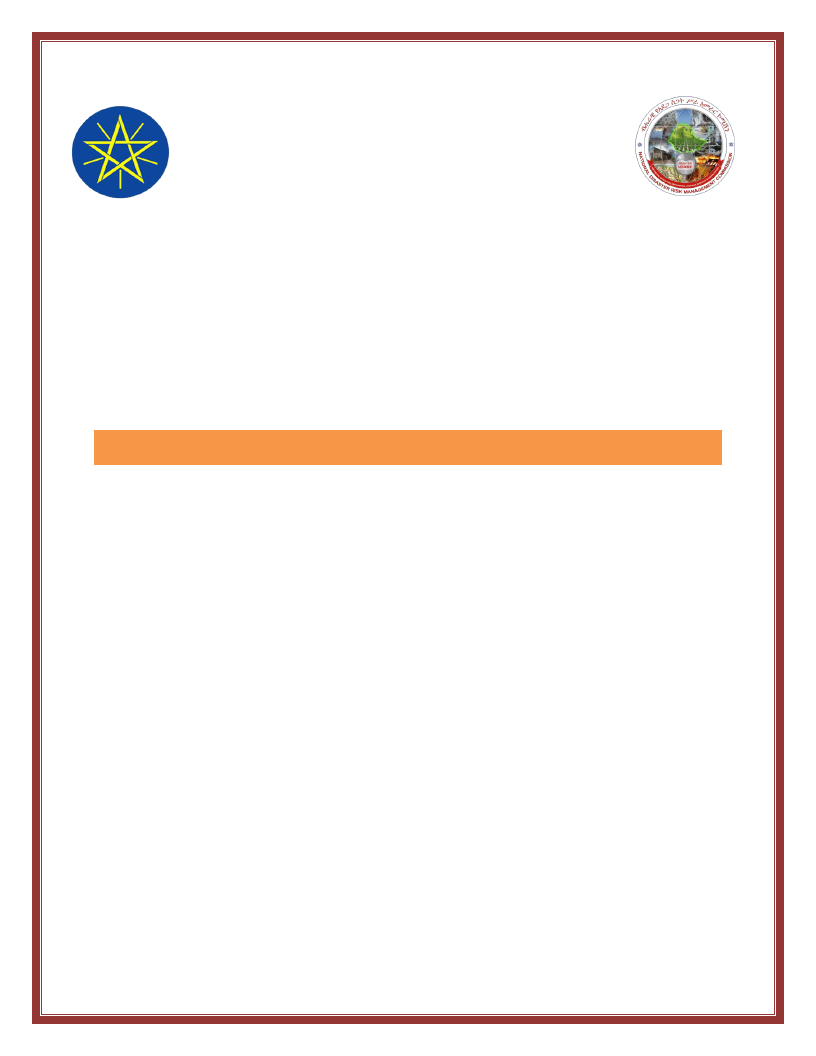
NATIONAL
DISASTER RISK MANAGEMENT COMMISSION
(NDRMC)
WOREDA DISASTER RISK PROFILE (WDRP)
REGION: SNNP
ZONE: HADIYA
WEREDA: MIRAB BADAWACHO
December, 2020
Addis Ababa

About the National Disaster Risk Management Commission (NDRMC)
The National Disaster Risk Management Commission (NDRMC) was reestablished in
December 2015 and recognized by an act of Council of Ministers (Regulation No.
363/2015) as an autonomous Federal Government office mandated to conduct
appropriate activities for the comprehensive implementation and realization of the
objectives of the National Disaster Risk Management Policy and Strategy and to
coordinate, monitor and provide appropriate support with respect to activities
carried out by the lead sector institutions.
Address: Kirkos Sub-city Behind Dembel City Center, Addis Ababa, Ethiopia.
P.O.Box: 5686
Tele: 0115524259/4272
Website: www.dppc.gov.et
© 2020 National Disaster Risk Management Commission. All rights reserved
Printed in Addis Ababa, Ethiopia.
Citation- This Document May be Cited as Follows:
National Disaster Risk Management Commission (2020), Mirab Badawacho Woreda
Disaster Risk Profile, Addis Ababa, Ethiopia.

PREFACE
Ethiopia is well aware of the impact that disasters can have on the
development goals that we are rigorously pursuing through our
Growth and Transformation Plan II. With this recognition we started
a paradigm shift a few years ago, largely triggered by the revised
National Policy and Strategy on Disaster Risk Management.
To make the DRM programme implementation in the country well-informed, a
comprehensive information management system is required. We have been undertaking
a comprehensive risk assessment exercise under which Disaster Risk Profiles are being
prepared for each district and at sub-district levels in the country.
This Wereda Disaster Risk Profile establishes an extensive database on disaster risk
elements that will help decision makers at all levels to be better informed at community
and Wereda level about the characteristics of potential hazards, their potential
exposure, vulnerabilities of communities, capacities and that can also be an input for
Wereda Disaster Risk Reduction Plans and area specific early warning tools.
Wereda Disaster Risk Profiles developed are publically available here for the use of all
development partners and government sectors at all levels. Also, other data sources of
NDRMC, such as Desinventar, Livelihood Baseline and the Early Warning information will
be integrated and harmonized with this Information Management System.
Finally, we need to acknowledge the support of partners who have funded this
programme and we also look for the support of donors and all development partners in
order to achieve the ambitious indicators of this risk information and providing every
district with the disaster risk profile and their respective risk-informed plans.
H.E. Ato Mitiku Kassa
Commissioner
National Disaster Risk Management Commission (NDRMC)
The Federal Democratic Republic of Ethiopia (FDRE)

PREFACE
Woreda Disaster Risk Profiling (WDRP) is a government owned
programme undertaken by the National Disaster Risk
Management Commission (NDRMC) in collaboration with regional
DRM offices and development partners to provide baseline
information for disaster risk management practices and
activities in the country. The programme is designed by taking
into account the experiences gained from the implementation of pervious strategies
and actions like the Hygo Framework for Action (2000-2015) and the Sendai Framework
for Disaster Risk Reduction (2015-2030).
WDRP is composed of diversified indicators including hazard related issues, crop and
livestock production, landholding and environmental issues, human and livestock health
issues, education and social issues at wereda and kebele level. It provides basic and
detailed indicators with both quantitative and qualitative information which obtained
from both primary and secondary data sources.
Moreover, two pages summary of profiles is also prepared to help users easily
understand WDRP results for each wereda without going into detail for all indicators.
In addition to this booklet, developed profiles are uploaded on WDRP website
(http://profile.ndrmc.gov.et) to be viewed by all users; we encourage all DRM actors
at all levels to use this profile as baseline information for all DRM initiatives.
This WDRP booklet was produced through exemplary collaboration of all concerned
bodies and I would like to give my deepest gratitude to all who directly or indirectly
contribute for the success of the programme particularly for data enumerators and
supervisors, data encoders and profile development teams, consultants and advisors,
partner ministries and all DRM stakeholders.
Abraham Abebe
Director
Disaster Risk Reduction and Rehabilitation Directorate (DRRRD)
National Disaster Risk Management Commission (NDRMC)
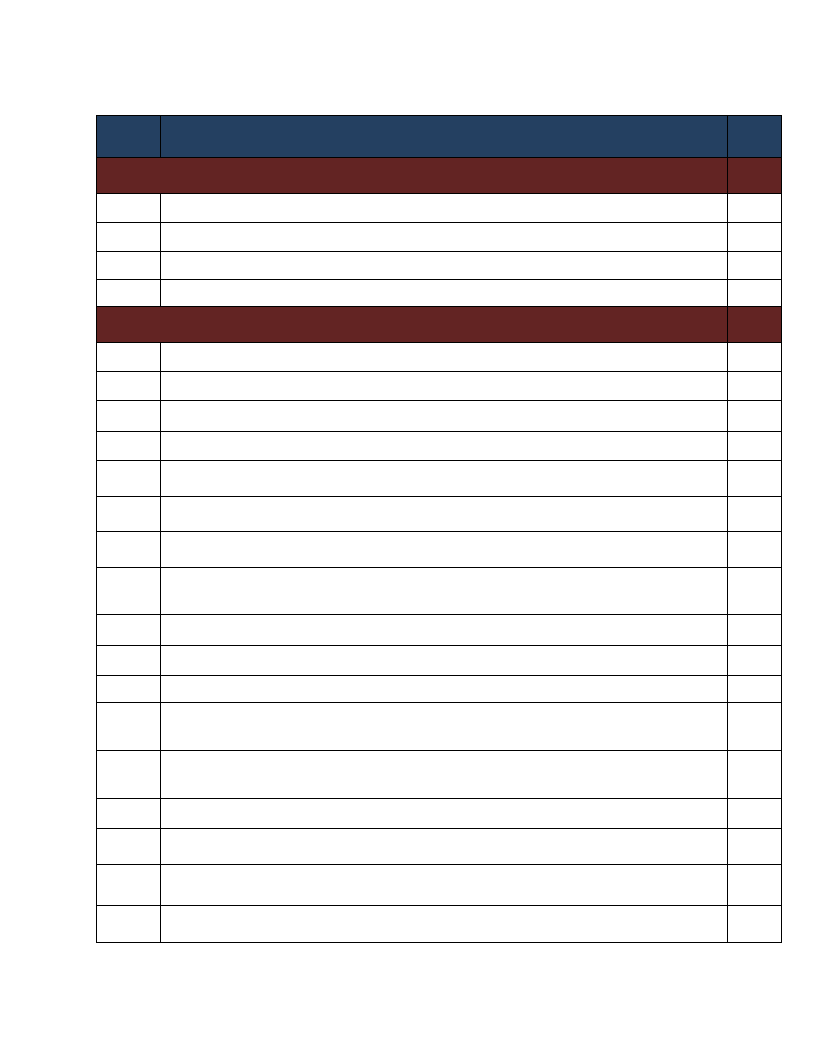
Contents
No. Indicator Name
Page
Preliminary Information
I
Preface
II
Wereda Location in Ethiopian Map
III
WDRP Methodology
IV
Summary Profile
Hazard Related Characteristics
1
1
Biological Hazards of the Wereda
2
2
Geological Hazards of the Wereda
3
3
Hydro Metrological Hazards of the Wereda
4
4
Socio Economic Hazards of the Wereda
5
5
Technological Hazards of the Wereda
6
6
Disaster Characteristics By Kebele
7
7
Hazards: Conflict as an Issue
20
8
Hazard Situation During Last Disaster - Characteristics of most recent disaster that
affected the community
22
9
Frequency of Disaster Occurrence
25
10
Household Exposure to Hazards
26
11
Months of Occurrence of Frequent Disasters
27
12
Conflicts: Perception of households on conflict issues - Is conflict an issue in this
community?
28
13
Conflicts: Perception of households on conflict issues - Who do you turn to in case
of a conflict?
29
14
Losses from Disasters - Losses from all disasters (household response in %)
30
15
Losses from Disasters - Main Losses by Type of Disasters (household response in %) 31
16
Losses from Disasters - Secondary Losses by Type of Disasters (household response
in %)
34
17
Seasonal Calendar for Hazards, Activities and Income Level By Kebele
37
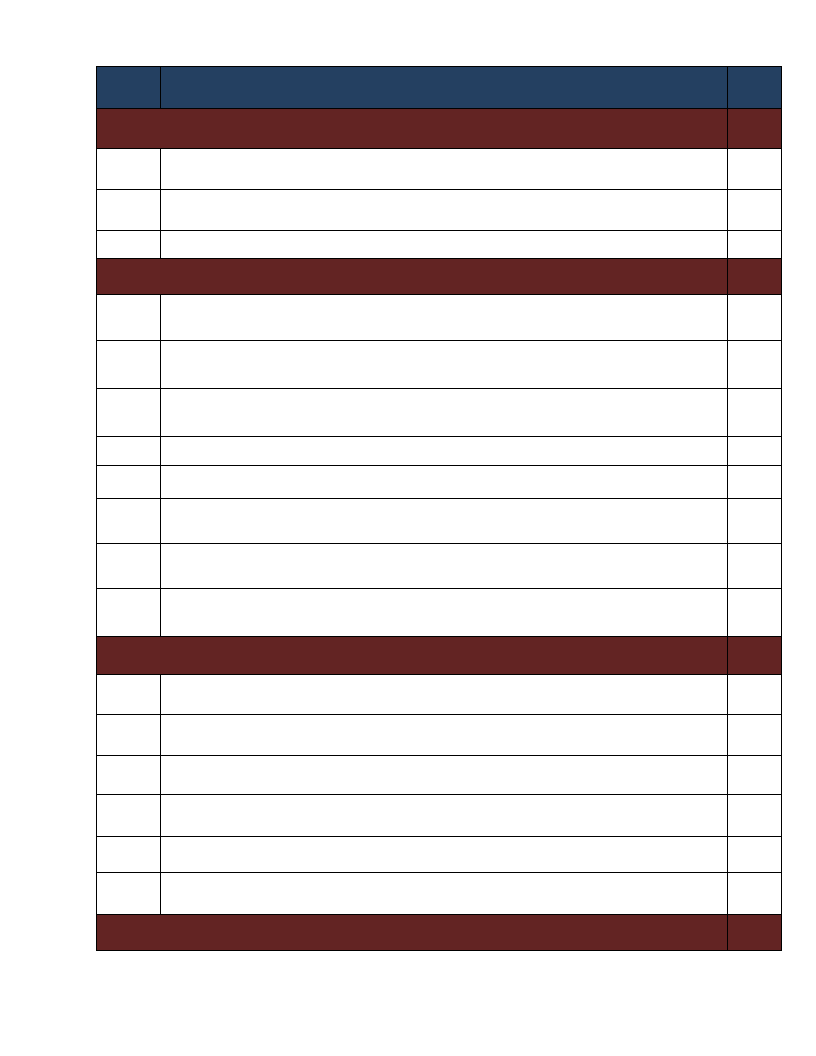
No. Indicator Name
Page
Infrastructure Access Characteristics
52
18
Physical Vulnerability: Access to Roads & Urban Centres - Households access to
road and urban centre
53
19
Physical Vulnerability: Access to Electricity - Households’ access and utilization of
electricity
54
20
Physical Vulnerability: Type of Dwelling Units - Households’ type of dwelling houses 55
Socio Demographic Characteristics
56
21
Economic Vulnerability: Level of Migration - Migration level and its characteristics
by Kebele
57
22
Economic Vulnerability: Household Migration - Household migration and reason for
migration
60
23
Economic Vulnerability: Household Migration - Disasters as a triggering factor for
61
migration (households’ response in %)
24
Demography: Population Structure
62
25
Demography: Population Trends and Ethnic Groups
64
26
Social Vulnerability: Household Demographic Characteristics - Demographic
characteristics of households
65
27
Social Vulnerability: Level of Educational Attainment - Education status of
household members
66
28
Social Vulnerability: Gender Parity - Gender parity in education level (7+ years)
and household heading
67
Environmental Characteristics
68
29
Environmental Situation: Environmental Problems - Major environmental problems
by Kebele
69
30
Environmental Situation: Deforestation - Observed changes over levels of
deforestation by the community and its problems
70
31
Environmental Situation: Natural Resources Availability - Natural resources
available and changes observed by the community
72
32
Environmental Situation: Rainfall & Temperature - Observed changes on rainfall
and temperature by the community over the last decade
83
33
Environmental Situation: Reasons for Environmental Changes
85
34
Environmental Situation: Soil Erosion - Observed changes on levels of soil erosion
by the community
86
Livelihood, Occupation and Source of food
88

No. Indicator Name
Page
35
Economic Vulnerability: Major Occupational Categories - Major categories of
occupation and percent of population engaged in the occupation by Kebele
89
36
Economic Vulnerability: Livelihoods - Households important sources of
Livelihood (response in %)
91
37
Economic Vulnerability: Occupational Categories - Percent of population above 15
years age by occupation categories
94
38
Economic Vulnerability: Sources of Food - Households source for different food
items (response in %)
95
Crop Production
97
39
Hazards: Change in Crop Damages - Proportion of total crop damage (percentage
response by households)
98
40
Hazards: Change in Crop Damages - Major reasons for crop damage (percentage
response by households)
99
41
Hazards: Change in Crop Damages - Proportion of Damage for Major Crops
(percentage response by households)
100
42
Hazards: Change in Crop Damages - Reasons for Damage of Major Crops
(percentage response by households)
102
43
Agricultural Situation: Change in Crops Grown - Five major crops grown by
proportion of total cultivated land
104
44
Economic Vulnerability: Status of Agriculture - Methods of tillage, Irrigation and
other agricultural input utilization by households
112
45
Economic Vulnerability: Crops Grown - Number of crops grown by households
114
46
Economic Vulnerability: Crops Grown - Types of crops grown by households
115
47
Economic Vulnerability: Crops Grown - Proportion of households by amount of yield
of major crops (last year)
117
48
Economic Vulnerability: Crops Grown - Proportion of households by amount of yield
of major crops (Five years ago)
118
49
Economic Vulnerability: Land Ownership and Quality - Landownership of households 120
50
Economic Vulnerability: Land Ownership and Quality - Farmers’ perception on the
quality of their agricultural land
121
51
Environmental Situation: Land-Use other than crop production - Types of land use
other than crop production across Kebeles
122
Livestock Production
124
52
Agricultural Situation: Status of Livestock Disease - Change In Livestock Disease
Status By Kebele
125
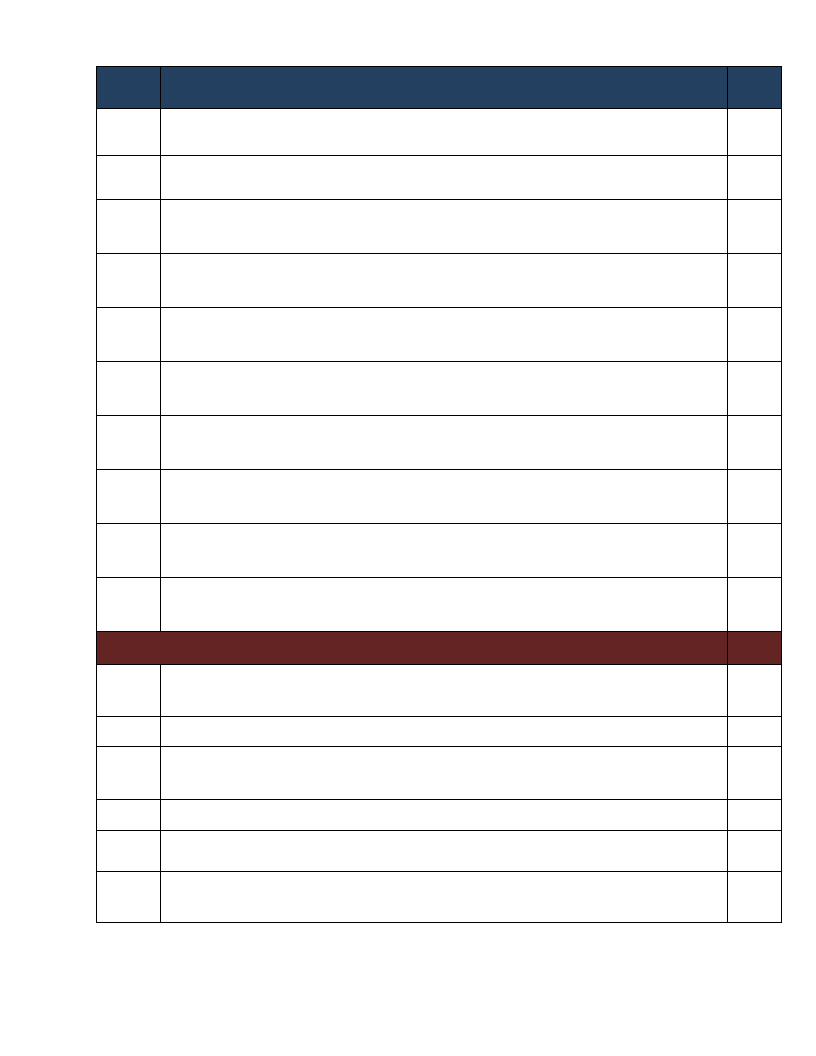
No. Indicator Name
Page
53
Livestock Prevalent of Diseases & Veterinary Facility - Livestock Diseases
Prevalence
127
54
Livestock Prevalent of Diseases & Veterinary Facility - Evaluation of Access to
Veterinary Services and Livestock Drugs
128
55
Agricultural Situation: Livestock Diversity - Type of livestock and their economic
importance in the community
129
56
Economic Vulnerability: Livestock Ownership and Changes - Percentage of
households by number and type of livestock owned
135
57
Economic Vulnerability: Livestock Ownership and Changes - Households’ perception
on changes in livestock number in the last five years (response in %)
137
58
Agriculture (Livestock): Pasture Availability - Households’ perception on access and
quality of pasture
141
59
Agriculture (Livestock): Pasture Availability - Households’ perception on
problematic months for pasture availability
142
60
Agriculture (Livestock): Water Availability - Households’ response on water
availability for livestock
143
61
Agriculture (Livestock): Water Availability - Households’ perception on problematic
months of water availability for livestock
144
62
Agriculture (Livestock): Water Availability - Sources of water for livestock
(households’ response in %)
145
Access to Markets and Credit
146
63
Economic Vulnerability: Proportion of Produce Sold and Market - Proportion of
crops and livestock sold from total production and markets
147
64
Economic Vulnerability: Kebele Access to Markets - Access to market by Kebele
150
65
Economic Vulnerability: Formal & Informal Transfers - Percentage of households
reporting received formal transfers
151
66
Capacity: Access to Credit Facilities - Households access to credit facilities
153
67
Capacity: Access to Credit Facilities - Percentage of households by major reasons
of borrowing money
154
68
Capacity: Access to Credit Facilities - Percentage of households by major sources
of credit
155
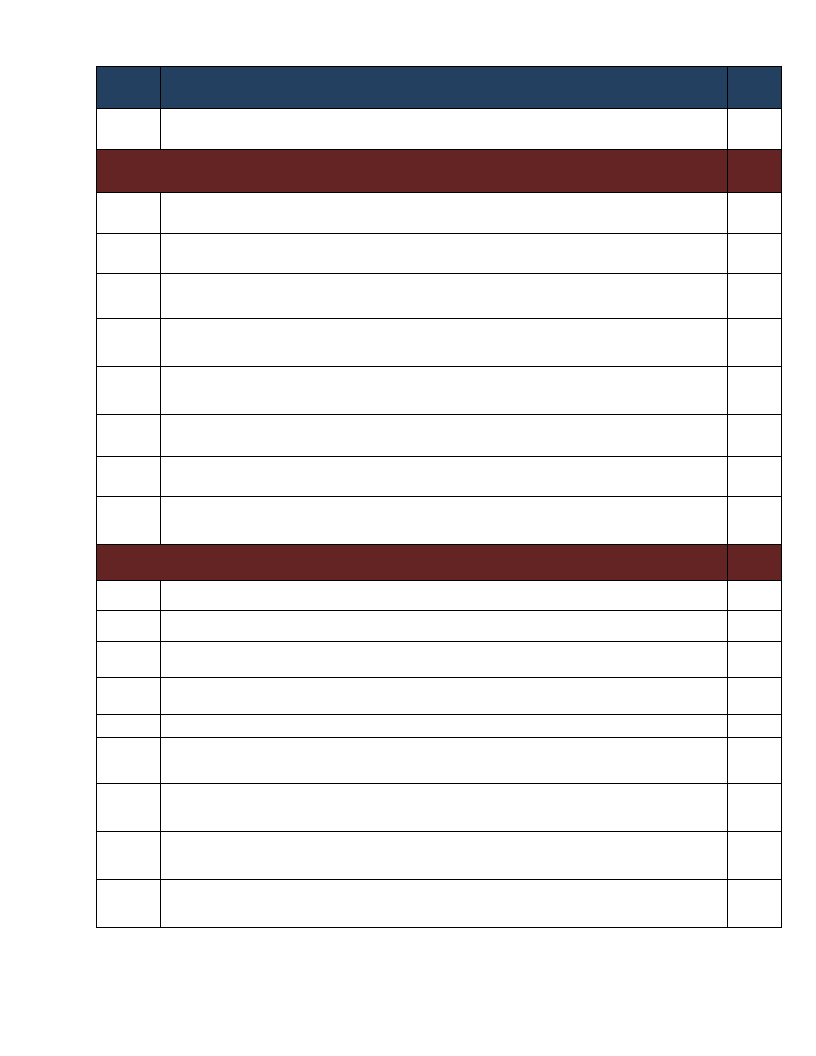
No. Indicator Name
69
Capacity: Access to Credit Facilities - Percent of households with ability to raise
500 birr in one week
Health and Sanitation Characteristics
Page
156
157
70
Household Access to Health Facilities - Where do patients go for health care?
158
71
Hazards: Health problems and changes over the last decade
159
72
Household Health Status - Households’ health condition and major health problems 160
Household Access to Sanitation - Percentage of households with access to different
73
kind of toilet facilities
162
74
Household Access to Drinking Water - Sources of drinking water for households
(response in %)
163
75
Household Access to Drinking Water - Households’ methods of treating drinking
water
164
Household Access to Drinking Water - Number of times households fetch water in a
76
week
165
77
Household Access to Drinking Water - Time taken per day to fetch water for
households
166
Coping Mechanisms and Preparedness Measures
167
78
Capacity: Community Preparedness against Sudden Onset Disasters
168
79
Capacity: Community Preparedness against Increase in Disaster Intensity
171
80
Capacity: Community Preparedness against Disasters
174
81
Hazard: Coping and recovering during last Disaster
178
82
Capacity: Type Community Participation
200
83
Capacity: Recovery from Losses from Disasters - Percentage of Households who
have managed to recover from losses of disasters
202
84
Capacity: Recovery from Losses from Disasters - Percentage of households
recovered from past disasters by type of Disasters
203
85
Capacity: Recovery from Losses from Disasters - Proportion of households
recovered by type of Losses
204
86
Capacity: Coping Options if More Resources Available - What coping strategy could
be adopted if more resource were available?
205
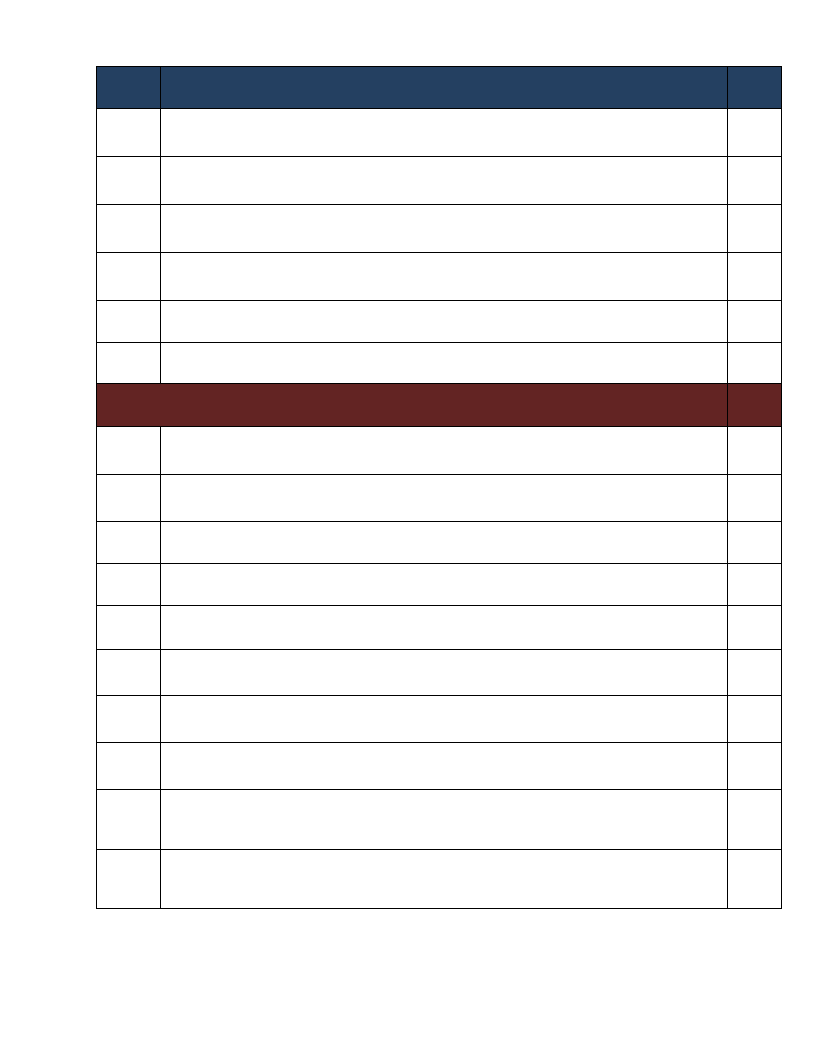
No. Indicator Name
Page
87
Capacity: Coping Strategies Adopted by Households - Percentage of households by
major type of coping strategies adopted (at least once)
206
88
Capacity: Coping Strategies Adopted by Households - Main coping strategies
adopted by households for respective disasters
208
89
Capacity: Coping Strategies Adopted by Households - Secondary coping strategies
adopted by households for respective disasters
214
90
Capacity: Coping Strategies Adopted by Households - Main coping strategies
adopted by households to recover from respective losses
222
91
Capacity: Coping Strategies Adopted by Households - Percentage of households
by frequency of main coping strategies adopted
227
92
Capacity: Alternative Livelihood Sources - Alternative livelihood sources suggested
by the community
229
Community Perception and Suggestions
232
93
Agricultural Situation: Access to Extension - Perception of the community on
Access to Agricultural extension Services
233
94
Agricultural Situation: Access to Inputs - Perception of the community on access
235
to improved agricultural inputs
95
Agricultural Situation: Water for irrigation - Access to water for irrigation in the
Community
237
96
Agricultural Situation: Water Availability for Livestock - Water availability for
livestock in the community
238
97
Agricultural Situation: Soil Fertility - Perception of the community on soil fertility
and its change over time
239
98
Economic Vulnerability: Change in Agricultural Situation - Households
perception on changes of crop type, size of cultivated area and crop yields
241
99
Environmental Situation: General Land Quality - Perceptions of the community
on changes in the general quality of land over a decade
243
100
Environmental Situation: Changes in Landscape - Changes observed by the
community on landscape and the problems due to the changes
245
Interventions: Community Perception on Mediums to Influence DRM Actors -
101
Community perception on the effectiveness of institutional channels to use to
247
influence DRM actors
Interventions: Community Perception on their Knowledge used in DRM Process -
102
Perception of the community on how their knowledge influences the priorities and 251
measures of DRM actors
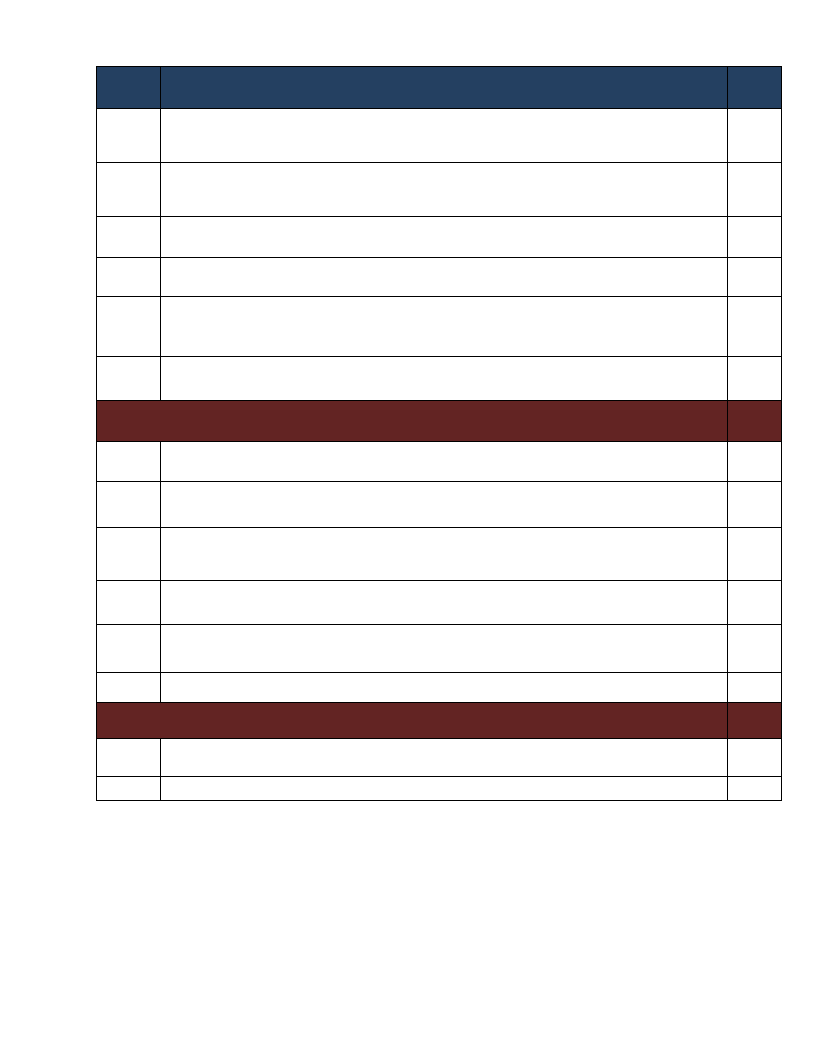
No. Indicator Name
Page
103
Interventions: Suggestions to improve preparedness - Interventions suggested by
the community to development actors to improve preparedness in the area
253
104
Interventions: Suggestions to DRM Actors in the Area - Community suggested
measures to DRM actors in the area for effective DRM actions
256
105
Economic Vulnerability: Community Suggestions to Improve Economic Situation -
Community suggested measures to improve the economic situation of the area
260
106
Community Awareness of Disaster Risk Management System and Actors
264
Community Perception of DRM System and Actors - Perception of the community on
107
the effectiveness of DRM system in helping them to prevent, cope and recover
272
from disasters
108
Major Public Interventions Desired - Percentage of households by type of
intervention desired
276
Others
277
109
Capacity: Community Based Organization in the Wereda
278
110
Supporting Agencies against Disasters - Percentage of households by supporting
institutions to handle or recover from disaster damages
280
111
Type of Support Received From Supporting Agencies – Household responses of types
of support received from supporting agencies
281
112
Government Actors in the Field of Disaster Risk Management - Government actors
and their activities in the field of Disaster Risk Managements
282
113
Non-Government Actors in the Field of Disaster Risk Management - Non-government
actors and their activities in the field of Disaster Risk Management
285
114
Wereda SWOT Analysis
286
Supplementary Information from Secondary Sources
115
Wereda Livelihood Zone Information
116
Wereda General Information
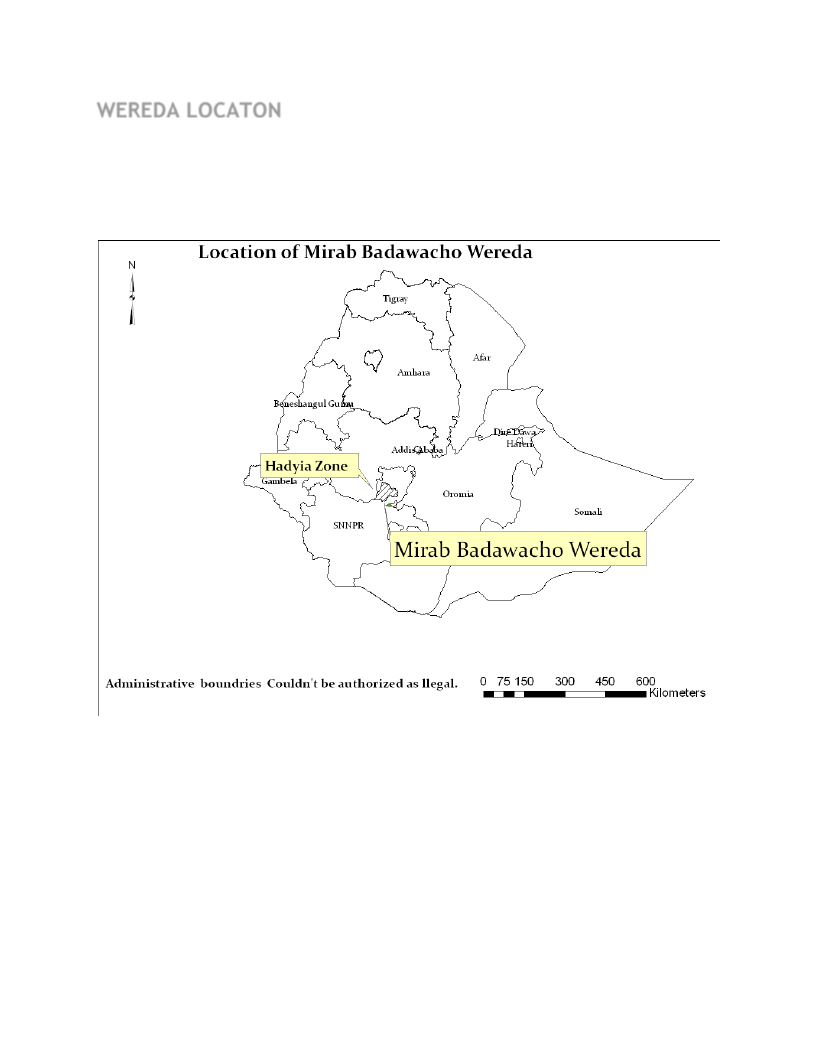
WEREDA LOCATON
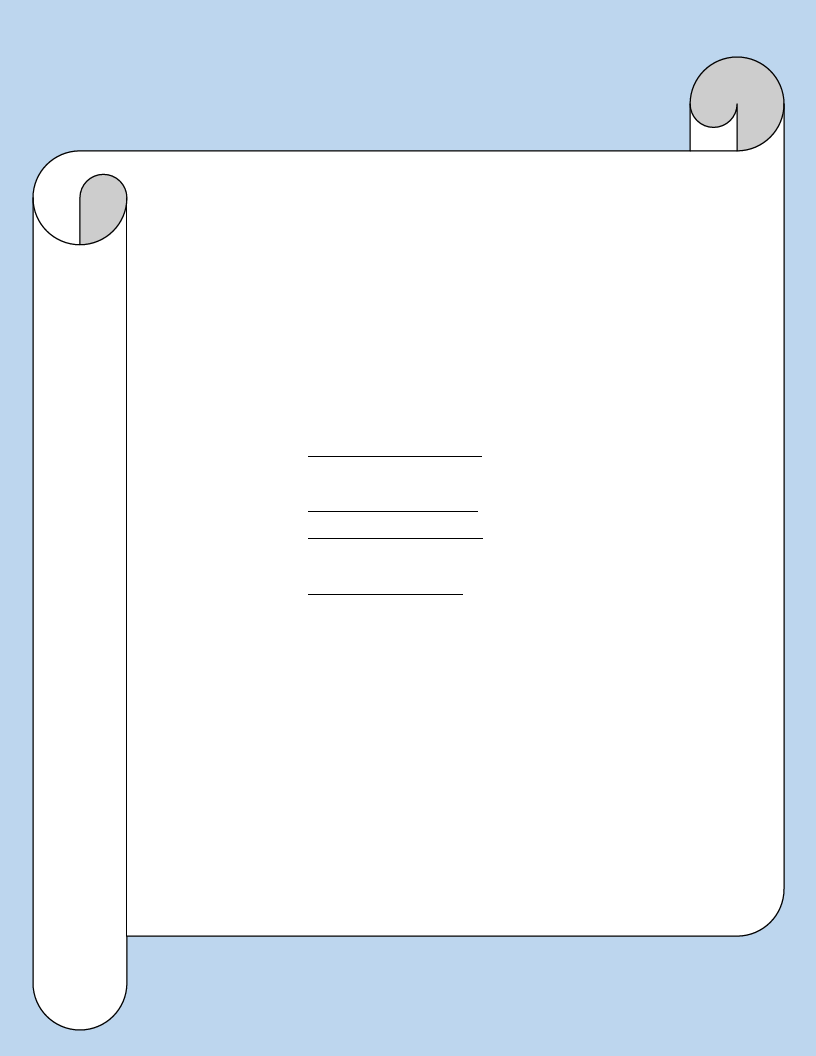
METHODOLOGY
WDRP Content :
• Comprehensive information on disaster risk components
(Hazards, Vulnerability and Capacity)
• Multi-sectoral and multi-hazard information.
Research Approach:
• Mixed Approach
• Both quantitative and qualitative information
Data Sources:
• Primary Data:
Household Questionnaires: statistically significant number
(around 400 households).
Focus Groups Discussions: One per kebele
Key Informant Interviews: with major woreda level government
and non-government DRM actors
Problem Tree Analyses : to see the cause and effect of disasters
• Secondary Data:
collected relevant to WDRP indicators:
LIU, SERA Project, Risk baseline, other ministries…
Sampling Technique:
• Multistage cluster sampling
• Both Probability and Non-probability sampling
Methods of Analysis:
• Descriptive Statistics
• Textual Analysis
• Cispro and SPSS
• Automate WDRP software
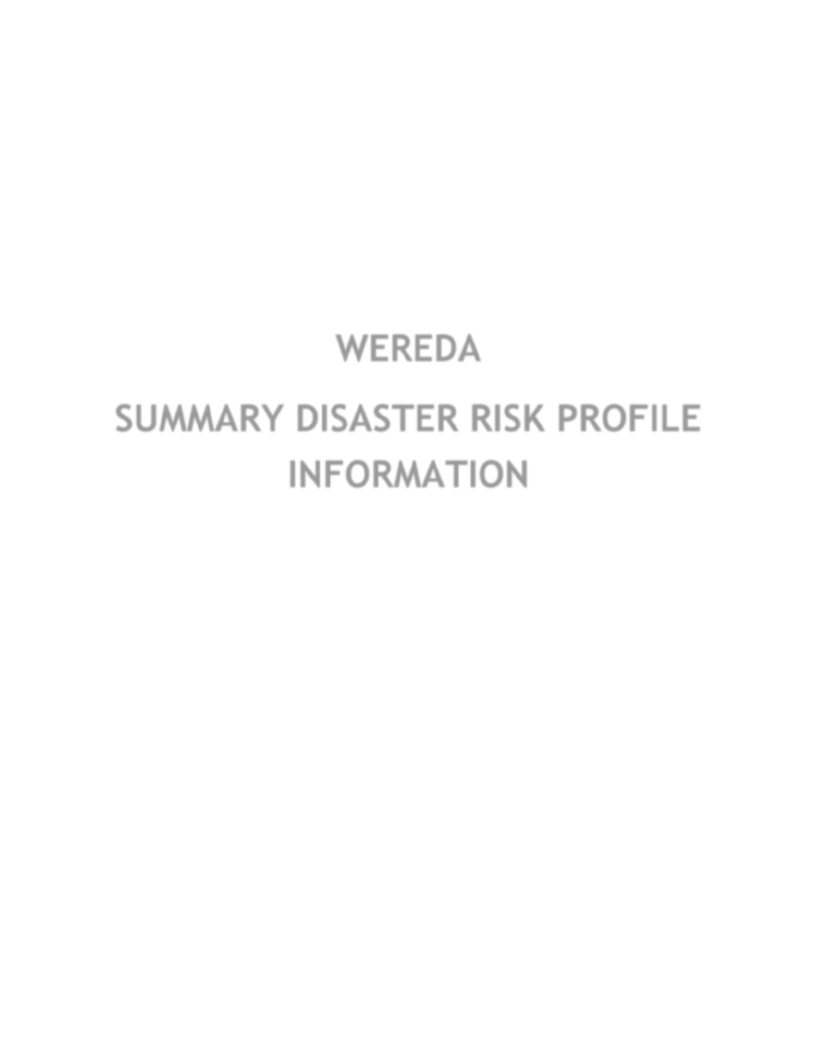
WEREDA
SUMMARY DISASTER RISK PROFILE
INFORMATION
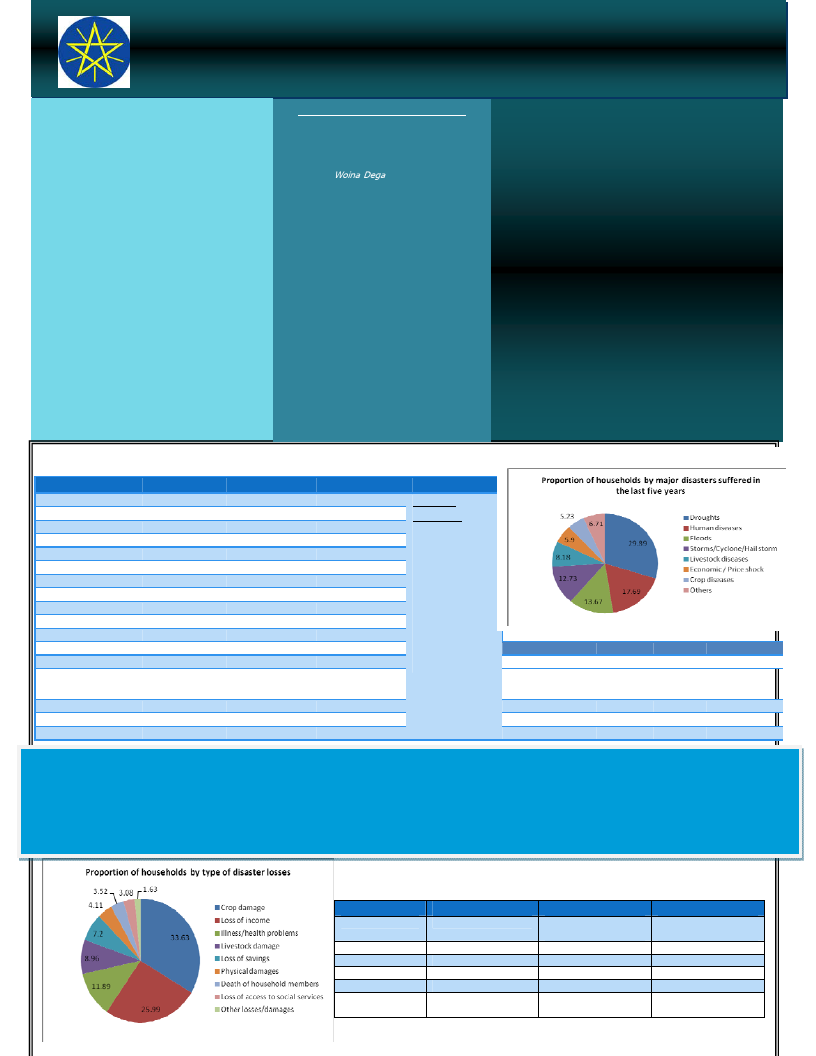
Wereda Disaster Risk Profiling Programme: SNNP
Disaster Risk Profile: Mirab Badawacho Wereda
SUMMARY OF WEREDA PROFILE
Drought is the major disaster risk in the wereda
followed by human diseases, floods, hailstorms
and livestock diseases. Soil erosion is the main
environmental problem indicated in the wereda.
High dependency syndrome, poor working and
saving habit and lack of soil and water
conservation activities are among the
vulnerability factors in the wereda.
Awareness creation on different aspects is very
important. Enhancing soil and water
conservation
activities,
encouraging
afforestation and improving saving habit of the
community are recommended. Construction of
roads, schools and health posts; increasing
saving and credit services; and construction of
irrigation facilities are also desired.
LIVELIHOOD ZONE SUMMARY
Badewacho-Alaba Maize LZ
Low population density, relatively large
landholdings per household, flat and fertile
soils, and a Woina Dega agro-ecology. There is
production failure in recent years. The basic
staple is maize while teff and maize are the
main marketed crops, with good road access to
main markets. For the better-off livestock sales
is the single highest income source. Beyond
selling some crops and livestock, poor
households get income from casual labour,
selling firewood, and petty trade.
Kedida-Badewacho Coffee LZ
This zone is characterized by coffee production;
but teff and wheat are also important cash
crops. For middle and better-off households
livestock & crop sales important sources of
income. Most households are able to depend on
their own crop consumption for 65-85% of their
staples requirement, and even the very poor
produce half of their needs. This livelihoods
zone is food secure. Access to markets is good
and the roads are relatively well maintained
MAP: LOCATION OF THE WEREDA
MAJOR DISASTERS REPORTED IN WEREDA
Kebele
1.Dada
2.Danama
3.Danama 01
4.Elefeta
5.First Keshera
6.First Koto
7.Garbo
8.Hawora
9.Jariso Majoria
10.Jarso Onjojo
11.Merab Ajeba
12.Offodda
13.Oachabira
14.Second Kashara
Disaster 1
Drought
Drought
Drought
Drought
Drought
Drought
Drought
Drought
Water logging
Drought
Drought
Drought
Drought
Drought
Disaster 2
Flood
Flood
Flood
Erratic rain fall
Erratic rain fall
Erratic rain fall
Flood
Hailstorm
Hailstorm
Flood
Erratic rain fall
Fire
Hailstorm
Flood
15.Second Koto
16.Sepera
17.Sibay
Coffee disease
Drought
Drought
Hailstorm
Hailstorm
Flood
Disaster 3
Hailstorm
Hailstorm
Hailstorm
Hailstorm
Hailstorm
Hailstorm
Flood
Drought
Hailstorm
Erratic rainfall
Hailstorm
LIU Info
Chronic
hazards:
Badawacho LZ:
Erratic rain fall, crop
pests (stalk borer)
Kedida LZ:
Crop disease and
pest (coffee berry
disease, bacterial
wilt and butterflies),
malaria, diarrhea,
erratic rain fall
Kebele
18.Wadda
19.Wadda 01
Flood
Erratic rainfall
Hailstorm
20.Wara Boya
21.Wobara
22.Yabukuna
Dis. 1
Drought
Drought
Drought
Drought
Drought
Dis. 2
Hailstorm
Erratic
rainfall
Flood
Flood
Hailstorm
Dis. 3
Erratic rainfall
Hailstorm
Hailstorm
Delay in rain
SHORT NARRATIVE ON MAJOR DISASTERS:
Drought is the major disaster risk which occurs from January to April causing damage on crops thereby resulting in income loss and food shortage. Erratic
rainfall, hailstorms, floods and crop pests and diseases are additional factors for crop damage. Floods particularly caused one of the major environmental
problems in the area, i.e., soil erosion reducing soil fertility and crop productivity. Malaria is the main health problem in the wereda which affects many
households. Diarrhea and chronic fever are also prevalent. On the other hand, black leg, anthrax and lymphangitis are the most frequent livestock diseases in
the area, but their prevalence is reported decreasing over the last decade.
Disasters
Drought
Human diseases
Floods
Hailstorms
Livestock diseases
Price shocks
EFFECT OF DISASTERS
Loss 1
Loss 2
Crop damage
Death of humans and
animals
Illness/health problems Loss of income
Crop damage
Soil erosion
Crop damage
Loss of income
Livestock damage
Loss of income
Loss of income and
Poor purchasing power
saving
Loss 3
Loss of income and
saving
Loss of income
Health problems
Physical damages
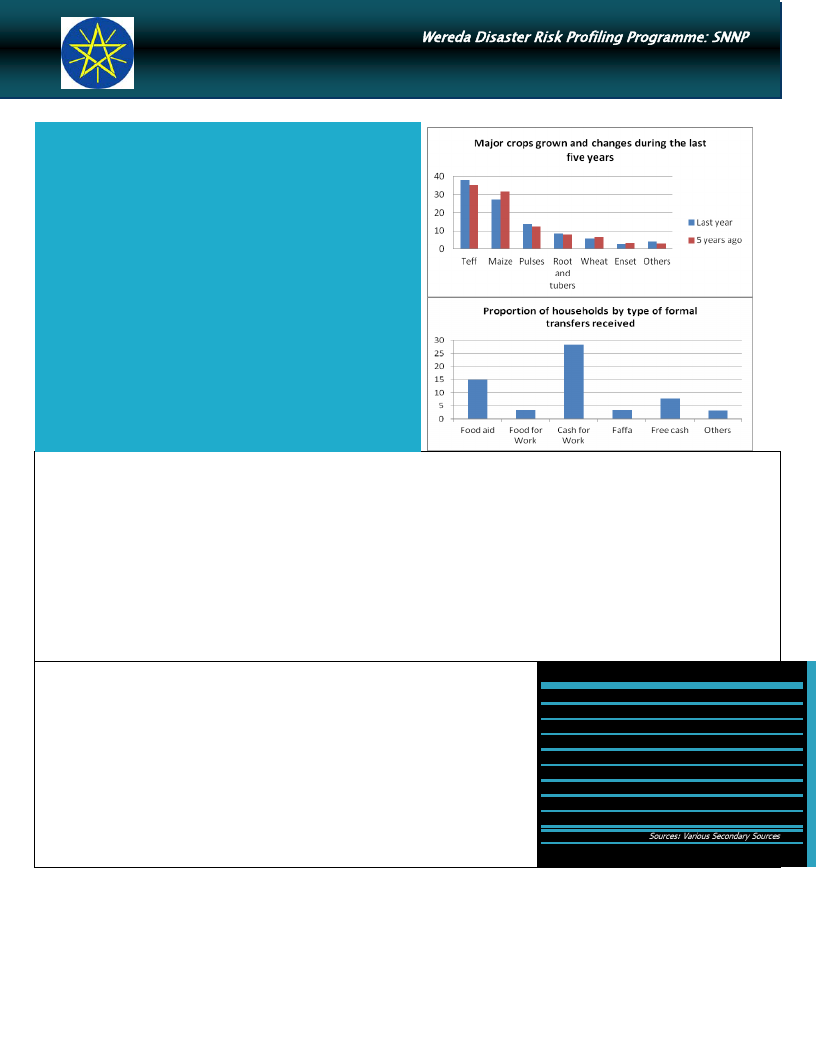
Wereda Disaster Risk Profiling Programme: SNNP
Disaster Risk Profile: Mirab Badawacho Wereda
HOUSEHOLD AND COMMUNITY
VULNERABILITY
Selling cereal food crops is main source of livelihood followed by petty trade
and labour work. Some farmers shifted from maize production to other crops.
More than 2/3rd of the households reported to have no ox which substantially
affects crop production in the area as 92% of the households till their land
using oxen. Soil fertility is reported to be mainly poor due to erosion and lack
of soil and water conservation activity exacerbated the situation.
Dependency on external bodies (government and NGOs) is indicated as the
major weakness of the community, and this can be inferred from the fact that
the community indicated asking for help from NGO or government as their
main preparedness measure against a sudden on‐set of disasters and more
than 1/3rd of the households indicated food aid as the major public
intervention required. Lack of natural resource management and poor working
and saving habit are also additional weaknesses in the community.
Of the total households surveyed, 60% of the households reported that they
can raise Birr 500 in one week from different sources. However, only 48% of
the households managed to recover from the disaster losses they suffered
indicating weak resilience capacity of the community. Moreover, 28% and 15%
of the population in the wereda received formal transfers in the form of cash
for work and food aid respectively.
Accessibility:
Access to road and urban centre: on average it took households 51 minutes to reach the nearest paved road, while it took them one hour and 50
minutes to reach the nearest urban centre.
Access to electricity: 6.4% of the households are located in the community with electricity; however, none of them are actually connected to electricity.
Access to veterinary facility: of the total households surveyed, 80% and 78% of them reported to have poor (very poor) access to veterinary service and
livestock drugs respectively.
Access to market is poor during rainy season due to lack of transportation.
Access to agricultural extension service: good access to extension service has been reported in almost all kebeles of the wereda, and 87% of the
households have received agricultural extension service.
Access to fertilizer, pesticides and improved seeds: 97% and 92% of the households have used different types of fertilizer and pesticide in crop
production respectively. Likewise, 84% of the households reported using improved variety of seeds.
Access to water and sanitation: 3/4th of the households mainly obtain drinking water mainly primarily from rivers, and 97% of them use the water
without making any type of treatment. On the other hand, 82% of the households use outdoor latrine.
Access to credit: 32% of the surveyed households have borrowed money mainly from local money lenders, and the majority used it to buy food.
Level of Awareness and Institutional Development
The literacy level of the population above 7 years of age is 12.5%, out of which 30% of them completed
only below first grade level, while 44% and 17% of the population attended primary and secondary school
respectively. With regard to gender parity in education, proportion of female students dominates at
below first grade level, but their number dwindles and highly dominated by males as the education level
gets higher.
Community awareness about disaster risk management system and actors is good, but they only view
NGOs as DRM actors. There are community based organizations in the wereda such as Edir (to facilitate
funeral ceremonies and other social affairs) and women and youth associations (which are engaged in
saving and credit services as well as other development activities). There are also NGOs such as Farm
Africa, World Vision and Catholic Church which are providing improved agricultural technologies and
credit facilities to farmers. This plays an important role in improving their socio‐economic condition of the
households and their capacity to withstand disasters.
InfoBits:
Population
: 83427 (2007)
Sex ratio
: 1041 F/1000 M
Urban Population
: 2113 (2007)
Mean Altitude
: 1846.09 m
Mean Slope
: 2.64%
Measles caseload
: 14 (2004-2009)
PLWHA on ART
:
Under-five children eligible
for supplementary feeding :
Sources: Various Secondary Sources
COMMUNITY CAPACITY TO COPE
Selling more livestock than usual, consumption rather than sale of crop surplus and borrowing food or cash are the three major coping mechanisms
households adopted during major disasters in the wereda particularly drought. Most households do not own oxen and they do labour work for
households who own oxen in exchange for oxen labour. Households also use migration (particularly for labour work) as coping mechanism during
drought. Growing short maturing crops is indicated as adaptation measure used against drought.
Utilization of agricultural inputs is very good in the wereda.
Strong social network and cooperation is reported in the community. But this cooperation is not much used in development activities.
Crop and livestock diversity: average number of crop grown is 2.59, and the major crops grown are teff and maize, while the major types of livestock
reared in the wereda are cattle, sheep, goat and donkey but the majority do not own all of them.
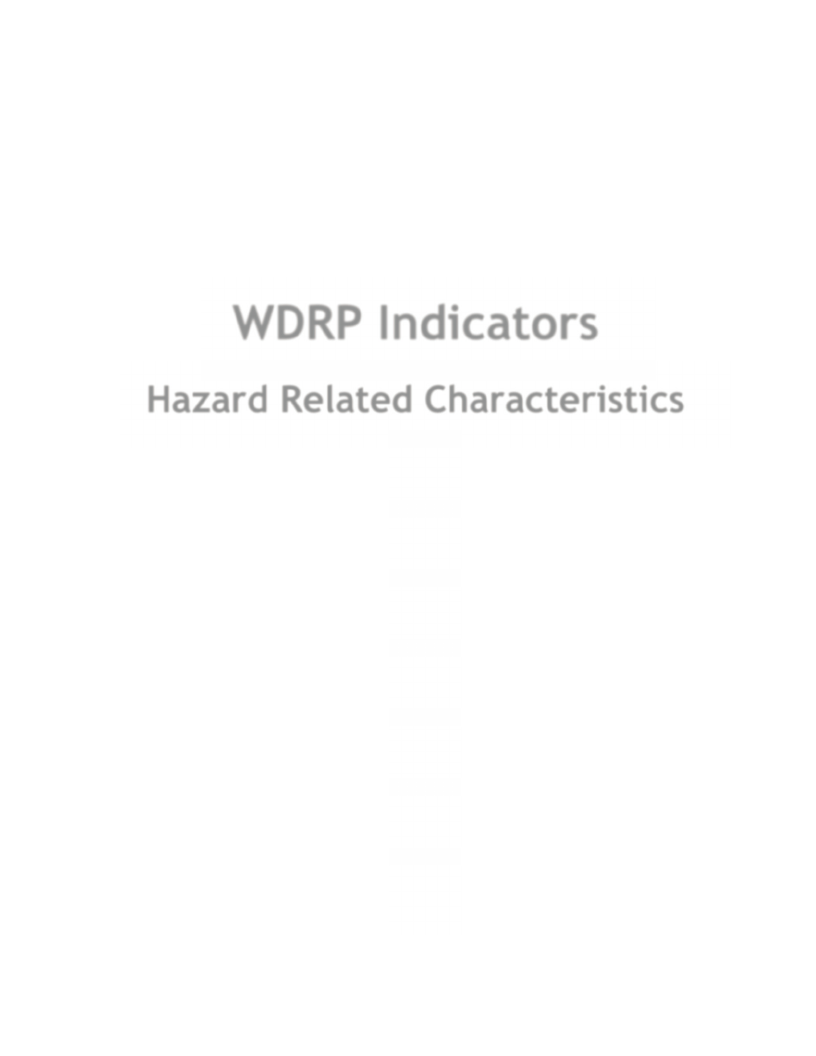
WDRP Indicators
Hazard Related Characteristics
1
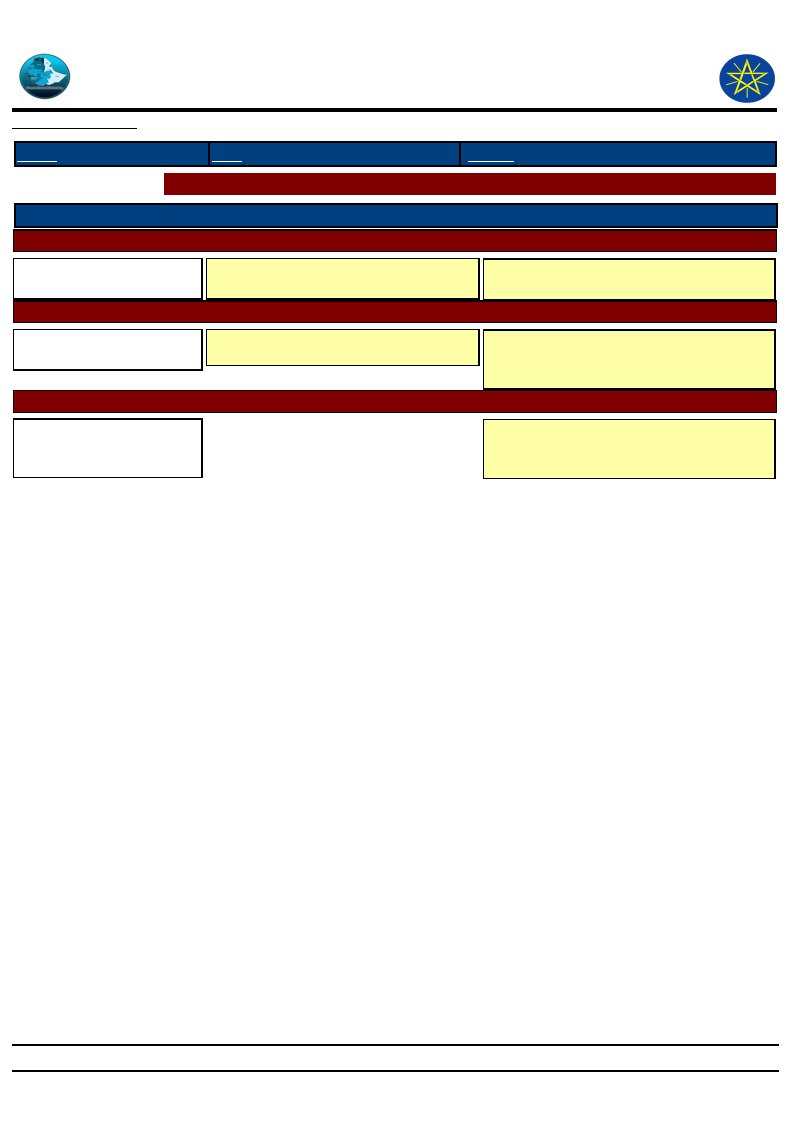
Wereda
Disaster Risk
Data_Collected_Date
Disaster Risk Management
and Food Security Sector (DRMFSS)
Thursday, September 4, 2014
Region S.N.N.P
Selected Indicator
Zone
HADIYA
Biological Hazards of the Wereda
Wereda
MIRAB BADAWOCHO
Hazard_Name
Hazard_Sub_Type
Cause_Of_Hazard
Crop pests
Crop pests and diseases
Coffee disease
Climate change
High rainfall
Hazard_Sub_Type
Human disease
Malaria
Diarrhea
Water logging
Hazard_Sub_Type
Black leg,
Anthrax
Lymphangitis
Livestock disease
Effects_Of_Hazard
Loss of yield
Loss of income
Illness/health problems
Death of households members
Loss of income for medication
Livestock damage
Health problems among humans
Loss of animal products
Page 1 of 1
2
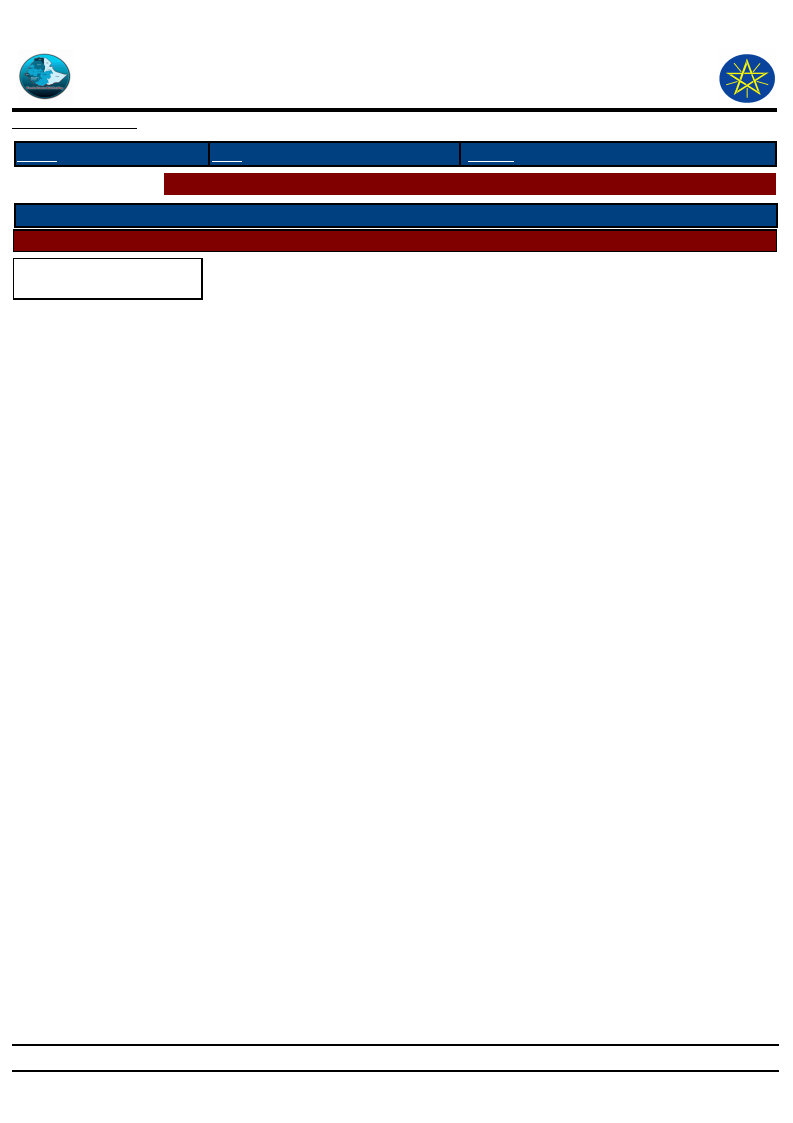
Wereda
Disaster Risk
Data_Collected_Date
Disaster Risk Management
and Food Security Sector (DRMFSS)
Thursday, September 4, 2014
Region S.N.N.P
Selected Indicator
Zone
HADIYA
Geological Hazards of the Wereda
Wereda
MIRAB BADAWOCHO
Hazard_Name
Hazard_Sub_Type
No geological hazard is
reported in the wereda
Cause_Of_Hazard
Geological Hazard
Effects_Of_Hazard
Page 1 of 1
3
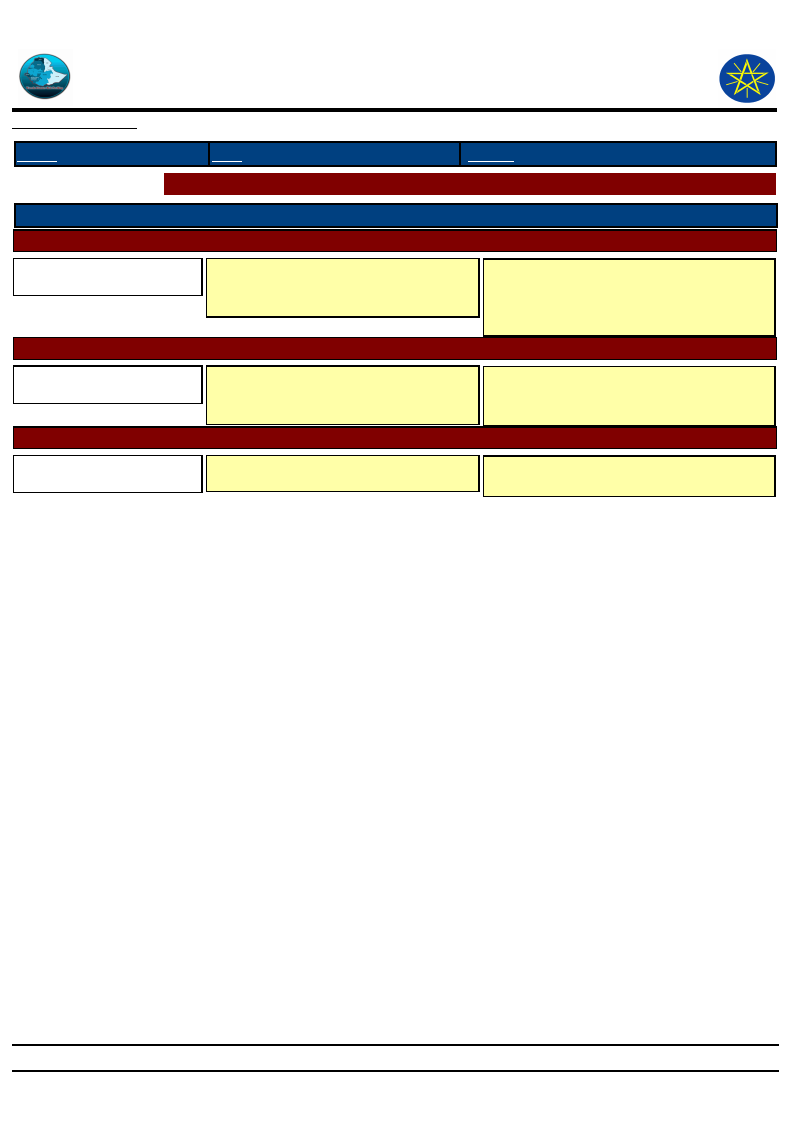
Wereda
Disaster Risk
Data_Collected_Date
Disaster Risk Management
and Food Security Sector (DRMFSS)
Thursday, September 4, 2014
Region S.N.N.P
Selected Indicator
Zone
HADIYA
Hydro Metrological Hazards of the Wereda
Wereda
MIRAB BADAWOCHO
Hazard_Name
Hazard_Sub_Type
Drought
Hazard_Sub_Type
Flooding
Hazard_Sub_Type
Hailstorms
Cause_Of_Hazard
Hydro meteorolgical Hazard
Deforestation
Population pressure
Lack of awareness
Hydro Metrological Hazard
Climate change
Lack of soil and water conservation
activity
Hydro-Meteorological Hazards
Climate change
Effects_Of_Hazard
Loss of crop yield,
Human death,
Animal death
Loss of income
Soil erosion
Loss of soil fertility and minerals
Loss of income
Crop damage (yield reduction)
Loss of income
Page 1 of 1
4
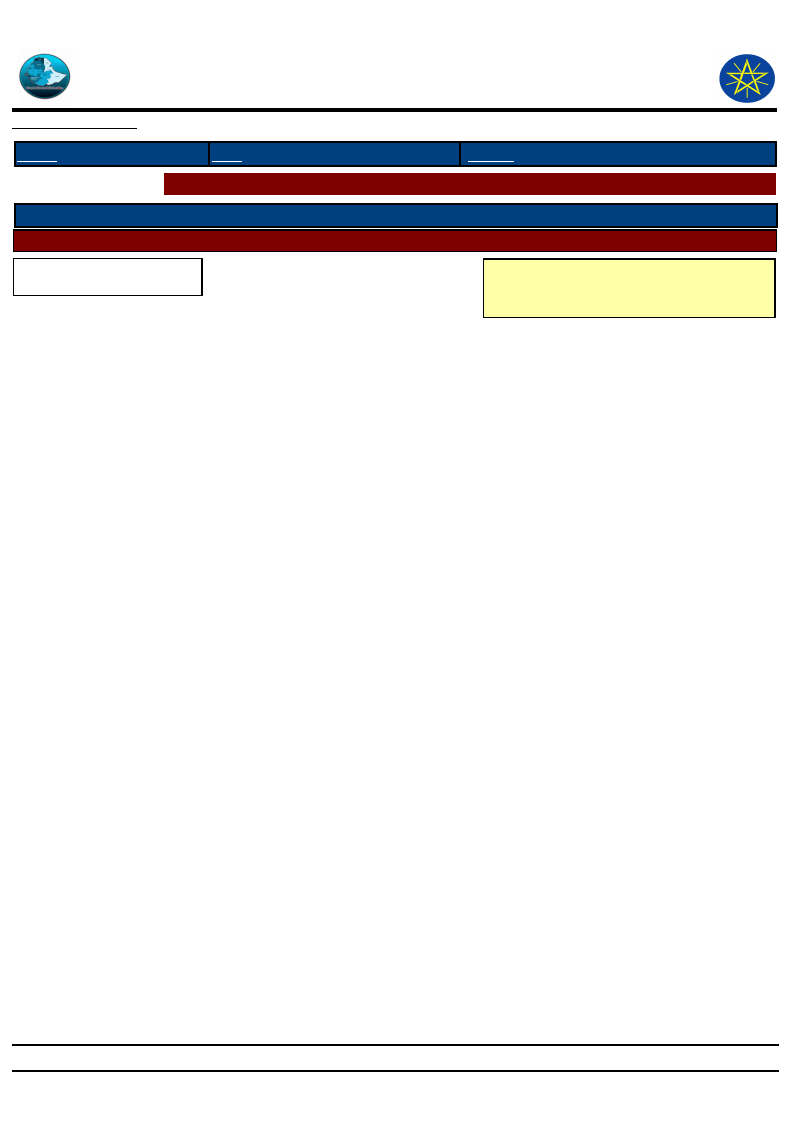
Wereda
Disaster Risk
Data_Collected_Date
Disaster Risk Management
and Food Security Sector (DRMFSS)
Thursday, September 4, 2014
Region S.N.N.P
Selected Indicator
Zone
HADIYA
Socio Economic Hazards of the Wereda
Wereda
MIRAB BADAWOCHO
Hazard_Name
Hazard_Sub_Type
Economic/price shocks
Cause_Of_Hazard
Social Hazards
Effects_Of_Hazard
Loss of income and saving
Poor purchasing power
Lack of food and medication
Page 1 of 1
5
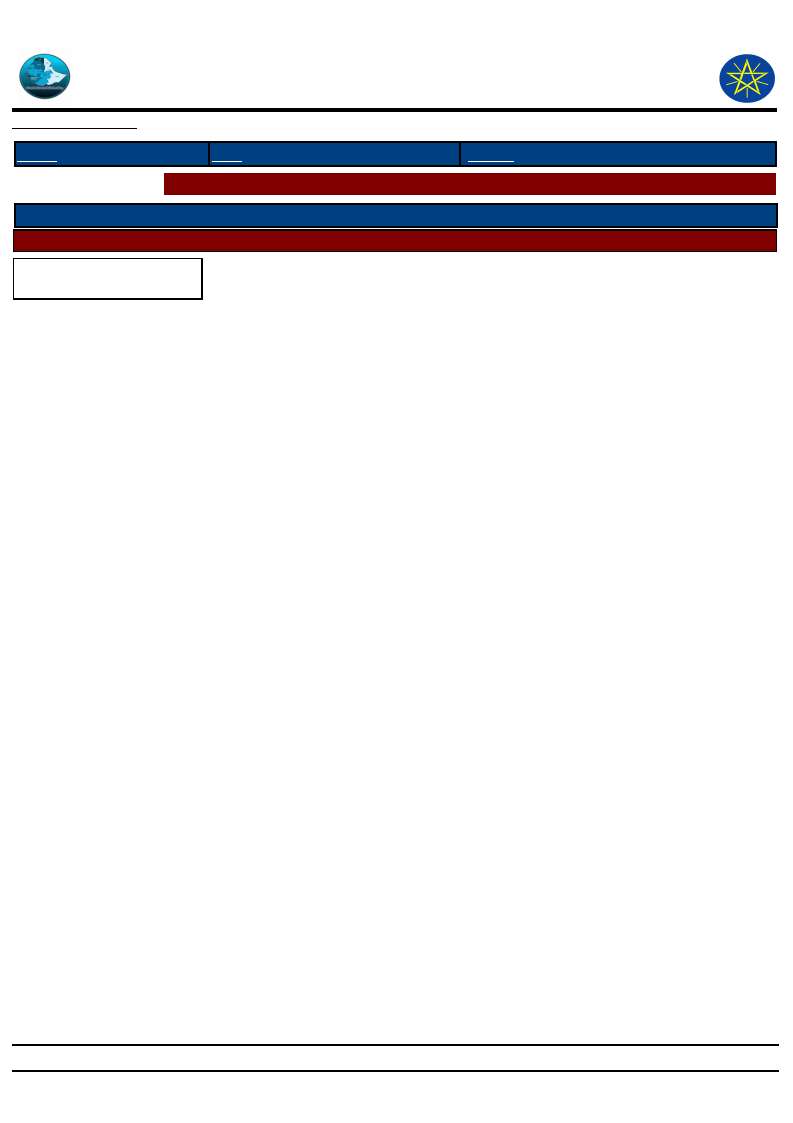
Wereda
Disaster Risk
Data_Collected_Date
Disaster Risk Management
and Food Security Sector (DRMFSS)
Thursday, September 4, 2014
Region S.N.N.P
Selected Indicator
Zone
HADIYA
Technological Hazards of the Wereda
Wereda
MIRAB BADAWOCHO
Hazard_Name
Hazard_Sub_Type
Cause_Of_Hazard
Technological Hazards
No Technological Hazards
Reported.
Effects_Of_Hazard
Page 1 of 1
6
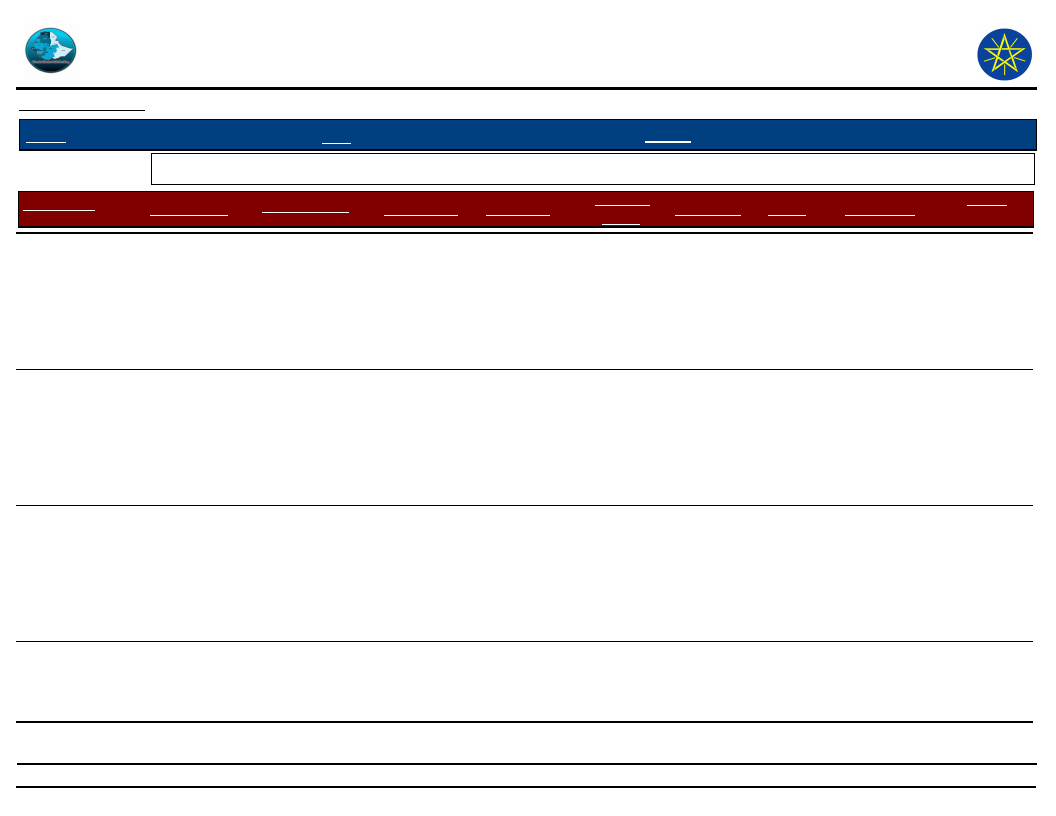
Wereda Disaster
Risk Profile
Data_Collected_Date
Region S.N.N.P
Zone HADIYA
Selected Indictor: Disaster Characteristics By Kebele
Kebele Name
Disaster_Type
Common Period
Year Occured
DEDO
Droughts
January to
April
2000 to
2004.
GERIBO
Droughts
January to
April
2000 to 2004
Floods
June to August
2000
Storms /
Cyclone/hail
storm
June to August
2003
Disaster Risk Management
and Food Security Sector (DRMFSS)
Thursday, September 4, 2014
Wereda MIRAB BADAWOCHO
Worst_Year
Trends of
Effects
2000
Increased
2000
Increased
2003
Increased
2003
Increased
Root Causes Effects
Vulnerability
Deforestation
Deforestation
Climatic
change
Climatic
change
Loss of
crop
yield,
human
death,
animal
death
Loss of
yield,
animal
disease
and
human
disease
Reduce
soil
minerals
and
reduce
soil
fertility
Loss of
yield and
coffee
disease
Poor
economic
capacity
Low income
sources
Poor
economic
capacity
Low level of
saving and
credit
abilities
Coping
Strategy
Asset
selling and
migration
Asset
selling,
labour work
and trading
Migration
and
borrowing
Asset
selling, loan
and
migration
7
Page 1 of 13
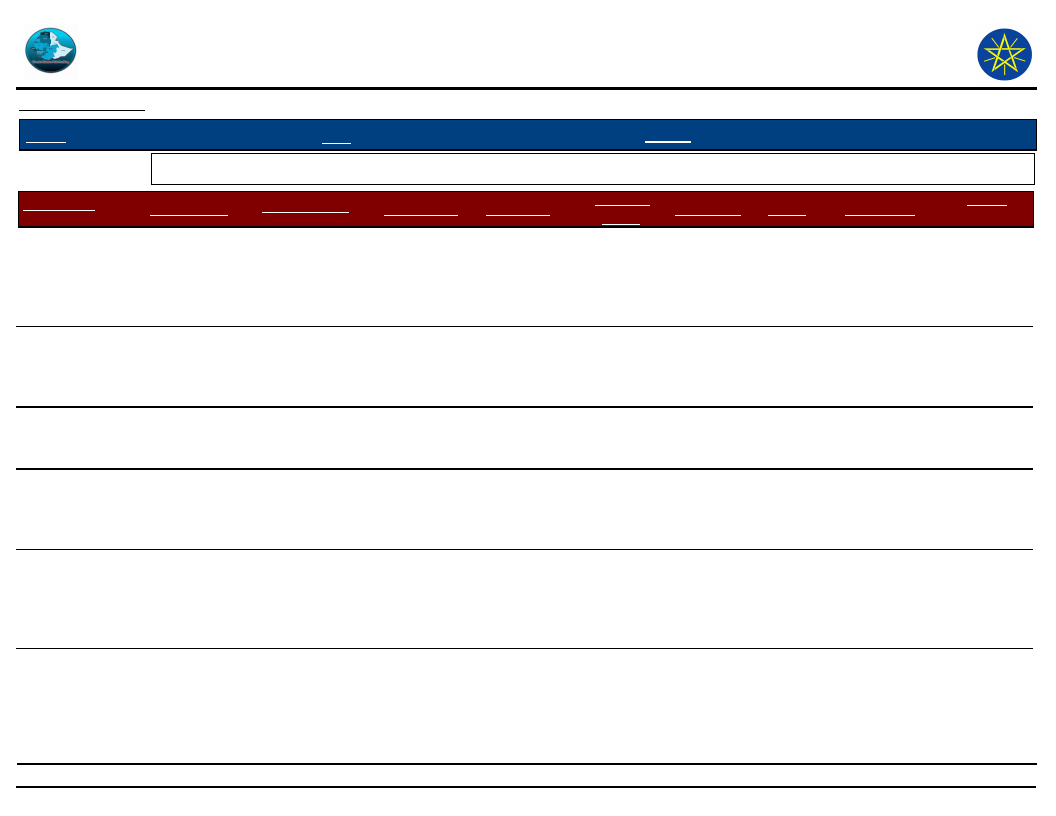
Wereda Disaster
Risk Profile
Data_Collected_Date
Region S.N.N.P
Zone HADIYA
Selected Indictor: Disaster Characteristics By Kebele
Kebele Name
Disaster_Type
Common Period
Year Occured
GERIBO
Coffee & Barley
Diseases
June to August
2002, 2003
KACHA BIRA
2GNA KOTO
Droughts
December to
June
1999, 2000,
2001, 2003.
Snow
Coffee & Barley
Diseases
June to
September
July to August
2003
2003
Storms /
Cyclone/hail
storm
July to August
2003
Disaster Risk Management
and Food Security Sector (DRMFSS)
Thursday, September 4, 2014
Wereda MIRAB BADAWOCHO
Worst_Year
2003
Trends of
Effects
Increased
2003
Increased
2003
2003
Increased
Increased
2003
Increased
Root Causes Effects
Vulnerability
Climatic
change
Lack of
sufficient
vegetation
High rain fall
Deforestation
Loss of
yield,
decreased
productivi
ty
Yield
reduction
, resource
wastage
Crop
destructio
n
Decrease
d income
and loss
of asset
Reduction
productivi
ty and
low
income
Low level of
income
sources
Poor
economy
Poor
economy
Low level of
income
sources
Low level of
saving and
credit
abilities
Coping
Strategy
Asset
selling,
migration
and
borrowing
Asset
selling
Asset
selling
Labor work
and trading
borrowing,
migration
and asset
selling
8
Page 2 of 13
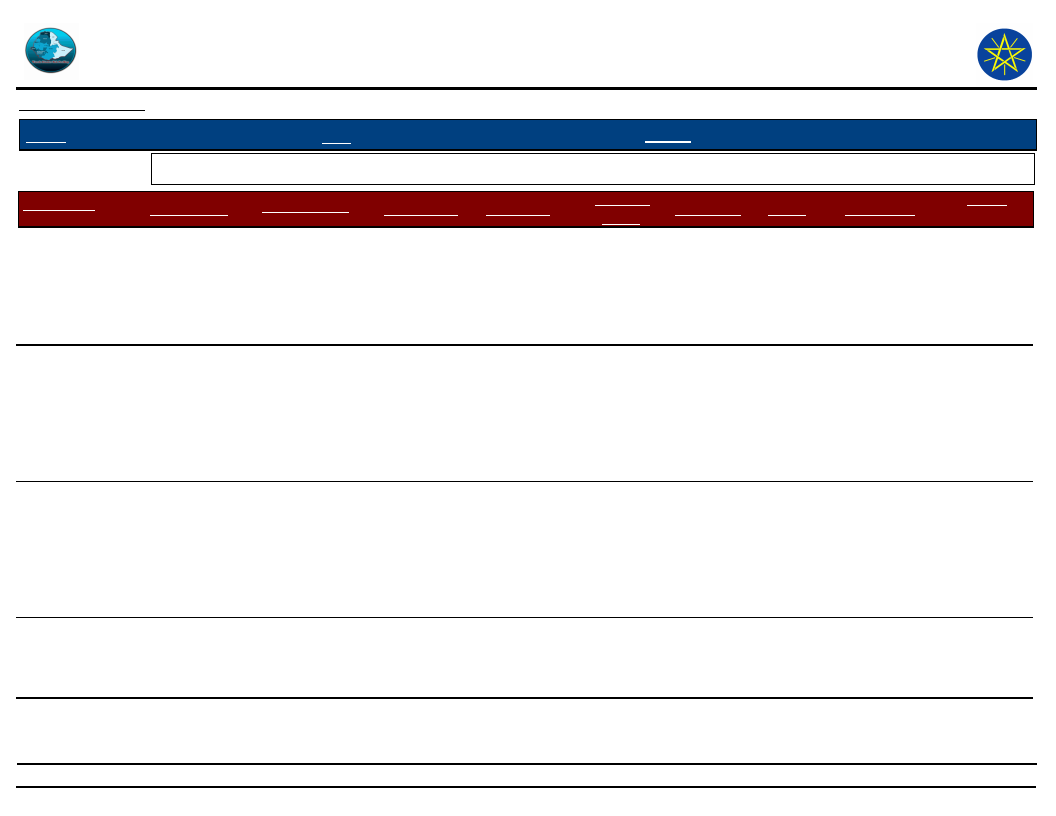
Wereda Disaster
Risk Profile
Data_Collected_Date
Region S.N.N.P
Zone HADIYA
Selected Indictor: Disaster Characteristics By Kebele
Kebele Name
Disaster_Type
Common Period
Year Occured
2GNA KOTO
Floods
June to August
2001, 2002
SIBEYA
Droughts
January to
April
2000 to 2004
WEBARANA
OFODA
Droughts
January to
March
2000 to 2004
ELIFETA
Droughts
January to
April
2000, 2001,
2002, 2003
Disaster Risk Management
and Food Security Sector (DRMFSS)
Thursday, September 4, 2014
Wereda MIRAB BADAWOCHO
Worst_Year
2001
Trends of
Effects
Increased
2000
Increased
2003
Increased
2003
Increased
Root Causes Effects
Vulnerability
Climatic
change
Deforestation
Deforestation
Deforestation
Loss of
yield,
reduction
of
productivi
ties
Loss of
crop
yield,
human
death,
animal
death
Loss of
crop
yield,
human
death,
animal
death
Economic
reduction
, shortage
of water.
Poor
economic
capacity
Poor
economic
capacity
Poor
economic
capacity
Poor
economy
Coping
Strategy
Asset
selling and
migration
Migration
and asset
selling
Asset
selling and
migration
Asset
selling
9
Page 3 of 13
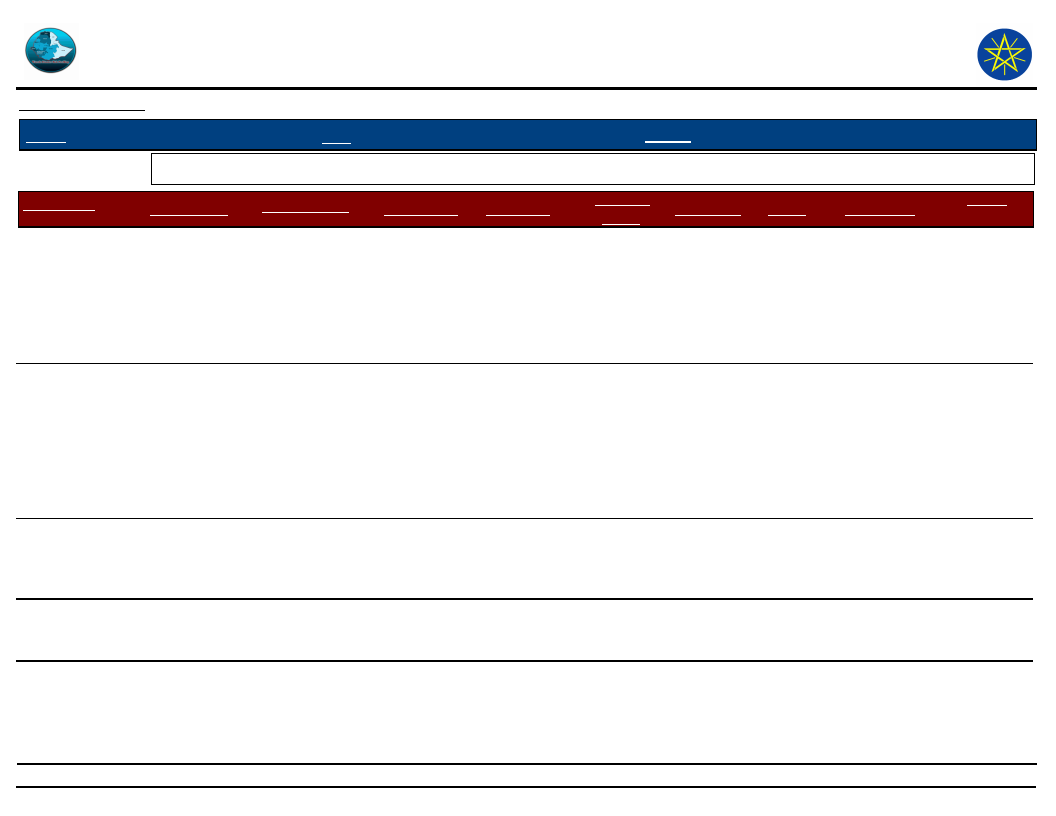
Wereda Disaster
Risk Profile
Data_Collected_Date
Region S.N.N.P
Zone HADIYA
Selected Indictor: Disaster Characteristics By Kebele
Kebele Name
Disaster_Type
Common Period
Year Occured
ELIFETA
Shortage of
Rainfall
June to August
2000 to 2003
1GNA KOTO
Droughts
December to
May
2000, 2001,
2002, 2003.
Shortage of
Rainfall
Snow
Every year in
every month
2000 to 2004
June to
September
2003, 2004
Disaster Risk Management
and Food Security Sector (DRMFSS)
Thursday, September 4, 2014
Wereda MIRAB BADAWOCHO
Worst_Year
2003
Trends of
Effects
Increased
2003
Increased
2003
Increased
2004
Increased
Root Causes Effects
Vulnerability
Deforestation
Population
pressure,
Deforestation
Deforestation
Yield
reduction
, death of
livestock,
delaying
working
time
Economic
al hard
ship,
wastage
of
resources
, school
dropout
Animal
death and
yield
reduction
Destructi
on of crop
Poor
economy
Poor
economy
Poor
economy
Poor
economy
Coping
Strategy
Asset
selling
Asset
selling,
borrowing
Asset
selling,
borrowing
Asset
selling,
borrowing
10
Page 4 of 13
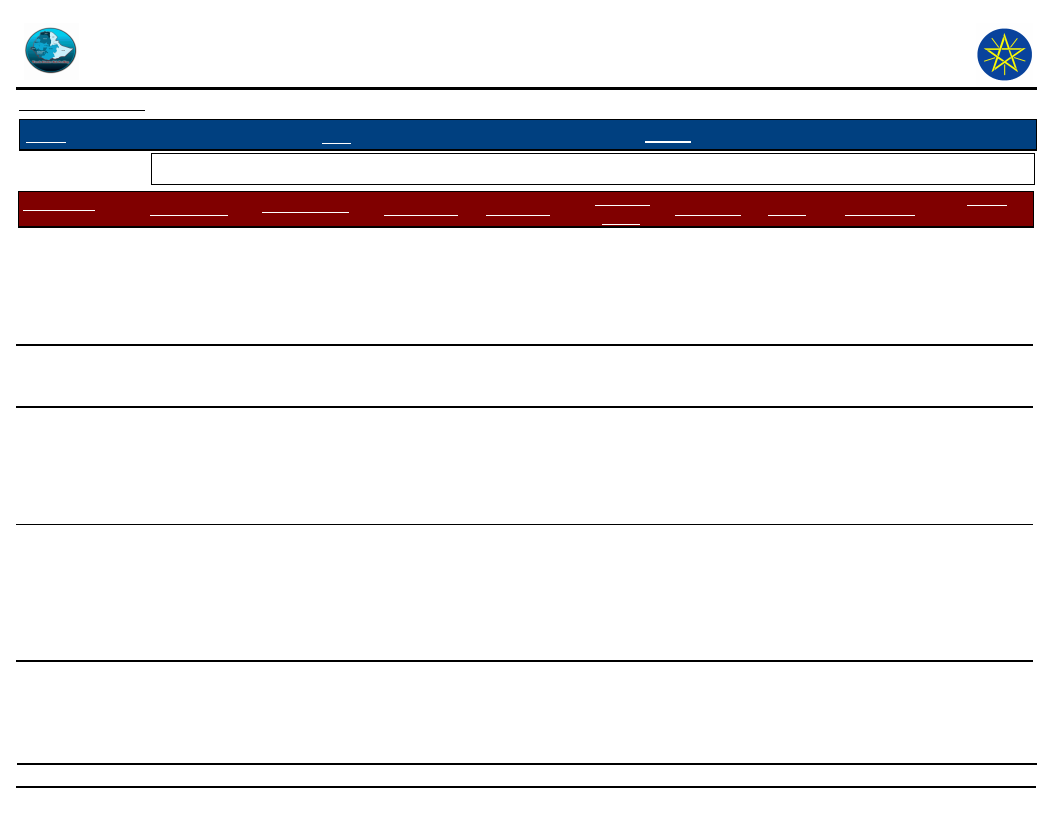
Wereda Disaster
Risk Profile
Data_Collected_Date
Region S.N.N.P
Zone HADIYA
Selected Indictor: Disaster Characteristics By Kebele
Kebele Name
Disaster_Type
Common Period
Year Occured
HAWORA
Droughts
January to
March
2000 to 2003
Storms /
Cyclone/hail
storm
Floods
June to August
1999, 2000,
2001, 2003
June to August
1999, 2001,
2002, 2003
JARISO ONIJOJO
Droughts
January to
April
2000 to 2004
Disaster Risk Management
and Food Security Sector (DRMFSS)
Thursday, September 4, 2014
Wereda MIRAB BADAWOCHO
Worst_Year
2003
Trends of
Effects
Increased
2003
2002
Increased
Decreased
2000
Increased
Root Causes Effects
Vulnerability
Deforestation
Lack of soil
and water
conservation
Deforestation
Animal
disease,
plant
disease
and yield
loss
Yield
reduction
Reducing
soil
mineral,
reducing
productivi
ty
Loss of
crop
yield,
human
death,
animal
death
Poor
economic
capacity
Poor
economic
capacity
Poor
economic
capacity
Poor
economic
capacity
Coping
Strategy
Asset
selling
Asset
selling
Migration
Migration
and asset
selling
11
Page 5 of 13
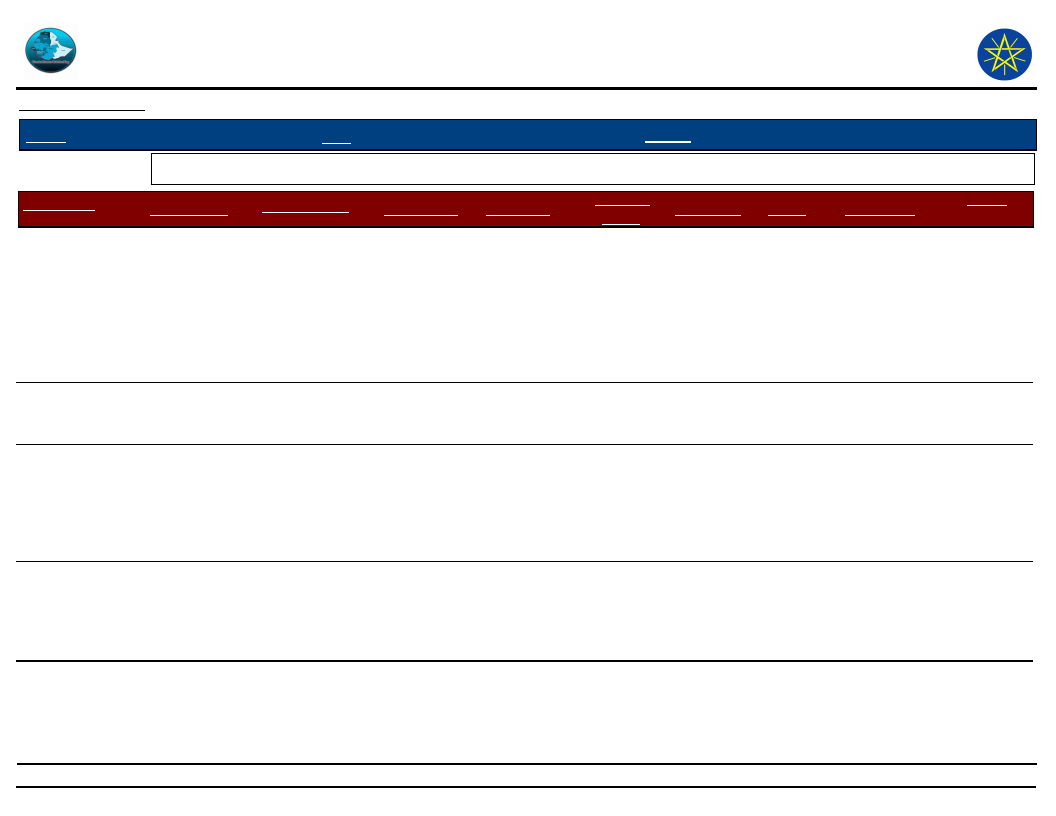
Wereda Disaster
Risk Profile
Data_Collected_Date
Region S.N.N.P
Zone HADIYA
Selected Indictor: Disaster Characteristics By Kebele
Kebele Name
Disaster_Type
Common Period
Year Occured
SEPERA
Droughts
January,
February,
March
2000, 2001,
2002, 2003
Storms /
Cyclone/hail
storm
Shortage of
Rainfall
June, July,
August
October,
January,
December
2000, 2002,
2003
1999, 2000,
2001, 2002,
2003
Floods
June, July,
August
1999, 2001,
2002, 2003
Disaster Risk Management
and Food Security Sector (DRMFSS)
Thursday, September 4, 2014
Wereda MIRAB BADAWOCHO
Worst_Year
2000
Trends of
Effects
Increased
2002
2003
Increased
Increased
2003
Decreased
Root Causes Effects
Vulnerability
Deforestation
Deforestation
Lack of soil
and water
conservation,
deforestation
Yield loss,
plant
disease,
animal
disease
and
animal
death
Yield loss
Plant
disease,
yield loss
and
animal
disease
Decreasin
g of soil
fertility,
yield
reduction
Poor
economic
activities
Poor
economic
activities
Poor
economic
capacity
Poor
economic
capacity
Coping
Strategy
Asset
selling and
migration
Asset
selling and
migration
Asset
selling and
migration
Asset
selling,
reducing
meal time
12
Page 6 of 13
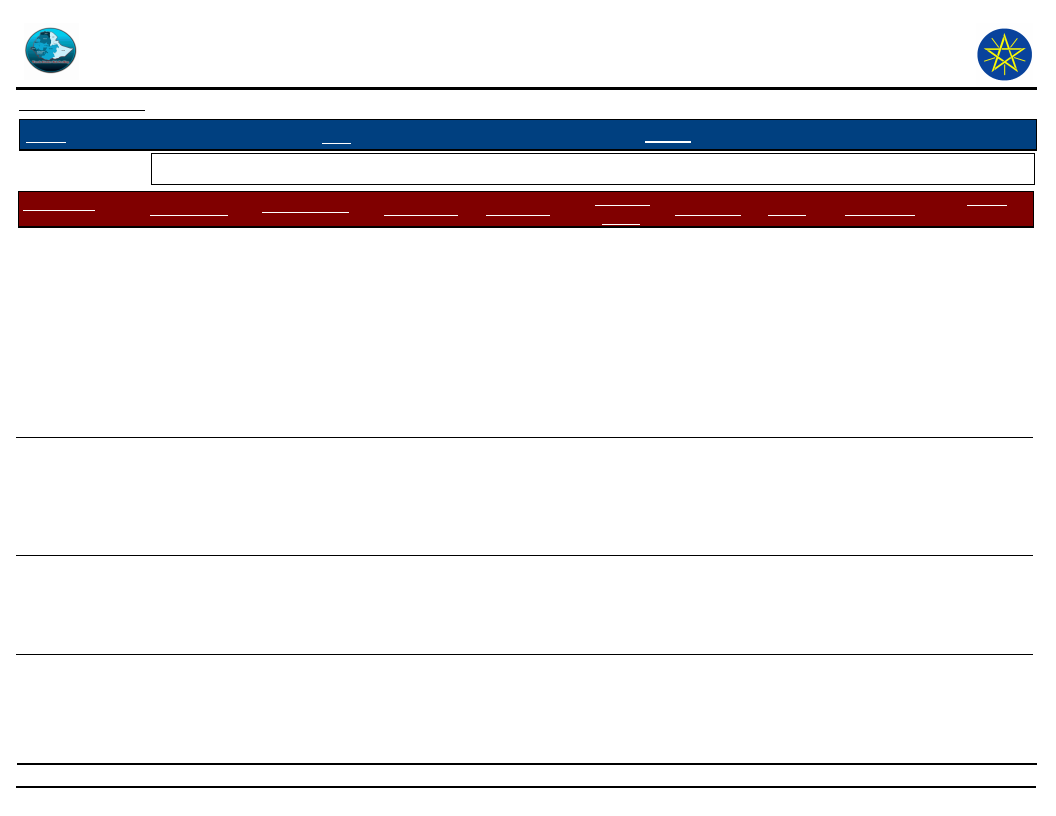
Wereda Disaster
Risk Profile
Data_Collected_Date
Region S.N.N.P
Zone HADIYA
Selected Indictor: Disaster Characteristics By Kebele
Kebele Name
Disaster_Type
Common Period
Year Occured
WADA
Droughts
January,
February,
March, April
2000, 2001,
2002, 2003
Storms /
Cyclone/hail
storm
June, July,
August
2000, 2001,
2002, 2003
Shortage of
Rainfall
October,
November,
December
2000, 2001,
2002, 2003
Disaster Risk Management
and Food Security Sector (DRMFSS)
Thursday, September 4, 2014
Wereda MIRAB BADAWOCHO
Worst_Year
2000 and
2003
Trends of
Effects
Increased
2003
Increased
2003
Increased
Root Causes Effects
Vulnerability
Population
pressure,
deforestation
Population
pressure,
deforestation
Yield
reduction
, plant
and
animal
disease,
low
quality of
animals,
death of
animals
Destructi
on of
crops and
plant and
animal
disease
Yield
reduction
, low
quality of
animals
Poor/ low
economic
capacity,
lack of
awareness
Poor
economic
activity, low
level of
credit and
saving ability
Poor
economic
activities
Coping
Strategy
Asset
selling,
migration
and
borrowing
Asset
selling
Asset
selling,
migration
and
borrowing
13
Page 7 of 13
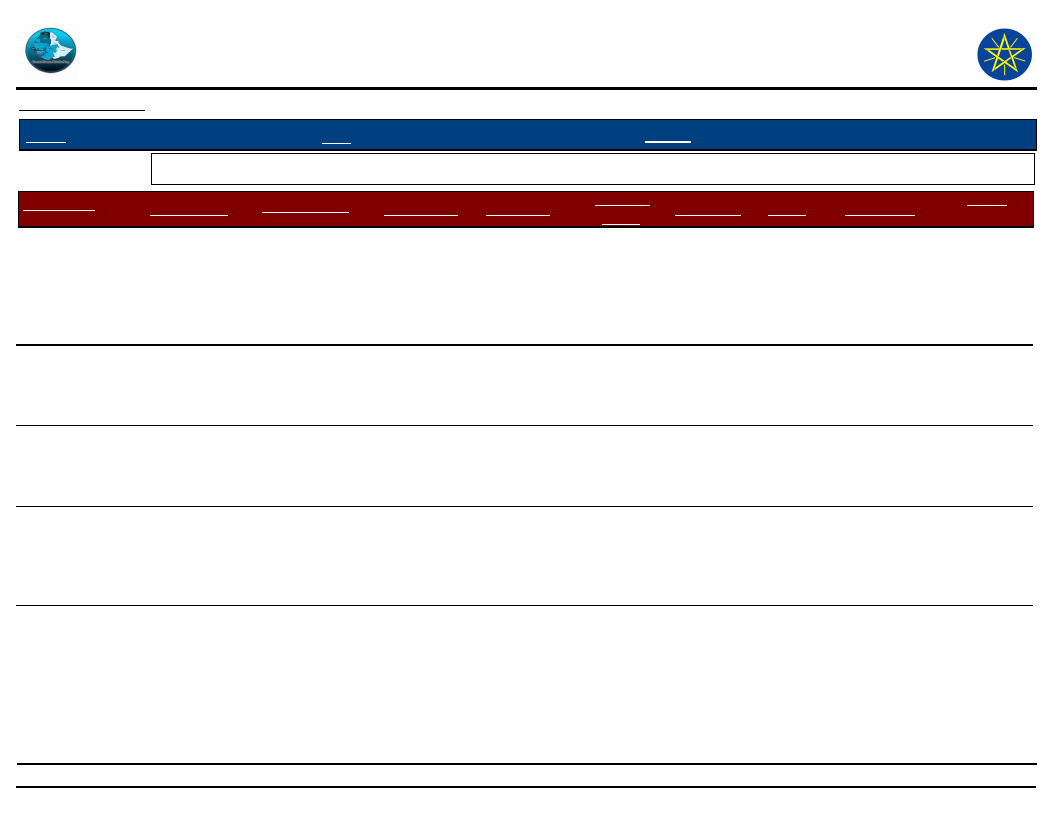
Wereda Disaster
Risk Profile
Data_Collected_Date
Region S.N.N.P
Zone HADIYA
Selected Indictor: Disaster Characteristics By Kebele
Kebele Name
Disaster_Type
Common Period
Year Occured
WEREBOYA
Droughts
January to
April
2000 to 2004
YA BUKUNA
DANAMA 01
Droughts
Storms /
Cyclone/hail
storm
Shortage of
Rainfall
Droughts
January to
April
2000, 2001,
2002, 2003
June to
September
2003, 2004
All months
except June to
August
2000, 2001,
2002, 2003,
2004
January to
April
2000 to 2004
Disaster Risk Management
and Food Security Sector (DRMFSS)
Thursday, September 4, 2014
Wereda MIRAB BADAWOCHO
Worst_Year
2003
Trends of
Effects
Increased
2003
Increased
2004
Increased
2003
Increased
2003
Increased
Root Causes Effects
Vulnerability
Deforestation
Global
warming,
Deforestation
High rain fall
Deforestation
Deforestation
Loss of
yield,
human
death and
animal
death
Livestock
death,
yield
reduction
Destructi
on of
crops and
Hunger
Agricultur
al
calendar
disturban
ce
Loss of
crop
yield,
human
death,
animal
death
Poor
economic
capacity
Poor
economy
Poor
economy
Poor
economy
Poor
economic
capacity
Coping
Strategy
Asset
selling and
migration
Asset
selling
Asset
selling
Asset
selling
Asset
selling and
migration
14
Page 8 of 13
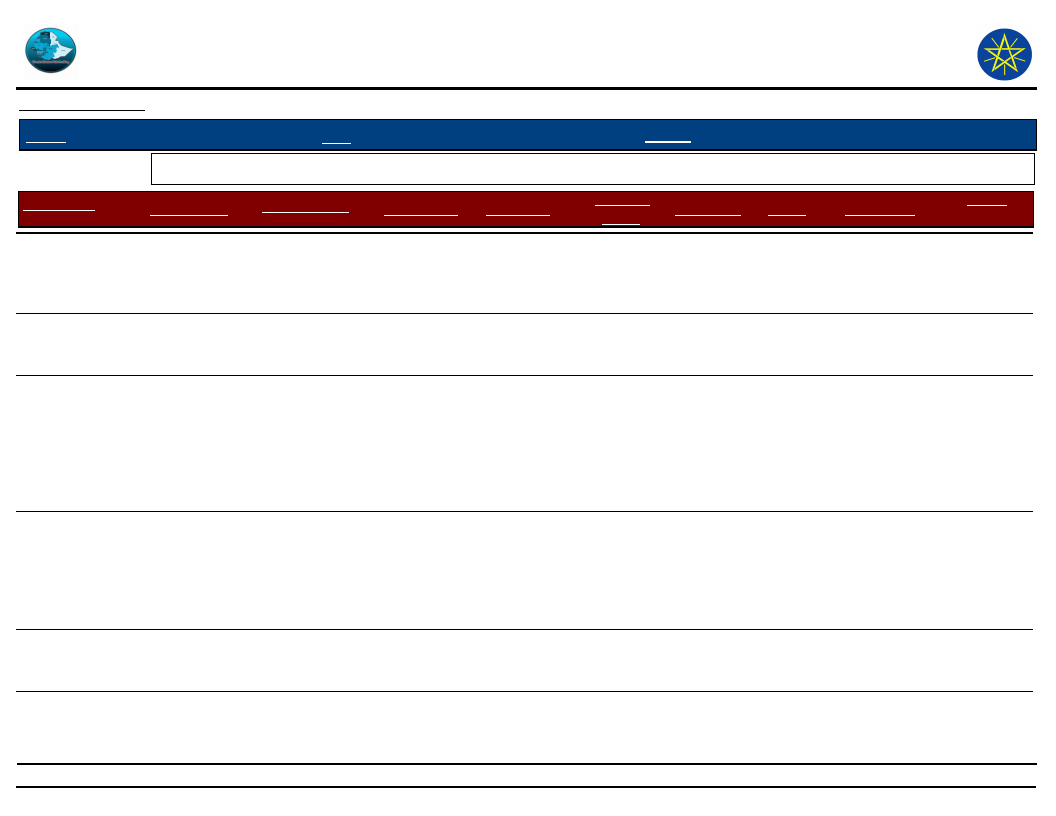
Wereda Disaster
Risk Profile
Data_Collected_Date
Region S.N.N.P
Zone HADIYA
Selected Indictor: Disaster Characteristics By Kebele
Kebele Name
Disaster_Type
Common Period
Year Occured
DANAMA 01
Floods
June to August
2003
DANAMA
Storms /
Cyclone/hail
storm
Droughts
June to August
2003
January to
April
2000 to 2004
Floods
June to August
2003
Storms /
Cyclone/hail
storm
June to August
2003
Disaster Risk Management
and Food Security Sector (DRMFSS)
Thursday, September 4, 2014
Wereda MIRAB BADAWOCHO
Worst_Year
Trends of
Effects
2003
----
2003
2000
----
Increased
2003
----
2003
----
Root Causes Effects
Vulnerability
Lack of soil
and water
conservation
Climatic
change
Deforestation
Climatic
change
Climatic
change
Soil
erosion,
yield
reduction
Low level
of income
Loss of
crop
yield,
human
disease,
animal
disease
Reduce
soil
fertility
and
productivi
ties
Low level
of income
Low level of
saving and
credit
abilities
Poor
economic
capacity
Low
economic
sources
Poor
economic
capacity
Poor
economic
capacity
Coping
Strategy
Labor
working and
trading
Loaning and
high credit
Asset
selling and
daily labor
work
Migration
and high
credit
Asset
selling and
borrowing
15
Page 9 of 13
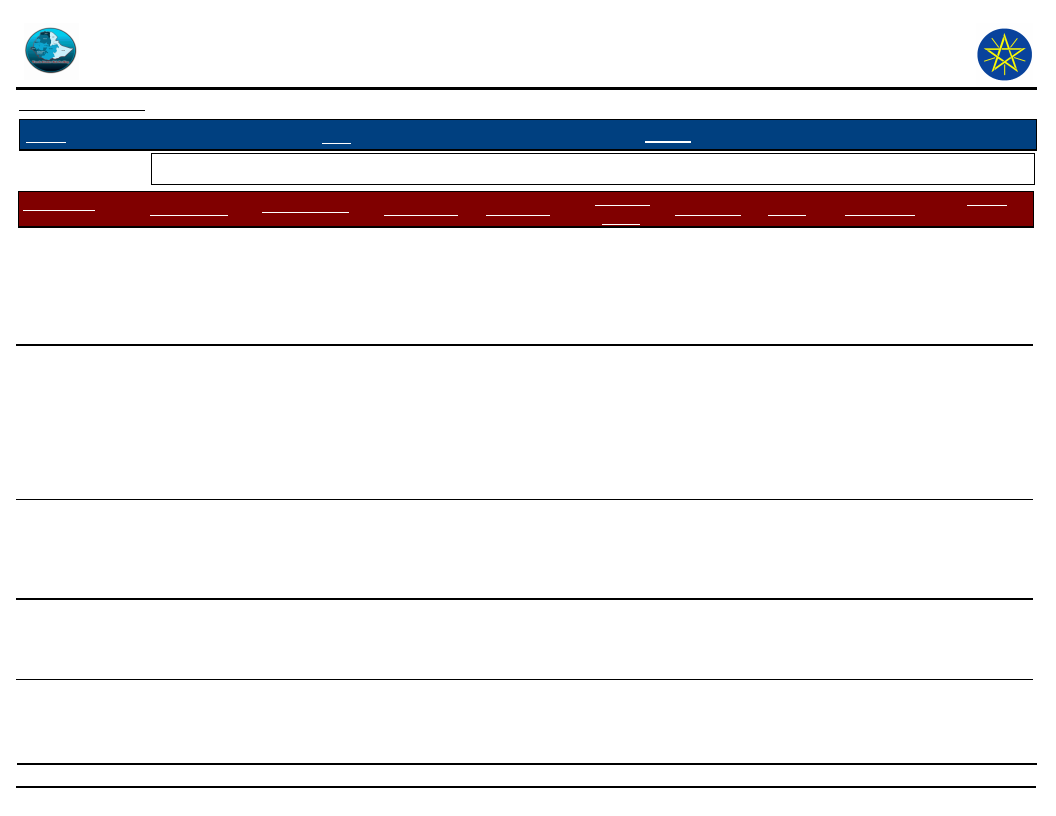
Wereda Disaster
Risk Profile
Data_Collected_Date
Region S.N.N.P
Zone HADIYA
Selected Indictor: Disaster Characteristics By Kebele
Kebele Name
Disaster_Type
Common Period
Year Occured
FIRST KASHERA
Droughts
February to
April
2000, 2001,
2003, 2004
Limited
expansion of
electric
December to
April, June to
September
2000, 2001,
2002, 2003.
Storms /
Cyclone/hail
storm
June, July
2002, 2003.
JARSO MAJORIYA
No access to
improved breeds
June to August
2000, 2002,
2003
Storms /
Cyclone/hail
storm
June to August
2003, 2004
Disaster Risk Management
and Food Security Sector (DRMFSS)
Thursday, September 4, 2014
Wereda MIRAB BADAWOCHO
Worst_Year
2000
Trends of
Effects
Increased
2003
Increased
2000
Increased
2003
Increased
2004
Increased
Root Causes Effects
Vulnerability
Deforestation
Weather
change
High rain fall
Poor
management
of soil and
water
High rain fall
Yield loss,
shortage
of water,
livestock
death and
hunger
Delay
cropping,
shortage
of rain in
sowing
and
flowering
season
Destructi
on of
crops and
yield
reduction
Yield
reduction
Poor
economy
Poor
economy,
having small
land size
Poor
economy
Poor
economy
Crop
destructio
n
Poor
economy
Coping
Strategy
Asset
selling,
reducing
meal time,
labour work
Asset
selling
Asset
selling
Asset
selling
Asset
selling
16
Page 10 of 13
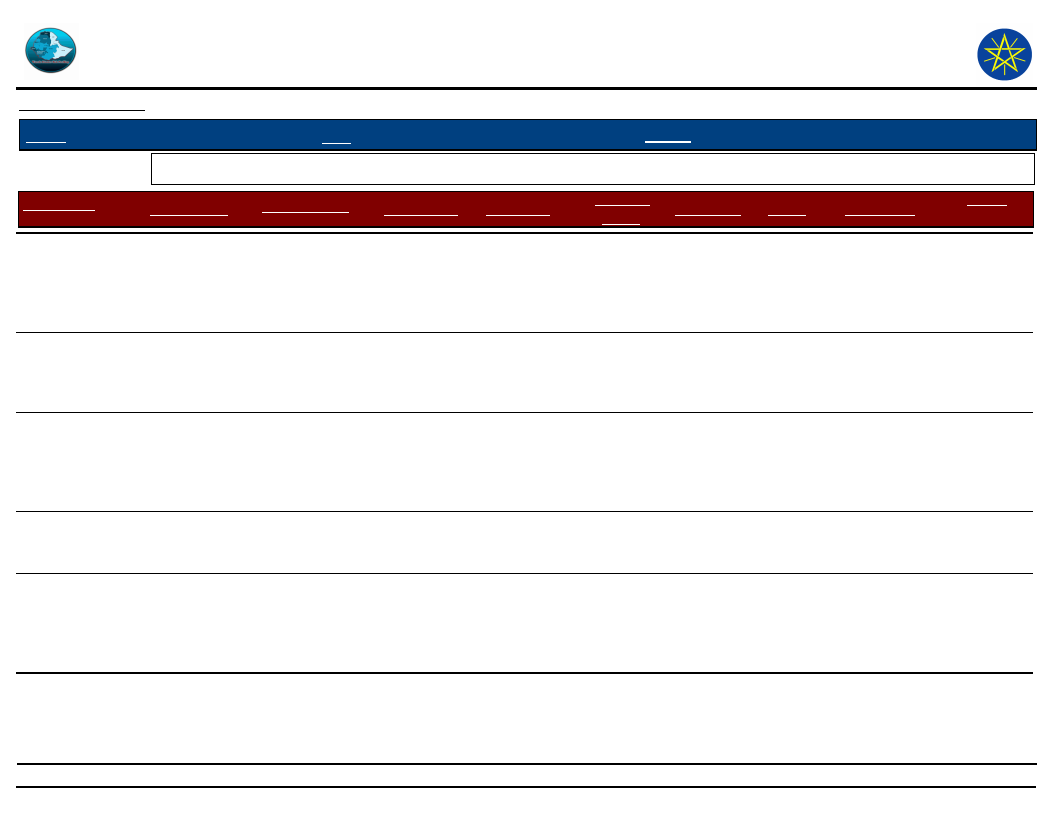
Wereda Disaster
Risk Profile
Data_Collected_Date
Region S.N.N.P
Zone HADIYA
Selected Indictor: Disaster Characteristics By Kebele
Kebele Name
Disaster_Type
Common Period
Year Occured
JARSO MAJORIYA
Droughts
January to
April
2000, 2002,
2003
MIRAB AJEBA
Droughts
OFFDAA
Droughts
January to
April
January to
April
2000, 2003
2000 to 2003
Un affordable
price fertilizer
Limited
expansion of
electric
February to
April
2002, 2003.
Throughout the
year
2000 to
2004.
Disaster Risk Management
and Food Security Sector (DRMFSS)
Thursday, September 4, 2014
Wereda MIRAB BADAWOCHO
Worst_Year
Trends of
Effects
2003
Increased
2000
Increased
2000
Increased
2003
Increased
Root Causes Effects
Vulnerability
Population
pressure,
Deforestation
Deforestation
, poor soil
and water
conservation
Deforestation
, un wise use
of land, lack
of awareness
Drought
Economic
hard ship,
asset loss,
shortage
of water
Unexpect
ed
economic
hard ship,
Loss of
asset,
yield
reduction
.
Loss of
asset
Poor
economy
Poor
economy
Poor
economy
Poor
economy
2003
Increased
Deforestation
and unwise
use of land
Yield
reduction
and
economic
hard ship
Poor
economy
Coping
Strategy
Asset
selling
Asset
selling
Asset
selling
Asset
selling and
borrowing
Asset
selling
17
Page 11 of 13
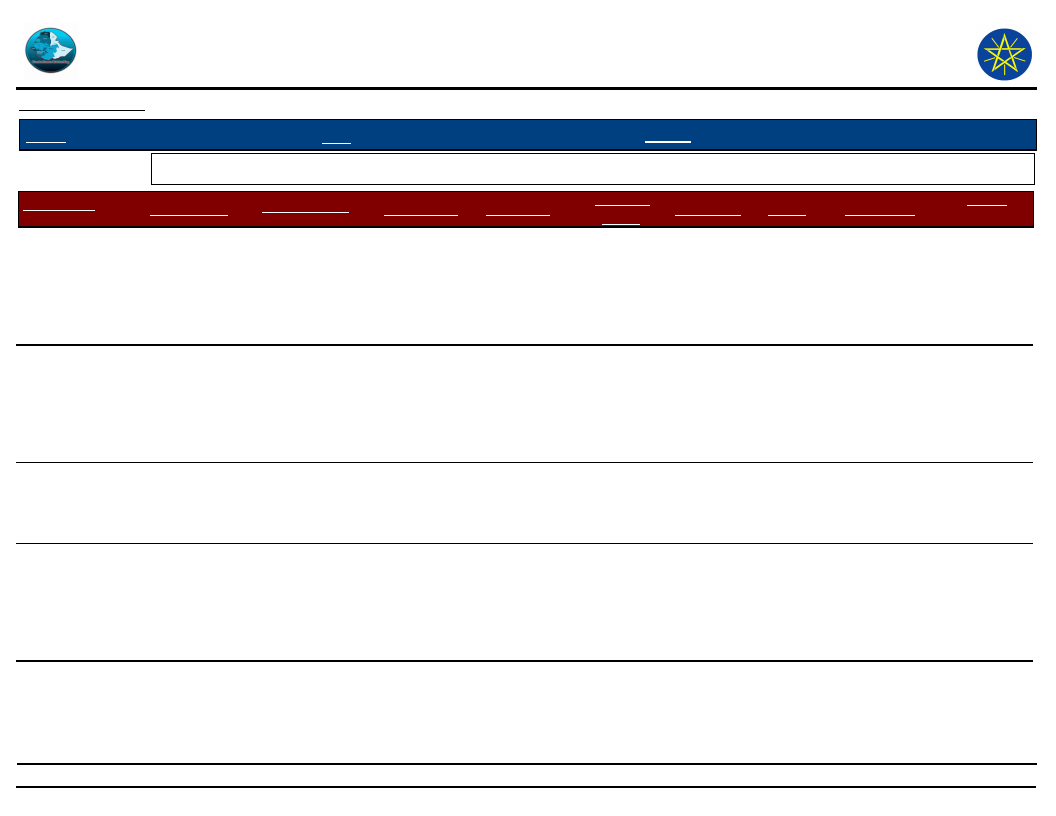
Wereda Disaster
Risk Profile
Data_Collected_Date
Region S.N.N.P
Zone HADIYA
Selected Indictor: Disaster Characteristics By Kebele
Kebele Name
Disaster_Type
Common Period
Year Occured
2nd KESHORA
Droughts
January to
March
2000 to
2004.
Floods
July to August
2003
WADA 01
Storms /
Cyclone/hail
storm
Droughts
July to August
2003
February to
April
2000, 2001,
2003, 2004
Disaster Risk Management
and Food Security Sector (DRMFSS)
Thursday, September 4, 2014
Wereda MIRAB BADAWOCHO
Worst_Year
2003
Trends of
Effects
Increased
2003
----
2003
----
2000
Increased
Root Causes Effects
Vulnerability
Deforestation
Climatic
change
Climatic
change
Deforestation
Loss of
yield,
human
death and
animal
death
Reduced
soil
fertility
and
productivi
ties
Loss of
yield and
reduce
income
Yield loss,
shortage
of water,
livestock
death and
hunger
Poor
economic
capacity
Poor
economic
capacity
Poor
economic
capacity
Poor
economic
capacity
Coping
Strategy
Asset
selling and
migration
Labor
working and
trading
Migration
and asset
selling
Asset
selling,
reducing
meal time,
labour work
18
Page 12 of 13
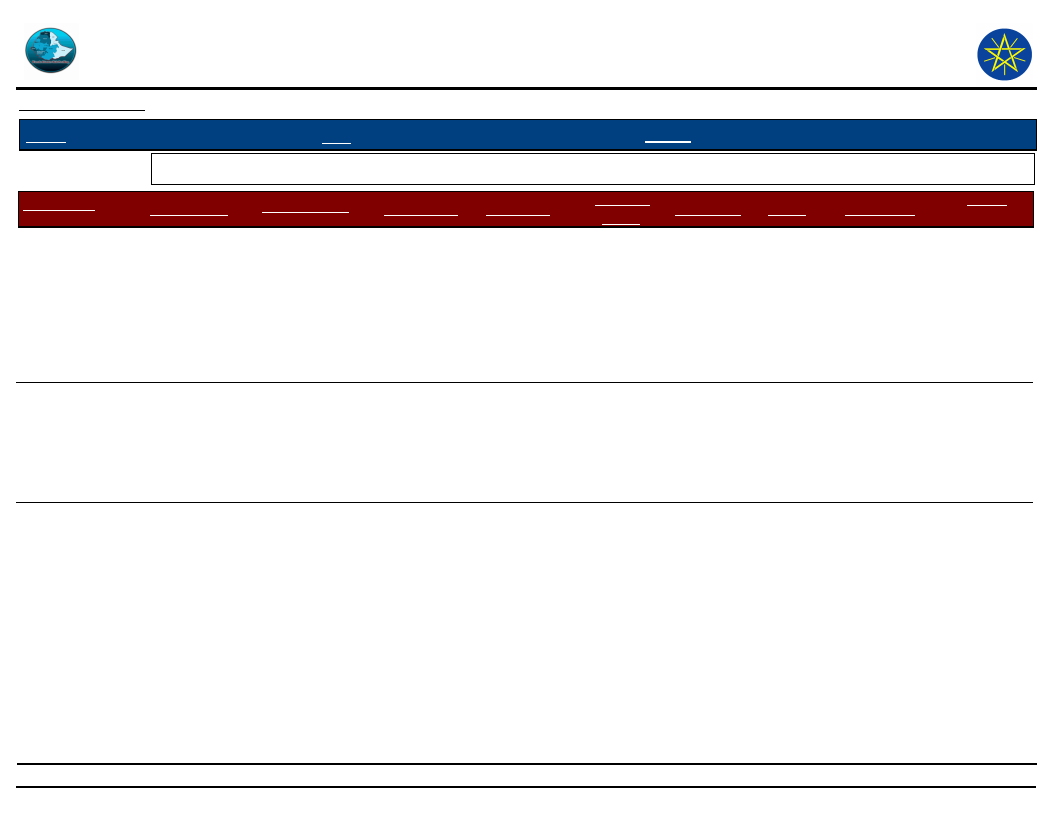
Wereda Disaster
Risk Profile
Disaster Risk Management
and Food Security Sector (DRMFSS)
Data_Collected_Date
Thursday, September 4, 2014
Region S.N.N.P
Zone HADIYA
Wereda MIRAB BADAWOCHO
Selected Indictor: Disaster Characteristics By Kebele
Kebele Name
WADA 01
Disaster_Type
Limited
expansion of
electric
Common Period
December to
April, June to
September
Year Occured
2000, 2001,
2002, 2003
Worst_Year
2003, 2004
Trends of
Effects
Increased
Storms /
Cyclone/hail
storm
June, July
2002, 2003
2003
Increased
IMPORTANT: The years and months mentoned in this report are according to Ethiopian Calendar (EC).
Root Causes Effects
Vulnerability
Weather
change
High rain fall
Shortage
of rain
falls
during
sowing
and
flowering
time
Destructi
on of
crops and
yield
reduction
.
Poor
economy,
having small
land size
Poor
economy
Coping
Strategy
Asset
selling
Asset
selling
19
Page 13 of 13
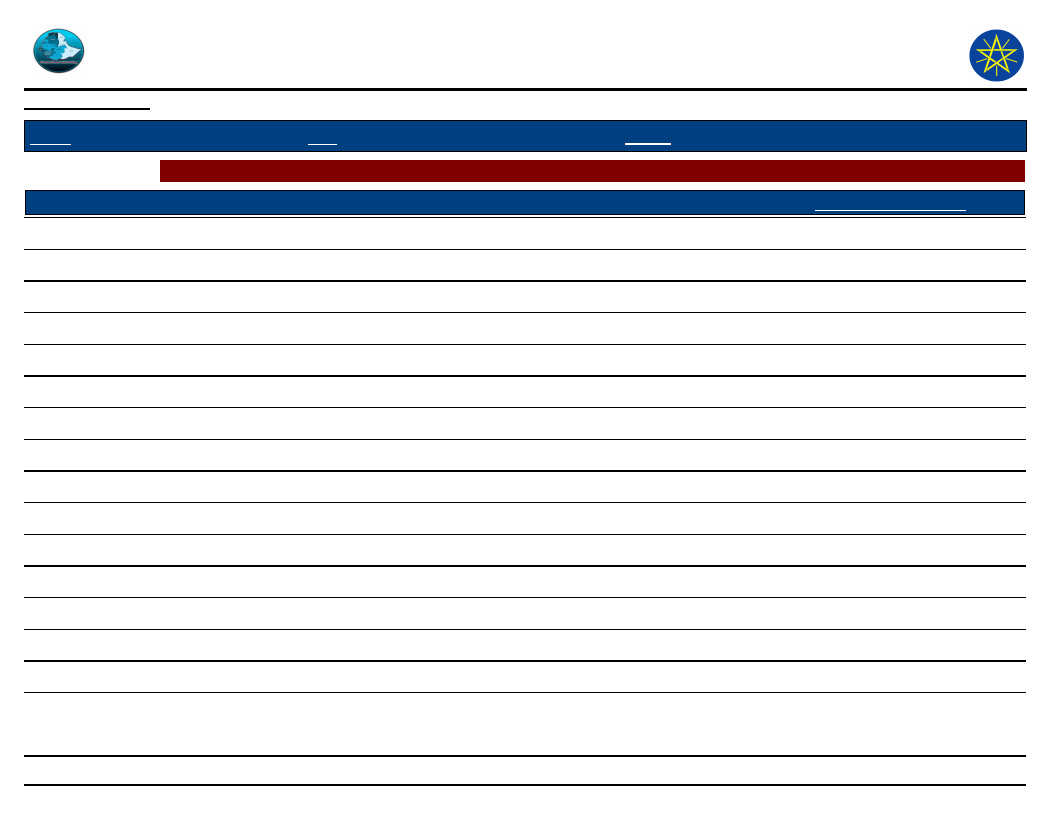
Wereda Disaster
Risk Profile
Data_Collected_Date
Region S.N.N.P
Zone HADIYA
Selected Indictor: Hazards: Conflict as an Issue
KebeleName
DEDO
WEBARANA OFODA
Description_Of_Conflict
No
Better
JARISO ONIJOJO
SIBEYA
Better
Better
GERIBO
WEREBOYA
2GNA KOTO
HAWORA
ELIFETA
YA BUKUNA
WADA
SEPERA
KACHA BIRA
1GNA KOTO
DANAMA 01
DANAMA
No
Better
No
No
Better
Better
No
Better
Seasonal conflict
Seasonal problem
Better
No
Disaster Risk Management
and Food Security Sector
Thursday, September 4, 2014
Wereda MIRAB BADAWOCHO
Change_In_Last_Decade
Main_Causes_Of_Conflict
No change
But now almost negligible
Better
Decreasing of conflict level
But now almost negligible
Better
Decreased
20
Page 1 of 2
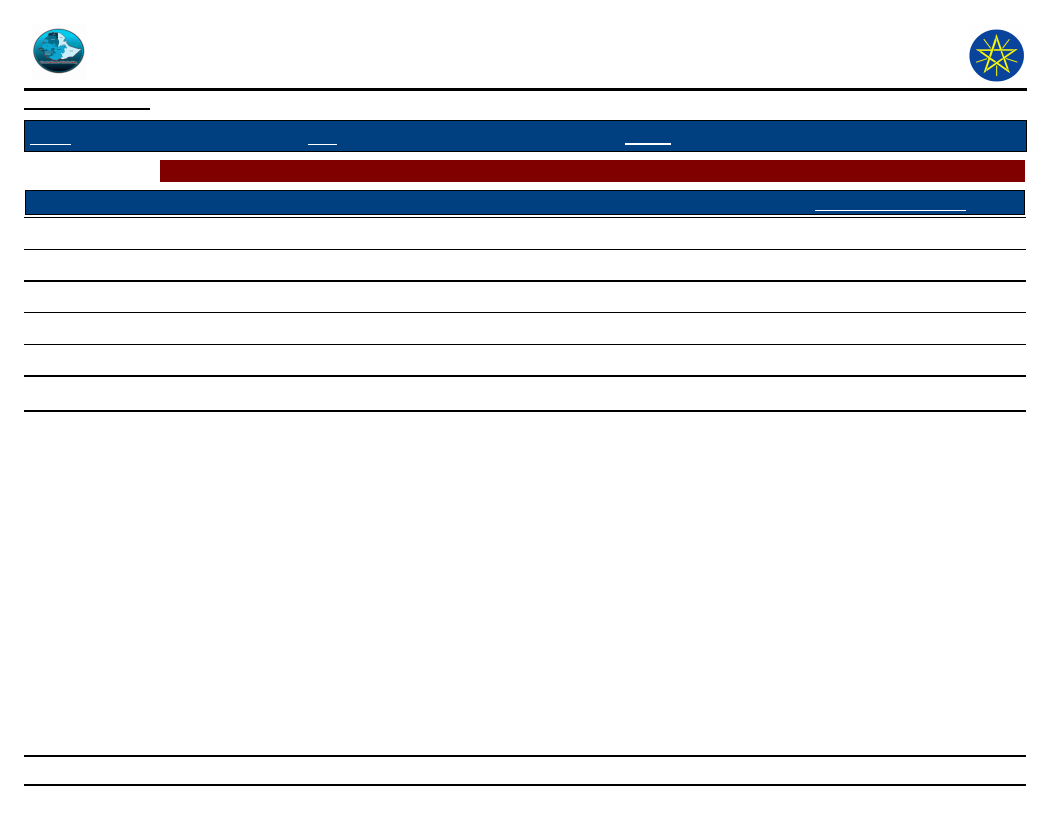
Wereda Disaster
Risk Profile
Data_Collected_Date
Region S.N.N.P
Zone HADIYA
Selected Indictor: Hazards: Conflict as an Issue
KebeleName
FIRST KASHERA
WADA 01
Description_Of_Conflict
Less occurrence
Less occurrence
JARSO MAJORIYA
MIRAB AJEBA
Better
No
OFFDAA
No
2nd KESHORA
No
Disaster Risk Management
and Food Security Sector
Thursday, September 4, 2014
Wereda MIRAB BADAWOCHO
Change_In_Last_Decade
Decreasing of conflict level
Decreasing of conflict level
Decreasing of conflict level
Decreased
No change
Main_Causes_Of_Conflict
21
Page 2 of 2
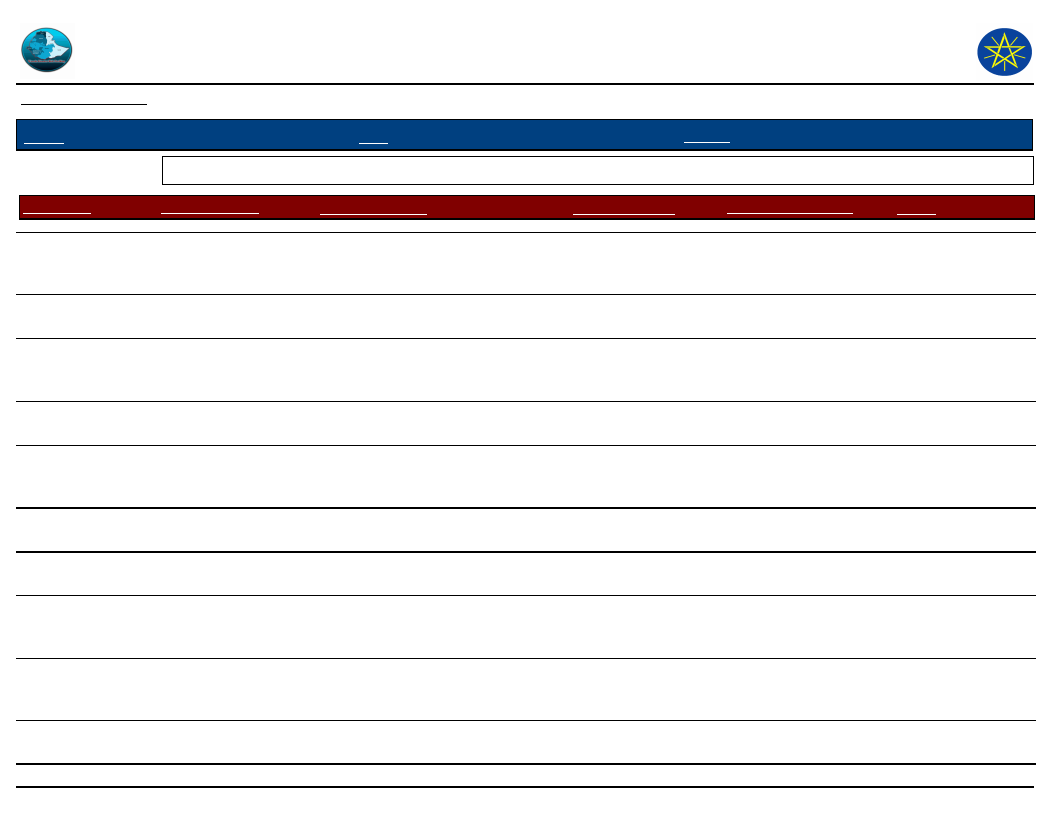
Wereda Disaster
Risk Profile
Disaster Risk Management
and Food Security Sector (DRMFSS)
Data_Collected_Date
Thursday, September 4, 2014
Region S.N.N.P
Zone
HADIYA
Wereda
MIRAB BADAWOCHO
Selected Indicator: Hazard Situation During Last Disaster - Characteristics of most recent disasters that affected the community
KebeleName
Types of Disasters
Hazard_Description
Effect_Of_Disaster
Most_Severly_Affected
Reason
DEDO
Drought
WEBARANA OFODA
JARISO ONIJOJO
Drought
Drought
SIBEYA
GERIBO
Drought
Drought
WEREBOYA
2GNA KOTO
HAWORA
Drought
Drought
ELIFETA
Drought
High and the magnitude started from
January to April
Medium and the magnitude started
from January to April
Medium and the magnitude started
from January to April
Medium and the magnitude started
from January to April
Low and started from January to July
Medium and the magnitude started
from January to April
For 6 months
For 7 months
High and for about 4 months
Hunger, Loss of yield
Loss of yield and
animal disease
Hunger, Loss of yield
Hunger, Loss of yield
Hunger, Loss of yield
Hunger, Loss of yield
Loss of yield and loss
of asset
Yield reduction and
loss of yield
Yield reduction,
livestock death and
shortage of water
Children, mothers,
elders and disabled
person
Children, elders and
disabled person
Children, elders and
disabled person
Children, elders and
disabled person
Children, elders and
disabled person
Children, elders and
disabled person
Children, elders and
disabled person
Children, elders and
disabled person
Children, pregnant
women and elders
They are
economically poor
They are
economically poor
They are
economically very
poor
They are
economically poor
They are
economically poor
and not power full
They are
economically poor
Loss of yield, lack
of capacity, less
productivity
Poor economy
22
Page 1 of 3
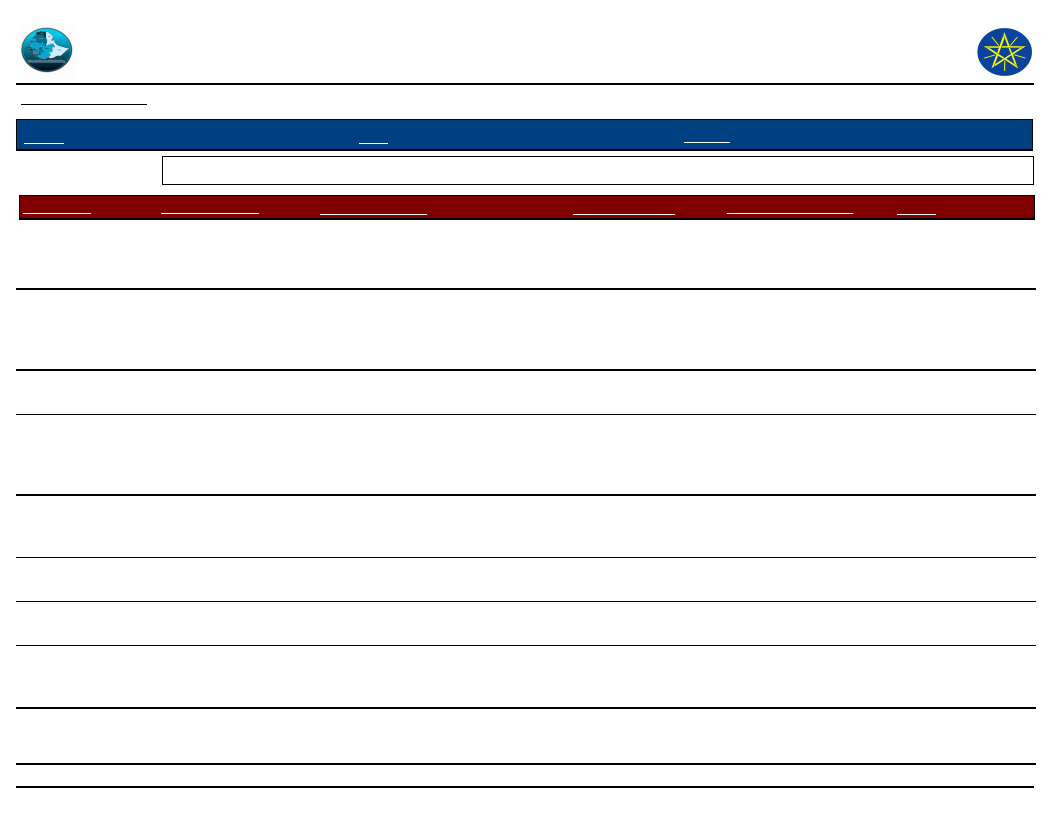
Wereda Disaster
Risk Profile
Disaster Risk Management
and Food Security Sector (DRMFSS)
Data_Collected_Date
Thursday, September 4, 2014
Region S.N.N.P
Zone
HADIYA
Wereda
MIRAB BADAWOCHO
Selected Indicator: Hazard Situation During Last Disaster - Characteristics of most recent disasters that affected the community
KebeleName
YA BUKUNA
WADA
SEPERA
KACHA BIRA
1GNA KOTO
DANAMA
DANAMA 01
2nd KESHORA
Types of Disasters
Drought
Drought
Drought
Drought
Drought
Drought
Drought
Drought
Hazard_Description
High and for about 4 months
High and for about five months
For 5 months
High
High and for about 4 months
Low and started from January to July
Low and started from January to July
Medium and the magnitude started
from January to April
Effect_Of_Disaster
Economic hardship
Economy diminishing,
hungry and loss of
asset
Most_Severly_Affected
Children, pregnant
women, disabled and
elders
Children, old men,
women, disables and
lactating women
Loss of yield
Yield reduction and
livestock death
Yield reduction, death
of livestock and loss of
assets
Hunger, Loss of yield
Hunger, Loss of yield
Hunger, Loss of yield
Children, pregnant
women, elders
Who have poor economy,
small land size, pregnant
women, elders and
disables
Children, pregnant
women and elders
Children, elders and
disabled person
Children, elders and
disabled person
Children, elders and
disabled person
Reason
Poor economy, low
working capacity
and small land size
Poor economy,
those who have
small land, and less
educated
Lack of capacity,
poor economy
Poor economy
Poor economy and
small land size
They are
economically poor
They are
economically poor
They are more
Suspitable to the
drought
23
Page 2 of 3
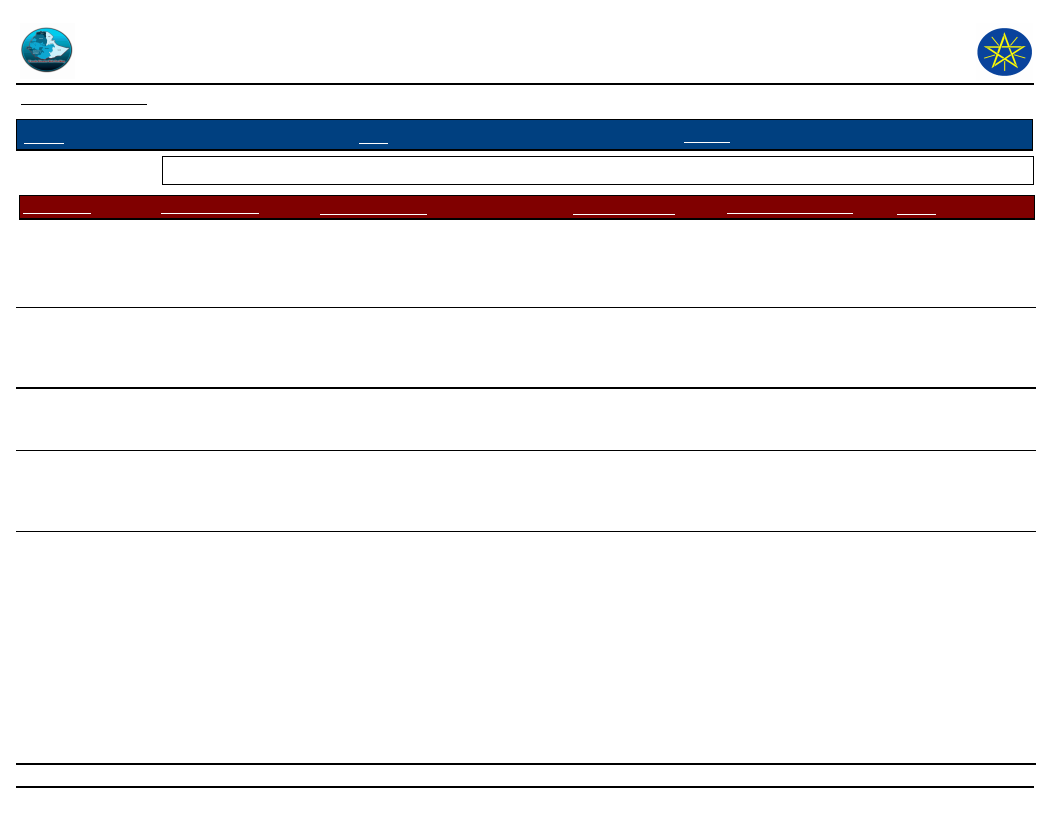
Wereda Disaster
Risk Profile
Disaster Risk Management
and Food Security Sector (DRMFSS)
Data_Collected_Date
Thursday, September 4, 2014
Region S.N.N.P
Zone
HADIYA
Wereda
MIRAB BADAWOCHO
Selected Indicator: Hazard Situation During Last Disaster - Characteristics of most recent disasters that affected the community
KebeleName
WADA 01
Types of Disasters
Drought
Hazard_Description
High and for about 4 months
FIRST KASHERA
Drought
High and for about 4 months
JARSO MAJORIYA
Drought
OFFDAA
Drought
High and for about 4 months
High and for about 4 months
MIRAB AJEBA
Drought
High
Effect_Of_Disaster
Yield reduction,
delaying cropping
time and shortage of
water
Yield reduction,
delaying cropping
time and shortage of
water
Yield reduction and
shortage of water
Loss of asset, yield
reduction, economic
hard ship and delaying
agricultural calendar
Yield reduction, loss
of asset
Most_Severly_Affected
Who have low capacity,
young children, pregnant
women and elders
Who have low capacity,
young children, pregnant
women and elders
Children, pregnant
women and elders
Children, pregnant
women, elders and
disabled persons
Young children,
pregnant women
Reason
poor economy and
small land size, low
capacity
poor economy and
small land size, low
capacity
Poor economy and
small land size,
more family size
Poor economy,
small land size
Poor economy,
small land size,
large family size
24
Page 3 of 3
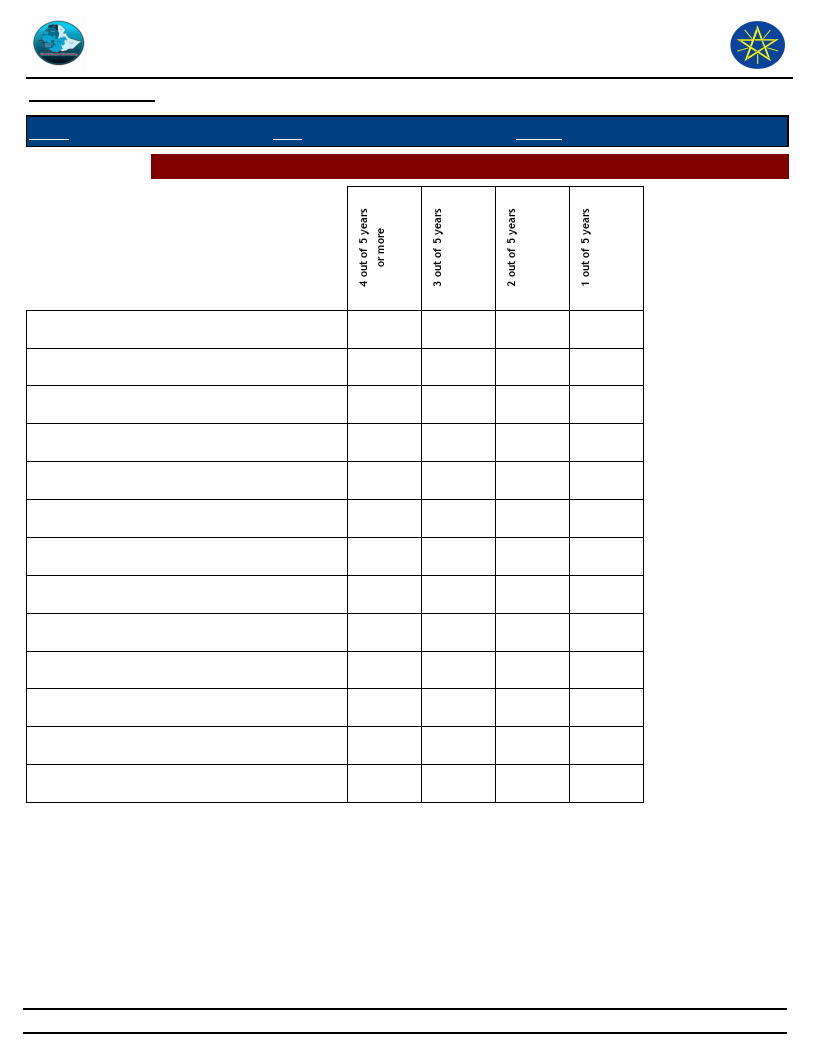
Wereda Disaster
Risk Profile
Data_Collected_Date
Region S.N.N.P
Zone HADIYA
Selected Indictor: Frequency of Disaster Occurrence
Disaster Risk Management
and Food Security Sector (DRMFSS)
Thursday, September 4, 2014
Wereda MIRAB BADAWOCHO
Conflicts
Crop diseases
Droughts
Economic / Price shock
Floods
Frost / Cold waves
Heat waves/ High temp
Heavy Rain
Human diseases
Landslides
Livestock diseases
Road Accident
Storms / Cyclone/hail storm
4.00
15.00
21.00
33.00
33.00
47.00
13.00
13.00
33.00
5.00
33.00
8.00
33.00
20.00
55.00
33.00
27.00
50.00
33.00
13.00
14.00
10.00
12.00
64.00
28.00
41.00
20.00
17.00
20.00
26.00
36.00
33.00
36.00
67.00
41.00
67.00
11.00
2.00
6.00
20.00
48.00
36.00
33.00
49.00
39.00
25
Page 1 of 1
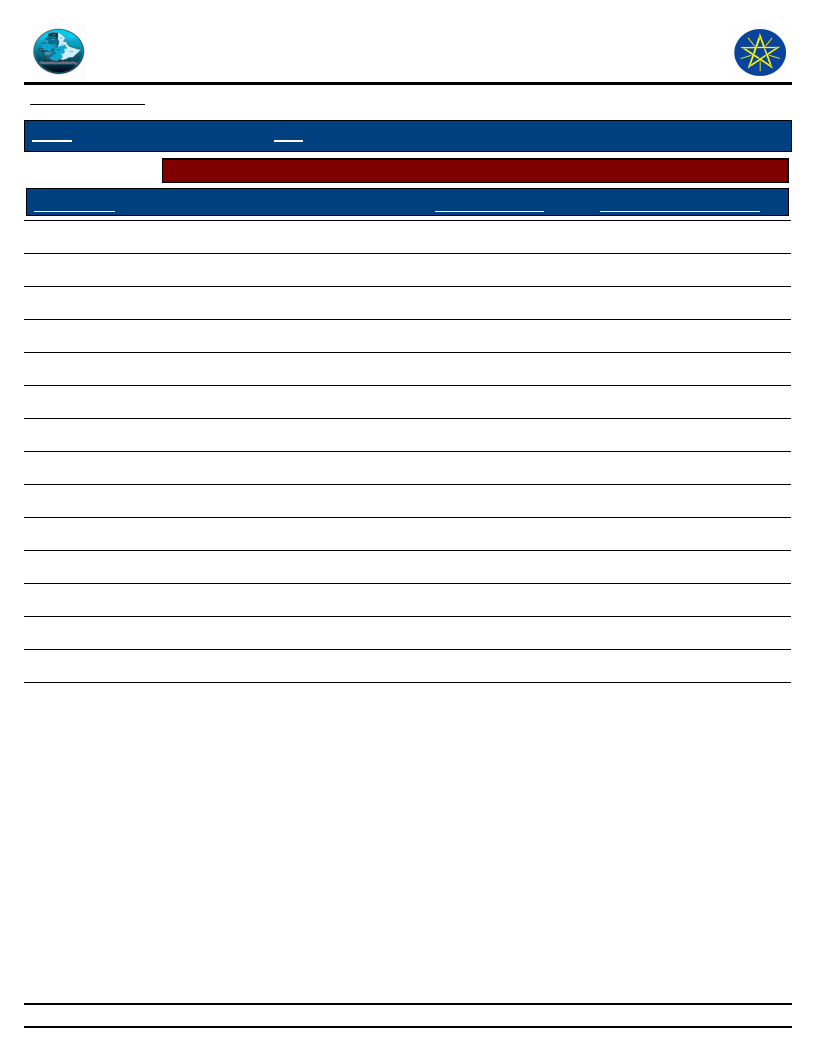
Wereda Disaster
Risk Profile
Data_Collected_Date
Region
S.N.N.P
Zone
Selected Indictor:
Household Exposure to Hazards
Disaster Type
Droughts
Floods
Landslides
Crop diseases
Livestock diseases
Human diseases
Storms / Cyclone/hail storm
Heavy Rain
Frost / Cold waves
Heat waves/ High temp
Conflicts
Economic / Price shock
Forest Fires
Earthquake
Road Accident
Disaster Risk Management
and Food Security Sector (DRMFSS)
Thursday, September 4, 2014
HADIYA
Wereda
MIRAB BADAWOCHO
General_Exposure
28.50
1.40
0.10
16.80
12.00
12.10
13.10
4.00
2.20
0.60
0.80
7.70
0.30
0.20
0.10
Last_Five_Years_Exposure
33.40
1.10
0.20
19.70
9.10
8.60
13.70
1.70
0.40
1.10
0.20
10.50
0.20
26
Page 1 of 1
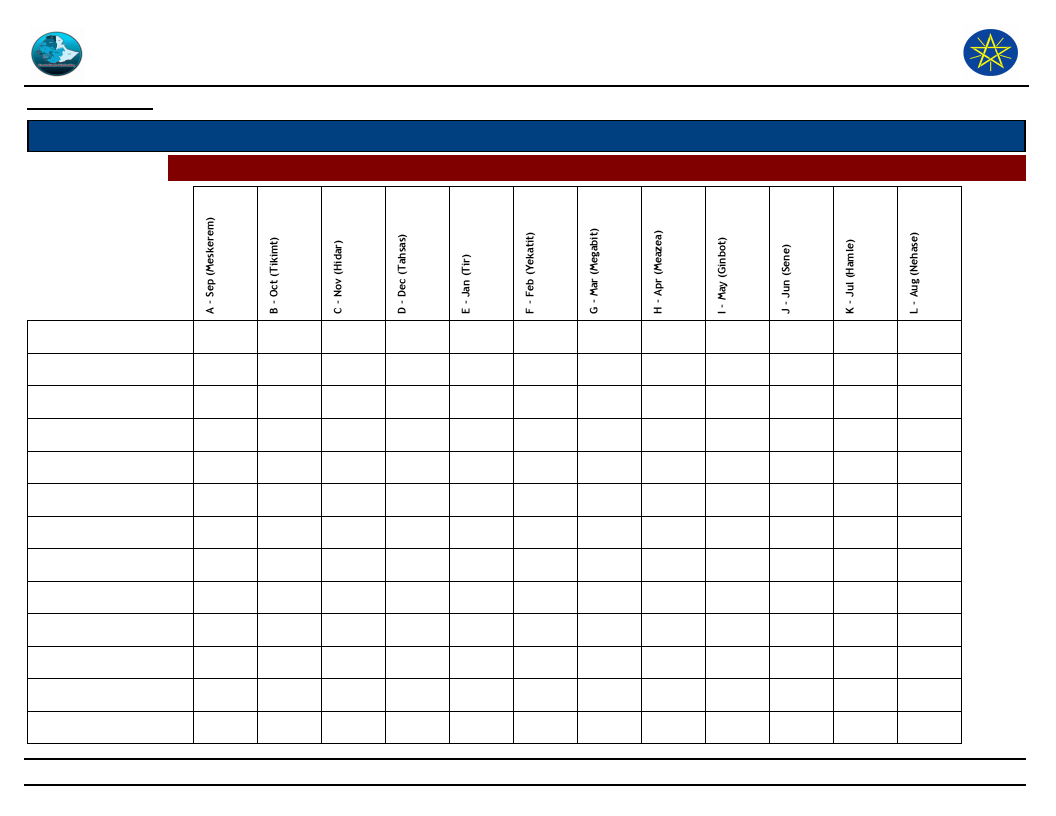
Wereda Disaster
Risk Profile
Data_Collected_Date
Region S.N.N.P
Selected Indictor:
Zone HADIYA
Months of Occurrence of Frequent Disasters
Disaster Risk Management
and Food Security Sector
Thursday, September 4, 2014
Wereda MIRAB BADAWOCHO
Conflicts
Crop diseases
Droughts
Economic / Price shock
Floods
Frost / Cold waves
Heat waves/ High temp
Heavy Rain
Human diseases
Landslides
Livestock diseases
Road Accident
Storms / Cyclone/hail sto
61.20
10.20
20.00
14.30
6.10
2.00
8.50
72.30
12.80
16.70
46.70
4.30
8.00
3.80
66.70
1.40
50.00
35.30
44.40
50.40
6.70
16.70
13.30
11.50
8.60
4.30
17.60
20.30
23.30
6.70
13.00
18.40
33.30
35.20
33.30
16.30
1.70
44.00
8.30
26.70
26.10
12.60
66.70
26.70
23.40
7.40
20.00
21.70
22.20
40.70
33.80
33.30
13.00
13.80
1.50
38.50
50.00
30.80
33.30
13.00
53.80
59.50
2.70
2.70
6.70
33.30
13.30
8.70
8.10
2.70
14.90
19.50
4.90
22.00
48.80
4.90
58.30
25.00
16.70
50.00
50.00
27
Page 1 of 1
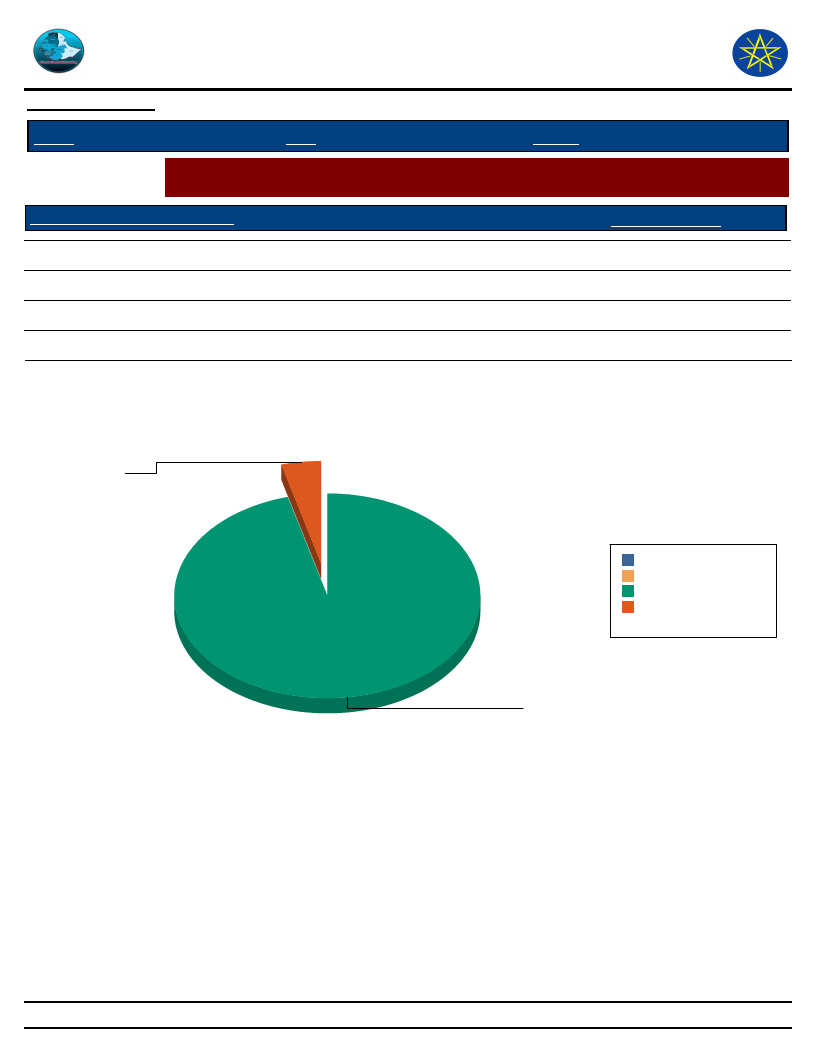
Wereda Disaster
Risk Profile
Disaster Risk Management
and Food Security Sector (DRMFSS)
Data_Collected_Date
Thursday, September 4, 2014
Region S.N.N.P
Zone HADIYA
Wereda MIRAB BADAWOCHO
Selected Indictor:
Conflicts: Perception of households on conflict issues - Is conflict an issue in this
community?
Is Conflict an Issue in Community?
Response_Percent
Yes
4.10
No
95.90
DK
0.00
NA
0.00
Is Conflict an Issue in Community?
Yes
4.1
DK
0 0.0%
NA
0 0.0%
No 95.9 95.9%
Yes 4.1 4.1%
Total: 100 100.0%
No
95.9
28
Page 1 of 1
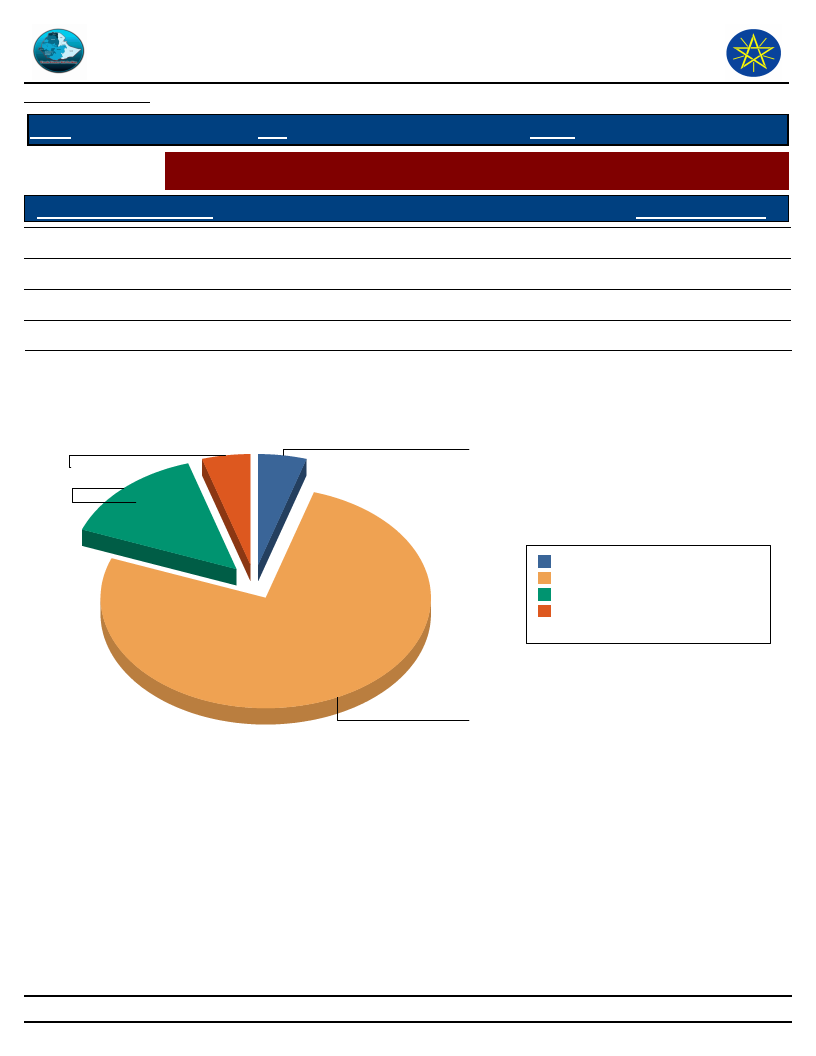
Wereda Disaster
Risk Profile
Data_Collected_Date
Disaster Risk Management
and Food Security Sector (DRMFSS)
Thursday, September 4, 2014
Region S.N.N.P
Zone HADIYA
Wereda MIRAB BADAWOCHO
Selected Indictor:
Conflicts: Perception of households on conflict issues - Who To Turn To in case of
Conflict?
Who To Turn During Conflict?
Response_Percentage
Family members
14.30
Elders
76.20
Amakaris
4.80
Police
4.80
Who To Turn During Conflict?
Police
5
Family members
14
Amakaris
5
Amakaris
5 4.8%
Elders
76 76.1%
Family members 14 14.3%
Police
5 4.8%
Total:
100 100.0%
Elders
76
29
Page 1 of 1
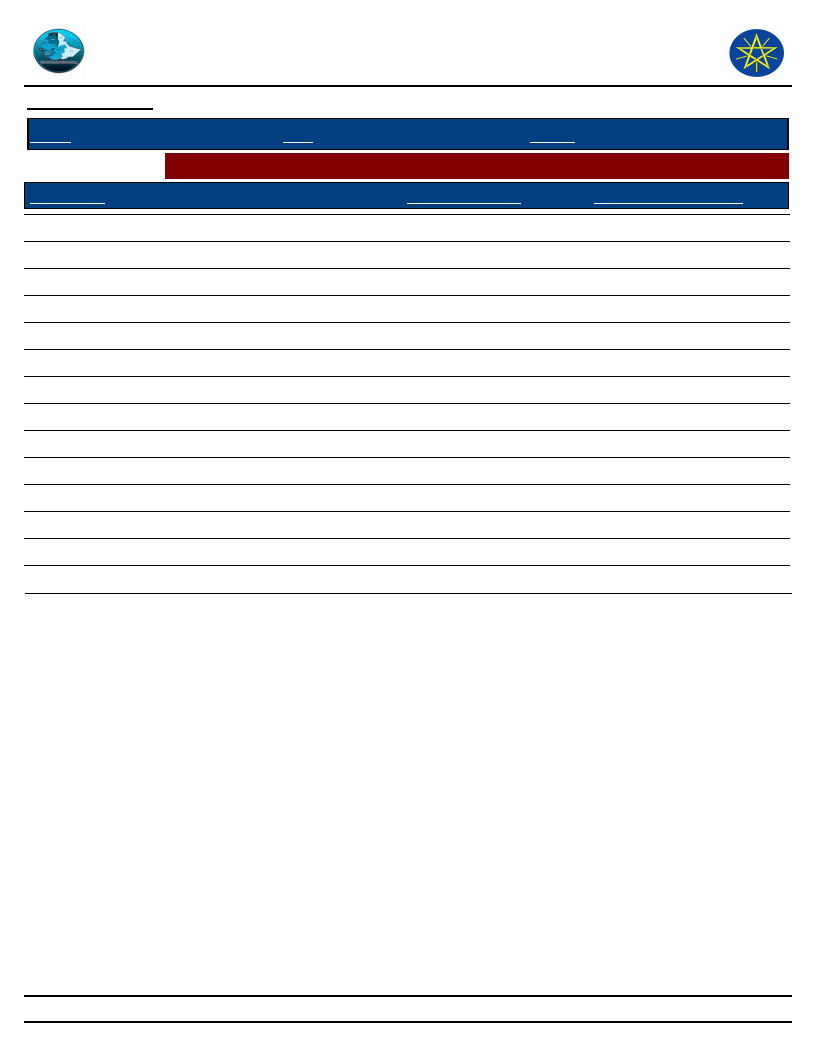
Wereda Disaster
Risk Profile
Data_Collected_Date
Disaster Risk Management
and Food Security Sector (DRMFSS)
Thursday, September 4, 2014
Region S.N.N.P
Selected Indictor:
Type of Loss
Zone HADIYA
Wereda MIRAB BADAWOCHO
Losses from Disasters - Losses from all disasters (household response in %)
Main_Loss_Percent
Secondary_Loss_Percent
Physical damages on houses and property
Crop damage
Livestock damage
Death of household members
Illness/health problems
Loss of access to social services, including school
Loss of income
Loss of savings
Livestock were stolen
Lost access to grazing land
Lost access to water source
Had to flee/change residence area
Other losses/damages
DK
14.60
32.50
8.80
1.30
10.30
2.50
16.30
8.80
0.30
1.20
2.80
0.40
0.00
0.10
3.50
6.10
11.30
1.90
9.10
5.20
33.30
16.80
0.50
5.20
6.40
0.10
0.40
0.00
30
Page 1 of 1
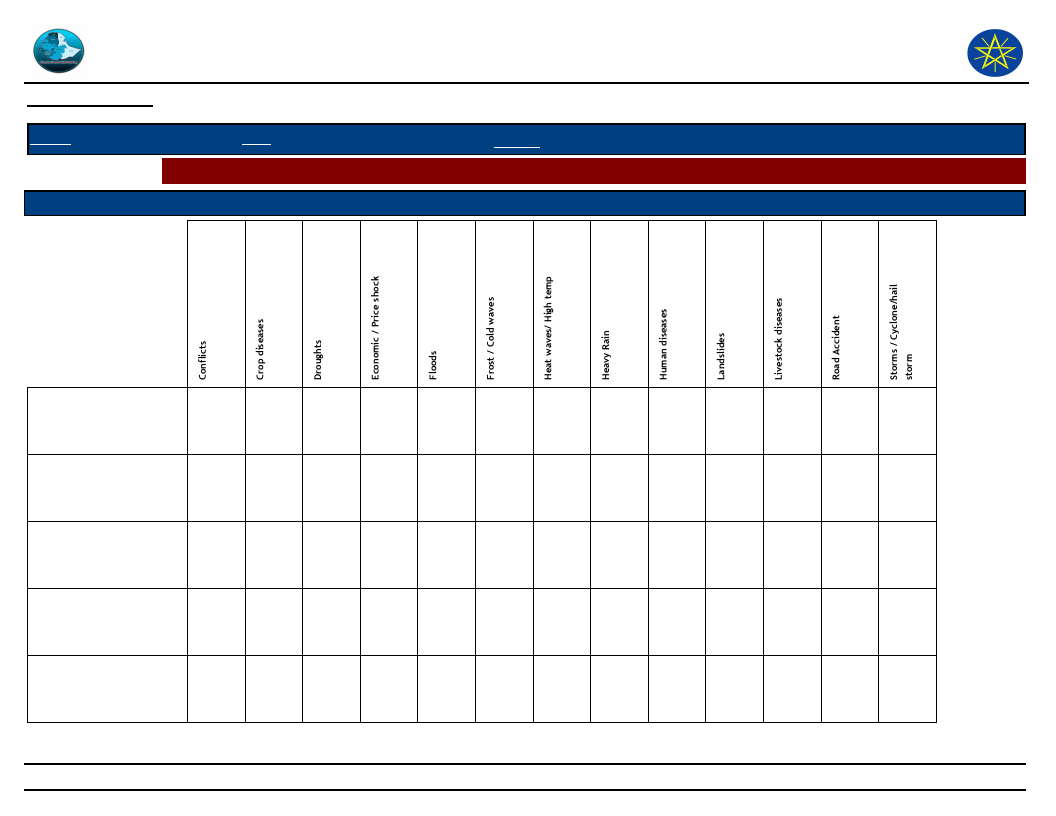
Wereda Disaster
Risk Profile
Data_Collected_Date
Disaster Risk Management
and Food Security Sector (DRMFSS)
Thursday, September 4, 2014
Region S.N.N.P
Selected Indictor:
Type of Loss
Zone HADIYA
Wereda MIRAB BADAWOCHO
Losses from Disasters - Main Losses by Type of Disasters (household response in %)
Type of Disasters which mainly caused Listed Losses
Crop damage
39.30
32.50
10.00
63.60
Death of household
members
DK
33.30
2.90
1.10
Had to flee/change
residence area
Illness/health problems
0.70
1.10
11.70
6.90
2.20
9.10
14.30
33.30
4.50
66.70
1.70
3.40
1.10
28.60
4.80
49.40
11.90
63.30
0.60
1.80
31
Page 1 of 3
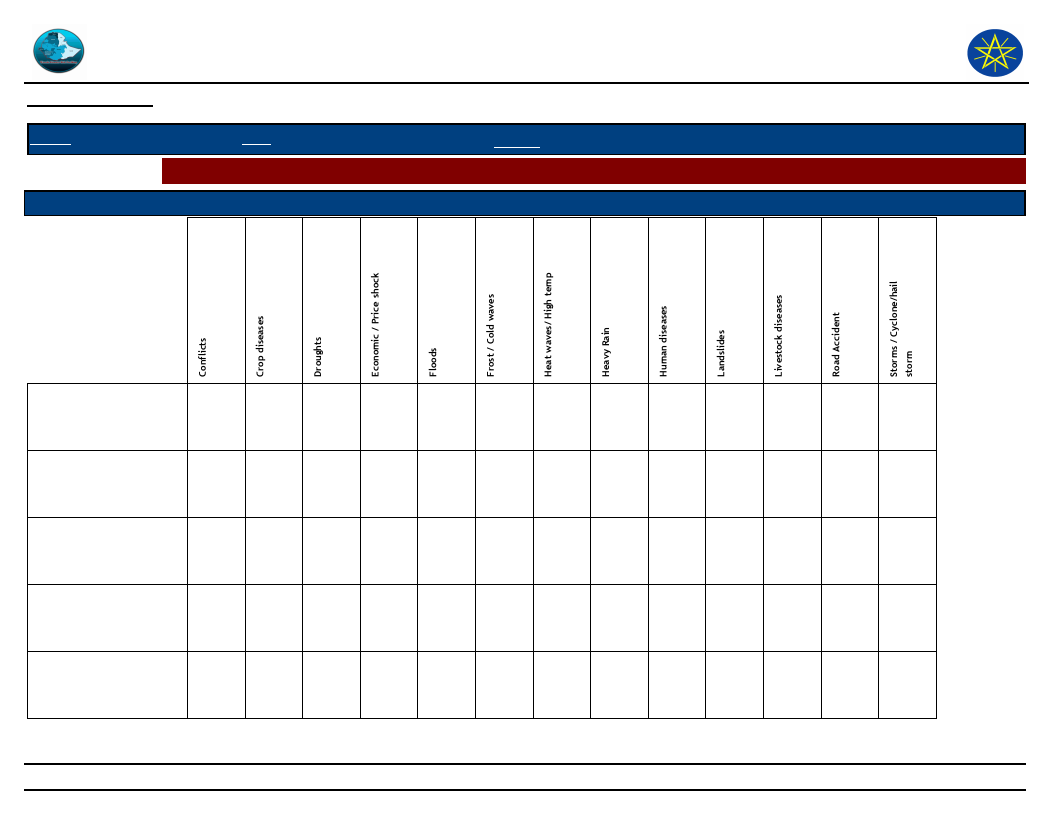
Wereda Disaster
Risk Profile
Data_Collected_Date
Disaster Risk Management
and Food Security Sector (DRMFSS)
Thursday, September 4, 2014
Region S.N.N.P
Selected Indictor:
Type of Loss
Zone HADIYA
Wereda MIRAB BADAWOCHO
Losses from Disasters - Main Losses by Type of Disasters (household response in %)
Type of Disasters which mainly caused Listed Losses
Livestock damage
Livestock were stolen
Loss of access to social
services, including
school
Loss of income
Loss of savings
13.60
5.80
5.60
33.30
7.90
0.50
2.20
2.40
2.00
3.30
33.30
14.30
3.40
19.40
11.30
30.00
18.20
33.30
14.30
23.80
18.00
4.40
13.30
15.60
3.40
39.00
1.70
27.10
6.80
2.40
1.80
13.30
5.40
32
Page 2 of 3
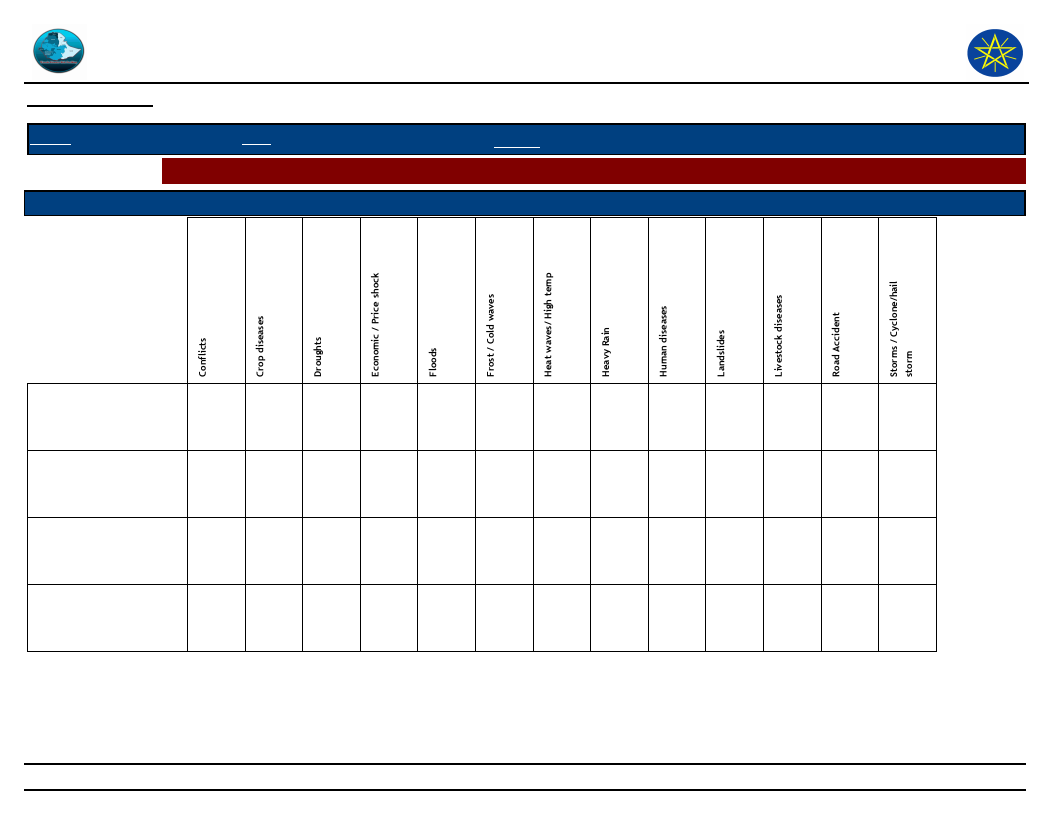
Wereda Disaster
Risk Profile
Data_Collected_Date
Disaster Risk Management
and Food Security Sector (DRMFSS)
Thursday, September 4, 2014
Region S.N.N.P
Selected Indictor:
Type of Loss
Zone HADIYA
Wereda MIRAB BADAWOCHO
Losses from Disasters - Main Losses by Type of Disasters (household response in %)
Type of Disasters which mainly caused Listed Losses
Lost access to grazing
land
Lost access to water
source
NA
Physical damages on
houses and property
1.50
0.40
3.30
1.90
2.90
4.40
66.70
2.40
23.00
24.40
9.10
4.80
2.20
5.10
28.60
9.50
1.70
3.00
1.10
23.80
3.40
33.30
5.10
100.00
8.40
33
Page 3 of 3
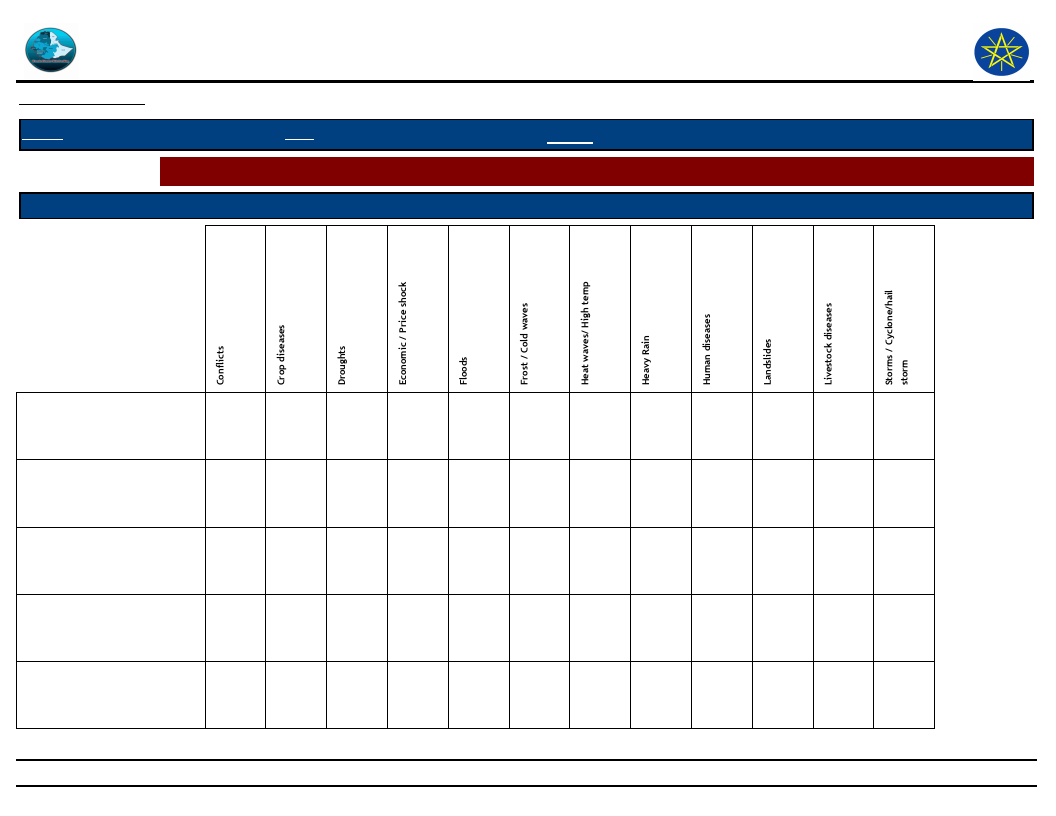
Wereda Disaster
Risk Profile
Data_Collected_Date
Disaster Risk Management
and Food Security Sector (DRMFSS)
Thursday, September 4, 2014
Region S.N.N.P
Zone HADIYA
Wereda MIRAB BADAWOCHO
Selected Indictor: Losses from Disasters - Secondary Losses by Type of Disasters (household response in %)
Type of Loss
Type of Disasters which caused Listed Secondary Losses
Crop damage
Death of household
members
Had to flee/change
residence area
Illness/health problems
Livestock damage
3.60
6.10
9.30
11.10
0.60
2.40
2.30
0.20
9.50
11.70
6.50
20.50
2.30
14.30
5.60
2.90
28.60
5.60
4.30
10.60
27.80
11.60
33.30
6.70
2.50
2.20
5.60
34
Page 1 of 3
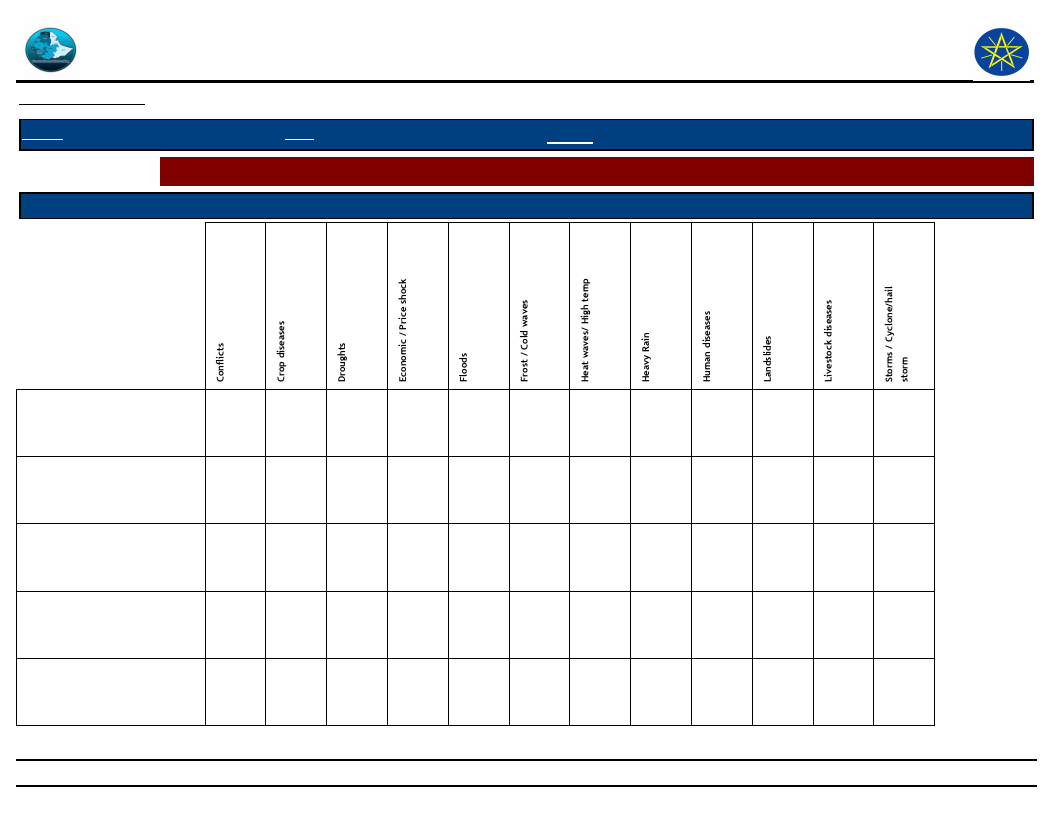
Wereda Disaster
Risk Profile
Data_Collected_Date
Disaster Risk Management
and Food Security Sector (DRMFSS)
Thursday, September 4, 2014
Region S.N.N.P
Zone HADIYA
Wereda MIRAB BADAWOCHO
Selected Indictor: Losses from Disasters - Secondary Losses by Type of Disasters (household response in %)
Type of Loss
Type of Disasters which caused Listed Secondary Losses
Livestock were stolen
Loss of access to social
services, including school
Loss of income
Loss of savings
Lost access to grazing land
0.20
8.90
100.00
9.50
3.40
9.30
50.00
1.40
8.90
4.30
36.70
28.10
14.00
22.20
27.80
42.00
28.90
49.70
16.60
13.00
30.20
11.10
42.90
27.80
33.30
33.30
15.60
14.90
9.50
4.60
11.60
2.90
33.30
3.70
35
Page 2 of 3
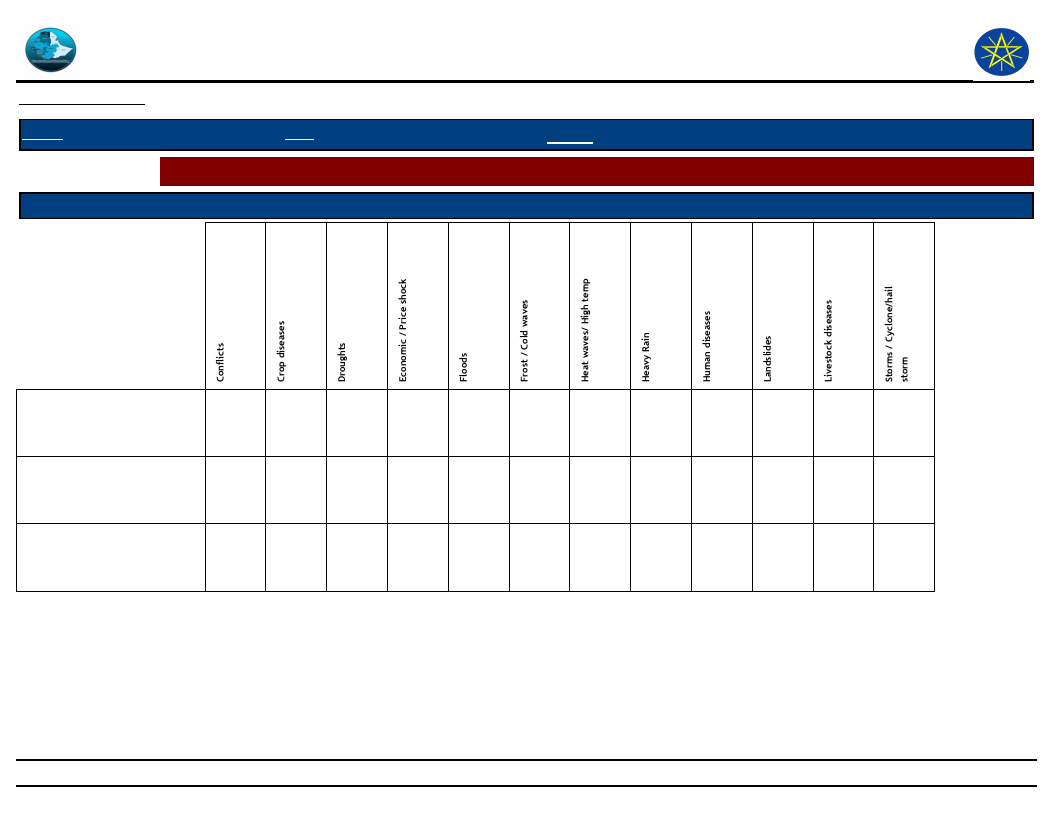
Wereda Disaster
Risk Profile
Data_Collected_Date
Disaster Risk Management
and Food Security Sector (DRMFSS)
Thursday, September 4, 2014
Region S.N.N.P
Zone HADIYA
Wereda MIRAB BADAWOCHO
Selected Indictor: Losses from Disasters - Secondary Losses by Type of Disasters (household response in %)
Type of Loss
Type of Disasters which caused Listed Secondary Losses
Lost access to water source
Other losses/damages
Physical damages on houses
and property
6.50
6.60
9.30
50.00
14.30
5.60
1.40
44.40
0.60
2.70
11.60
11.10
20.00
1.90
8.90
6.80
36
Page 3 of 3
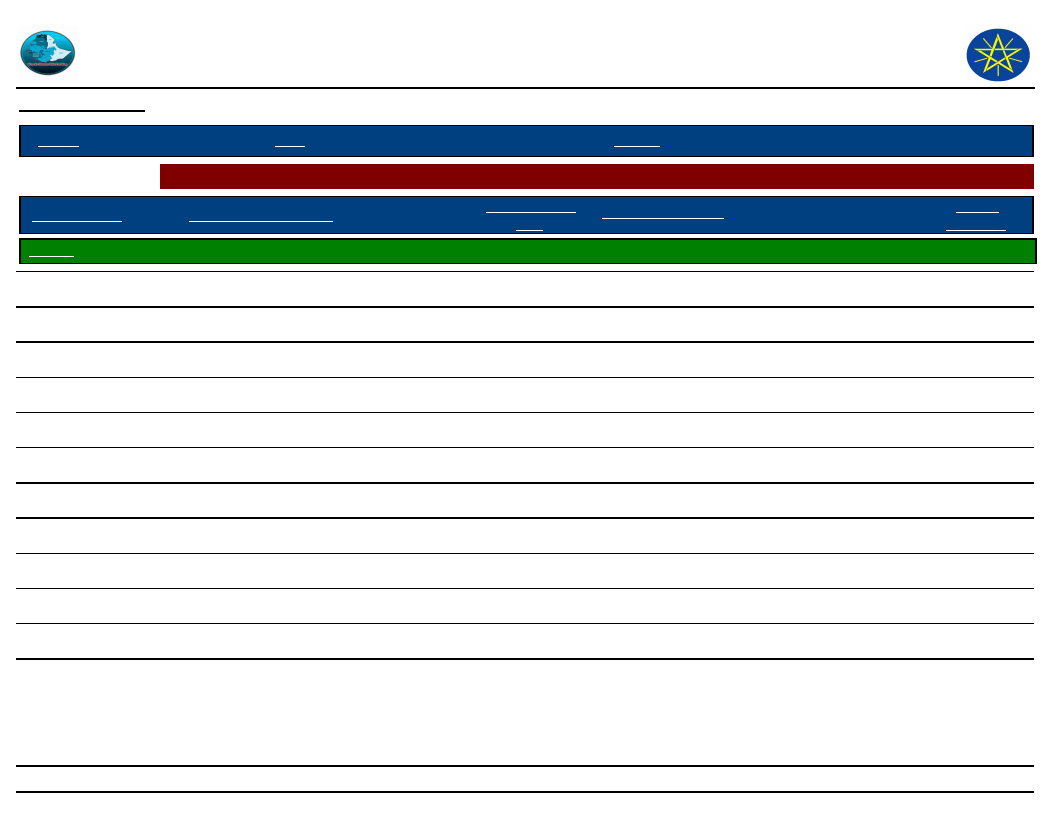
Wereda Disaster
Risk Profile
Data_Collected_Date
Disaster Risk Management and
Food Security Sector (DRMFSS)
Thursday, September 4, 2014
Region S.N.N.P
Zone HADIYA
Wereda MIRAB BADAWOCHO
Selected Indictor: Seasonal Calendar for Hazards, Activities and Income Level By Kebele
Month of Hazard
Major_Problems /Disasters
Kebele
1GNA KOTO
Hazard Severity
Rank
Agricultural_Activities
Income
Level Rank
E - Jan (Tir)
Erratic rain fall
2
Crop sowing
5th
F - Feb (Yekatit)
Drought, fire
3
Crop sowing
8th
G - Mar (Megabit)
Drought, fire
3
Weeding
9th
H - Apr (Meazea)
Drought
3
Weeding
10th
I - May (Ginbot)
Drought
2
Weeding
11th
J - Jun (Sene)
Erratic rain fall
2
Harvesting
3rd
K - Jul (Hamle)
Erratic rain fall
2
Crop sowing
4th
L - Aug (Nehase)
Fire
2
Crop sowing
7th
A - Sep (Meskerem)
Frost
2
Weeding
6th
B - Oct (Tikimt)
Malaria
1
Weeding
8th
C - Nov (Hidar)
Erratic rain fall
1
Harvesting
1st
D - Dec (Tahsas)
Erratic rain fall
2
Harvesting
2nd
NOTE: Hazard Severity Rank helps prioritize the more severe hazards that have occurred in the months of disaster occurrence, 3 being the worst and 1
the least severe hazards.
37
Page 1 of 15
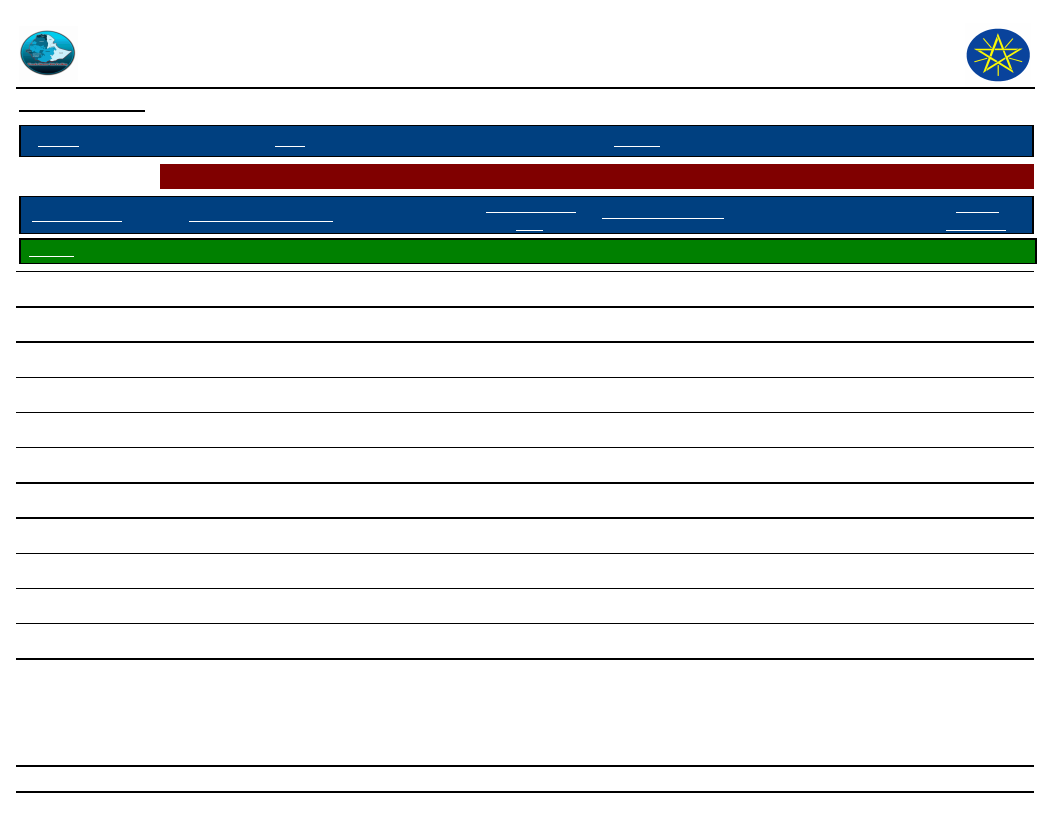
Wereda Disaster
Risk Profile
Data_Collected_Date
Disaster Risk Management and
Food Security Sector (DRMFSS)
Thursday, September 4, 2014
Region S.N.N.P
Zone HADIYA
Wereda MIRAB BADAWOCHO
Selected Indictor: Seasonal Calendar for Hazards, Activities and Income Level By Kebele
Month of Hazard
Major_Problems /Disasters
Kebele
2GNA KOTO
Hazard Severity
Rank
Agricultural_Activities
Income
Level Rank
E - Jan (Tir)
Drought
2
Crop sowing
6th
F - Feb (Yekatit)
Drought
2
Crop sowing
8th
G - Mar (Megabit)
Drought
3
Weeding/ sowing
12th
H - Apr (Meazea)
Drought
2
Weeding
11th
I - May (Ginbot)
Storm
1
Weeding
10th
J - Jun (Sene)
Storm
2
Harvesting
9th
K - Jul (Hamle)
Storm
3
Harvesting
5th
L - Aug (Nehase)
Storm
2
Crop sowing
4th
A - Sep (Meskerem)
Shortage of rain fall
1
Weeding
7th
B - Oct (Tikimt)
Shortage of rain fall
2
Weeding
3rd
C - Nov (Hidar)
Shortage of rain fall
3
Harvesting
1st
D - Dec (Tahsas)
Shortage of rain fall
2
Harvesting
2nd
NOTE: Hazard Severity Rank helps prioritize the more severe hazards that have occurred in the months of disaster occurrence, 3 being the worst and 1
the least severe hazards.
38
Page 2 of 15
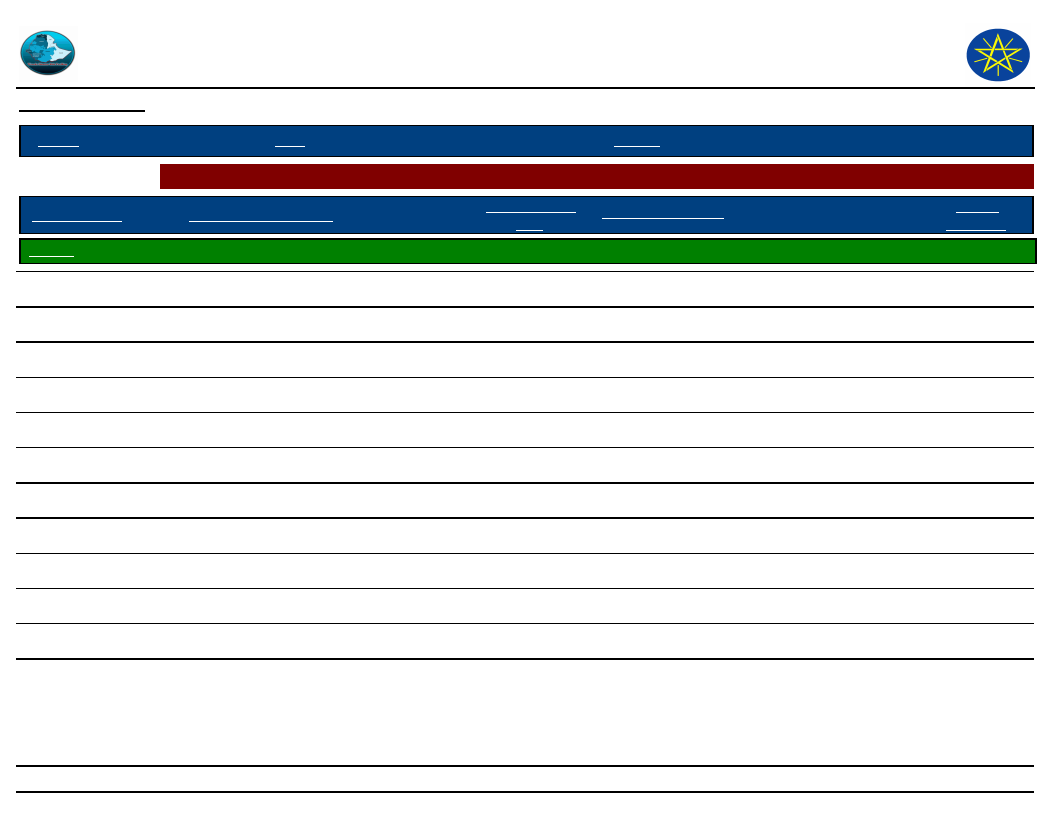
Wereda Disaster
Risk Profile
Data_Collected_Date
Disaster Risk Management and
Food Security Sector (DRMFSS)
Thursday, September 4, 2014
Region S.N.N.P
Zone HADIYA
Wereda MIRAB BADAWOCHO
Selected Indictor: Seasonal Calendar for Hazards, Activities and Income Level By Kebele
Month of Hazard
Kebele
DEDO
Major_Problems /Disasters
Hazard Severity
Rank
Agricultural_Activities
Income
Level Rank
E - Jan (Tir)
Drought
2
Crop sowing
6th
F - Feb (Yekatit)
Drought
3
Crop sowing
8th
G - Mar (Megabit)
Drought
3
Weeding
12th
H - Apr (Meazea)
Drought
2
Weeding
11th
I - May (Ginbot)
Flood
1
Weeding
10th
J - Jun (Sene)
Flood
2
Harvesting
9th
K - Jul (Hamle)
Storm
3
Harvesting
5th
L - Aug (Nehase)
Storm
2
Crop sowing
4th
A - Sep (Meskerem)
Erratic rain fall
1
Weeding
7th
B - Oct (Tikimt)
Erratic rain fall
2
Weeding
3rd
C - Nov (Hidar)
Erratic rain fall
3
Harvesting
2nd
D - Dec (Tahsas)
Erratic rain fall
2
Harvesting
1st
NOTE: Hazard Severity Rank helps prioritize the more severe hazards that have occurred in the months of disaster occurrence, 3 being the worst and 1
the least severe hazards.
39
Page 3 of 15
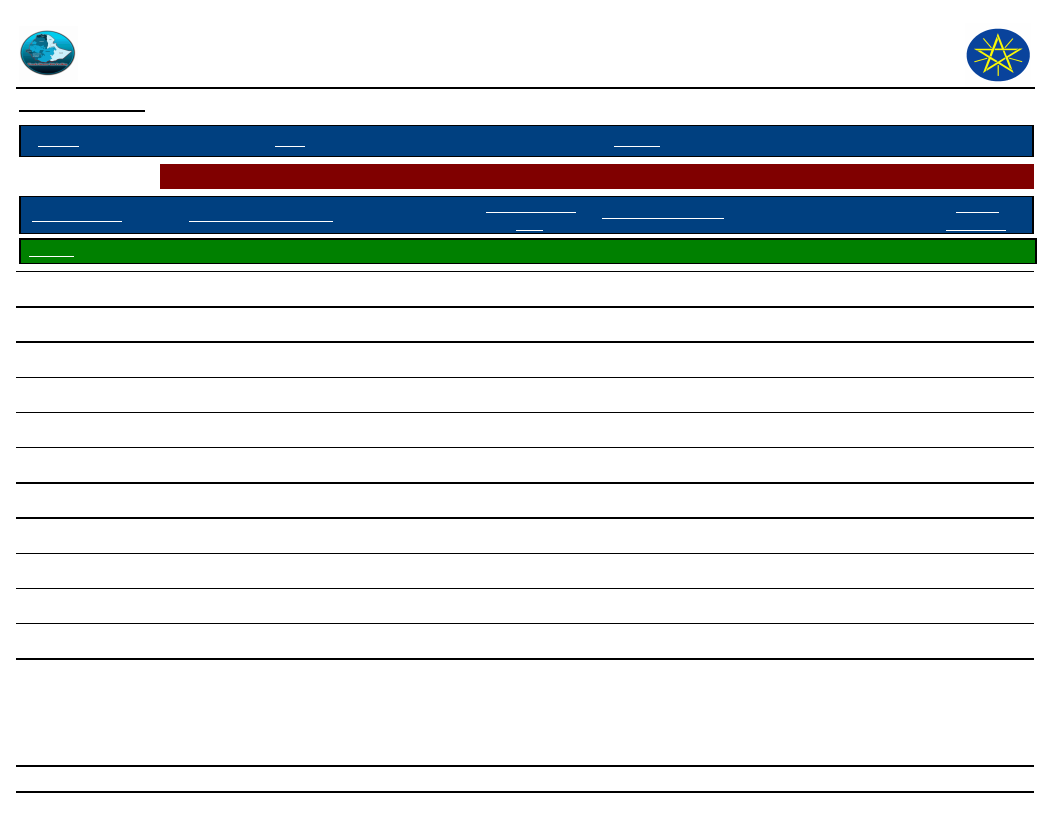
Wereda Disaster
Risk Profile
Data_Collected_Date
Disaster Risk Management and
Food Security Sector (DRMFSS)
Thursday, September 4, 2014
Region S.N.N.P
Zone HADIYA
Wereda MIRAB BADAWOCHO
Selected Indictor: Seasonal Calendar for Hazards, Activities and Income Level By Kebele
Month of Hazard
Kebele
ELIFETA
Major_Problems /Disasters
Hazard Severity
Rank
Agricultural_Activities
Income
Level Rank
E - Jan (Tir)
Drought
2
Crop sowing
6th
F - Feb (Yekatit)
Delaying of rain fall
3
Crop sowing
8th
G - Mar (Megabit)
3
Weeding
10th
H - Apr (Meazea)
Shortage of rain
2
Weeding
11th
I - May (Ginbot)
Shortage of rain
2
Weeding
12th
J - Jun (Sene)
High rain fall
2
Harvesting
3rd
K - Jul (Hamle)
Erosion
1
Harvesting, crop sowing
4th
L - Aug (Nehase)
Storm
1
Crop sowing
5th
A - Sep (Meskerem)
Shortage of rain
1
Weeding
7th
B - Oct (Tikimt)
Shortage of rain
2
Weeding
9th
C - Nov (Hidar)
Shortage of rain
2
Harvesting
1st
D - Dec (Tahsas)
Shortage of rain
2
Harvesting
2nd
NOTE: Hazard Severity Rank helps prioritize the more severe hazards that have occurred in the months of disaster occurrence, 3 being the worst and 1
the least severe hazards.
40
Page 4 of 15
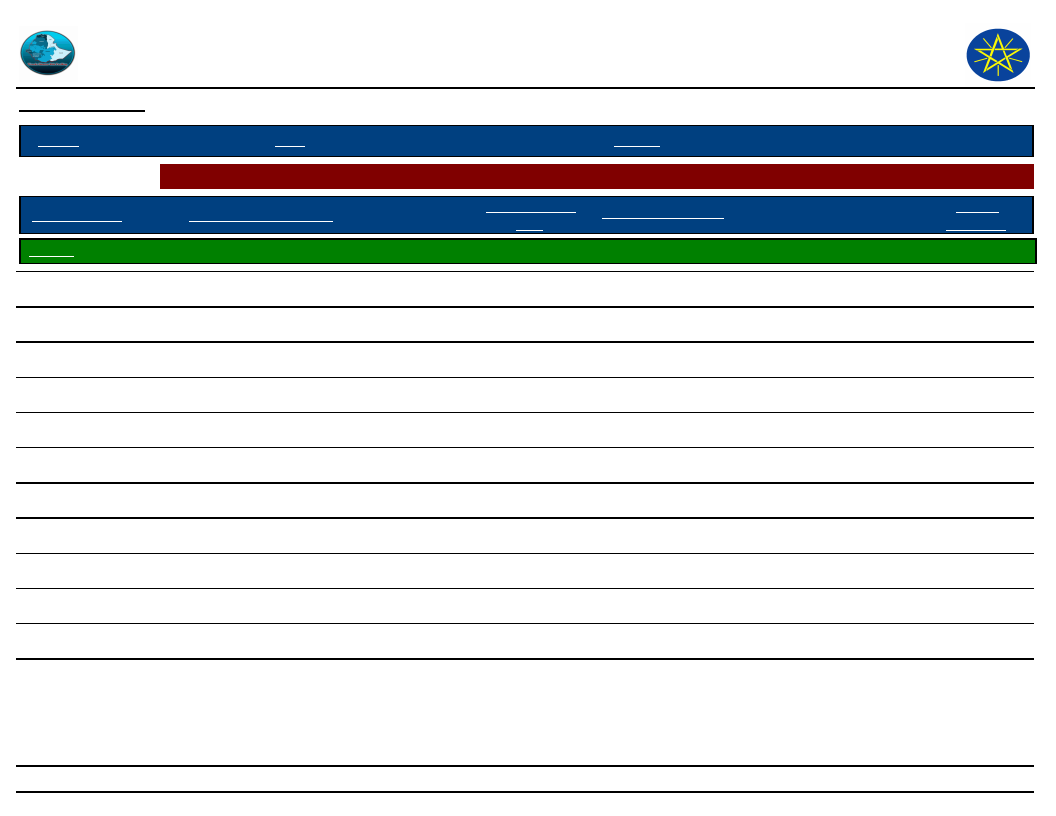
Wereda Disaster
Risk Profile
Data_Collected_Date
Disaster Risk Management and
Food Security Sector (DRMFSS)
Thursday, September 4, 2014
Region S.N.N.P
Zone HADIYA
Wereda MIRAB BADAWOCHO
Selected Indictor: Seasonal Calendar for Hazards, Activities and Income Level By Kebele
Month of Hazard
Kebele
GERIBO
Major_Problems /Disasters
Hazard Severity
Rank
Agricultural_Activities
Income
Level Rank
E - Jan (Tir)
Drought
2
Crop sowing
6th
F - Feb (Yekatit)
Drought
3
Crop sowing
8th
G - Mar (Megabit)
Drought
3
Weeding, crop sowing
12th
H - Apr (Meazea)
Drought
2
Weeding
11th
I - May (Ginbot)
Drought
1
Weeding
10th
J - Jun (Sene)
Storm
2
Harvesting
9th
K - Jul (Hamle)
Storm
3
Harvesting, milking
5th
L - Aug (Nehase)
Storm
2
Crop sowing
4th
A - Sep (Meskerem)
Storm
1
Weeding
7th
B - Oct (Tikimt)
Erratic rain fall
2
Weeding
3rd
C - Nov (Hidar)
Erratic rain fall
3
Harvesting
1st
D - Dec (Tahsas)
Erratic rain fall
2
Harvesting
2nd
NOTE: Hazard Severity Rank helps prioritize the more severe hazards that have occurred in the months of disaster occurrence, 3 being the worst and 1
the least severe hazards.
41
Page 5 of 15
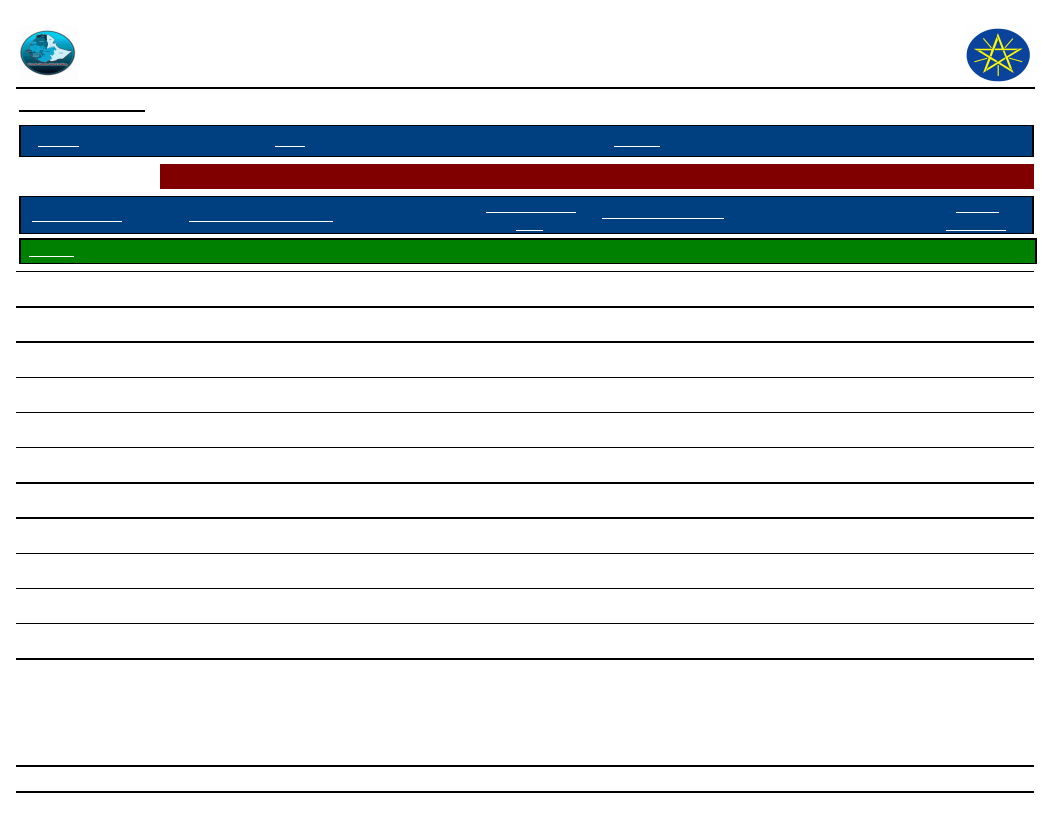
Wereda Disaster
Risk Profile
Data_Collected_Date
Disaster Risk Management and
Food Security Sector (DRMFSS)
Thursday, September 4, 2014
Region S.N.N.P
Zone HADIYA
Wereda MIRAB BADAWOCHO
Selected Indictor: Seasonal Calendar for Hazards, Activities and Income Level By Kebele
Month of Hazard
Major_Problems /Disasters
Kebele
HAWORA
Hazard Severity
Rank
Agricultural_Activities
Income
Level Rank
E - Jan (Tir)
Drought
1
Crop sowing
6th
F - Feb (Yekatit)
Drought
2
Crop sowing
8th
G - Mar (Megabit)
Drought
3
Weeding
12th
H - Apr (Meazea)
High rain fall
3
Weeding
11th
I - May (Ginbot)
High rain fall
3
Weeding
10th
J - Jun (Sene)
Flood
1
Harvesting
9th
K - Jul (Hamle)
Storm, flood
3
Harvesting/ milking
5th
L - Aug (Nehase)
Flood
1
Crop sowing
4th
A - Sep (Meskerem)
High rain fall
1
Weeding
7th
B - Oct (Tikimt)
High rain fall
1
Weeding
3rd
C - Nov (Hidar)
High rain fall
2
Harvesting
1st
D - Dec (Tahsas)
Harvesting
2nd
NOTE: Hazard Severity Rank helps prioritize the more severe hazards that have occurred in the months of disaster occurrence, 3 being the worst and 1
the least severe hazards.
42
Page 6 of 15
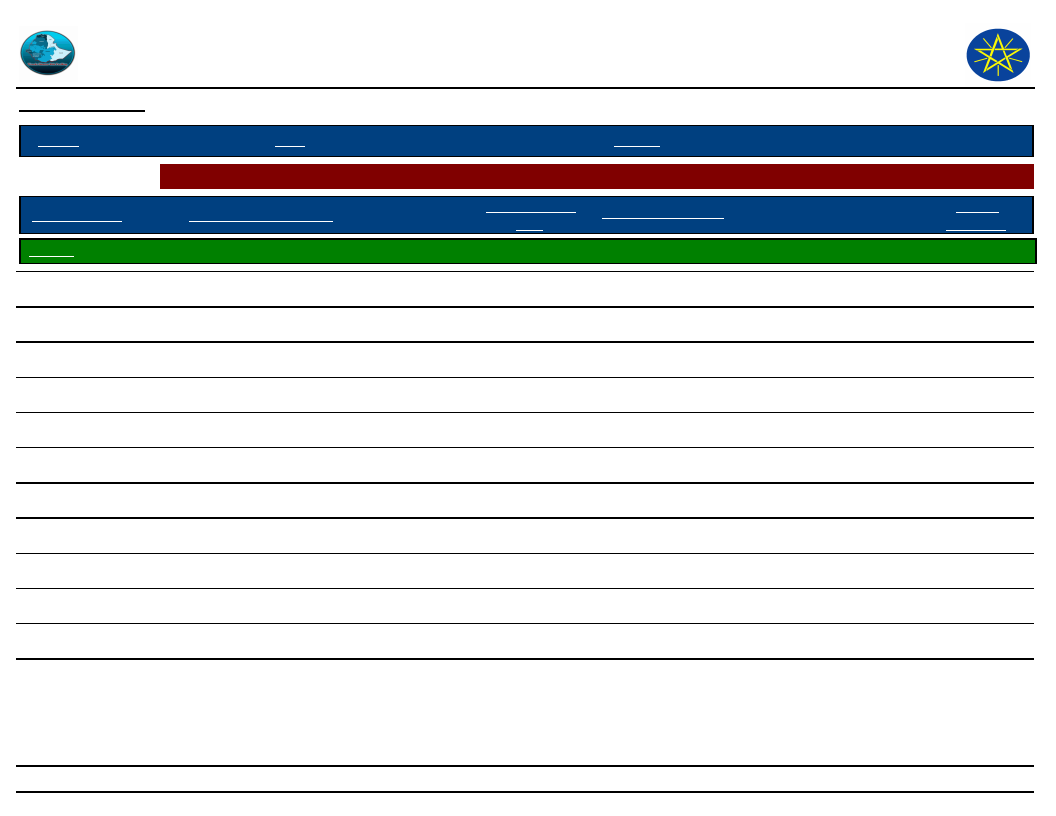
Wereda Disaster
Risk Profile
Data_Collected_Date
Disaster Risk Management and
Food Security Sector (DRMFSS)
Thursday, September 4, 2014
Region S.N.N.P
Zone HADIYA
Wereda MIRAB BADAWOCHO
Selected Indictor: Seasonal Calendar for Hazards, Activities and Income Level By Kebele
Month of Hazard
Major_Problems /Disasters
Kebele
JARISO ONIJOJO
Hazard Severity
Rank
Agricultural_Activities
Income
Level Rank
E - Jan (Tir)
Drought
2
Crop sowing
6th
F - Feb (Yekatit)
Drought
2
Crop sowing
8th
G - Mar (Megabit)
Drought
3
Weeding
12th
H - Apr (Meazea)
Drought
2
Weeding
11th
I - May (Ginbot)
Drought
1
Harvesting
10th
J - Jun (Sene)
Flood
2
Harvesting
9th
K - Jul (Hamle)
Storm
3
Weeding
5th
L - Aug (Nehase)
Storm
2
Weeding
4th
A - Sep (Meskerem)
Shortage of rain fall
1
Weeding
7th
B - Oct (Tikimt)
Shortage of rain fall
2
Harvesting
3rd
C - Nov (Hidar)
Shortage of rain fall
3
Harvesting
2nd
D - Dec (Tahsas)
Shortage of rain fall
2
Harvesting
1st
NOTE: Hazard Severity Rank helps prioritize the more severe hazards that have occurred in the months of disaster occurrence, 3 being the worst and 1
the least severe hazards.
43
Page 7 of 15
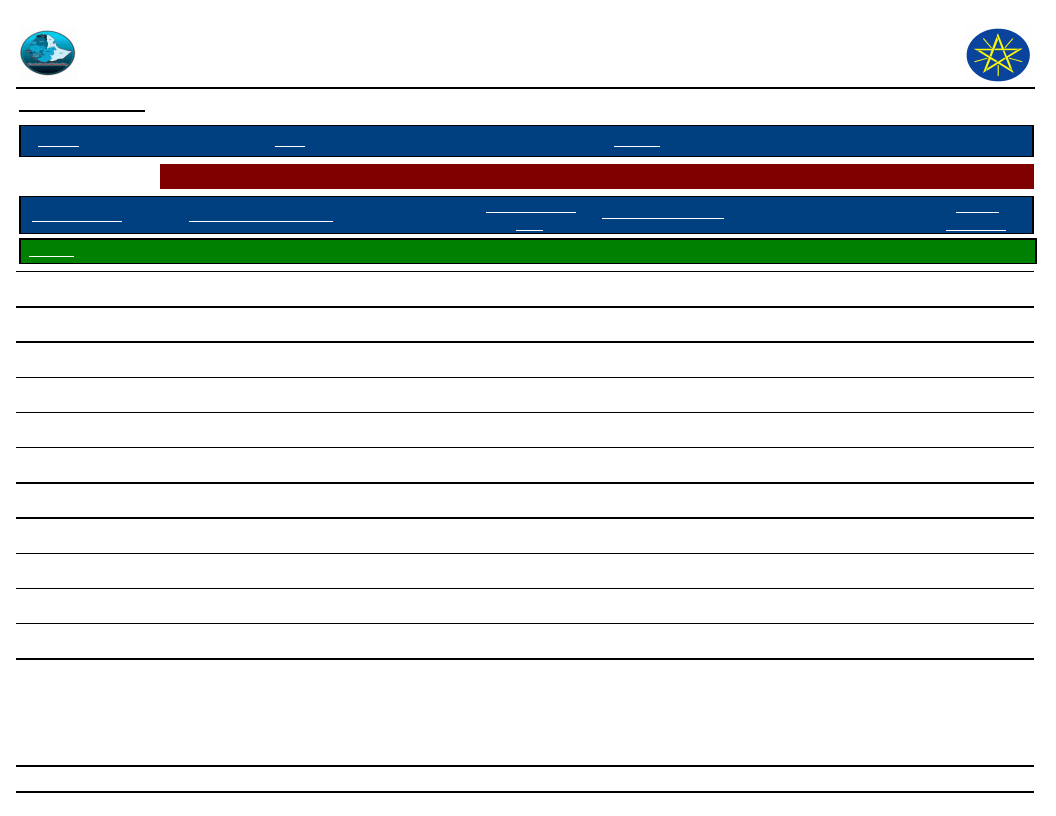
Wereda Disaster
Risk Profile
Data_Collected_Date
Disaster Risk Management and
Food Security Sector (DRMFSS)
Thursday, September 4, 2014
Region S.N.N.P
Zone HADIYA
Wereda MIRAB BADAWOCHO
Selected Indictor: Seasonal Calendar for Hazards, Activities and Income Level By Kebele
Month of Hazard
Major_Problems /Disasters
Kebele
KACHA BIRA
Hazard Severity
Rank
Agricultural_Activities
Income
Level Rank
E - Jan (Tir)
Drought
2
Land preparation
6th
F - Feb (Yekatit)
Drought
3
Land preparation
7th
G - Mar (Megabit)
Shortage of rain
3
Crop sowing
8th
H - Apr (Meazea)
Shortage of rain
3
Crop sowing
9th
I - May (Ginbot)
Shortage of rain
2
Crop sowing
12th
J - Jun (Sene)
Snow
1
Weeding
11th
K - Jul (Hamle)
Snow
2
Weeding, land preparation
10th
L - Aug (Nehase)
Snow
2
Harvesting, crop sowing
4th
A - Sep (Meskerem)
Shortage of rain
2
Weeding
5th
B - Oct (Tikimt)
Shortage of rain
2
Crop sowing
3rd
C - Nov (Hidar)
Shortage of rain
1
Harvesting
1st
D - Dec (Tahsas)
Shortage of rain
1
Harvesting
2nd
NOTE: Hazard Severity Rank helps prioritize the more severe hazards that have occurred in the months of disaster occurrence, 3 being the worst and 1
the least severe hazards.
44
Page 8 of 15
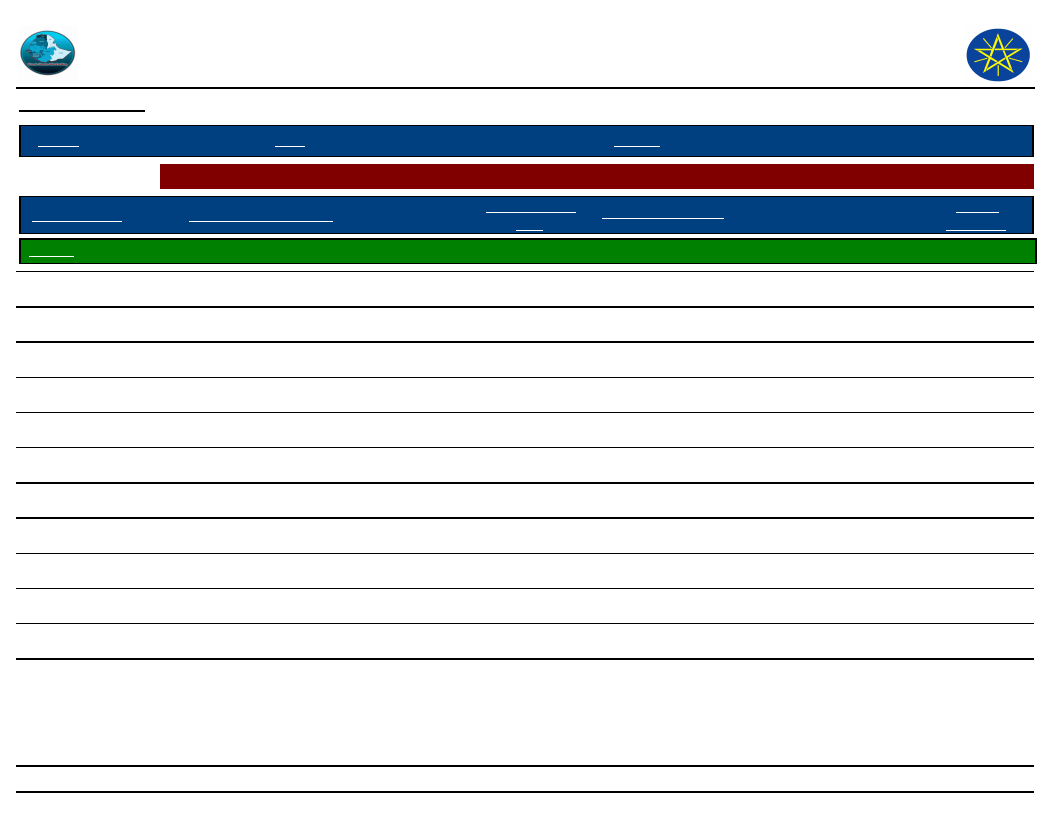
Wereda Disaster
Risk Profile
Data_Collected_Date
Disaster Risk Management and
Food Security Sector (DRMFSS)
Thursday, September 4, 2014
Region S.N.N.P
Zone HADIYA
Wereda MIRAB BADAWOCHO
Selected Indictor: Seasonal Calendar for Hazards, Activities and Income Level By Kebele
Month of Hazard
Kebele
SEPERA
Major_Problems /Disasters
Hazard Severity
Rank
Agricultural_Activities
Income
Level Rank
E - Jan (Tir)
Drought
1
Land preparation
6th
F - Feb (Yekatit)
Drought
2
Land preparation
7th
G - Mar (Megabit)
Drought
3
Crop sowing
8th
H - Apr (Meazea)
Erratic rain fall
3
Crop sowing
10th
I - May (Ginbot)
Erratic rain fall
3
Weeding
11th
J - Jun (Sene)
Storm, Flood
1
Weeding
12th
K - Jul (Hamle)
Flood
3
Weeding
9th
L - Aug (Nehase)
Flood
1
Harvesting, crop sowing
3rd
A - Sep (Meskerem)
Erratic rain fall
1
Weeding
4th
B - Oct (Tikimt)
Erratic rain fall
1
Weeding
5th
C - Nov (Hidar)
Erratic rain fall
2
Harvesting
1st
D - Dec (Tahsas)
Erratic rain fall
2
Harvesting
2nd
NOTE: Hazard Severity Rank helps prioritize the more severe hazards that have occurred in the months of disaster occurrence, 3 being the worst and 1
the least severe hazards.
45
Page 9 of 15
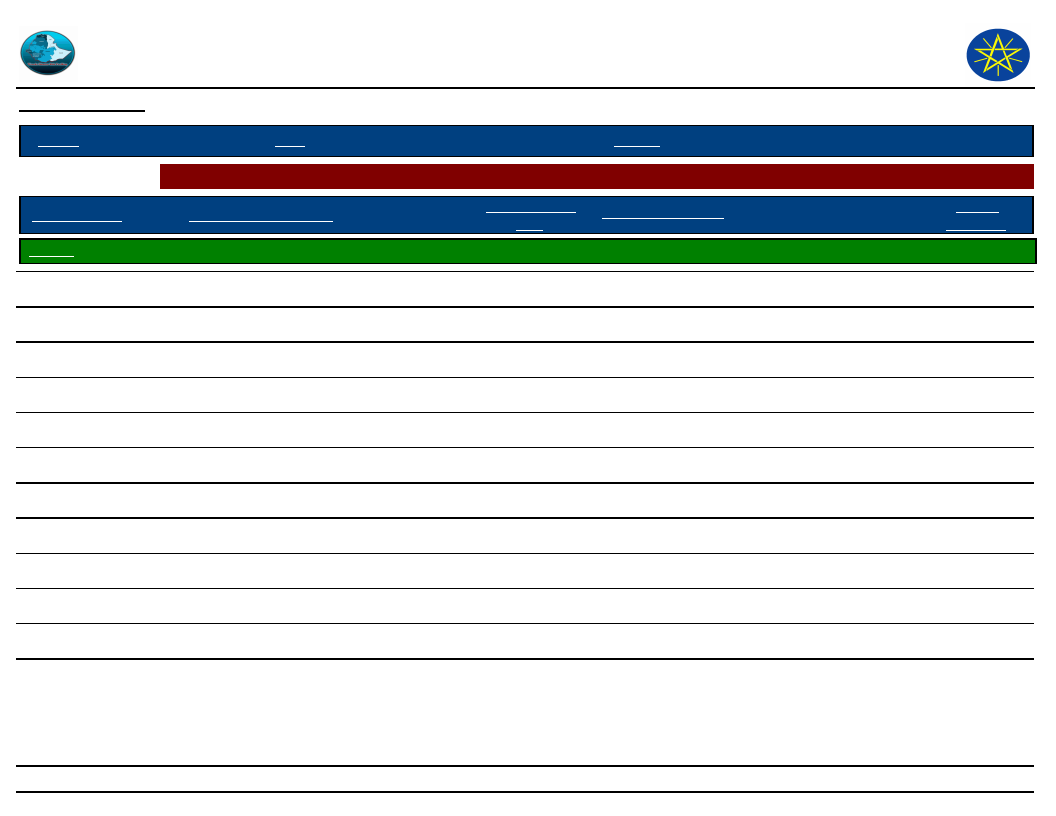
Wereda Disaster
Risk Profile
Data_Collected_Date
Disaster Risk Management and
Food Security Sector (DRMFSS)
Thursday, September 4, 2014
Region S.N.N.P
Zone HADIYA
Wereda MIRAB BADAWOCHO
Selected Indictor: Seasonal Calendar for Hazards, Activities and Income Level By Kebele
Month of Hazard
Kebele
SIBEYA
Major_Problems /Disasters
Hazard Severity
Rank
Agricultural_Activities
Income
Level Rank
E - Jan (Tir)
Drought
2
Crop sowing
6th
F - Feb (Yekatit)
Drought
3
Crop sowing
8th
G - Mar (Megabit)
Drought
3
Weeding
12th
H - Apr (Meazea)
Drought
2
Weeding
11th
I - May (Ginbot)
Storm
1
Harvesting
10th
J - Jun (Sene)
Storm
2
Harvesting
9th
K - Jul (Hamle)
Flood
2
Crop sowing
5th
L - Aug (Nehase)
Flood
3
Weeding
4th
A - Sep (Meskerem)
Erratic rain fall
1
Weeding
7th
B - Oct (Tikimt)
Erratic rain fall
2
Harvesting
3rd
C - Nov (Hidar)
Erratic rain fall
3
Harvesting
2nd
D - Dec (Tahsas)
Erratic rain fall
2
Harvesting
1st
NOTE: Hazard Severity Rank helps prioritize the more severe hazards that have occurred in the months of disaster occurrence, 3 being the worst and 1
the least severe hazards.
46
Page 10 of 15
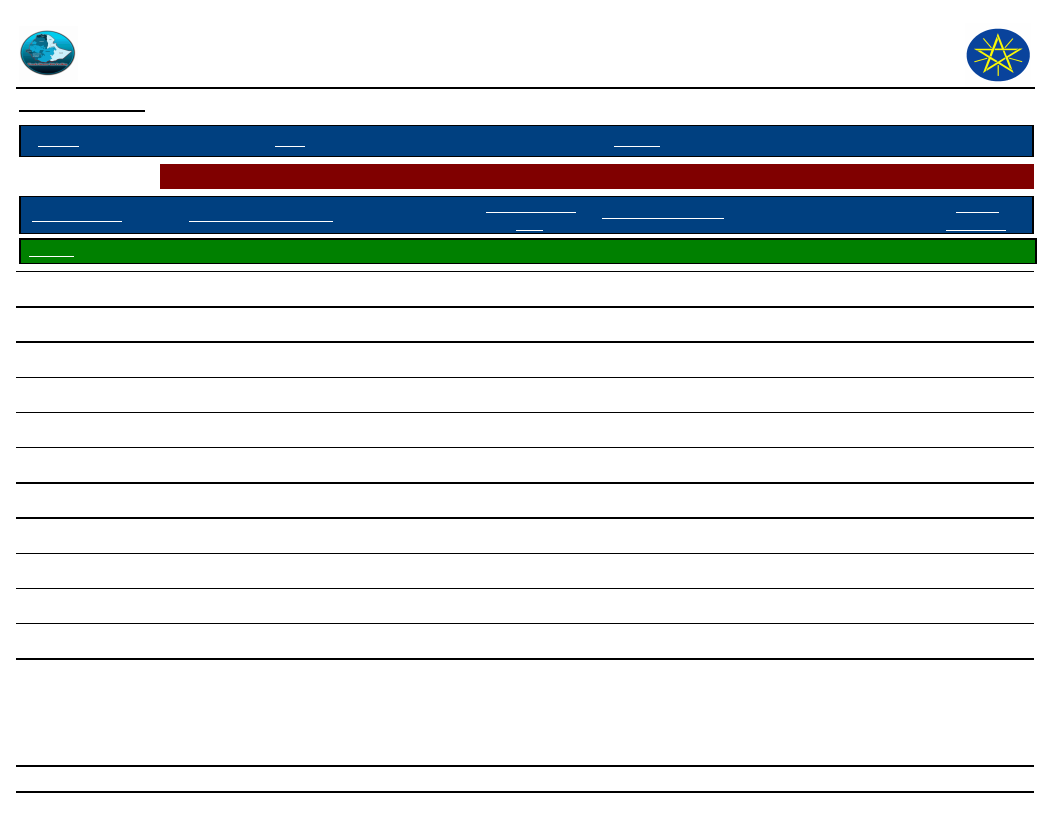
Wereda Disaster
Risk Profile
Data_Collected_Date
Disaster Risk Management and
Food Security Sector (DRMFSS)
Thursday, September 4, 2014
Region S.N.N.P
Zone HADIYA
Wereda MIRAB BADAWOCHO
Selected Indictor: Seasonal Calendar for Hazards, Activities and Income Level By Kebele
Month of Hazard
Kebele
WADA
Major_Problems /Disasters
Hazard Severity
Rank
Agricultural_Activities
Income
Level Rank
E - Jan (Tir)
Drought
2
Crop sowing
6th
F - Feb (Yekatit)
Drought
3
Crop sowing
8th
G - Mar (Megabit)
Drought
3
Weeding, crop sowing
12th
H - Apr (Meazea)
Drought
2
Weeding
11th
I - May (Ginbot)
Drought
1
Weeding
10th
J - Jun (Sene)
Storm/ snow
2
Harvesting, milking
9th
K - Jul (Hamle)
Storm/ snow
3
Harvesting, crop sowing
5th
L - Aug (Nehase)
Storm/ snow
2
Crop sowing
4th
A - Sep (Meskerem)
Storm/ snow
1
Weeding
7th
B - Oct (Tikimt)
Erratic rain fall
2
Weeding
3rd
C - Nov (Hidar)
Erratic rain fall
3
Harvesting
1st
D - Dec (Tahsas)
Erratic rain fall
2
Harvesting
2nd
NOTE: Hazard Severity Rank helps prioritize the more severe hazards that have occurred in the months of disaster occurrence, 3 being the worst and 1
the least severe hazards.
47
Page 11 of 15
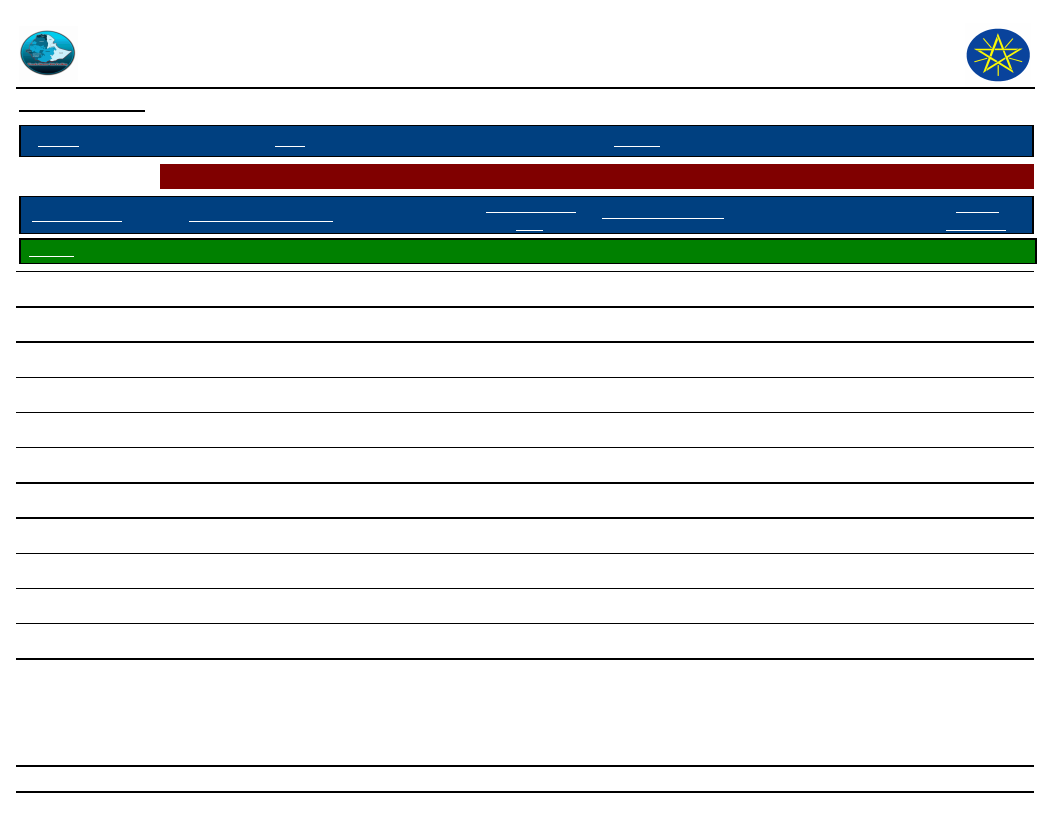
Wereda Disaster
Risk Profile
Data_Collected_Date
Disaster Risk Management and
Food Security Sector (DRMFSS)
Thursday, September 4, 2014
Region S.N.N.P
Zone HADIYA
Wereda MIRAB BADAWOCHO
Selected Indictor: Seasonal Calendar for Hazards, Activities and Income Level By Kebele
Month of Hazard
Major_Problems /Disasters
Kebele
WEBARANA OFODA
Hazard Severity
Rank
Agricultural_Activities
Income
Level Rank
E - Jan (Tir)
Drought
2
Crop sowing
6th
F - Feb (Yekatit)
Drought
2
Crop sowing
8th
G - Mar (Megabit)
Drought
3
Weeding
12th
H - Apr (Meazea)
Drought
2
Weeding
11th
I - May (Ginbot)
Storm
1
Weeding
10th
J - Jun (Sene)
Storm
2
Harvesting
9th
K - Jul (Hamle)
Storm
3
Harvesting
5th
L - Aug (Nehase)
Flood
2
Crop sowing
4th
A - Sep (Meskerem)
Shortage of rain fall
1
Weeding
7th
B - Oct (Tikimt)
Shortage of rain fall
2
Weeding
3rd
C - Nov (Hidar)
Shortage of rain fall
3
Harvesting
2nd
D - Dec (Tahsas)
Shortage of rain fall
2
Harvesting
1st
NOTE: Hazard Severity Rank helps prioritize the more severe hazards that have occurred in the months of disaster occurrence, 3 being the worst and 1
the least severe hazards.
48
Page 12 of 15
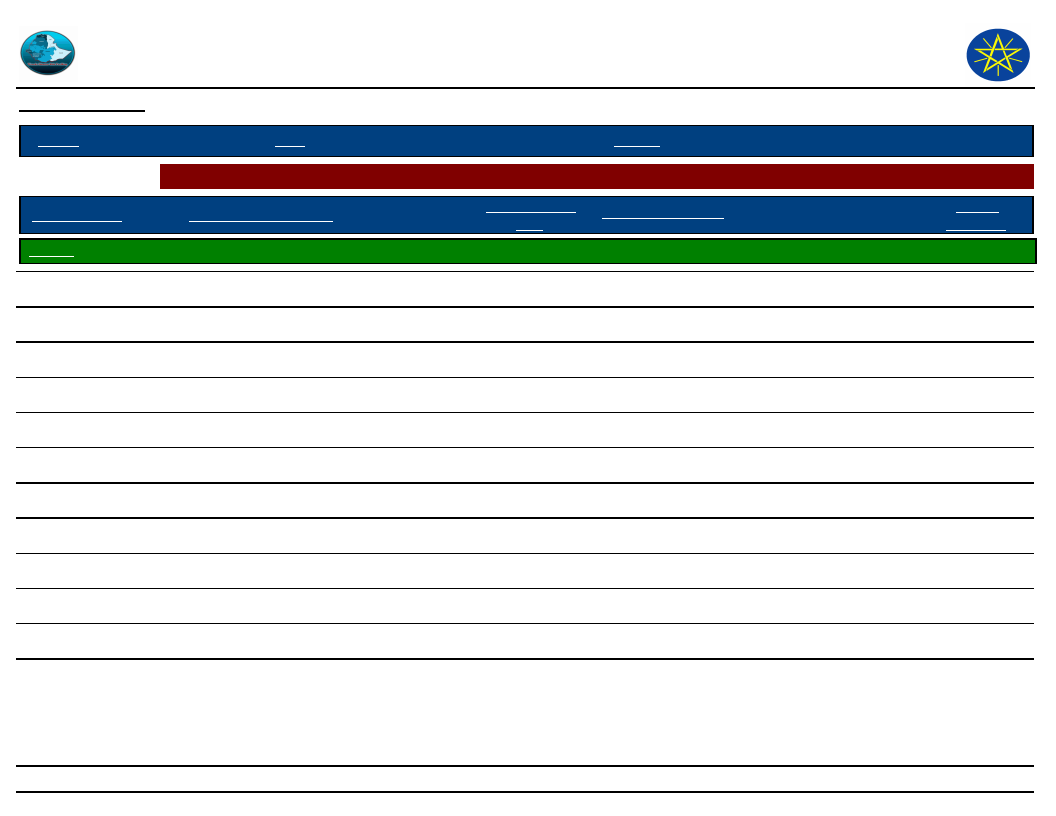
Wereda Disaster
Risk Profile
Data_Collected_Date
Disaster Risk Management and
Food Security Sector (DRMFSS)
Thursday, September 4, 2014
Region S.N.N.P
Zone HADIYA
Wereda MIRAB BADAWOCHO
Selected Indictor: Seasonal Calendar for Hazards, Activities and Income Level By Kebele
Month of Hazard
Major_Problems /Disasters
Kebele
WEREBOYA
Hazard Severity
Rank
Agricultural_Activities
Income
Level Rank
E - Jan (Tir)
Drought
2
Crop sowing
6th
F - Feb (Yekatit)
Drought
3
Crop sowing
8th
G - Mar (Megabit)
Drought
3
Weeding
12th
H - Apr (Meazea)
Drought
2
Weeding
11th
I - May (Ginbot)
Drought
1
Weeding
10th
J - Jun (Sene)
Storm
2
Harvesting
9th
K - Jul (Hamle)
Storm
3
Harvesting
5th
L - Aug (Nehase)
Flood
2
Crop sowing
4th
A - Sep (Meskerem)
Erratic rain fall
1
Weeding
7th
B - Oct (Tikimt)
Erratic rain fall
2
Weeding
3rd
C - Nov (Hidar)
Erratic rain fall
3
Harvesting
1st
D - Dec (Tahsas)
Erratic rain fall
2
Harvesting
2nd
NOTE: Hazard Severity Rank helps prioritize the more severe hazards that have occurred in the months of disaster occurrence, 3 being the worst and 1
the least severe hazards.
49
Page 13 of 15
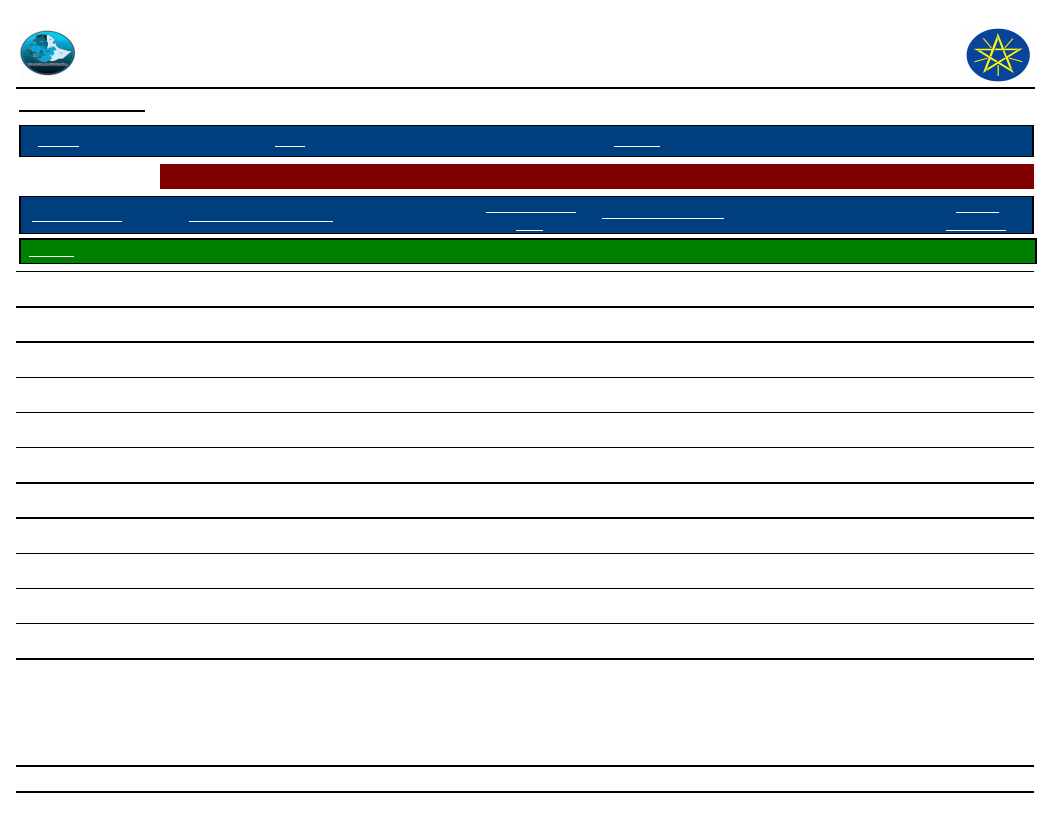
Wereda Disaster
Risk Profile
Data_Collected_Date
Disaster Risk Management and
Food Security Sector (DRMFSS)
Thursday, September 4, 2014
Region S.N.N.P
Zone HADIYA
Wereda MIRAB BADAWOCHO
Selected Indictor: Seasonal Calendar for Hazards, Activities and Income Level By Kebele
Month of Hazard
Major_Problems /Disasters
Kebele
YA BUKUNA
Hazard Severity
Rank
Agricultural_Activities
Income
Level Rank
E - Jan (Tir)
Delaying of rain fall
2
Crop sowing
6th
F - Feb (Yekatit)
Shortage of rain
3
Crop sowing
8th
G - Mar (Megabit)
Drought
3
Weeding
10th
H - Apr (Meazea)
Drought
2
Weeding
11th
I - May (Ginbot)
Shortage of rain
2
Weeding
12th
J - Jun (Sene)
Storm/ snow
1
Harvesting
3rd
K - Jul (Hamle)
Storm/ snow, high rain fall
1
Harvesting, crop sowing
4th
L - Aug (Nehase)
Storm/ snow
3
Crop sowing
5th
A - Sep (Meskerem)
Rust
3
Crop sowing, weeding
7th
B - Oct (Tikimt)
Malaria
1
Weeding
9th
C - Nov (Hidar)
Shortage of rain
1
Weeding, Harvesting
1st
D - Dec (Tahsas)
Shortage of rain
2
Harvesting
2nd
NOTE: Hazard Severity Rank helps prioritize the more severe hazards that have occurred in the months of disaster occurrence, 3 being the worst and 1
the least severe hazards.
50
Page 14 of 15
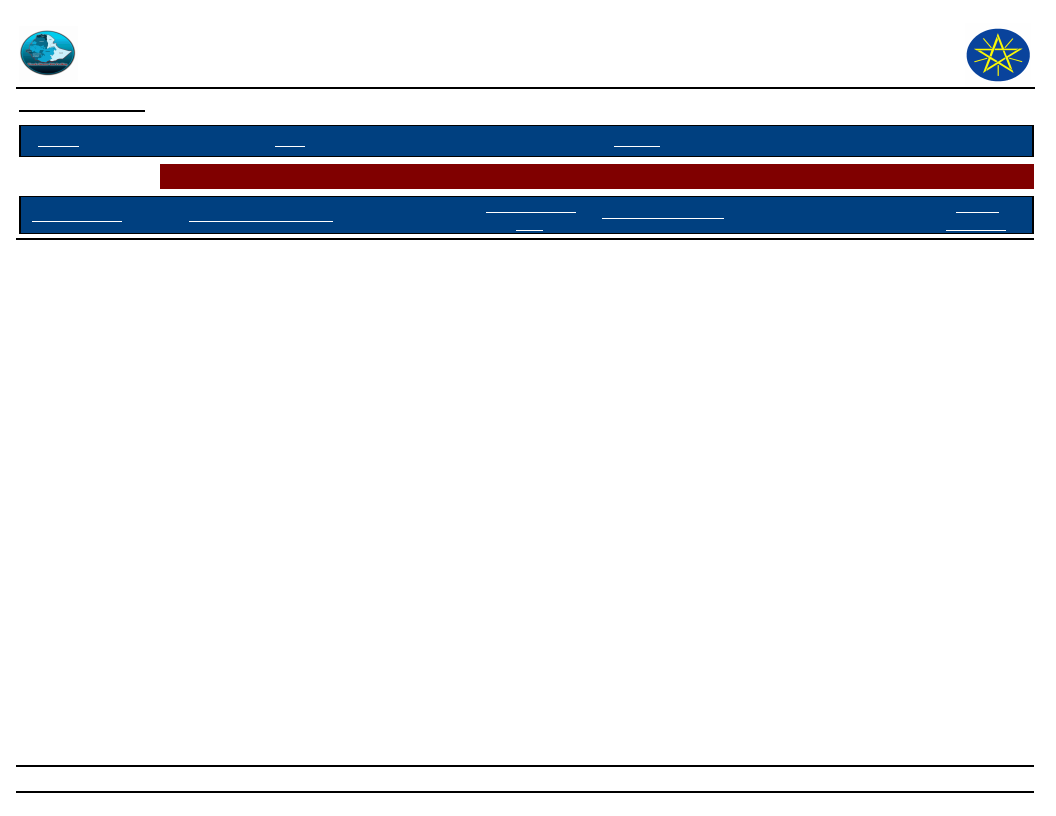
Wereda Disaster
Risk Profile
Data_Collected_Date
Disaster Risk Management and
Food Security Sector (DRMFSS)
Thursday, September 4, 2014
Region S.N.N.P
Zone HADIYA
Wereda MIRAB BADAWOCHO
Selected Indictor:
Month of Hazard
Seasonal Calendar for Hazards, Activities and Income Level By Kebele
Major_Problems /Disasters
Hazard Severity
Rank
Agricultural_Activities
Income
Level Rank
NOTE: Hazard Severity Rank helps prioritize the more severe hazards that have occurred in the months of disaster occurrence, 3 being the worst and 1
the least severe hazards.
51
Page 15 of 15
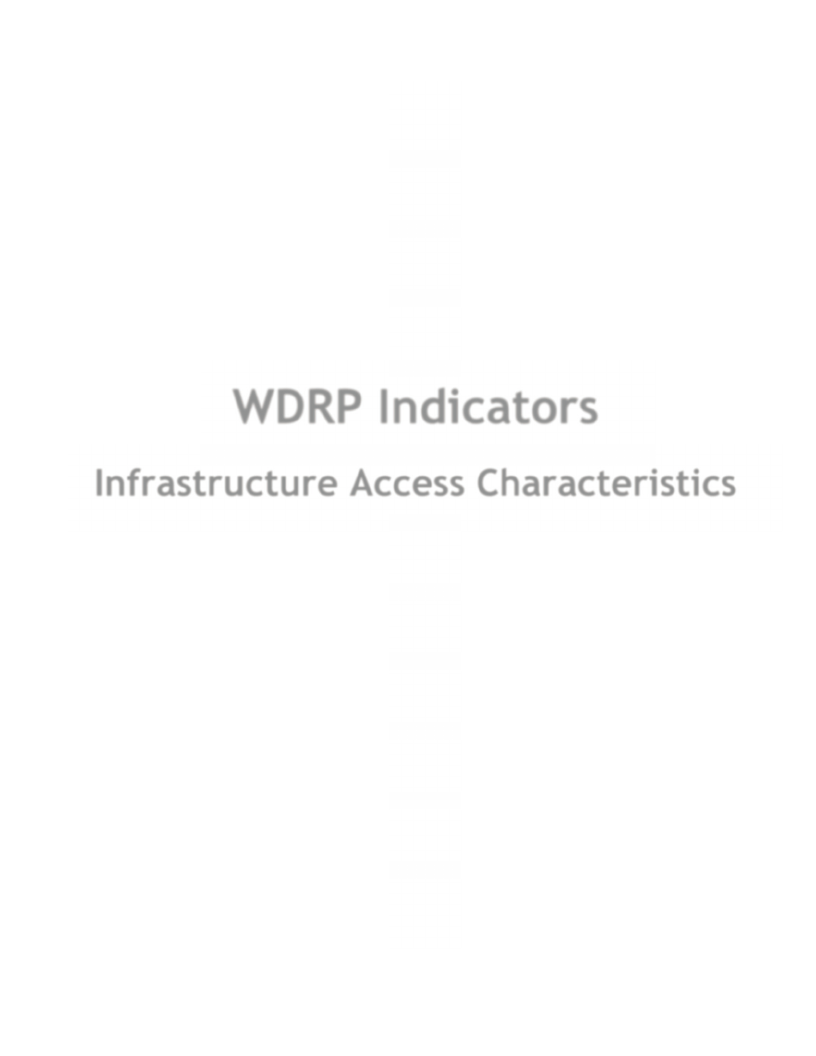
WDRP Indicators
Infrastructure Access Characteristics
52
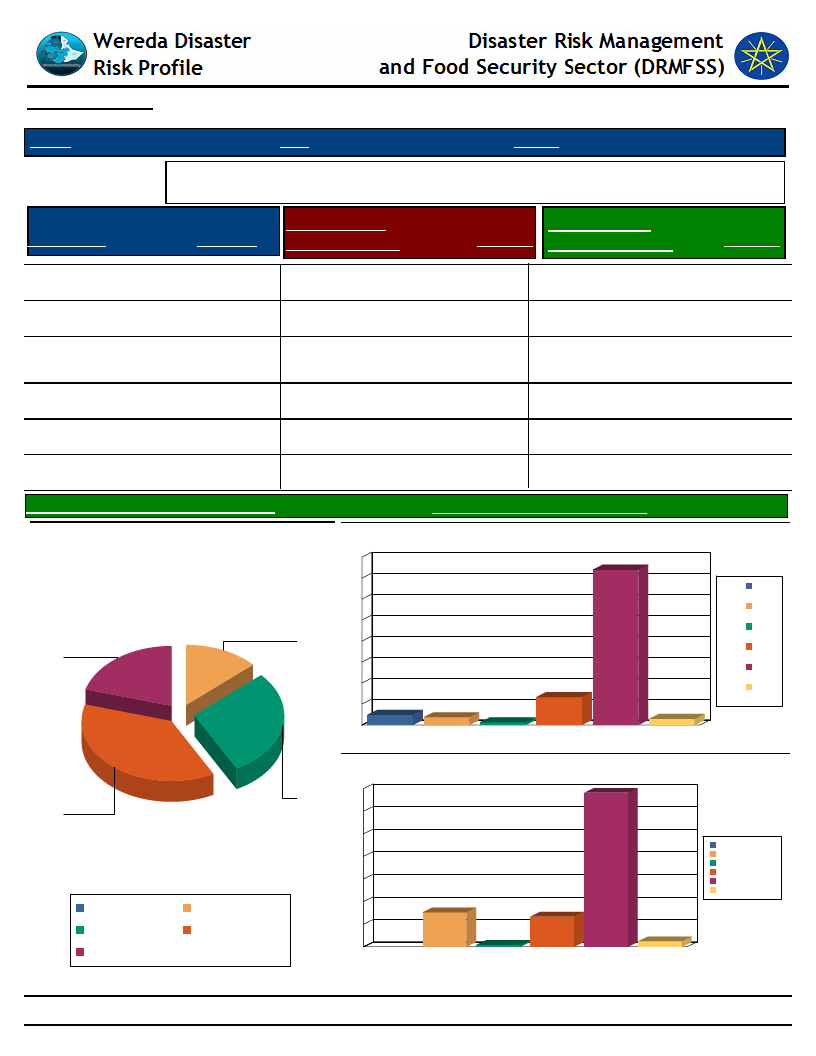
Data_Collected_Date
Monday, September 29, 2014
Region S.N.N.P
Selected Indicator
Type of Road
Yes, paved
Zone HADIYA
Wereda MISRAK BADAWOCHO
Physical Vulnerability: Access to Roads & Urban Centres - Households access to
road and urban centre
Response
Time to Nearest
Paved Road (Mins.)
Time To Nearest
Response Urban Center (Mins.)
Response
20.64 Less than 30 min
74.00 Less than 30 min
68.12
Yes, partly paved road
37.00 30 – 60 min
13.30 30 – 60 min
13.35
Yes, dirt road (difficult
for car)
No, no road
28.95 1 – 2 hrs
13.40 2 – 3 hrs
4.80 1 – 2 hrs
3.70 2 – 3 hrs
15.26
0.82
3 – 4 hrs
1.30 More than 4 hrs
2.45
More than 4 hrs
2.90
Avg Time To Nearest Urban Center(Mins.)
Type of Road
13
21
29
37
Yes, dirt road (difficult
for car)
Yes, paved
No, no road
Yes, partly paved road
97.17 Avg_Time_To_Nearest_Paved_Road
39.64
Time to reach the nearest paved road from the HH
80
74
70
60
1 – 2 hrs
2 – 3 hrs
50
40
30
20
10
5
0
1 – 2 hrs
4
2 – 3 hrs
1
3 – 4 hrs
13
30 – 60 min
3
Less than 30 More than 4 hrs
min
3 – 4 hrs
30 – 60 min
Less than 30 min
More than 4 hrs
Time to reach nearest urban center from the HH
70
68
60
50
40
1 – 2 hrs
2 – 3 hrs
30 – 60 min
30
Less than 30 min
More than 4 hrs
20
15
13
10
1
2
0
1 – 2 hrs
2 – 3 hrs
30 – 60 min Less than 30 More than 4 hrs
min
53
Page 1 of 1
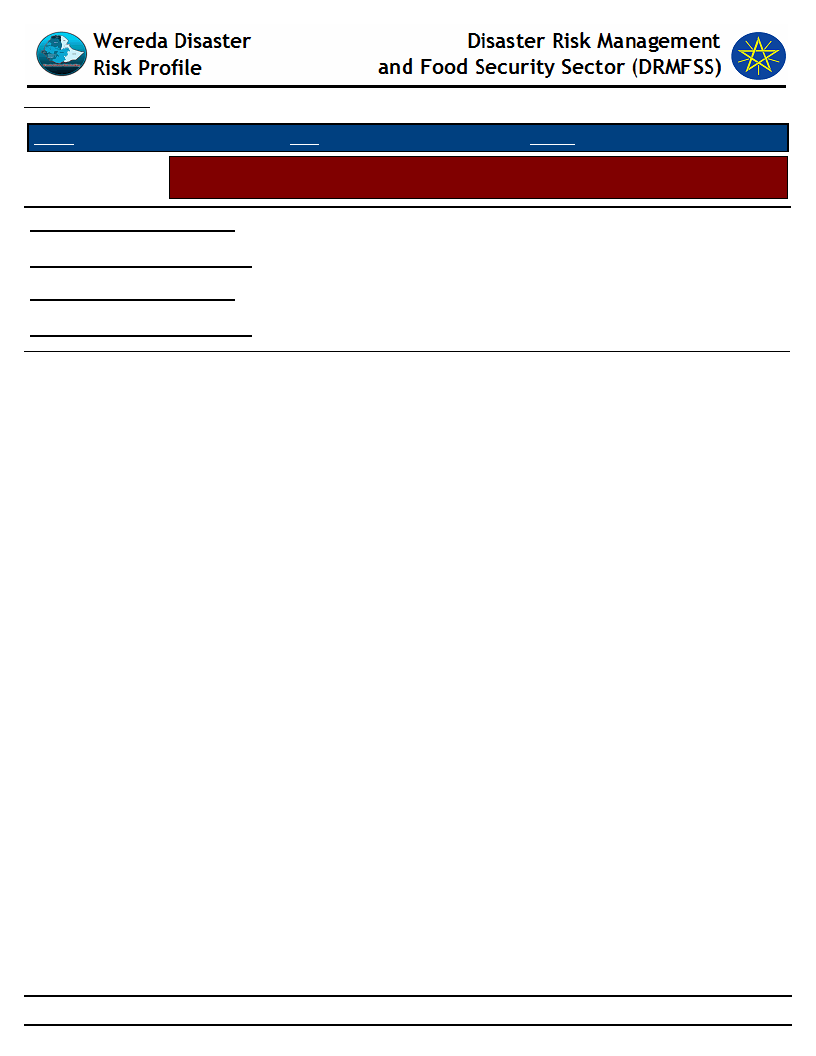
Data_Collected_Date
Thursday, September 4, 2014
Region S.N.N.P
Selected Indicator
Zone HADIYA
Wereda MIRAB BADAWOCHO
Physical Vulnerability: Access to Electricity - Households access and utilization of
electricity
Household_Located_In_Electricity
0.00
Household_Connected_To Electricity
6.40
Household_Located_In_Electricity
0.00
Household_Connected_To Electricity
0.00
54
Page 1 of 1
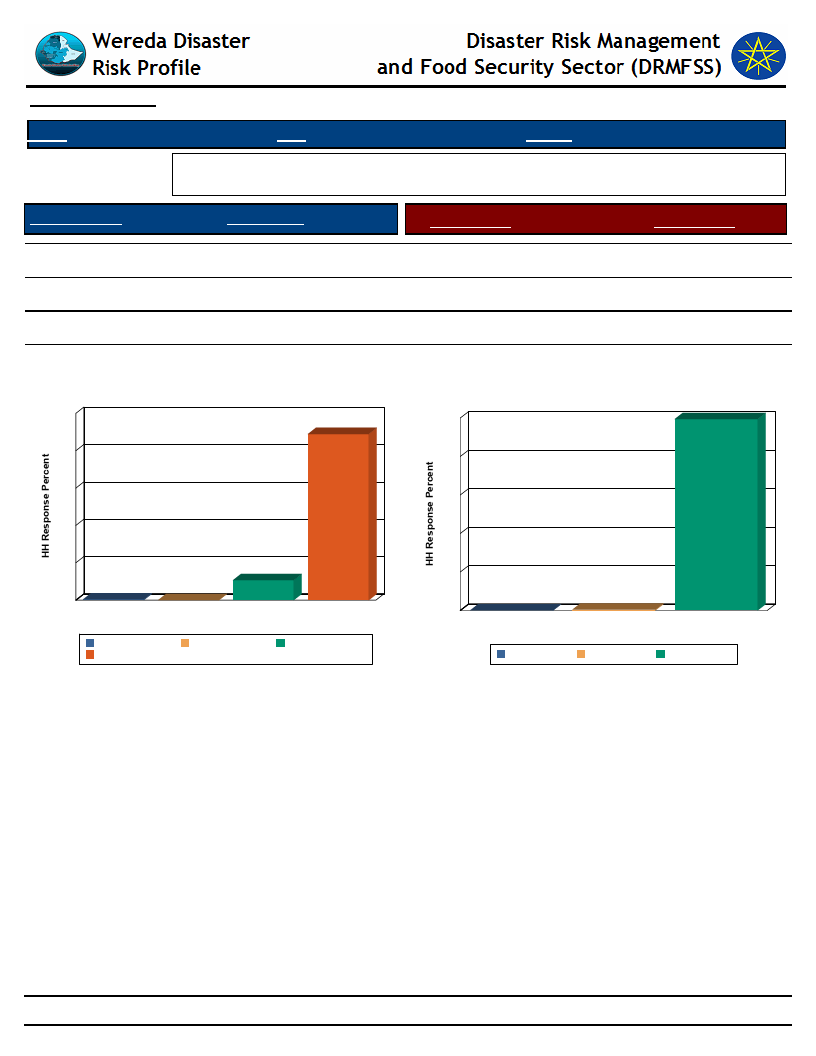
Data_Collected_Date
Monday, September 29, 2014
Region S.N.N.P
Selected Indicator
Floor Structure
Zone HADIYA
Wereda MIRAB BADAWOCHO
Physical Vulnerability: Type of Dwelling Units - Households type of dwelling
houses
HH Response
Type of Floor
HH Response
Wood and mud
Tin House
Bamboo
Brick/stone house
88.90
10.70
0.40
0.00
Concrete
Non-Concrete
0.40
99.40
0.00
0.00
Floor Structure
100
89
80
60
40
20
11
0
0
Bamboo
0
Brick/stone
Tin House
houFseloor Structure
Wood and mud
Bamboo
Wood and mud
Brick/stone house Tin House
Type of Floor
99
100
80
60
40
20
0
0
0
Concrete
Type of Floor
Concrete
Non-Concrete
Non-Concrete
55
Page 1 of 1
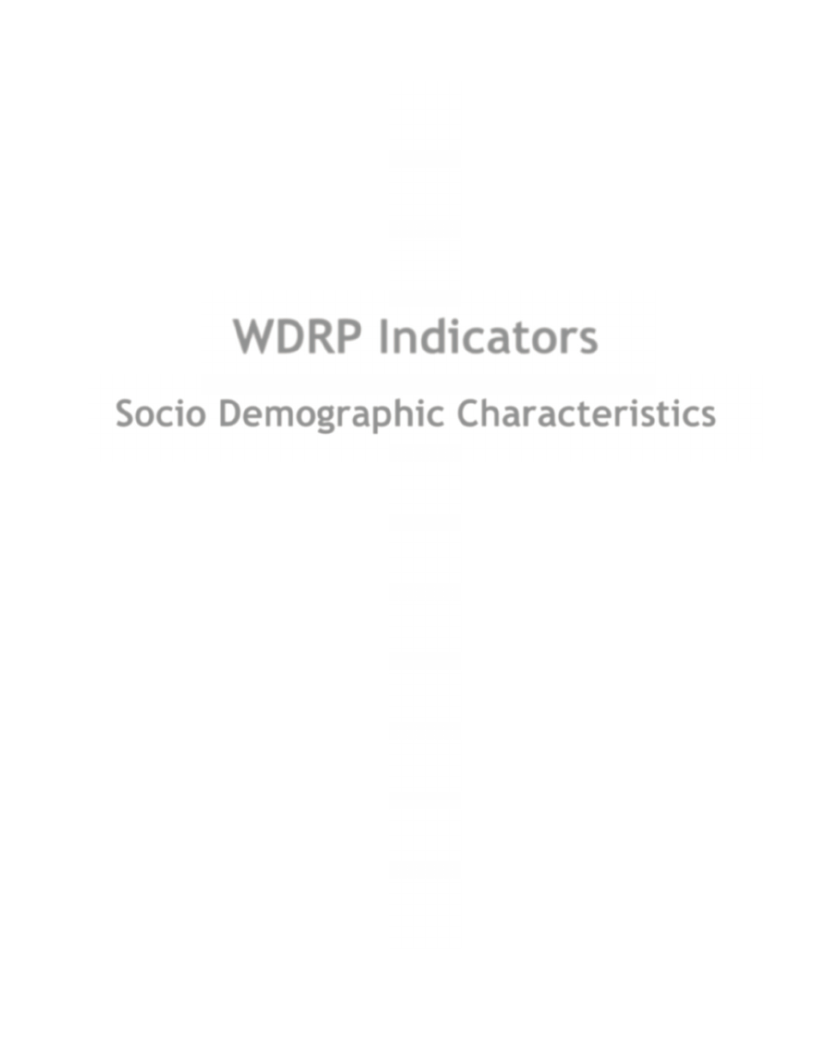
WDRP Indicators
Socio Demographic Characteristics
56
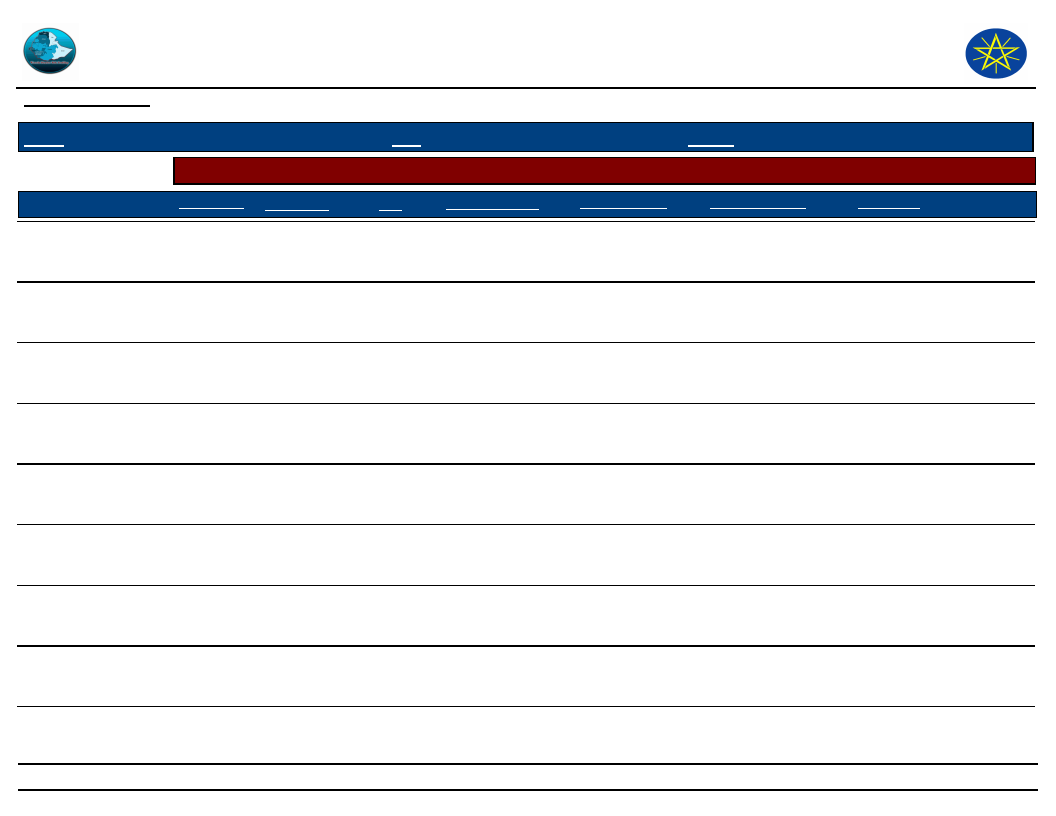
Wereda Disaster
Risk Profile
Data_Collected_Date
Disaster Risk Management and Food
Security Sector (DRMFSS)
Thursday, September 4, 2014
Region S.N.N.P
Selected Indicator
Kebele Name
DEDO
WEBARANA OFODA
JARISO ONIJOJO
SIBEYA
GERIBO
WEREBOYA
2GNA KOTO
HAWORA
Zone HADIYA
Wereda MIRAB BADAWOCHO
Economic Vulnerability: Level of Migration - Migration level and its characteristics by Kebele
Approx_No. Age_Group
Sex
Migration_Period
Migration Trend
Migration_Reason
Destination
10_35 years
Both sex Every year
Increased
Job opportunities,
loss of asset and
economic hardship
Awash Afar koka, Alame
Ten
10 to 40
Both sex Every year
Increased
Job opportunities,
loss of asset and
economic hardship
Meki, Sudan, Ziway,
Debrezite and Awash Dubti
20
12 to 35
Both sex Every year
Increased
Job opportunities,
loss of asset and
economic hardship
Awash, Meki Alem Tena
Koka
12 to 35
Both sex Every year
Increased
Job opportunities,
loss of asset and
economic hardship
Alame Ten, Debre ziyte,
Matara, Ziway
15 to 40
Both sex Every year
Increased
Job opportunities,
loss of asset and
economic hardship
Awash, koka, Wolikte,
Ziway, Meki
25
15 to 40
Both sex Every year
Increased
Job opportunities,
loss of asset and
economic hardship
Alame Ten, Meki, Humera,
Sudan, Awash, Gambella,
Wonji, Matahara
Dec-35
Both sex November to May
Increased
Job opportunities,
loss of asset and
economic hardship
Awash, Koka, Meki,
Debrezeyit, Alame Tena,
Gambella
Youth
Both sex February, July
Increased
Job opportunities,
loss of asset and
economic hardship
Awash, koka, Gambella,
Dufti, Wolktie, Alame
Tena, Matama
57
Page 1 of 3
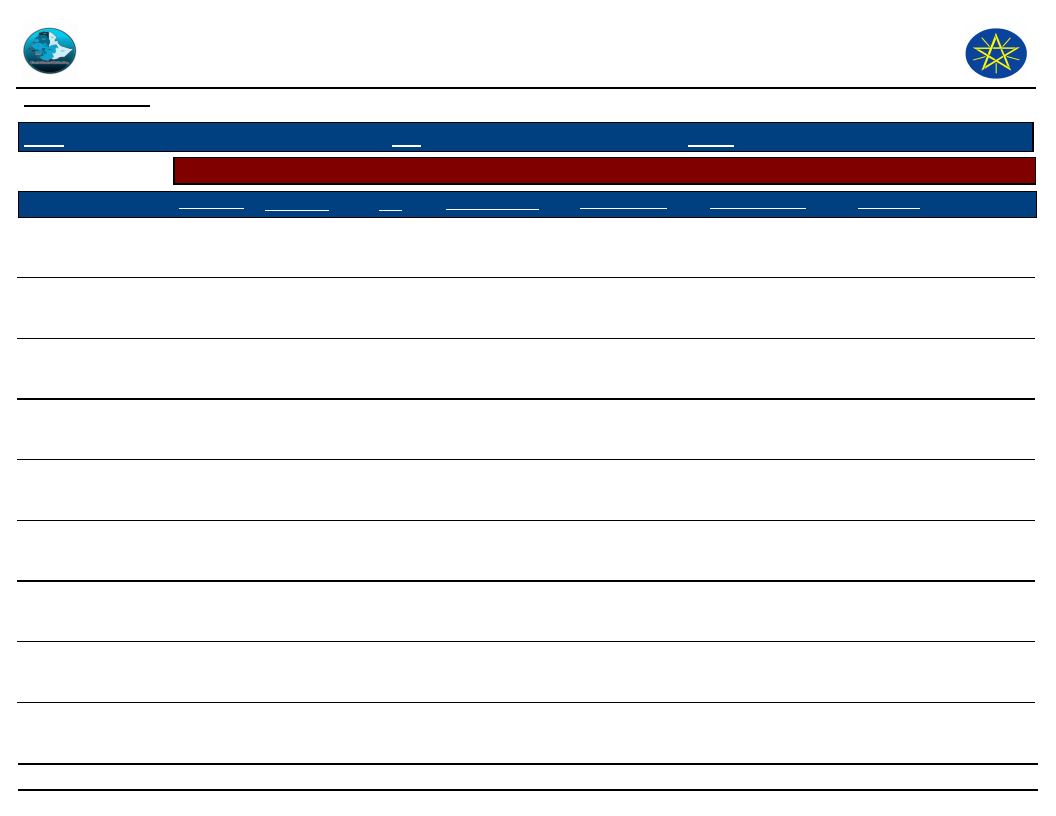
Wereda Disaster
Risk Profile
Data_Collected_Date
Disaster Risk Management and Food
Security Sector (DRMFSS)
Thursday, September 4, 2014
Region S.N.N.P
Selected Indicator
Kebele Name
ELIFETA
YA BUKUNA
WADA
SEPERA
KACHA BIRA
1GNA KOTO
DANAMA
DANAMA 01
2nd KESHORA
Zone HADIYA
Wereda MIRAB BADAWOCHO
Economic Vulnerability: Level of Migration - Migration level and its characteristics by Kebele
Approx_No.
Age_Group
10 to 40
15_40
20_35
Youth
18_45
20_40
17% of the
community
10 to 40
20% of the
community
12 to 37
18% of the
community
10 to 40
Sex
Both sex
Migration_Period
October to June
Both sex February to may
Both sex January to June
Both sex February to July
Both sex January to May
Both sex January to May
Both sex Every year
Both sex Every year
Both sex Every year
58
Migration Trend
Increased
Increased
Increased
Increased
Increased
Increased
Increased
Increased
Increased
Migration_Reason
Job opportunities,
loss of asset and
economic hardship
Job opportunities,
loss of asset and
economic hardship
Job opportunities,
loss of asset and
economic hardship
Loss of asset,
economichard ship,
job opportunities
Job opportunities,
loss of asset and
economic hardship
Job opportunities,
loss of asset and
economic hardship
Job opportunities,
loss of asset and
economic hard ship
Job opportunities,
loss of asset and
economic hard ship
Job opportunities,
loss of asset and
economic hard ship
Destination
Walaba, Ziway, Mezi, Alem
Tena, Fincha, etc…
Ziway, Alem Tena,
Debreziyit
Wonji, Fencha,
debreziyite, Dufti, Alem
Tena, Matahara
Fencha, Awash, Woliso,
Wolkite, Duft
Halaba, Meqe, Hadcho,
Duft
Halaba, Fencha, Ziway,
meki, koka
Afar, Gamble, Wolega,
Sudan, Ziway, Meki, Mizan
Teferi, Kunta, janka
Awash, Koka, Alme Tena,
Adama Tulu
Awash, Koka, Alme Tena
Page 2 of 3
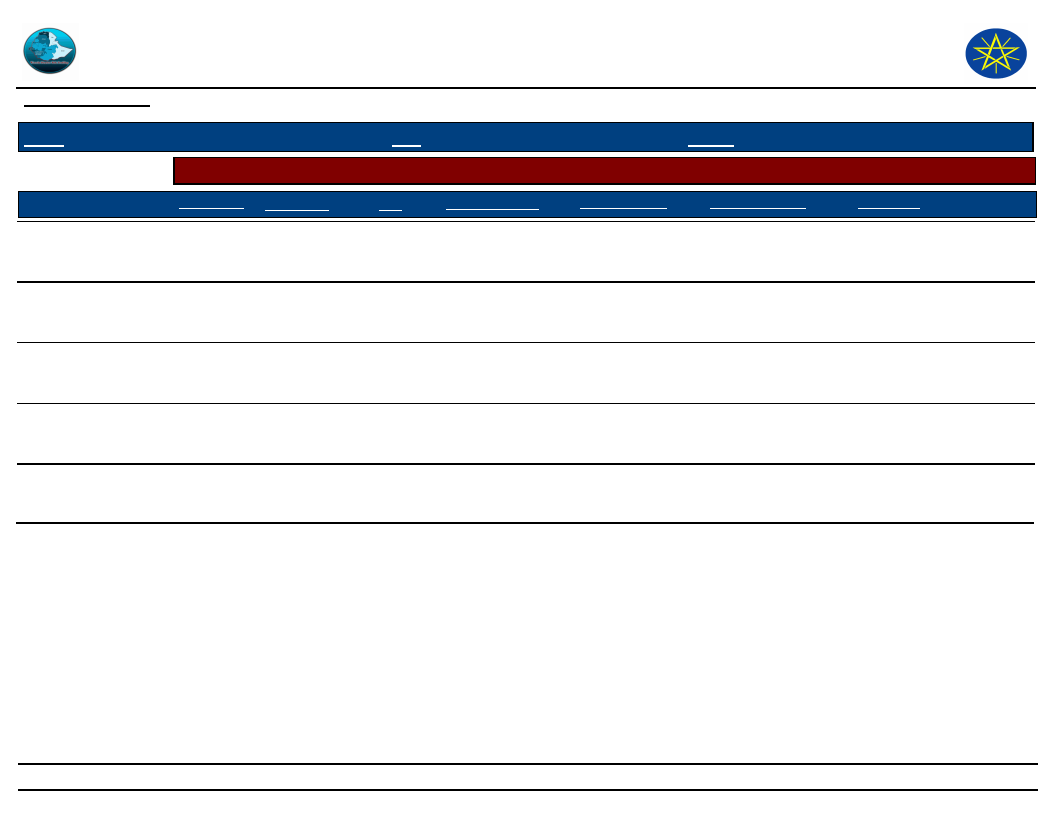
Wereda Disaster
Risk Profile
Data_Collected_Date
Disaster Risk Management and Food
Security Sector (DRMFSS)
Thursday, September 4, 2014
Region S.N.N.P
Selected Indicator
Kebele Name
WADA 01
FIRST KASHERA
JARSO MAJORIYA
OFFDAA
MIRAB AJEBA
Zone HADIYA
Wereda MIRAB BADAWOCHO
Economic Vulnerability: Level of Migration - Migration level and its characteristics by Kebele
Approx_No. Age_Group
Sex
Migration_Period
Migration Trend
Migration_Reason
Destination
20% of the
community
20 to 40
25% of the
community
15-40
30% of the
community
15 to 40
20% of the
community
18-40
20% of the
community
15-40
Both sex February to July
Increased
Both sex February to July
Increased
Both sex
September to
January
Both sex February to August
Increased
Increased
Both sex January to June
Increased
Job opportunities,
loss of asset and
economic hard ship
Job opportunities,
loss of asset and
economic hard ship
Job opportunities,
loss of asset and
economic hard ship
Job opportunities,
loss of asset and
economic hard ship
Job opportunities,
loss of asset and
economic hard ship
Fencha, Senkele,
Metehara, Dufti
Gawna, Fencha, Nurel,
Ziway, Gambella
Ziway, Debreziyit, Alem
Tena, Dubti and Metahara
Debrezeyite, Alem Tena,
Meqi, Wonji, Matahara
Debrezeyite, Fencha,
Mater, Qoka, Arba minich
59
Page 3 of 3
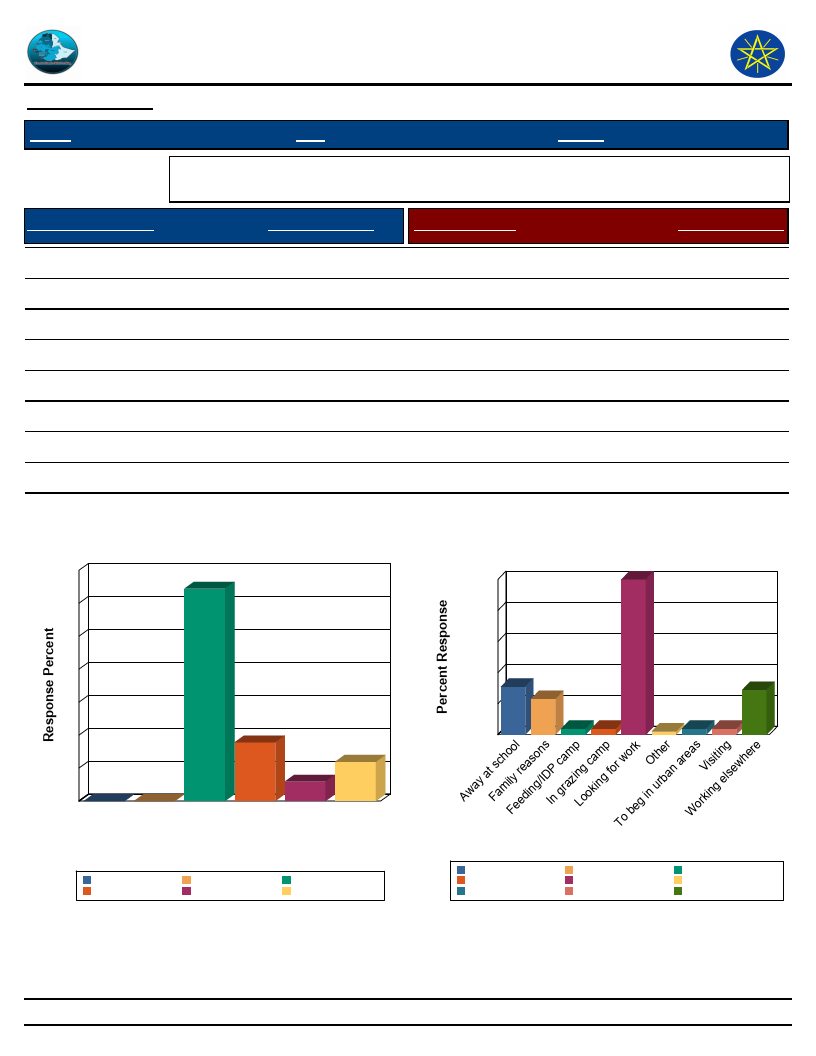
Wereda Disaster
Risk Profile
Data_Collected_Date
Region S.N.N.P
Disaster Risk Management
and Food Security Sector (DRMFSS)
Thursday, September 4, 2014
Zone
HADIYA
Wereda MIRAB BADAWOCHO
Selected Indicator
Economic Vulnerability: Household Migration - Household migration and reason
for migration
Duration of Migration
Response Percent
Migration Reason
Response Percent
Two weeks – month
A month – 3 months
3 – 6 months
> 6 months
Less than 2 weeks
11.90
17.80
64.40
0.00
5.90
0.00
0.00
0.00
0.00
Family reasons
Looking for work
Working elsewhere
In grazing camp
Visiting
To beg in urban areas
Other
Feeding/IDP camp
Away at school
11.50
50.00
14.40
1.90
1.90
1.90
1.00
1.90
15.40
Duration of Migration
70
64
60
50
40
30
20
18
12
10
6
0
0
0
> 6 3 – 6 A month Less Two
months months – 3 than 2 weeks –
months weeks month
Duration of Migration
A month – 3 months
> 6 months
Less than 2 weeks
3 – 6 months
Two weeks – month
Migration Reason
50
50
40
30
20 15
12
10
22
0
14
122
Away at school
In grazing camp
To beg in urban areas
Migration Reason
Family reasons
Looking for work
Visiting
Feeding/IDP camp
Other
Working elsewhere
60
Page 1 of 1
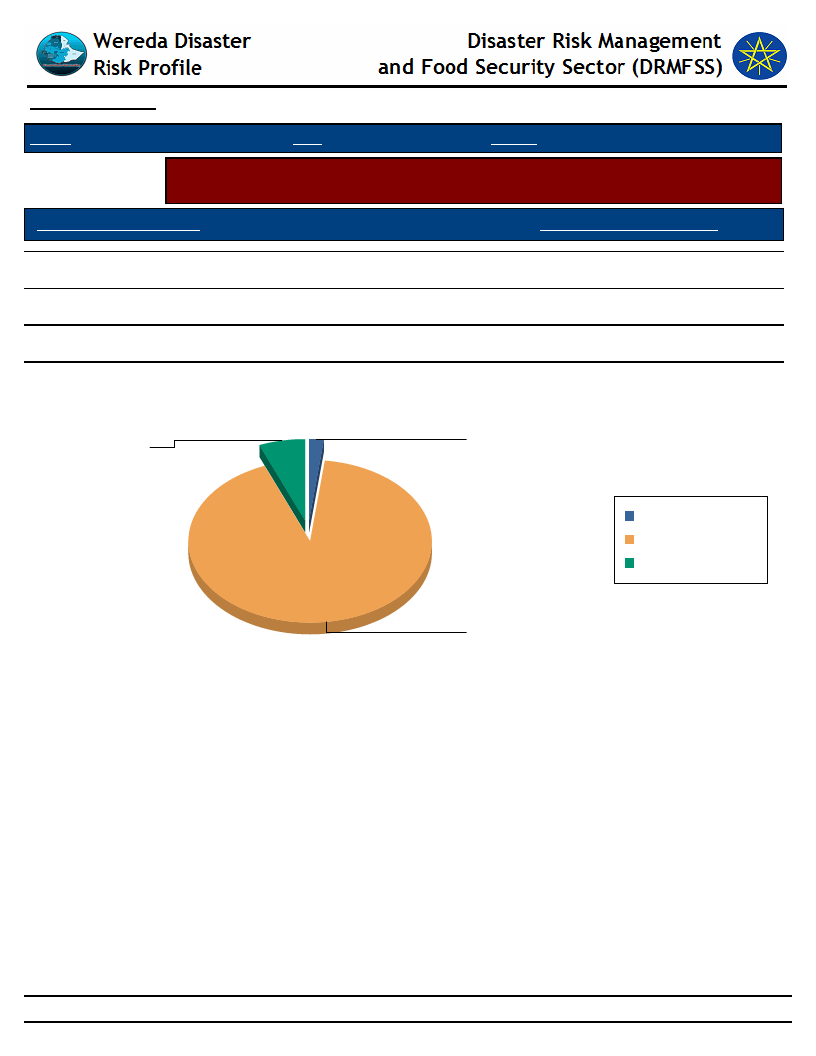
Data_Collected_Date
Thursday, September 4, 2014
Region S.N.N.P
Zone HADIYA
Wereda MIRAB BADAWOCHO
Selected Indicator
Economic Vulnerability: Household Migration - Disasters as a triggering factor for
migration (households response in %)
Is Migration Due to Hazard?
HH Response - Due To Hazard
No
Yes
Migration partly because of such impacts
91.90
6.10
2.00
Is Migration Due to Hazard?
Migration partly because of such
Yes
impacts
6.1
2
Migration partly because
of such impacts
No
Yes
No
91.9
61
Page 1 of 1
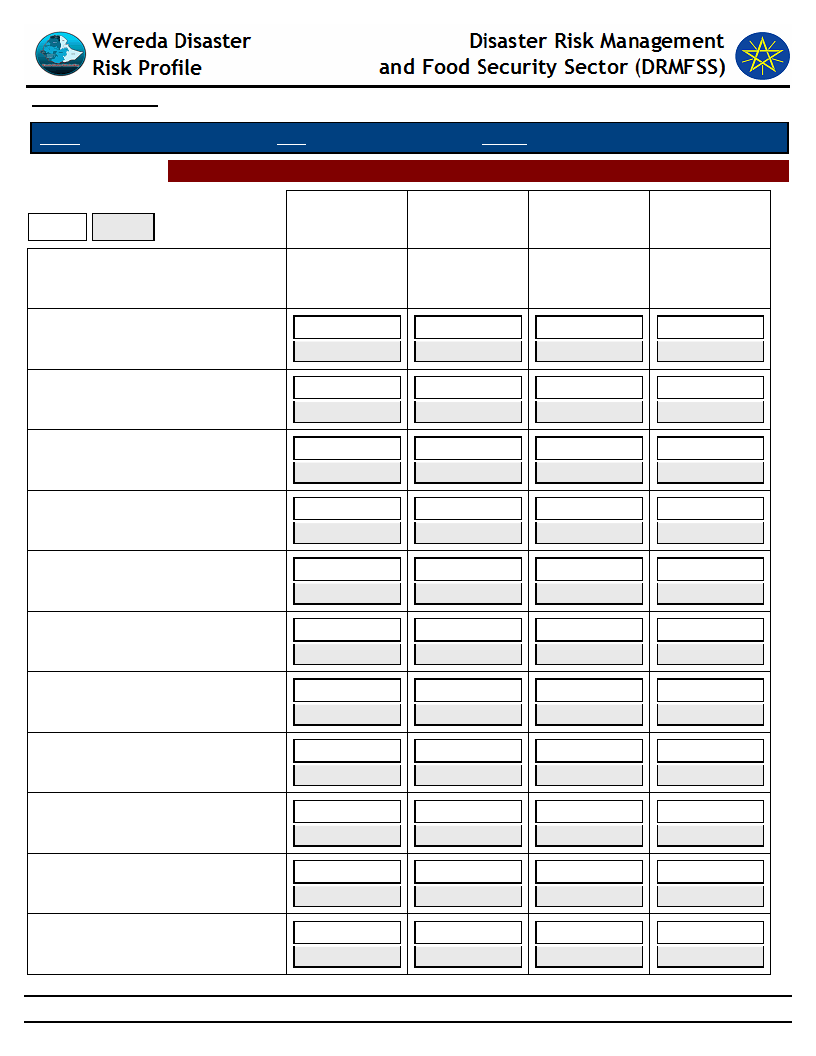
Data_Collected_Date
Region S.N.N.P
Zone HADIYA
Selected Indictor: Demography: Population Structure
KEY:
Male
Female
Children
(0-12 yrs)
1GNA KOTO
Thursday, September 4, 2014
Wereda MIRAB BADAWOCHO
Older (Above
55 yrs)
Working
(25-55 yrs)
Youth (12-25
yrs)
2GNA KOTO
DEDO
ELIFETA
GERIBO
HAWORA
JARISO ONIJOJO
KACHA BIRA
SEPERA
SIBEYA
WADA
WEBARANA OFODA
10%
9%
18%
20%
15%
6%
12%
10%
12%
7%
11%
12%
18%
8%
14%
18%
48%
55%
55%
50%
52%
45%
45%
50%
11%
9%
10%
19%
12%
11%
14%
17%
20%
15%
30%
35%
25%
15%
20%
40%
12%
6%
12%
13%
18%
9%
13%
17%
50%
60%
52%
49%
50%
40%
48%
51%
49%
55%
50%
48%
51%
45%
50%
52%
12%
6%
12%
13%
18%
9%
13%
17%
46%
40%
45%
49%
54%
60%
55%
51%
10%
6%
11%
12%
15%
9%
19%
18%
62
Page 1 of 2
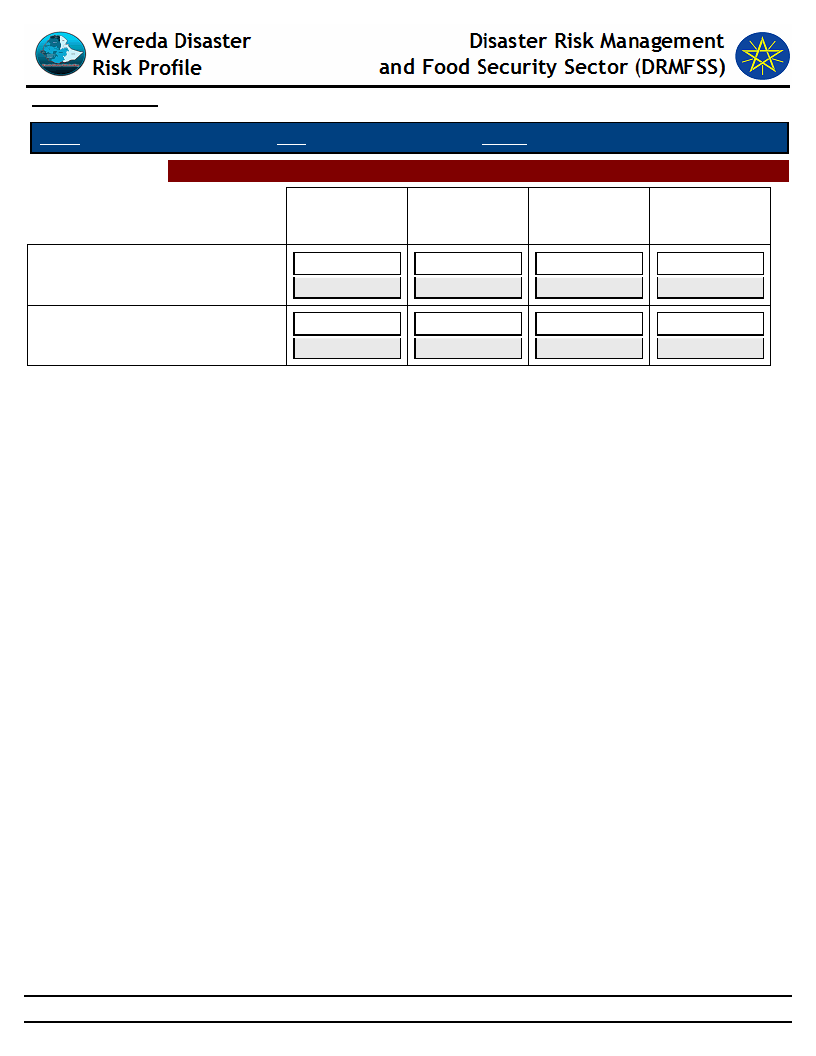
Data_Collected_Date
Region S.N.N.P
Zone HADIYA
Selected Indictor: Demography: Population Structure
Children
(0-12 yrs)
WEREBOYA
11%
14%
YA BUKUNA
50%
50%
Thursday, September 4, 2014
Wereda MIRAB BADAWOCHO
Older (Above
55 yrs)
6%
9%
55%
45%
Working
(25-55 yrs)
13%
17%
51%
49%
Youth (12-25
yrs)
12%
18%
48%
52%
63
Page 2 of 2
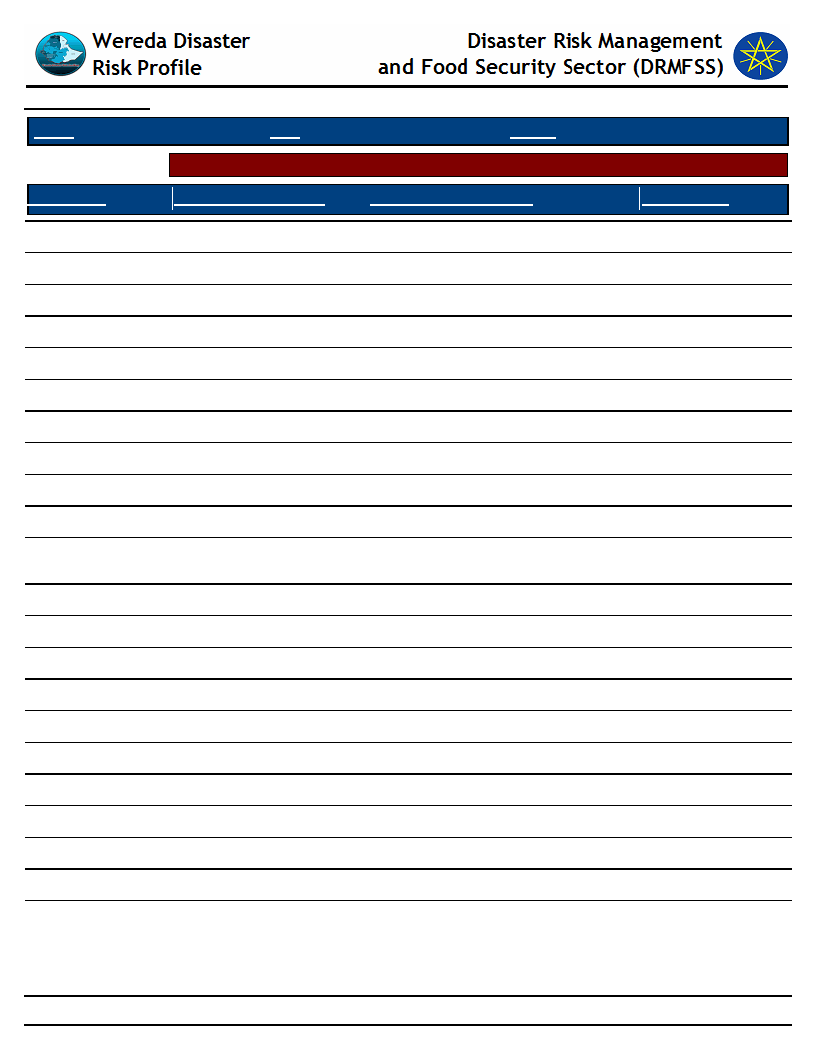
Data_Collected_Date
Region S.N.N.P
Zone HADIYA
Wereda
Selected Indicator
Demography: Population Trends and Ethnic Groups
Kebele Name
Population Change Trend
Population Change Reasons
Thursday, September 4, 2014
MIRAB BADAWOCHO
Ethnic_Groups
DEDO
WEBARANA OFODA
JARISO ONIJOJO
SIBEYA
GERIBO
WEREBOYA
2GNA KOTO
HAWORA
ELIFETA
YA BUKUNA
WADA
SEPERA
KACHA BIRA
1GNA KOTO
DANAMA
DANAMA 01
2nd KESHORA
WADA 01
FIRST KASHERA
JARSO MAJORIYA
OFFDAA
MIRAB AJEBA
Increased
Increased
Increased
Increased
Increased
Increased
Increased
Increased
Increased
Increased
Increased
Increased
Increased
Increased
Increased
Increased
Increased
Increased
Increased
Increased
Increased
Increased
More children
More children
More children
More children
More children
More children
More children
More children
More children
More children
Poor family planning and More
children
More children
More children
More children.
More children.
More children.
More children.
More children.
More children.
More children.
More children.
Haddiya
Haddiya
Haddiya
Haddiya
Haddiya
Haddiya
Haddiya
Haddiya
Haddiya
Haddiya
Haddiya
Haddiya
Haddiya
Haddiya.
Haddiya.
Haddiya.
Haddiya.
Haddiya.
Haddiya.
Haddiya.
Haddiya.
64
Page 1 of 1
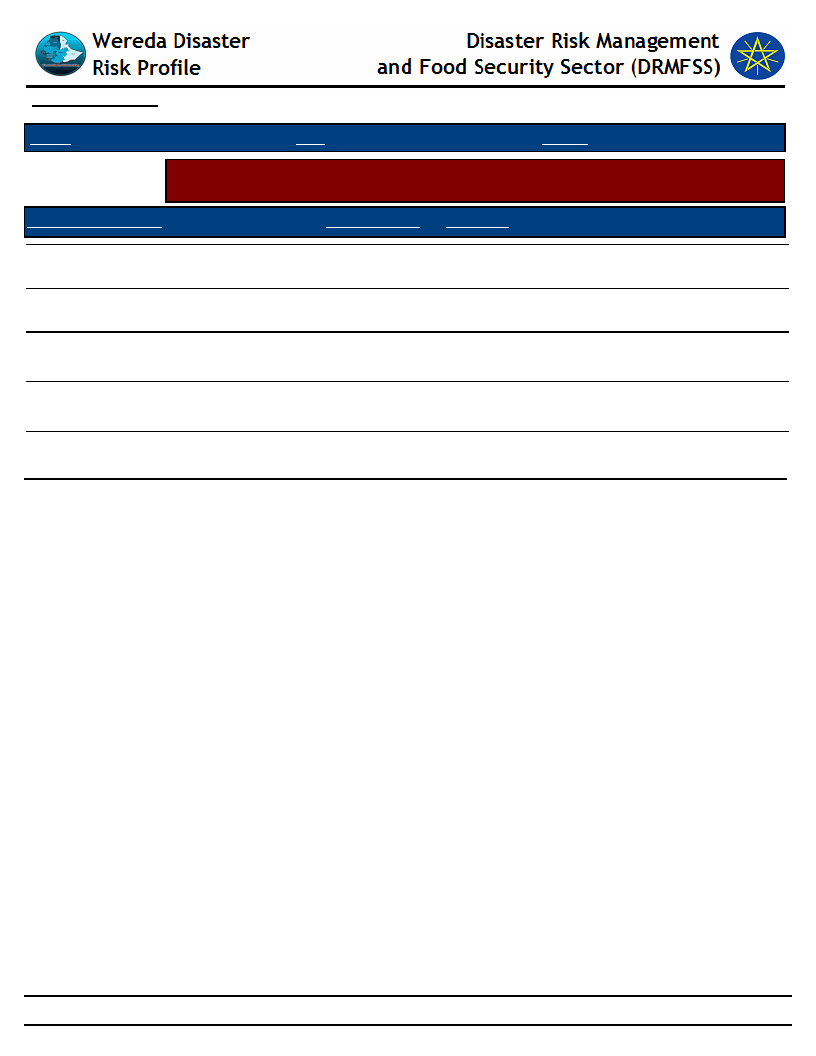
Data_Collected_Date
Monday, September 29, 2014
Region S.N.N.P
Zone
HADIYA
Wereda MISRAK BADAWOCHO
Selected Indicator
Social Vulnerability: Household Demographic Characteristics - Demographic
characteristics of households
Demographic Indicator
Indicator_Value Comments
Average household size
7
Sex ratio
1
Number of males divided by number of females
Child sex ratio (under 14 yrs)
Adult sex ratio (18 & Above yrs)
Dependency ratio ([(0-14)+(64+)] / (15-64)
yrs)
1
Sex ration for the population whose age is
below 14 years
1
Sex ratio for the population whose age is 18 and
above years
1
65
Page 1 of 1
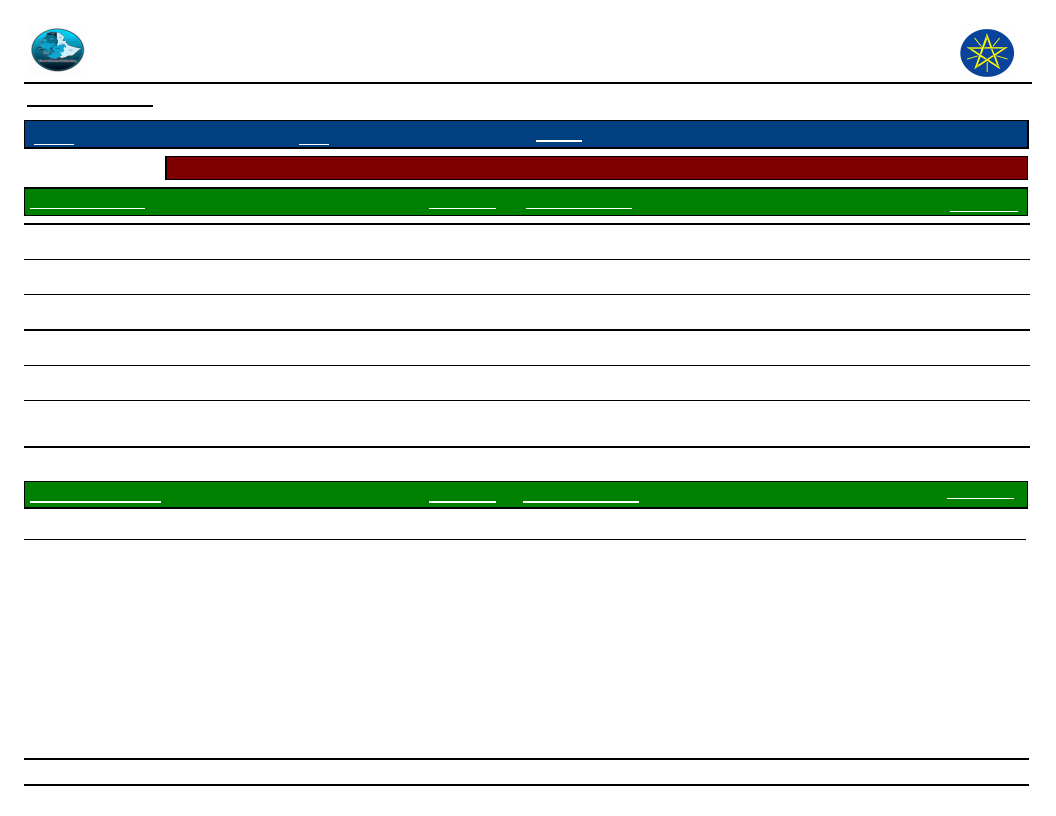
Wereda Disaster
Risk Profile
Data_Collected_Date
Disaster Risk Management and Food
Security Sector (DRMFSS)
Thursday, September 4, 2014
Region S.N.N.P
Selected Indicator
Zone
HADIYA
Wereda MIRAB BADAWOCHO
Social Vulnerability: Level of Educational Attainment - Education status of household members
General Awareness
Percentage Educational Level
Read and understand text - Easily
10.30
From Proportion of population (7+) - Less than 1st grade
Percentage
30.40
Read and understand text - with difficulty
16.90
From Proportion of population (7+) - Primary (1-6)
44.00
Cannot read and understand text
72.70
From Proportion of population (7+) - Secondary (7-12)
17.00
Can write letters - easily
8.80
From Proportion of population (7+) - Technical
1.50
Can write letters - with difficulty
13.70
From Proportion of population (7+) - Diploma
0.20
Cannot write letters
General Literacy Rate
Proportion of literate population (7+) to total 7+
population
77.10
0.00
From Proportion of population (7+) - Pursuing or
completed University
University Degree And Above
Percentage
12.50
Adult Literacy Rate
Proportion of literate population (15+) to total 15+
population
0.20
0.00
Percentage
14.60
66
Page 1 of 1
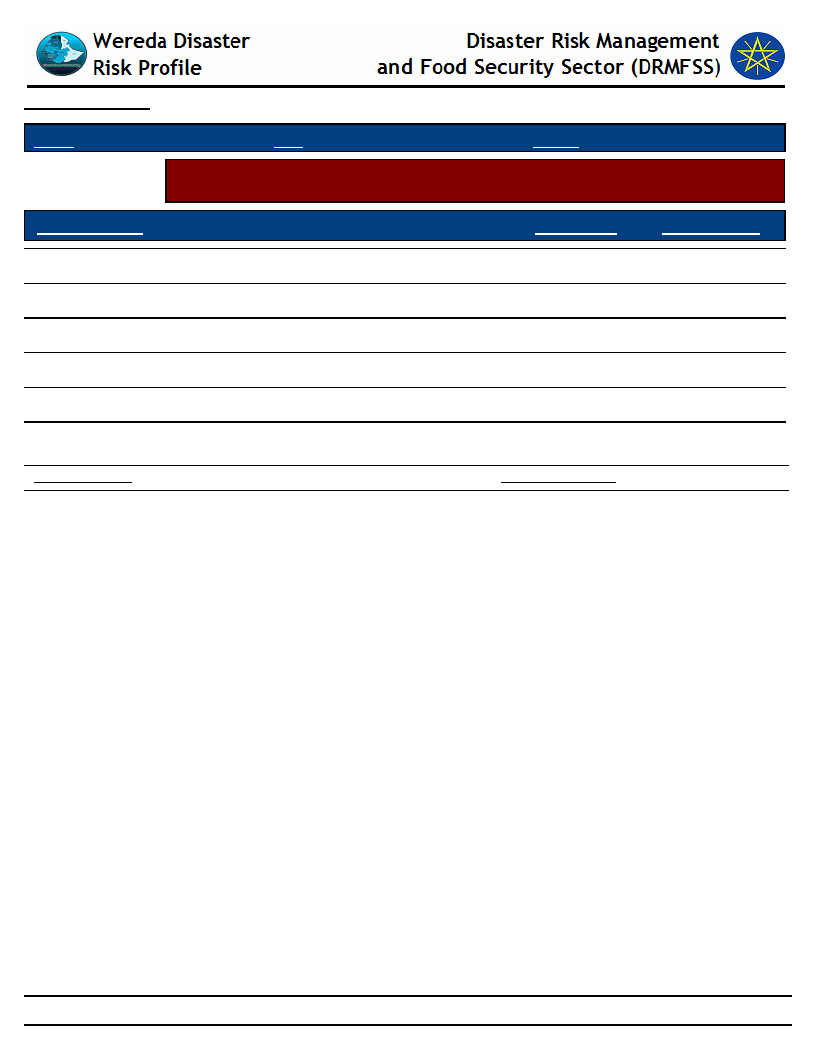
Data_Collected_Date
Monday, September 29, 2014
Region S.N.N.P
Selected Indicator
Zone HADIYA
Wereda MISRAK BADAWOCHO
Social Vulnerability: Gender Parity - Gender parity in education level (7+ years)
and household heading
Educational Level
Male_Percent
Female_Percent
From Proportion of population (7+) - Less than 1st grade
36.60
63.26
From Proportion of population (7+) - Primary (1-6)
54.53
45.19
From Proportion of population (7+) - Secondary (7-12)
62.18
37.82
From Proportion of population (7+) - Technical
87.50
12.50
From Proportion of population (7+) - Diploma
66.67
33.33
From Proportion of population (7+) - Pursuing or completed
University
Male Head of HH
81.30
100.00
Female Head of HH
0.00
18.20
67
Page 1 of 1
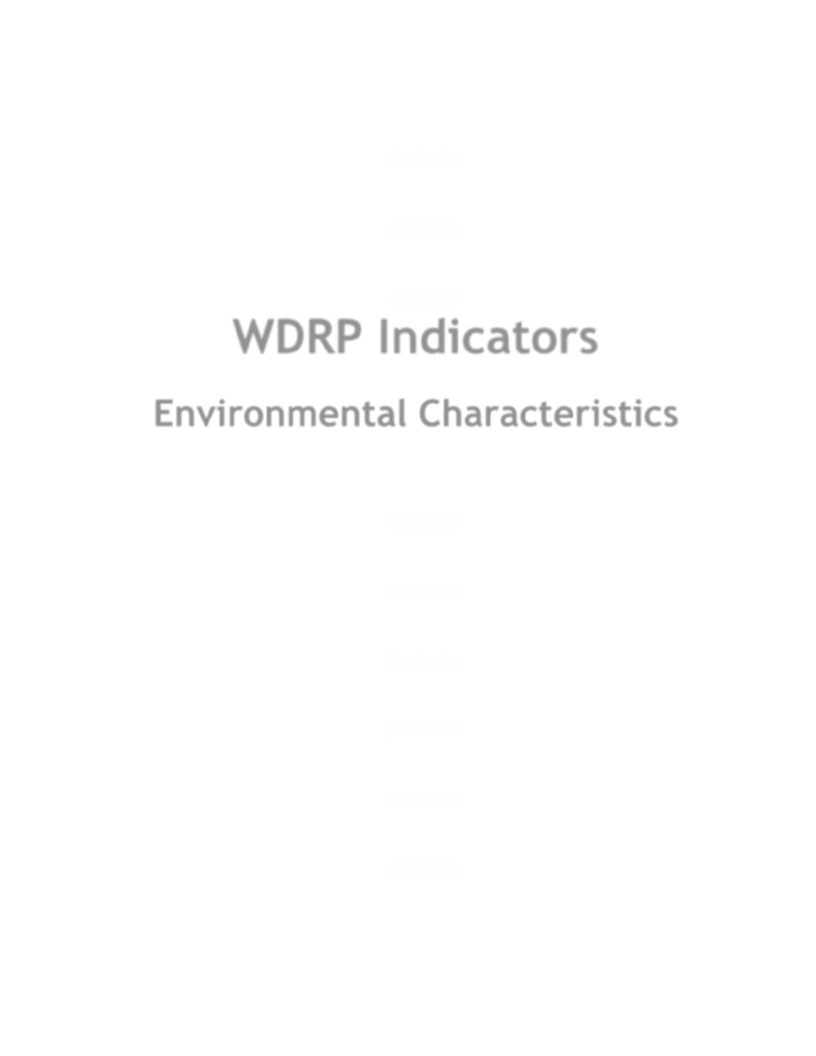
WDRP Indicators
Environmental Characteristics
68
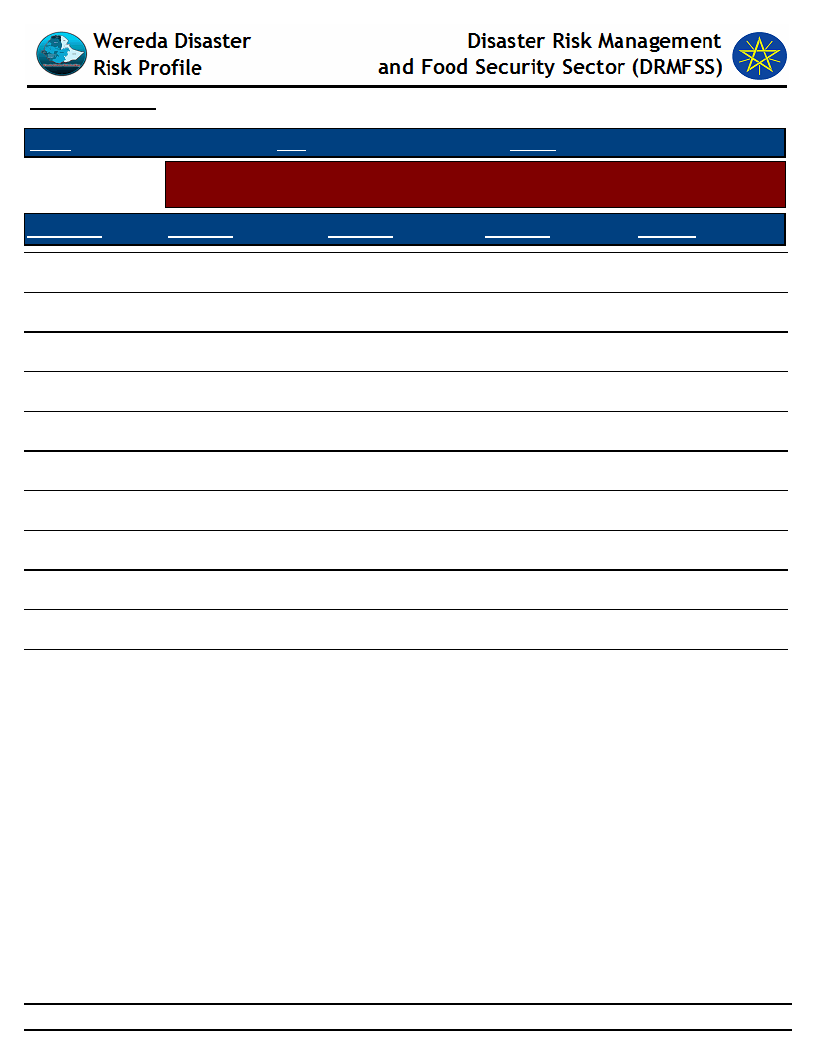
Data_Collected_Date
Thursday, September 4, 2014
Region S.N.N.P
Zone HADIYA
Wereda MIRAB BADAWOCHO
Selected Indicator
Environmental Situation: Environmental Problems - Major environmental
problems by Kebele
KebeleName
Problem_1
Problem_2
Problem_3
Problem4
ELIFETA
Soil erosion
YA BUKUNA
Soil erosion
WADA
Soil erosion
SEPERA
Soil erosion
KACHA BIRA
Soil erosion
1GNA KOTO
Soil erosion
WADA 01
Soil erosion
FIRST KASHERA
Soil erosion
JARSO MAJORIYA
Water logging
OFFDAA
Soil erosion
MIRAB AJEBA
Soil erosion
69
Page 1 of 1
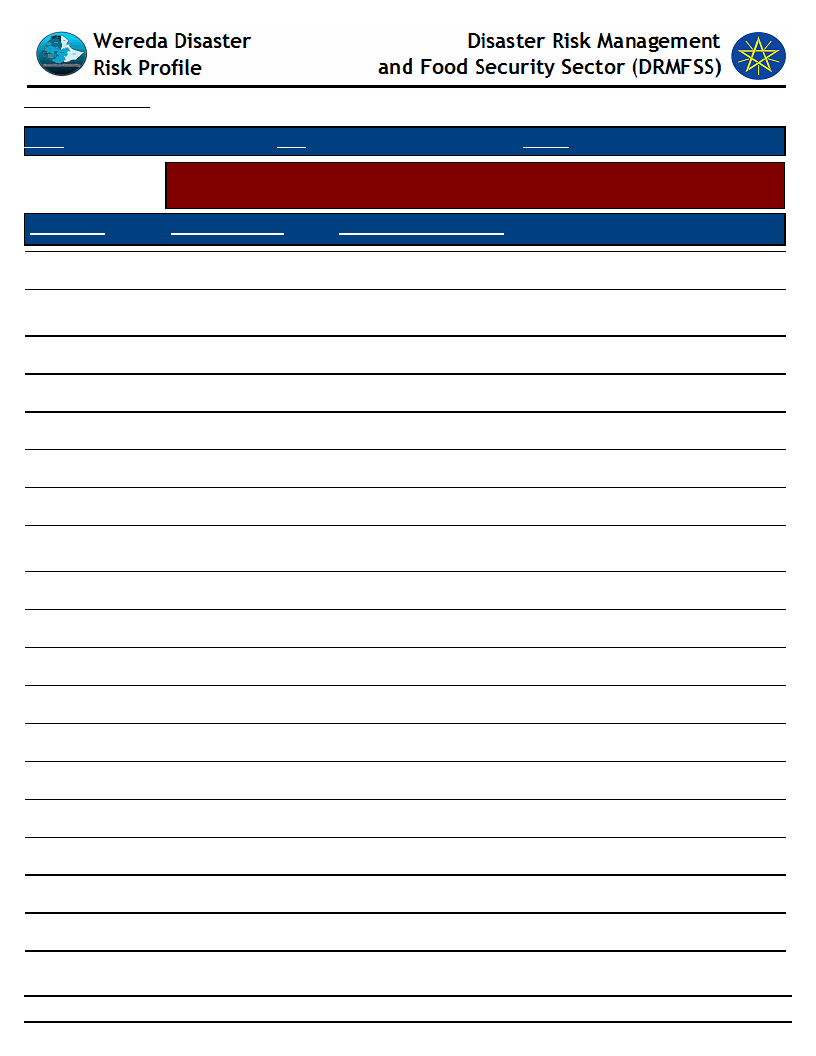
Data_Collected_Date
Thursday, September 4, 2014
Region S.N.N.P
Selected Indicator
KebeleName
Zone HADIYA
Wereda MIRAB BADAWOCHO
Environmental Situation: Deforestation - Observed changes over levels of
deforestation by the community and its problems
Changes_Observed
Problems_Due_To_Changes
DEDO
WEBARANA
OFODA
JARISO ONIJOJO
Decreasing
Decreasing
Decreasing
Drought
Drought
SIBEYA
GERIBO
WEREBOYA
2GNA KOTO
HAWORA
ELIFETA
Decreasing
Decreasing
Decreasing
Decreasing
Increased level of
deforestation
Low
Drought
Lack of awareness
Low productivity
YA BUKUNA
WADA
SEPERA
KACHA BIRA
1GNA KOTO
DANAMA
DANAMA 01
2nd KESHORA
WADA 01
FIRST KASHERA
Low
Decreasing
Decreasing
High
Decreasing
Decreasing
Decreasing
Decreasing
Medium
Medium
Exposing to drought
Yield reduction
Exposing to drought
Drought
Yield reduction
Drought
Drought
Moderately drought
Moderately drought
70
Page 1 of 2
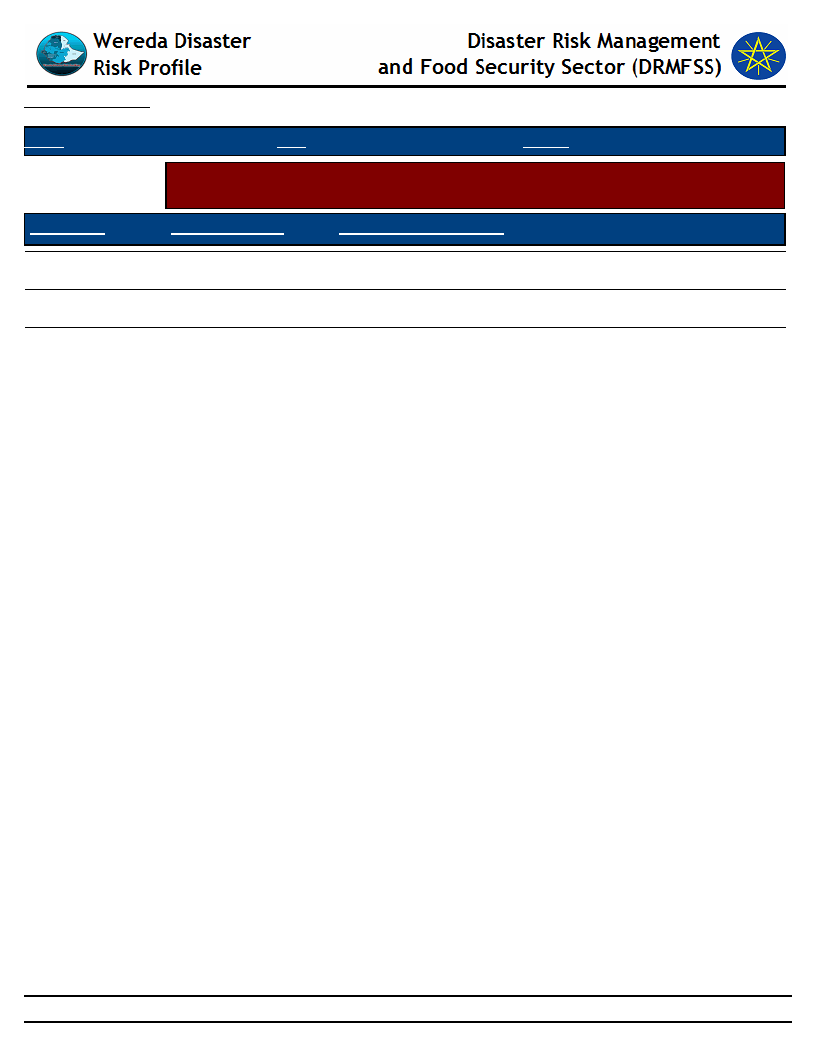
Data_Collected_Date
Thursday, September 4, 2014
Region S.N.N.P
Selected Indicator
KebeleName
Zone HADIYA
Wereda MIRAB BADAWOCHO
Environmental Situation: Deforestation - Observed changes over levels of
deforestation by the community and its problems
Changes_Observed
Problems_Due_To_Changes
JARSO MAJORIYA
OFFDAA
MIRAB AJEBA
Decreasing
Decreasing
Low
Exposing to drought
Drought
Climatic/ weather variation
71
Page 2 of 2
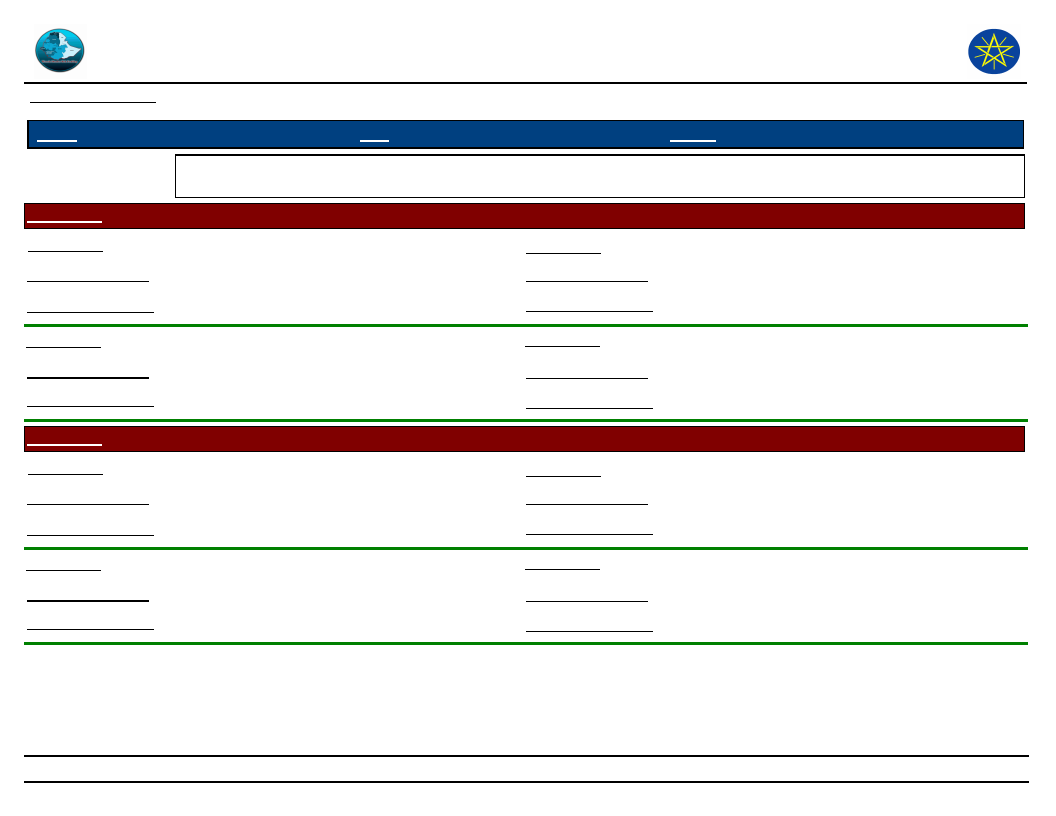
Wereda Disaster
Risk Profile
Data_Collected_Date
Disaster Risk Management
and Food Security Sector (DRMFSS)
Thursday, September 4, 2014
Region S.N.N.P
Zone HADIYA
Wereda
MIRAB BADAWOCHO
Selected Indicator
Environmental Situation: Natural Resources Availability - Natural resources available and changes observed by
the community
KebeleName
DEDO
Resources_1
Land
Resources_3
Wood
Observed_Change_1
Decreased fertility
Observed_Change_3
Decreased
Problems_Changes_1
Reduction of yields
Problems_Changes_3
drought
Resources_2
Observed_Change_2
Problems_Changes_2
Water
Decreased
Quality of animals reduced
Resources_4
Observed_Change_4
Problems_Changes_4
KebeleName
WEBARANA OFODA
Resources_1
Land
Observed_Change_1
Decreased fertility
Problems_Changes_1
Reduction of yields
Resources_2
Observed_Change_2
Problems_Changes_2
Water
Decreased
Quality of animals reduced
Resources_3
Observed_Change_3
Problems_Changes_3
Resources_4
Observed_Change_4
Problems_Changes_4
Wood
Decreased
drought
72
Page 1 of 11
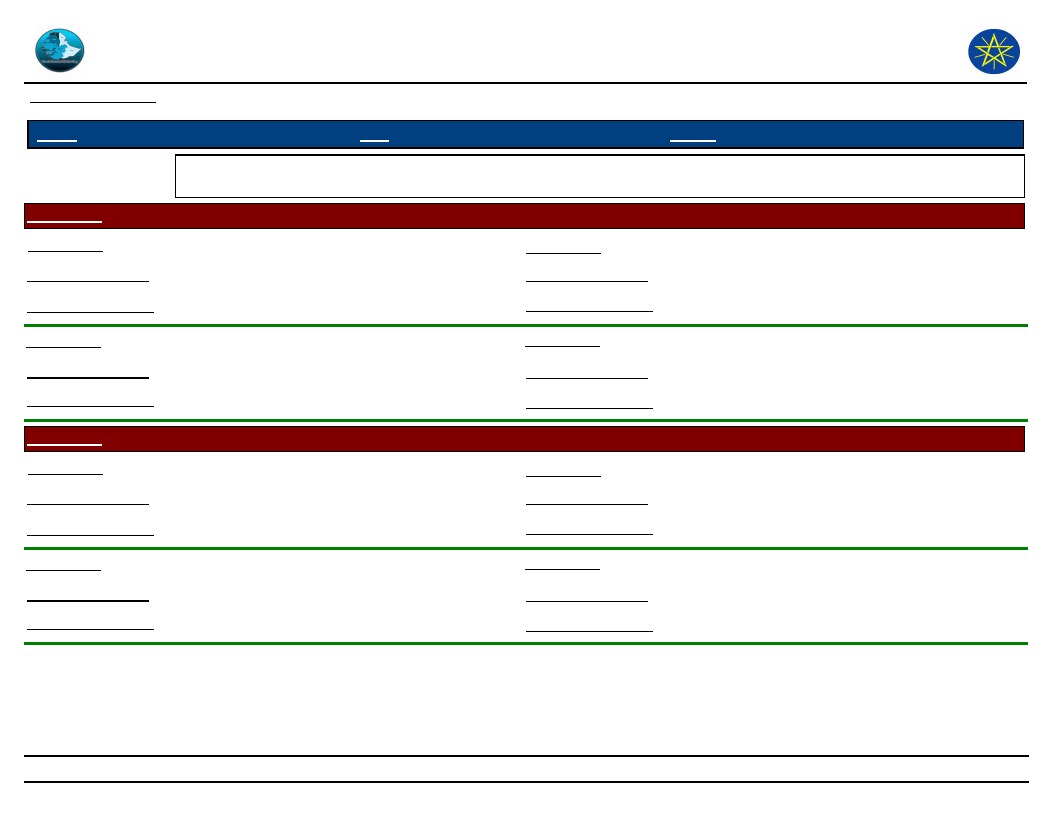
Wereda Disaster
Risk Profile
Data_Collected_Date
Disaster Risk Management
and Food Security Sector (DRMFSS)
Thursday, September 4, 2014
Region S.N.N.P
Zone HADIYA
Wereda
MIRAB BADAWOCHO
Selected Indicator
Environmental Situation: Natural Resources Availability - Natural resources available and changes observed by
the community
KebeleName
JARISO ONIJOJO
Resources_1
Land
Resources_3
Wood
Observed_Change_1
Decreased fertility
Observed_Change_3
Decreased
Problems_Changes_1
Reduction of yields
Problems_Changes_3
drought
Resources_2
Observed_Change_2
Problems_Changes_2
Water
Decreased
Quality of animals reduced
Resources_4
Observed_Change_4
Problems_Changes_4
KebeleName
SIBEYA
Resources_1
Land
Observed_Change_1
Decreased fertility
Problems_Changes_1
Reduction of yields
Resources_2
Observed_Change_2
Problems_Changes_2
Water
Decreased
Quality of animals reduced
Resources_3
Observed_Change_3
Problems_Changes_3
Resources_4
Observed_Change_4
Problems_Changes_4
Wood
Decreased
drought
73
Page 2 of 11
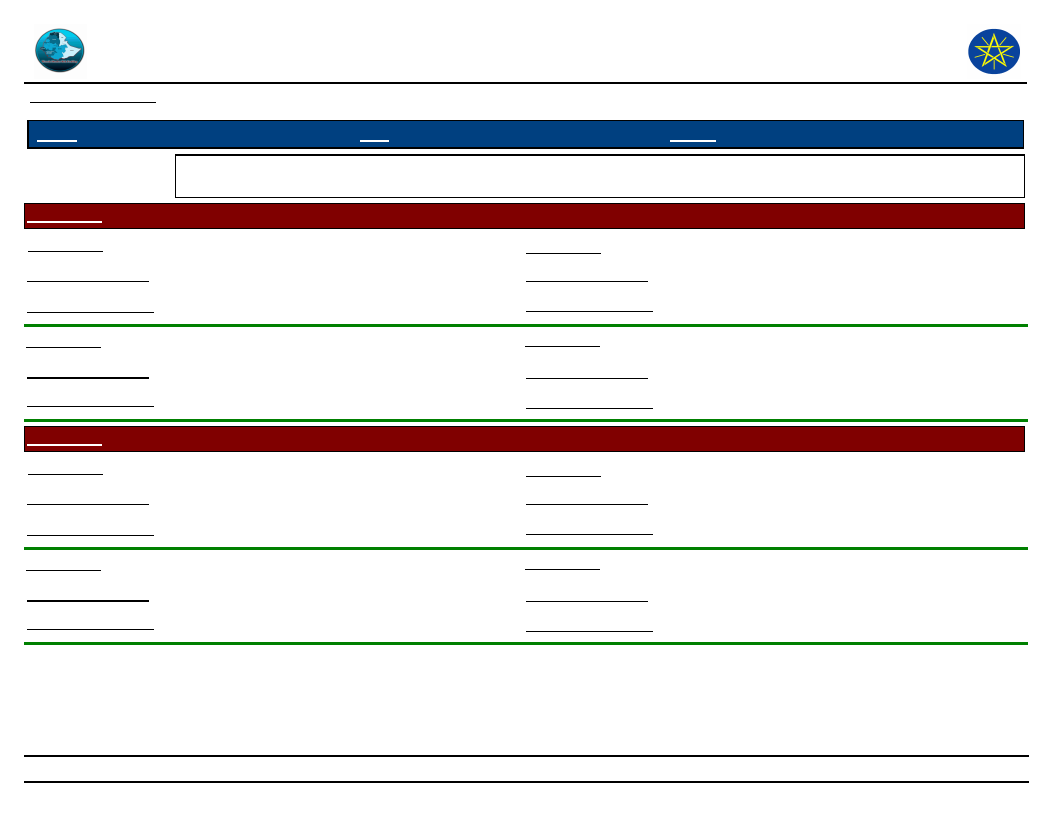
Wereda Disaster
Risk Profile
Data_Collected_Date
Disaster Risk Management
and Food Security Sector (DRMFSS)
Thursday, September 4, 2014
Region S.N.N.P
Zone HADIYA
Wereda
MIRAB BADAWOCHO
Selected Indicator
Environmental Situation: Natural Resources Availability - Natural resources available and changes observed by
the community
KebeleName
DANAMA
Resources_1
Land
Resources_3
Wood
Observed_Change_1
Decreased fertility
Observed_Change_3
Decreased
Problems_Changes_1
Reduction of yields
Problems_Changes_3
drought
Resources_2
Observed_Change_2
Problems_Changes_2
Water
Decreased
Quality of animals reduced
Resources_4
Observed_Change_4
Problems_Changes_4
KebeleName
DANAMA 01
Resources_1
Land
Observed_Change_1
Decreased fertility
Problems_Changes_1
Reduction of yields
Resources_2
Observed_Change_2
Problems_Changes_2
Water
Decreased
Quality of animals reduced
Resources_3
Observed_Change_3
Problems_Changes_3
Resources_4
Observed_Change_4
Problems_Changes_4
Wood
Decreased
drought
74
Page 3 of 11
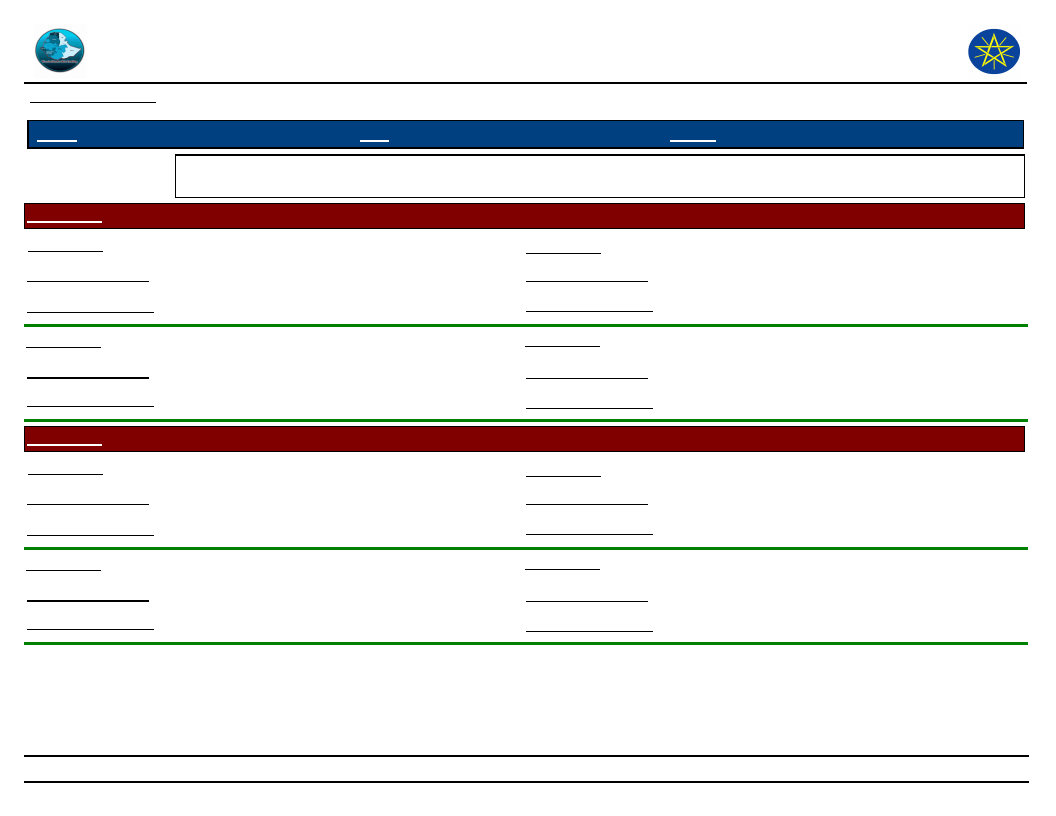
Wereda Disaster
Risk Profile
Data_Collected_Date
Disaster Risk Management
and Food Security Sector (DRMFSS)
Thursday, September 4, 2014
Region S.N.N.P
Zone HADIYA
Wereda
MIRAB BADAWOCHO
Selected Indicator
Environmental Situation: Natural Resources Availability - Natural resources available and changes observed by
the community
KebeleName
GERIBO
Resources_1
Land
Resources_3
Wood
Observed_Change_1
Decreased fertility
Observed_Change_3
Decreased
Problems_Changes_1
Reduction of yields
Problems_Changes_3
drought
Resources_2
Observed_Change_2
Problems_Changes_2
Water
Decreased
Quality of animals reduced
Resources_4
Observed_Change_4
Problems_Changes_4
KebeleName
2nd KESHORA
Resources_1
Land
Observed_Change_1
Decreased fertility
Problems_Changes_1
Reduction of yields
Resources_2
Observed_Change_2
Problems_Changes_2
Water
Decreased
Quality of animals reduced
Resources_3
Observed_Change_3
Problems_Changes_3
Resources_4
Observed_Change_4
Problems_Changes_4
Wood
Decreased
drought
75
Page 4 of 11
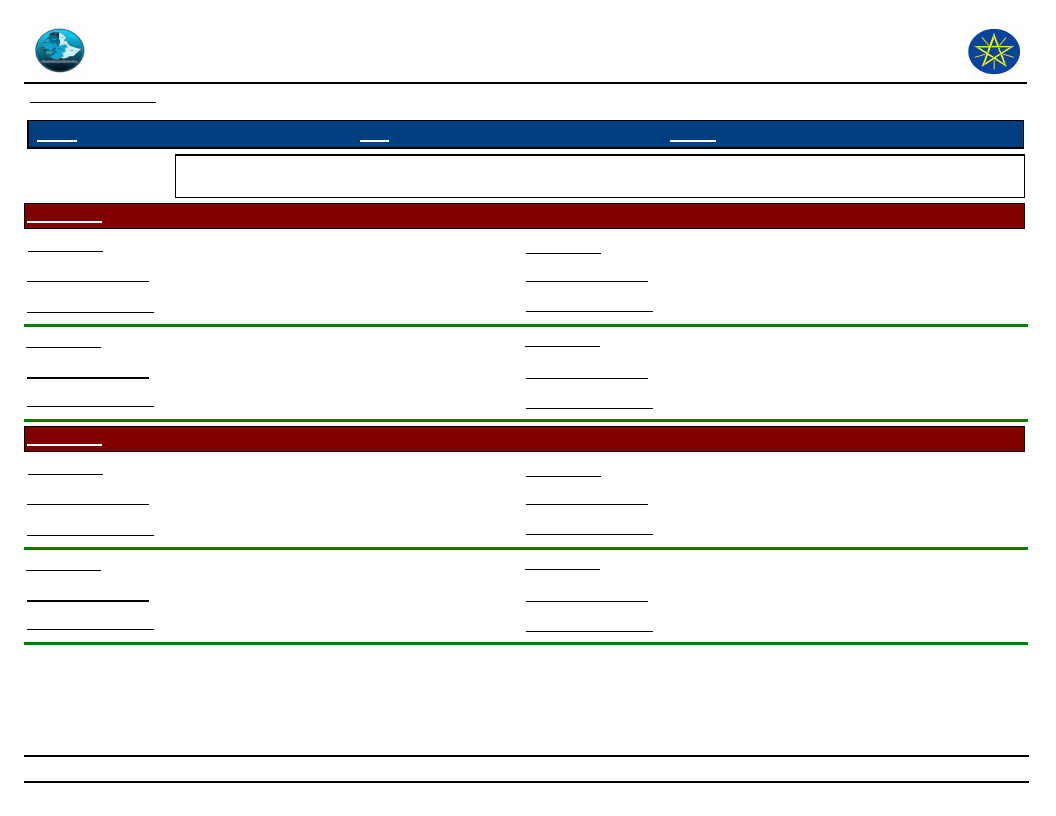
Wereda Disaster
Risk Profile
Data_Collected_Date
Disaster Risk Management
and Food Security Sector (DRMFSS)
Thursday, September 4, 2014
Region S.N.N.P
Zone HADIYA
Wereda
MIRAB BADAWOCHO
Selected Indicator
Environmental Situation: Natural Resources Availability - Natural resources available and changes observed by
the community
KebeleName
WEREBOYA
Resources_1
Land
Resources_3
Wood
Observed_Change_1
Decreased fertility
Observed_Change_3
Decreased
Problems_Changes_1
Reduction of yields
Problems_Changes_3
drought
Resources_2
Observed_Change_2
Problems_Changes_2
Water
Decreased
Quality of animals reduced
Resources_4
Observed_Change_4
Problems_Changes_4
KebeleName
2GNA KOTO
Resources_1
Land
Observed_Change_1
Decreased fertility
Problems_Changes_1
Reduction of yields
Resources_2
Observed_Change_2
Problems_Changes_2
Water
Decreased
Quality of animals reduced
Resources_3
Observed_Change_3
Problems_Changes_3
Resources_4
Observed_Change_4
Problems_Changes_4
Wood
Decreased
drought
76
Page 5 of 11
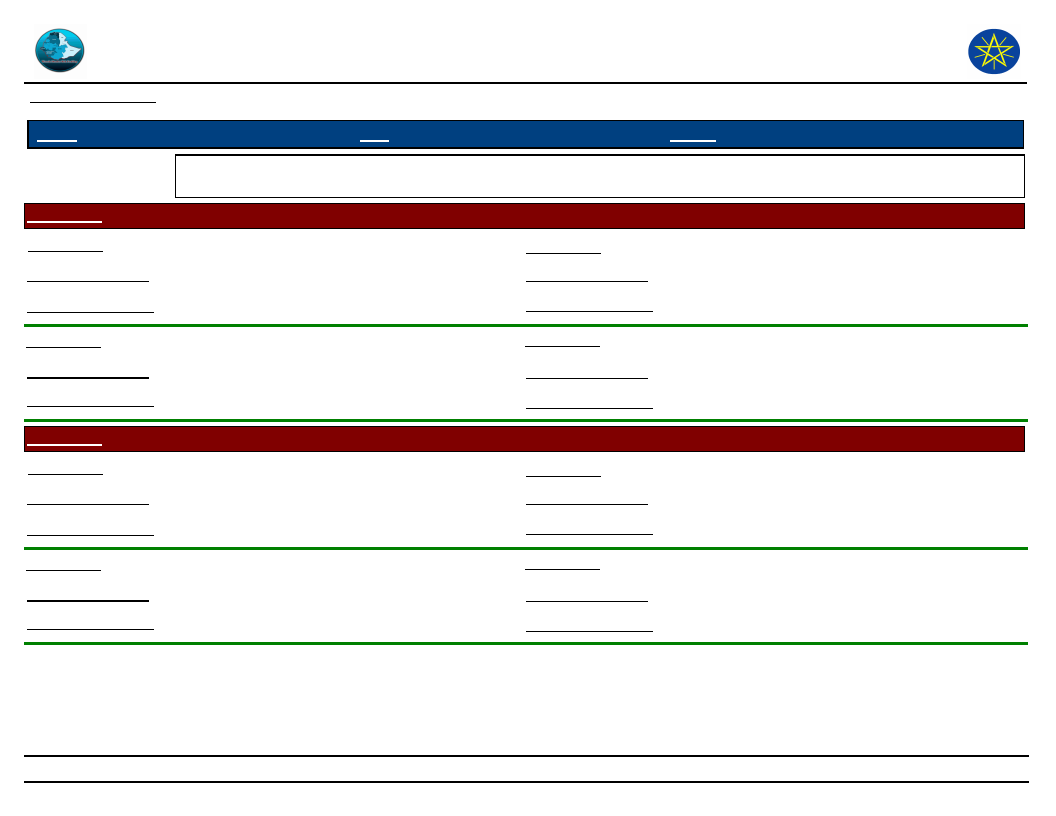
Wereda Disaster
Risk Profile
Data_Collected_Date
Disaster Risk Management
and Food Security Sector (DRMFSS)
Thursday, September 4, 2014
Region S.N.N.P
Zone HADIYA
Wereda
MIRAB BADAWOCHO
Selected Indicator
Environmental Situation: Natural Resources Availability - Natural resources available and changes observed by
the community
KebeleName
HAWORA
Resources_1
Land
Resources_3
Wood
Observed_Change_1
Decreased fertility
Observed_Change_3
Over using
Problems_Changes_1
Deforestation
Problems_Changes_3
drought
Resources_2
Observed_Change_2
Problems_Changes_2
Water
Low availability
Quality of animals reduced
Resources_4
Observed_Change_4
Problems_Changes_4
KebeleName
WADA 01
Resources_1
Land
Observed_Change_1
Decreased fertility
Problems_Changes_1
Yield reduction
Resources_2
Observed_Change_2
Problems_Changes_2
Forest
Clearing of forest
Drought
Resources_3
Observed_Change_3
Problems_Changes_3
Resources_4
Observed_Change_4
Problems_Changes_4
Wood
Small in size
Drought/ led to hunger/
77
Page 6 of 11
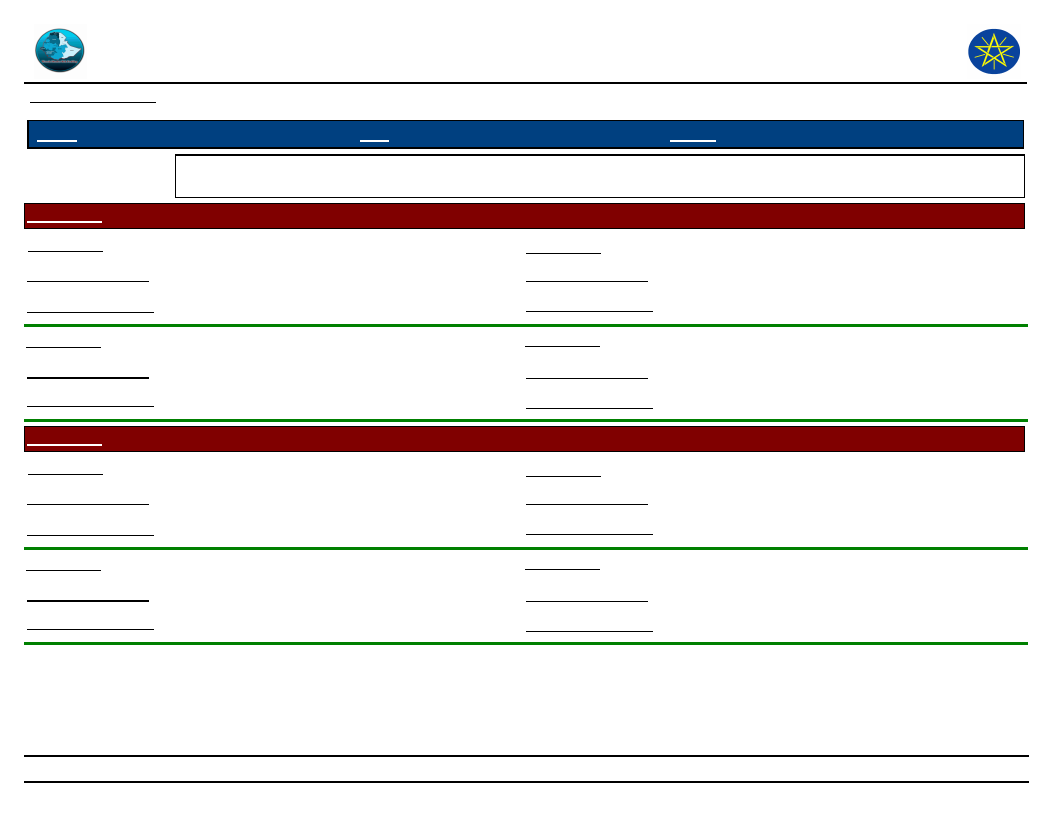
Wereda Disaster
Risk Profile
Data_Collected_Date
Disaster Risk Management
and Food Security Sector (DRMFSS)
Thursday, September 4, 2014
Region S.N.N.P
Zone HADIYA
Wereda
MIRAB BADAWOCHO
Selected Indicator
Environmental Situation: Natural Resources Availability - Natural resources available and changes observed by
the community
KebeleName
FIRST KASHERA
Resources_1
Land
Resources_3
Wood
Observed_Change_1
Decreased fertility
Observed_Change_3
Small in size
Problems_Changes_1
Yield reduction
Problems_Changes_3
Drought/ led to hunger/
Resources_2
Observed_Change_2
Problems_Changes_2
Forest
Clearing of forest
Drought
Resources_4
Observed_Change_4
Problems_Changes_4
KebeleName
JARSO MAJORIYA
Resources_1
Land
Observed_Change_1
Decreased fertility
Problems_Changes_1
Economic hard ship
Resources_2
Observed_Change_2
Problems_Changes_2
Water
Decreased
Quality reduction of livestock
Resources_3
Observed_Change_3
Problems_Changes_3
Resources_4
Observed_Change_4
Problems_Changes_4
Wood
Decreased
Exposing to drought
78
Page 7 of 11
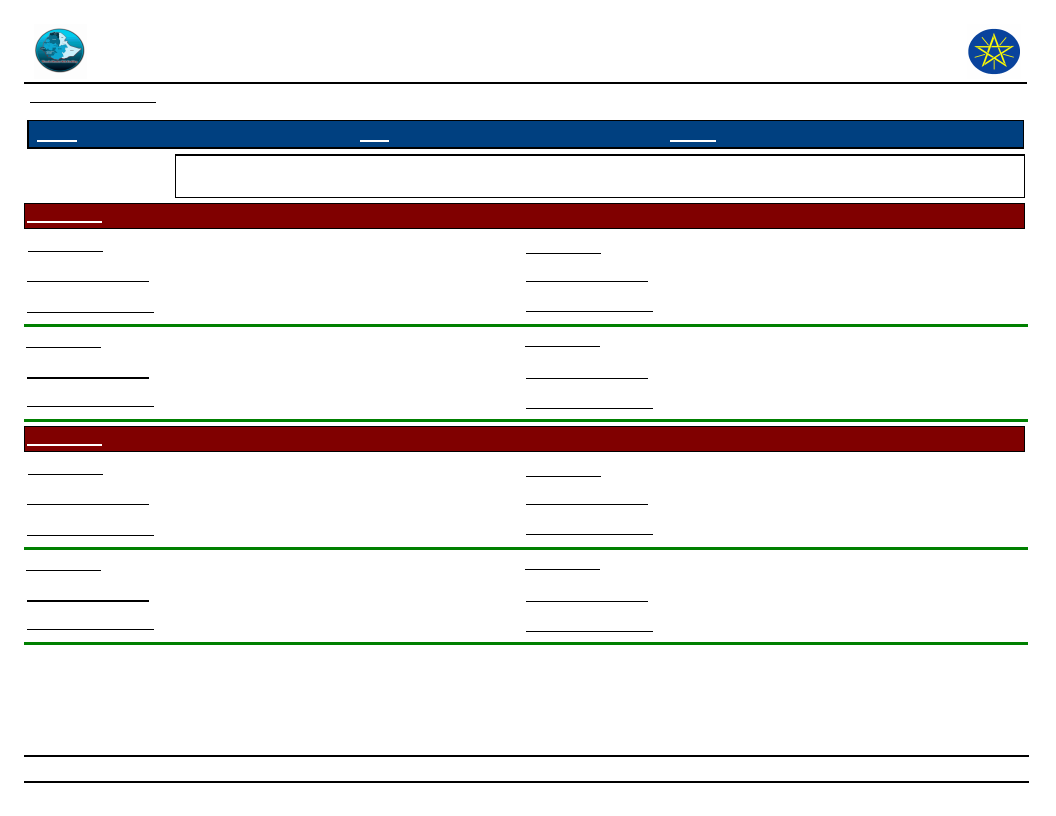
Wereda Disaster
Risk Profile
Data_Collected_Date
Disaster Risk Management
and Food Security Sector (DRMFSS)
Thursday, September 4, 2014
Region S.N.N.P
Zone HADIYA
Wereda
MIRAB BADAWOCHO
Selected Indicator
Environmental Situation: Natural Resources Availability - Natural resources available and changes observed by
the community
KebeleName
ELIFETA
Resources_1
Land
Resources_3
Forest
Observed_Change_1
Clearing of land
Observed_Change_3
Decreased
Problems_Changes_1
Exposing for drought
Problems_Changes_3
Exposing to drought
Resources_2
Observed_Change_2
Problems_Changes_2
Wood
Decreased
Exposing for drought
Resources_4
Observed_Change_4
Problems_Changes_4
KebeleName
YA BUKUNA
Resources_1
Land
Observed_Change_1
Clearing of land
Problems_Changes_1
Fertility reduction and low yield
Resources_2
Observed_Change_2
Problems_Changes_2
Water
Shortage of water
Unable to rear animals
Resources_3
Observed_Change_3
Problems_Changes_3
Resources_4
Observed_Change_4
Problems_Changes_4
Wood
Decreased in size
Exposing to drought
79
Page 8 of 11
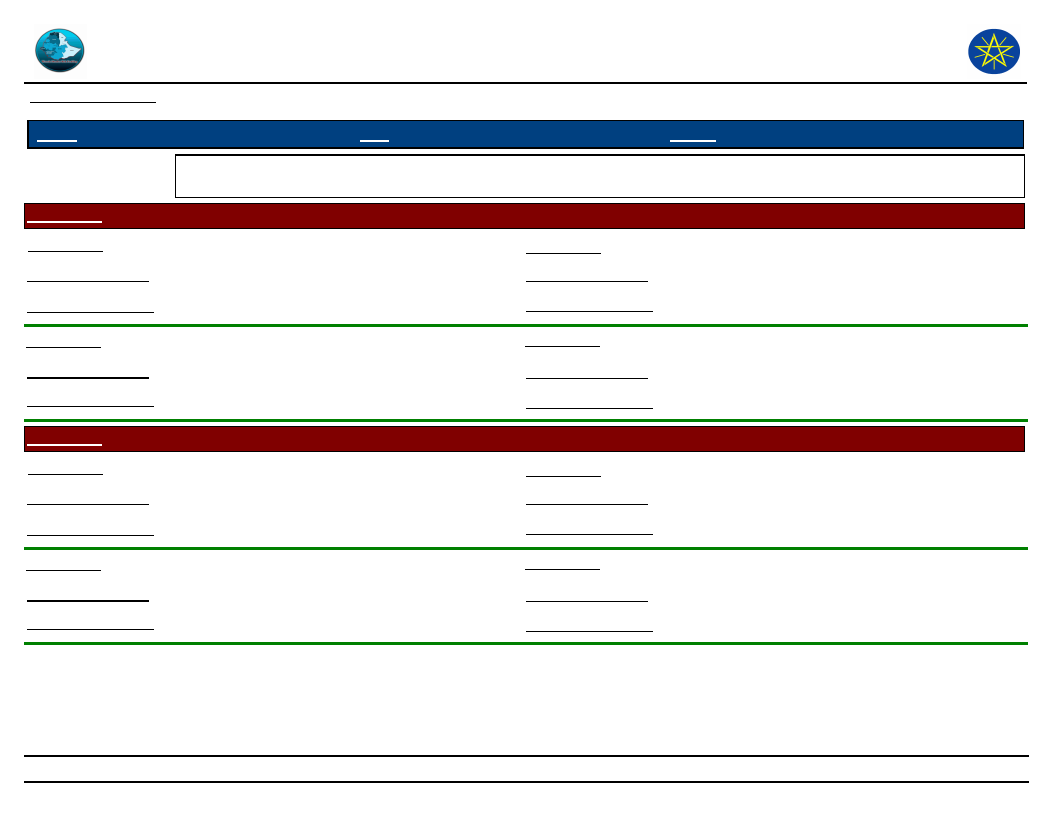
Wereda Disaster
Risk Profile
Data_Collected_Date
Disaster Risk Management
and Food Security Sector (DRMFSS)
Thursday, September 4, 2014
Region S.N.N.P
Zone HADIYA
Wereda
MIRAB BADAWOCHO
Selected Indicator
Environmental Situation: Natural Resources Availability - Natural resources available and changes observed by
the community
KebeleName
WADA
Resources_1
Land
Resources_3
Wood
Observed_Change_1
Decreased fertility
Observed_Change_3
Over using
Problems_Changes_1
Yield reduction
Problems_Changes_3
Drought
Resources_2
Observed_Change_2
Problems_Changes_2
Water
Low availability
Quality reduction of livestock
Resources_4
Observed_Change_4
Problems_Changes_4
KebeleName
SEPERA
Resources_1
Land
Observed_Change_1
Decreased fertility
Problems_Changes_1
Low productivity
Resources_2
Observed_Change_2
Problems_Changes_2
Water
Decreased
Loss of livestock quality
Resources_3
Observed_Change_3
Problems_Changes_3
Resources_4
Observed_Change_4
Problems_Changes_4
Wood
Decreased
Exposing to drought
80
Page 9 of 11
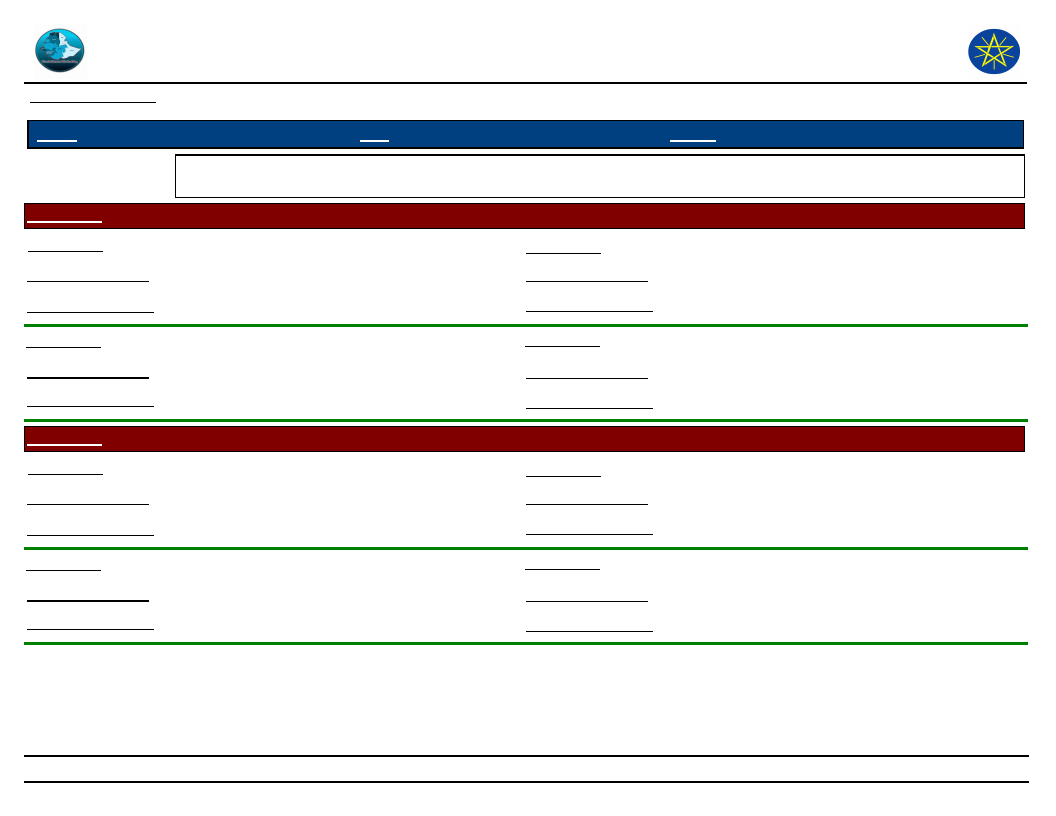
Wereda Disaster
Risk Profile
Data_Collected_Date
Disaster Risk Management
and Food Security Sector (DRMFSS)
Thursday, September 4, 2014
Region S.N.N.P
Zone HADIYA
Wereda
MIRAB BADAWOCHO
Selected Indicator
Environmental Situation: Natural Resources Availability - Natural resources available and changes observed by
the community
KebeleName
KACHA BIRA
Resources_1
Land
Resources_3
Observed_Change_1
Clearing of land
Observed_Change_3
Problems_Changes_1
Low productivity
Problems_Changes_3
Resources_2
Observed_Change_2
Problems_Changes_2
Wood
Small size
Climate change
Resources_4
Observed_Change_4
Problems_Changes_4
KebeleName
1GNA KOTO
Resources_1
Land
Observed_Change_1
Size reduction
Problems_Changes_1
Economic hard ship
Resources_2
Observed_Change_2
Problems_Changes_2
Wood
Decreased
Drought
Resources_3
Observed_Change_3
Problems_Changes_3
Resources_4
Observed_Change_4
Problems_Changes_4
Water
Decreasing
Declining yield and quality loss of livestock
81
Page 10 of 11
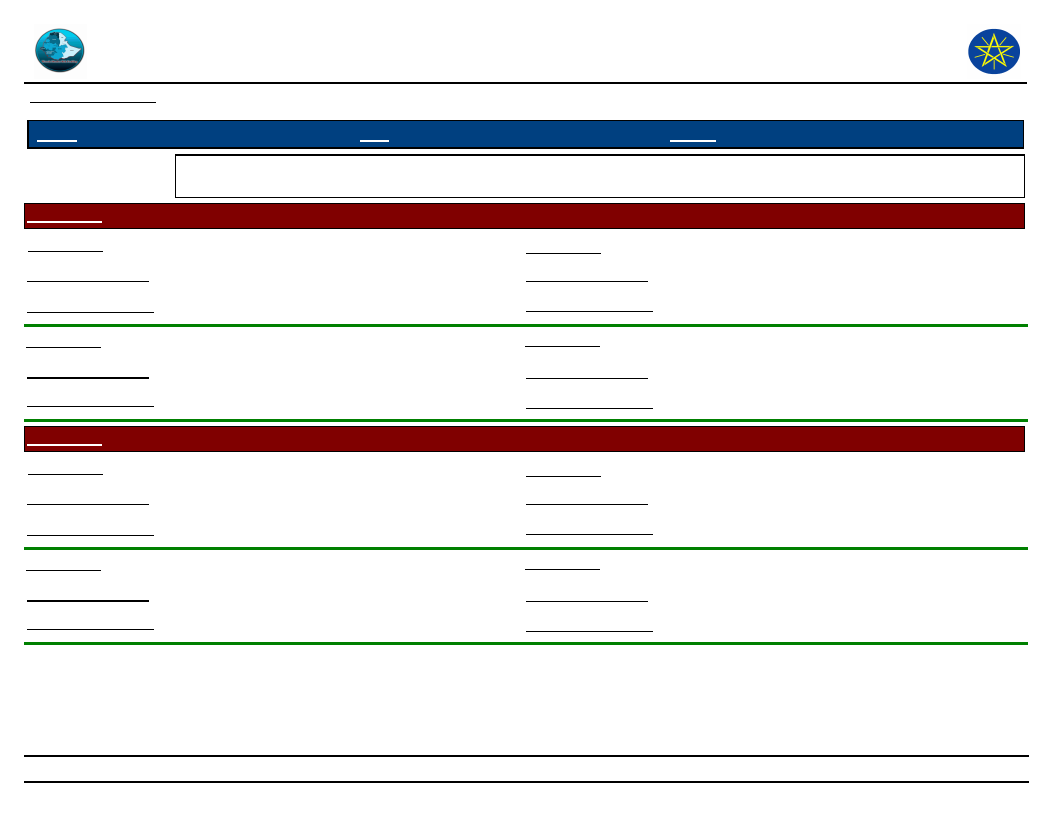
Wereda Disaster
Risk Profile
Data_Collected_Date
Disaster Risk Management
and Food Security Sector (DRMFSS)
Thursday, September 4, 2014
Region S.N.N.P
Zone HADIYA
Wereda
MIRAB BADAWOCHO
Selected Indicator
Environmental Situation: Natural Resources Availability - Natural resources available and changes observed by
the community
KebeleName
OFFDAA
Resources_1
Land
Resources_3
Wood
Observed_Change_1
Clearing of land
Observed_Change_3
Declining of wood
Problems_Changes_1
Soil erosion
Problems_Changes_3
Drought
Resources_2
Observed_Change_2
Problems_Changes_2
Water
Shortage of water
Loss of livestock quality
Resources_4
Observed_Change_4
Problems_Changes_4
KebeleName
MIRAB AJEBA
Resources_1
Land
Observed_Change_1
Decreased quality
Problems_Changes_1
Shortage of land
Resources_2
Observed_Change_2
Problems_Changes_2
Wood
Decreased
Un wise using of wood lead to economic hard
ship
Resources_3
Observed_Change_3
Problems_Changes_3
Resources_4
Observed_Change_4
Problems_Changes_4
82
Page 11 of 11
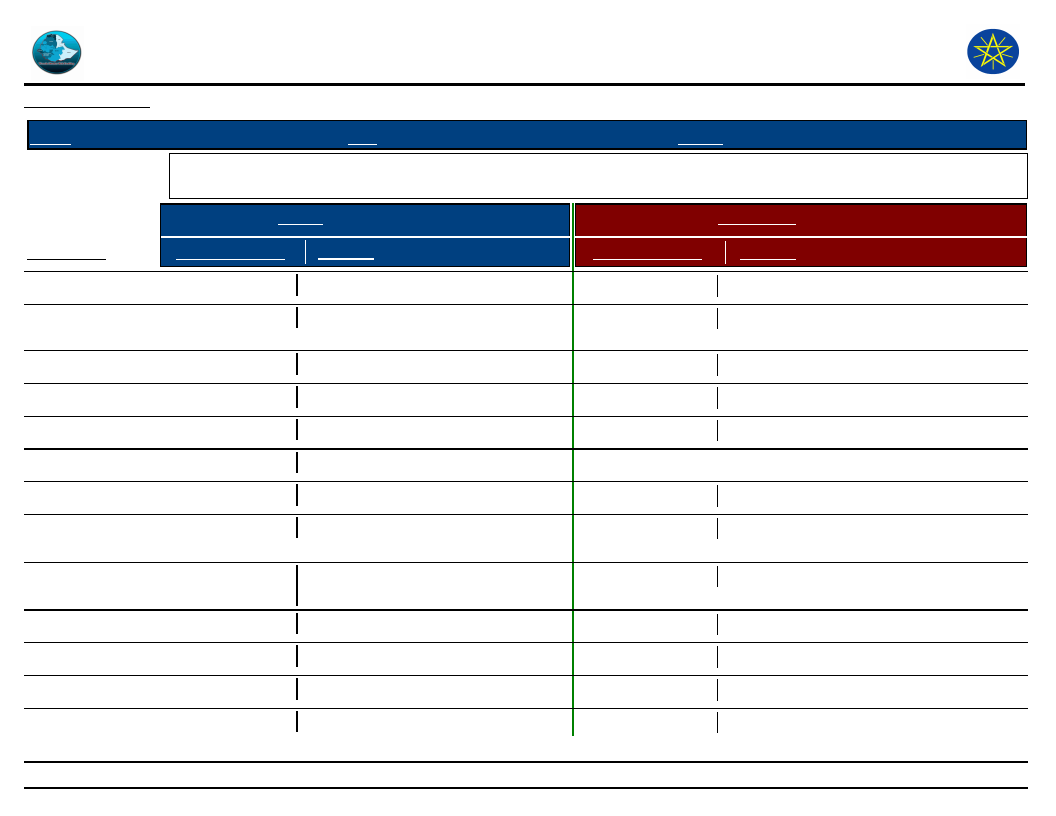
Wereda Disaster
Risk Profile
Data_Collected_Date
Disaster Risk Management
and Food Security Sector (DRMFSS)
Thursday, September 4, 2014
Region S.N.N.P
Selected Indicator
Zone HADIYA
Wereda MIRAB BADAWOCHO
Environmental Situation: Rainfall & Temperature - Observed changes on rainfall and temperature by the
community over the last decade
Rainfall
Temperature
Kebele Name
DEDO
WEBARANA
OFODA
JARISO ONIJOJO
SIBEYA
GERIBO
WEREBOYA
2GNA KOTO
HAWORA
ELIFETA
YA BUKUNA
WADA
SEPERA
KACHA BIRA
Changes Observed Problems
Decreasing
Yield reduction
Decreasing
Yield reduction
Decreasing
Decreasing
Decreasing
Decreasing
Decreasing
Shortage of rain
fall
Low
Low
Decreasing
Low
Low
Yield reduction
Yield reduction
Yield reduction
Climatic change
Yield reduction
Drought
Low productivity and shortage of
water
Low productivity
Yield reduction
Yield reduction
Delaying cultivating time
Changes Observed
Problems
Increasing
Climate change
Increasing
Yield reduction
Increasing
Increasing
Increasing
Increasing
Increasing
Increasing
Climate change
Climate change
Climate change
Drought
Because of deforestation
High
Low productivity
Increasing
Increasing
High
High
Low productivity
Climate change
Reduction of yield
Reduction of yield
83
Page 1 of 2
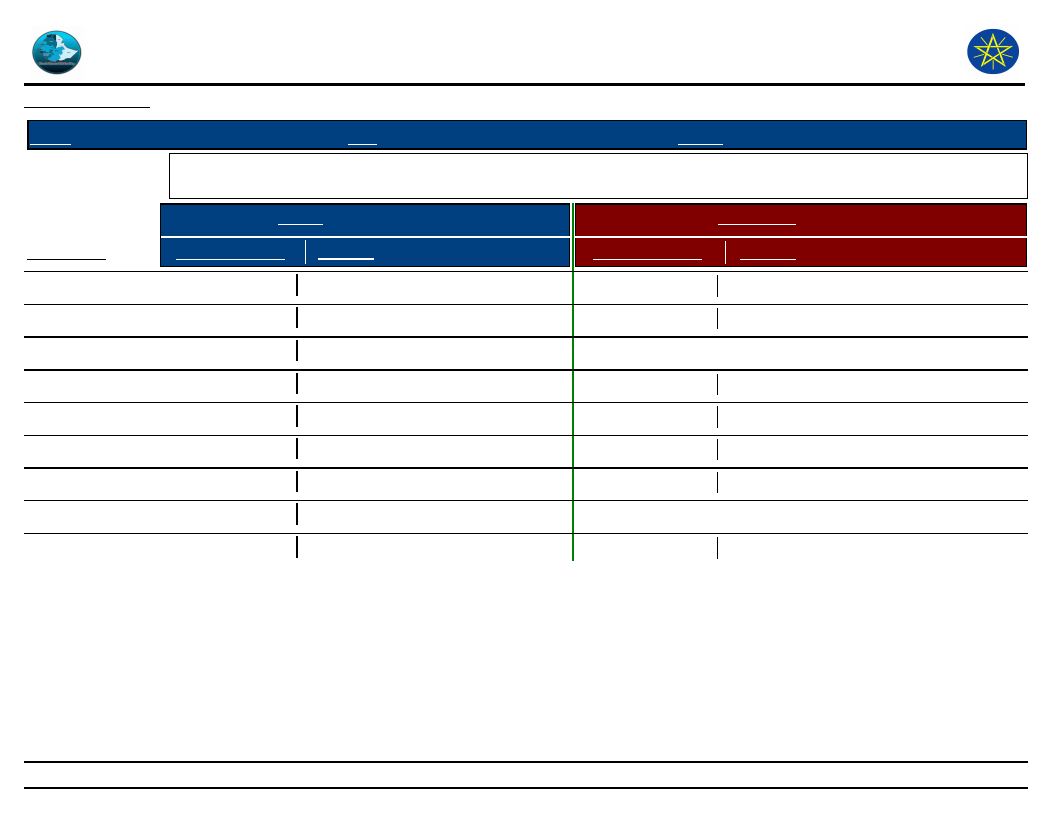
Wereda Disaster
Risk Profile
Data_Collected_Date
Disaster Risk Management
and Food Security Sector (DRMFSS)
Thursday, September 4, 2014
Region S.N.N.P
Selected Indicator
Zone HADIYA
Wereda MIRAB BADAWOCHO
Environmental Situation: Rainfall & Temperature - Observed changes on rainfall and temperature by the
community over the last decade
Rainfall
Temperature
Kebele Name
1GNA KOTO
DANAMA
DANAMA 01
2nd KESHORA
WADA 01
FIRST KASHERA
JARSO MAJORIYA
OFFDAA
MIRAB AJEBA
Changes Observed Problems
Decreasing
Low productivities
Decreasing
Yield reduction
Decreasing
Climatic change
Decreasing
Yield reduction
Low
Low quality of performance of
Low
Low quality of performance of
Decreasing
Low productivity
Decreasing
yield reduction
Low
Low productivity
Changes Observed
Problems
Increasing
Low productivity
Increasing
Drought
Increasing
Increasing
Drought
High
Drought
High
Drought
Increasing
Low productivity
Increasing
High
Shortage of water
84
Page 2 of 2
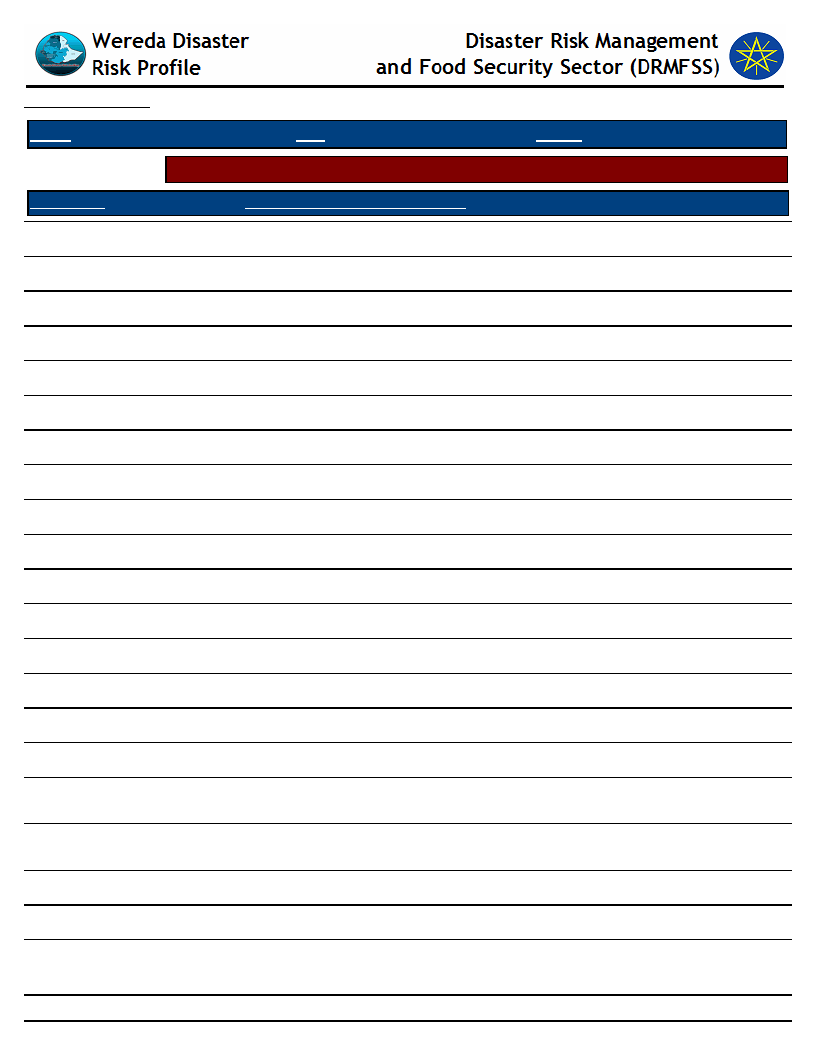
Data_Collected_Date
Thursday, September 4, 2014
Region S.N.N.P
Zone HADIYA
Wereda MIRAB BADAWOCHO
Selected Indicator
KebeleName
Environmental Situation: Reasons for Environmental Changes
Reason_For_Environmental_Changes
DEDO
Deforestation
WEBARANA OFODA
Lack of awareness about environmental changes and Deforestation
JARISO ONIJOJO
Low attention to soil and water conservation
SIBEYA
Low attention to soil and water conservation and deforestation
GERIBO
Low level of attention on soil and water conservation and deforestation,
2GNA KOTO
Lack of awareness about environmental changes and Deforestation
HAWORA
Good awarness on soil and water conservation,
ELIFETA
Population pressure and deforestation
YA BUKUNA
Population pressure, deforestation and land cleaning
WADA
Lack of awareness about environmental management, deforestation,
SEPERA
Drought and population pressure
KACHA BIRA
Population pressure
1GNA KOTO
Population pressure
DANAMA
Low of awareness about environmental changes, Deforestation
DANAMA 01
Low level of attention on soil and water conservation and deforestation
2nd KESHORA
Low attention to soil and water conservation, deforestation
WADA 01
FIRST KASHERA
JARSO MAJORIYA
Less awareness of community in keeping their environment, less
commitment
Less awareness of community in keeping their environment, less
commitment
Population pressure
OFFDAA
Population pressure
MIRAB AJEBA
Population pressure
85
Page 1 of 1
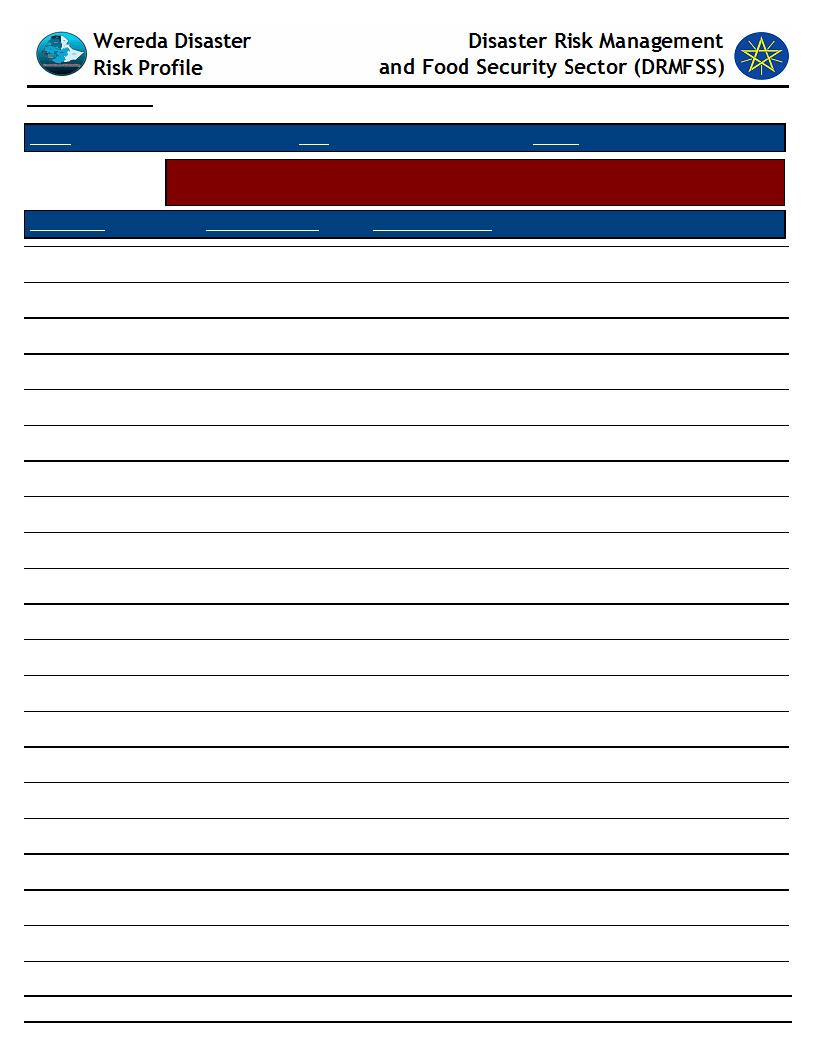
Data_Collected_Date
Thursday, September 4, 2014
Region S.N.N.P
Zone HADIYA
Wereda MIRAB BADAWOCHO
Selected Indicator
KebeleName
Environmental Situation: Soil Erosion - Observed changes on levels of soil erosion
by the community
Changes_Observed
Problems_Observed
DEDO
Decreasing
Yield reduction
WEBARANA OFODA
Decreasing
Yield reduction
JARISO ONIJOJO
Decreasing
Yield reduction
SIBEYA
Decreasing
GERIBO
Decreasing
WEREBOYA
Decreasing
Yield reduction
2GNA KOTO
Decreasing
Yield reduction
HAWORA
Increasing
Lack of soil and water conservation
ELIFETA
Low
Low productivity
YA BUKUNA
Low
Low productivity
WADA
Decreasing
Yield reduction
SEPERA
Decreasing
Yield reduction
KACHA BIRA
Medium
Low productivity
1GNA KOTO
Decreasing
Yield reduction
DANAMA
Decreasing
Yield reduction
DANAMA 01
Decreasing
Yield reduction
2nd KESHORA
WADA 01
Decreasing
Medium
Yield reduction
Yield reduction
FIRST KASHERA
Medium
Yield reduction
JARSO MAJORIYA
Decreasing
Low productivity
OFFDAA
Decreasing
Yield reduction
86
Page 1 of 2
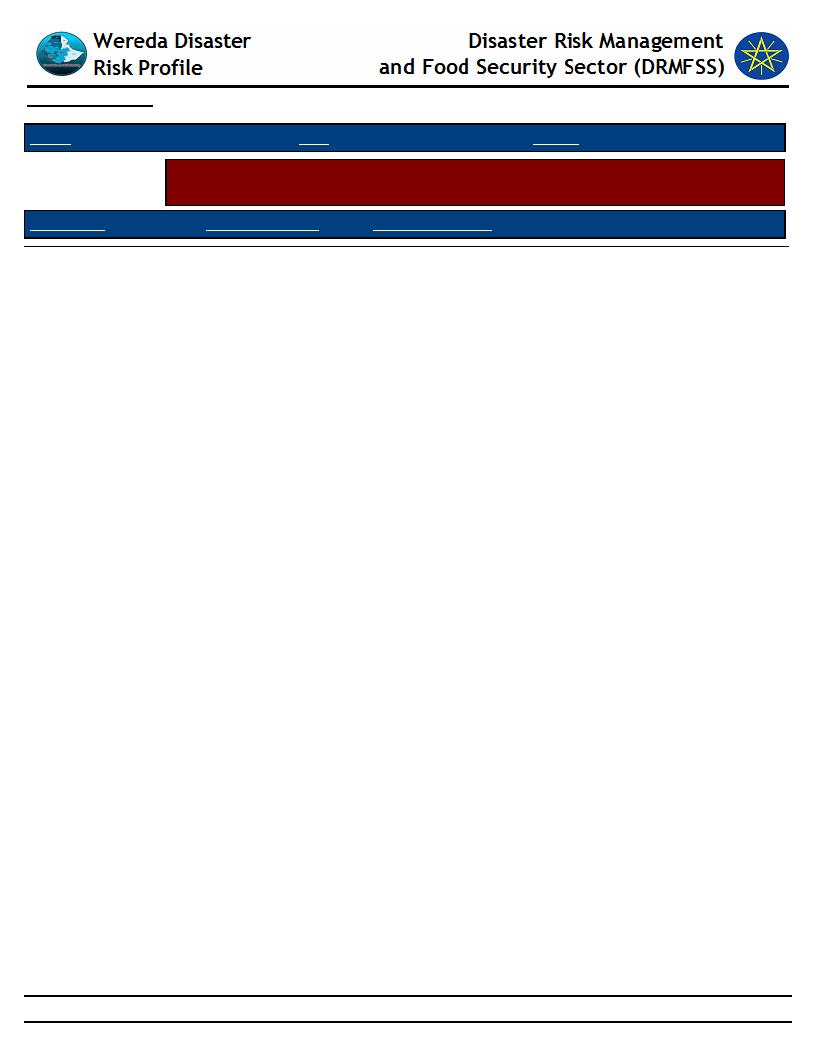
Data_Collected_Date
Thursday, September 4, 2014
Region S.N.N.P
Zone HADIYA
Wereda MIRAB BADAWOCHO
Selected Indicator
KebeleName
Environmental Situation: Soil Erosion - Observed changes on levels of soil erosion
by the community
Changes_Observed
Problems_Observed
MIRAB AJEBA
Decreasing
Low productivity
87
Page 2 of 2
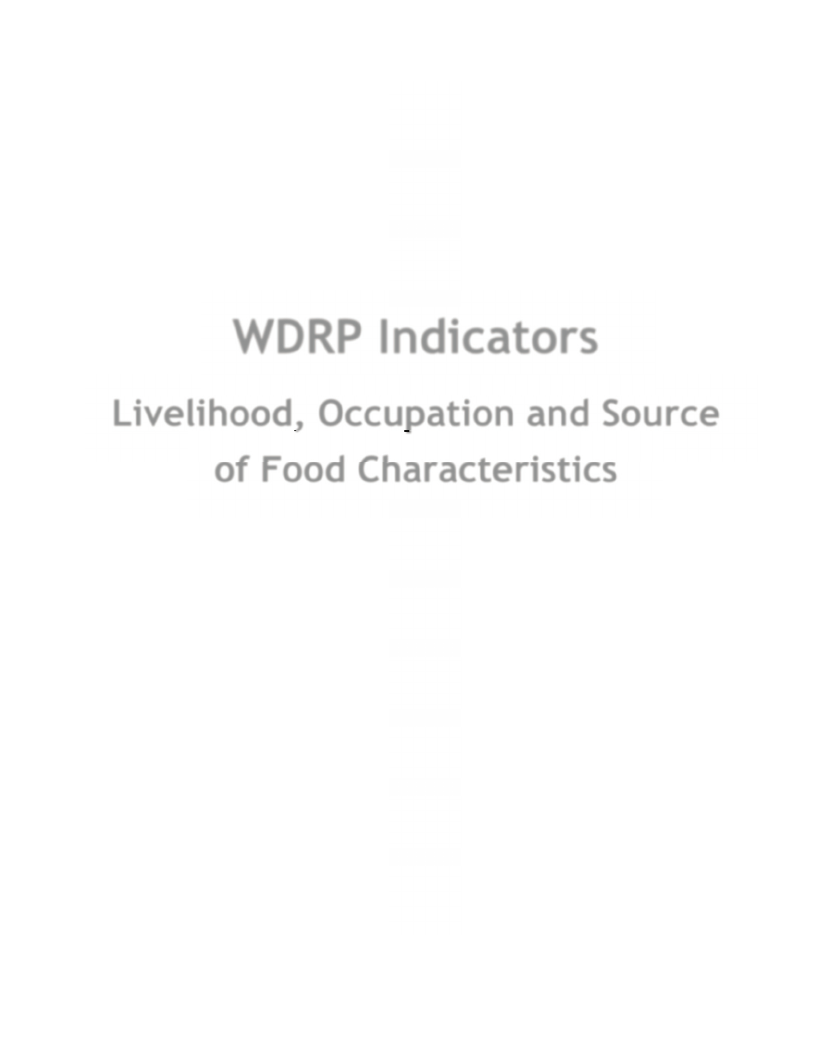
WDRP Indicators
Livelihood, Occupation and Source
of Food Characteristics
88
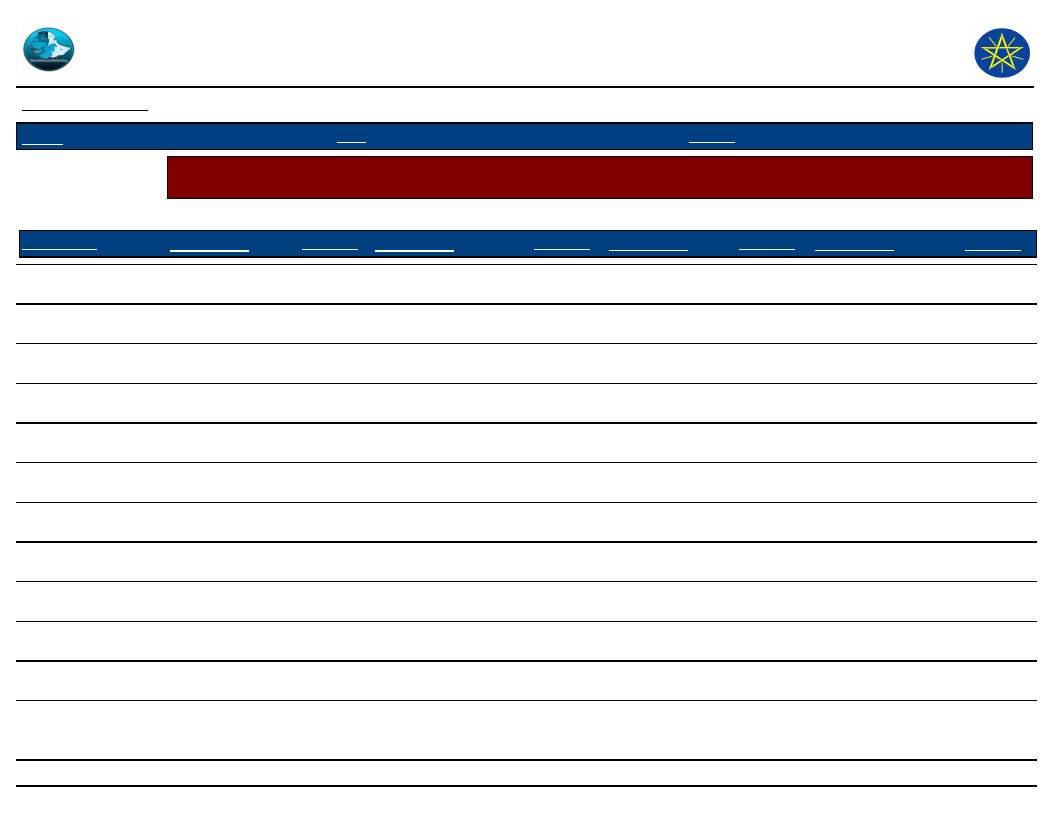
Wereda Disaster
Risk Profile
Data_Collected_Date
Disaster Risk Management and Food
Security Sector (DRMFSS)
Thursday, September 4, 2014
Region S.N.N.P
Zone
HADIYA
Wereda MIRAB BADAWOCHO
Selected Indicator
Economic Vulnerability: Major Occupational Categories - Major categories of occupation and percent of population
engaged in the occupation by Kebele
Occupational Categories and Percent of Population engaged within these occupational categories
Percent (%) of Population
KebeleName
Occupation 1
Population Occupation 2
Population Occupation 3
Population Occupation 4
Population
DEDO
Agricultural activities
Monthly salary paid
Labour work
Trading
WEBARANA OFODA
Agricultural activities
Monthly salary paid
Labour work
Trading
JARISO ONIJOJO
Agricultural activities
Monthly salary paid
Labour work
Trading
SIBEYA
Agricultural activities
Monthly salary paid
Trading
Daily labour works
GERIBO
Agricultural activities
Monthly salary paid
Trading
Daily labour works
WEREBOYA
Agricultural activities
Monthly salary paid
Labour work
Trading
2GNA KOTO
Agricultural activities
Monthly salary paid
Trading
Daily labour works
HAWORA
Trading
Agricultural activities
Labour work
ELIFETA
Agricultural activities
Trading
Labour work
YA BUKUNA
Agricultural activities
Trading
Monthly salary paid
WADA
Agricultural activities
Monthly salary paid
Trading
SEPERA
Agricultural activities
Trading
89
Page 1 of 2
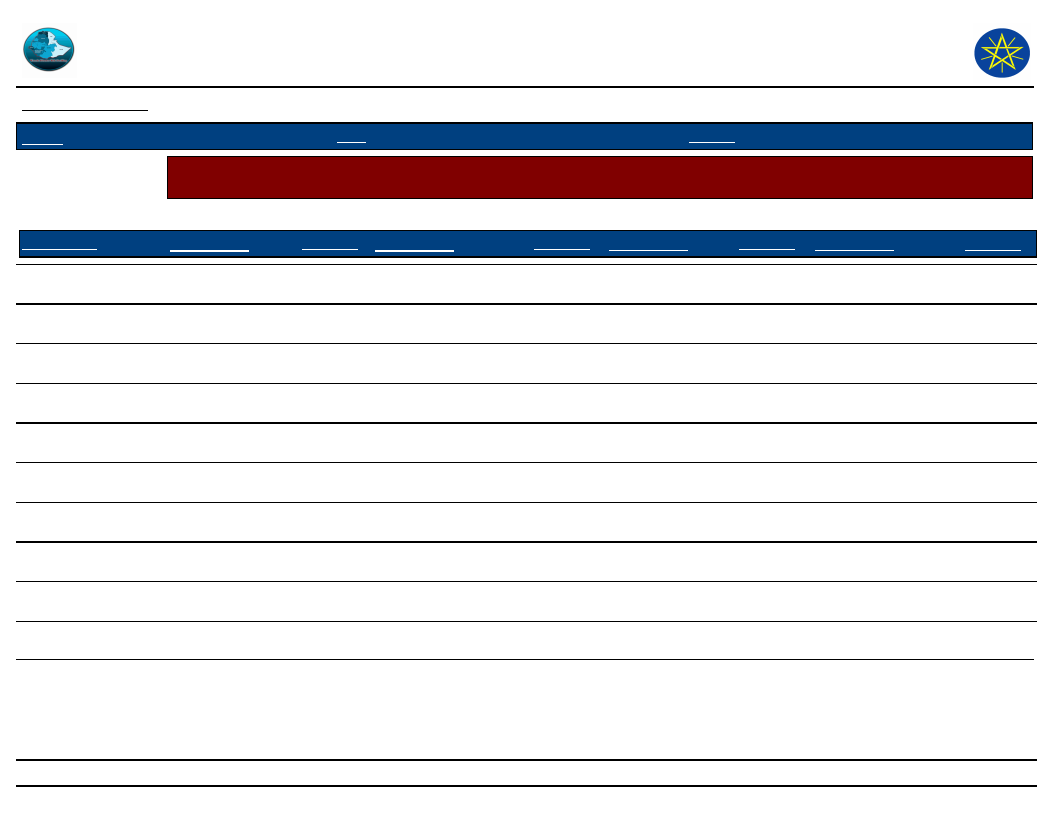
Wereda Disaster
Risk Profile
Data_Collected_Date
Disaster Risk Management and Food
Security Sector (DRMFSS)
Thursday, September 4, 2014
Region S.N.N.P
Zone
HADIYA
Wereda MIRAB BADAWOCHO
Selected Indicator
Economic Vulnerability: Major Occupational Categories - Major categories of occupation and percent of population
engaged in the occupation by Kebele
Occupational Categories and Percent of Population engaged within these occupational categories
Percent (%) of Population
KebeleName
Occupation 1
Population Occupation 2
Population Occupation 3
Population Occupation 4
Population
KACHA BIRA
Agricultural activities
Trading
Monthly salary paid
1GNA KOTO
Agricultural activities
Trading
Labour work
DANAMA
Agricultural activities.
80% Monthly salary paid.
5%
Labour work
10%
Trading
5%
DANAMA 01
Agricultural activities.
75% Monthly salary paid.
10%
Trading
10%
Daily labour works.
5%
2nd KESHORA
Agricultural activities.
80% Monthly salary paid.
5%
Labour work
10%
Trading
5%
WADA 01
Agricultural activities.
90% Trading
5%
Monthly salary paid.
5%
FIRST KASHERA
Agricultural activities.
90% Trading
5%
Monthly salary paid.
5%
JARSO MAJORIYA
Agricultural activities.
80% Trading
10%
Labour work
5%
Monthly salary paid.
5%
OFFDAA
Agricultural activities.
80% Trading
10%
Labour work
10%
MIRAB AJEBA
Agricultural activities.
90% Labour working.
10%
90
Page 2 of 2
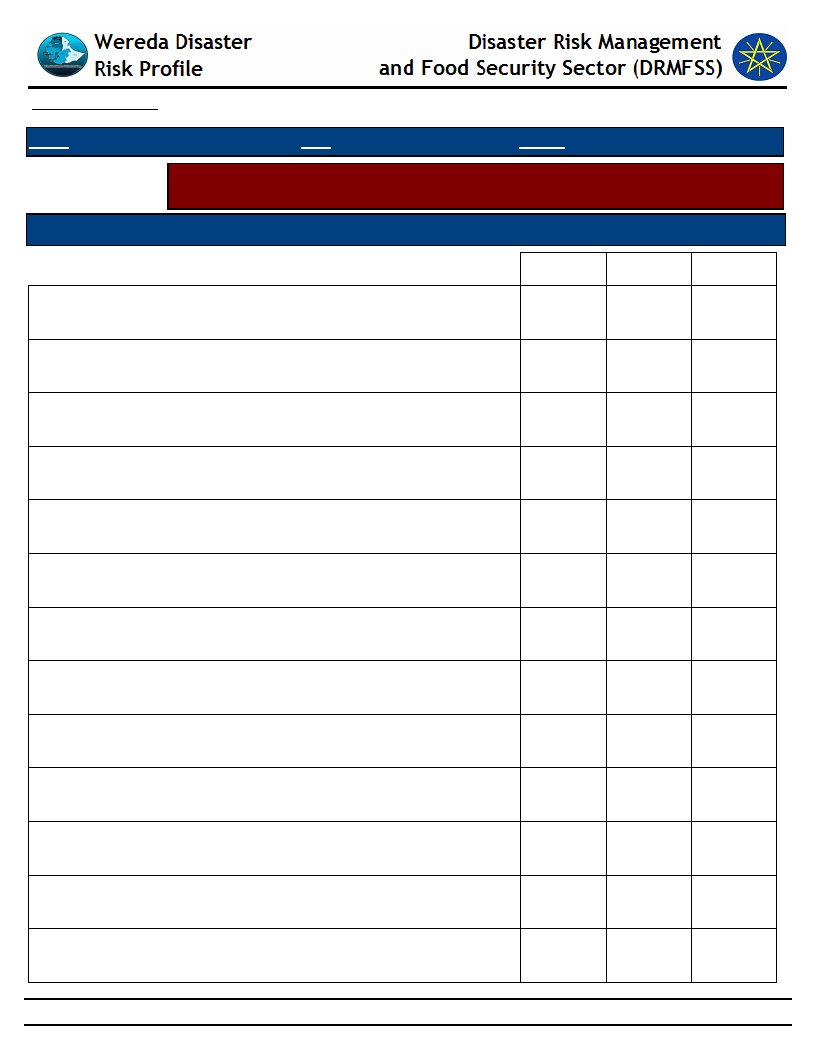
Data_Collected_Date
Thursday, September 4, 2014
Region S.N.N.P
Zone HADIYA
Wereda MIRAB BADAWOCHO
Selected Indicator
Economic Vulnerability: Livelihoods - Households important sources of
livelihood (response in %)
Type of Livelihood Activity
Order of Importnce
Agricultural laborer
1st
1st Importa
3rd
0.40
0.70
1.50
Basket-making, Mat-making
0.00
0.70
0.00
Buying and selling livestock (cattle, sheep, goats, camels)
8.50
6.40
15.00
Carpenter, Furniture-maker, or Metal-worker
1.70
0.50
0.00
Construction worker (masonry)
0.00
0.50
0.00
Counselor (disputes, marriage)
0.00
0.00
0.40
Daily laborer
7.00
4.20
2.60
Making traditional utensils or farm tools
0.20
0.00
0.00
Pottery
0.20
0.00
0.00
Rearing & selling animals (camels, cattle, sheep, goats)
6.00
23.60
14.30
Salaried job
1.50
1.00
0.00
Sale_Of_Natural_Products - Animal feed (grass, fodder, forage, salty
sand, etc.)
Sale_Of_Natural_Products - Charcoal
0.40
1.70
2.60
0.60
0.50
3.30
91
Page 1 of 3
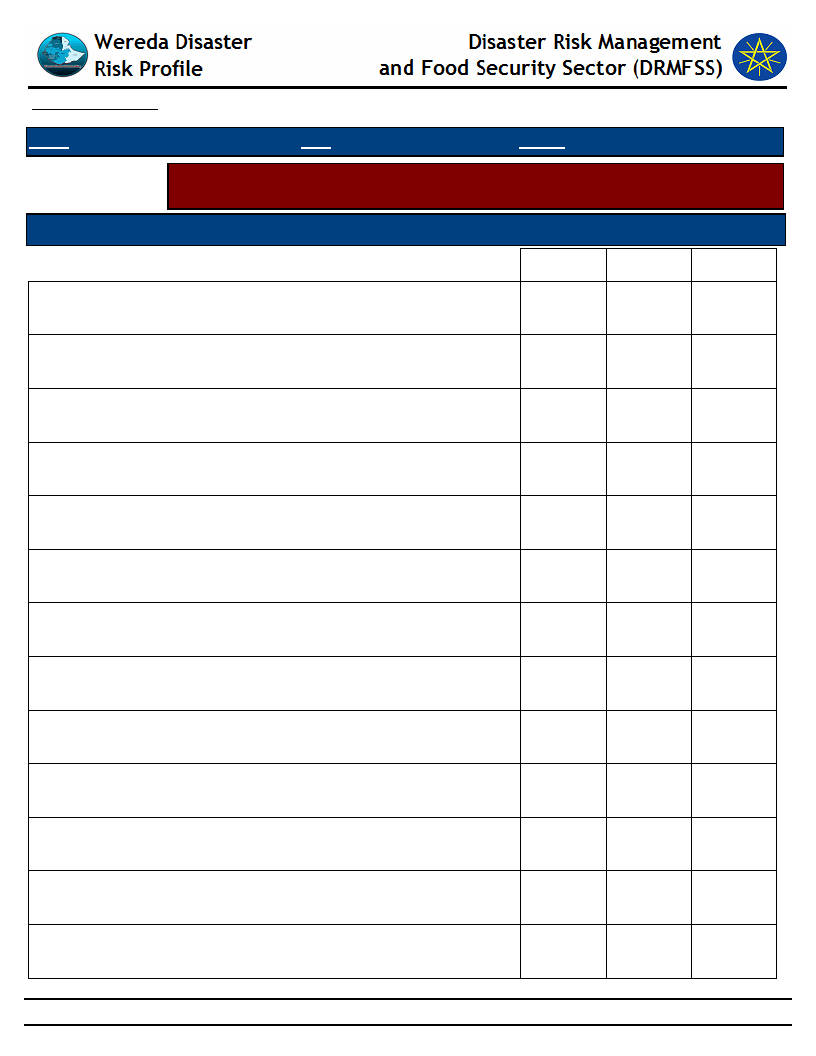
Data_Collected_Date
Thursday, September 4, 2014
Region S.N.N.P
Zone HADIYA
Wereda MIRAB BADAWOCHO
Selected Indicator
Economic Vulnerability: Livelihoods - Households important sources of
livelihood (response in %)
Type of Livelihood Activity
Order of Importnce
1st
1st Importa
3rd
Sale_Of_Natural_Products - Firewood
0.20
1.70
1.80
Sale_Of_Natural_Products - Incense, frankincense, and natural gum
0.00
0.00
0.40
Sale_Of_Natural_Products - Precious stones (gold, gem-stones)
0.00
0.00
0.40
Sale_Of_Natural_Products - Water
0.00
0.20
0.00
Sale_Of_Natural_Products - Wild fruits
0.00
0.00
0.40
Selling Building materials and hardware
0.00
0.20
0.00
Selling Cereal food crops (sorghum, maize, wheat, barley)
63.60
15.50
3.70
Selling dairy products (milk, butter, ghee, cheese)
1.50
3.70
3.30
Selling eggs (from own chickens) Beekeeping (selling honey
bees-wax, or bee-hives)
Selling fruit juice (orange, etc) or soft drink (Fanta, etc)
0.00
0.20
0.00
0.20
0.00
0.00
Selling Fruits (mango, papaya, banana, orange, lemon, etc.)
2.10
11.10
28.60
Selling hides and skins (from goats, sheep, cattle)
0.20
0.20
0.00
Selling meat (from own livestock)
0.00
0.20
0.70
92
Page 2 of 3
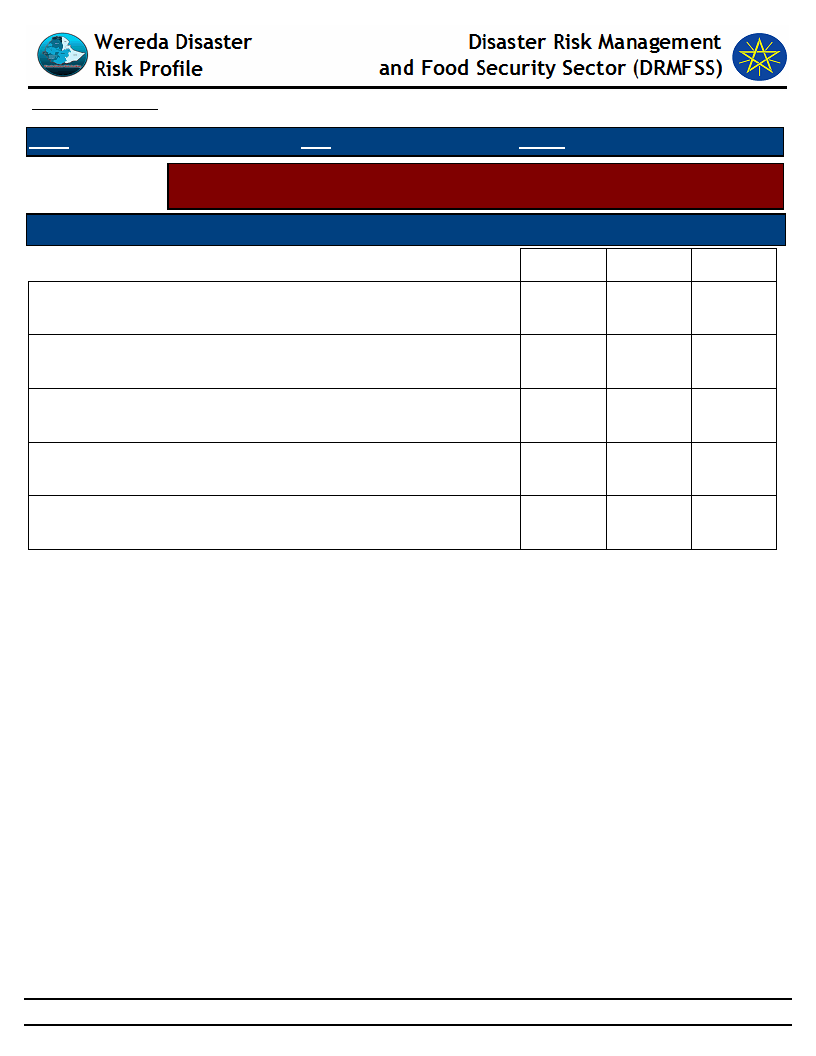
Data_Collected_Date
Thursday, September 4, 2014
Region S.N.N.P
Zone HADIYA
Wereda MIRAB BADAWOCHO
Selected Indicator
Economic Vulnerability: Livelihoods - Households important sources of
livelihood (response in %)
Type of Livelihood Activity
Order of Importnce
1st
1st Importa
3rd
Selling Oil seeds (sesame, sunflower)
0.00
0.00
1.50
Selling Other foods (sugar, flour, coffee, etc.)
2.10
5.90
5.10
Selling Pulses (beans, cow-pea, chick-pea)
0.00
0.50
0.00
Selling Root crops (Irish potato, sweet potato)
3.20
18.40
9.20
Selling Vegetables (onion, tomato, cabbage, pumpkin, etc.)
0.00
2.20
4.40
93
Page 3 of 3
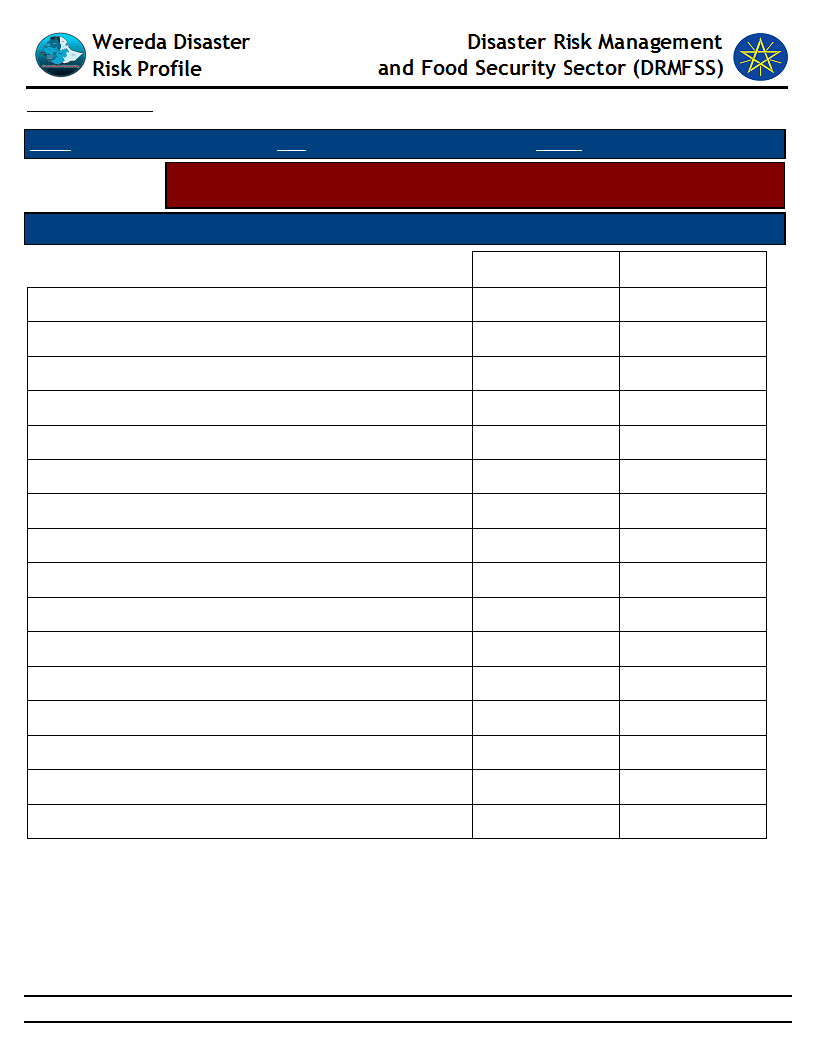
Data_Collected_Date
Thursday, September 4, 2014
Region S.N.N.P
Zone HADIYA
Wereda MIRAB BADAWOCHO
Selected Indicator
Economic Vulnerability: Occupational Categories - Percent of population
above 15 years age by occupation categories
Type of Livelihood Activity
Main Occupation
Secondary Occupation
Below school age children
Cultivator
Neither studying nor working nor seeking work
None
Others (specify)
Physically disabled
Retired/ Old
Salaried
Student
Unemployed & seeking work
Agricultural labourer
Craftsman
Home-maker (housewife)
Livestock rearing
Non-agricultural labour
Shopkeeper and Petty trade
1st Occupation
0.30
29.00
1.30
0.00
0.40
0.20
1.90
1.90
27.00
2.30
0.80
0.70
30.00
0.20
0.90
2.60
2nd Occupation
0.00
9.30
0.20
3.50
0.20
0.00
1.20
7.90
3.50
4.00
8.20
7.00
5.60
21.30
8.40
14.00
94
Page 1 of 1
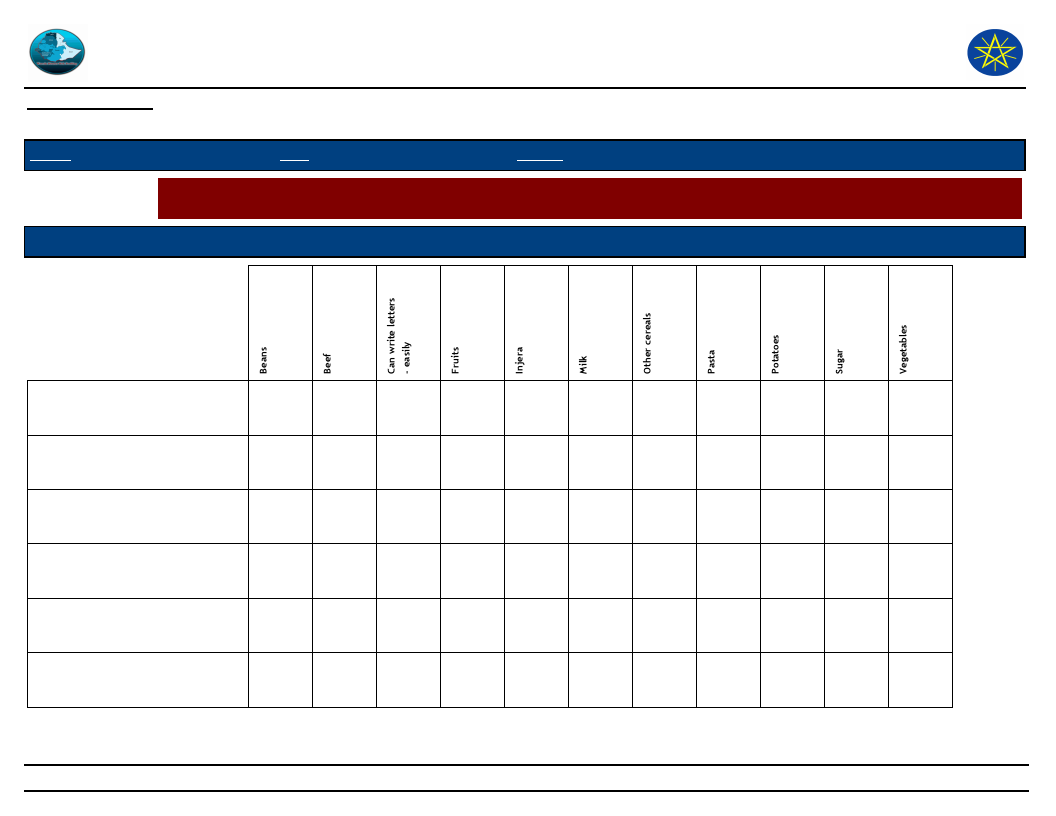
Wereda Disaster
Risk Profile
Data_Collected_Date
Disaster Risk Management
and Food Security Sector (DRMFSS)
Thursday, September 4, 2014
Region S.N.N.P
Zone HADIYA
Wereda MIRAB BADAWOCHO
Economic Vulnerability: Sources of Food - Households source for different food items (response in %)
Selected Indictor:
Source of Food
Types of Food Item
Begging
Borrowed
Casual labor
Free meals/Food assistance
Gathering catching
Gifts from friends/neighbors
0.60
1.00
3.30
1.70
3.75
0.90
4.30
1.00
1.70
2.10
40.00
4.60
2.50
4.40
1.40
15.80
4.10
2.90
4.10
2.10
0.40
1.40
1.00
1.20
0.60
0.80
1.80
0.70
18.00
0.60
95
0.60
5.20
Page 1 of 2
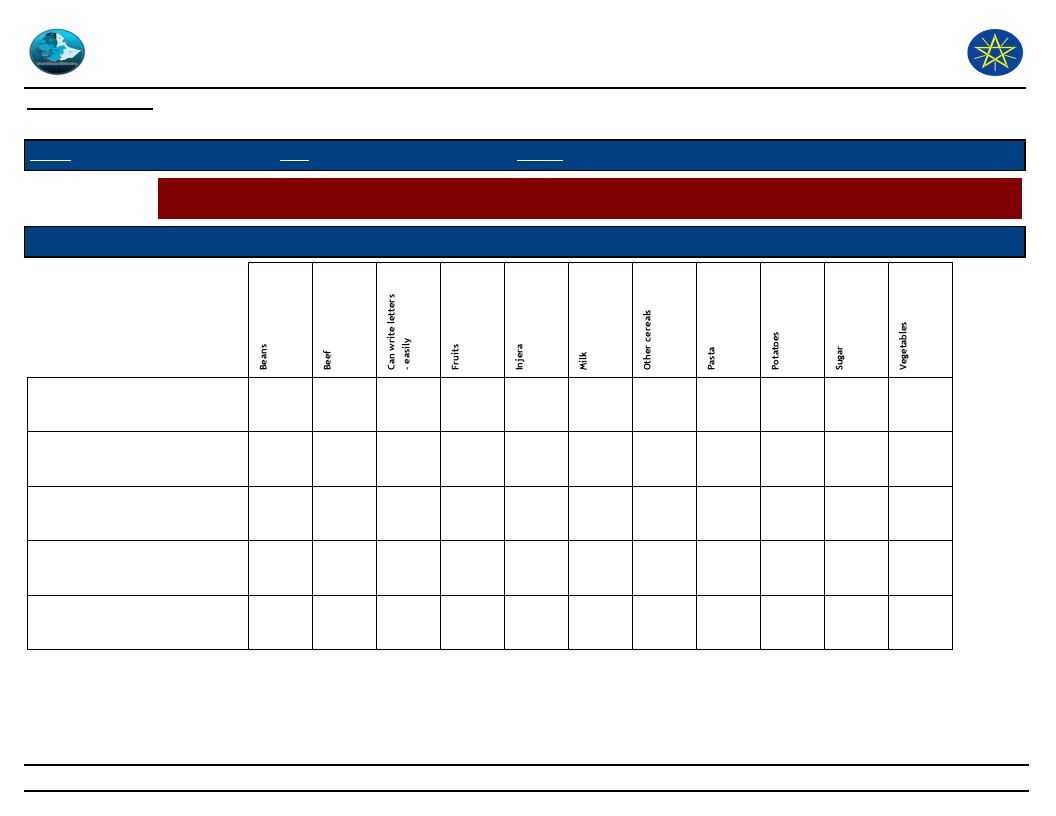
Wereda Disaster
Risk Profile
Data_Collected_Date
Disaster Risk Management
and Food Security Sector (DRMFSS)
Thursday, September 4, 2014
Region S.N.N.P
Zone HADIYA
Wereda MIRAB BADAWOCHO
Economic Vulnerability: Sources of Food - Households source for different food items (response in %)
Selected Indictor:
Source of Food
Types of Food Item
Other
Own cultivation/production
Purchase from roadside
vendor/tuck shop
Purchase subsidized food
from Kebele shop
Purchases from main shop
10.00
0.40
0.40
4.10
6.70
28.30
26.25
54.00
89.20
12.90
2.10
4.00
16.90
52.60
6.70
32.90
52.50
27.90
5.80
48.90
36.10
67.60
38.10
66.90
0.40
2.50
2.20
5.80
3.20
36.10
33.30
27.40
12.50
8.00
0.70
55.70
15.00
61.90
7.10
96
Page 2 of 2
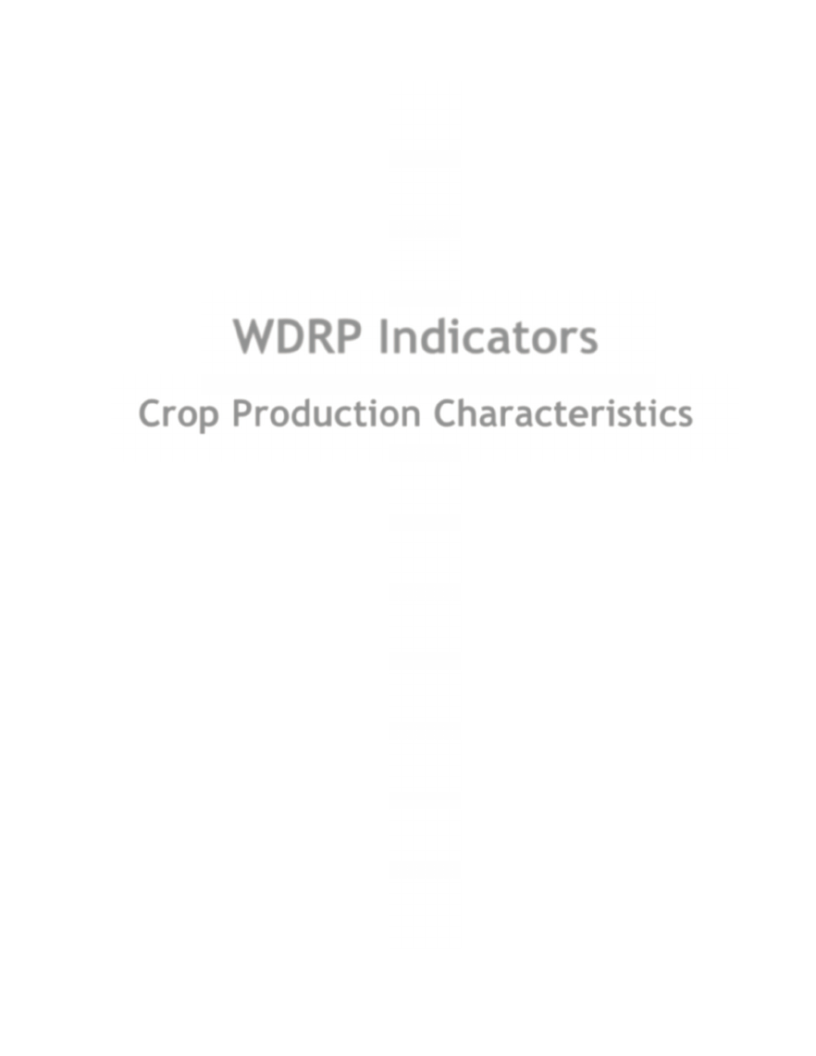
WDRP Indicators
Crop Production Characteristics
97
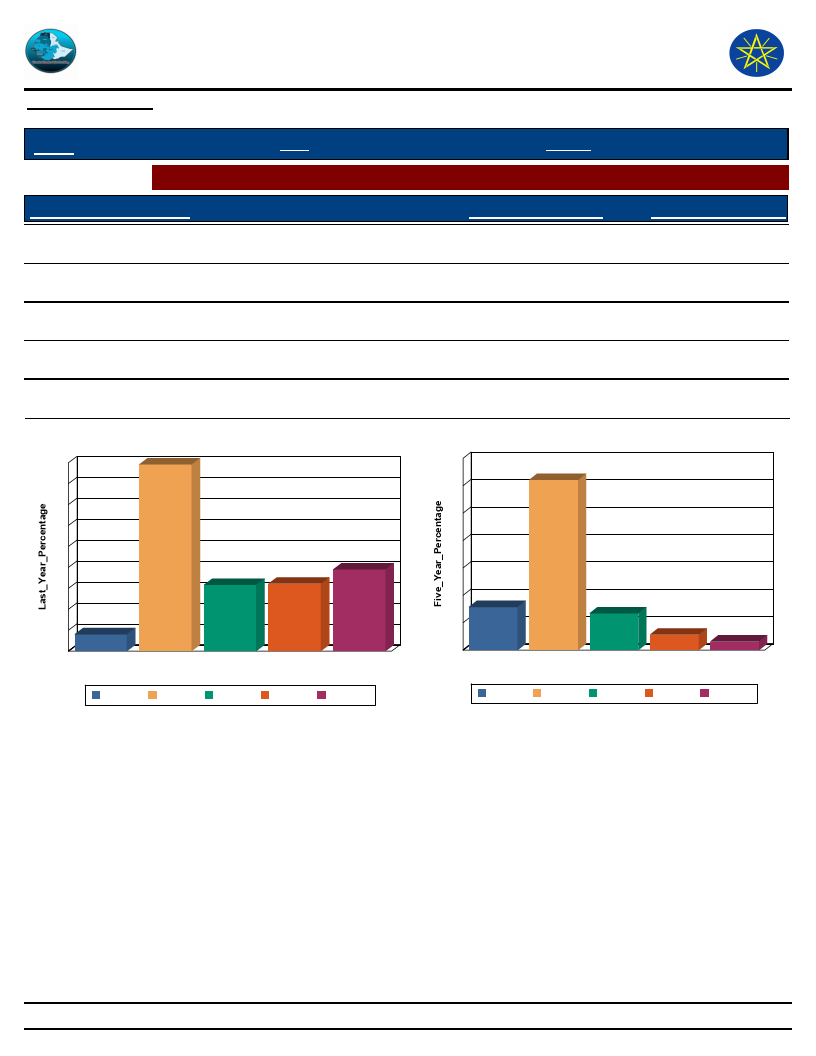
Wereda Disaster
Risk Profile
Data_Collected_Date
Disaster Risk Management
and Food Security Sector (DRMFSS)
Thursday, September 4, 2014
Region S.N.N.P
Zone HADIYA
Wereda MIRAB BADAWOCHO
Selected Indictor: Hazards: Change in Crop Damages - Proportion of Total Crop Damage
Extent of Crop Damage (%)
0
Last_Year_Percentage
4.00
Five_Year_Percentage
15.70
1-25
44.60
62.10
26 - 50
15.80
13.40
51 - 75
16.10
5.60
76 - 100
19.50
3.10
Extent of Crop Damage Last_Year
45
45
40
35
30
25
20
20
16
16
15
10
5
4
0
0
1-25
26 - 50
51 - 75
Extent of Crop Damage
76 - 100
0
1-25
26 - 50
51 - 75
76 - 100
Extent of Crop Damage Five Years Ago
70
62
60
50
40
30
20
16
10
0
0
0
13
6
1-25
26 - 50
51 - 75
Extent of Crop Damage
1-25
26 - 50
51 - 75
3
76 - 100
76 - 100
98
Page 1 of 1
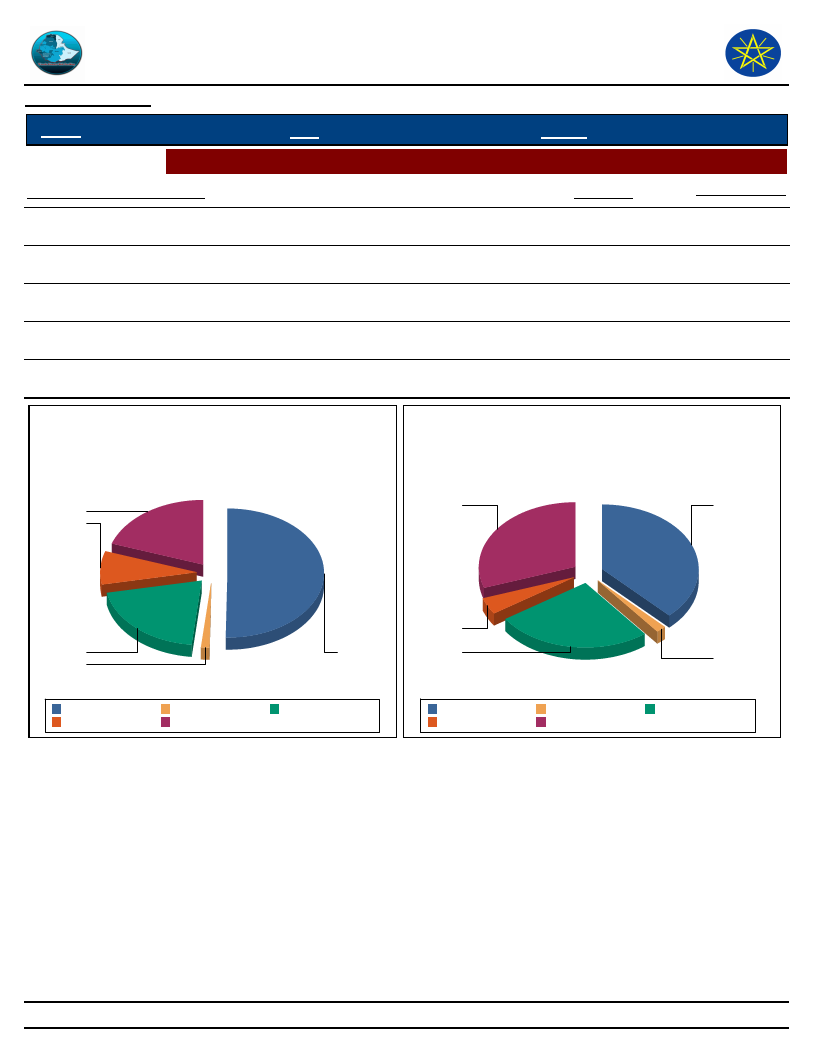
Wereda Disaster
Risk Profile
Data_Collected_Date
Disaster Risk Management
and Food Security Sector (DRMFSS)
Thursday, September 4, 2014
Region S.N.N.P
Zone HADIYA
Wereda MIRAB BADAWOCHO
Selected Indictor: Hazards: Change in Crop Damages - Major reasons for crop damage
Major Reason of Crop Damage
Last_Year
Five_Year_Ago
Pests
19.60
29.90
Drought
50.30
37.50
Flood
1.20
1.50
Frost/Cold Waves
20.20
26.10
Others (Specify)
8.50
4.10
Major Reason of Crop Damage -
Last Year
19.6
8.5
Major Reason of Crop Damage -
Five Years Ago
Pests
Drought
20.2
1.2
Drought
Others (Specify)
Flood
Pests
50.3
Others
(Specify)
Frost/Cold
Waves
Frost/Cold Waves
Drought
Others (Specify)
Flood
Pests
Flood
Frost/Cold Waves
99
Page 1 of 1
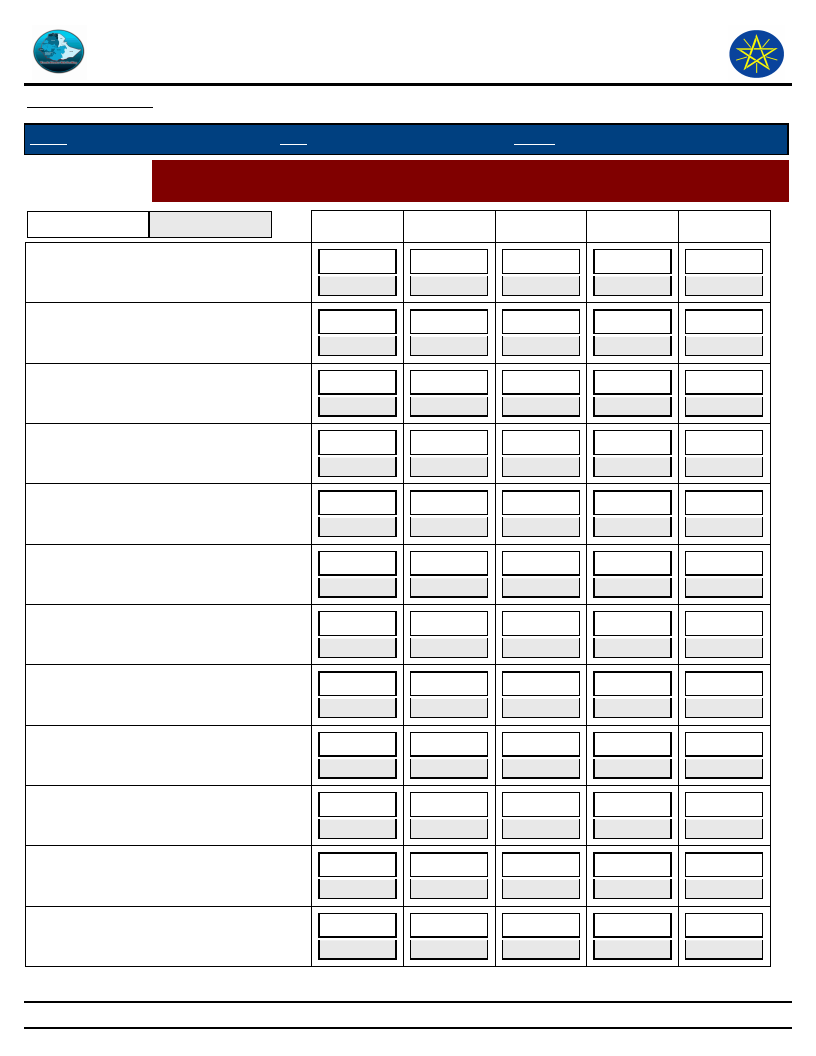
Wereda Disaster
Risk Profile
Data_Collected_Date
Disaster Risk Management
and Food Security Sector (DRMFSS)
Thursday, September 4, 2014
Region S.N.N.P
Zone HADIYA
Wereda MIRAB BADAWOCHO
Selected Indictor:
Hazards: Change in Crop Damages - Proportion of Damage for Major Crops
(percentage response by households)
Last Year
Five Years Ago
0%
1 – 25 %
26 – 50 %
51 – 75 %
76 – 100 %
Fruits
0.00
100.00
0.00
0.00
0.00
0.00
0.00
0.00
0.00
0.00
Barley
0.00
0.00
0.00
0.00
0.00
0.00
100.00
0.00
0.00
0.00
Beans
4.00
24.00
36.00
24.00
12.00
0.00
33.30
33.30
33.30
0.00
Coffee
6.30
18.80
0.00
37.50
37.50
22.20
77.80
0.00
0.00
0.00
Enset
13.80
11.40
34.50
54.30
6.90
34.30
13.80
0.00
31.00
0.00
Lentils
25.00
25.00
0.00
0.00
0.00
0.00
100.00
0.00
50.00
0.00
Linseed
0.00
0.00
0.00
0.00
0.00
0.00
100.00
0.00
0.00
0.00
Maize
4.30
10.70
43.40
61.50
11.00
15.00
18.10
8.60
23.10
4.30
Neug
0.00
100.00
0.00
0.00
0.00
0.00
0.00
0.00
0.00
0.00
Other cash crop
0.00
100.00
0.00
0.00
0.00
0.00
0.00
50.00
0.00
50.00
Other grain (specify)
0.00
57.10
0.00
0.00
42.90
25.00
50.00
25.00
0.00
0.00
Other pulses
1.80
48.20
28.10
12.30
9.60
25.20
68.90
2.50
0.00
3.40
100
Page 1 of 2
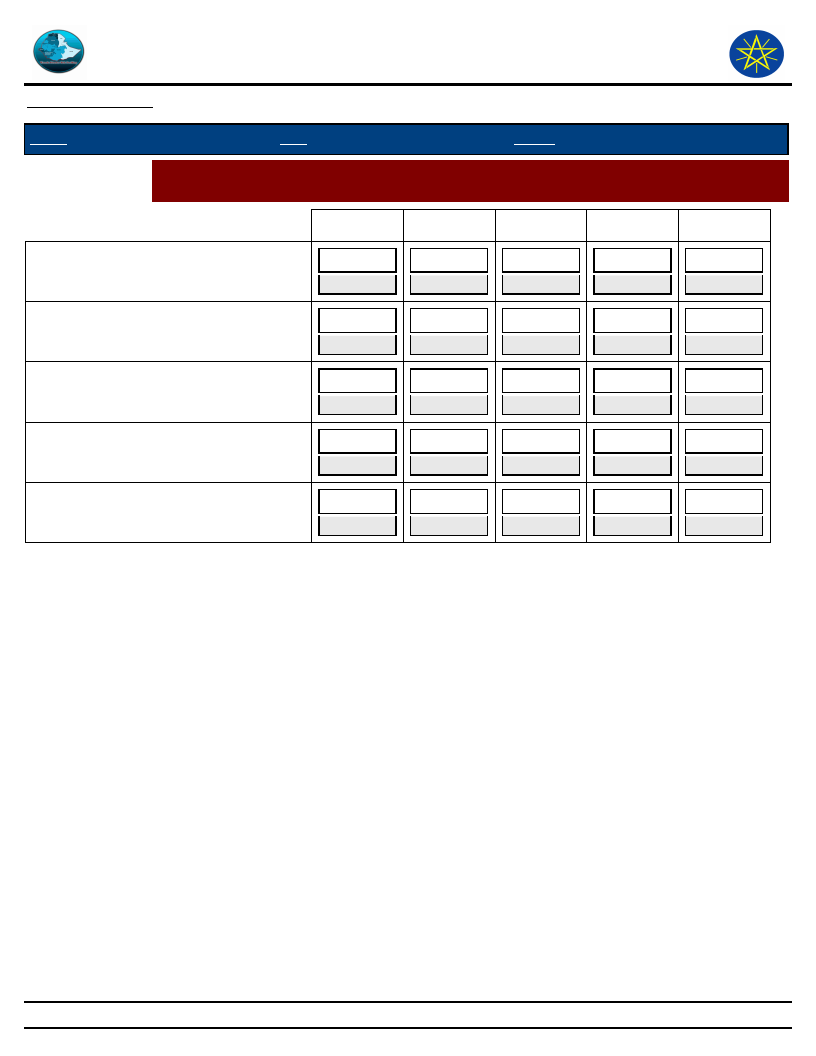
Wereda Disaster
Risk Profile
Data_Collected_Date
Disaster Risk Management
and Food Security Sector (DRMFSS)
Thursday, September 4, 2014
Region S.N.N.P
Zone HADIYA
Wereda MIRAB BADAWOCHO
Selected Indictor:
Hazards: Change in Crop Damages - Proportion of Damage for Major Crops
(percentage response by households)
0%
1 – 25 %
26 – 50 %
51 – 75 %
76 – 100 %
Peas
0.00
0.00
0.00
66.70
33.30
0.00
80.00
20.00
0.00
0.00
Root & tubers
18.30
27.60
42.70
47.40
7.30
23.70
12.20
1.30
19.50
0.00
Sorghum
0.00
0.00
0.00
33.30
66.70
0.00
0.00
100.00
0.00
0.00
Teff
1.30
46.20
18.30
16.50
17.80
13.10
64.00
11.70
7.50
3.60
Wheat
0.00
26.50
54.20
63.20
15.30
10.30
10.20
0.00
20.30
0.00
101
Page 2 of 2
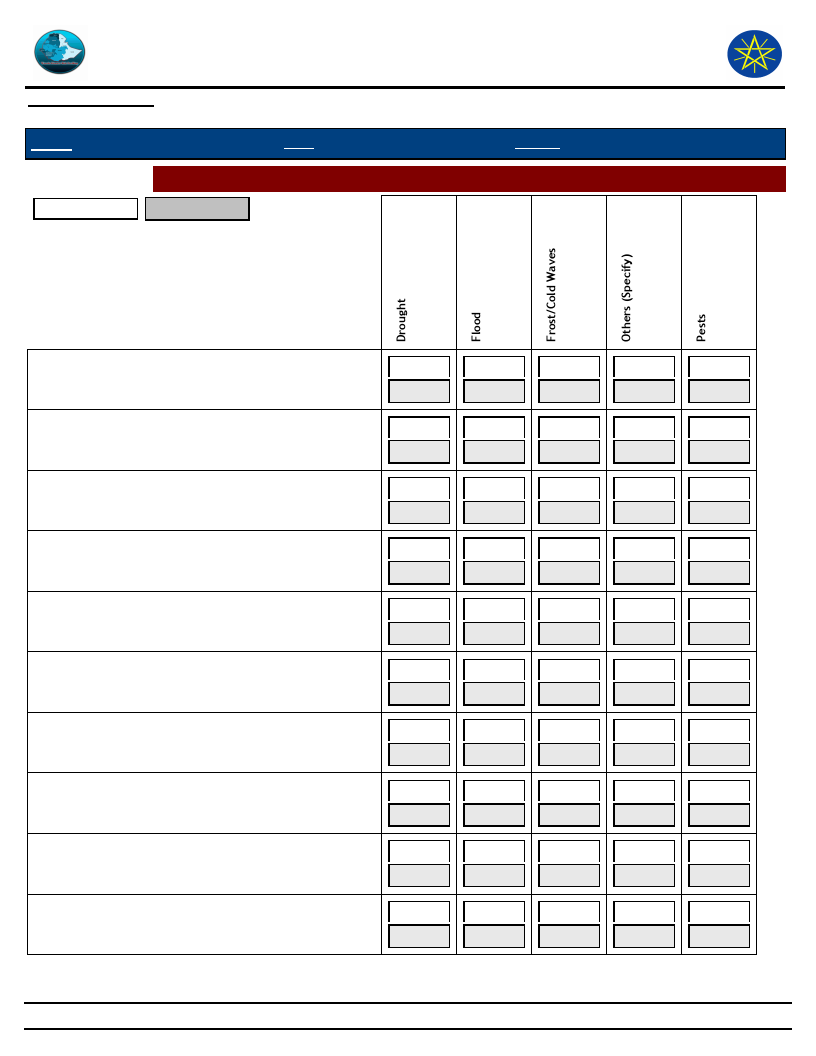
Wereda Disaster
Risk Profile
Data_Collected_Date
Disaster Risk Management
and Food Security Sector (DRMFSS)
Thursday, September 4, 2014
Region S.N.N.P
Zone HADIYA
Wereda MIRAB BADAWOCHO
Selected Indictor: Hazards: Change in Crop Damages - Reasons for Damage of Major Crops
Last Year
Five Years Ago
Fruits
Barley
Beans
Coffee
Enset
Lentils
Linseed
Maize
Neug
Other cash crop
100.00
0.00
0.00
0.00
0.00
0.00
0.00
0.00
0.00
0.00
0.00
0.00
0.00
0.00
0.00
50.00
0.00
50.00
0.00
0.00
12.50
0.00
87.50
0.00
0.00
0.00
0.00
100.00
0.00
0.00
46.70
0.00
20.00
6.70
26.70
57.10
0.00
42.90
0.00
0.00
64.00
0.00
12.00
12.00
12.00
42.10
0.00
36.80
5.30
15.80
100.00
0.00
0.00
0.00
0.00
100.00
0.00
0.00
0.00
0.00
0.00
0.00
0.00
0.00
0.00
0.00
0.00
0.00
0.00
100.00
64.40
0.40
10.00
5.00
19.90
41.90
1.00
23.00
2.00
31.10
100.00
0.00
0.00
0.00
0.00
0.00
0.00
0.00
0.00
0.00
50.00
0.00
0.00
0.00
50.00
0.00
0.00
50.00
50.00
0.00
102
Page 1 of 2
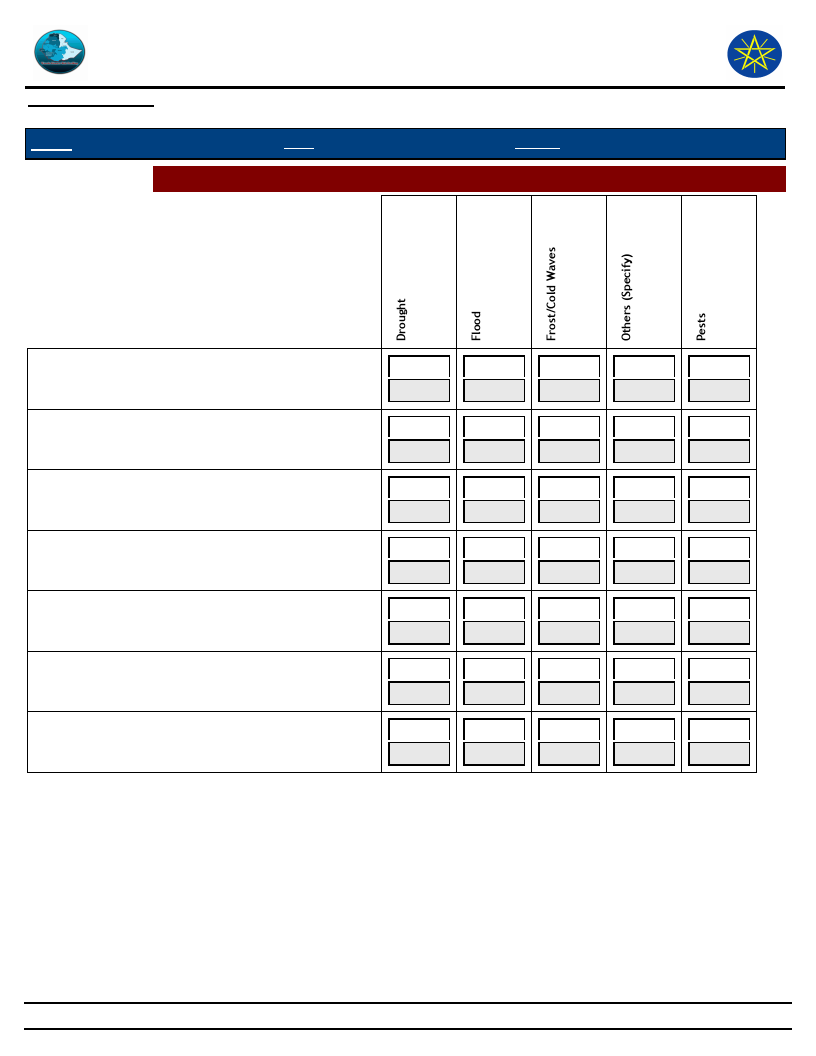
Wereda Disaster
Risk Profile
Data_Collected_Date
Disaster Risk Management
and Food Security Sector (DRMFSS)
Thursday, September 4, 2014
Region S.N.N.P
Zone HADIYA
Wereda MIRAB BADAWOCHO
Selected Indictor: Hazards: Change in Crop Damages - Reasons for Damage of Major Crops
Other grain (specify)
Other pulses
Peas
Root & tubers
Sorghum
Teff
Wheat
50.00
0.00
66.70
0.00
53.10
3.50
46.20
2.20
100.00
0.00
0.00
0.00
82.10
0.00
73.60
0.00
100.00
0.00
0.00
0.00
35.80
1.80
28.20
2.50
43.30
0.00
20.00
0.00
0.00
33.30
30.10
19.40
0.00
40.00
6.00
5.70
0.00
0.00
24.70
31.00
18.30
34.00
0.00
0.00
3.50
3.20
0.00
0.00
7.50
1.90
0.00
0.00
13.90
6.20
5.00
6.00
50.00
0.00
9.70
29.00
0.00
60.00
4.50
18.90
0.00
100.00
23.70
31.00
33.30
38.00
103
Page 2 of 2
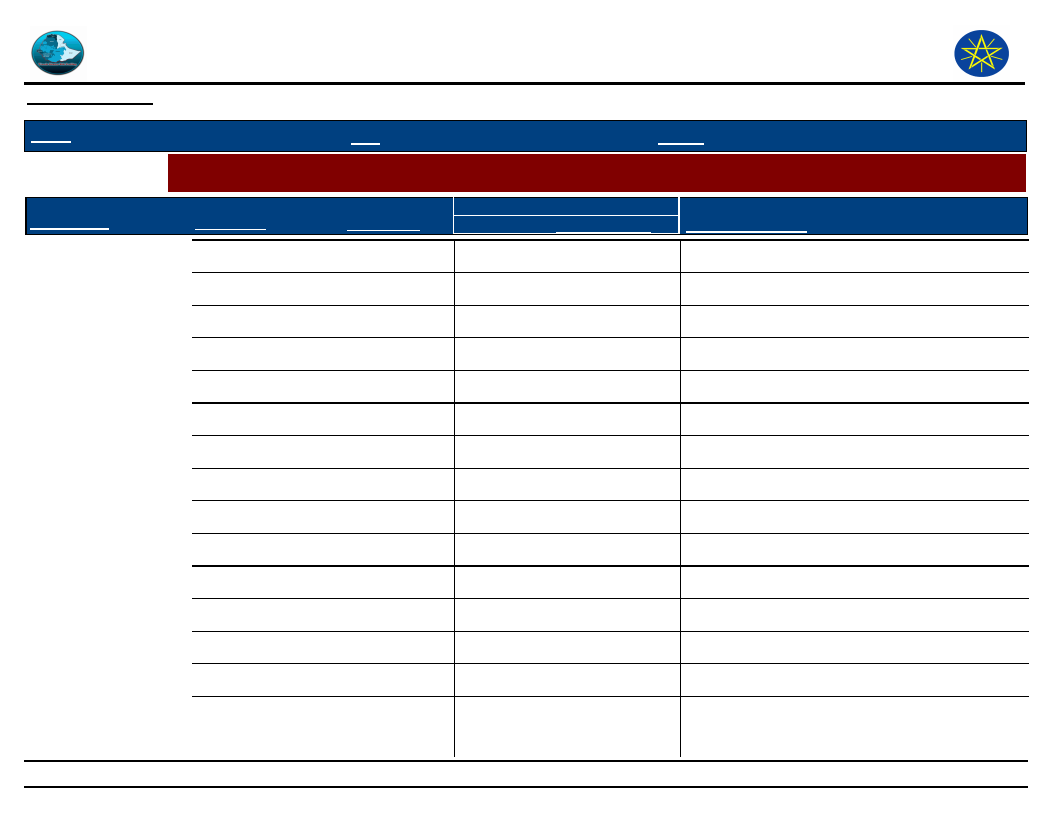
Wereda Disaster
Risk Profile
Data_Collected_Date
Disaster Risk Management and Food
Security Sector (DRMFSS)
Thursday, September 4, 2014
Region
S.N.N.P
Zone
HADIYA
Wereda
MIRAB BADAWOCHO
Selected Indictor:
Agricultural Situation: Change in Crops Grown - Five major crops grown by proportion of total cultivated land
Kebele Name
DEDO
Major Crops
Maize
Main Season
Other
Present
Cropped Area
Five_Years_Ago
Reason_For_Change
Population increased
Teff
Other
Population increased
Beans
Other
Coffee
Other
Enset
Other
Teff
Other
Population increased
Maize
Other
Population increased
Beans
Other
Population increased
Coffee
Other
Enset
Other
JARISO ONIJOJO
Maize
Other
Population increased
Teff
Other
Population increased
Beans
Other
Population increased
Coffee
Other
Population increased
Enset
Other
104
Page 1 of 8
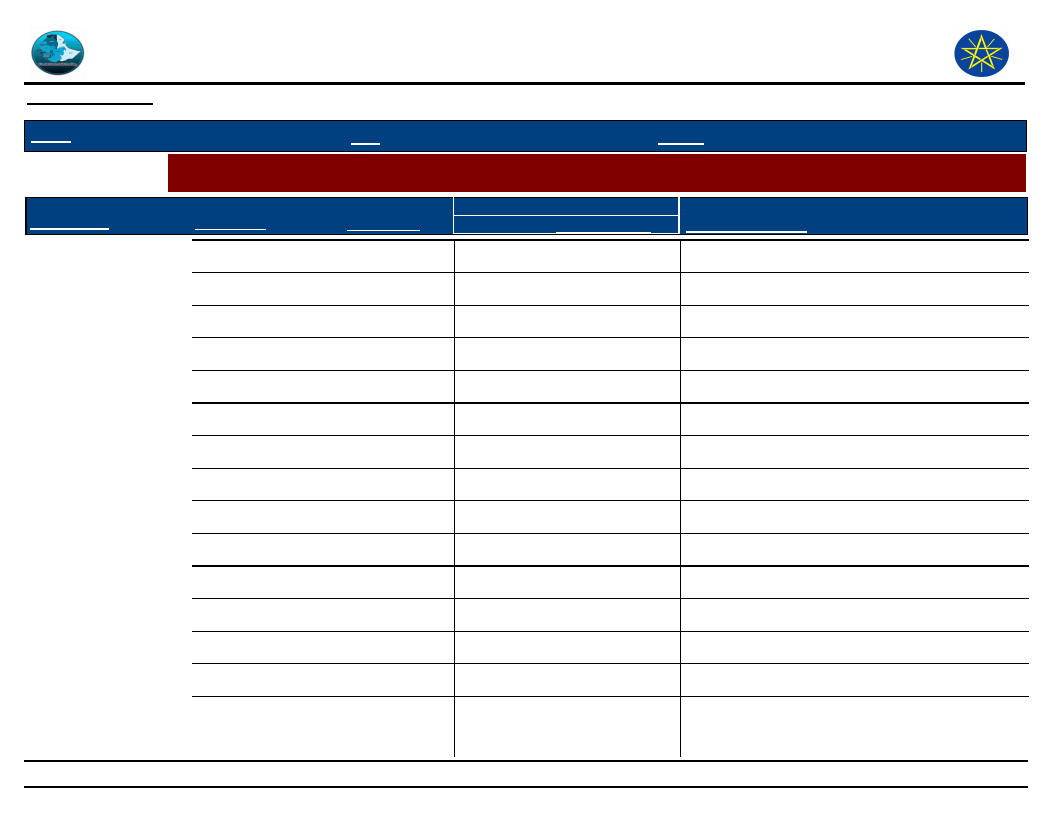
Wereda Disaster
Risk Profile
Data_Collected_Date
Disaster Risk Management and Food
Security Sector (DRMFSS)
Thursday, September 4, 2014
Region
S.N.N.P
Zone
HADIYA
Wereda
MIRAB BADAWOCHO
Selected Indictor:
Agricultural Situation: Change in Crops Grown - Five major crops grown by proportion of total cultivated land
Kebele Name
SIBEYA
Major Crops
Maize
Main Season
Other
Present
Cropped Area
Five_Years_Ago
Reason_For_Change
Population increased
Teff
Other
Population increased
Beans
Other
Population increased
Coffee
Other
Population increased
Enset
Other
Population increased
GERIBO
Maize
Other
Population increased
Teff
Other
Population increased and drought
Beans
Other
Shortage of rain fall
Coffee
Other
Crop disease
Enset
Other
Population increased
WEREBOYA
Maize
Other
Population increased
Teff
Other
Population increased
Beans
Other
Population increased
Coffee
Other
Population increased
Enset
Other
Population increased
105
Page 2 of 8
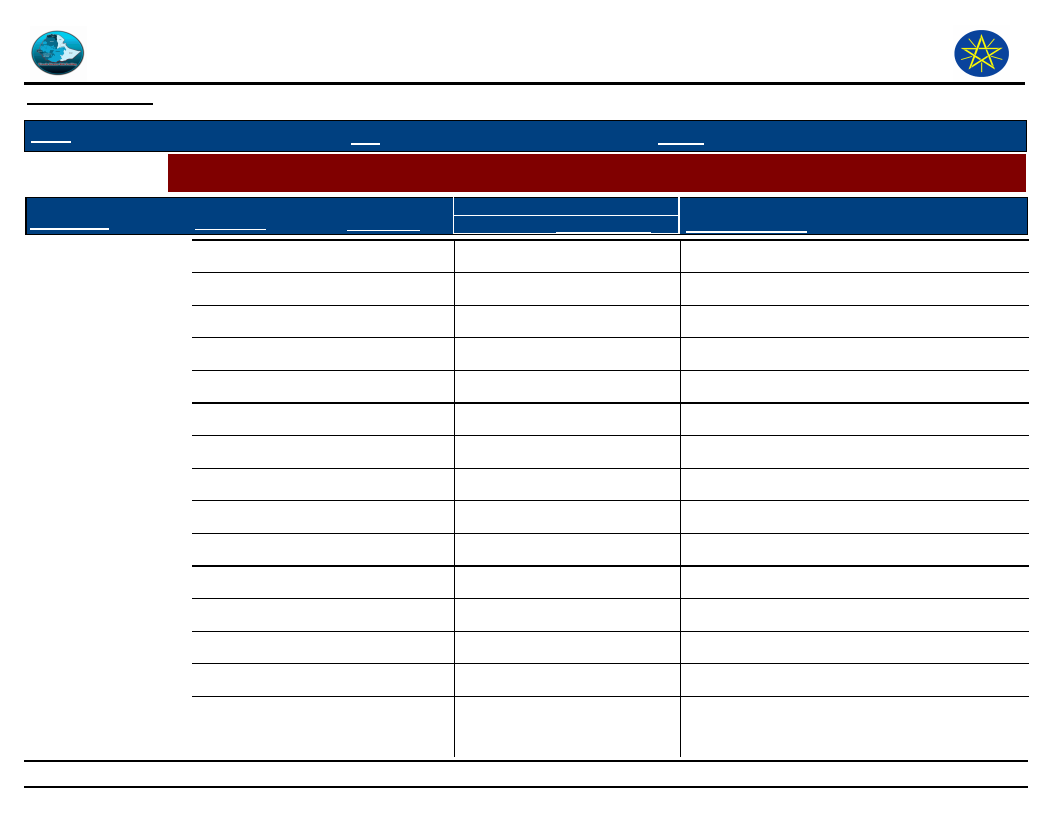
Wereda Disaster
Risk Profile
Data_Collected_Date
Disaster Risk Management and Food
Security Sector (DRMFSS)
Thursday, September 4, 2014
Region
S.N.N.P
Zone
HADIYA
Wereda
MIRAB BADAWOCHO
Selected Indictor:
Agricultural Situation: Change in Crops Grown - Five major crops grown by proportion of total cultivated land
Kebele Name
2GNA KOTO
Major Crops
Maize
Main Season
Other
Present
Cropped Area
Five_Years_Ago
Reason_For_Change
Population increased
Teff
Other
population increased
Beans
Other
Crop disease
Coffee
Other
Coffee diseases
Enset
Other
Population increased
HAWORA
Teff
Other
Climate change
Coffee
Other
Climate change
Maize
Other
Climate change
Wheat
Other
Climate change
Beans
Other
Climate change
ELIFETA
Maize
Meher
Teff
Belg
Beans
Belg
Coffee
All Season
Enset
All Season
106
Page 3 of 8
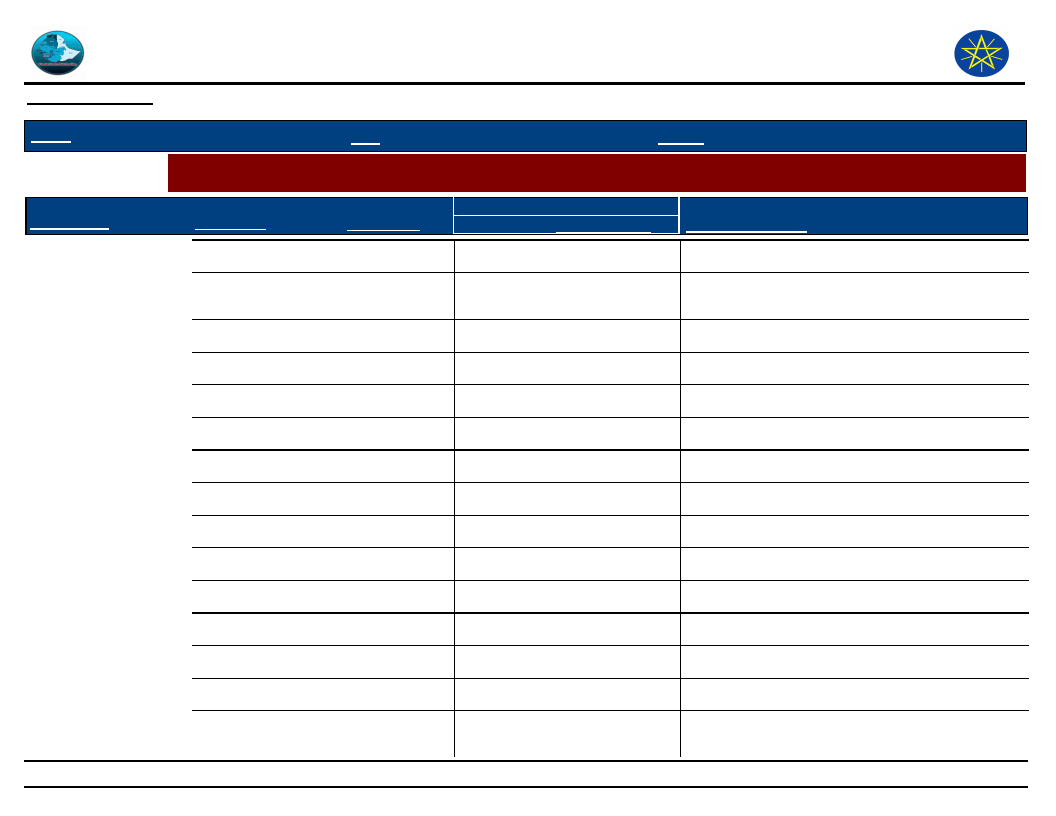
Wereda Disaster
Risk Profile
Data_Collected_Date
Disaster Risk Management and Food
Security Sector (DRMFSS)
Thursday, September 4, 2014
Region
S.N.N.P
Zone
HADIYA
Wereda
MIRAB BADAWOCHO
Selected Indictor:
Agricultural Situation: Change in Crops Grown - Five major crops grown by proportion of total cultivated land
Kebele Name
YA BUKUNA
Major Crops
Maize
Main Season
Meher
Present
Cropped Area
Five_Years_Ago
Reason_For_Change
Community health
Belg
worker
Beans
Belg
Vegetables
Belg
Coffee
All Season
WADA
Teff
Meher
Population increased
Maize
Belg
population increased
Beans
Belg
Shortage of land
Coffee
Belg
Disease
Enset
Belg
Population increased
SEPERA
Maize
Meher
Population increased
Teff
Belg
Drought
Beans
Belg
Drought
Coffee
Belg
Drought
Enset
Belg
Drought
107
Page 4 of 8
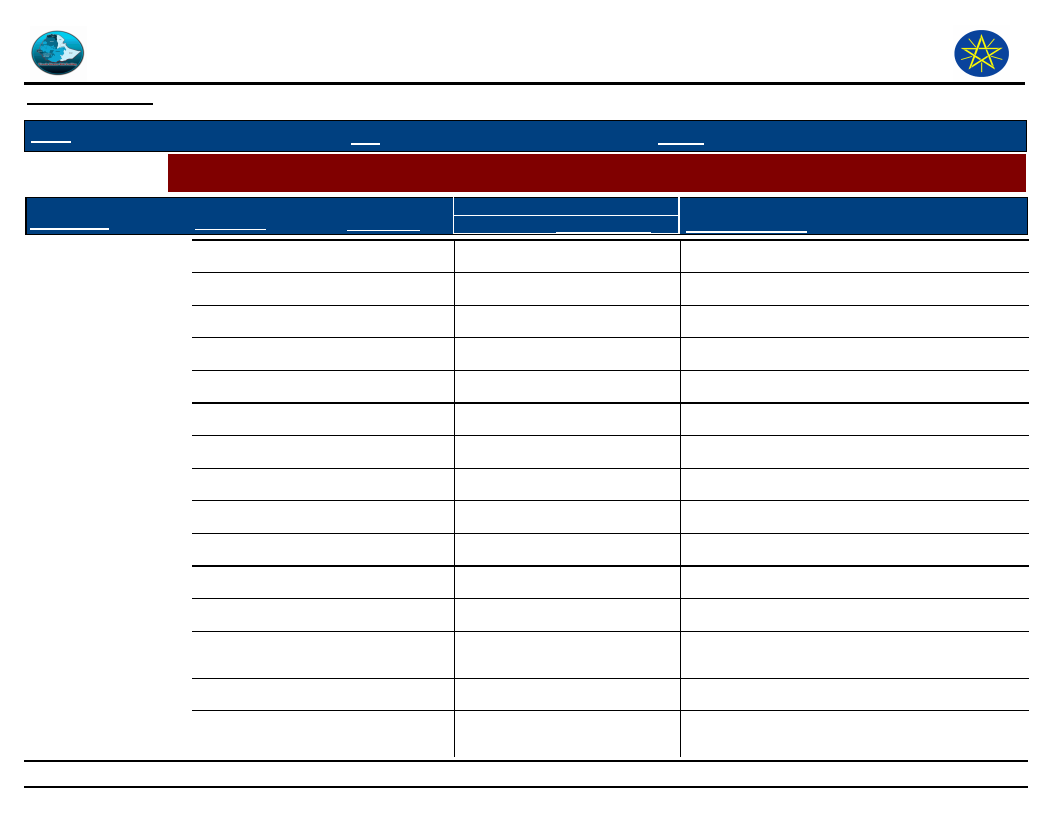
Wereda Disaster
Risk Profile
Data_Collected_Date
Disaster Risk Management and Food
Security Sector (DRMFSS)
Thursday, September 4, 2014
Region
S.N.N.P
Zone
HADIYA
Wereda
MIRAB BADAWOCHO
Selected Indictor:
Agricultural Situation: Change in Crops Grown - Five major crops grown by proportion of total cultivated land
Kebele Name
KACHA BIRA
Major Crops
Teff
Main Season
Belg
Present
Cropped Area
Five_Years_Ago
Reason_For_Change
Drought
Wheat
Belg
Drought
Maize
Meher
Drought
Coffee
Belg
Drought
Enset
Belg
Drought
1GNA KOTO
Teff
Belg
Wheat
Belg
Beans
Meher
Coffee
Belg
Maize
Meher
DANAMA
Coffee
Meher
50%
90%
Population increased
Teff
Meher
65%
95%
Beans
Maize
Belg and
70%
95%
Meher
Belg
50%
85%
Wheat
Belg
50%
80%
108
Page 5 of 8
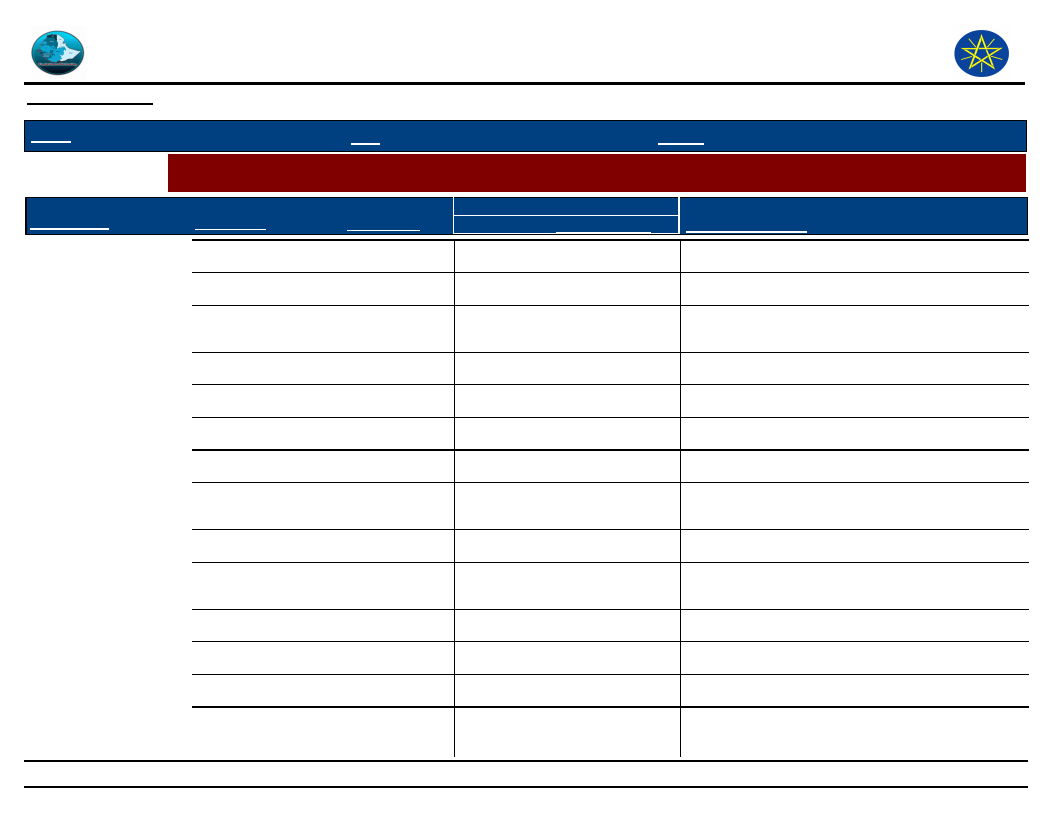
Wereda Disaster
Risk Profile
Data_Collected_Date
Disaster Risk Management and Food
Security Sector (DRMFSS)
Thursday, September 4, 2014
Region
S.N.N.P
Zone
HADIYA
Wereda
MIRAB BADAWOCHO
Selected Indictor:
Agricultural Situation: Change in Crops Grown - Five major crops grown by proportion of total cultivated land
Kebele Name
DANAMA 01
Major Crops
Maize
Main Season
Meher
Present
Cropped Area
Five_Years_Ago
70%
87%
Reason_For_Change
Population increased
Teff
Meher
65%
85%
Population increased
Beans
Coffee
Belg and
75%
Meher
Meher
65%
90%
Population increased
85%
Population increased
Enset
Meher
70%
90%
Population increased
2nd KESHORA
Maize
----
75%
85%
Population increased
Teff
Meher
65%
80%
population increase
Beans
Coffee
Belg and
75%
Meher
Meher
60%
85%
Population increased
80%
Population increased
WADA 01
Enset
Teff
Belg and
70%
Meher
Belg
30%
90%
Population increased
40%
Drought
Maize
Meher
40%
50%
Drought
Haricot Bean
Belg
20%
20%
Population increased
Coffee
Belg and
Meher
10%
20%
109
Small land size
Page 6 of 8
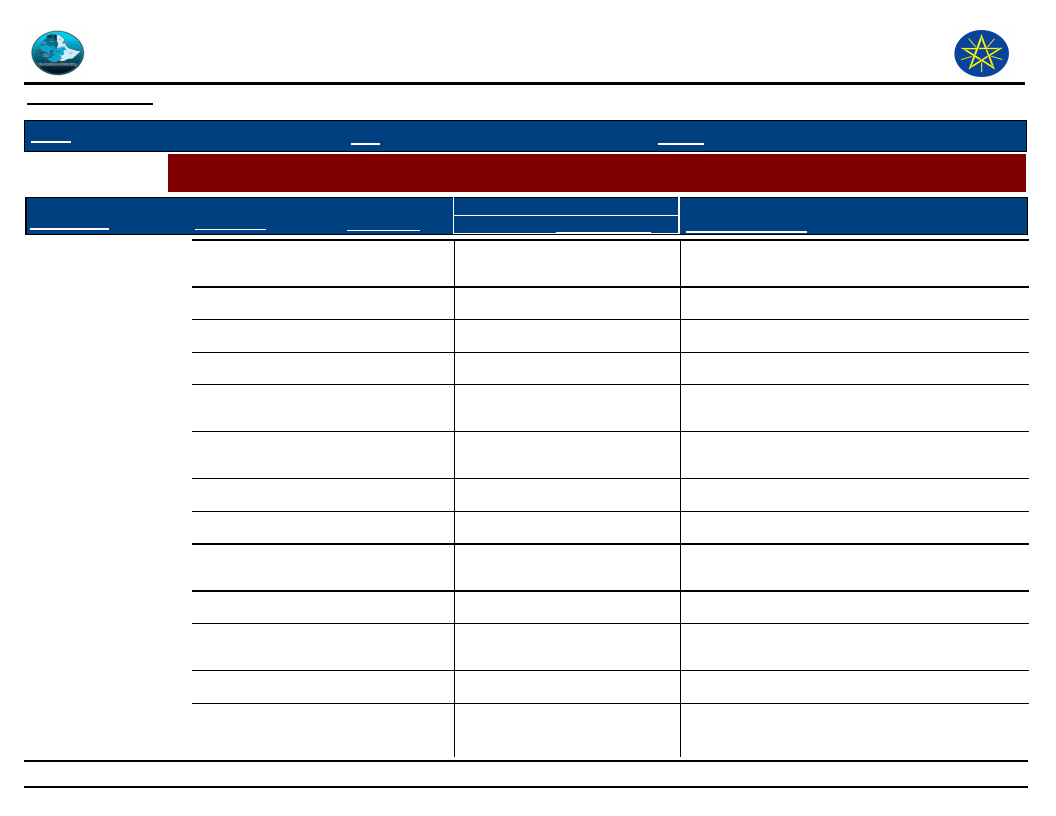
Wereda Disaster
Risk Profile
Data_Collected_Date
Disaster Risk Management and Food
Security Sector (DRMFSS)
Thursday, September 4, 2014
Region
S.N.N.P
Zone
HADIYA
Wereda
MIRAB BADAWOCHO
Selected Indictor:
Agricultural Situation: Change in Crops Grown - Five major crops grown by proportion of total cultivated land
Kebele Name
WADA 01
FIRST KASHERA
Major Crops
Enset
Teff
Main Season
Belg and
Meher
Belg
Present
Cropped Area
Five_Years_Ago
10%
20%
30%
40%
Reason_For_Change
Population increased
Drought
Maize
Meher
40%
50%
Drought
Haricot Bean
Belg
20%
20%
Population increased
JARSO MAJORIYA
Coffee
Enset
Maize
Belg and
10%
Meher
Belg and
10%
Meher
Meher
30%
20%
Small land size
20%
Population increased
25%
Teff
Meher
20%
25%
Haricot Bean
Belg and
15%
20%
Meher
Hanfets
Belg
15%
10%
OFFDAA
Coffee
Maize
Belg and
20%
20%
Meher
Meher
30%
30%
Teff
Belg
20%
20%
110
Page 7 of 8
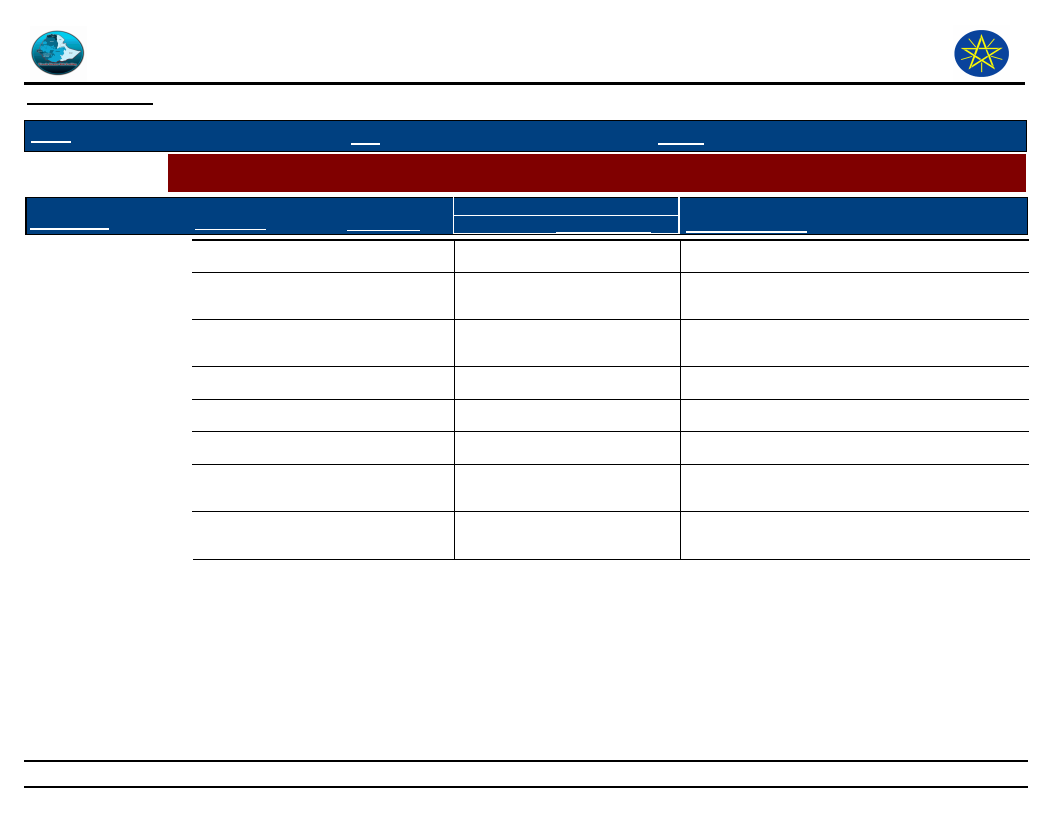
Wereda Disaster
Risk Profile
Data_Collected_Date
Disaster Risk Management and Food
Security Sector (DRMFSS)
Thursday, September 4, 2014
Region
S.N.N.P
Zone
HADIYA
Wereda
MIRAB BADAWOCHO
Selected Indictor:
Agricultural Situation: Change in Crops Grown - Five major crops grown by proportion of total cultivated land
Kebele Name
OFFDAA
Major Crops
Haricot Bean
Main Season
Meher
Present
Cropped Area
Five_Years_Ago
20%
20%
Reason_For_Change
MIRAB AJEBA
Coffee
Enset
Maize
Belg and
10%
Meher
Belg and
10%
Meher
Meher
30%
10%
10%
35%
Drought
Teff
Belg
20%
25%
Drought
Haricot Bean
Belg
20%
25%
Drought
Coffee
Enset
Belg and
10%
Meher
Belg and
10%
Meher
15%
Drought
15%
Drought
111
Page 8 of 8
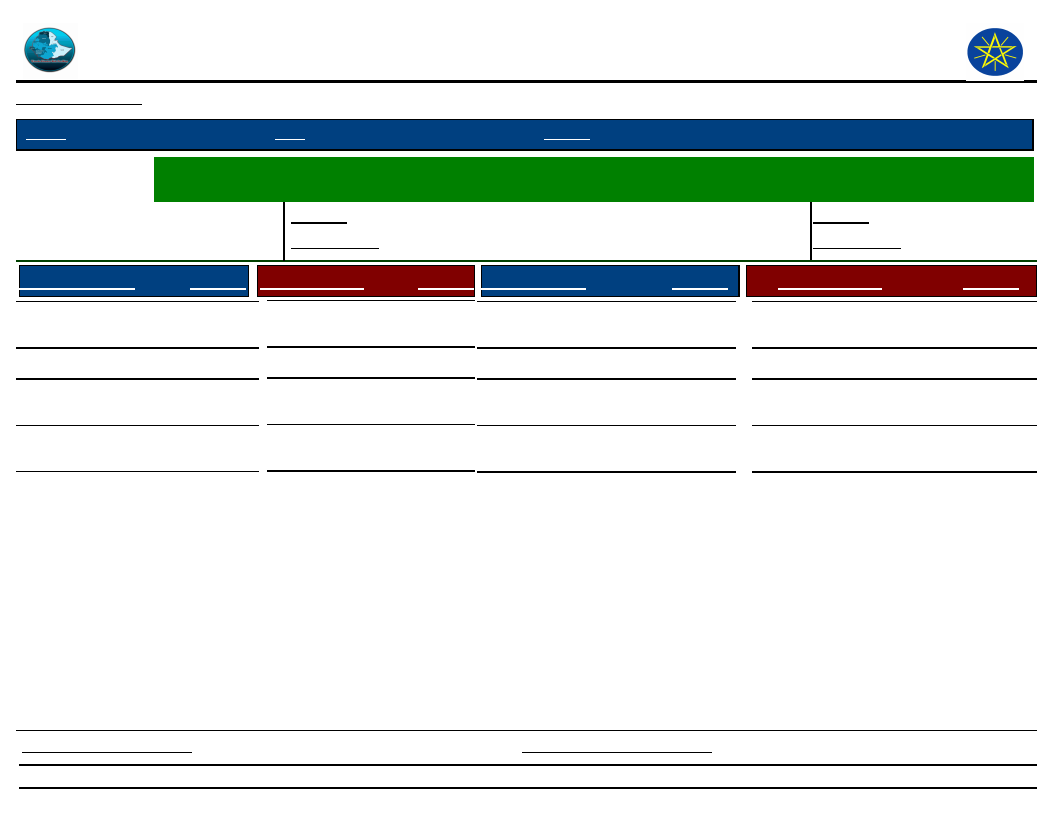
Wereda Disaster
Risk Profile
Data_Collected_Date
Disaster Risk Management
and Food Security Sector (DRMFSS)
Thursday, September 4, 2014
Region S.N.N.P
Zone HADIYA
Wereda MIRAB BADAWOCHO
Selected Indictor:
Economic Vulnerability: Status of Agriculture - Methods of tillage, Irrigation and other agricultural input utilization
by households
Percentage of
Last Year
0.00
Irrigated Area
Five Years Ago
0.00
Percentage of households
Last Year
2.00
with irrigated area
Five Years Ago
1.00
Source of Irrigation
River/Lake/Pond
Birkas (tanks)
Other (specify)
No Irrigation
(Rain-fed)
DK
Response Method of Tillage
2.40 Oxen
0.20 Tractor
0.40 Manual
96.60 None
0.40
Response Type of Fertilizer
91.60 Chemical
0.60 Natural/Animal manure
6.90 Both Chemical and
Natural
0.90 None
0.00
Response
Type of Pesticide
27.50
8.00
Chemicals (insecticides,
fungicide, etc)
Natural methods
61.60
None
2.90
0.00
Response
86.40
5.80
7.60
0.00
0.00
Proportion_Improved_Seeds
83.60
Proportion_Agriculture_Service
112
87.20
Page 1 of 2
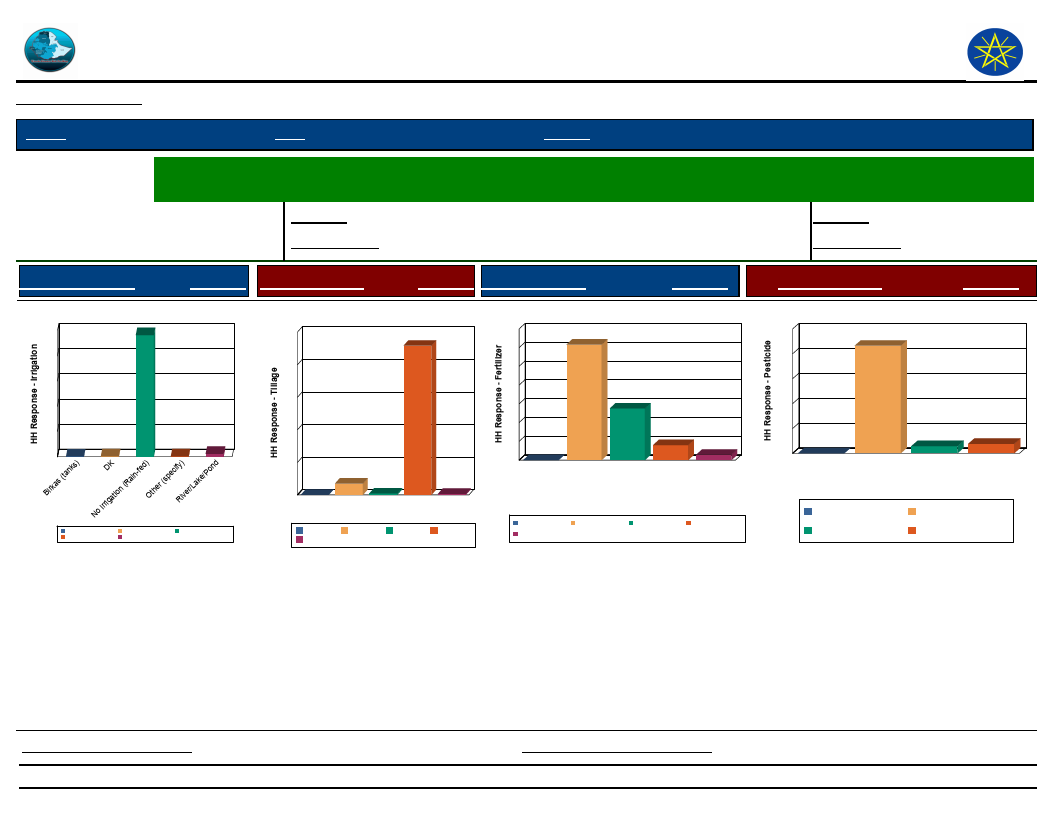
Wereda Disaster
Risk Profile
Data_Collected_Date
Disaster Risk Management
and Food Security Sector (DRMFSS)
Thursday, September 4, 2014
Region S.N.N.P
Zone HADIYA
Wereda MIRAB BADAWOCHO
Selected Indictor:
Economic Vulnerability: Status of Agriculture - Methods of tillage, Irrigation and other agricultural input utilization
by households
Percentage of
Last Year
0.00
Irrigated Area
Five Years Ago
0.00
Percentage of households
Last Year
2.00
with irrigated area
Five Years Ago
1.00
Source of Irrigation
Response Method of Tillage
Response Type of Fertilizer
Response
Source of Irrigation
100
97
80
60
40
20
0
0
(tanks)
Birkas
0
0
2
DK
Irrigation
(Rain-fed) ther
O
(specifRy)iver/Lake/Pond
No Source of Irrigation
Birkas (tanks)
Other (specify)
DK
River/Lake/Pond
No Irrigation (Rain-fed)
Method of Tillage
100
92
80
60
40
20
0
0
7
1
Manual None Oxen
Method of Tillage
1
Tractor
Tractor
Manual
None
Oxen
Type of Fertilizer
70
62
60
50
40
30
28
20
10
0
0
8
Chemical
3
None
Both Chemical and
Natural
Natural/Animal
manure
Type of Fertilizer
None
Both Chemical and
Natural
Chemical
Natural/Animal manure
Type of Pesticide
Response
Type of Pesticide
100
86
80
60
40
20
0
0
6
Chemicals
(insecticides,
fungicide, etc)
Natural
methods
Type of Pesticide
8
None
Natural methods
Chemicals (insecticides,
fungicide, etc)
None
Proportion_Improved_Seeds
83.60
Proportion_Agriculture_Service
113
87.20
Page 2 of 2
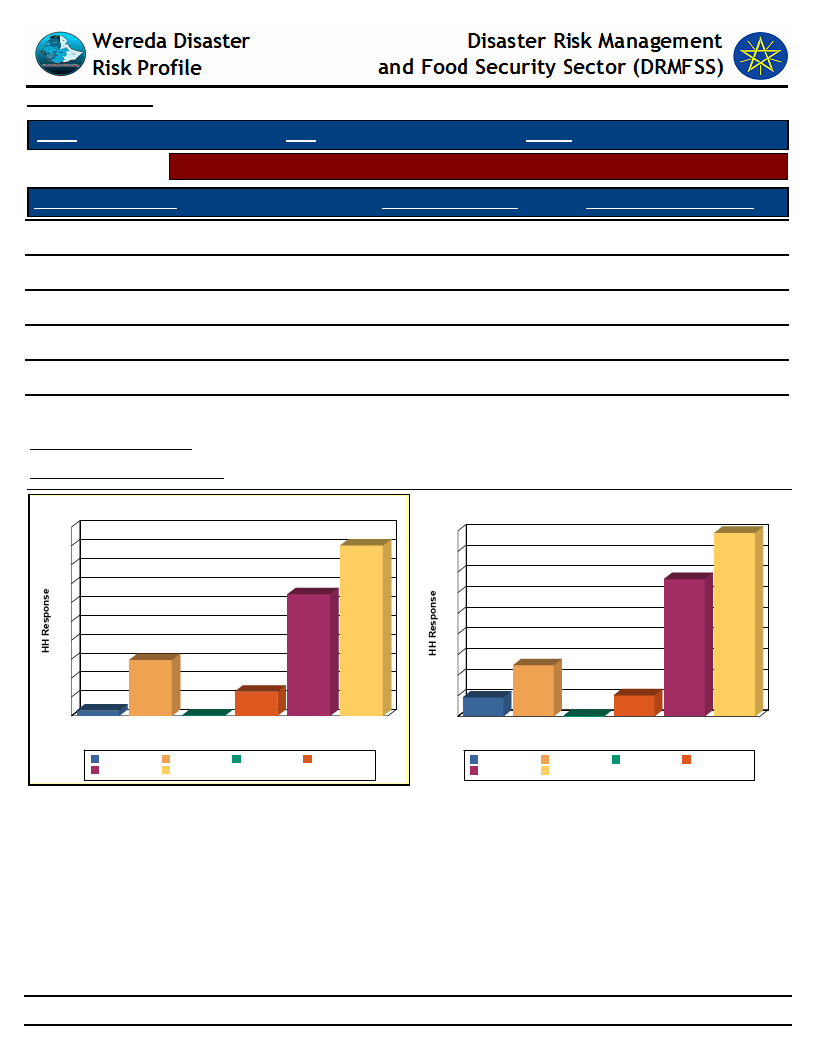
Data_Collected_Date
Thursday, September 4, 2014
Region S.N.N.P
Zone HADIYA
Wereda MIRAB BADAWOCHO
Selected Indicator
Economic Vulnerability: Crops Grown - Number of crops grown by households
Number of Crops Grown
None
Crops Grown Last Year
0.10
Crops Grown Five Years Ago
0.10
One type
6.40
5.10
Two types
45.10
44.50
Three types
32.20
33.30
Four types
14.80
12.40
Five types
1.40
4.60
Avg Crops Grown Last Year
Avg Crops Grown Five Years Ago
2.59
2.66
Number of Crops Grown Last Year
50
45
45
40
35
32
30
25
20
15
15
10
6
5
1
0
Five types Four types
0
None
One type
Three
Number of Crops Grown types
Two types
Five types
Three types
Four types
Two types
None
One type
Number of Crops Grown five years ago
45
45
40
35
33
30
25
20
15
12
10
5
5
5
0
Five types Four types
0
None
One type
Three
Number of Crops Grown types
Two types
Five types
Three types
Four types
Two types
None
One type
114
Page 1 of 1
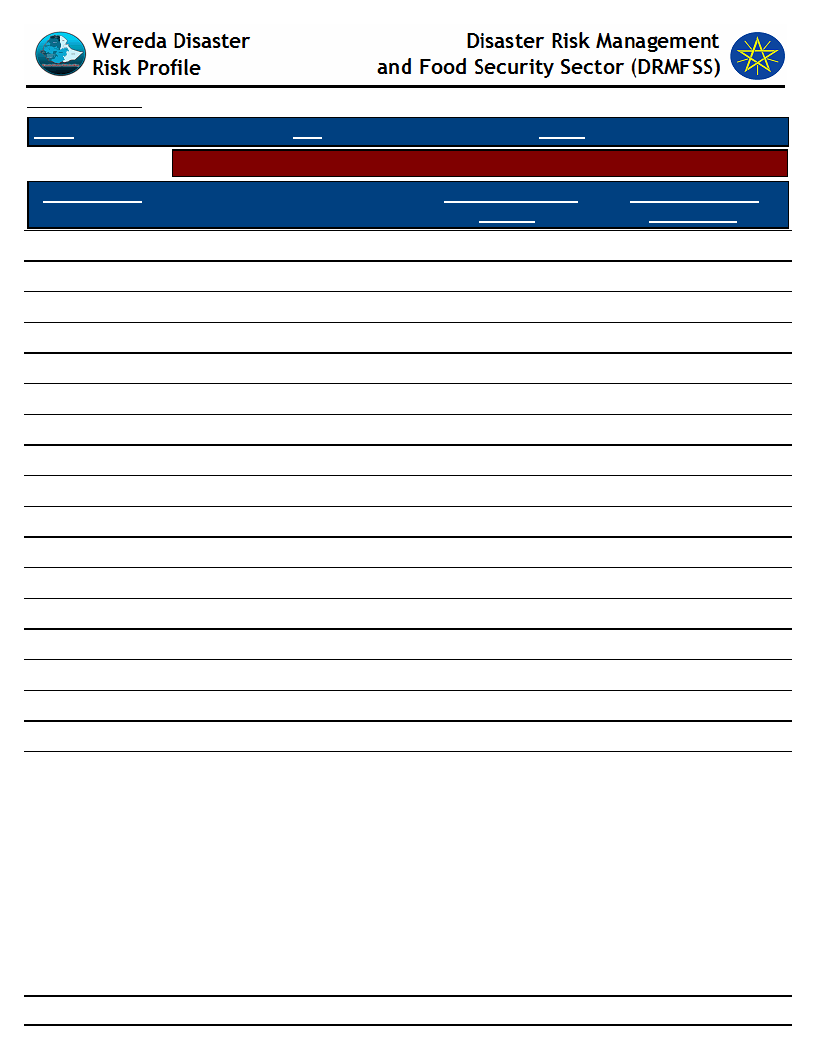
Data_Collected_Date
Region S.N.N.P
Zone HADIYA
Thursday, September 4, 2014
Wereda MIRAB BADAWOCHO
Selected Indicator
Economic Vulnerability: Crops Grown - Types of crops grown by households
Major Crop Type
Teff
Type of Crops Grown
Last Year
38.00
Type of Crops Grown
Five Years Ago
35.00
Barley
0.00
0.20
Wheat
5.70
6.80
Maize
27.30
31.70
Sorghum
0.10
0.50
Other grain (specify)
0.80
0.40
Beans
2.50
0.40
Peas
0.30
0.50
Lentils
0.40
0.10
Other pulses
11.10
11.90
Neug
0.10
0.00
Linseed
0.10
0.10
Vegetables
0.20
0.00
Root & tubers
8.50
7.90
Enset
2.90
3.30
Fruits
0.10
0.00
Coffee
1.60
0.90
Other cash crop
0.40
0.30
115
Page 1 of 2
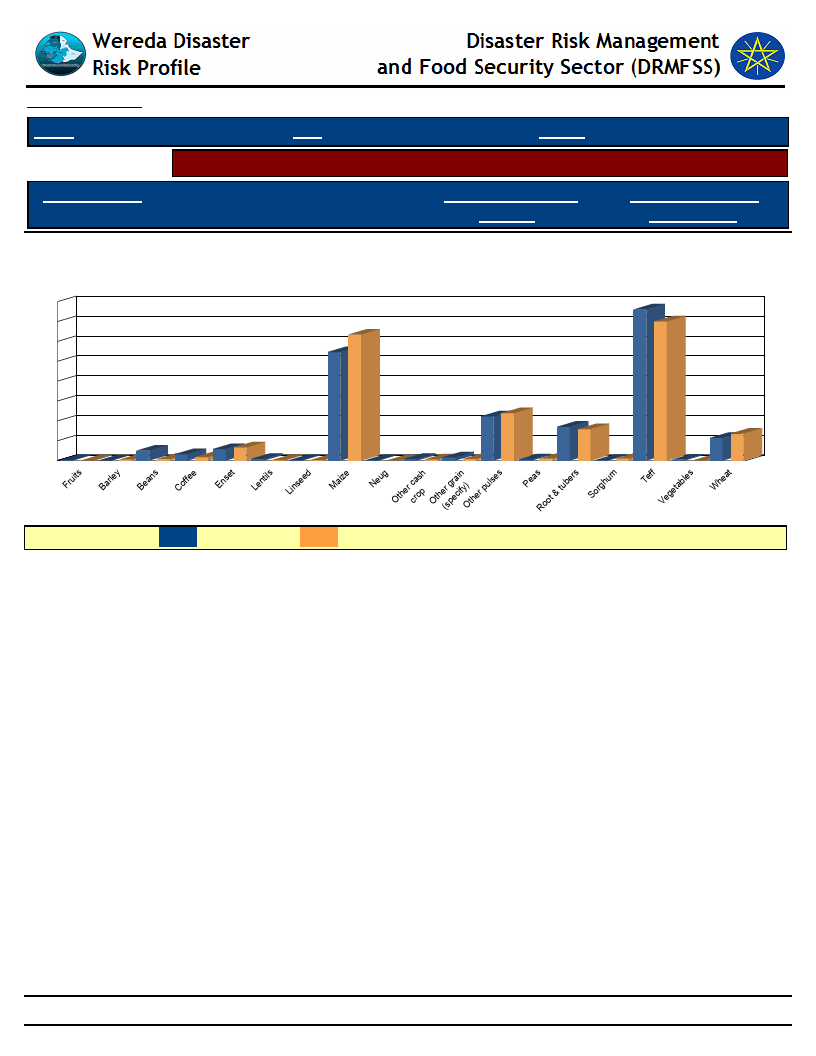
Data_Collected_Date
Region S.N.N.P
Selected Indicator
Major Crop Type
Zone HADIYA
Thursday, September 4, 2014
Wereda MIRAB BADAWOCHO
Economic Vulnerability: Crops Grown - Types of crops grown by households
Type of Crops Grown
Last Year
Type of Crops Grown
Five Years Ago
Types of Crops Grown - Percent Responses of HHs for Last Year as compared to
Five Years Ago
40
38
35
35
32
30
27
25
20
15
10
5
0
00
3
0
02
3
1
3
0
00
0
0
11 12
98
0 00 01 0
01
01
67
00
LEGEND :
Last year
Five Years Ago
116
Page 2 of 2
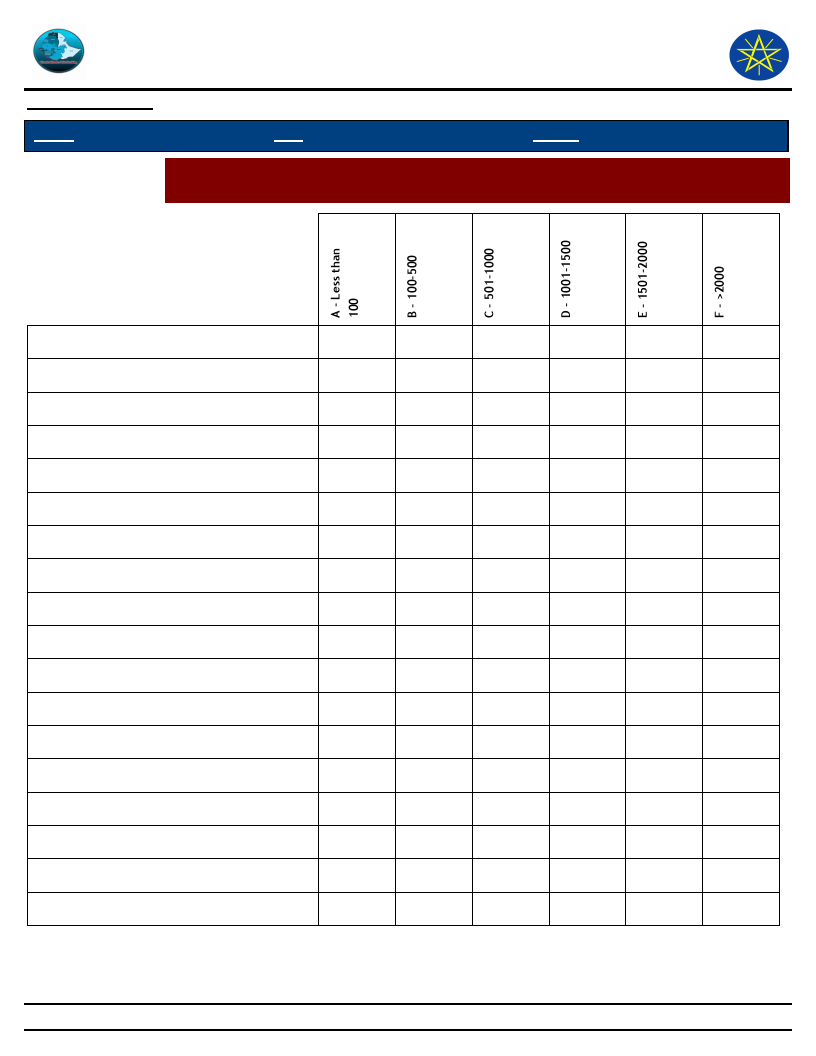
Wereda Disaster
Risk Profile
Disaster Risk Management
and Food Security Sector (DRMFSS)
Data_Collected_Date
Region S.N.N.P
Zone HADIYA
Thursday, September 4, 2014
Wereda MIRAB BADAWOCHO
Selected Indictor:
Economic Vulnerability: Crops Grown - Proportion of households by amount of
yield of major crops (last year)
Fruits
Barley
Beans
Coffee
Enset
Lentils
Linseed
Maize
Neug
Other cash crop
Other grain (specify)
Other pulses
Peas
Root & tubers
Sorghum
Teff
Vegetables
Wheat
100.00
11.10
75.00
35.50
50.00
74.10
18.80
58.10
50.00
14.80
6.30
6.50
30.80
53.10
11.50
0.70
100.00
50.00
50.00
25.00
50.00
24.60
68.60
5.10
100.00
13.60
45.50
26.10
5.70
100.00
33.50
59.10
6.90
100.00
39.30
54.10
6.60
1.70
2.10
25.00
1.70
1.10
8.00
0.50
117
Page 1 of 1
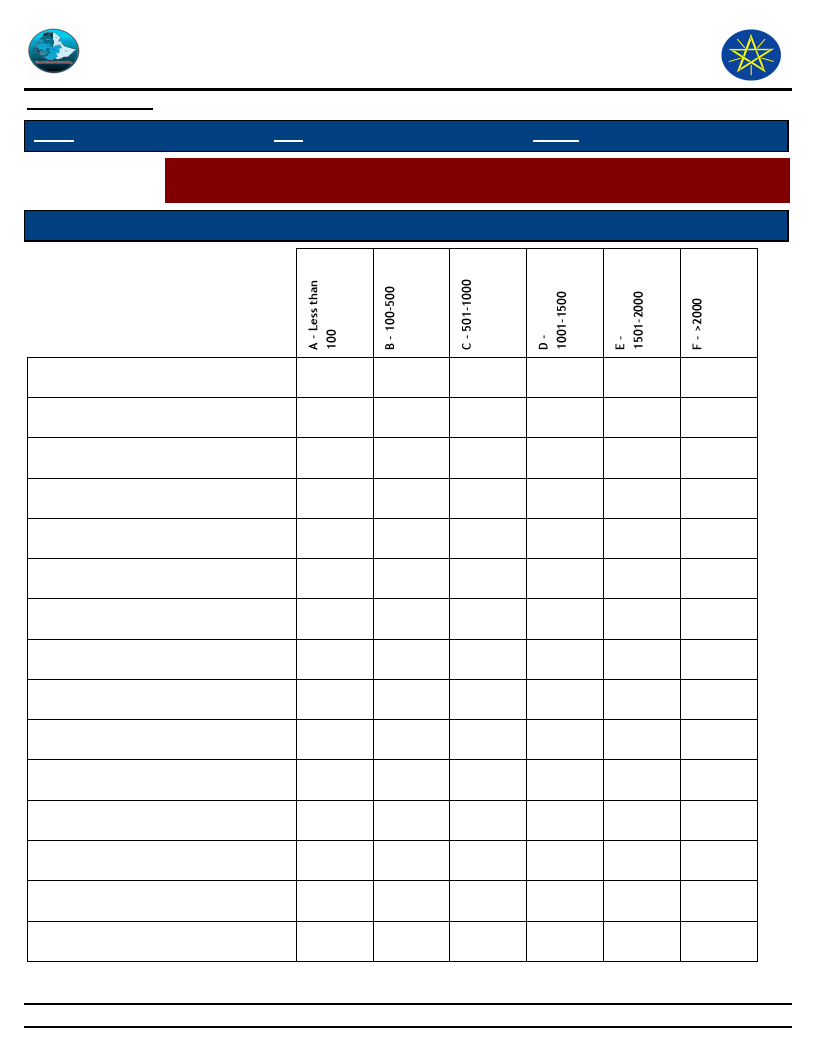
Wereda Disaster
Risk Profile
Disaster Risk Management
and Food Security Sector (DRMFSS)
Data_Collected_Date
Region S.N.N.P
Zone HADIYA
Thursday, September 4, 2014
Wereda MIRAB BADAWOCHO
Selected Indictor:
Economic Vulnerability: Crops Grown - Proportion of households by amount of
yield of major crops (Five Years Ago)
Types of Major Crops
Category of Yield used to be obtained five years ago
Fruits
Barley
Beans
Coffee
Enset
Lentils
Linseed
Maize
Neug
Other cash crop
Other grain (specify)
Other pulses
Peas
Root & tubers
Sorghum
50.00
50.00
100.00
11.10
55.60
22.20
11.10
17.60
67.60
8.80
5.90
100.00
100.00
9.60
57.00
23.30
2.00
4.40
3.80
50.00
50.00
33.30
66.70
10.00
76.20
11.50
0.80
1.50
40.00
20.00
40.00
6.10
42.70
29.30
3.70
3.70
14.60
83.30
16.70
118
Page 1 of 2
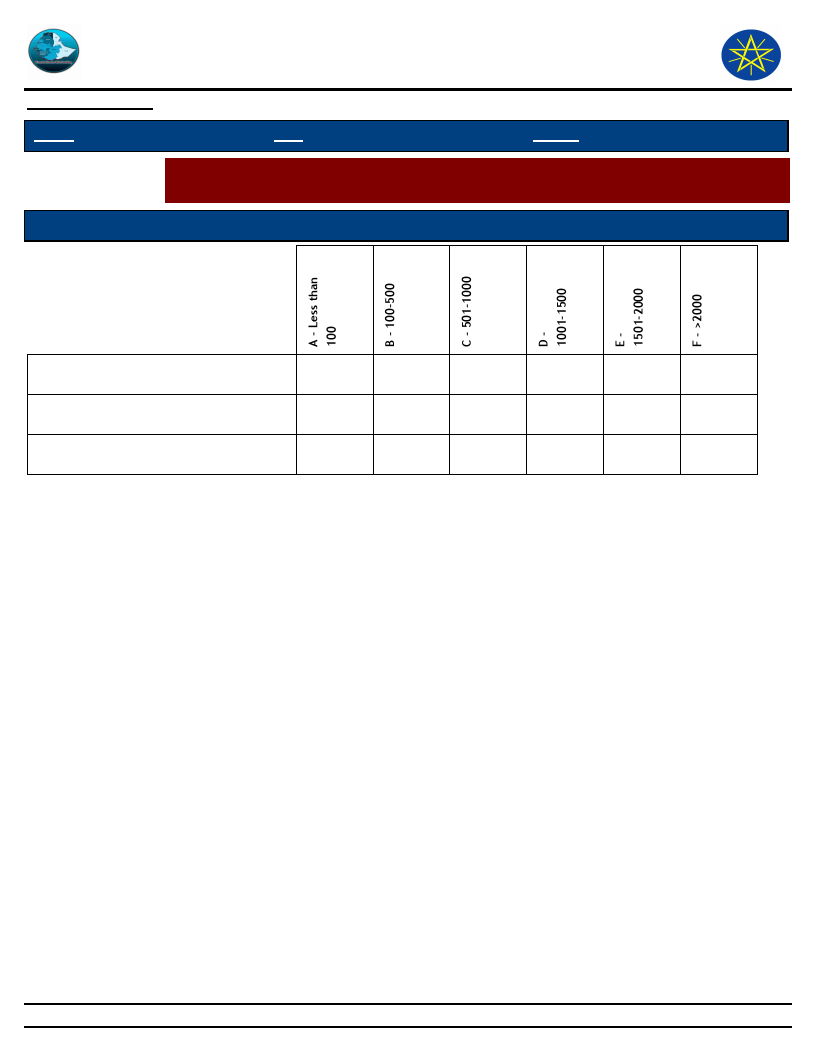
Wereda Disaster
Risk Profile
Disaster Risk Management
and Food Security Sector (DRMFSS)
Data_Collected_Date
Region S.N.N.P
Zone HADIYA
Thursday, September 4, 2014
Wereda MIRAB BADAWOCHO
Selected Indictor:
Economic Vulnerability: Crops Grown - Proportion of households by amount of
yield of major crops (Five Years Ago)
Types of Major Crops
Category of Yield used to be obtained five years ago
Teff
Vegetables
Wheat
17.80
73.60
7.30
0.80
0.50
11.10
70.80
9.70
5.60
2.80
119
Page 2 of 2
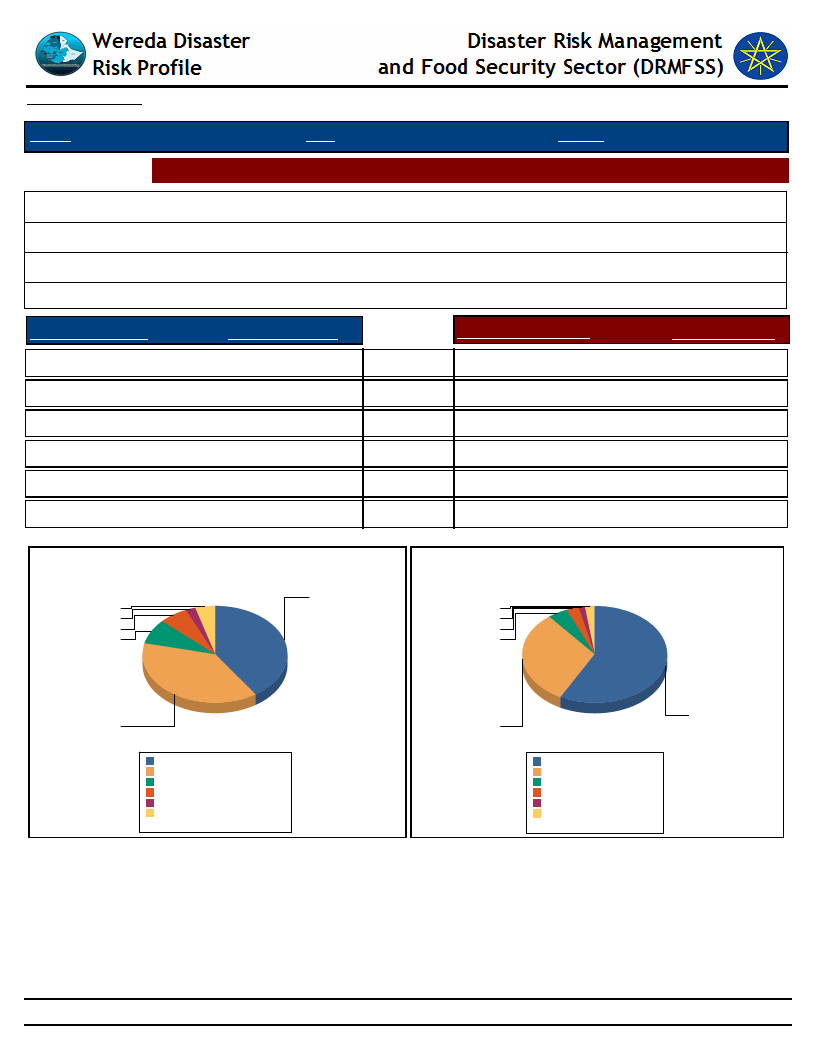
Data_Collected_Date
Thursday, September 4, 2014
Region S.N.N.P
Zone HADIYA
Wereda MIRAB BADAWOCHO
Selected Indictor: Economic Vulnerability: Land Ownership and Quality - Landownership of households
Households owning land (%)
Average landholding (in Hectares)s
Households cultivating land in last 12 months (%)
Average quantity of land cultivated (in hectares)
97.50
0.95
96.70
0.62
Range Land Holding
Percent_Response
A - Less than 0.25 ha
40.0
B - 0.25 - 0.50 ha
38.0
C - 0.5 - 0.75 ha
9.0
D - 0.75 - 1 ha
6.0
E - 1 - 2 ha
2.0
F - More than 2 ha
5.0
IMPORTANT: ha = Hectar
Household Responses to Range Land Holding
40.4
4.5
2.1
6.4
8.5
Range Cultivated Land
A - Less than 0.25 ha
B - 0.25 - 0.50 ha
C - 0.5 - 0.75 ha
D - 0.75 - 1 ha
E - 1 - 2 ha
F - More than 2 ha
Percent_Respons
58.0
31.0
4.0
3.0
1.0
2.0
Household Responses to Range Cultivated Land
2.1
1.4
3
4.4
38
A - Less than 0.25 ha
B - 0.25 - 0.50 ha
C - 0.5 - 0.75 ha
D - 0.75 - 1 ha
E - 1 - 2 ha
F - More than 2 ha
40.4%
38.0%
8.5%
6.4%
2.1%
4.5%
Total:
100.0%
31.3
57.8
A - Less than 0.25 ha 57.8
B - 0.25 - 0.50 ha 31.3
C - 0.5 - 0.75 ha
4.4
D - 0.75 - 1 ha
3
E - 1 - 2 ha
1.4
F - More than 2 ha 2.1
Total:
100
120
Page 1 of 1
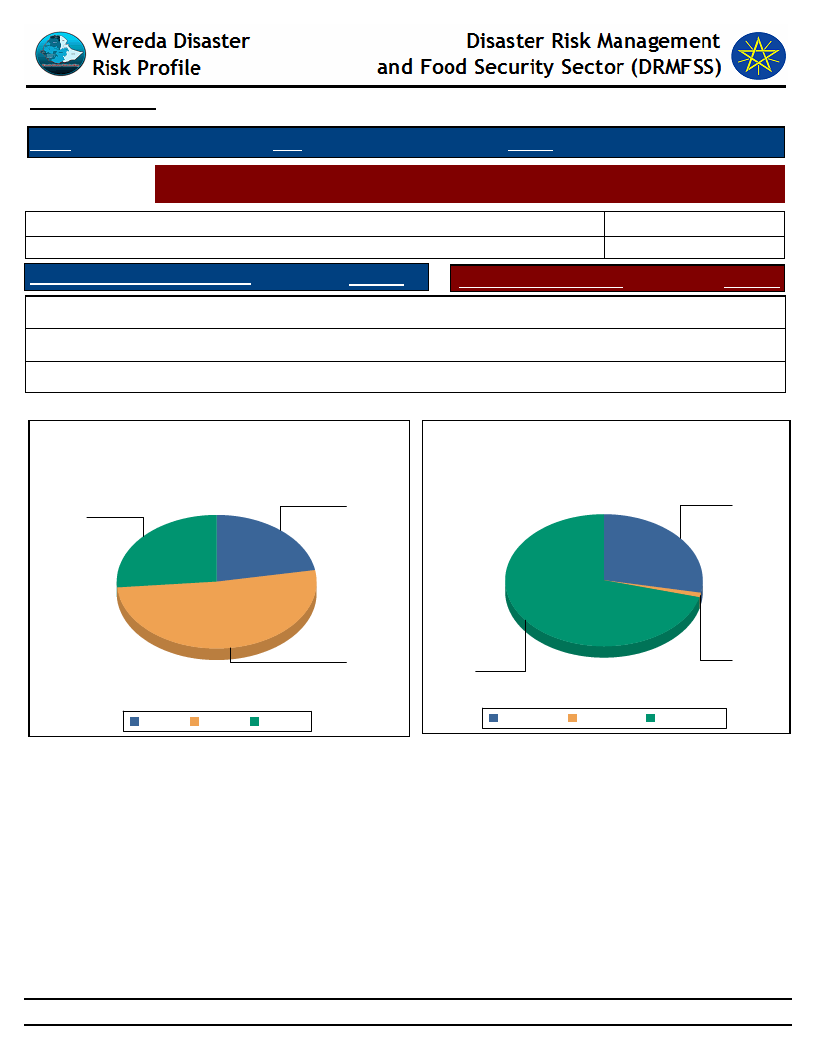
Data_Collected_Date
Thursday, September 4, 2014
Region S.N.N.P
Zone HADIYA
Wereda MIRAB BADAWOCHO
Selected Indictor:
Economic Vulnerability: Land Ownership and Quality - Farmers’ perception on the
quality of their agricultural land
Cropping_Intensity *
Households with enough land for farming
HHs with favourable location of farm
Response
Households with fertile soil
Yes
26.30
Highly fertile
2.27
11.60
Response
1.10
Partially
51.60
Fertile
28.20
No
22.10
Not fertile
70.80
* Cropping Intensity = (Gross Cropped Area / total land owned Area )x 100%
Household responses to the type of farm
location
Household responses tp the type of soil
fertility
22
28
26
52
No
Partially Yes
71
Fertile
1
Highly fertile Not fertile
121
Page 1 of 1
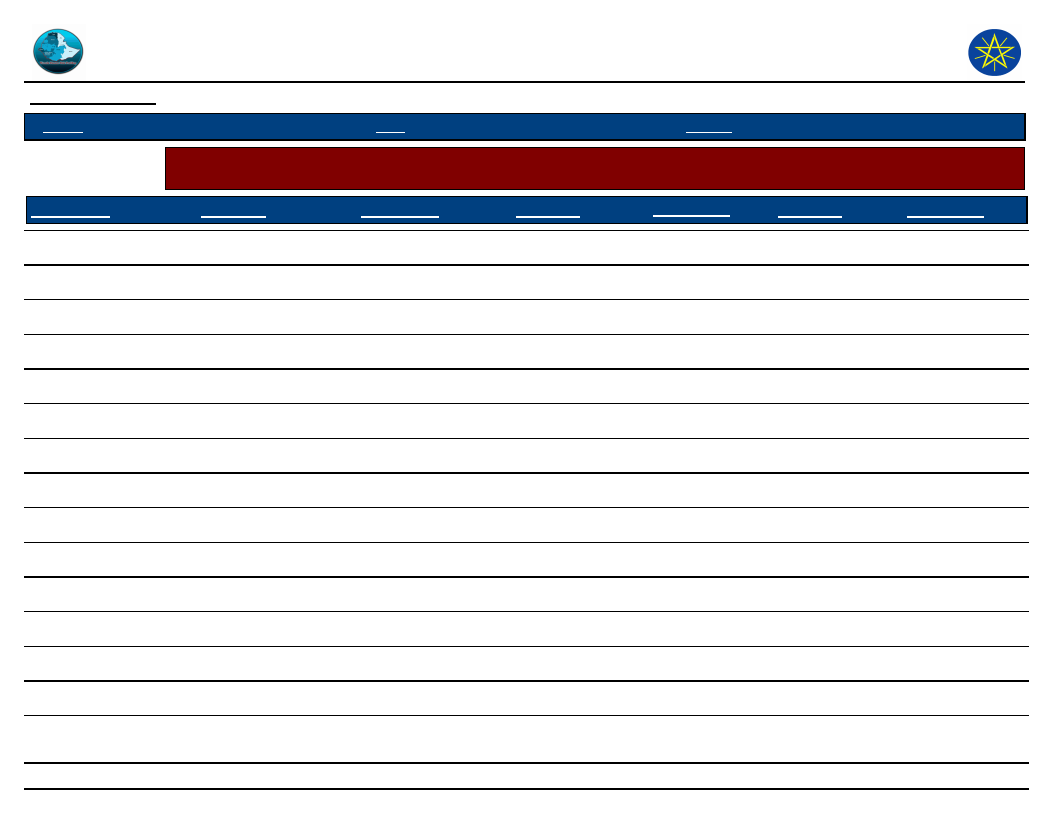
Wereda Disaster
Risk Profile
Data_Collected_Date
Region S.N.N.P
Zone HADIYA
Disaster Risk Management and Food
Security Sector (DRMFSS)
Thursday, September 4, 2014
Wereda MIRAB BADAWOCHO
Selected Indicator
Kebele Name
Environmental Situation: Land-Use other than crop production - Types of land use other than crop production
across Kebeles
Landuse_1
Comments_1
Landuse_2
Comments_2
Landuse_3
Comments_3
DEDO
Grazing land
Decreased
Honey production
Decreased
WEBARANA OFODA
Grazing land
Decreased
Honey production
Decreased
JARISO ONIJOJO
Grazing land
Decreased
Honey production
Decreased
SIBEYA
Grazing land
Decreased
Honey production
Decreased
GERIBO
Grazing land
Size decreased
Forest
Size decreased
Honey production
Size decreased
WEREBOYA
Grazing land
Decreased
Honey production
Decreased
Forest
Increased
2GNA KOTO
Grazing land
Size decreased
Honey production
Size decreased
Forest
Size decreased
HAWORA
Grazing land
Very good
Honey production
Decreased
Forest
Increased
ELIFETA
Grazing land
Size decreased
Forest
Decreased
YA BUKUNA
Grazing land
Size decreased
Forest
Decreased
WADA
Grazing land
Size decreased
Forest
Size decreased
SEPERA
Grazing land
Size decreased
Forest
Decreased
KACHA BIRA
Grazing land
Size decreased
Forest
Size decreased
1GNA KOTO
Grazing land
Reduced
Forest
Reduced
Water
Reduced
DANAMA
Grazing land
Size decreased.
Honey production.
122
Size decreased.
Forest
Decreased the
size.
Page 1 of 2
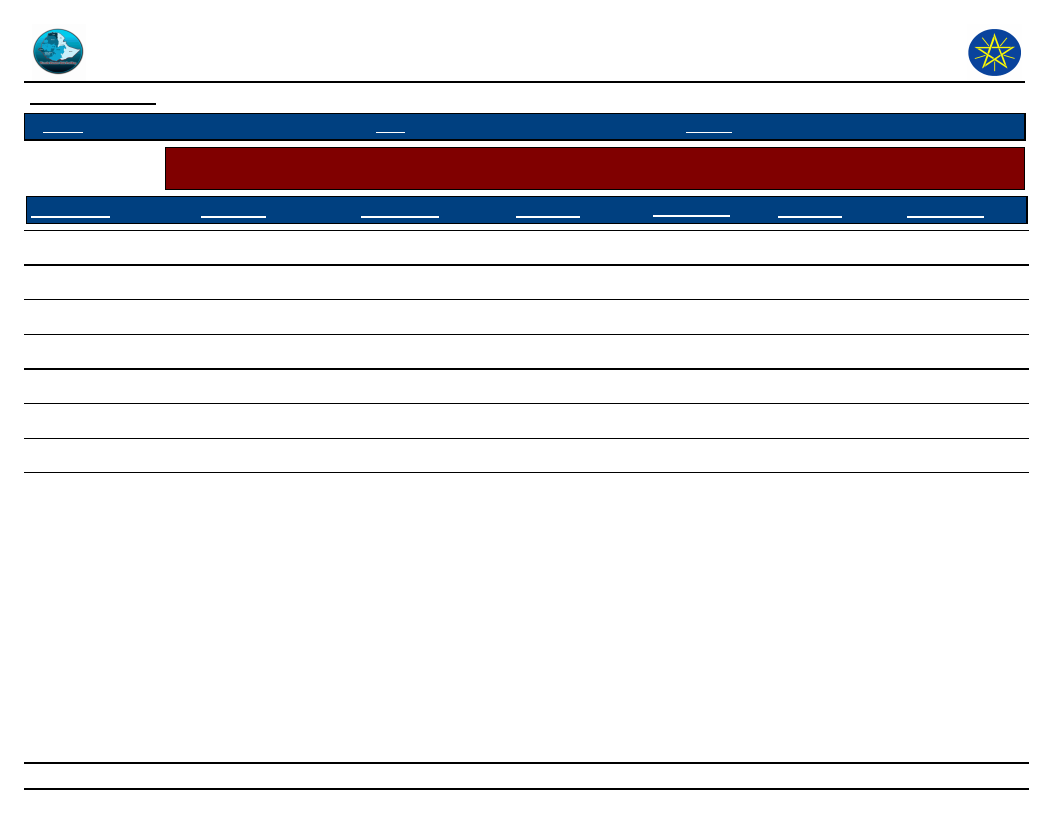
Wereda Disaster
Risk Profile
Data_Collected_Date
Region S.N.N.P
Zone HADIYA
Disaster Risk Management and Food
Security Sector (DRMFSS)
Thursday, September 4, 2014
Wereda MIRAB BADAWOCHO
Selected Indicator
Kebele Name
Environmental Situation: Land-Use other than crop production - Types of land use other than crop production
across Kebeles
Landuse_1
Comments_1
Landuse_2
Comments_2
Landuse_3
Comments_3
DANAMA 01
Land use
Decreased.
Grazing land
Decreased.
Honey production. Decreased.
2nd KESHORA
Grazing land
Size decreased.
Honey production.
Decreased.
Forest
Decreased.
WADA 01
Grazing land
Decreased.
Forest
Decreased.
FIRST KASHERA
Grazing land
Decreased.
Forest
Decreased.
JARSO MAJORIYA
Grazing land
Decreased.
OFFDAA
Grazing land
Decreased.
Forest
Decreased.
MIRAB AJEBA
Grazing land
Decreased.
123
Page 2 of 2
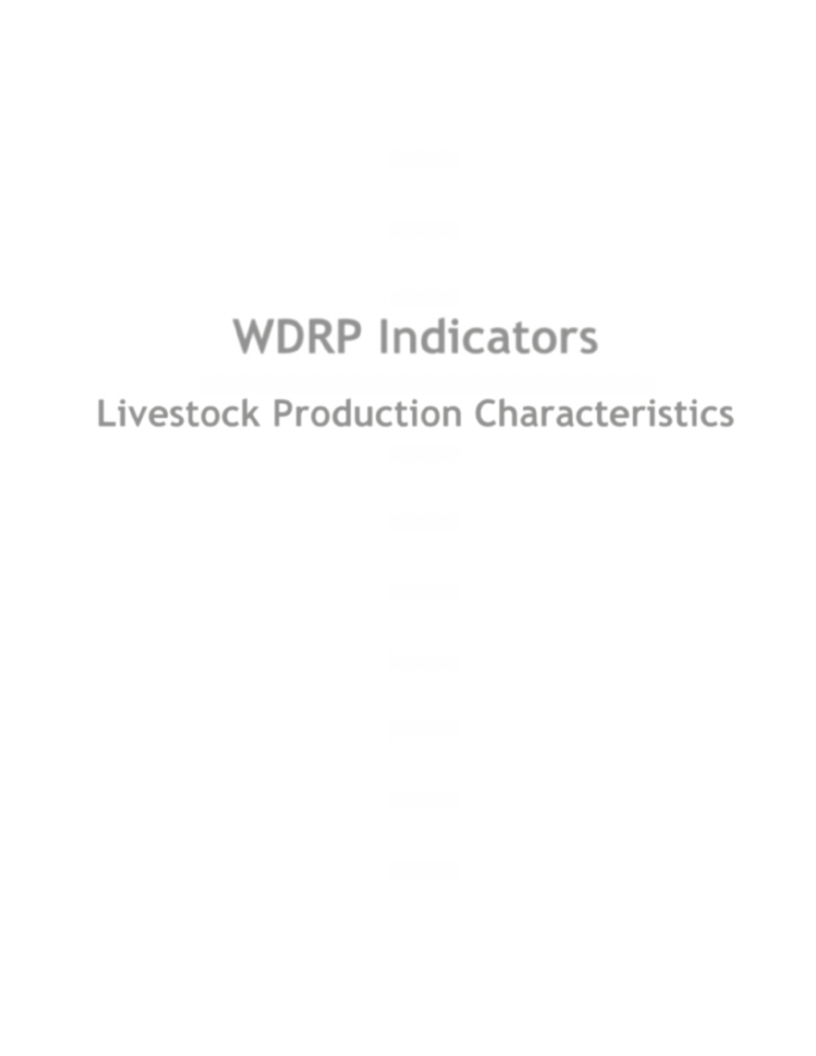
WDRP Indicators
Livestock Production Characteristics
124
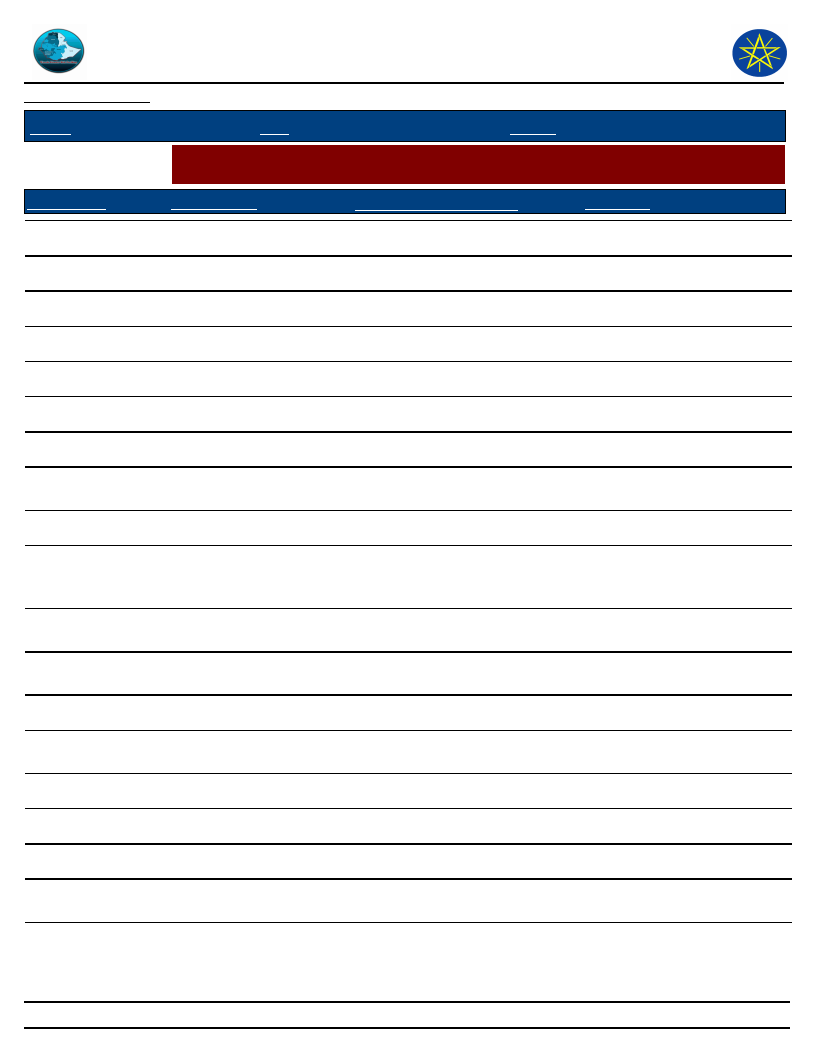
Wereda Disaster
Risk Profile
Disaster Risk Management
and Food Security Sector (DRMFSS)
Data_Collected_Date
Thursday, September 4, 2014
Region S.N.N.P
Zone HADIYA
Wereda MIRAB BADAWOCHO
Selected Indictor:
Kebele Name
Agricultural Situation: Status of Livestock Disease - Change in Livestock Disease
Status
Current_Level
Change_Over_Last_Decade
Comment
DEDO
Decreased
Decreased
Drought
WEBARANA OFODA
Decreased
Decreased
Drought
JARISO ONIJOJO
Decreased
Decreased
Drought
SIBEYA
Decreased
Decreased
Drought
GERIBO
Decreased
Decreased
Drought
WEREBOYA
Decreased
Decreased
Drought
2GNA KOTO
Decreased
Decreased
Drought
HAWORA
ELIFETA
Decreased
Low
Good
Decreased
Community awareness
creation increased
Health center construction
YA BUKUNA
WADA
SEPERA
KACHA BIRA
Low
Decreased
Better
Decreased
Decreased
Decreased
Decreased
Decreased
Strength prevention
method, health center
establishment
Awareness of people
increased
Due to health center
expansion
Health service increased
1GNA KOTO
DANAMA
Decreased
Decreased
Decreased
Decreased
Give health service and
awareness creation
Drought
DANAMA 01
Decreased
Decreased
Drought
2nd KESHORA
Decreased
Decreased
Drought
WADA 01
FIRST KASHERA
Decreased
Decreased
Better
Better
Expansion of animal health
center in each kebele
Expansion of animal health
center in each kebele
125
Page 1 of 2
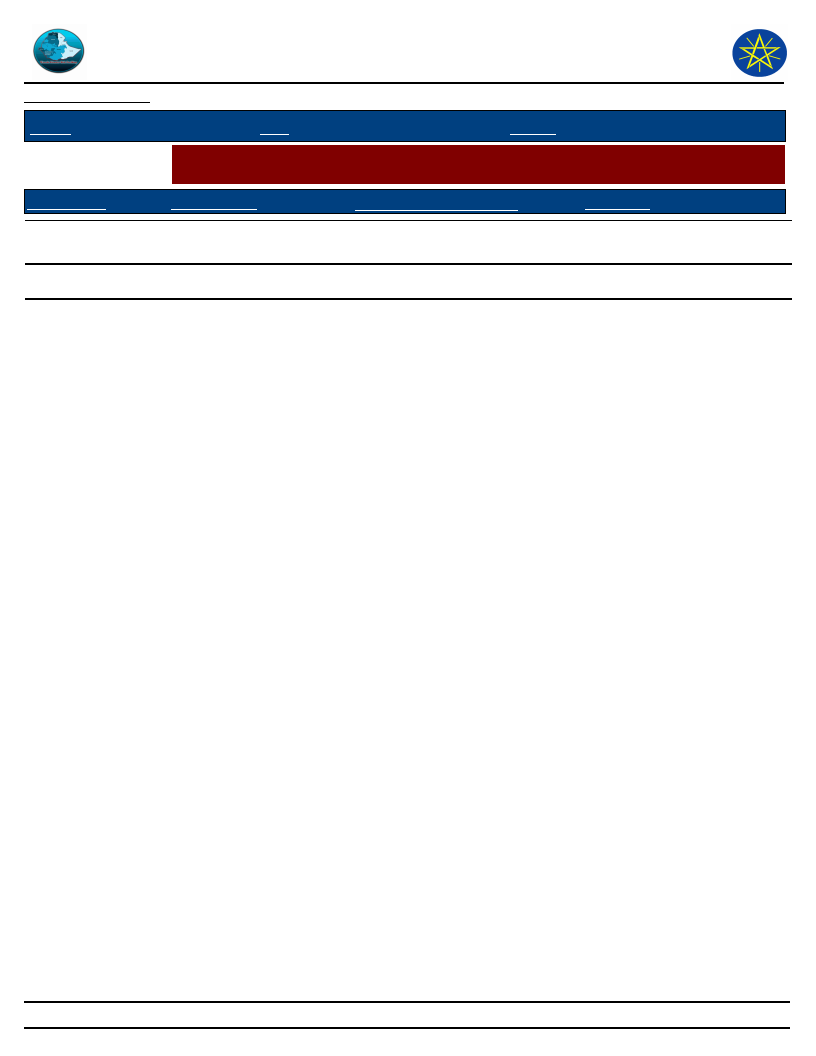
Wereda Disaster
Risk Profile
Disaster Risk Management
and Food Security Sector (DRMFSS)
Data_Collected_Date
Thursday, September 4, 2014
Region S.N.N.P
Zone HADIYA
Wereda MIRAB BADAWOCHO
Selected Indictor:
Kebele Name
Agricultural Situation: Status of Livestock Disease - Change in Livestock Disease
Status
Current_Level
Change_Over_Last_Decade
Comment
JARSO MAJORIYA
OFFDAA
Low
Better
Decreased
Decreased
Health center
establishment
Health center expansion
MIRAB AJEBA
Better
Decreased
Focus on prevention
method
126
Page 2 of 2
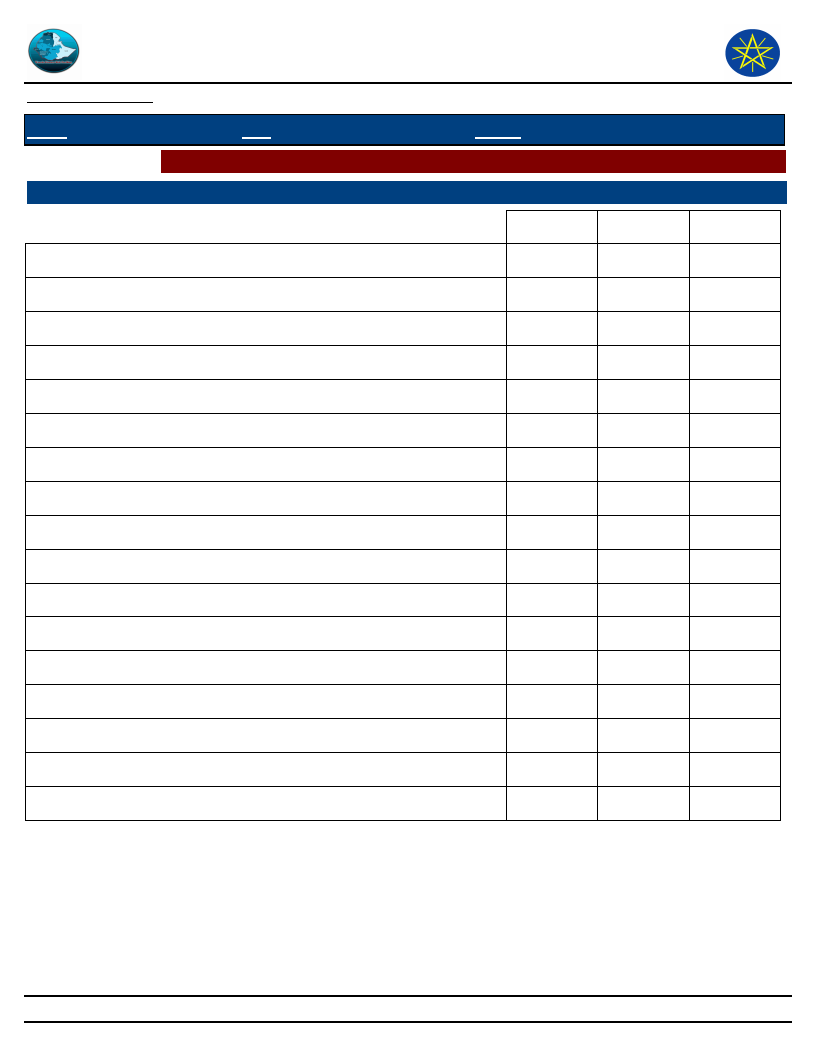
Wereda Disaster
Risk Profile
Data_Collected_Date
Disaster Risk Management
and Food Security Sector (DRMFSS)
Thursday, September 4, 2014
Region S.N.N.P
Zone HADIYA
Wereda MIRAB BADAWOCHO
Selected Indictor: Livestock Diseases Prevalece
Type of livestock diseases affected households in the last five years (households reporting in %)
African horse disease
1st
2nd
3rd
0.40
Anthrax
24.20
0.70
7.80
Black leg
43.00
24.90
2.90
Contagious Caprine Pleuropneumonia (CCPP)
0.40
24.90
1.20
Faculiasis
0.20
Foot and Mouth Disease (FMD)
3.90
8.40
5.90
Internal and External Parasite
0.20
0.20
Liverfluke
0.60
1.40
1.70
Lymphangitis
11.60
2.90
5.60
Newcastle disease (Chicken)
7.30
28.30
42.50
None
0.20
Pasteurellosis
0.50
PPR
0.20
0.50
0.20
Respiratory Complex of Camels
0.50
Sheep pox
7.10
7.50
27.40
Tick born diseases
0.40
0.70
Trypanosomiasis
0.60
127
Page 1 of 1
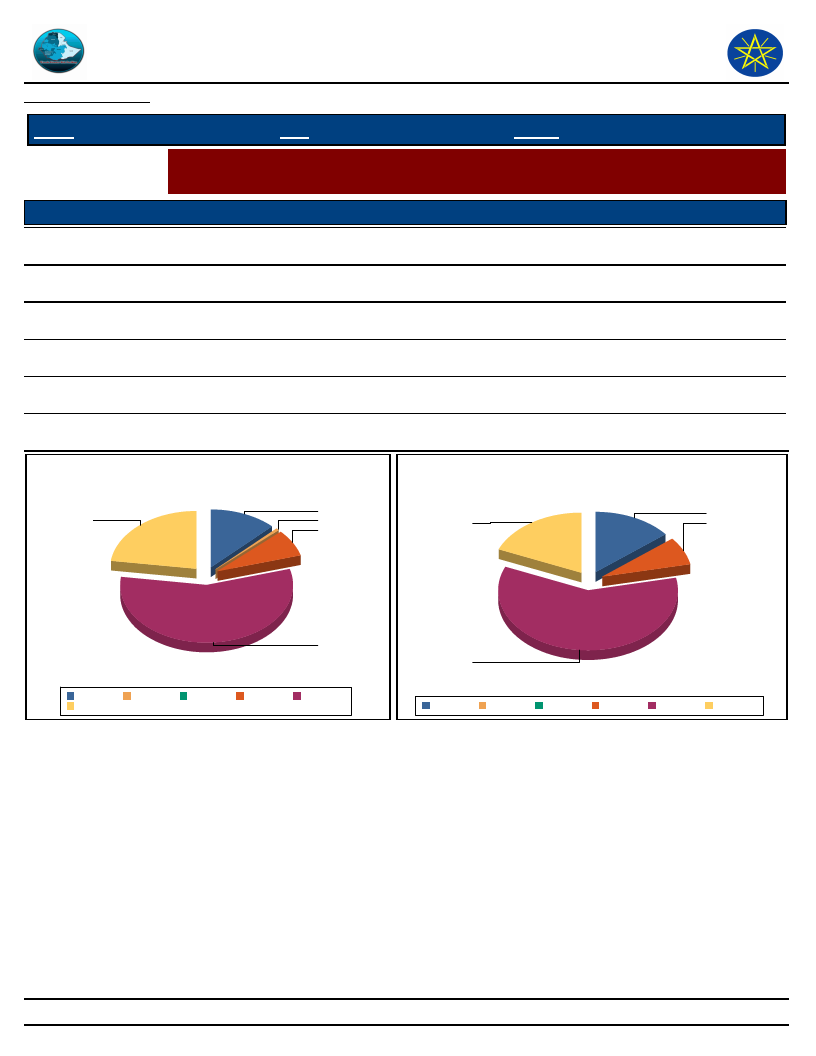
Wereda
Disaster Risk
Data_Collected_Date
Disaster Risk Management
and Food Security Sector
Thursday, September 4, 2014
Region S.N.N.P
Selected Indictor:
Level of Access
Excellent
Zone HADIYA
Wereda MIRAB BADAWOCHO
Evaluation of Access to Veternary Services and Livestock Drugs
Households’ evaluation on access to drugs and veterinary services
Veternary Service
Livestock_Drugs
Good
7.40
7.40
Adequate
12.60
14.20
Poor
56.70
59.70
Very poor
22.80
18.60
DK
0.40
Level of Access to Veternary Services
13
23
0
7
Access Level of Livestock Drugs
14
19
7
57
Adequate DK
Very poor
Excellent
Good
Poor
60
Adequate DK
Excellent
Good
Poor
Very poor
128
Page 1 of 1
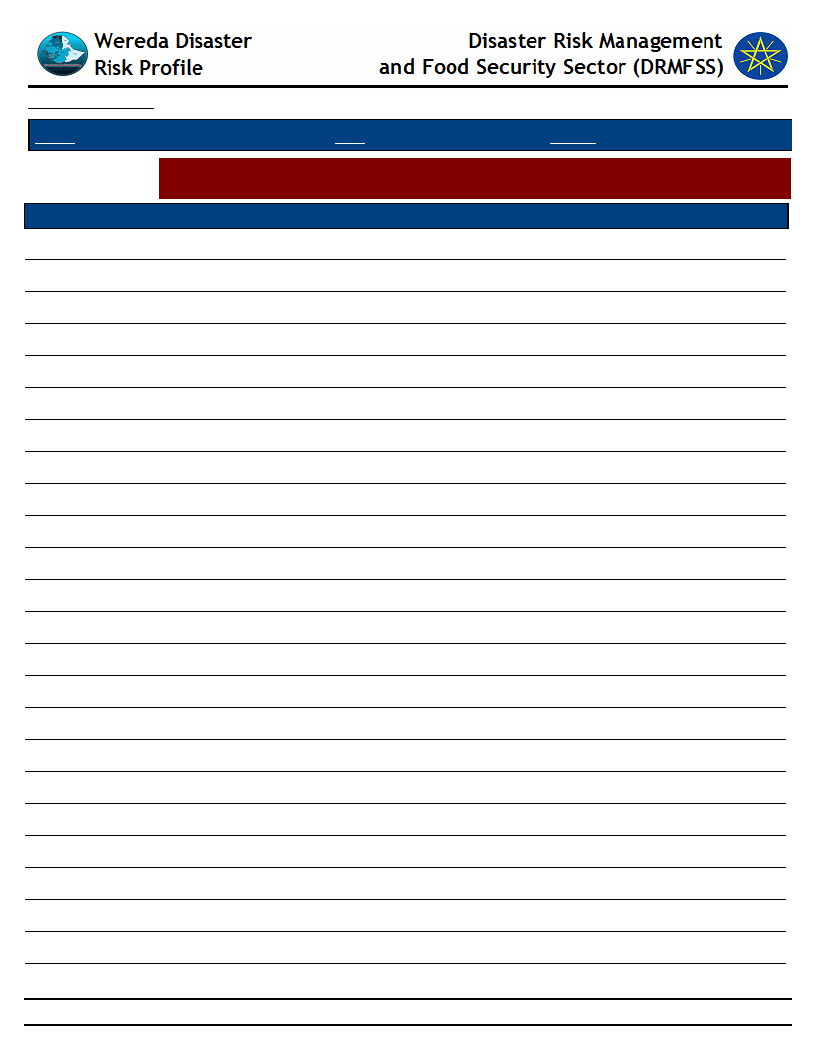
Data_Collected_Date
Thursday, September 4, 2014
Region S.N.N.P
Zone HADIYA
Wereda MIRAB BADAWOCHO
Selected Indictor:
Agricultural Situation: Livestock Diversity - Type of livestock and their economic
importance in the community
KebeleName
DEDO
Type of Livestock
Cattle: Mature Male
Avg_Num_Per_HH
5.00
Economic_Importance_Rank
Very high.
Cattle: Mature Female
5.00
Very high.
Sheep
1.00
Good
Goats
1.00
Good.
Donkeys
5.00
Good.
WEBARANA OFODA
Cattle: Mature Male
5.00
Very high.
Cattle: Mature Female
5.00
Very high.
Sheep
1.00
Good
Goats
1.00
Good.
Donkeys
5.00
Good.
JARISO ONIJOJO
Cattle: Mature Male
5.00
Very high.
Cattle: Mature Female
5.00
Very high.
Sheep
1.00
Good
Goats
1.00
Good.
Donkeys
5.00
Good.
SIBEYA
Cattle: Mature Male
5.00
Very high.
Cattle: Mature Female
5.00
Very high.
Sheep
1.00
Good
Goats
1.00
Good.
Donkeys
5.00
Good.
GERIBO
Cattle: Mature Male
1.00
Very high.
Cattle: Mature Female
1.00
Very high.
Sheep
1.00
Good
129
Page 1 of 6
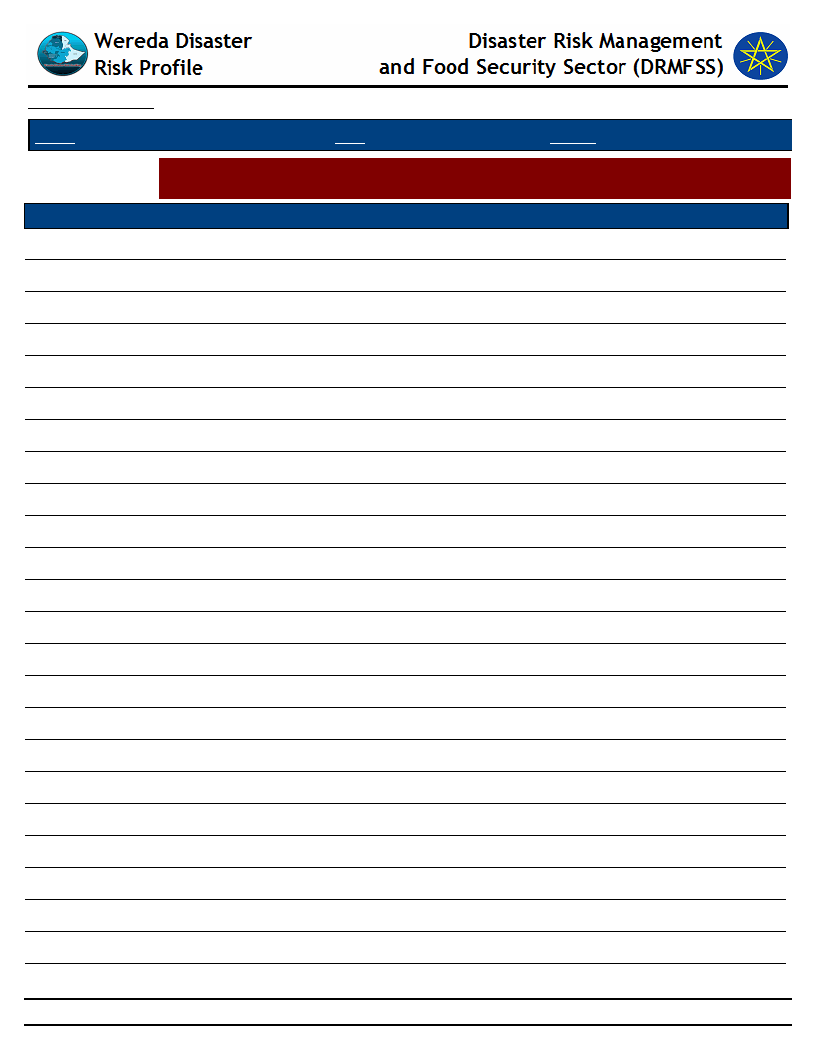
Data_Collected_Date
Thursday, September 4, 2014
Region S.N.N.P
Zone HADIYA
Wereda MIRAB BADAWOCHO
Selected Indictor:
Agricultural Situation: Livestock Diversity - Type of livestock and their economic
importance in the community
KebeleName
GERIBO
Type of Livestock
Goats
Avg_Num_Per_HH
1.00
Economic_Importance_Rank
Good.
Donkeys
5.00
Good.
WEREBOYA
Cattle: Mature Male
5.00
Very high.
Cattle: Mature Female
5.00
Very high.
Sheep
5.00
Good
Goats
5.00
Good.
Donkeys
5.00
Good.
2GNA KOTO
Cattle: Mature Male
5.00
Very high.
Cattle: Mature Female
1.00
Very high.
Sheep
1.00
Good
Goats
5.00
Good.
Donkeys
5.00
Good.
HAWORA
Cattle: Mature Female
1.00
Very high.
Cattle: Mature Male
1.00
Very high.
Goats
1.00
Good
Sheep
1.00
Good.
Donkeys
1.00
Good.
ELIFETA
Cattle: Mature Male
4.00
Very high.
Cattle: Mature Female
1.00
Very high.
Goats
1.00
Good
Sheep
1.00
Good.
Poultry
1.00
Good.
YA BUKUNA
Cattle: Mature Male
1.00
Very high.
130
Page 2 of 6
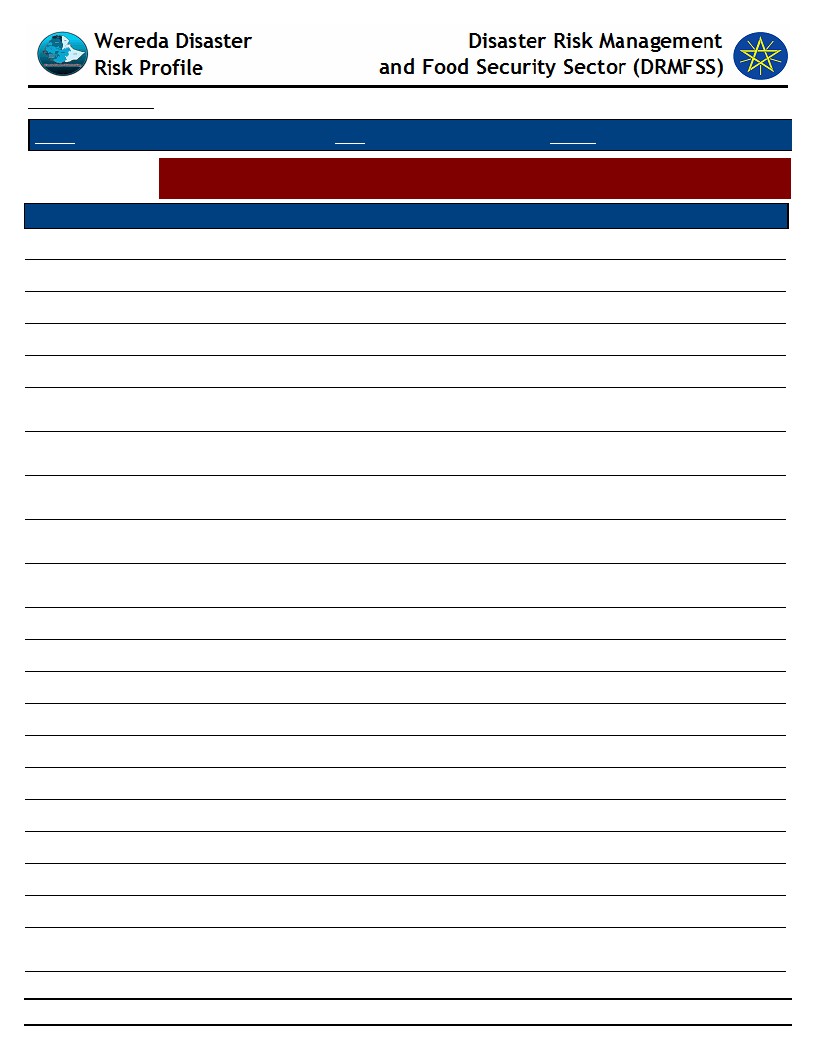
Data_Collected_Date
Thursday, September 4, 2014
Region S.N.N.P
Zone HADIYA
Wereda MIRAB BADAWOCHO
Selected Indictor:
Agricultural Situation: Livestock Diversity - Type of livestock and their economic
importance in the community
KebeleName
YA BUKUNA
Type of Livestock
Cattle: Mature Female
Avg_Num_Per_HH
1.00
Economic_Importance_Rank
Very high.
Sheep
1.00
Good
Goats
1.00
Good.
Poultry
1.00
Good.
WADA
SEPERA
Cattle: Mature Male
Cattle: Mature Female
Goats
Sheep
Poultry
Cattle: Mature Male
2.00
Very important for the
community.
5.00
Very important for the
community.
5.00
Very important for the
community.
5.00
Very important for the
community.
1.00
Very important for the
community.
3.00
Highly important.
Cattle: Mature Female
1.00
Highly important.
Sheep
1.00
Important.
Goats
1.00
Important.
Poultry
1.00
Important.
KACHA BIRA
Cattle: Mature Male
1.00
Highly important.
Cattle: Mature Female
1.00
Highly important.
Goats
1.00
Important.
Sheep
1.00
Important.
1GNA KOTO
Cattle: Mature Male
1.00
Important.
Cattle: Mature Female
Goats
1.00
Very important for the
community.
1.00
Very important for the
community.
131
Page 3 of 6
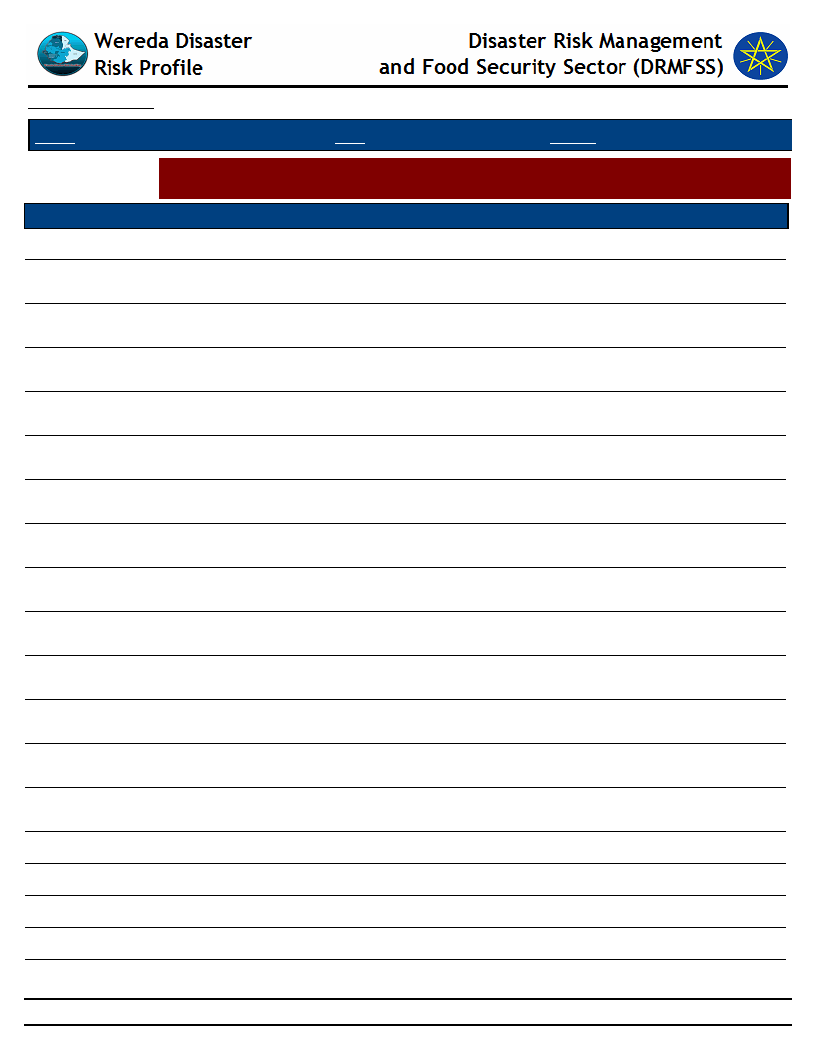
Data_Collected_Date
Thursday, September 4, 2014
Region S.N.N.P
Zone HADIYA
Wereda MIRAB BADAWOCHO
Selected Indictor:
Agricultural Situation: Livestock Diversity - Type of livestock and their economic
importance in the community
KebeleName
1GNA KOTO
DANAMA
DANAMA 01
2nd KESHORA
Type of Livestock
Sheep
Poultry
Cattle: Mature Male
Cattle: Mature Female
Sheep
Goats
Donkeys
Cattle: Female
Cattle: Mature Female
Sheep
Goats
Donkeys
Cattle: Mature Male
Cattle: Mature Female
Avg_Num_Per_HH
1.00
1.00
0.50
0.50
1.00
1.00
0.50
0.50
0.50
1.00
1.00
0.50
0.50
0.50
Economic_Importance_Rank
Very important for the
community.
Very important for the
community.
Very important for the
community.
Very important for the
community.
Very important for the
community.
Very important for the
community.
Very important for the
community.
Very important for the
community.
Very important for the
community.
Very important for the
community.
Very important for the
community.
Very important for the
community.
Very important for the
community.
Very high.
Sheep
1.00
Very high.
Goats
1.00
very high.
Donkeys
0.50
Very high.
WADA 01
Cattle: Mature Male
0.30
Very high.
132
Page 4 of 6
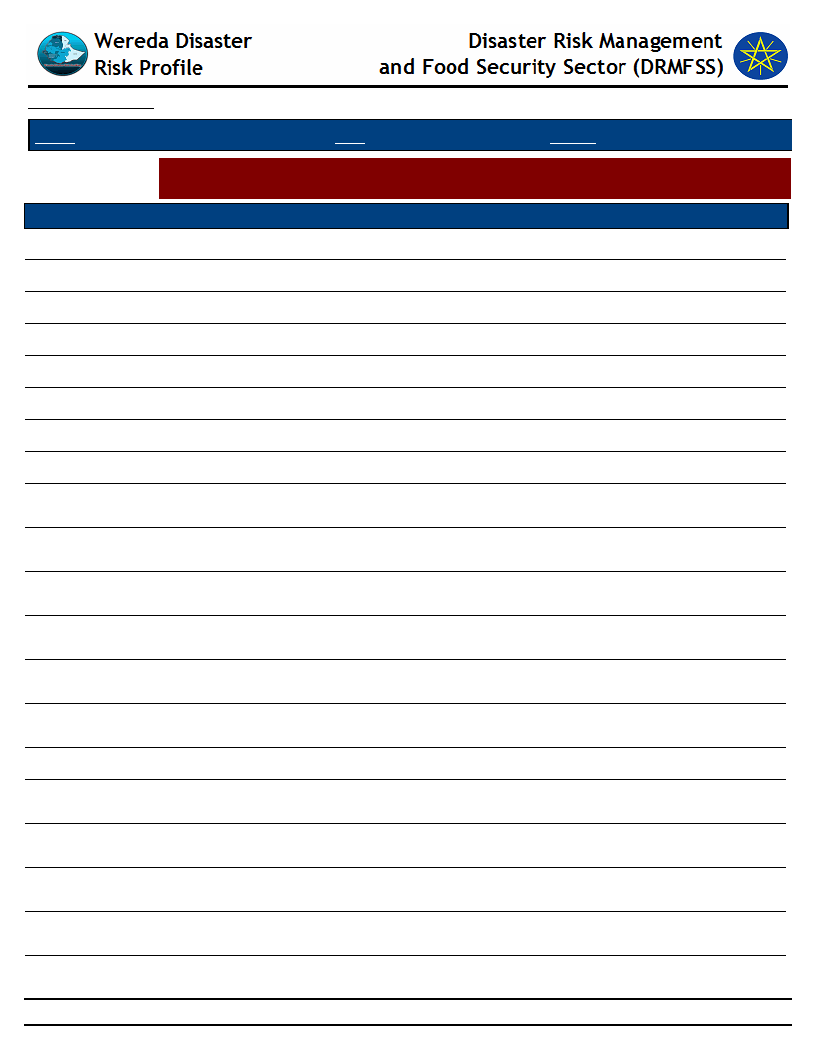
Data_Collected_Date
Thursday, September 4, 2014
Region S.N.N.P
Zone HADIYA
Wereda MIRAB BADAWOCHO
Selected Indictor:
Agricultural Situation: Livestock Diversity - Type of livestock and their economic
importance in the community
KebeleName
WADA 01
Type of Livestock
Cattle: Mature Female
Avg_Num_Per_HH
0.50
Economic_Importance_Rank
Most important.
Sheep
0.50
Most important.
Goats
0.30
Most important.
Poultry
1.00
More important.
FIRST KASHERA
Cattle: Mature Male
0.30
Important.
Cattle: Mature Female
0.50
Highly important.
Sheep
0.05
Highly important.
JARSO MAJORIYA
Goats
Poultry
Cattle: Mature Male
Cattle: Mature Female
Sheep
Goats
Poultry
0.03
Very important for the
community.
1.00
Very important for the
community.
0.20
Very important for the
community.
0.50
Very important for the
community.
0.03
Very important for the
community.
0.03
Very important for the
community.
0.50
Important.
OFFDAA
MIRAB AJEBA
Cattle: Mature Male
Cattle: Mature Female
Sheep
Goats
Cattle: Mature Male
0.30
Very important for the
community.
0.50
Very important for the
community.
0.03
Very important for the
community.
0.03
Very important for the
community.
0.20
Very important for the
community.
133
Page 5 of 6
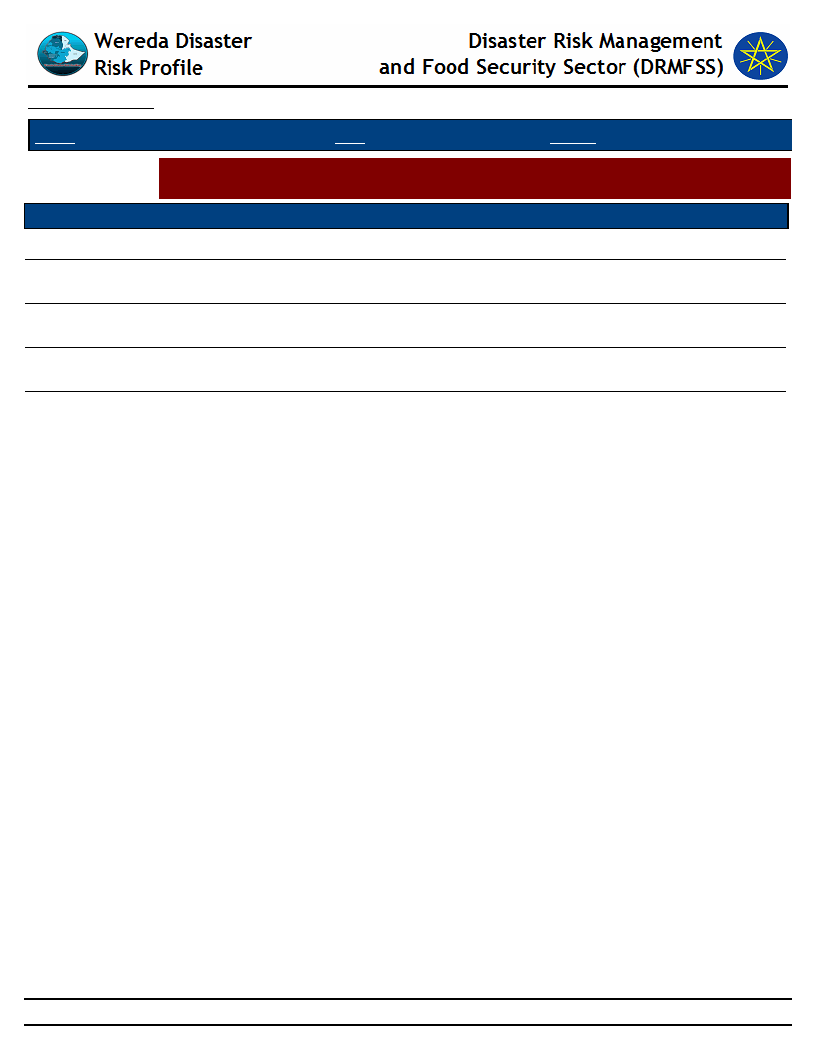
Data_Collected_Date
Thursday, September 4, 2014
Region S.N.N.P
Zone HADIYA
Wereda MIRAB BADAWOCHO
Selected Indictor:
Agricultural Situation: Livestock Diversity - Type of livestock and their economic
importance in the community
KebeleName
MIRAB AJEBA
Type of Livestock
Cattle: Mature Female
Sheep
Goats
Poultry
Avg_Num_Per_HH
0.50
0.02
0.03
1.00
Economic_Importance_Rank
Very important for the
community.
Very important for the
community.
Very important for the
community.
Very important for the
community.
134
Page 6 of 6
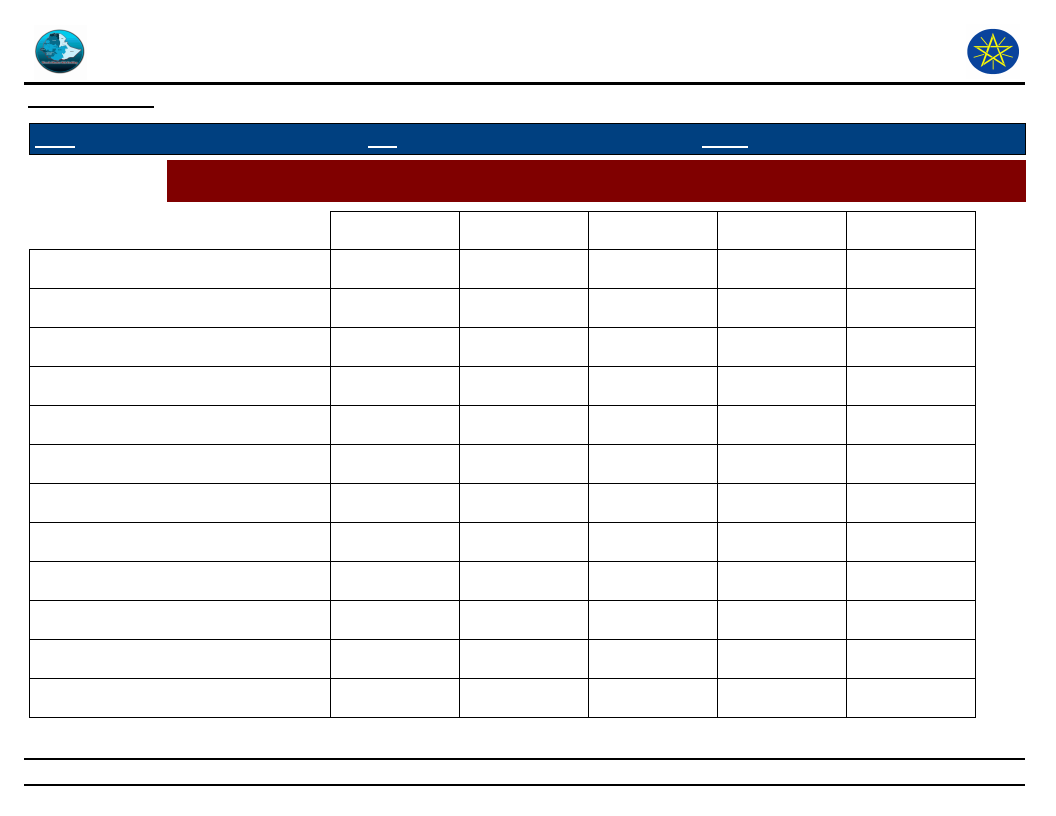
Wereda Disaster
Risk Profile
Data_Collected_Date
Disaster Risk Management
and Food Security Sector (DRMFSS)
Thursday, September 4, 2014
Region S.N.N.P
Zone HADIYA
Wereda MIRAB BADAWOCHO
Selected Indictor:
Economic Vulnerability: Livestock Ownership and Changes - Percentage of households by number and type of
livestock owned
A - 1 to 5
B - 6 to 10
C - 11 to 50
D - 51 to 100
None
Bee keeping
4.70
0.40
94.90
Camels: Female
4.00
0.20
95.70
Camels: Male
0.40
0.20
99.40
Camels: Young Female
0.40
0.20
99.40
Camels: Young Male
0.20
0.20
99.60
Cattle: Female
38.70
0.20
61.10
Cattle: Male bulls
20.00
0.60
79.40
Cattle: Mature Female
1.30
0.20
43.40
Cattle: Mature Male
32.90
0.40
66.70
Cattle: under 1 year
31.90
1.10
67.00
Donkeys
10.40
0.20
89.40
Goats
14.90
1.50
0.40
83.20
135
Page 1 of 2
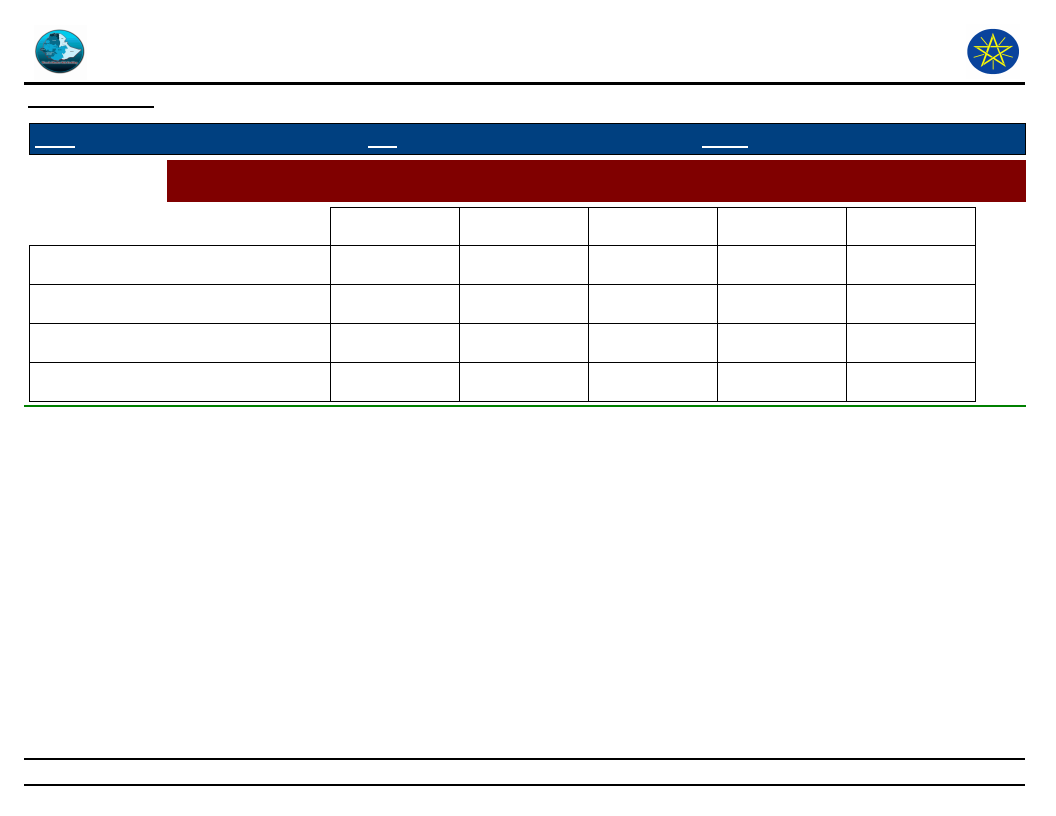
Wereda Disaster
Risk Profile
Data_Collected_Date
Disaster Risk Management
and Food Security Sector (DRMFSS)
Thursday, September 4, 2014
Region S.N.N.P
Zone HADIYA
Wereda MIRAB BADAWOCHO
Selected Indictor:
Economic Vulnerability: Livestock Ownership and Changes - Percentage of households by number and type of
livestock owned
A - 1 to 5
B - 6 to 10
C - 11 to 50
D - 51 to 100
None
Horses
3.00
0.20
96.80
Mules
2.10
0.20
97.70
Poultry
19.10
2.60
0.40
0.10
77.70
Sheep
17.20
0.20
82.60
136
Page 2 of 2
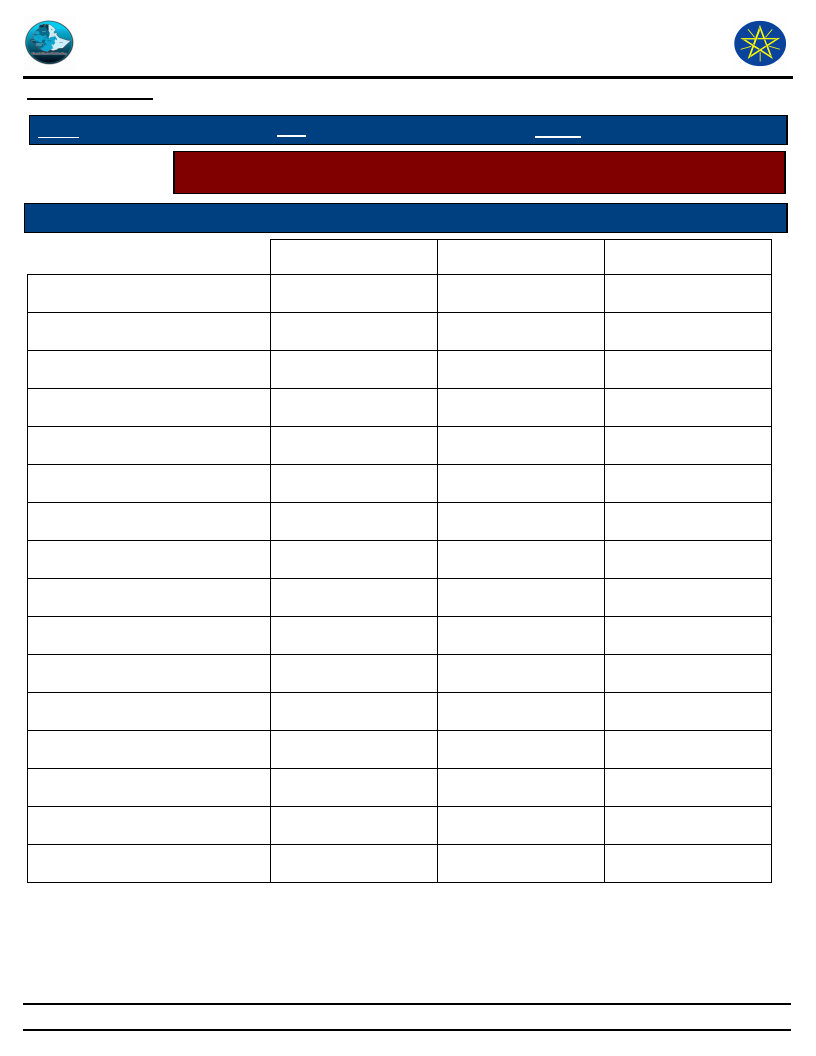
Wereda Disaster
Risk Profile
Data_Collected_Date
Disaster Risk Management
and Food Security Sector (DRMFSS)
Thursday, September 4, 2014
Region S.N.N.P
Zone HADIYA
Wereda MIRAB BADAWOCHO
Selected Indicator
Economic Vulnerability: Livestock Ownership and Changes - Households
perception on changes in livestock number in the last five years (response in %)
Type of Livestock Owned
Changes Observed By Households
Bee keeping
Decreased
73.10
Increased
3.80
Remained the Same
23.10
Camels: Female
78.30
8.70
8.70
Camels: Male
66.70
33.30
Camels: Young Female
66.70
33.30
Camels: Young Male
50.00
50.00
Cattle: Female
73.00
7.90
19.10
Cattle: Male bulls
78.70
11.70
8.50
Cattle: Mature Female
76.70
7.00
16.30
Cattle: Mature Male
68.20
7.10
24.70
Cattle: under 1 year
64.70
12.00
23.30
Donkeys
55.10
8.20
36.70
Goats
60.80
12.70
26.60
Horses
72.20
5.60
22.20
Mules
61.50
7.70
30.80
Poultry
58.90
27.40
13.70
Sheep
80.50
7.80
11.70
137
Page 1 of 4
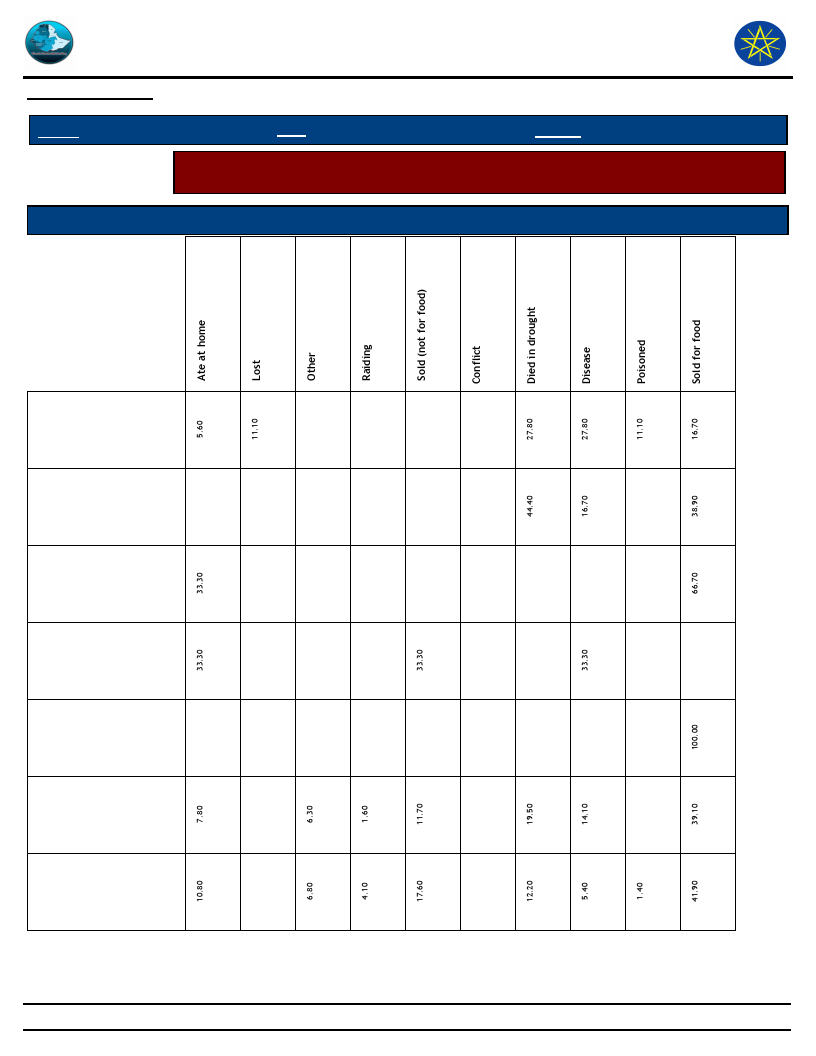
Wereda Disaster
Risk Profile
Data_Collected_Date
Disaster Risk Management
and Food Security Sector (DRMFSS)
Thursday, September 4, 2014
Region S.N.N.P
Zone HADIYA
Wereda MIRAB BADAWOCHO
Selected Indicator
Economic Vulnerability: Livestock Ownership and Changes - Households
perception on changes in livestock number in the last five years (response in %)
Type of Livestock Owned
Reason for Decrease in Livestock Number
Bee keeping
Camels: Female
Camels: Male
Camels: Young
Female
Camels: Young
Male
Cattle: Female
Cattle: Male bulls
138
Page 2 of 4
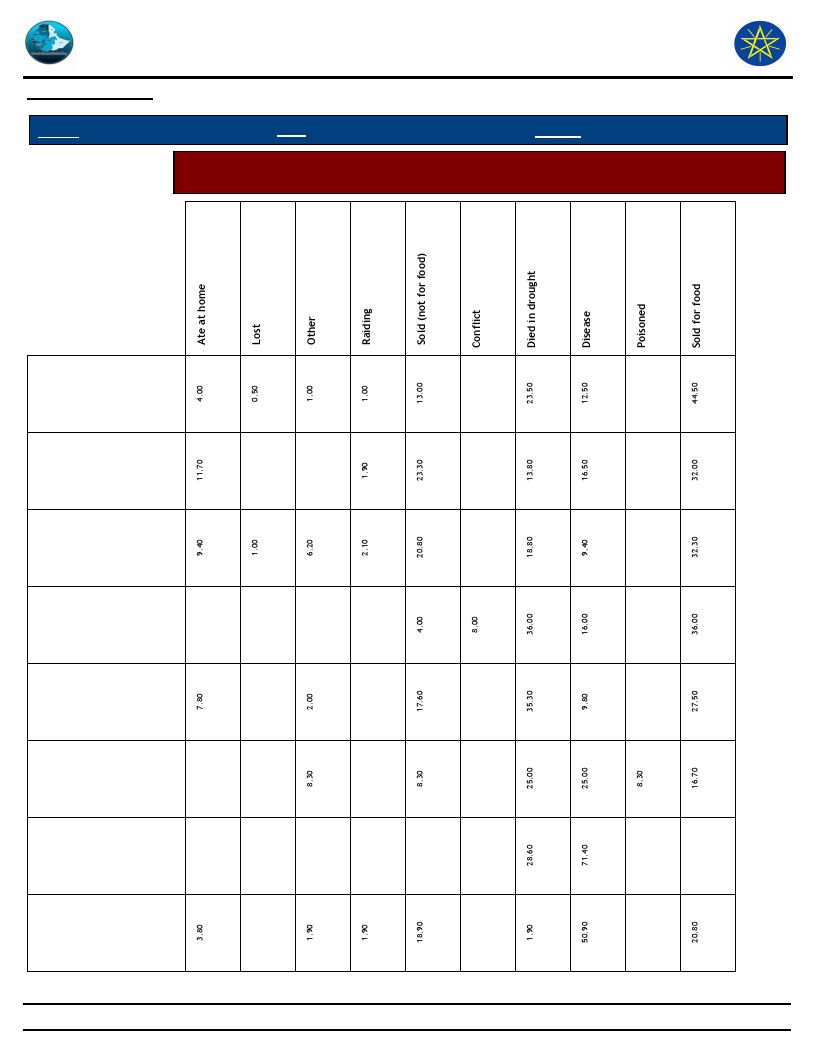
Wereda Disaster
Risk Profile
Data_Collected_Date
Disaster Risk Management
and Food Security Sector (DRMFSS)
Thursday, September 4, 2014
Region S.N.N.P
Zone HADIYA
Wereda MIRAB BADAWOCHO
Selected Indicator
Economic Vulnerability: Livestock Ownership and Changes - Households
perception on changes in livestock number in the last five years (response in %)
Cattle: Mature
Female
Cattle: Mature
Male
Cattle: under 1
year
Donkeys
Goats
Horses
Mules
Poultry
139
Page 3 of 4
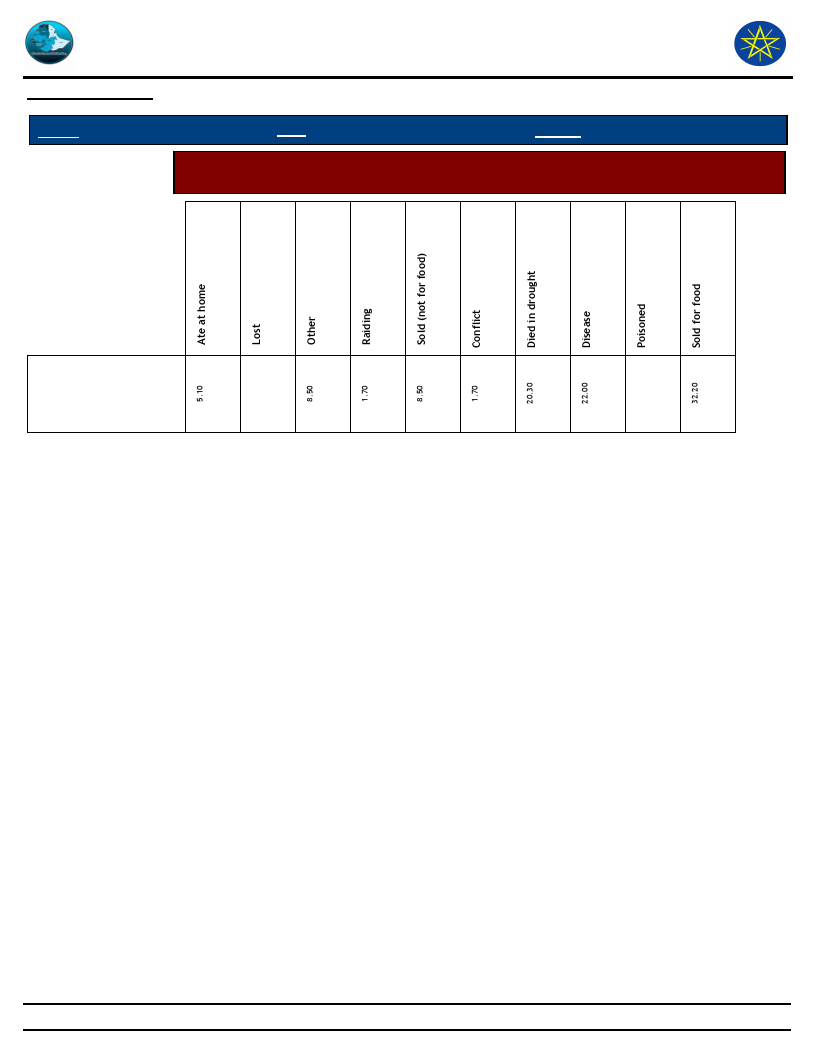
Wereda Disaster
Risk Profile
Data_Collected_Date
Disaster Risk Management
and Food Security Sector (DRMFSS)
Thursday, September 4, 2014
Region S.N.N.P
Zone HADIYA
Wereda MIRAB BADAWOCHO
Selected Indicator
Economic Vulnerability: Livestock Ownership and Changes - Households
perception on changes in livestock number in the last five years (response in %)
Sheep
140
Page 4 of 4
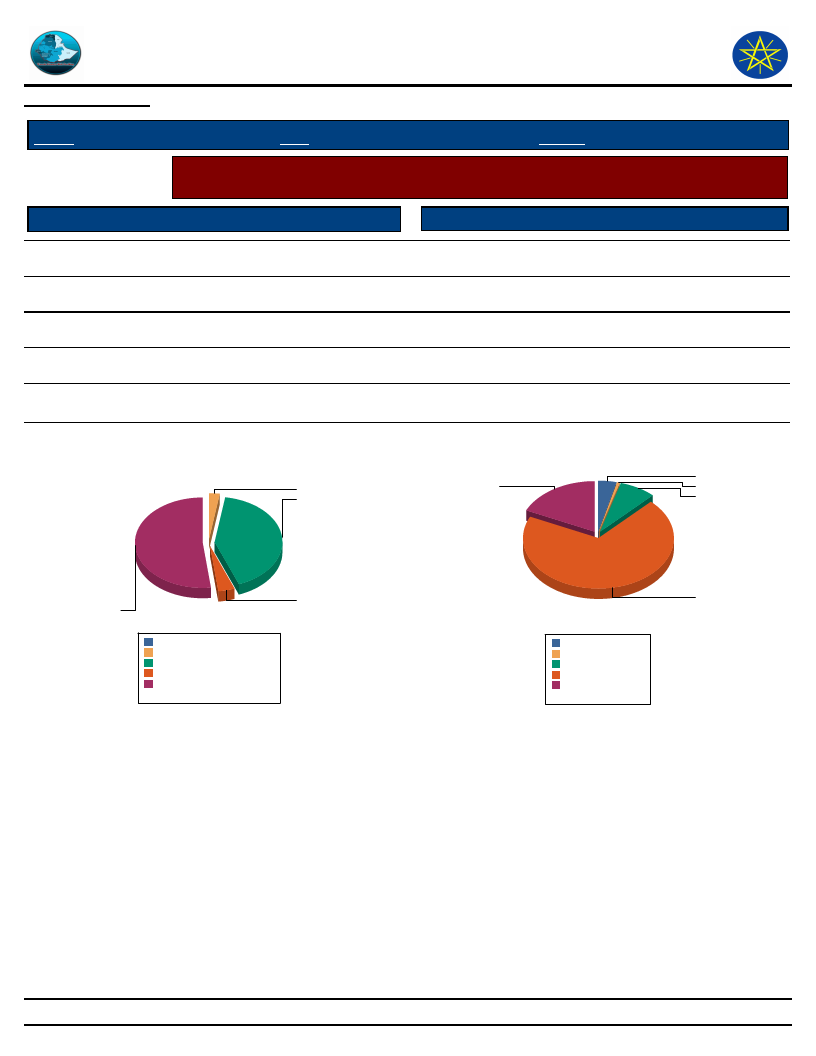
Wereda Disaster
Risk Profile
Data_Collected_Date
Disaster Risk Management
and Food Security Sector (DRMFSS)
Thursday, September 4, 2014
Region S.N.N.P
Selected Indicator
Access to Pasture
Zone HADIYA
Wereda MIRAB BADAWOCHO
Agriculture (Livestock): Pasture Availability - Households perception on access
and quality of pasture
Response Percent
Quality of Pasture
Response Percent
Regularly available
3.70
Excellent
0.60
Occasionally
41.90
Good
7.80
Seldom available
52.00
Adequate
3.90
Never available
2.40
Poor
69.50
0.00
Very poor
18.10
Household responses to Access to Pasture for
Livestock
2.4
41.9
Household responses to Quality of Pasture
3.9
18.1
0.6
7.8
3.7
52
Never available
Occasionally
Regularly available
0.0%
2.4%
41.9%
3.7%
Seldom available 52.0%
Total:
100.0%
Adequate 3.9%
Excellent
Good
Poor
0.6%
7.8%
69.6%
Very poor 18.1%
Total: 100.0%
69.5
141
Page 1 of 1
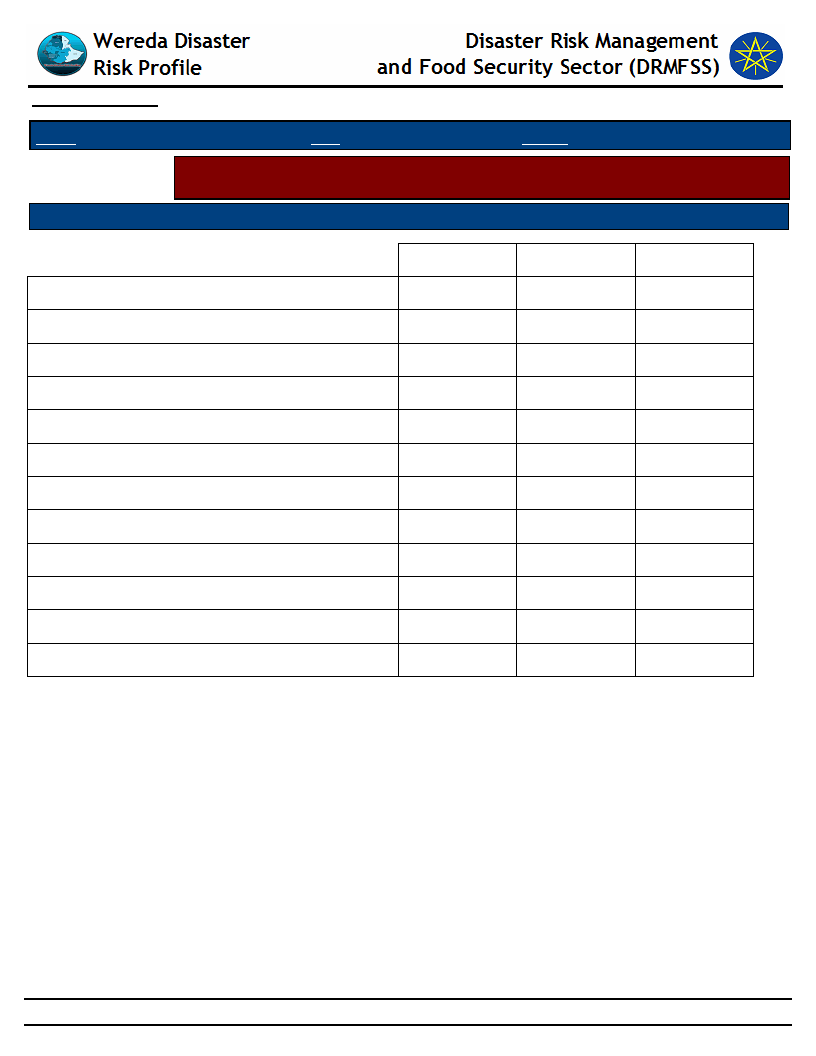
Data_Collected_Date
Thursday, September 4, 2014
Region S.N.N.P
Zone HADIYA
Wereda MIRAB BADAWOCHO
Selected Indicator
Agriculture (Livestock): Pasture Availability - Households perception on
problematic months for pasture availability
Problematic Months
Order of Severity
A - Sep (Meskerem)
B - Oct (Tikimt)
C - Nov (Hidar)
D - Dec (Tahsas)
E - Jan (Tir)
F - Feb (Yekatit)
G - Mar (Megabit)
H - Apr (Meazea)
I - May (Ginbot)
J - Jun (Sene)
K - Jul (Hamle)
L - Aug (Nehase)
1st
38.70
36.60
11.30
11.00
1.90
2nd
3.90
48.40
43.10
3.90
0.40
3rd
10.80
11.70
43.90
29.10
3.80
0.50
0.40
0.20
142
Page 1 of 1
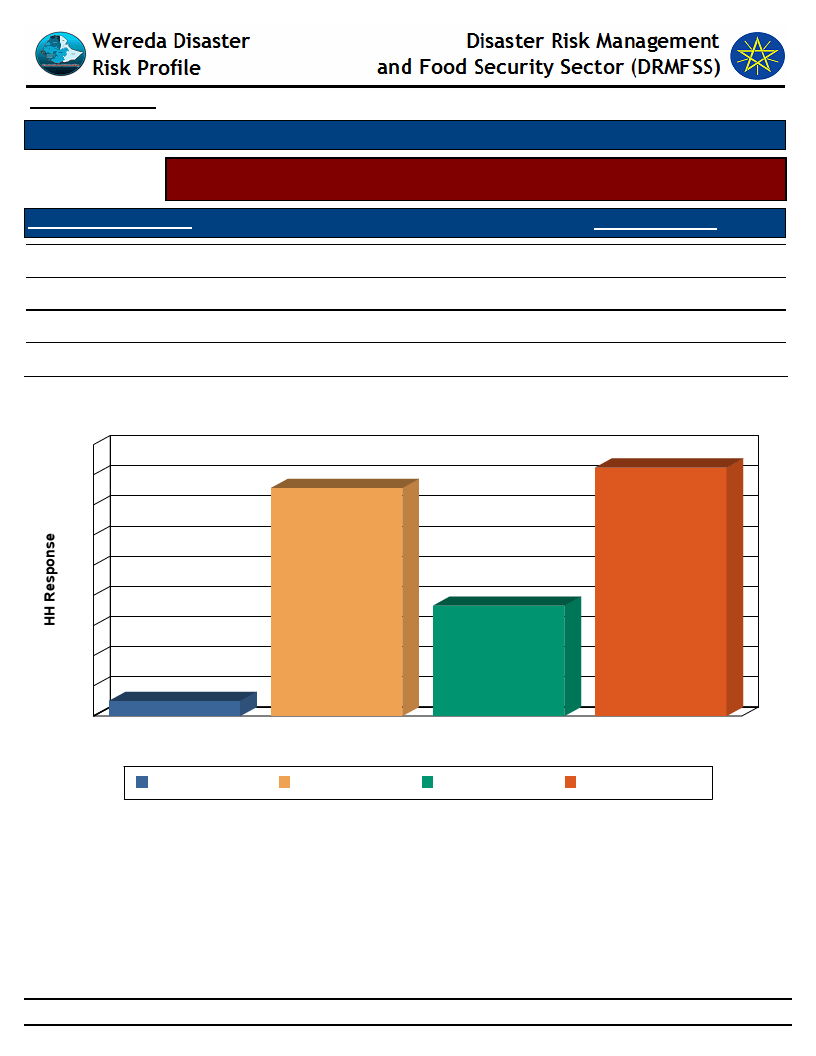
Data_Collected_Date
Thursday, September 4, 2014
Selected Indicator
Agriculture (Livestock): Water Availability - Households response on water
availability for livestock
Access to Water - Livestock
Household Response
Regularly available
Occasionally
Seldom available
Never available
18.30
37.80
41.20
2.50
Household Access to Water for Livestock
45
41
40
38
35
30
25
20
18
15
10
5
3
0
Never available
Occasionally
Regularly available
Access to Water - Livestock
Seldom available
Never available
Occasionally
Regularly available Seldom available
143
Page 1 of 1
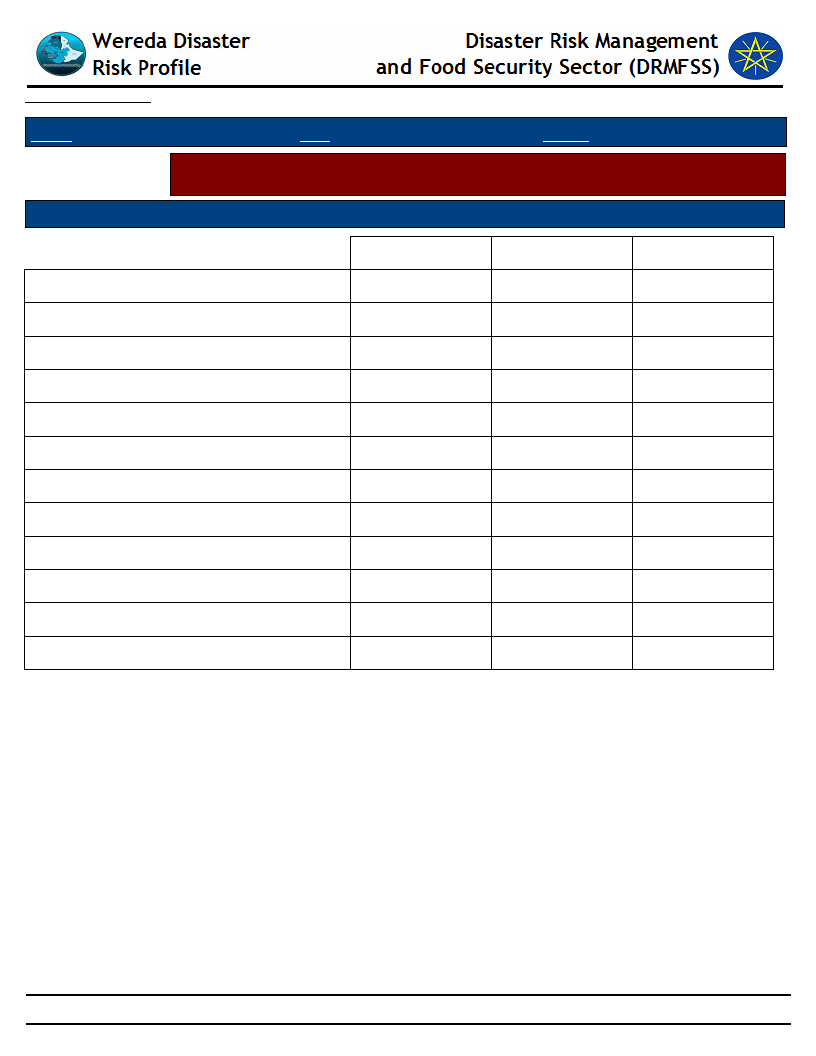
Data_Collected_Date
Thursday, September 4, 2014
Region S.N.N.P
Zone HADIYA
Wereda MIRAB BADAWOCHO
Selected Indicator
Agriculture (Livestock): Water Availability - Households perception on
problematic months for water availability for Livestock
Problematic Months
Order of Severity
A - Sep (Meskerem)
B - Oct (Tikimt)
C - Nov (Hidar)
D - Dec (Tahsas)
E - Jan (Tir)
F - Feb (Yekatit)
G - Mar (Megabit)
H - Apr (Meazea)
I - May (Ginbot)
J - Jun (Sene)
K - Jul (Hamle)
L - Aug (Nehase)
1st
50.10
30.90
13.50
4.50
0.70
2nd
5.30
60.80
31.20
2.50
3rd
11.50
6.10
54.40
22.50
3.90
0.20
0.50
0.20
0.20
0.70
144
Page 1 of 1
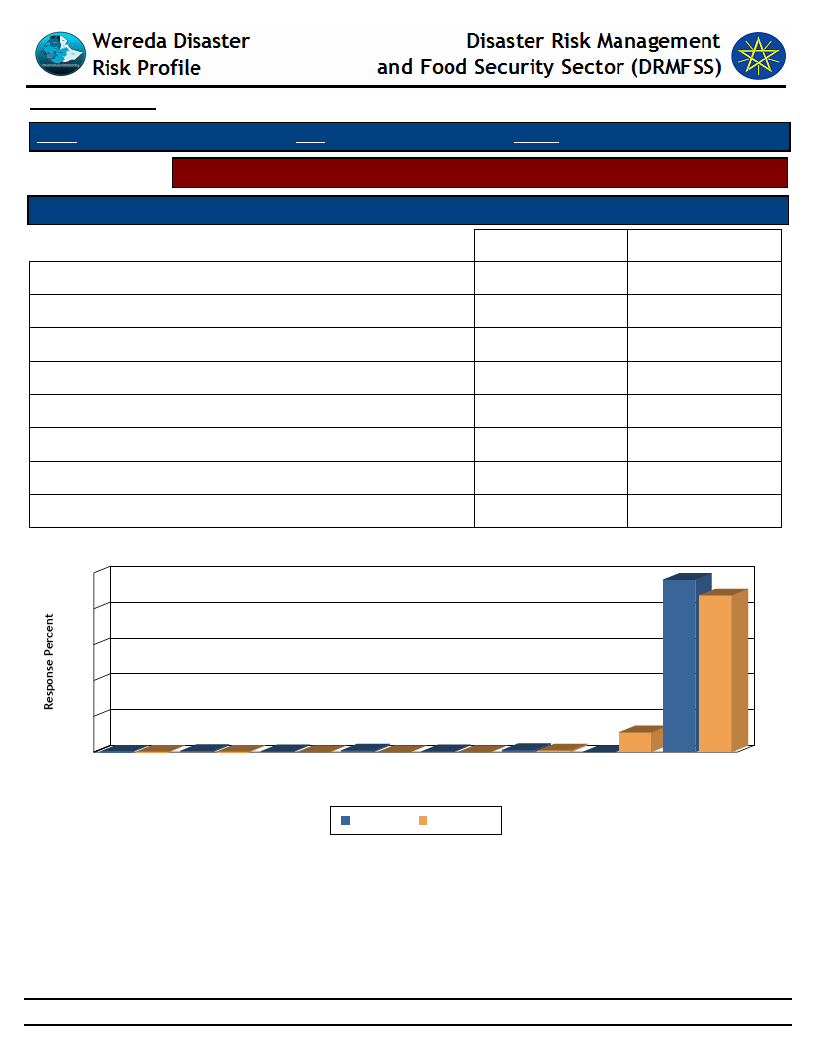
Data_Collected_Date
Thursday, September 4, 2014
Region S.N.N.P
Zone HADIYA
Wereda MIRAB BADAWOCHO
Selected Indicator
Sources of water for livestock (households response in %)
Type of Livestock Owned
Birka
Open well
Other
Piped water outside the house
Pond or lake (fenced)
Pond or lake (open access)
Rainwater harvesting
River, stream
Changes Observed By Households
Dry Season
0.20
0.60
0.40
0.90
0.40
1.10
96.10
Wet Season
0.20
0.20
0.90
11.00
87.40
Household Responses to Type of Water Source and Season for Livestock
100
96
87
80
60
40
20
0
0
0
Birka
1
0
Open well
0
0
1
0
0
0
1
1
Other
Piped water
Pond or lake
Pond or lake
outside the
(fenced)
(open access)
Type ohfouWseater Source & Season
Dry Season
Wet Season
11
0
Rainwater
harvesting
River, stream
145
Page 1 of 1
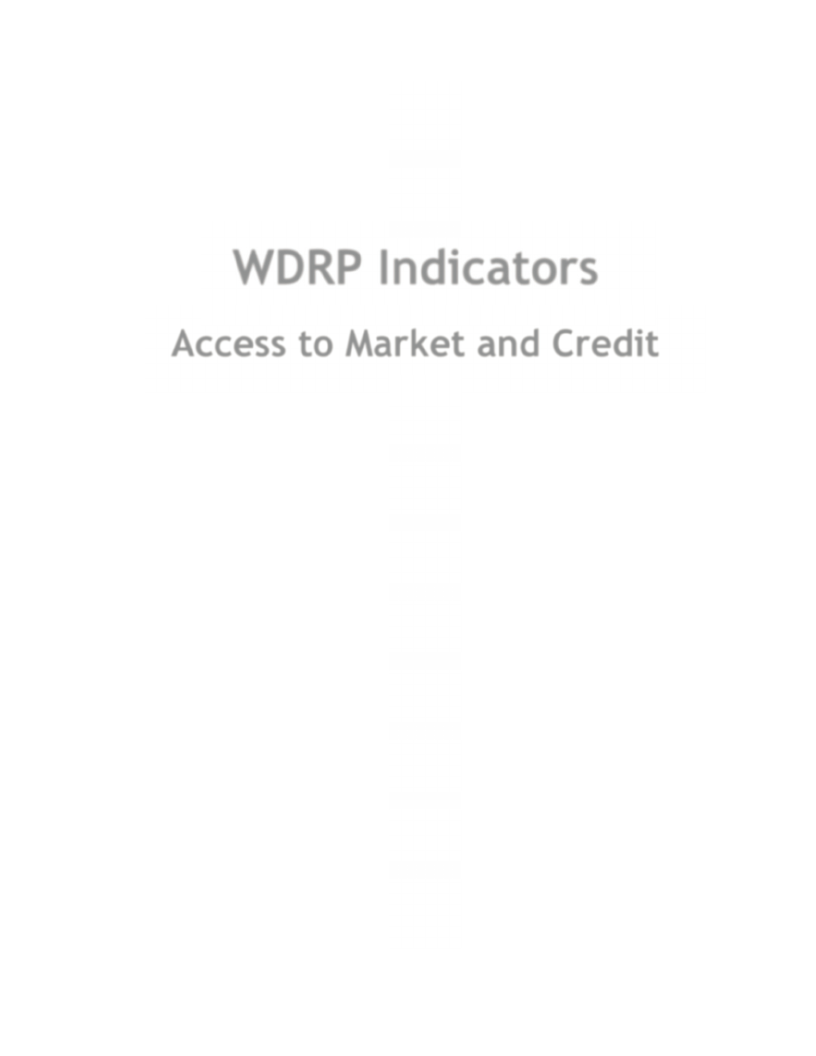
WDRP Indicators
Access to Market and Credit
146
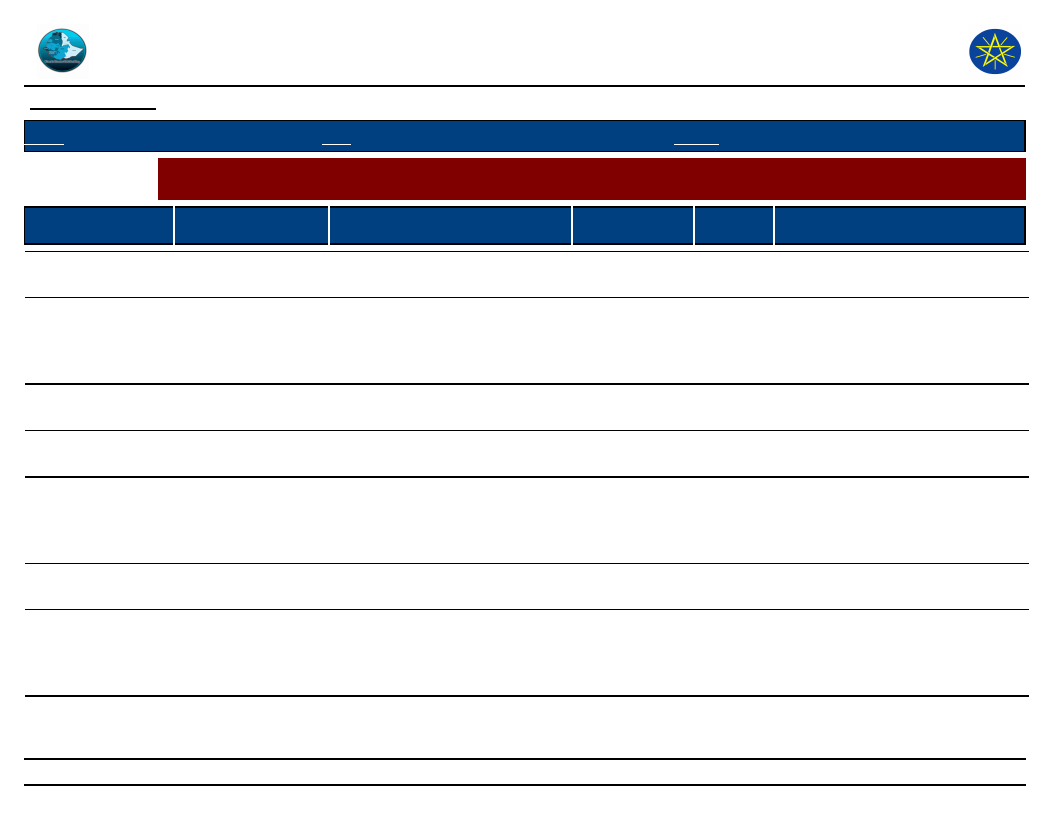
Wereda Disaster
Risk Profile
Disaster Risk Management
and Food Security Sector (DRMFSS)
Data_Collected_Date
Thursday, September 4, 2014
Region S.N.N.P
Zone HADIYA
Wereda MIRAB BADAWOCHO
Selected Indictor:
KebeleName
DEDO
WEBARANA OFODA
JARISO ONIJOJO
SIBEYA
GERIBO
WEREBOYA
2GNA KOTO
Economic Vulnerability: Proportion of Produce Sold and Market - Proportion of crops and livestock sold from total
production and markets
Market_For_Crops
Market_For_Livestock_Produce
Percent
Livestock_Sold
Total_% Comments
Sold
Shone, Danama lara
Shone, Danama lara
30% The product that will be not more
than from hand to mouth
Shinshicho, Shone,
Danama
Shinshicho, Shone, Danama
25% The agricultural product keeps for
consumption is higher than sold.
Because the product that will be
not more than from hand to mouth
Shone, Danama,
lara
Shone, Danama, lara
30% The product that will be not more
than from hand to mouth
Shone, Danama,
Wada
Shone, Danama, Wada
69% The product that will be not more
than from hand to mouth
Danama,
Shinshicho, Shone,
Wada, Araka
Danama, Shinshicho, Shone,
Wada, Araka
25% The agricultural product keeps for
consumption is higher than sold.
Because the product that will be
not more than from hand to mouth
Shone, Danama,
lara
Shone, Danama, lara
35% The product that will be produced
not more than from hand to mouth
Shinshicho,
Danama, Wada and
Durame
Shinshicho, Danama, Wada and
Durame
25% The agricultural product keeps for
consumption is higher than sold.
Because the product that will be
not more than from hand to mouth
147
Page 1 of 3
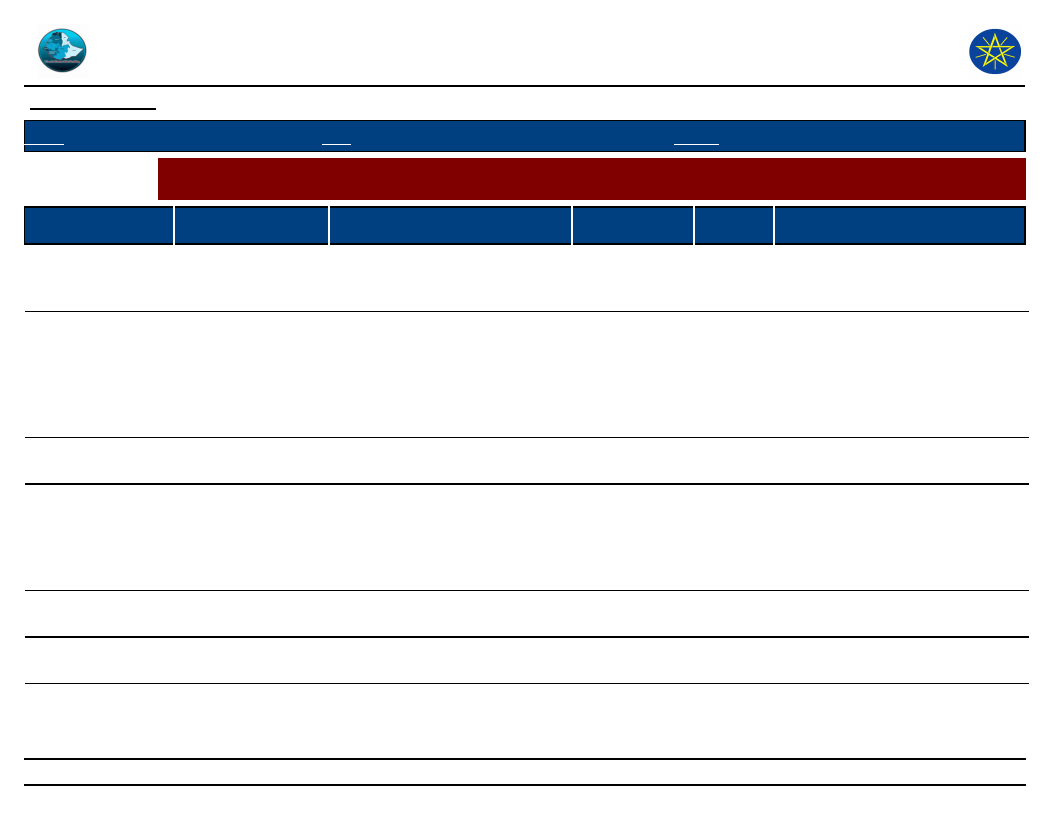
Wereda Disaster
Risk Profile
Disaster Risk Management
and Food Security Sector (DRMFSS)
Data_Collected_Date
Thursday, September 4, 2014
Region S.N.N.P
Zone HADIYA
Wereda MIRAB BADAWOCHO
Selected Indictor:
KebeleName
HAWORA
ELIFETA
YA BUKUNA
WADA
SEPERA
KACHA BIRA
1GNA KOTO
Economic Vulnerability: Proportion of Produce Sold and Market - Proportion of crops and livestock sold from total
production and markets
Market_For_Crops
Danama,
Shinshicho, Wada,
Araka
Market_For_Livestock_Produce
Danama, Shinshicho, Wada,
Araka
Percent
Livestock_Sold
Total_% Comments
Sold
Danama, Shone,
Durame, wadda
Danama, Shone, Durame, wadda
80% Most people doesn’t keep for their
own consumption but rather than
they couldn’t sell This have no
effective as much as possible
better if they could keep for their
own consumption larger portion
Danama, Wadda,
Danama, Wadda, Shinshicho,
80%
Shinshicho, Shone
Shone
Danama, Wadda,
Shinshicho, Shone
Danama, Wadda, Shinshicho,
Shone
30% Agricultural produce that keep for
consumption is higher than sold
because the product that will be
produced not more than from
hand to mouth
Shinshicho, Arko
Shinshicho, Arko
40% Farmer not use the appropriate
time of selling
Shinshicho,
Shinshicho, Danama, Durame,
80%
Danama, Durame
Wadda
Danama, Wadda, Shinshicho,
80%
Shone, Durame
148
Page 2 of 3
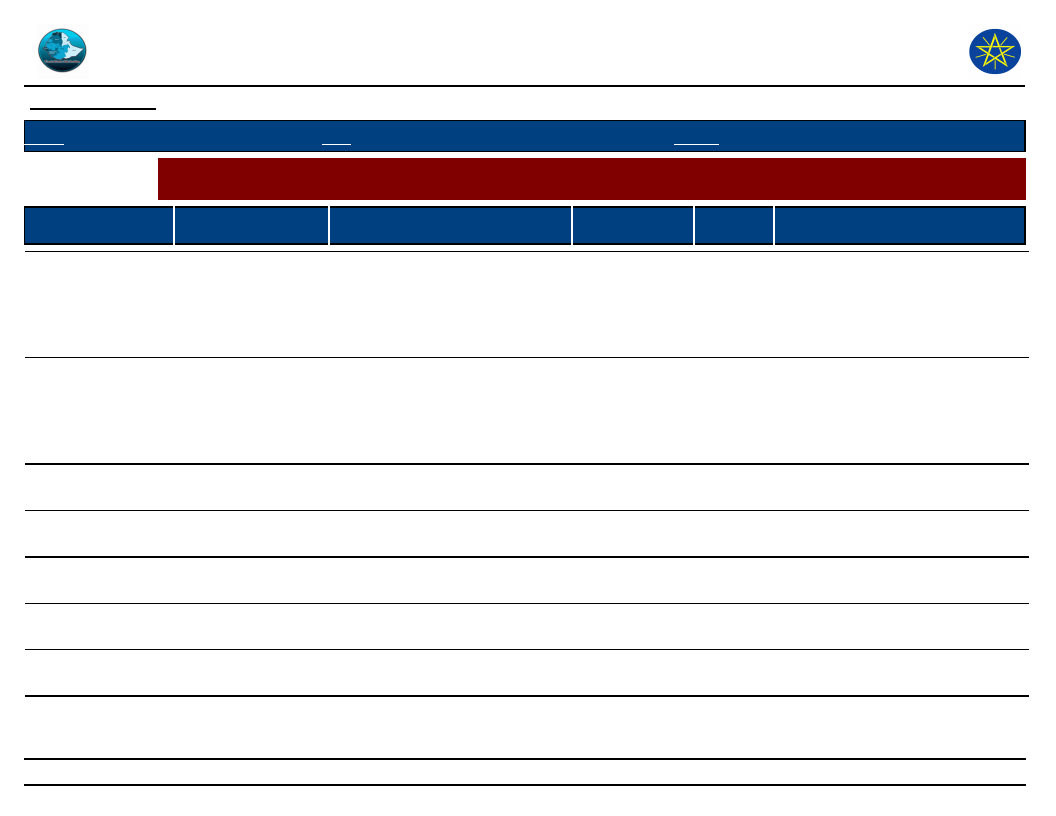
Wereda Disaster
Risk Profile
Disaster Risk Management
and Food Security Sector (DRMFSS)
Data_Collected_Date
Thursday, September 4, 2014
Region S.N.N.P
Zone HADIYA
Wereda MIRAB BADAWOCHO
Selected Indictor:
KebeleName
DANAMA
DANAMA 01
2nd KESHORA
WADA 01
FIRST KASHERA
JARSO MAJORIYA
OFFDAA
MIRAB AJEBA
Economic Vulnerability: Proportion of Produce Sold and Market - Proportion of crops and livestock sold from total
production and markets
Market_For_Crops
Market_For_Livestock_Produce
Percent
Livestock_Sold
Total_% Comments
Sold
Shinshicho, Shone,
Danama.
Shinshicho, Shone, Danama.
25% The agricultural product keeps for
consumption is higher than sold
because the product that will be
not more than from hand to
mouth.
Shinshicho, Shone,
Danama.
Shinshicho, Shone, Danama.
68% The agricultural product keeps for
consumption is higher than sold
because the product that will be
not more than from hand to
mouth.
Araka, Danama,
Wada
Araka, Danama, Wada
25% Agricultural produce that keep for
consumption is higher than sold.
Danama, Wadda,
Danama, Wadda, Shinshicho,
80%
Shinshicho, Shone.
Shone.
Danama, Wadda,
Danama, Wadda, Shinshicho,
80%
Shinshicho, Shone.
Shone.
Shone, Danama,
Shone, Danama, Wadda.
75%
Wadda.
Danama, Wadda,
Danama, Wadda, Shone,
75%
Shone, Durame.
Durame.
Danama, Shone,
Danama, Shone, Durame.
80%
Durame.
149
Page 3 of 3
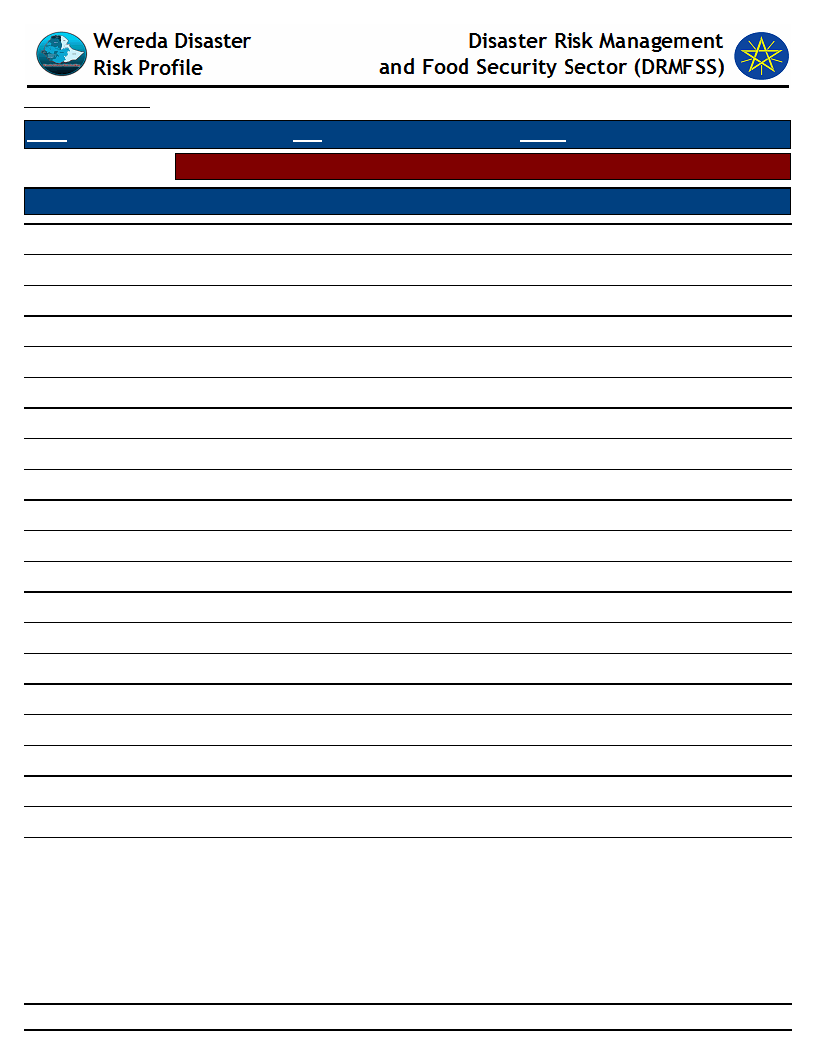
Data_Collected_Date
Thursday, September 4, 2014
Region S.N.N.P
Zone HADIYA
Wereda MIRAB BADAWOCHO
Selected Indicator
Economic Vulnerability: Kebele Access to Markets - Access to market by Kebele
Kebele Name
1GNA KOTO
2GNA KOTO
DEDO
ELIFETA
GERIBO
JARISO ONIJOJO
KACHA BIRA
DANAMA 01
SEPERA
SIBEYA
WADA
WEBARANA OFODA
WEREBOYA
YA BUKUNA
DANAMA
2nd KESHORA
WADA 01
FIRST KASHERA
JARSO MAJORIYA
OFFDAA
MIRAB AJEBA
Market_Access_Comments
Seasonal problems
Seasonal problems
Seasonal problems
Market fluctuation and poor market linkage
Seasonal problems
Seasonal problems
Seasonal problems
Seasonal problems
There is high transportation problem
Seasonal problems
Seasonal problems
Seasonal problems
Seasonal problems
Market fluctuation
Seasonal problems
Seasonal problems
Market fluctuation and extended market chain is the seasonal problem
Market fluctuation and extended market chain is the seasonal problem
Seasonal problems
Market fluctuation and low capacity
Market fluctuation
150
Page 1 of 1
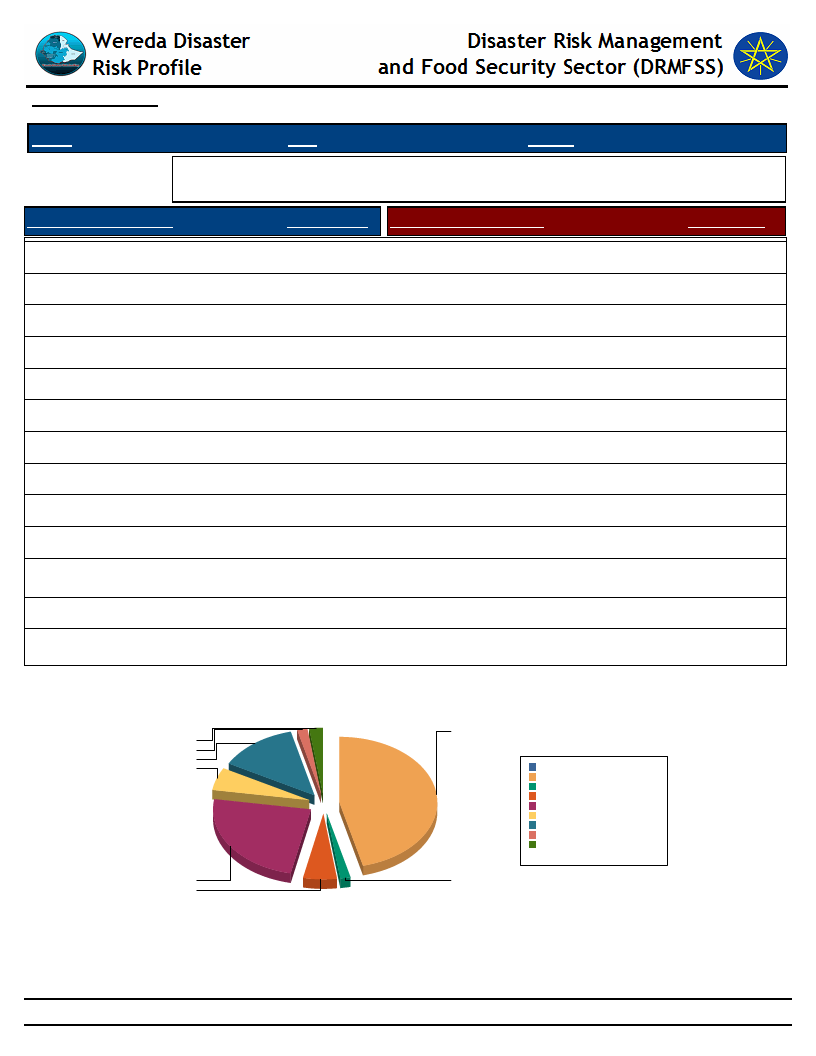
Data_Collected_Date
Thursday, September 4, 2014
Region S.N.N.P
Zone HADIYA
Wereda MIRAB BADAWOCHO
Selected Indicator
Economic Vulnerability: Formal & Informal Transfers - Percentage of households
reporting received formal transfers
Type of Formal Transfer
Food aid
HH Response Type of Informal Transfer
Formal
14.90 Remittances (from relative living elsewhere)
HH Response
Food-for-Work project
3.40 Zakaat
Cash-for-Work project
28.30 Other cash gift
1.50
Faffa
3.40 Cash loan (no interest)
1.90
Free cash
7.90 Seed gift
0.20
Seeds
1.30 Seed loan
0.20
Credit support
0.90 Food or grain gift
1.70
Livestock
1.10 Grain loan (no interest)
0.40
Free labour
3.00
Free use of oxen or plough
2.10
Distribution of meat to neighbours after a slaughter
takes place
Restocking of poorer relatives
Cash or kind gift to married daughters when they visit
0.60
parents or relatives
Type of Formal Transfer Received By Households
28.3
1.3
1.1
7.9
3.4
0.0%
Cash-for-Work project 46.2%
Credit support
1.5%
Faffa
5.6%
Food aid
24.3%
Food-for-Work project 5.6%
Free cash
12.9%
Livestock
1.8%
Seeds
2.1%
Total:
100.0%
14.9
0.9
3.4
151
Page 1 of 1
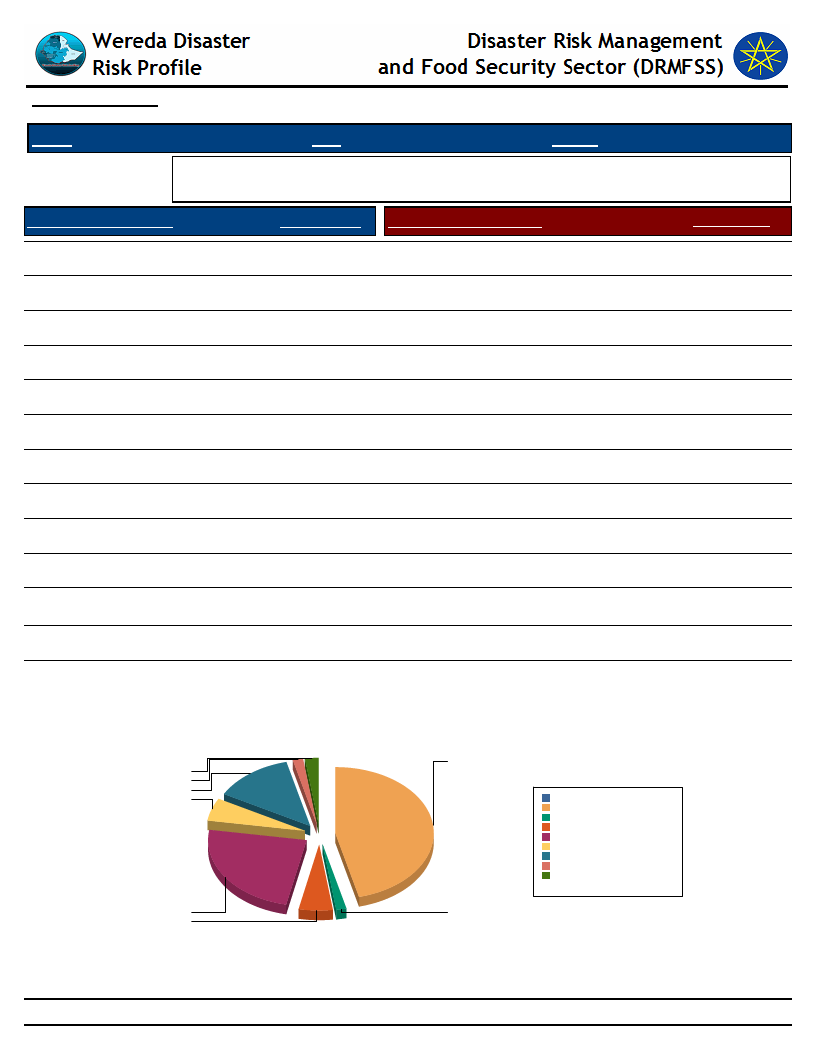
Data_Collected_Date
Thursday, September 4, 2014
Region S.N.N.P
Zone HADIYA
Wereda MIRAB BADAWOCHO
Selected Indicator
Economic Vulnerability: Formal & Informal Transfers - Percentage of households
reporting received Informal transfers
Type of Formal Transfer
Food aid
HH Response Type of Informal Transfer
Formal
14.90 Remittances (from relative living elsewhere)
HH Response
Food-for-Work project
3.40 Zakaat
Cash-for-Work project
28.30 Other cash gift
1.50
Faffa
3.40 Cash loan (no interest)
1.90
Free cash
7.90 Seed gift
0.20
Seeds
1.30 Seed loan
0.20
Credit support
0.90 Food or grain gift
1.70
Livestock
1.10 Grain loan (no interest)
0.40
Free labour
3.00
Free use of oxen or plough
2.10
Distribution of meat to neighbours after a slaughter
takes place
Restocking of poorer relatives
Cash or kind gift to married daughters when they visit
0.60
parents or relatives
Type of Informal Transfer Received By Households
28
1
1
8
3
0.0%
Cash-for-Work project 46.2%
Credit support
1.5%
Faffa
5.6%
Food aid
24.3%
Food-for-Work project 5.6%
Free cash
12.9%
Livestock
1.8%
Seeds
2.1%
Total:
100.0%
15
1
3
152
Page 1 of 1

Data_Collected_Date
Thursday, September 4, 2014
Region S.N.N.P
Selected Indicator
Zone HADIYA
Wereda MIRAB BADAWOCHO
Capacity: Access to Credit Facilities - Households access to credit facilities
Type of Access To Credit Facilities
Households with membership in any credit /micro finance society (%)
Households who borrowed any money in the last one year (%)
Households who tried to borrow 1-2
Households who tried to borrow 3-4
Households who tried to borrow 5 & Above
Households who managed to get credit 1-2
Households who managed to get credit 3-4
Households who managed to get credit 5 & Above
Indicator_Value
21.50
32.00
78.20
14.70
7.10
88.20
10.70
1.20
Average No. of HHs Tried to get Credit
Average No. HHs Managed to get Credit
1.95
1.55
Type of Access To Credit Facilities
2
2
2
2
Type of Access To Credit Facilities
1.6
1.6
1.6
1.6
2
2
2
2
Households who
borrowed any money in
the last one year (%)
Households who tried to
borrow 1-2
Households who
managed to get credit
1-2
Households who tried to
borrow 3-4
Households who
managed to get credit
3-4
Households who tried to
borrow 5 & Above
Households who
managed to get credit 5
& Above
Households with
membership in any
credit /micro finance
society (%)
1.6
1.6
1.6
1.6
Households who
borrowed any money in
the last one year (%)
Households who tried to
borrow 3-4
Households who
managed to get credit
1-2
Households who tried to
borrow 5 & Above
Households who
managed to get credit
3-4
Households with
membership in any
credit /micro finance
society (%)
Households who
managed to get credit 5
& Above
Households who tried to
borrow 1-2
153
Page 1 of 1
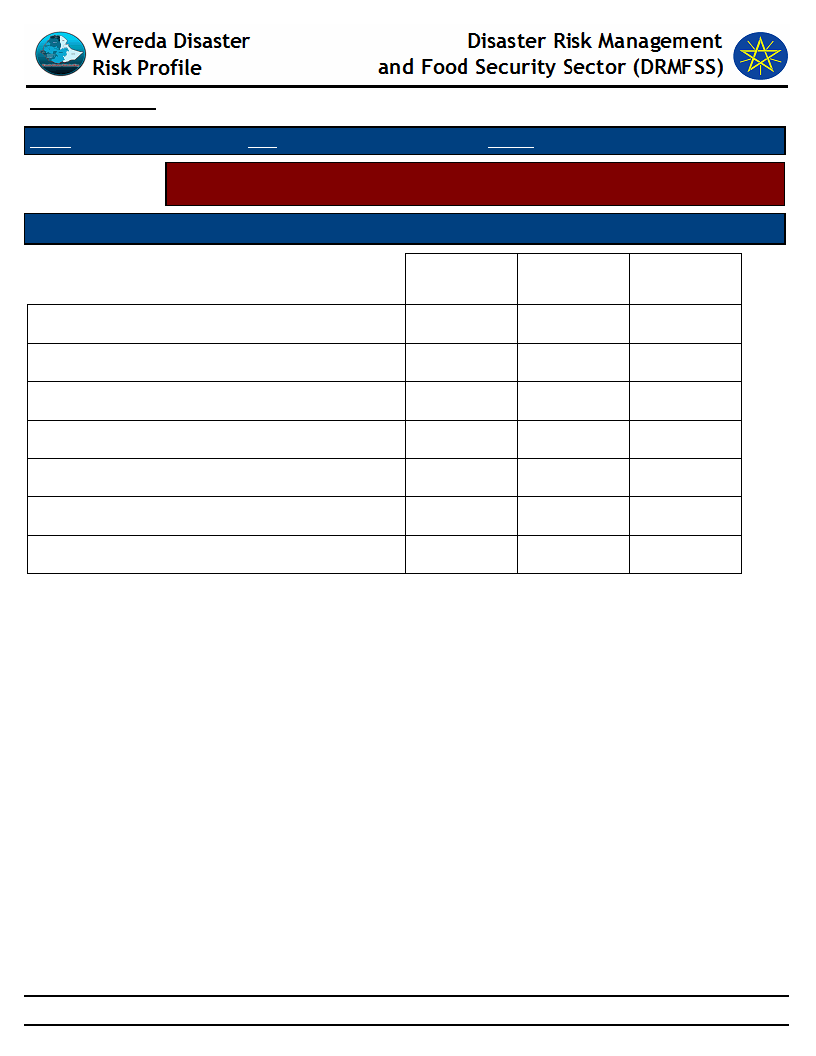
Data_Collected_Date
Thursday, September 4, 2014
Region S.N.N.P
Zone HADIYA
Wereda MIRAB BADAWOCHO
Selected Indicator
Capacity: Access to Credit Facilities - Percentage of households by major reasons
of borrowing money
Type of Borrowing Reason
Degree of Importance of the Borrowing Reasons - HH Respones
1st
2nd
3rd
Buy agricultural input
Buy food
Buy or rent land
Others (specify)
Pay for education
Pay for health care
Pay for social event
14.00
62.40
1.10
6.20
6.20
7.90
2.20
17.90
10.70
2.40
14.30
38.10
16.70
10.00
35.00
2.50
5.00
22.50
7.50
17.50
154
Page 1 of 1
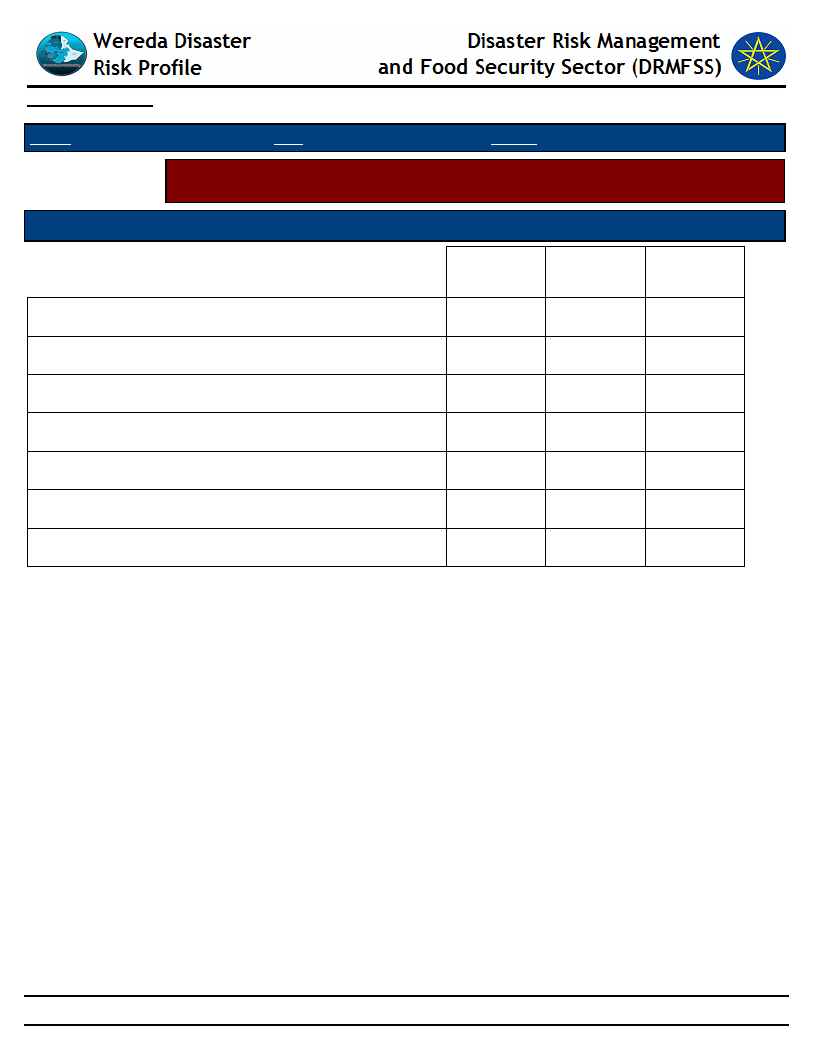
Data_Collected_Date
Thursday, September 4, 2014
Region S.N.N.P
Zone HADIYA
Wereda MIRAB BADAWOCHO
Selected Indicator
Capacity: Access to Credit Facilities - Percentage of households by major sources
of credit
Major Sources of Credit for Households
Degree of Importance of the Credit Source
1st
2nd
3rd
Bank/ formal lending institution
Friends/relatives
Help associations (Edir)
Informal savings group (Ekub)
Local shops / moneylenders
Neighbors
Others
15.00
14.40
9.80
3.90
39.20
11.10
6.50
5.70
17.10
17.10
17.10
22.90
17.10
2.90
6.90
6.90
20.70
10.30
24.10
27.60
3.40
155
Page 1 of 1
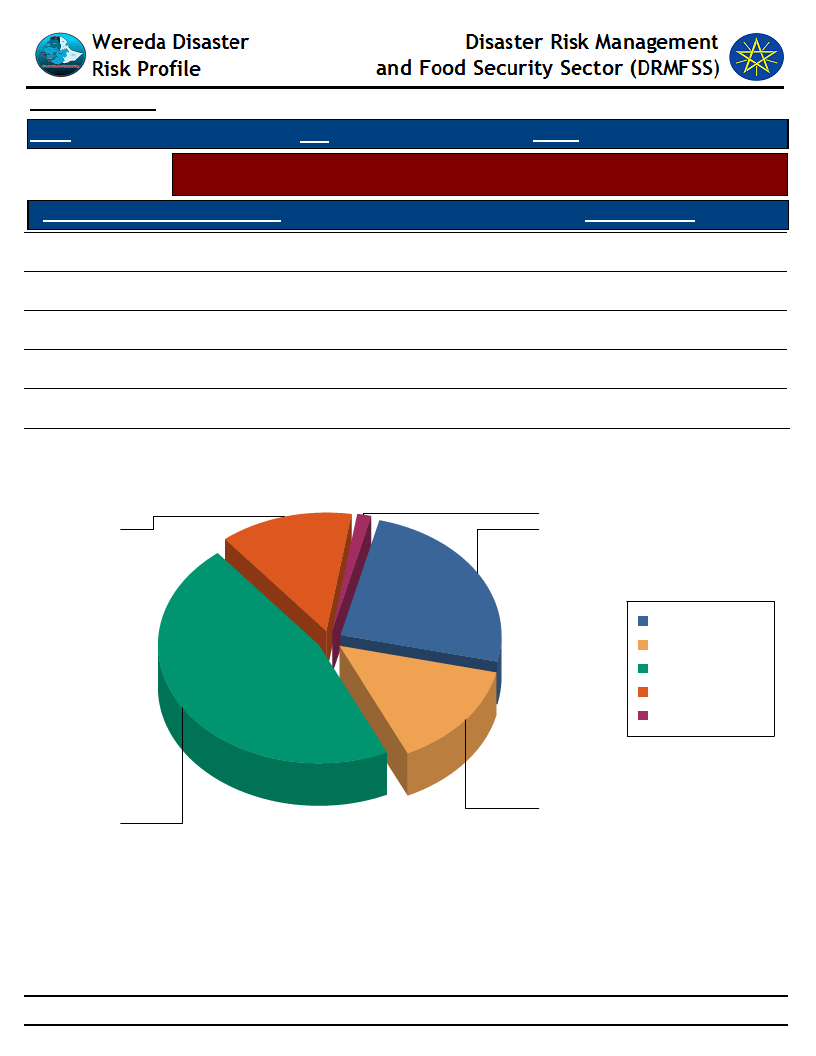
Data_Collected_Date
Thursday, September 4, 2014
Region S.N.N.P
Zone HADIYA
Wereda MIRAB BADAWOCHO
Selected Indicator
Capacity: Access to Credit Facilities - Percent of households with ability to raise
500 birr in one week
HH Ability To Raise 500 Br in One Week
Response_Percent
Yes, we would use our savings
13.10
Yes, by borrowing money
46.00
Yes, with some help from others
1.50
Perhaps, but I doubt it
14.40
No, it would be impossible
24.50
Households' Ability To Raise 500 Br in One Week
2
13
25
No, it would be
impossible
Perhaps, but I doubt it
Yes, by borrowing
money
Yes, we would use our
savings
Yes, with some help
from others
14
46
156
Page 1 of 1
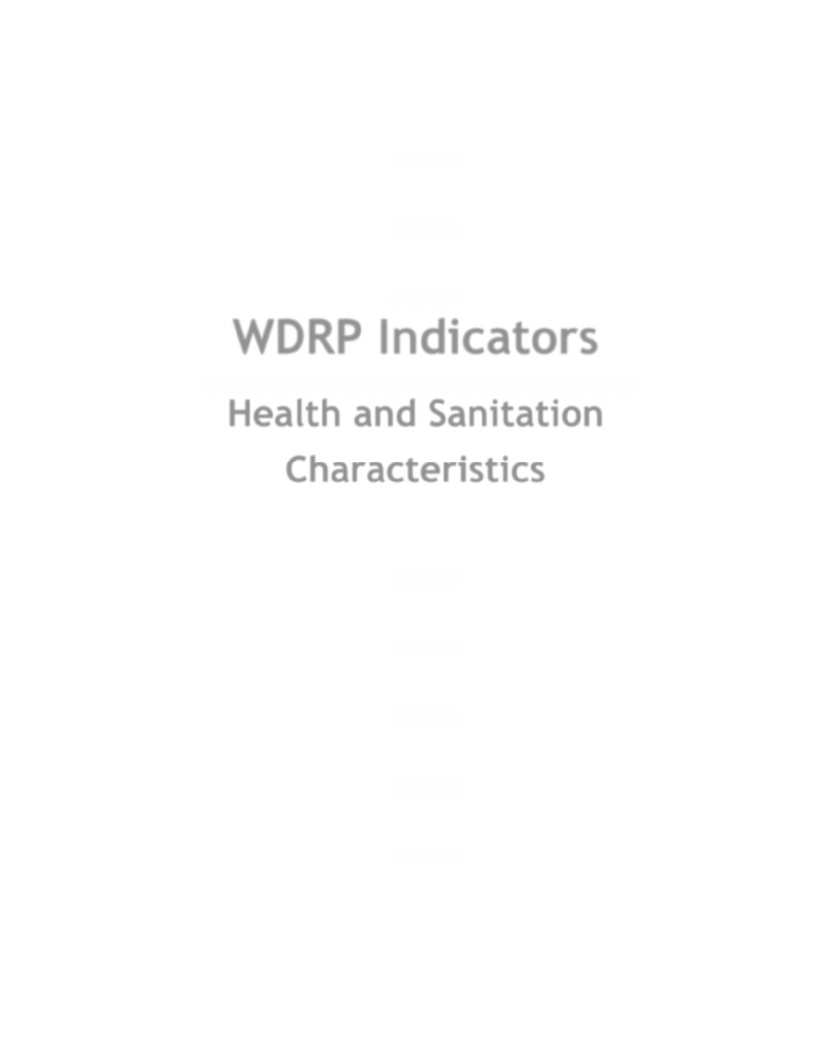
WDRP Indicators
Health and Sanitation
Characteristics
157
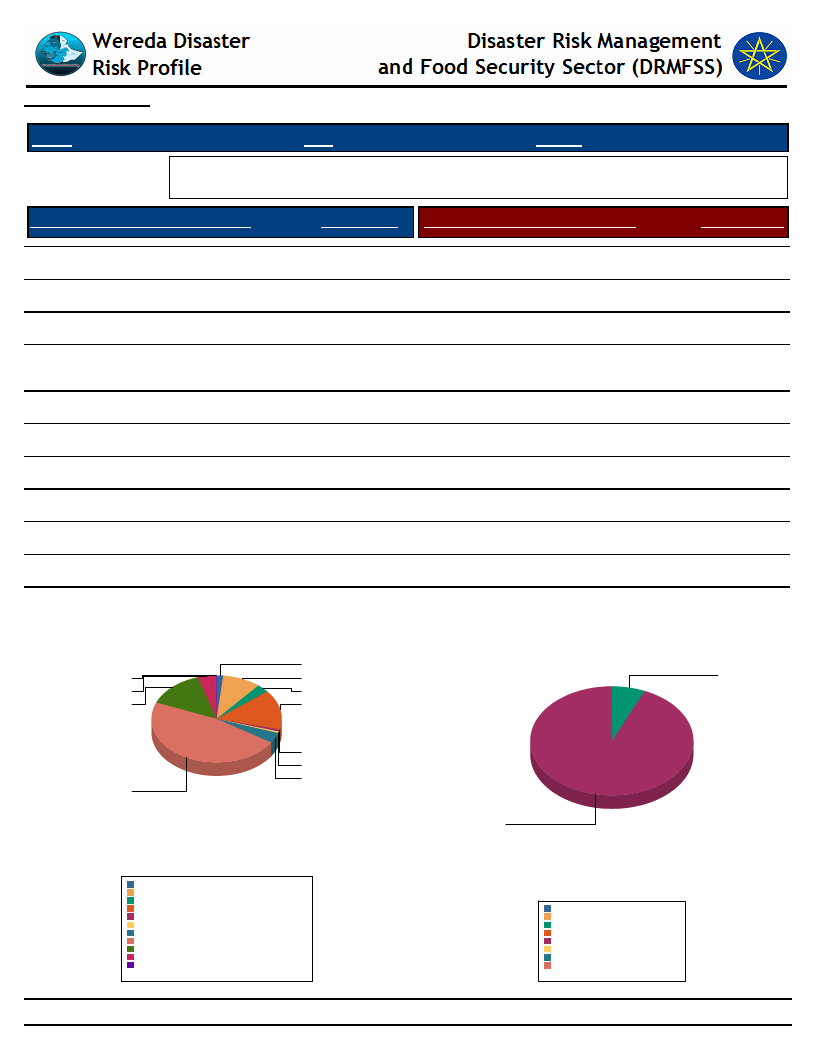
Data_Collected_Date
Thursday, September 4, 2014
Region S.N.N.P
Zone HADIYA
Wereda MIRAB BADAWOCHO
Selected Indicator
Household Access to Health Facilities - Where do patients go for health care?
Constraints to adequate healthcare
Where do Patients Go for Healthcare
HH Response Constraints to Adequate Health Car
HH Responses
Did not get Health Care
Central Hospital
Other public
District/Municipal hospital/health
centre/ clinic
Mission facility
Community health worker
Private hospital/clinic
Other private
Traditional/spiritual healer
Other
Pharmacy
3.10
1.70
46.70
14.80
0.80
9.30
4.40
3.80
0.20
0.60
14.30
Where Do Patients go for Health care?
2
0
9
4
3
14
15
No money for treatment costs
No money for travel
Poor quality of service
Religious reasons
93.30
0.00
0.00
0.00
Did not need formal health care
0.00
Don’t believe in health care
6.70
No Reasons
0.00
0.00
0.00
0.00
0.00
Constraints to Adequate Health Care
7
1
1
4
47
93
Central Hospital
Community health worker
Did not get Health Care
District/Municipal hospital/health centre/ clinic
Mission facility
Other
Other private
Other public
Pharmacy
Private hospital/clinic
Traditional/spiritual healer
1.7%
9.3%
3.1%
14.8%
0.8%
0.6%
3.8%
46.8%
14.3%
4.4%
0.2%
Total:
100.0%
158
Did not need formal health care
Don’t believe in health care
No money for travel
No money for treatment costs
No Reasons
Poor quality of service
Religious reasons
0.0%
0.0%
6.7%
0.0%
93.3%
0.0%
0.0%
0.0%
Total:
100.0%
Page 1 of 1
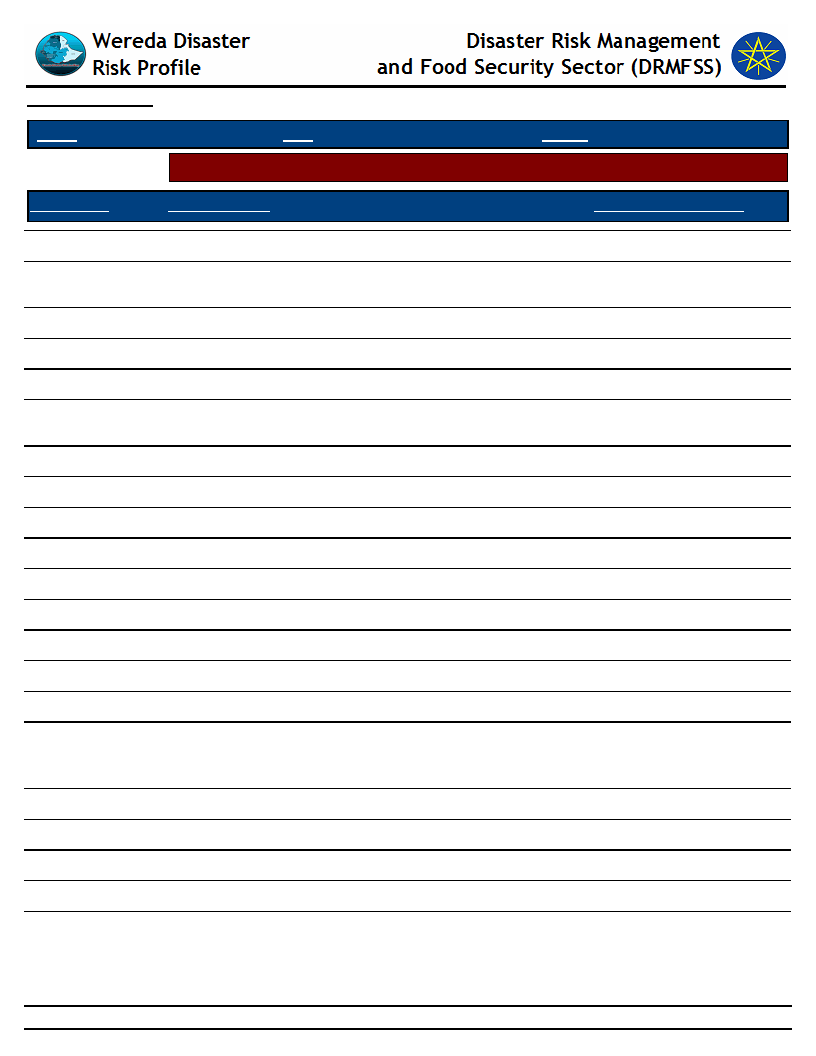
Data_Collected_Date
Thursday, September 4, 2014
Region S.N.N.P
Selected Indicator
Zone HADIYA
Wereda MIRAB BADAWOCHO
Hazards: Health problems and changes over the last decade
Kebele Name
Health_Problems
Changes_In_Last_Decade
DEDO
WEBARANA
OFODA
JARISO ONIJOJO
SIBEYA
DANAMA
GERIBO
2nd KESHORA
WEREBOYA
2GNA KOTO
HAWORA
WADA 01
FIRST KASHERA
JARSO MAJORIYA
ELIFETA
YA BUKUNA
WADA
Good
Increased
Better
Good
Better
Sometimes the community affected with virus, malaria,
Jardia
Better
Difficult
Better
Good
Better
Better
Better
Malaria
Better
Malaria
SEPERA
KACHA BIRA
1GNA KOTO
OFFDAA
MIRAB AJEBA
Better
Seasonal disease like malaria
Seasonal disease like malaria
Better
Better
level is medium
But level is low
But level is low
But level is medium
Low level
Very low
Low level
Very low
Good
Good
Good
Increasing
Better
Increasing
Decreased because of
distribution of mosquito
net
Better
Better
Decreased
Increasing
Better health condition
increased
159
Page 1 of 1
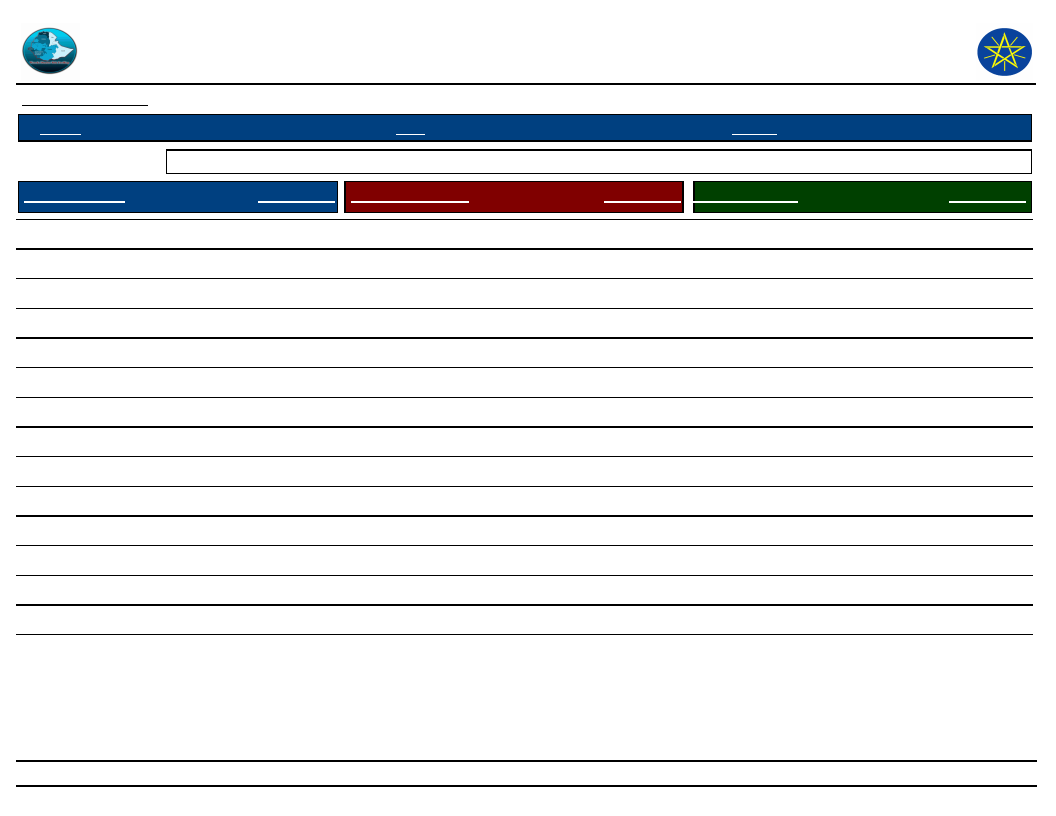
Wereda Disaster
Risk Profile
Data_Collected_Date
Region S.N.N.P
Zone HADIYA
Disaster Risk Management and Food
Security Sector (DRMFSS)
Thursday, September 4, 2014
Wereda MIRAB BADAWOCHO
Selected Indicator
Household Health Status - Households health condition and major health problems
Health Condition
HH Response Population Sickness
HH Response Children Sickness
HH Response
Good health
71.0
Malaria
61.0 Malaria
67.0
Ill for <3 months
25.0
Headache
10.0 Headache
11.0
Ill for more than three months
3.0
Diarrhea
5.0 Chronic fever
7.0
0.0
Meningitis
1.0
0.0
0.0
Hyper tension
1.0
0.0
0.0
Back ache
1.0
0.0
0.0
Asthma
0.0
0.0
0.0
HIV/AIDS
0.0
0.0
0.0
DK
2.0
0.0
0.0
Chronic fever
4.0 Diarrhea
7.0
0.0
Eye problems
2.0 Mental illness
2.0
0.0
Pneumonia/ lung problem
2.0 Meningitis
1.0
0.0
Stomach pain
1.0
0.0
0.0
Tuberculosis
1.0
0.0
0.0
Mental illness
1.0
0.0
160
Page 1 of 2
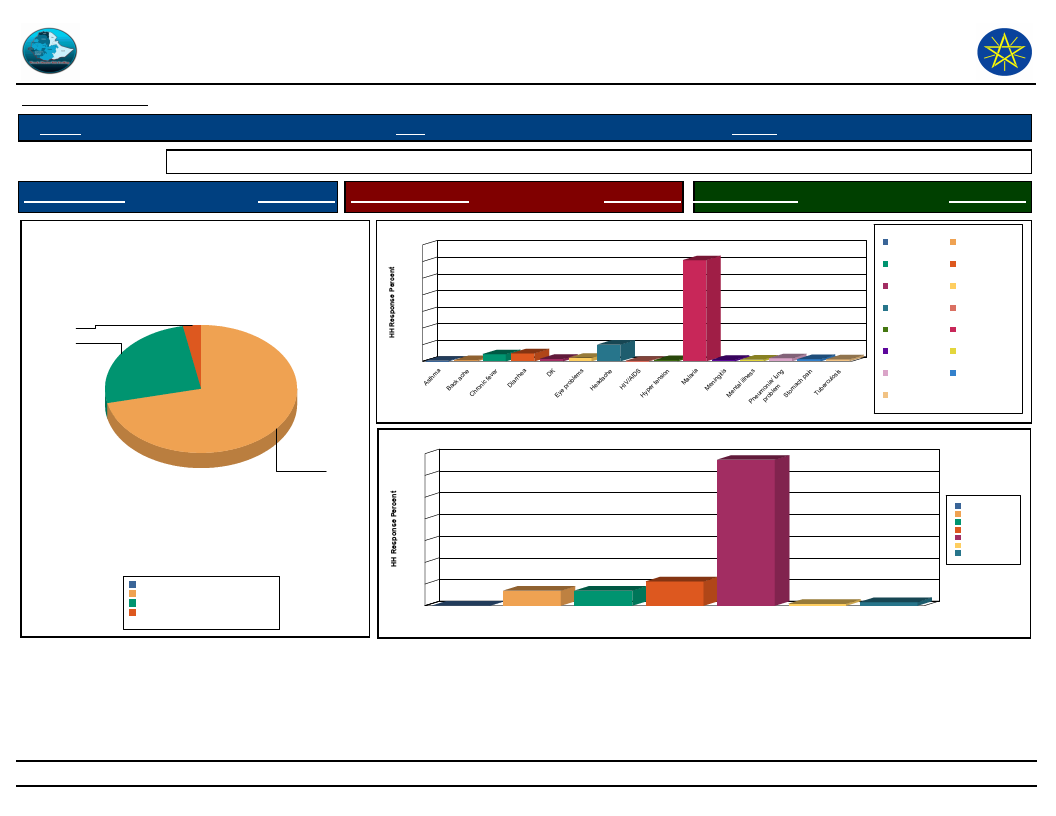
Wereda Disaster
Risk Profile
Data_Collected_Date
Region S.N.N.P
Zone HADIYA
Disaster Risk Management and Food
Security Sector (DRMFSS)
Thursday, September 4, 2014
Wereda MIRAB BADAWOCHO
Selected Indicator
Household Health Status - Households health condition and major health problems
Health Condition
HH Response Population Sickness
HH Response Children Sickness
HH Response
Health Condition of the Community
2.9
25.3
70.8
Good health
Ill for <3 months
Ill for more than three months
0.0%
71.5%
25.6%
2.9%
Total:
100.0%
70
60
50
40
30
20
10
4
0
1
0
a
Asthm
ache
Back
Chronic fever
5
Diarrhea
Population Sickness in the Community
61
10
2
2
0
1
DK
s
problem
Eye
Headache
HIV/AIDS Hyper tension
Population Sickness
1
1
2
1
1
alaria
M
eningitis
M
ental
M
illnesPsneumpornoiab/lelumng
pain
ach
Stom
Tuberculosis
70
60
50
40
30
20
10
0
0
Children Sickness in the Community
67
7
Chronic fever
7
Diarrhea
11
Headache
Children Sickness
Malaria
1
Meningitis
Asthma
Chronic fever
DK
Headache
Hyper tension
Meningitis
Pneumonia/ lung
problem
Tuberculosis
Back ache
Diarrhea
Eye problems
HIV/AIDS
Malaria
Mental illness
Stomach pain
2
Mental illness
Chronic fever
Diarrhea
Headache
Malaria
Meningitis
Mental illness
161
Page 2 of 2
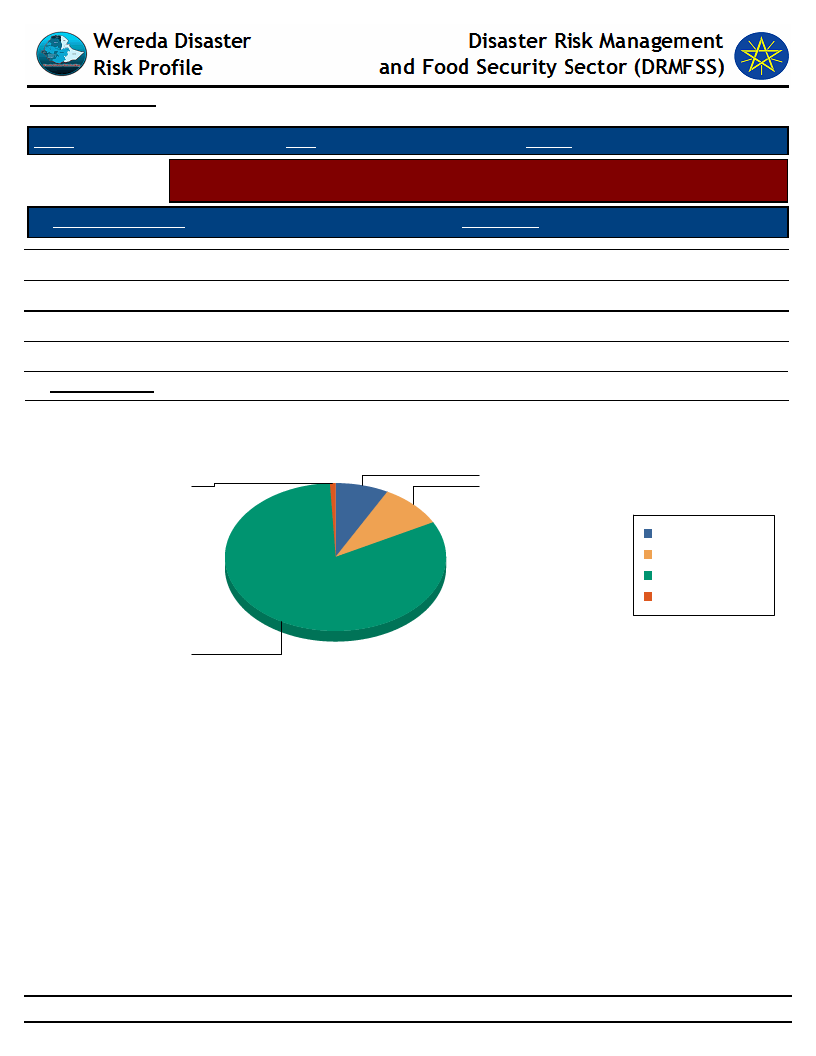
Data_Collected_Date
Thursday, September 4, 2014
Region S.N.N.P
Zone HADIYA
Wereda MIRAB BADAWOCHO
Selected Indicator
Household Access to Sanitation - Percentage of households with access to
different kind of toilet facilities
Type of Toilet Facility
HH Response
Modern water closet
Ventilated, build in latrine
Outdoors latrine/hole on plot
No facilities/Open Space
HH Sharing Toilet
7.70
0.90
82.00
9.40
3.50
Household Responses to the type of toilet facilities in the community
7.7
0.9
9.4
Modern water closet
No facilities/Open Space
Outdoors latrine/hole on
plot
Ventilated, build in latrine
82
162
Page 1 of 1
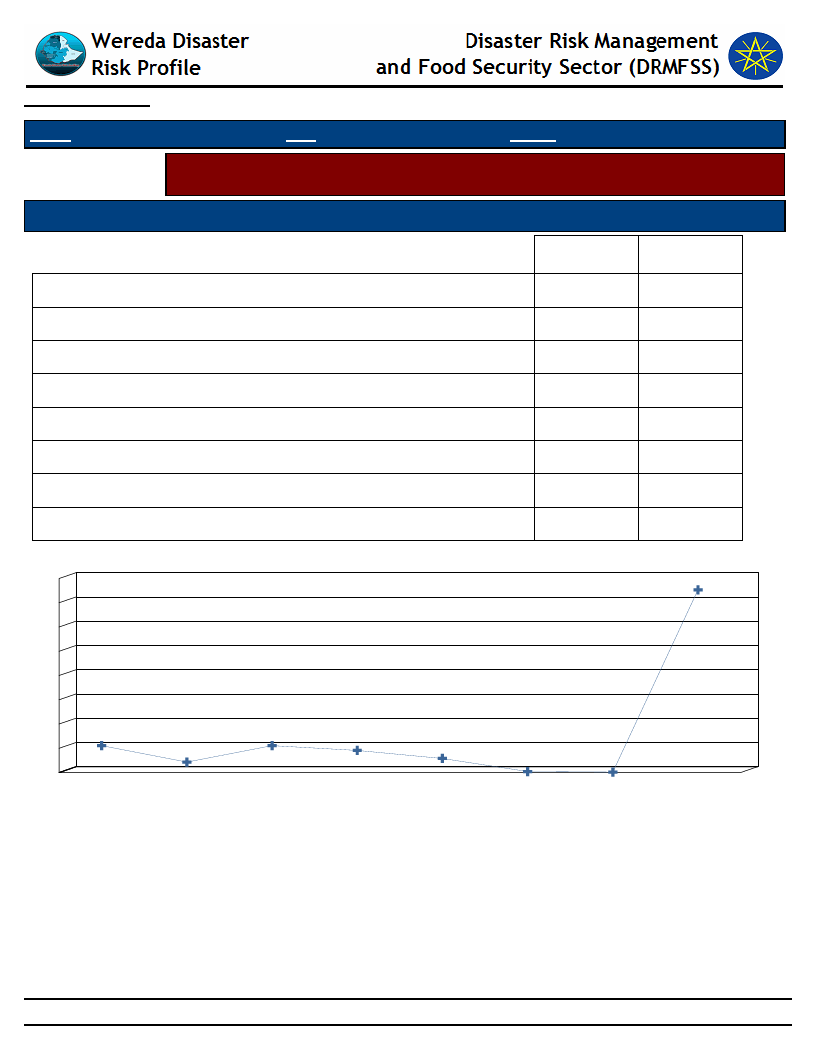
Data_Collected_Date
Thursday, September 4, 2014
Region S.N.N.P
Zone HADIYA
Wereda MIRAB BADAWOCHO
Selected Indicator
Household Access to Drinking Water - Sources of drinking water for households
(response in %)
Sources of drinking water for Households
Priority of the Water Source
Main
Secondary
Communal tap (Bono)
Covered well or borehole
Open well
Other
Piped water outside the house
Pond or lake (fenced)
Rainwater harvesting
River, stream
3.90
4.30
0.90
9.10
5.80
0.40
0.20
75.30
11.10
0.00
11.10
0.00
0.00
0.00
0.00
55.60
80
70
60
50
40
30
20
10
11
0
Communal tap
(Bono)
4
Covered well or
borehole
Source of Drinking Water for Households
11
Open well
9
6
Other
Piped water outside
the house
Source of Drinking Water
0
Pond or lake
(fenced)
0
Rainwater
harvesting
75
River, stream
163
Page 1 of 1
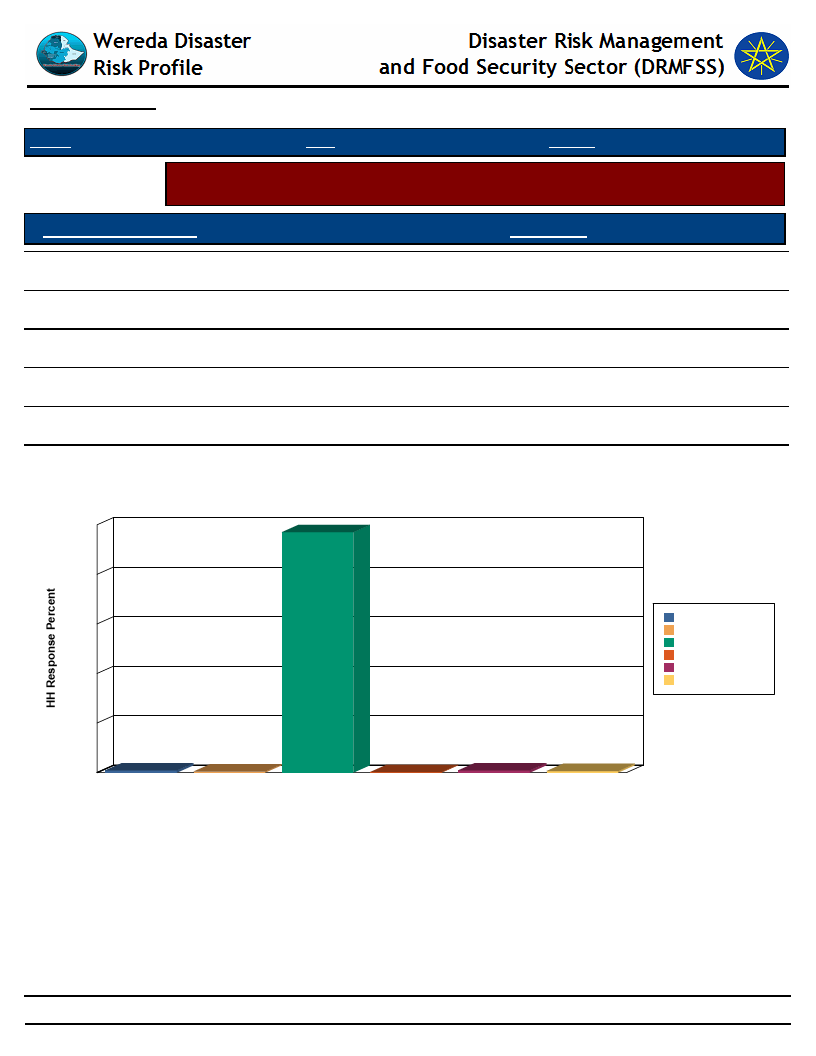
Data_Collected_Date
Thursday, September 4, 2014
Region S.N.N.P
Zone HADIYA
Wereda MIRAB BADAWOCHO
Selected Indicator
Household Access to Drinking Water - Households methods of treating drinking
water
Method of Treating Water
HH Response
Boil
0.90
Water Guard
0.60
Use filter
0.90
Other chemicals
0.20
None
97.00
DK
0.40
Method of Treating Water by Households
100
97
80
60
40
20
1
0
Boil
Boil
DK
None
Other chemicals
Use filter
Water Guard
0
0
1
1
DK
None
Other chemicals
Use filter
Water Guard
Water Treatment Method
164
Page 1 of 1
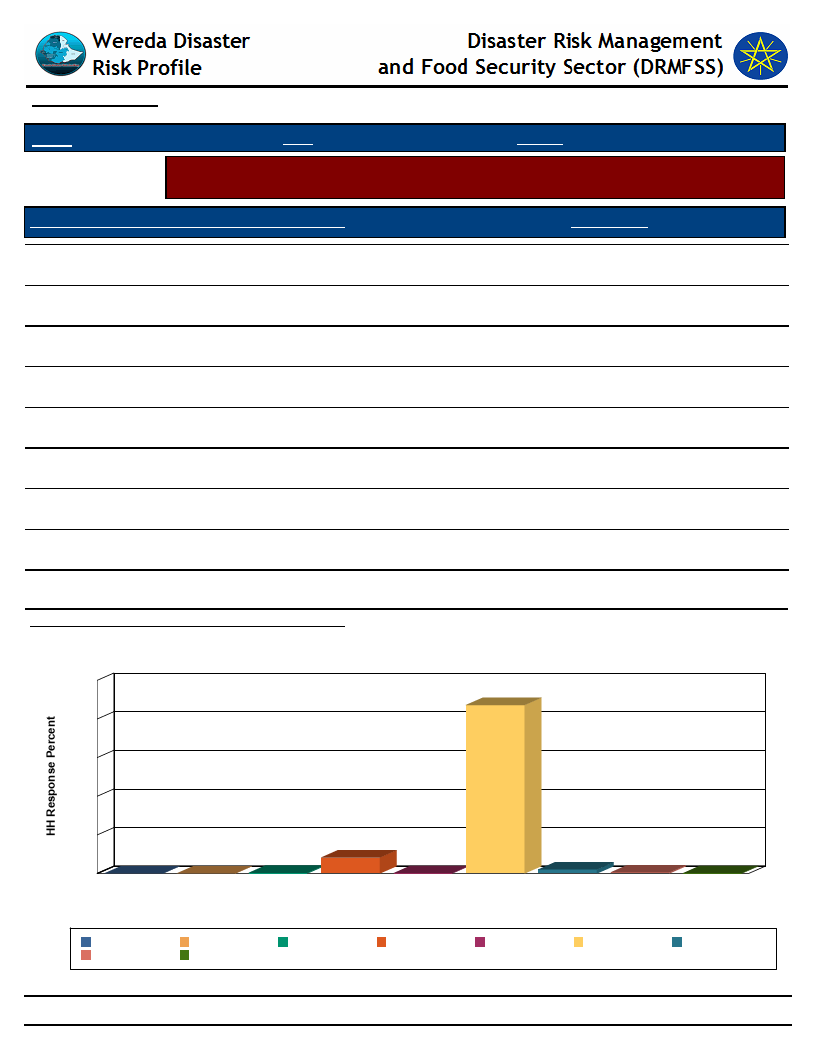
Data_Collected_Date
Thursday, September 4, 2014
Region S.N.N.P
Zone HADIYA
Wereda MIRAB BADAWOCHO
Selected Indicator
Household Access to Drinking Water - Number of times households fetch water in
a week
Number of Times Households Fetch Water in a Week
HH Response
Once
0.20
Twice
0.20
Three times
0.60
Four times
8.30
Five times
0.40
Six times
2.10
Seven times
87.20
Eight and more
0.00
Do not know
Average Number of Times HH Fetch Water Per Week
Number of Times HH Fetch Water in a Week
100
87
80
0.00
6.70
60
40
20
0
0
Do not know
0
Eight and
more
0
Five times
8
Four times
0
Once
Seven times
2
Six times
Number of Times HH Fetch Water in a Week
1
Three times
0
Twice
Do not know
Three times
Eight and more
Twice
Five times
Four times
Once
Seven times
Six times
165
Page 1 of 1
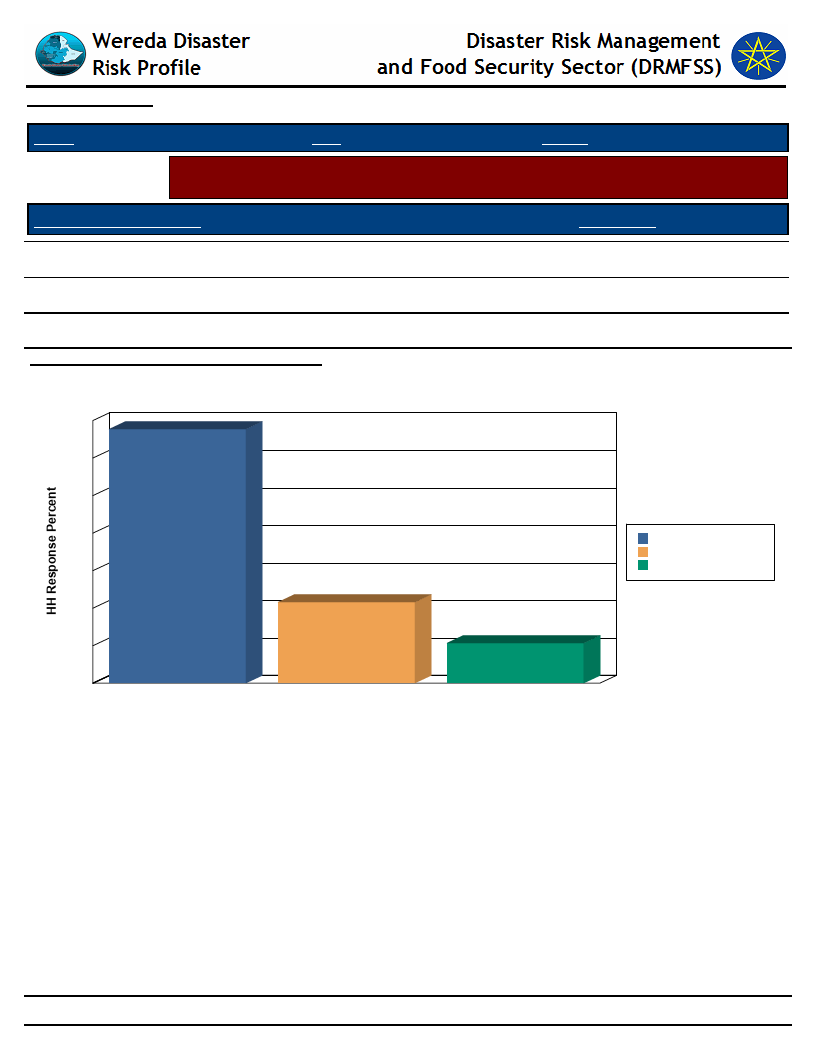
Data_Collected_Date
Thursday, September 4, 2014
Region S.N.N.P
Zone HADIYA
Wereda MIRAB BADAWOCHO
Selected Indicator
Household Access to Drinking Water - Time taken per day to fetch water for
households
Time Taken To Fetch Water
HH Response
A - Less than 30 min
67.70
B - 30 min - 1 hr
21.60
C - 1 hr and Above
Average Number of Times Taken To Fetch Water
10.70
33.00
Time Taken To Fetch Water for the HH
70
68
60
50
40
30
22
20
A - Less than 30 min
B - 30 min - 1 hr
C - 1 hr and Above
11
10
0
A - Less than 30 min
B - 30 min - 1 hr
Time Taken To Fetch Water
C - 1 hr and Above
166
Page 1 of 1
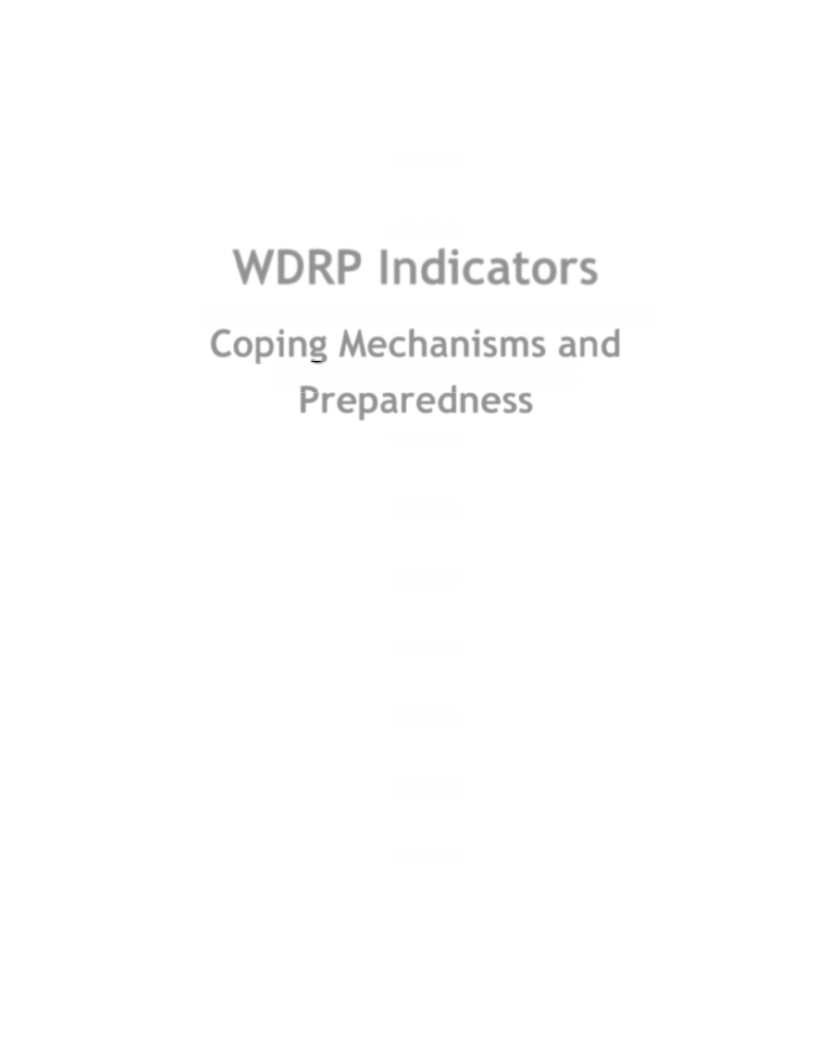
WDRP Indicators
Coping Mechanisms and
Preparedness
167
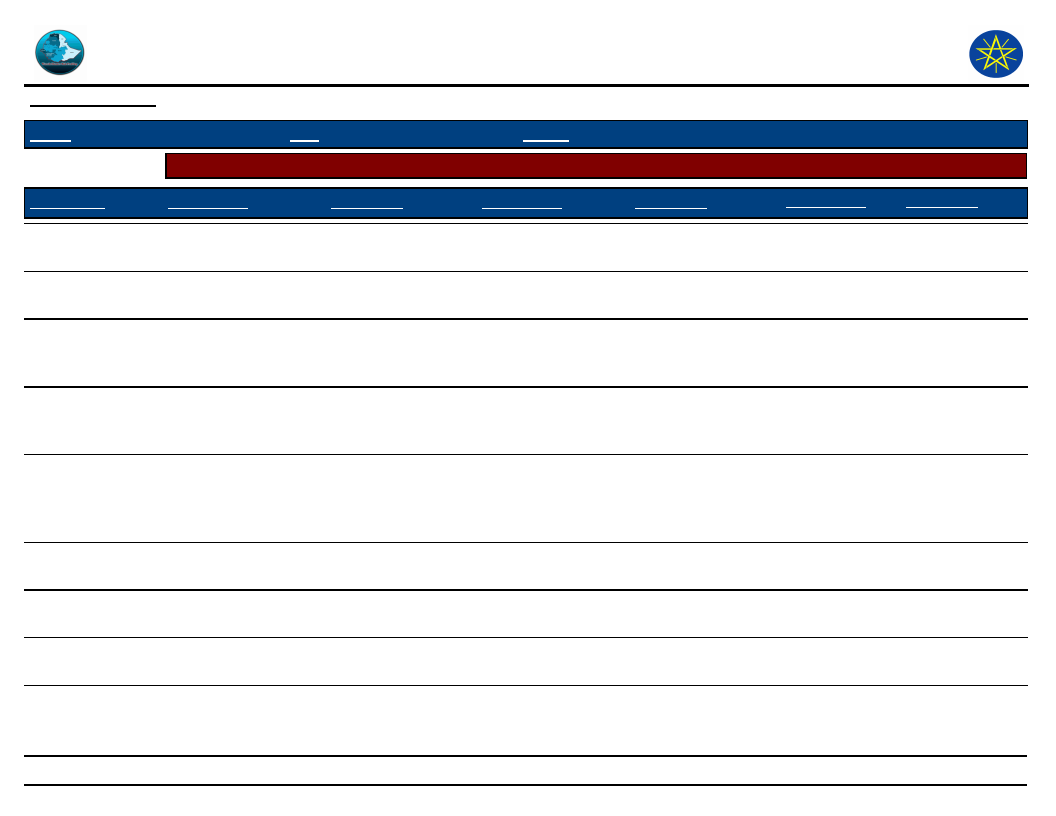
Wereda Disaster
Risk Profile
Data_Collected_Date
Disaster Risk Management and Food
Security Sector (DRMFSS)
Thursday, September 4, 2014
Region S.N.N.P
Selected Indicator
Zone HADIYA
Wereda MIRAB BADAWOCHO
Capacity: Community Preparedness against Sudden Onset Disasters
KebeleName
Precaution_1
Comment_1
Precaution_2
Comment_2
Precaution_3
Comment_3
DEDO
WEBARANA OFODA
JARISO ONIJOJO
SIBEYA
Requesting aid from
NGO
Requesting aid from
NGO
Requesting aid from
NGO and local
government
Requesting aid from
NGO
GERIBO
Awareness creation
on community
WEREBOYA
2GNA KOTO
HAWORA
ELIFETA
Requesting aid from
NGO
Awareness creation
to the communities
Asset saving
Asking aid
To Protecte the risk
or hazards
Used to prevent the
disaster
Support for food
It has good soil and
water conservation
activity
management
It reducing the level
of risk or hazards
It is not affected by
drought
Reducing feeding
system
Take children and
elder to other area
Moving children
and elders to other
areas
Move children and
elders to other
area
It is the minimum
coping mechanisms
It is reducing the
level of affection
They are resist to
drought
To resist the
drought
Take children and
elder to other area
It reduces the level
of affection
Decreased feeding
system
To resist the
drought
168
Page 1 of 3
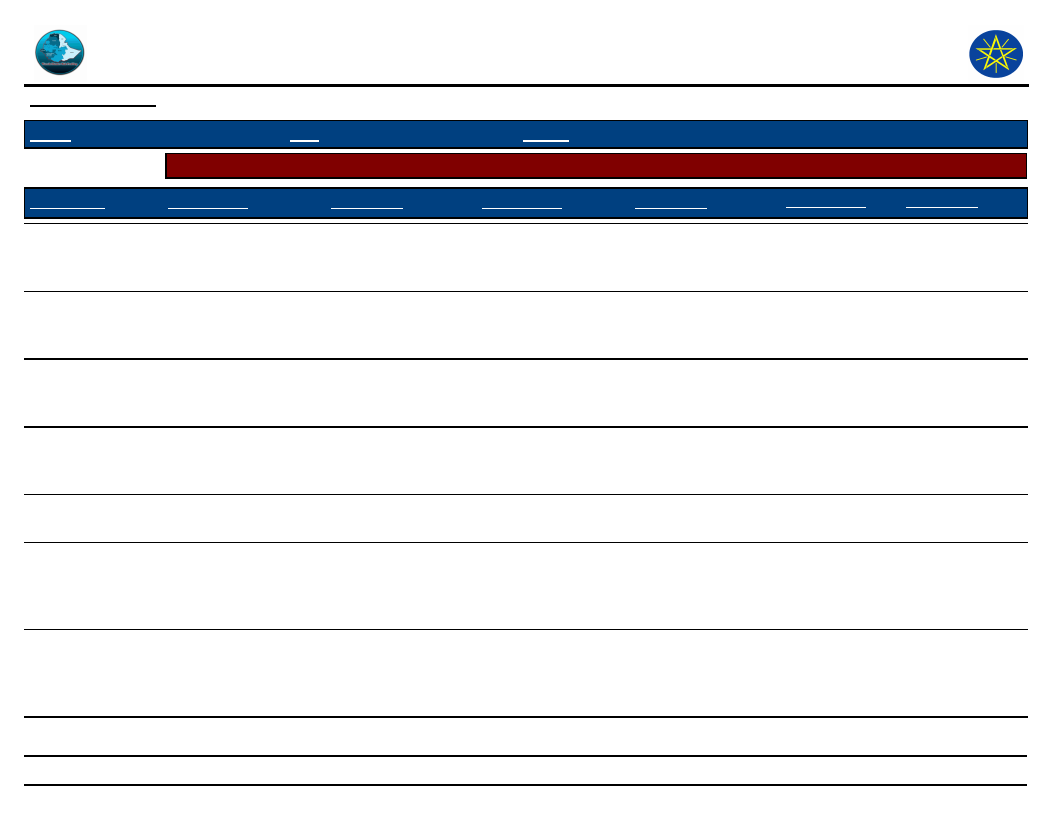
Wereda Disaster
Risk Profile
Data_Collected_Date
Disaster Risk Management and Food
Security Sector (DRMFSS)
Thursday, September 4, 2014
Region S.N.N.P
Selected Indicator
Zone HADIYA
Wereda MIRAB BADAWOCHO
Capacity: Community Preparedness against Sudden Onset Disasters
KebeleName
Precaution_1
Comment_1
Precaution_2
Comment_2
Precaution_3
Comment_3
YA BUKUNA
WADA
SEPERA
KACHA BIRA
1GNA KOTO
DANAMA
DANAMA 01
Asking for aid
Be awareness
creation the
community
Requesting aid
Asking for aid
Asking for aid
Requesting aid from
NGO and local
government.
requesting aid NGO.
It reducing the level
of affection
Reporting their
problem to stalk
holders
Requesting
government for aid
To get grain from
government or NGOs
The only ways to
recover them from
hazards
Probably means of
measures
Protected the risk/
hazards.
Support for food.
Selling of livestock
Ready to escape
from disaster
Reporting for stalk
holders
Reducing the
feeding system.
Take children and
elder to other
area.
To save the death
of children and
livestock
It reduces the level
of affection
They can report
other aid
It is the minimum
coping mechanism.
Resistant for
drought.
Selling
livestock to
avoid death
risk.
Selling
livestock to
avoid death
risk.
Resisting day to
day life.
Reduce to
hazards.
169
Page 2 of 3
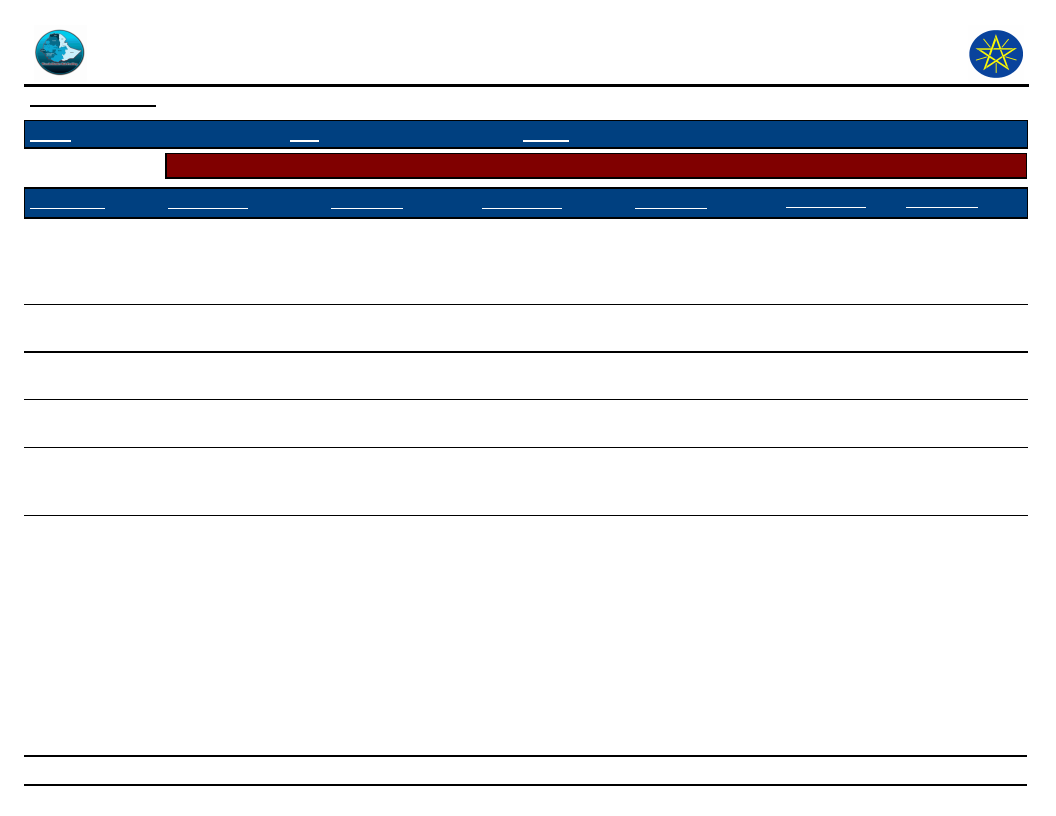
Wereda Disaster
Risk Profile
Data_Collected_Date
Disaster Risk Management and Food
Security Sector (DRMFSS)
Thursday, September 4, 2014
Region S.N.N.P
Selected Indicator
Zone HADIYA
Wereda MIRAB BADAWOCHO
Capacity: Community Preparedness against Sudden Onset Disasters
KebeleName
2nd KESHORA
WADA 01
FIRST KASHERA
JARSO MAJORIYA
OFFDAA
MIRAB AJEBA
Precaution_1
Requesting aid from
NGO.
Asking local
authorities for aid.
Asking local
authorities for aid.
Asking for aid.
Asking for aid.
Asking for aid.
Comment_1
No any chance.
Precaution_2
Take children and
elder to other
area.
Comment_2
It reduces the level
of affection.
Precaution_3
Selling
livestock to
avoid death
risk.
Comment_3
No any chance.
It the solution for
preventing food
shortage.
They believe it
recover them from
hazards.
Reporting to
kebele authorities.
170
Page 3 of 3
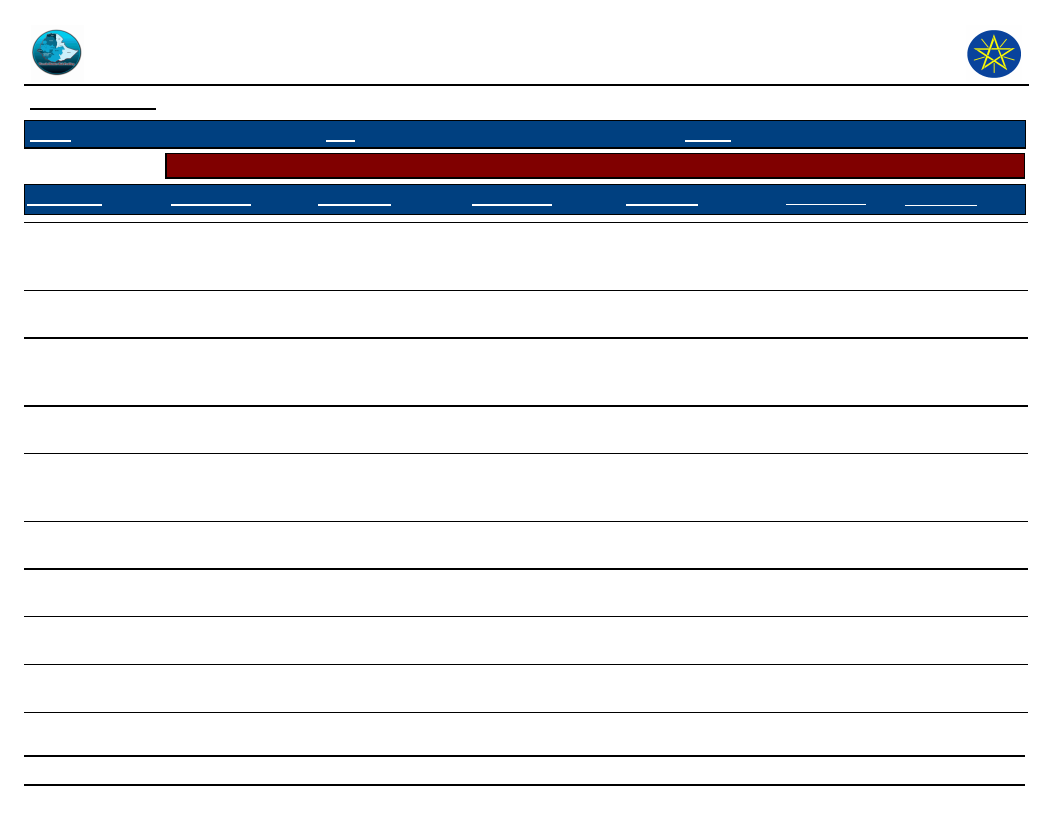
Wereda Disaster
Risk Profile
Disaster Risk Management and Food
Security Sector (DRMFSS)
Data_Collected_Date
Thursday, September 4, 2014
Region S.N.N.P
Zone HADIYA
Wereda MIRAB BADAWOCHO
Selected Indicator
Capacity: Community Preparedness against Increase in Disaster Intensity
KebeleName
Precaution_1
Comment_1
Precaution_2
Comment_2
Precaution_3
Comment_3
DEDO
WEBARANA OFODA
JARISO ONIJOJO
SIBEYA
GERIBO
WEREBOYA
2GNA KOTO
HAWORA
ELIFETA
Increasing the
habit of
afforestation
Developing saving
and loaning
Increasing the
habit of saving and
credit services
Improve the habit
of afforestation
Increased the
habit of
afforestation
Improve the habit
of afforestation
Developing saving
and loaning
Soil and water
conservation
Afforestation
It reduces the
drought
It usesd during bad
time
it is used during bad
time
It reduces the
drought
It reduces the
drought
It reduces the
drought
It is the bank of the
bad time
Keep from exposing
to drought
Increased the habit
of savings
Cultivating drought
resistant crops
Cultivating drought
resistant crops
Increased the habit
of savings
Increased the habit
of savings
Increased the habit
of savings
Cultivating drought
resistant crops
Saving
It is the bank of the
bad time
It is not affected
easily
It is not affected
easily by drought
It must be reduce the
risk
It is the bank of the
bad time
It must be reduce the
risk
it is not easily
affected
Bank of the bad time
171
Page 1 of 3
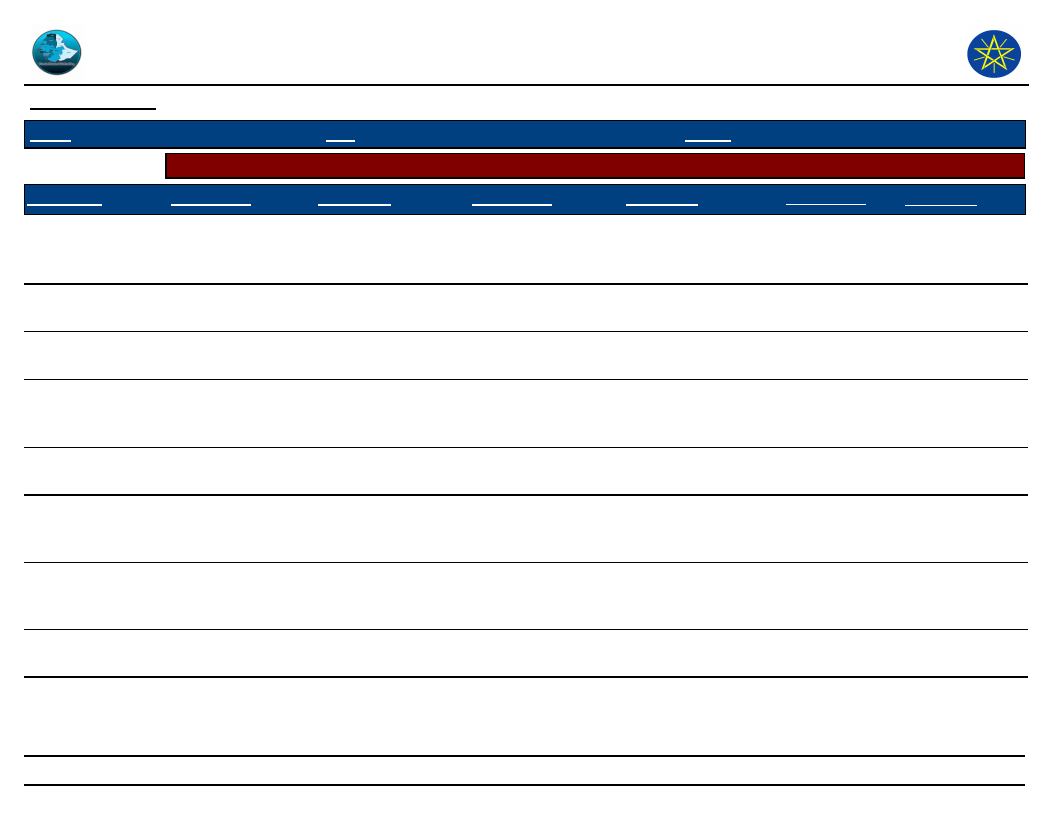
Wereda Disaster
Risk Profile
Data_Collected_Date
Disaster Risk Management and Food
Security Sector (DRMFSS)
Thursday, September 4, 2014
Region S.N.N.P
Zone HADIYA
Wereda MIRAB BADAWOCHO
Selected Indicator
Capacity: Community Preparedness against Increase in Disaster Intensity
KebeleName
Precaution_1
Comment_1
Precaution_2
Comment_2
Precaution_3
Comment_3
YA BUKUNA
WADA
SEPERA
KACHA BIRA
1GNA KOTO
DANAMA
DANAMA 01
2nd KESHORA
WADA 01
Afforestation
Develop the habit
of afforestation
Saving
Strengthen soil
and water
conservation
Soil and water
conservation
Increasing the
habit of
afforestation
Improve the habit
of afforestation
Developing saving
and loaning
Asking the
administration for
aid
Reduce the
exposure of the
drought
It reduces the
drought
It is the bank of the
bad time
It reduces the
drought
Soil and water
conservation
Develop the habit of
saving
Cooperation
Cultivating drought
resistant crops
It increase soil
fertility, increase
productivity
It is the bank of the
bad time
It reduce the level of
severity of hazards
it is not easily
affected
Increasing their
productivity
It reduces the
drought
It reduces the
drought
Bank of bad time
It recovers from
hazards
Afforestation
Increased the habit
of savings
Increased the habit
of savings
Cultivating drought
resistant crops
Focusing on grain
bank
prevent the drought
Bank of the bad time
It must be reduce the
risk
It is not affected
Cultivating the
drought
resistant crops
Cultivating the
drought
resistant crops
It is not easily
affected
It is not easily
affected
drought
It helps during bad
time
Focusing on
asset selling
172
Page 2 of 3

Wereda Disaster
Risk Profile
Disaster Risk Management and Food
Security Sector (DRMFSS)
Data_Collected_Date
Thursday, September 4, 2014
Region S.N.N.P
Zone HADIYA
Wereda MIRAB BADAWOCHO
Selected Indicator
Capacity: Community Preparedness against Increase in Disaster Intensity
KebeleName
Precaution_1
Comment_1
Precaution_2
Comment_2
Precaution_3
Comment_3
FIRST KASHERA
JARSO MAJORIYA
OFFDAA
MIRAB AJEBA
Asking the
administration for
aid
Cultivating
drought resistance
crops
It recovers from
hazards
It is not easily
affected by drought
Focusing on grain
bank
Saving
Irrigation
Narrow the gap of
rain
Soil and water
conservation
Focusing on saving
Helping during bad
time
Soil and water
conservation
It helps during bad
time
helping during bad
time
Focusing on
asset selling
Trading
Increases their
productivity
Increases
productivity of land
Saving and
credit
Irrigation
activities
Support if
economy
diminishing
happen
Help during
asset
diminishing
Narrow the gap
of rain
dependency
173
Page 3 of 3
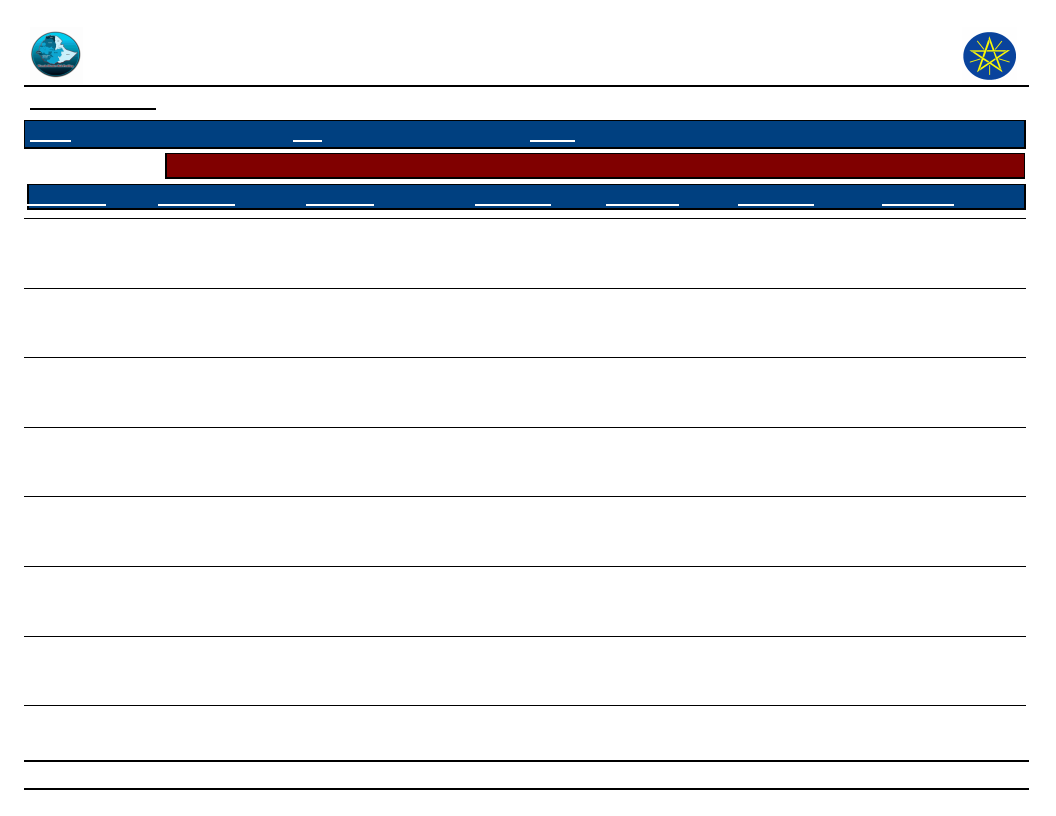
Wereda Disaster
Risk Profile
Disaster Risk Management and Food
Security Sector (DRMFSS)
Data_Collected_Date
Thursday, September 4, 2014
Region S.N.N.P
Zone
HADIYA
Wereda MIRAB BADAWOCHO
Selected Indicator
Capacity: Community Preparedness against Disasters
Kebele Name
Precaution 1
Comment 1
Precaution 2
Comment 2
Precaution 3
Comment 3
DEDO
WEBARANA
OFODA
Soil and water
conservation
activities
Increasing saving
habits
JARISO ONIJOJO
Cultivate drought
resistance crops
SIBEYA
GERIBO
WEREBOYA
2GNA KOTO
Soil and water
conservation
activities
Soil and water
conservation
activities
Soil and water
conservation
activities
Increasing saving
habits
Used for increasing
productivity of land
Afforestation
It is the bank of bad
time
It is not easily affected
by drought
Soil and water
conservation
activities
Asset saving
Afforestation
Used for increasing
productivity of land
Used for increasing
productivity of land
It is the bank of bad
time
Afforestation
Afforestation
Soil and water
conservation
activities
It reducing
drought
Increasing saving
habit
It improves
productivities
Afforestation
It is the bank of
bad time
Resistant the
drought
Soil and water
conservation
activities
Increasing saving
habit
It reducing
drought
Increasing saving
habit
It reducing
drought
Increasing saving
habit
It improves
productivities
Afforestation
It is the bank of
bad time
It is reduce the
level of drought
It improves
productivities
It is the bank of
bad time
It is the bank of
bad time
It reduces the
level of drought
174
Page 1 of 4
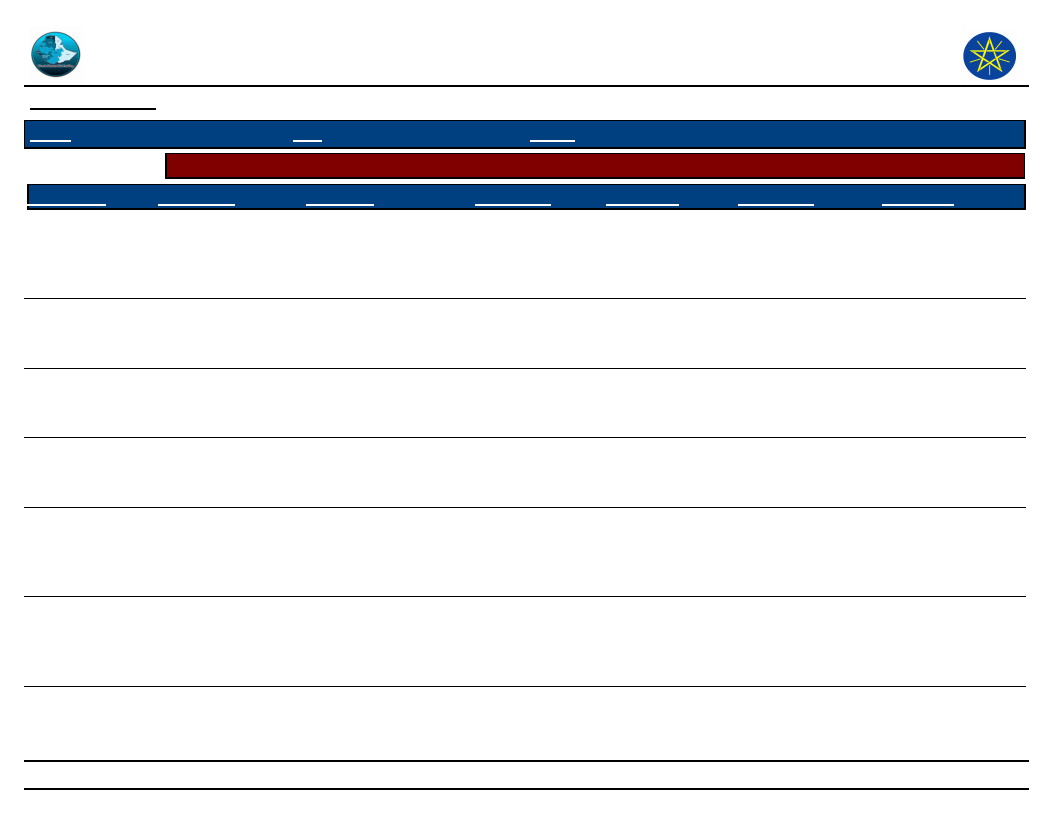
Wereda Disaster
Risk Profile
Disaster Risk Management and Food
Security Sector (DRMFSS)
Data_Collected_Date
Thursday, September 4, 2014
Region S.N.N.P
Zone
HADIYA
Wereda MIRAB BADAWOCHO
Selected Indicator
Capacity: Community Preparedness against Disasters
Kebele Name
HAWORA
Precaution 1
Saving asset
Comment 1
To reduce the risk of
finance
Precaution 2
Cultivate short
term crop
Comment 2
Ready to within
short period of
time
Precaution 3
Intensive farming
system and
diversification
Comment 3
If one item
diminish the other
will give the
chance to survive
ELIFETA
Saving asset
Bank of bad time
Soil and water
conservation
activities
Keep soil fertility
Focusing on
drought resistance
crops
Resistant drought
YA BUKUNA
Soil and water
conservation
activities
Increase soil fertility,
then productivity is
high
Saving
It recover better
during and after
incident
Focusing on
drought resistant
crops
Not easily
diminished by
drought
WADA
Afforestation
It reduce the level of
drought
Soil and water
conservation
activities
It increase
productivity
Developing saving
habit
It is the bank of
bad time
SEPERA
Cultivating short
term crops
Ready for use within
short period of time
Saving
Not easily
depreciate and
help when bad
time will come
Intensive farming
system and
diversification
If one item
diminish the other
will give the
chance to survive
KACHA BIRA
Saving asset
It help during bad time
Focusing of
improved
drought
resistance crop
It resist drought
Soil and water
conservation
activities
It increased
productivity and
keep the soil and
water from erosion
1GNA KOTO
Afforestation
Prevention drought
Cultivating
drought
resistance crops
Resistant the
drought
Saving
Helping during bad
time
175
Page 2 of 4
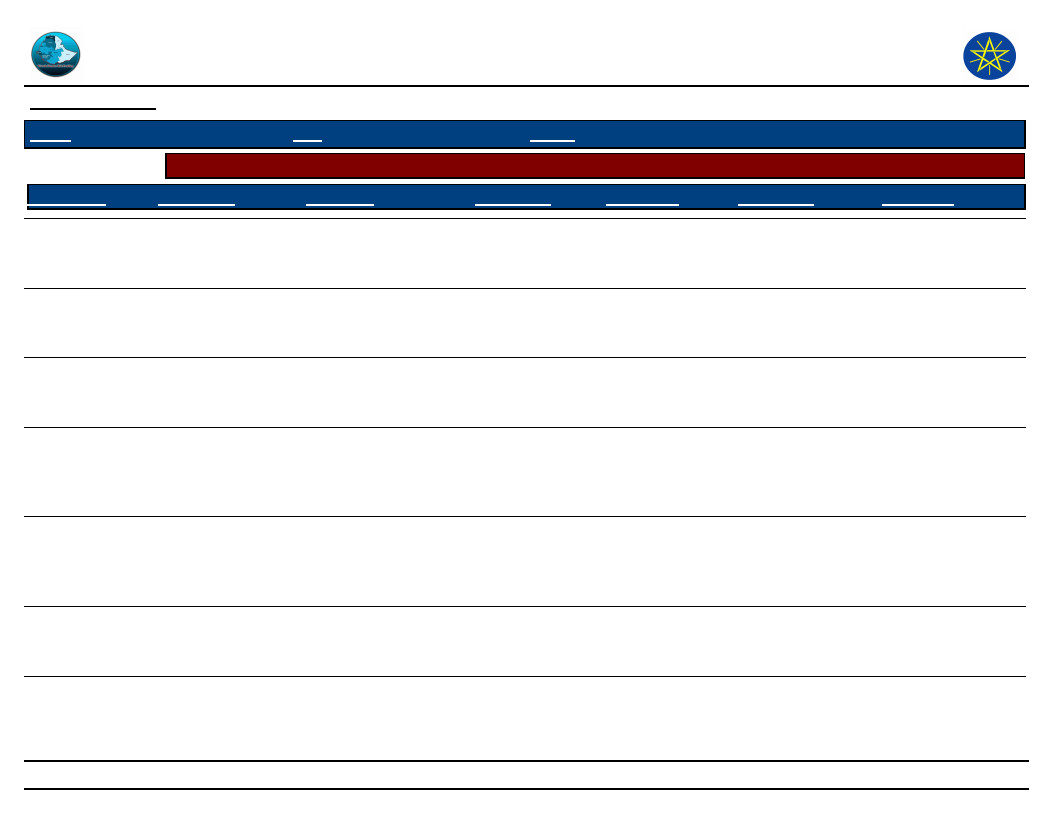
Wereda Disaster
Risk Profile
Disaster Risk Management and Food
Security Sector (DRMFSS)
Data_Collected_Date
Thursday, September 4, 2014
Region S.N.N.P
Zone
HADIYA
Wereda MIRAB BADAWOCHO
Selected Indicator
Capacity: Community Preparedness against Disasters
Kebele Name
Precaution 1
Comment 1
Precaution 2
Comment 2
Precaution 3
Comment 3
DANAMA
DANAMA 01
2nd KESHORA
WADA 01
Soil and water
conservation
activities
Soil and water
conservation
activities
Increasing saving
habits
Saving asset
It is increasing
productivities
To prevent the
disaster
it is the bank of bad
time
Bank of bad time
FIRST KASHERA
Saving asset
Bank of bad time
JARSO MAJORIYA
Soil and water
conservation
activities
Increase soil fertility
Afforestation
Afforestation
Soil and water
conservation
activities
Afforestation
Afforestation
Saving
It is reducing
drought
Increasing saving
habit
It is the bank of
bad time
Resistant the
drought
Increasing saving
habit
It improves
productivities
Afforestation
It reduces the
level of drought
Prevent drought
and keep soil
and water
erosion
Prevent drought
and keep soil
and water
erosion
Helping during
bad time
Focusing on
drought resistant
crops
Focusing on
drought resistance
crops
Drought resistance
crops
It is not easily
affected by
drought
It is not easily
affected by
drought
Resistant drought
176
Page 3 of 4
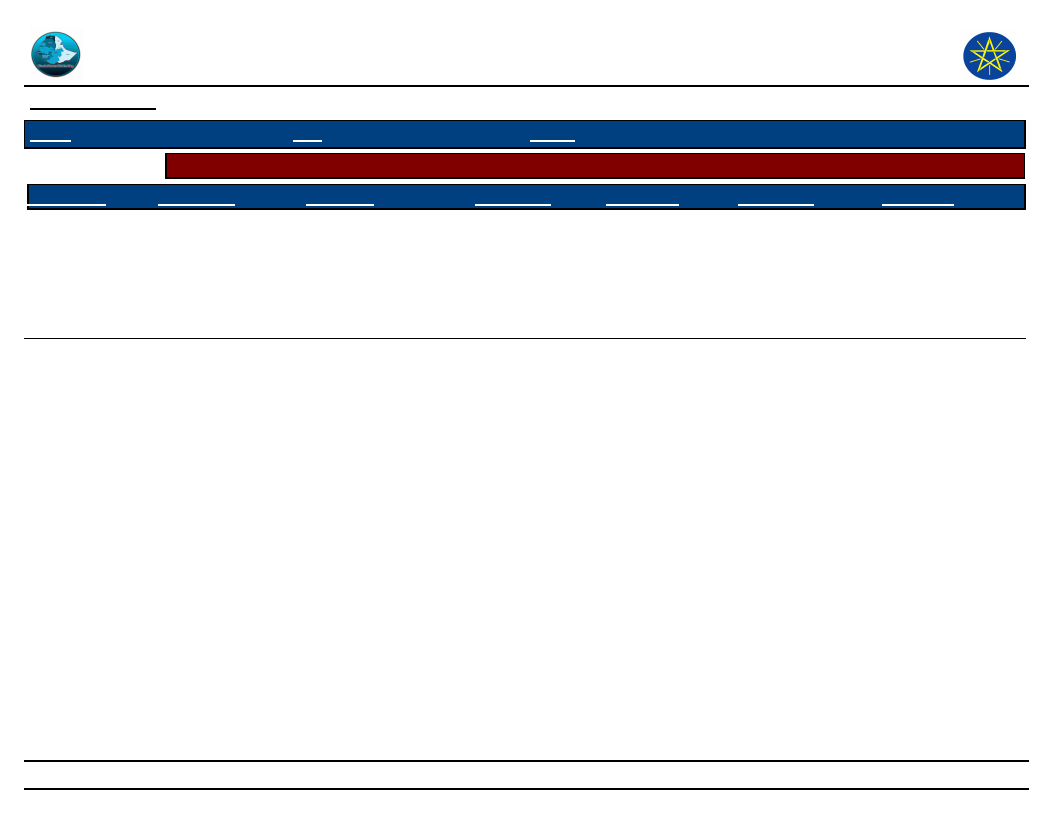
Wereda Disaster
Risk Profile
Disaster Risk Management and Food
Security Sector (DRMFSS)
Data_Collected_Date
Thursday, September 4, 2014
Region S.N.N.P
Zone
HADIYA
Wereda MIRAB BADAWOCHO
Selected Indicator
Capacity: Community Preparedness against Disasters
Kebele Name
OFFDAA
Precaution 1
Keeping soil and
water
Comment 1
Increase productivity
of land
Precaution 2
Keeping
afforestation
Comment 2
Prevent for
drought
Precaution 3
Saving, focusing on
drought resistant
crop
Comment 3
Drought resistant
crop cannot easily
affected by
drought Saving
used for prevent
bad time
MIRAB AJEBA
Soil and water
conservation
activities
Increase productivity
of land
Afforestation
Prevent negative
effect of the
hazards
Saving
Helping during bad
time
177
Page 4 of 4
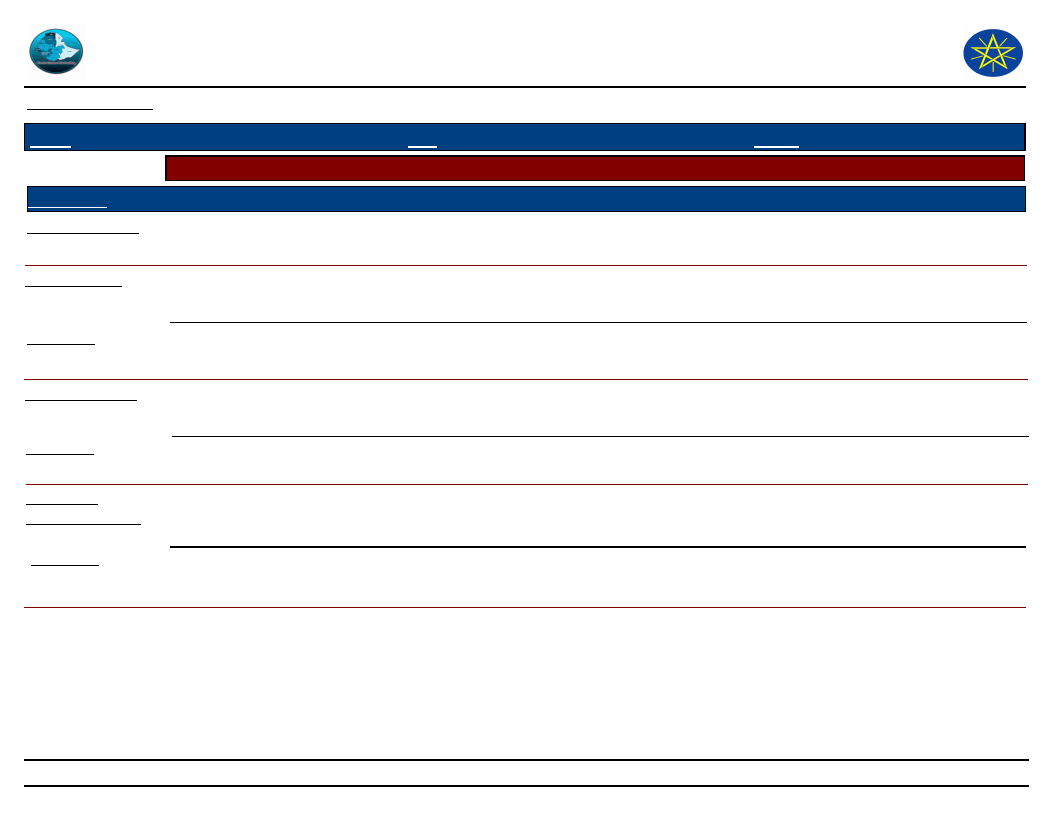
Wereda Disaster
Risk Profile
Data_Collected_Date
Region S.N.N.P
Selected Indicator
Kebele Name
Type of Disaster(s)
Zone
HADIYA
Hazard: Coping and recovering during last Disaster
DEDO
Drought
Coping_Strategy
Borrowing and migration
Description
Low
Recovery_Strategy
Cultivating short term crops
Description
Low
Community
Participation_Ways
Description
Receiving children of affected house holds
Low
Disaster Risk Management and Food
Security Sector (DRMFSS)
Thursday, September 4, 2014
Wereda MIRAB BADAWOCHO
178
Page 1 of 22
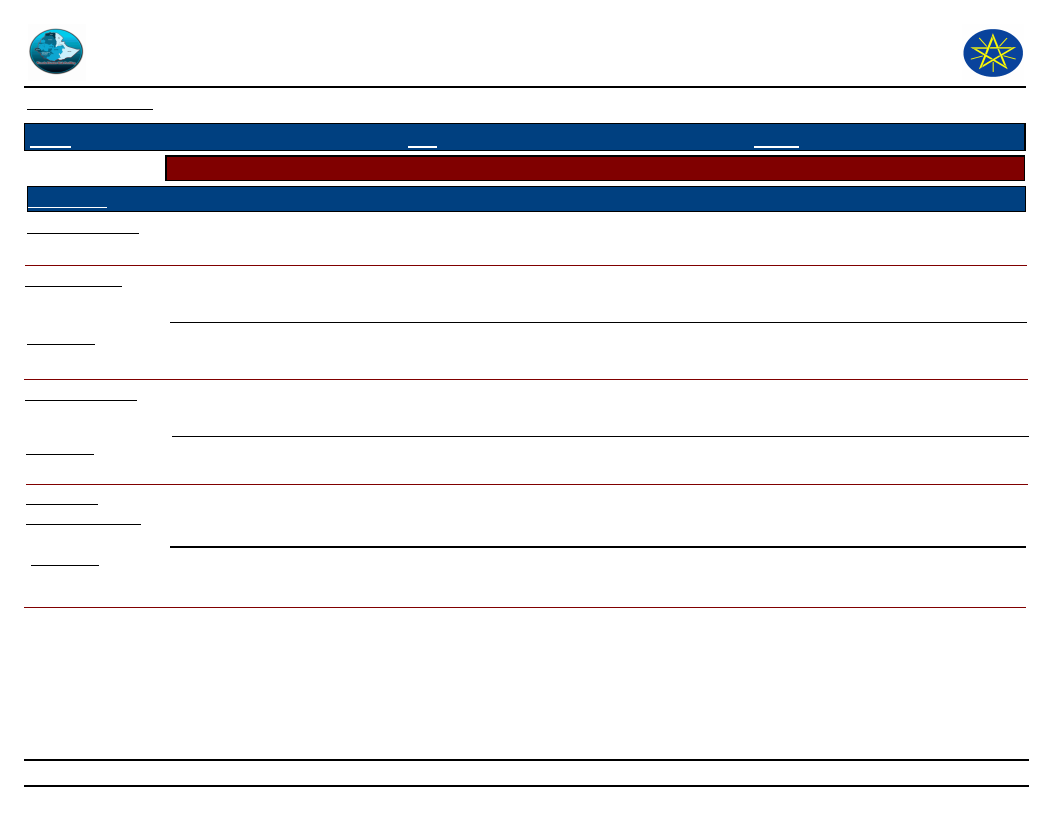
Wereda Disaster
Risk Profile
Data_Collected_Date
Region S.N.N.P
Selected Indicator
Kebele Name
Type of Disaster(s)
Zone
HADIYA
Hazard: Coping and recovering during last Disaster
WEBARANA OFODA
Drought
Coping_Strategy
Borrowing and migration
Description
Low
Recovery_Strategy
Helping each other, ox exchanging with labour
Description
Low
Community
Participation_Ways
Description
Giving relief aid for affected house holds
Low
Disaster Risk Management and Food
Security Sector (DRMFSS)
Thursday, September 4, 2014
Wereda MIRAB BADAWOCHO
179
Page 2 of 22
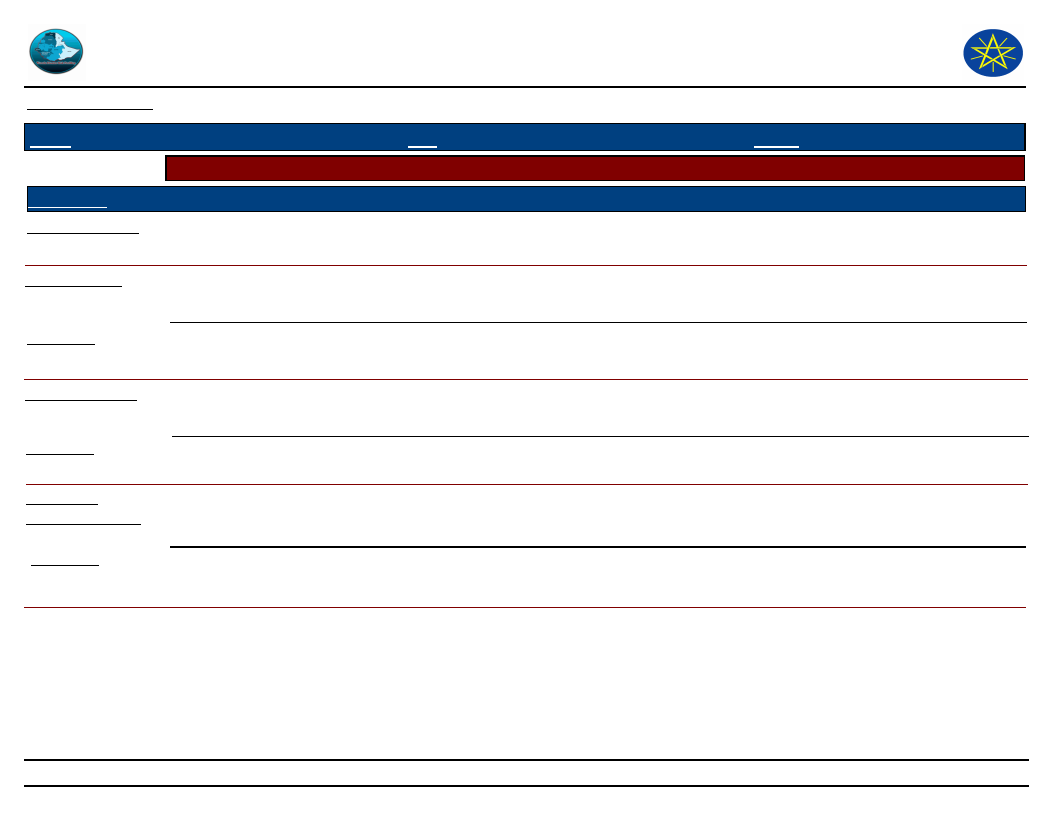
Wereda Disaster
Risk Profile
Data_Collected_Date
Region S.N.N.P
Selected Indicator
Kebele Name
Type of Disaster(s)
Zone
HADIYA
Hazard: Coping and recovering during last Disaster
JARISO ONIJOJO
Drought
Coping_Strategy
Borrowing and migration
Description
Low
Recovery_Strategy
Helping each other, ox exchanging with labour
Description
Low
Community
Participation_Ways
Description
Providing gifts in terms of money or grain
Low
Disaster Risk Management and Food
Security Sector (DRMFSS)
Thursday, September 4, 2014
Wereda MIRAB BADAWOCHO
180
Page 3 of 22
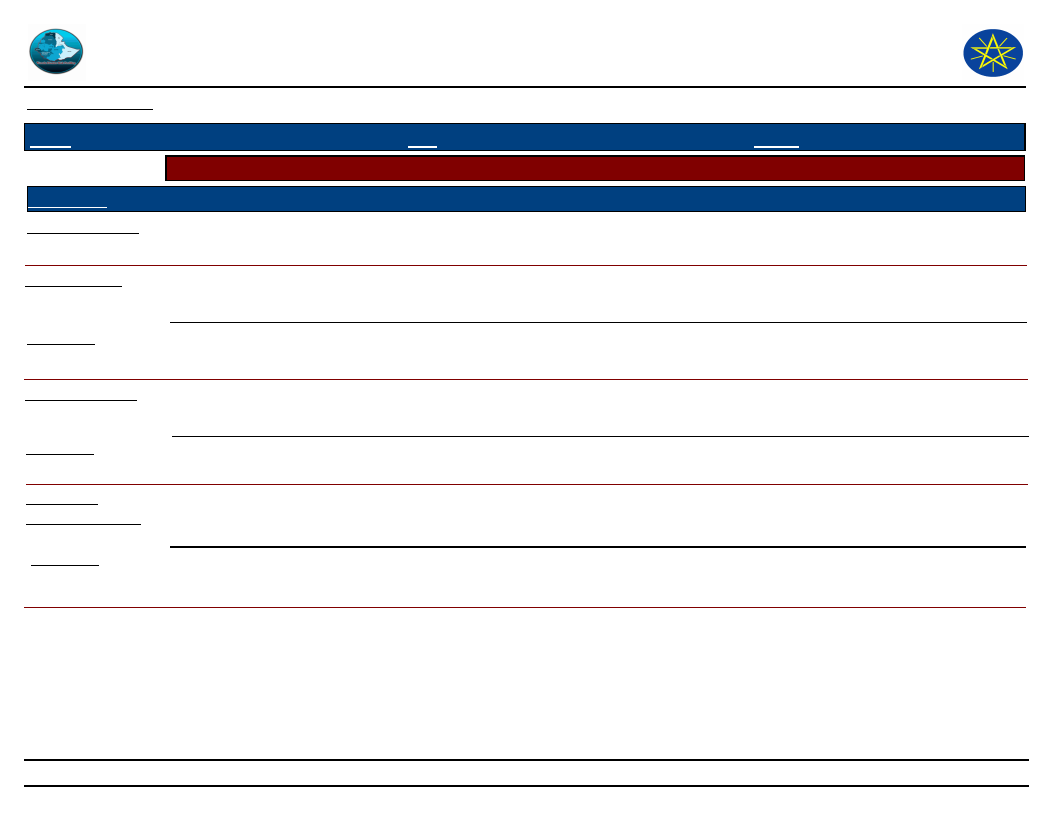
Wereda Disaster
Risk Profile
Data_Collected_Date
Region S.N.N.P
Selected Indicator
Kebele Name
Type of Disaster(s)
Zone
HADIYA
Hazard: Coping and recovering during last Disaster
SIBEYA
Drought
Coping_Strategy
Borrowing, asset selling and daily labour
Description
Low
Recovery_Strategy
Cultivating short term crops
Description
Low
Community
Participation_Ways
Description
Receiving children of affected house holds
Low
Disaster Risk Management and Food
Security Sector (DRMFSS)
Thursday, September 4, 2014
Wereda MIRAB BADAWOCHO
181
Page 4 of 22
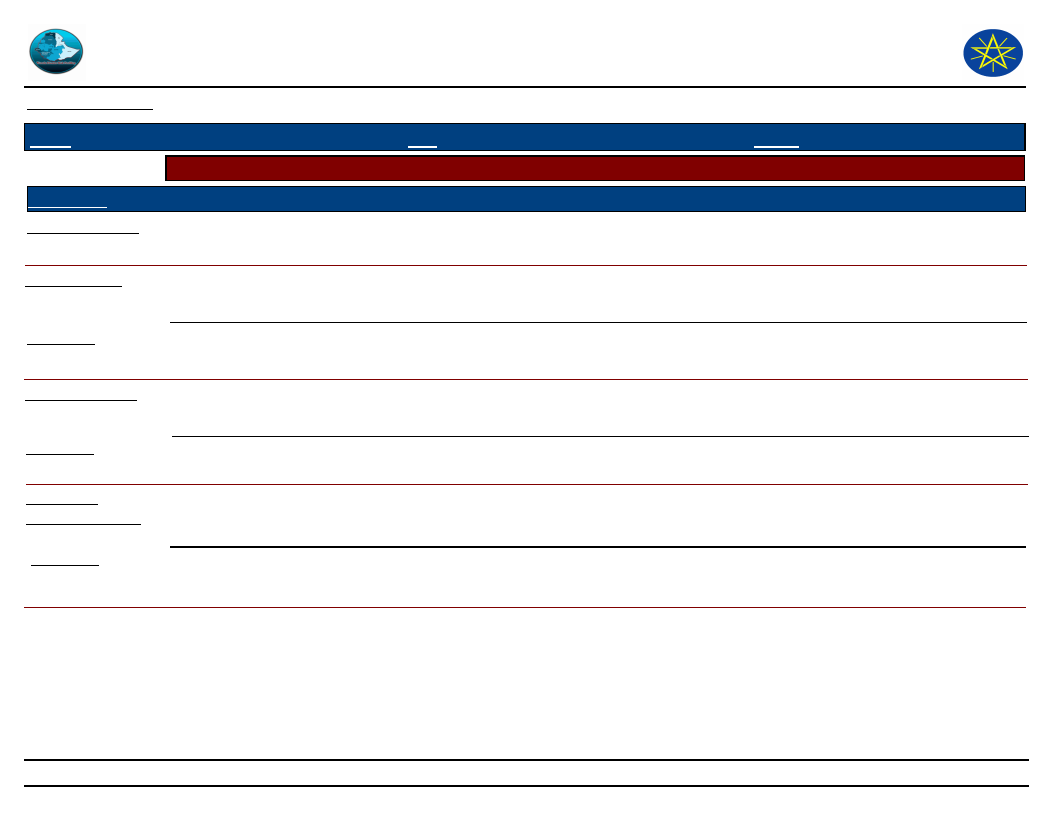
Wereda Disaster
Risk Profile
Data_Collected_Date
Region S.N.N.P
Selected Indicator
Kebele Name
Type of Disaster(s)
Zone
HADIYA
Hazard: Coping and recovering during last Disaster
GERIBO
Drought
Coping_Strategy
Borrowing and migration
Description
Low
Recovery_Strategy
Cultivating short term crops, ox exchanging with labour
Description
Low
Community
Participation_Ways
Description
Providing gifts in terms of money or grain
Low
Disaster Risk Management and Food
Security Sector (DRMFSS)
Thursday, September 4, 2014
Wereda MIRAB BADAWOCHO
182
Page 5 of 22
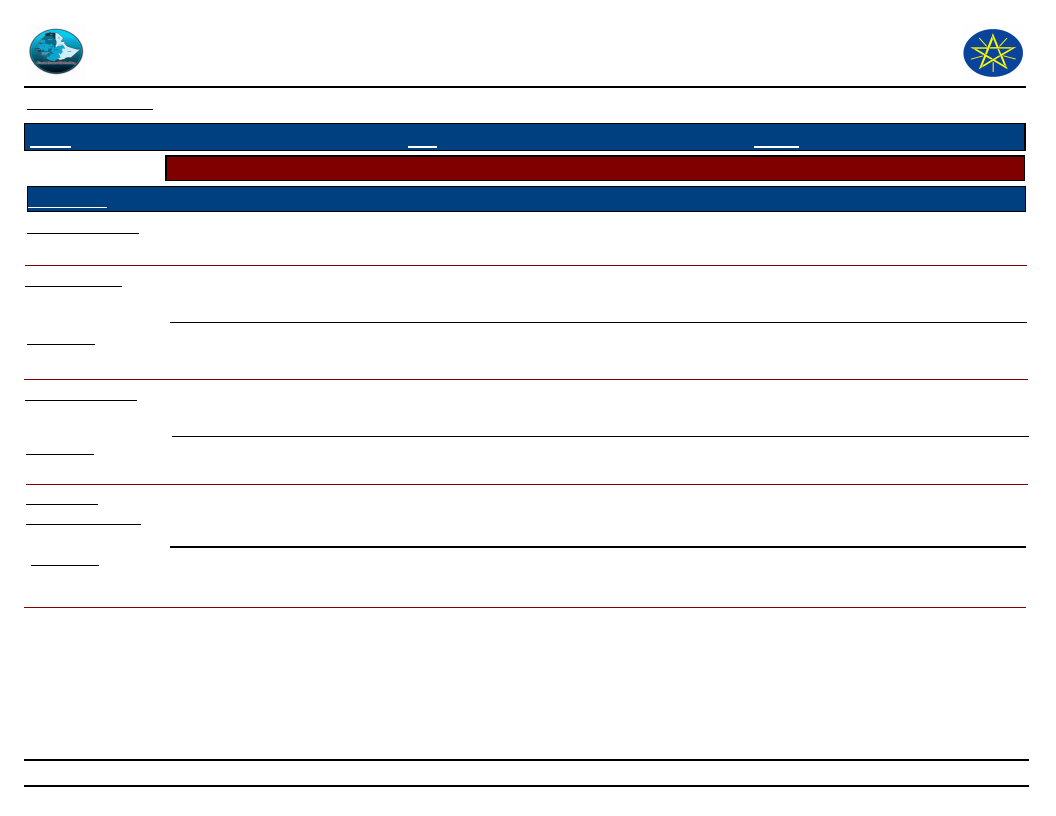
Wereda Disaster
Risk Profile
Data_Collected_Date
Region S.N.N.P
Selected Indicator
Kebele Name
Type of Disaster(s)
Zone
HADIYA
Hazard: Coping and recovering during last Disaster
WEREBOYA
Drought
Coping_Strategy
Trading, saving and Borrowing, asset selling and migration
Description
Low
Recovery_Strategy
Cultivating short period crops
Description
Low
Community
Participation_Ways
Description
Providing gifts in terms of money or grain
Low
Disaster Risk Management and Food
Security Sector (DRMFSS)
Thursday, September 4, 2014
Wereda MIRAB BADAWOCHO
183
Page 6 of 22
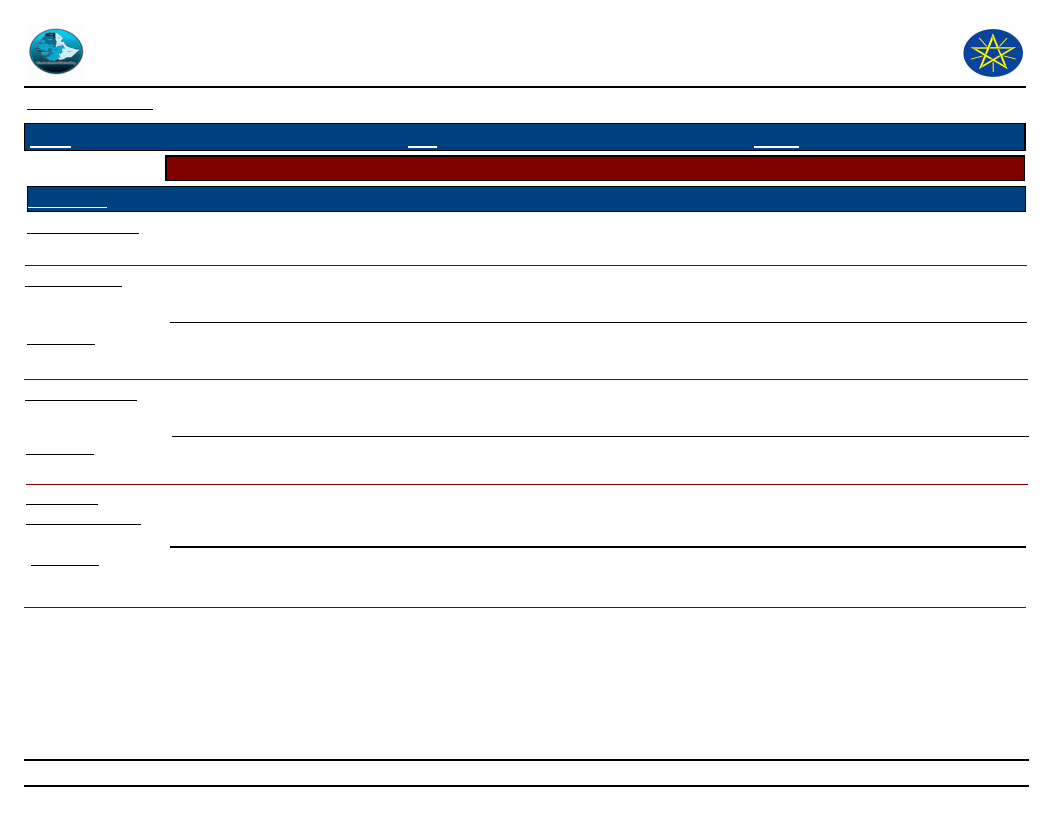
Wereda Disaster
Risk Profile
Data_Collected_Date
Region S.N.N.P
Selected Indicator
Kebele Name
Type of Disaster(s)
Zone
HADIYA
Hazard: Coping and recovering during last Disaster
2GNA KOTO
Coping_Strategy
Borrowing, asset saving and trading
Disaster Risk Management and Food
Security Sector (DRMFSS)
Thursday, September 4, 2014
Wereda MIRAB BADAWOCHO
Description
Low
Recovery_Strategy
Cultivating short cycle crops, helping each other, ox exchange with labour
Description
Low
Community
Participation_Ways
Description
Migration and loading
Low
184
Page 7 of 22
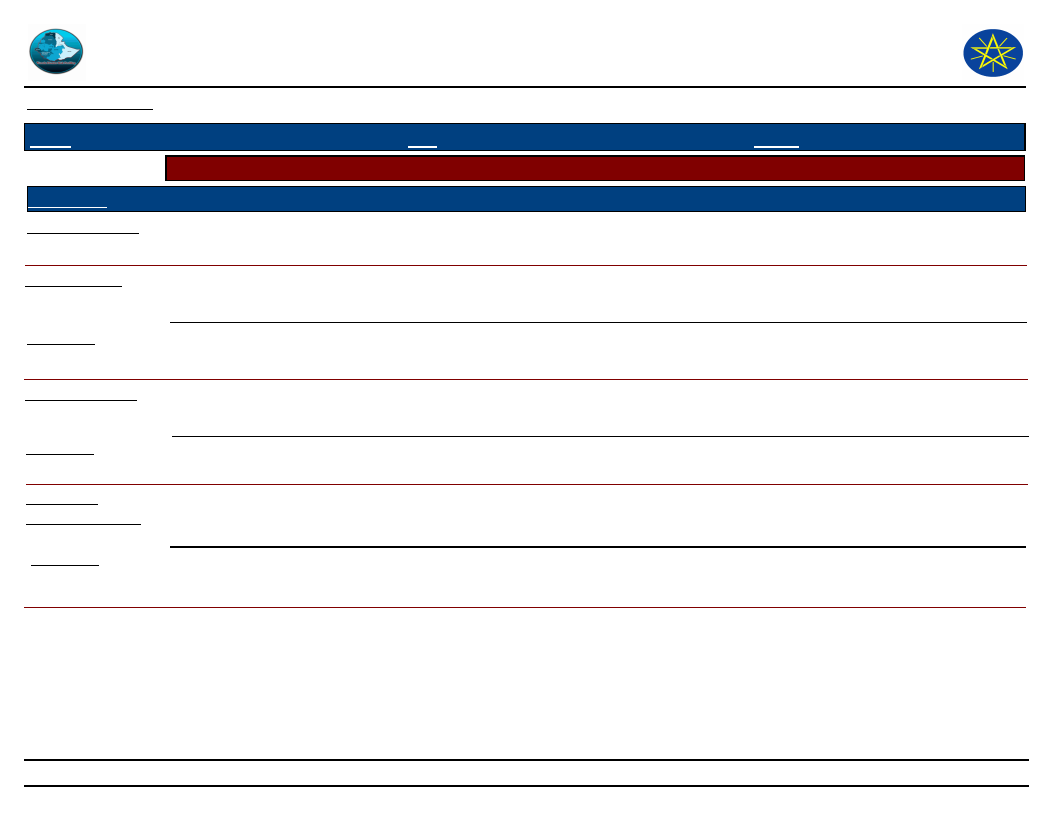
Wereda Disaster
Risk Profile
Data_Collected_Date
Region S.N.N.P
Selected Indicator
Kebele Name
Type of Disaster(s)
Zone
HADIYA
Hazard: Coping and recovering during last Disaster
HAWORA
Drought
Coping_Strategy
Asset selling, selling of livestock production
Disaster Risk Management and Food
Security Sector (DRMFSS)
Thursday, September 4, 2014
Wereda MIRAB BADAWOCHO
Description
Increased to asset selling system , increased to coaling system
Recovery_Strategy
Cultivating short period crops, daily labour and intensive cultivation
Description
Increased cultivating short period crops
Community
Participation_Ways
Description
By Borrowing the commodities
Increased to help other community
185
Page 8 of 22
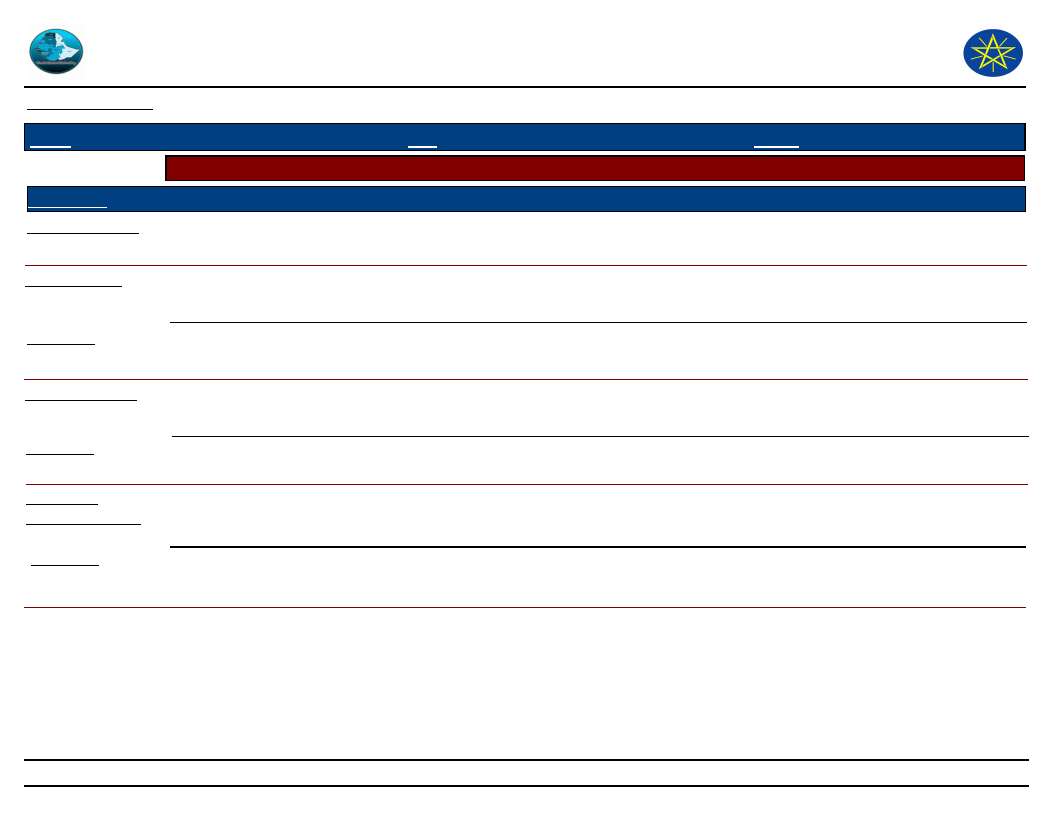
Wereda Disaster
Risk Profile
Data_Collected_Date
Region S.N.N.P
Selected Indicator
Kebele Name
Type of Disaster(s)
Zone
HADIYA
Hazard: Coping and recovering during last Disaster
ELIFETA
Drought
Coping_Strategy
Asset selling
Description
Low
Recovery_Strategy
Asset selling
Description
Low
Community
Participation_Ways
Description
Borrowing grain and ploughing oxen
Low
Disaster Risk Management and Food
Security Sector (DRMFSS)
Thursday, September 4, 2014
Wereda MIRAB BADAWOCHO
186
Page 9 of 22
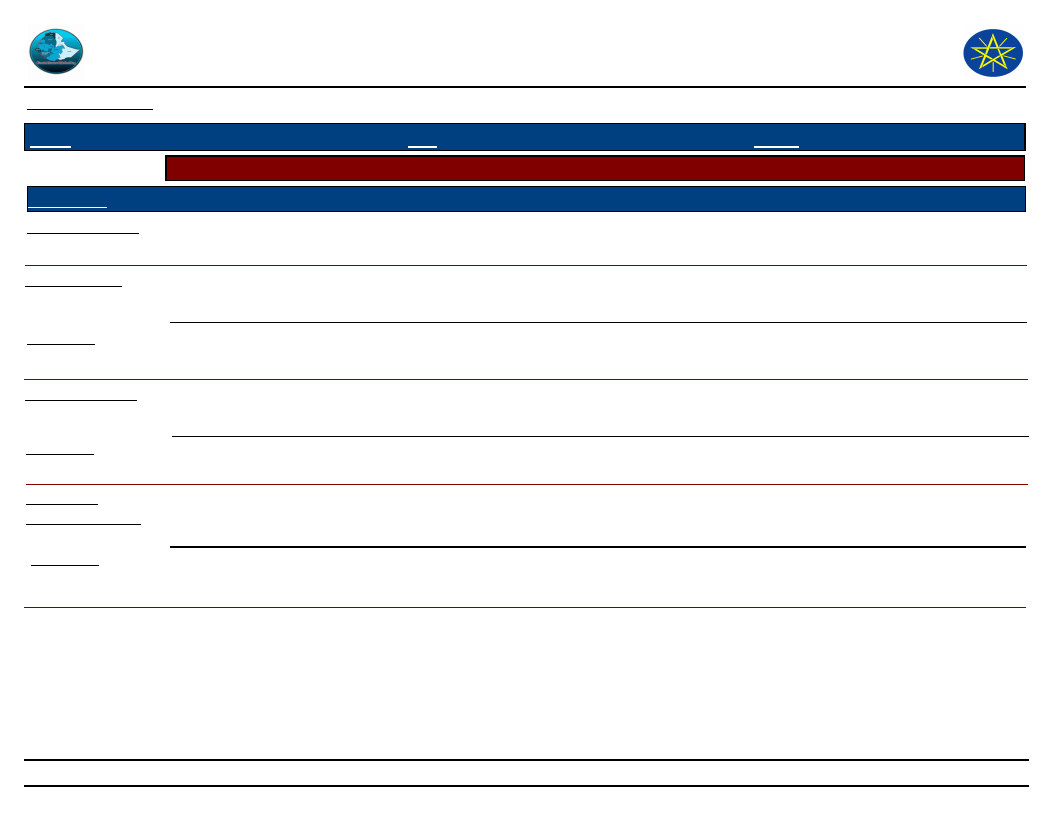
Wereda Disaster
Risk Profile
Data_Collected_Date
Region S.N.N.P
Selected Indicator
Kebele Name
Type of Disaster(s)
Zone
HADIYA
Hazard: Coping and recovering during last Disaster
YA BUKUNA
Drought
Coping_Strategy
Asset selling and aid
Description
Low
Recovery_Strategy
Asset selling
Description
Low
Community
Participation_Ways
Description
Exchanging /borrowing grain, ploughing ox and money
Low
Disaster Risk Management and Food
Security Sector (DRMFSS)
Thursday, September 4, 2014
Wereda MIRAB BADAWOCHO
187
Page 10 of 22
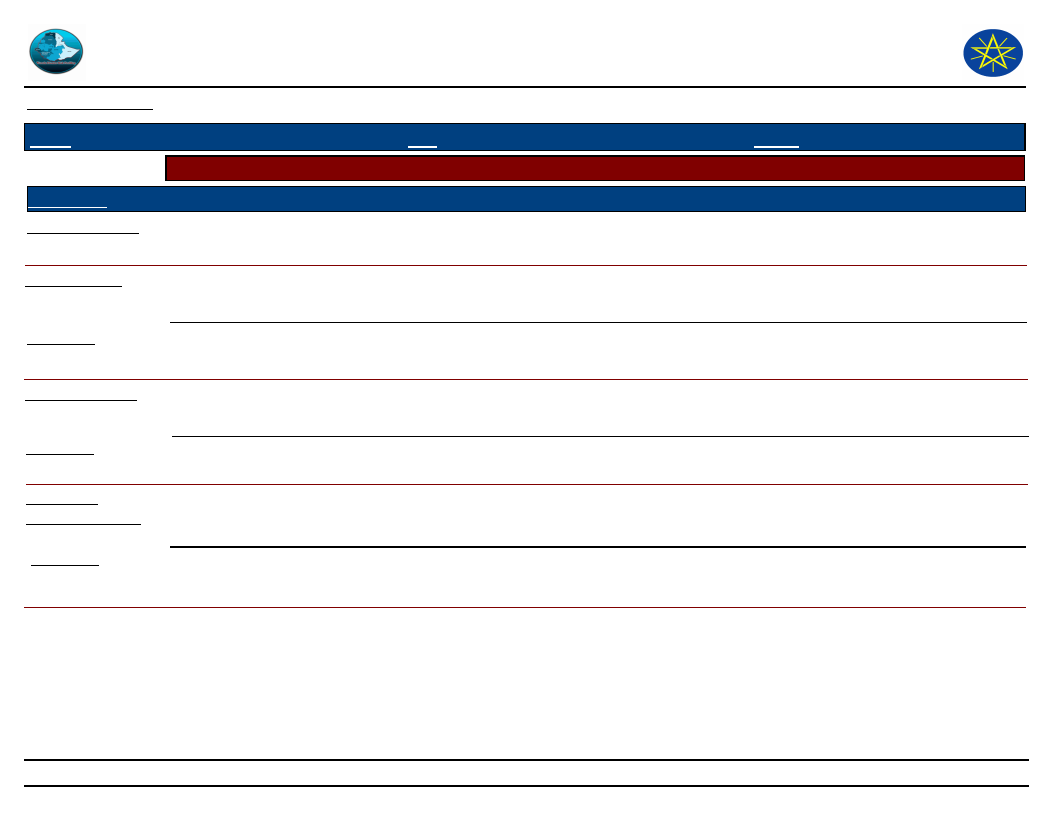
Wereda Disaster
Risk Profile
Data_Collected_Date
Region S.N.N.P
Selected Indicator
Kebele Name
Type of Disaster(s)
Zone
HADIYA
Hazard: Coping and recovering during last Disaster
WADA
Drought
Coping_Strategy
Asset selling, migration and Borrowing
Disaster Risk Management and Food
Security Sector (DRMFSS)
Thursday, September 4, 2014
Wereda MIRAB BADAWOCHO
Description
Low
Recovery_Strategy
Cultivating short term crop, helping each other, ox exchanging with labour forces
Description
Low
Community
Participation_Ways
Description
Asset selling, migration, Borrowing and cultivating short term crops
Low
188
Page 11 of 22
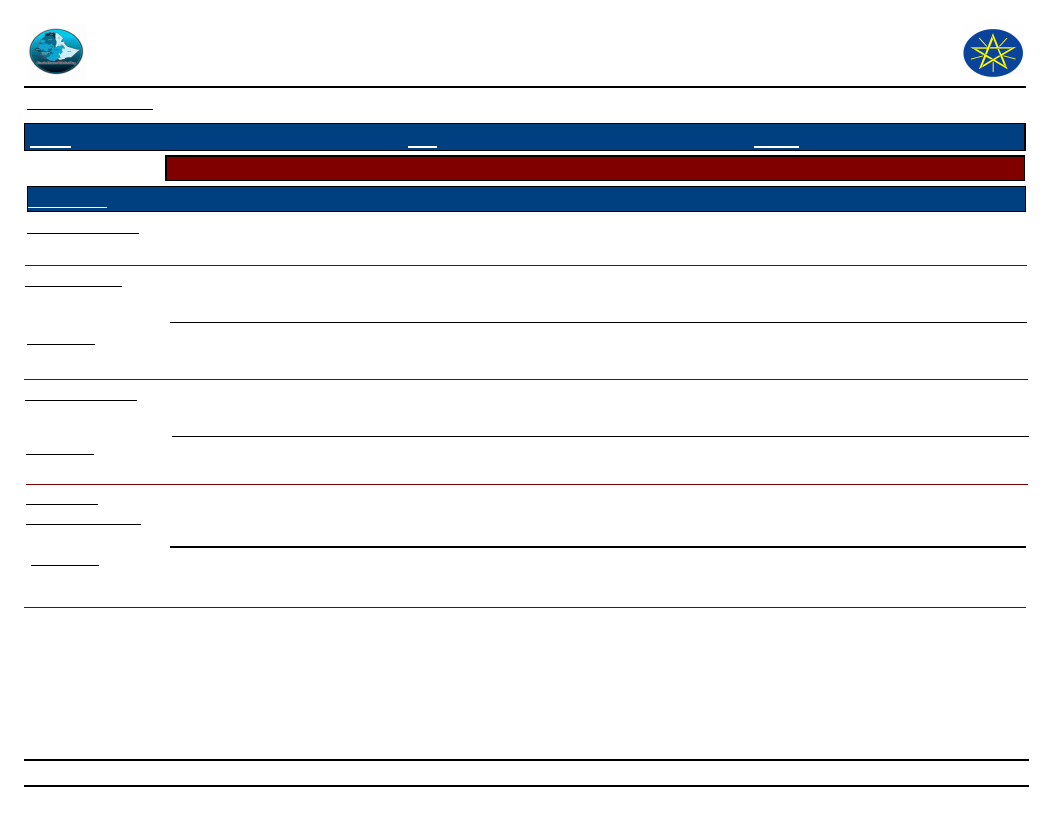
Wereda Disaster
Risk Profile
Data_Collected_Date
Region S.N.N.P
Selected Indicator
Kebele Name
Type of Disaster(s)
Zone
HADIYA
Hazard: Coping and recovering during last Disaster
SEPERA
Drought
Coping_Strategy
Asset selling, selling of livestock
Disaster Risk Management and Food
Security Sector (DRMFSS)
Thursday, September 4, 2014
Wereda MIRAB BADAWOCHO
Description
Recovery_Strategy
Cultivating short season crop, labour work and intensive cultivation
Description
Community
Participation_Ways
Description
By lending the grain and ploughing oxen
189
Page 12 of 22
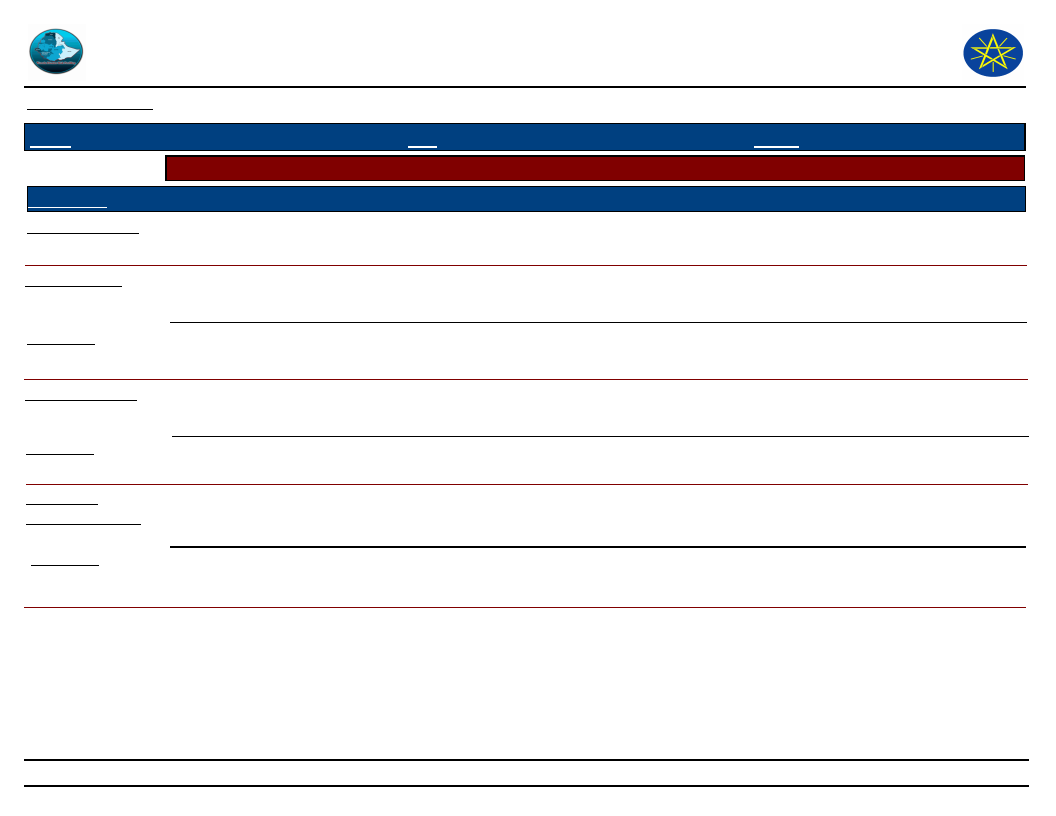
Wereda Disaster
Risk Profile
Data_Collected_Date
Region S.N.N.P
Selected Indicator
Kebele Name
Type of Disaster(s)
Zone
HADIYA
Hazard: Coping and recovering during last Disaster
KACHA BIRA
Drought
Coping_Strategy
By aiding and asset selling
Description
Low
Recovery_Strategy
Asset selling
Description
Low
Community
Participation_Ways
Description
Lending grain, borrowing money and borrowing ploughing ox
Low
Disaster Risk Management and Food
Security Sector (DRMFSS)
Thursday, September 4, 2014
Wereda MIRAB BADAWOCHO
190
Page 13 of 22
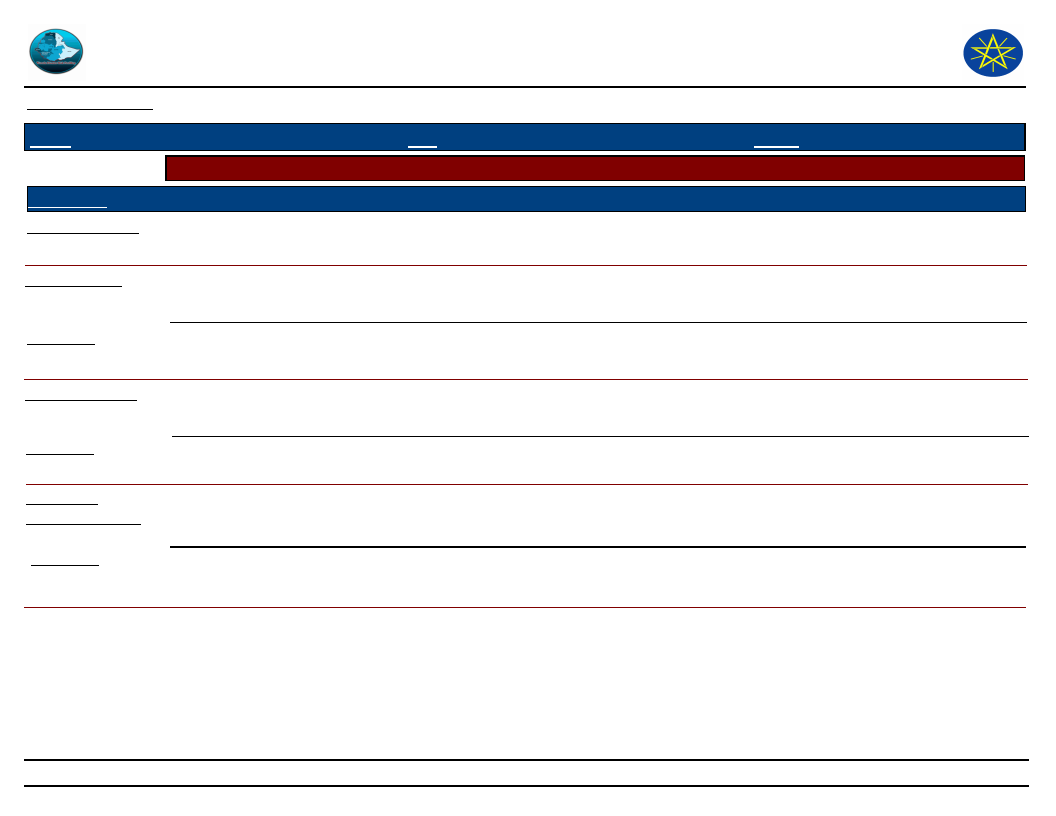
Wereda Disaster
Risk Profile
Data_Collected_Date
Region S.N.N.P
Selected Indicator
Kebele Name
Type of Disaster(s)
Zone
HADIYA
Hazard: Coping and recovering during last Disaster
1GNA KOTO
Drought
Coping_Strategy
Asset selling, taking high credit
Description
Low
Recovery_Strategy
Taking high credit and asset selling
Description
Low
Community
Participation_Ways
Description
Borrowing grain and ploughing oxen
Low
Disaster Risk Management and Food
Security Sector (DRMFSS)
Thursday, September 4, 2014
Wereda MIRAB BADAWOCHO
191
Page 14 of 22
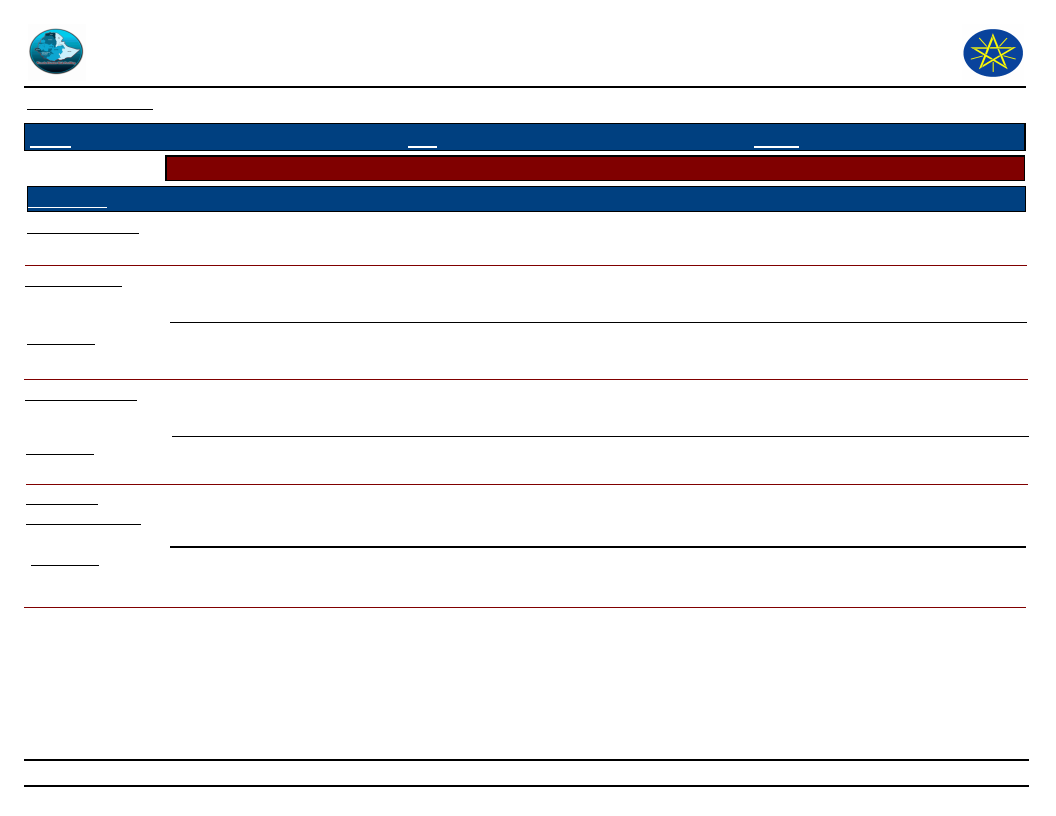
Wereda Disaster
Risk Profile
Data_Collected_Date
Region S.N.N.P
Selected Indicator
Kebele Name
Type of Disaster(s)
Zone
HADIYA
Hazard: Coping and recovering during last Disaster
DANAMA
Drought
Coping_Strategy
Borrowing and migration
Description
Low
Recovery_Strategy
Cultivating short term crops
Description
Low
Community
Participation_Ways
Description
Receiving children of affected house holds
Disaster Risk Management and Food
Security Sector (DRMFSS)
Thursday, September 4, 2014
Wereda MIRAB BADAWOCHO
192
Page 15 of 22
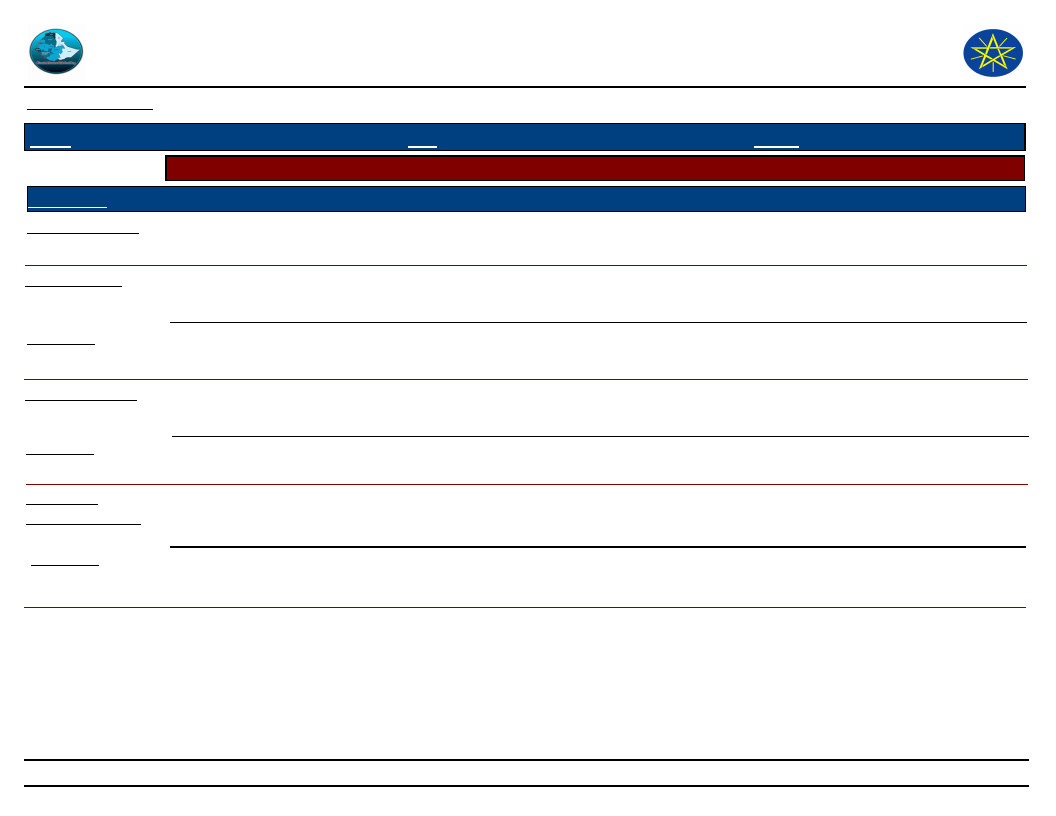
Wereda Disaster
Risk Profile
Data_Collected_Date
Region S.N.N.P
Selected Indicator
Kebele Name
Type of Disaster(s)
Zone
HADIYA
Hazard: Coping and recovering during last Disaster
DANAMA 01
Drought
Coping_Strategy
Borrowing and migration
Description
Low
Recovery_Strategy
Cultivating short term crops
Description
Low
Community
Participation_Ways
Description
Receiving children of affected house holds
Low
Disaster Risk Management and Food
Security Sector (DRMFSS)
Thursday, September 4, 2014
Wereda MIRAB BADAWOCHO
193
Page 16 of 22
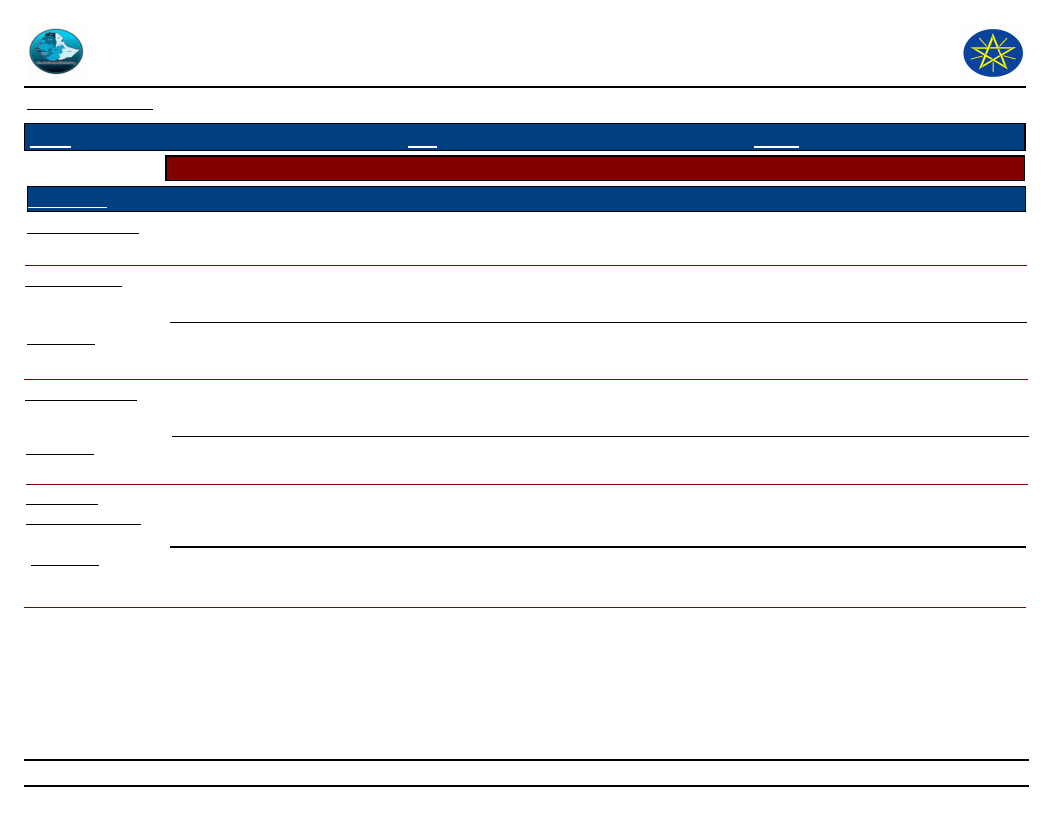
Wereda Disaster
Risk Profile
Data_Collected_Date
Region S.N.N.P
Selected Indicator
Kebele Name
Type of Disaster(s)
Zone
HADIYA
Hazard: Coping and recovering during last Disaster
2nd KESHORA
Drought
Coping_Strategy
Borrowing and migration
Description
Low
Recovery_Strategy
Helping each other, ox exchanging with labour
Description
Low
Community
Participation_Ways
Description
Receiving children of affected house holds
Low
Disaster Risk Management and Food
Security Sector (DRMFSS)
Thursday, September 4, 2014
Wereda MIRAB BADAWOCHO
194
Page 17 of 22
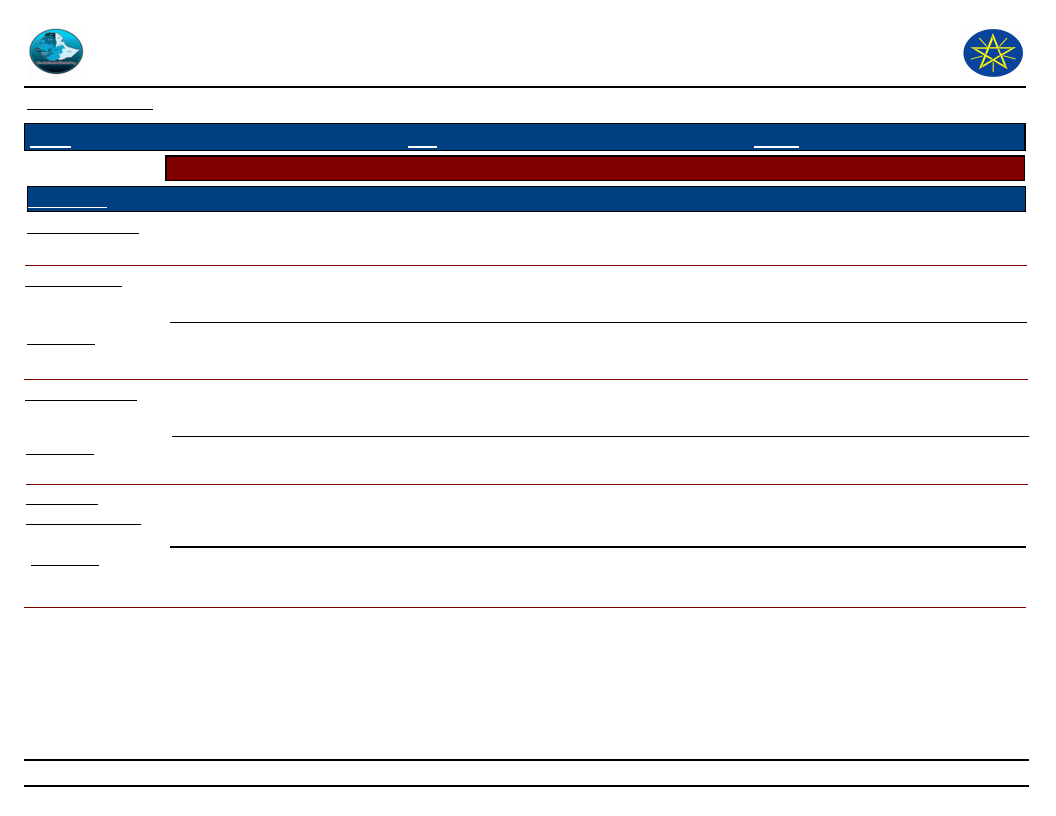
Wereda Disaster
Risk Profile
Data_Collected_Date
Region S.N.N.P
Selected Indicator
Kebele Name
Type of Disaster(s)
Zone
HADIYA
Hazard: Coping and recovering during last Disaster
WADA 01
Drought
Coping_Strategy
Asset selling
Description
Low
Recovery_Strategy
By aid, cultivating short term crops, trading and lending grains
Description
Low
Community
Participation_Ways
Description
Lending grain, borrowing money and borrowing ploughing ox
Better
Disaster Risk Management and Food
Security Sector (DRMFSS)
Thursday, September 4, 2014
Wereda MIRAB BADAWOCHO
195
Page 18 of 22
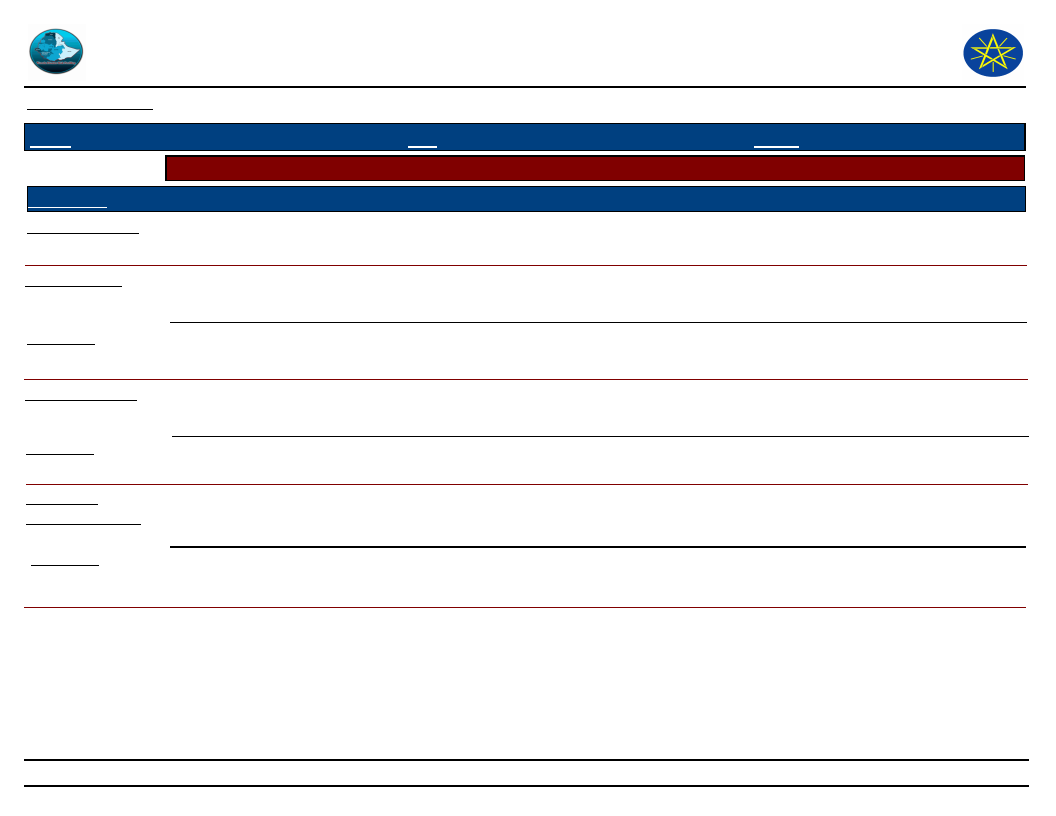
Wereda Disaster
Risk Profile
Data_Collected_Date
Region S.N.N.P
Selected Indicator
Kebele Name
Type of Disaster(s)
Zone
HADIYA
Hazard: Coping and recovering during last Disaster
FIRST KASHERA
Drought
Coping_Strategy
Asset selling
Description
Low
Recovery_Strategy
Bu aid, cultivating short term crop, trading and lending grain
Description
Low
Community
Participation_Ways
Description
Lending grain, borrowing money and borrowing ploughing ox
Better
Disaster Risk Management and Food
Security Sector (DRMFSS)
Thursday, September 4, 2014
Wereda MIRAB BADAWOCHO
196
Page 19 of 22
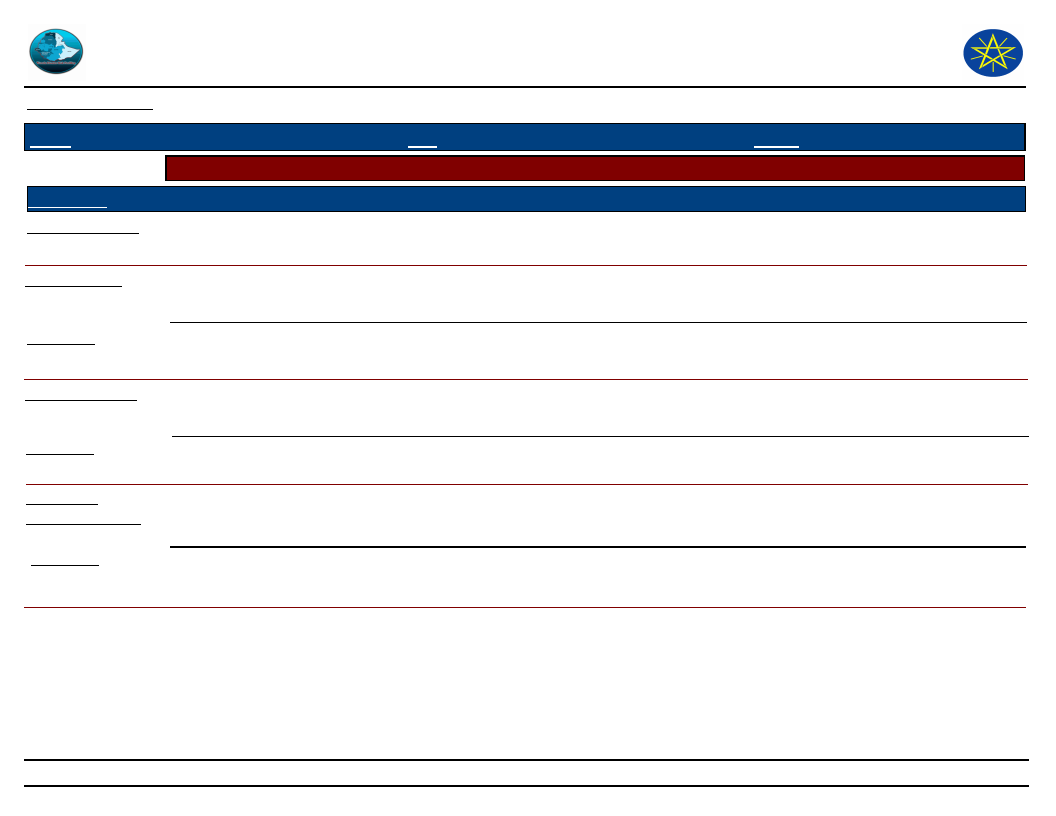
Wereda Disaster
Risk Profile
Data_Collected_Date
Region S.N.N.P
Selected Indicator
Kebele Name
Type of Disaster(s)
Zone
HADIYA
Hazard: Coping and recovering during last Disaster
JARSO MAJORIYA
Drought
Coping_Strategy
Aid and asset selling
Description
Low
Recovery_Strategy
Cultivating short term crops and drought resistance
Description
Low
Community
Participation_Ways
Description
Borrowing grain and ploughing oxen
Low
Disaster Risk Management and Food
Security Sector (DRMFSS)
Thursday, September 4, 2014
Wereda MIRAB BADAWOCHO
197
Page 20 of 22
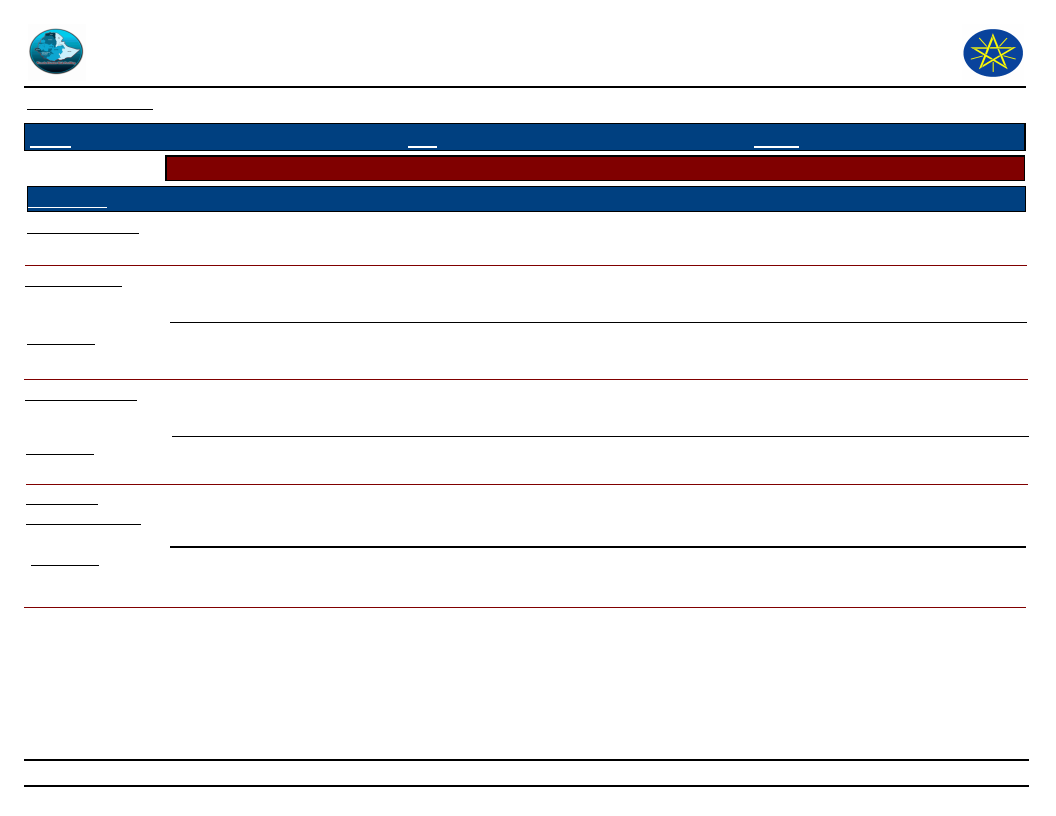
Wereda Disaster
Risk Profile
Data_Collected_Date
Region S.N.N.P
Selected Indicator
Kebele Name
Type of Disaster(s)
Zone
HADIYA
Hazard: Coping and recovering during last Disaster
OFFDAA
Drought
Coping_Strategy
Asset selling
Description
Low
Recovery_Strategy
Asset selling
Description
Low
Community
Participation_Ways
Description
Borrowing grain and ploughing oxen
Low
Disaster Risk Management and Food
Security Sector (DRMFSS)
Thursday, September 4, 2014
Wereda MIRAB BADAWOCHO
198
Page 21 of 22
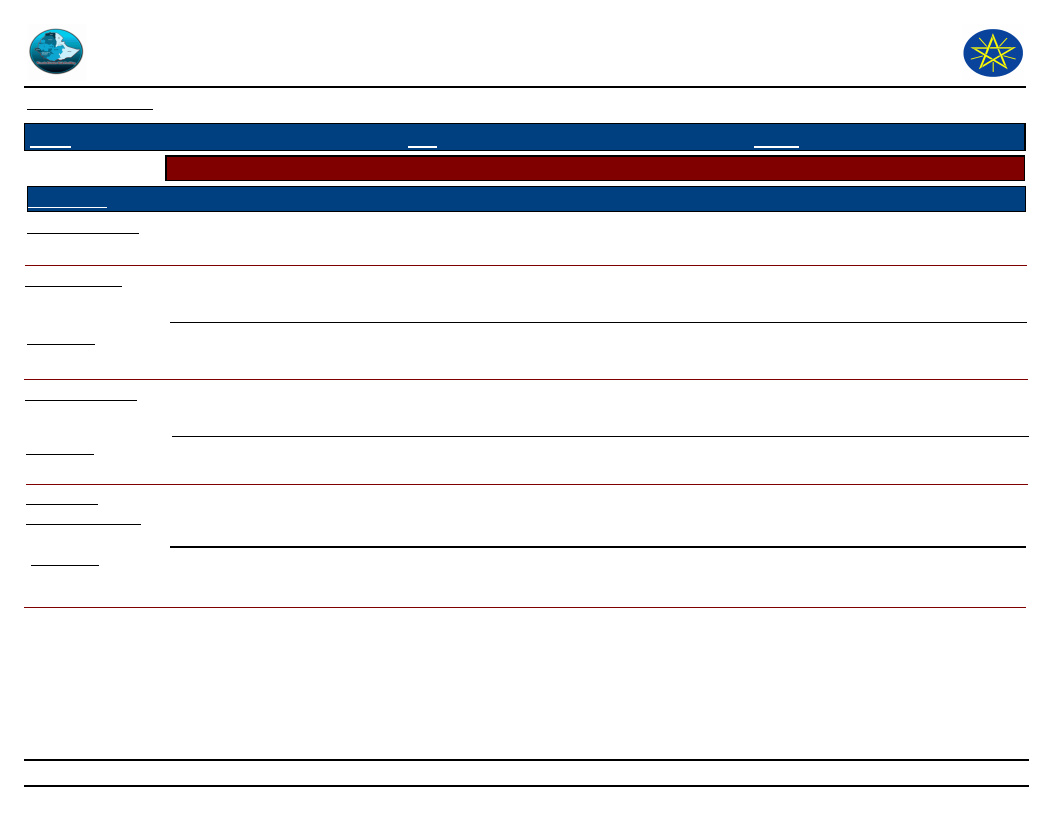
Wereda Disaster
Risk Profile
Data_Collected_Date
Region S.N.N.P
Selected Indicator
Kebele Name
Type of Disaster(s)
Zone
HADIYA
Hazard: Coping and recovering during last Disaster
MIRAB AJEBA
Drought
Coping_Strategy
By aiding and asset selling
Description
Low
Recovery_Strategy
Asset selling
Description
Low
Community
Participation_Ways
Description
Borrowing grain and ploughing oxen
Low
Disaster Risk Management and Food
Security Sector (DRMFSS)
Thursday, September 4, 2014
Wereda MIRAB BADAWOCHO
199
Page 22 of 22
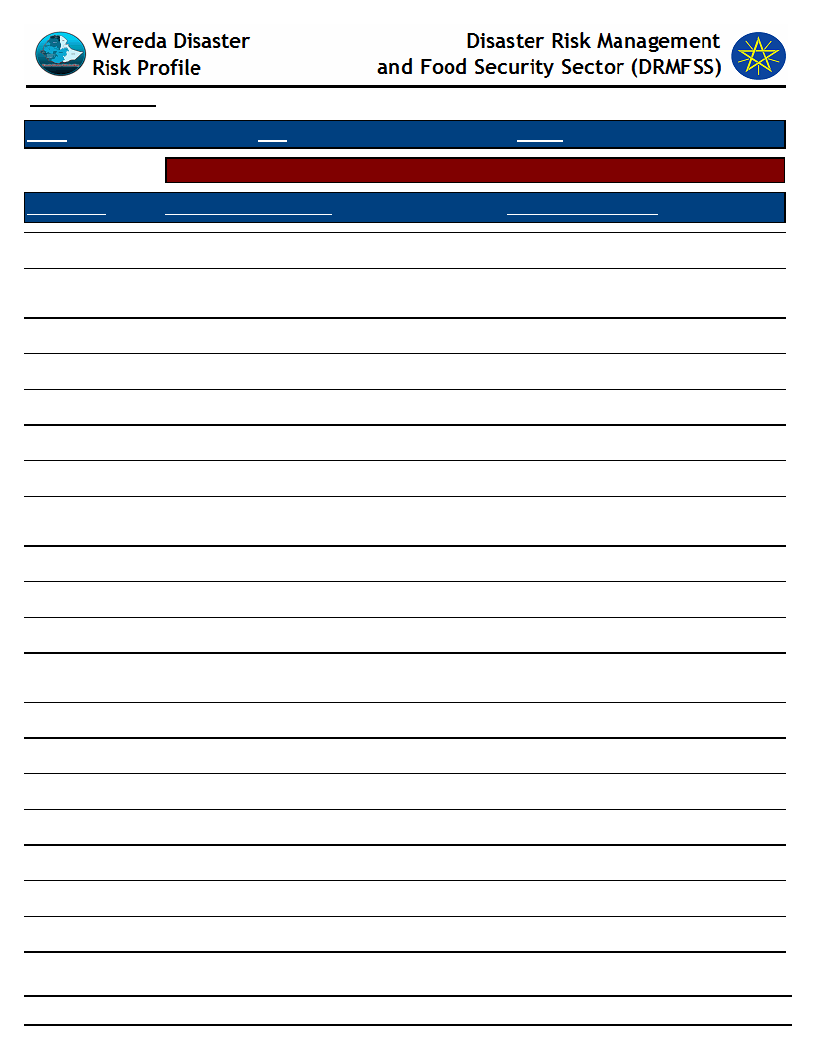
Data_Collected_Date
Region S.N.N.P
Zone HADIYA
Selected Indicator
Capacity: Type Community Participation
Kebele Name
Levels_Comm_Participation
DEDO
WEBARANA
OFODA
JARISO ONIJOJO
SIBEYA
GERIBO
WEREBOYA
2GNA KOTO
HAWORA
Good
Good
Good
Good
Good
Better
Better
Good
ELIFETA
YA BUKUNA
WADA
SEPERA
Better
Better
Better
Better
KACHA BIRA
1GNA KOTO
DANAMA
DANAMA 01
2nd KESHORA
WADA 01
FIRST KASHERA
JARSO MAJORIYA
Better
Better
Good
Good
Very good
Better
Better
Better
200
Thursday, September 4, 2014
Wereda MIRAB BADAWOCHO
Changes_In_Last_Decade
It has big difference
It has big change
It has big change
It has big change
It has big change
It has big change
It has big change
For the cooperation is increasing from
time to time
Increasing the cooperation
Increasing the cooperation
Big change
The cooperation increasing from time
to time
Great change
Increasing the cooperation
It has big change
It is big change
It has big change
Increasing the cooperation
Increasing the cooperation
Increasing the cooperation
Page 1 of 2
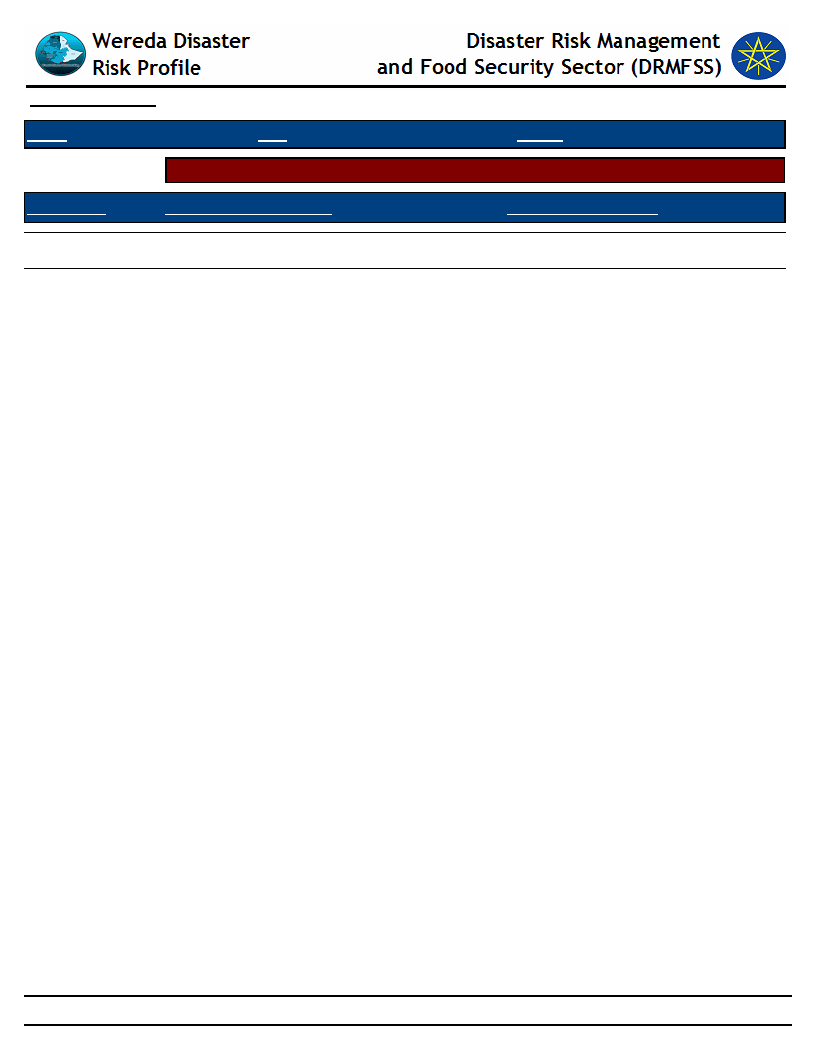
Data_Collected_Date
Region S.N.N.P
Zone HADIYA
Selected Indicator
Capacity: Type Community Participation
Kebele Name
Levels_Comm_Participation
OFFDAA
MIRAB AJEBA
Better
Better
Thursday, September 4, 2014
Wereda MIRAB BADAWOCHO
Changes_In_Last_Decade
Increased
Increased
201
Page 2 of 2
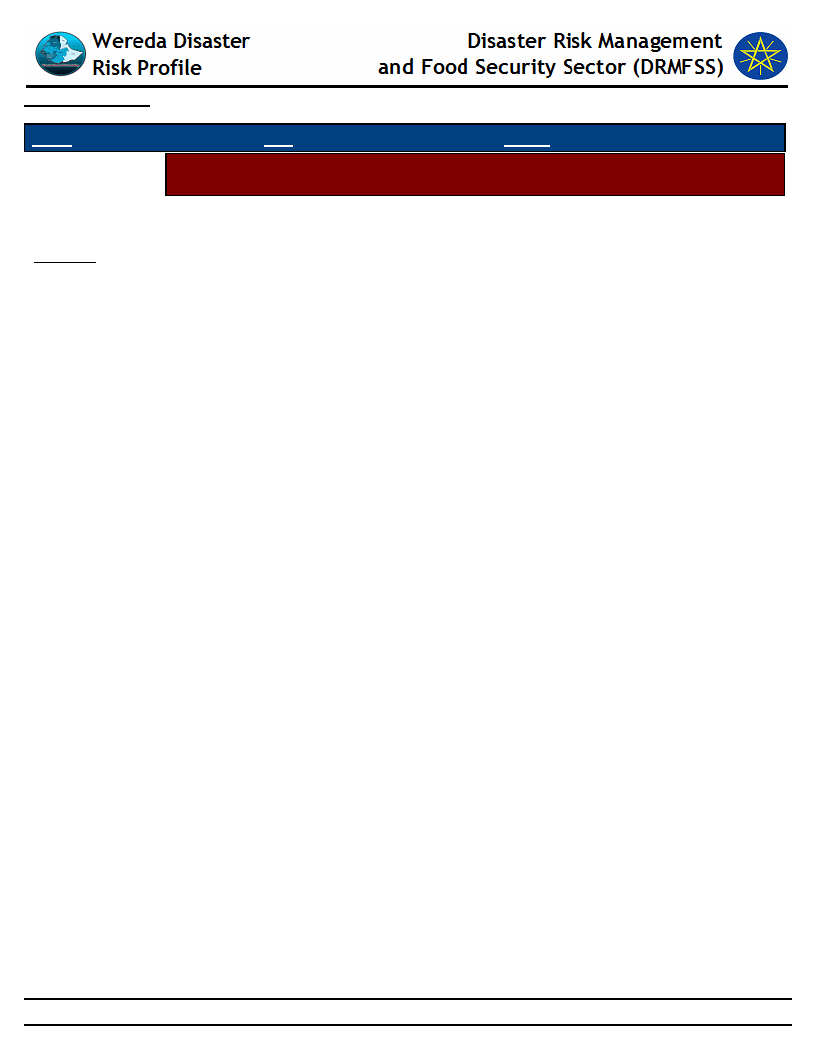
Data_Collected_Date
Thursday, September 4, 2014
Region S.N.N.P
Selected Indicator
Zone
HADIYA
Wereda MIRAB BADAWOCHO
Capacity: Recovery from Losses from Disasters - Percentage of Households who
have managed to recover from losses of disasters
Percentage of households who have managed to recover from losses of disasters
Comments
47.70 %
202
Page 1 of 1
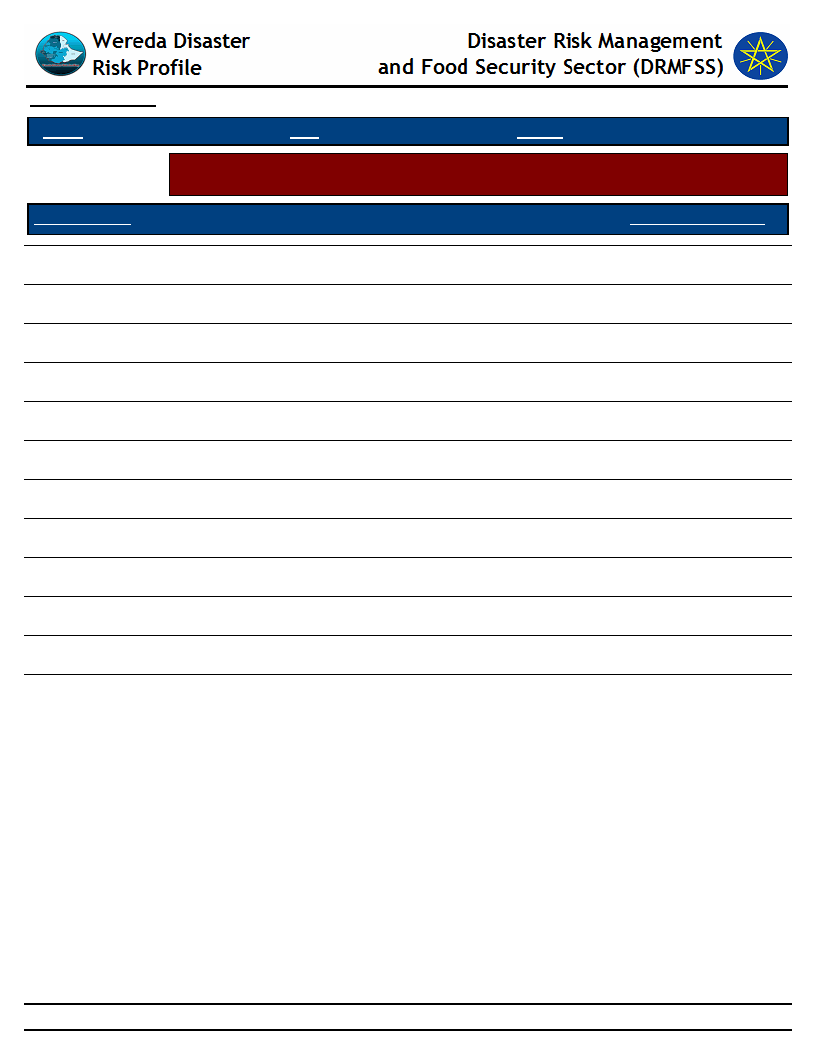
Data_Collected_Date
Region S.N.N.P
Zone HADIYA
Thursday, September 4, 2014
Wereda MIRAB BADAWOCHO
Selected Indicator
Type of Disaster
Capacity: Recovery from Losses from Disasters - Percentage of households
recovered from past disasters by type of Disasters
Recovered Percentage
Droughts
Floods
Landslides
Crop diseases
Livestock diseases
Human diseases
Storms / Cyclone/hail storm
Heavy Rain
Frost / Cold waves
Heat waves/ High temp
Conflicts
Economic / Price shock
42.60
0.40
0.70
14.30
4.70
8.70
14.30
3.80
0.70
1.30
0.70
7.80
203
Page 1 of 1
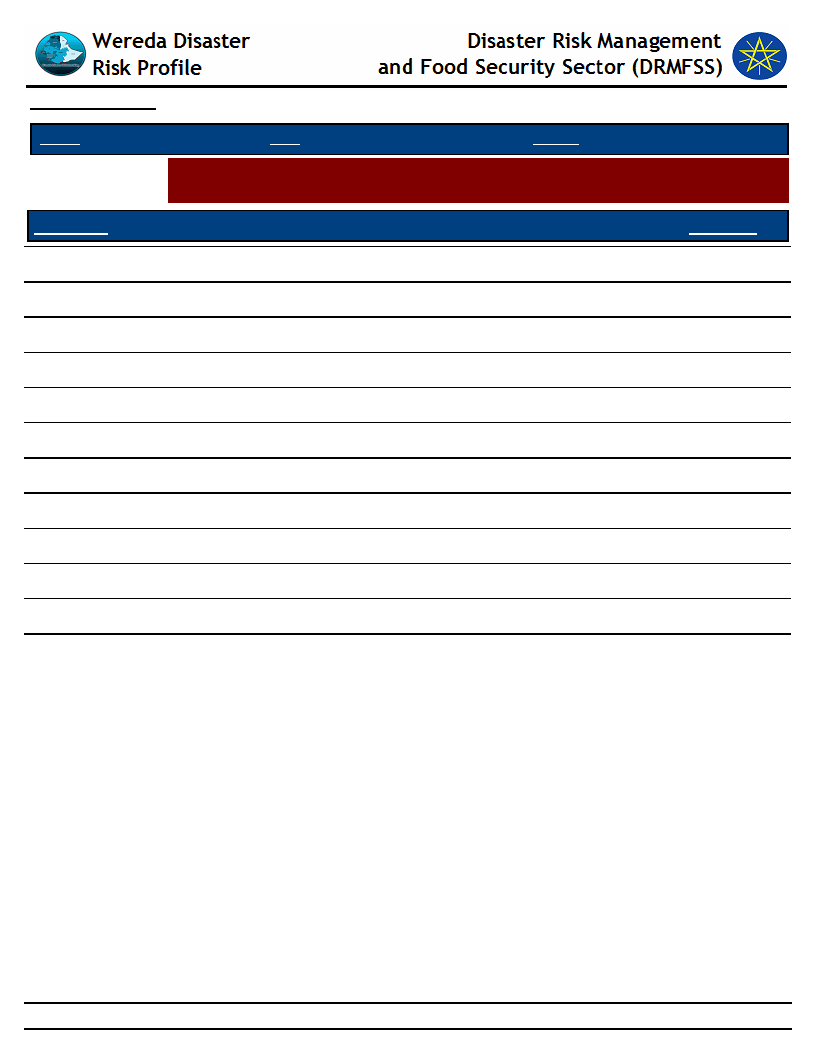
Data_Collected_Date
Thursday, September 4, 2014
Region S.N.N.P
Zone HADIYA
Wereda MIRAB BADAWOCHO
Selected Indictor:
Capacity: Recovery from Losses from Disasters - Proportion of households
recovered by type of Losses
Type of Loss
Physical damages on houses and property
Percentage
23.10
Crop damage
24.40
Livestock damage
8.90
Death of household members
0.70
Illness/health problems
13.60
Loss of access to social services, including school
2.90
Loss of income
14.90
Loss of savings
5.30
Lost access to grazing land
0.70
Lost access to water source
4.70
Had to flee/change residence area
0.20
DK
0.20
204
Page 1 of 1
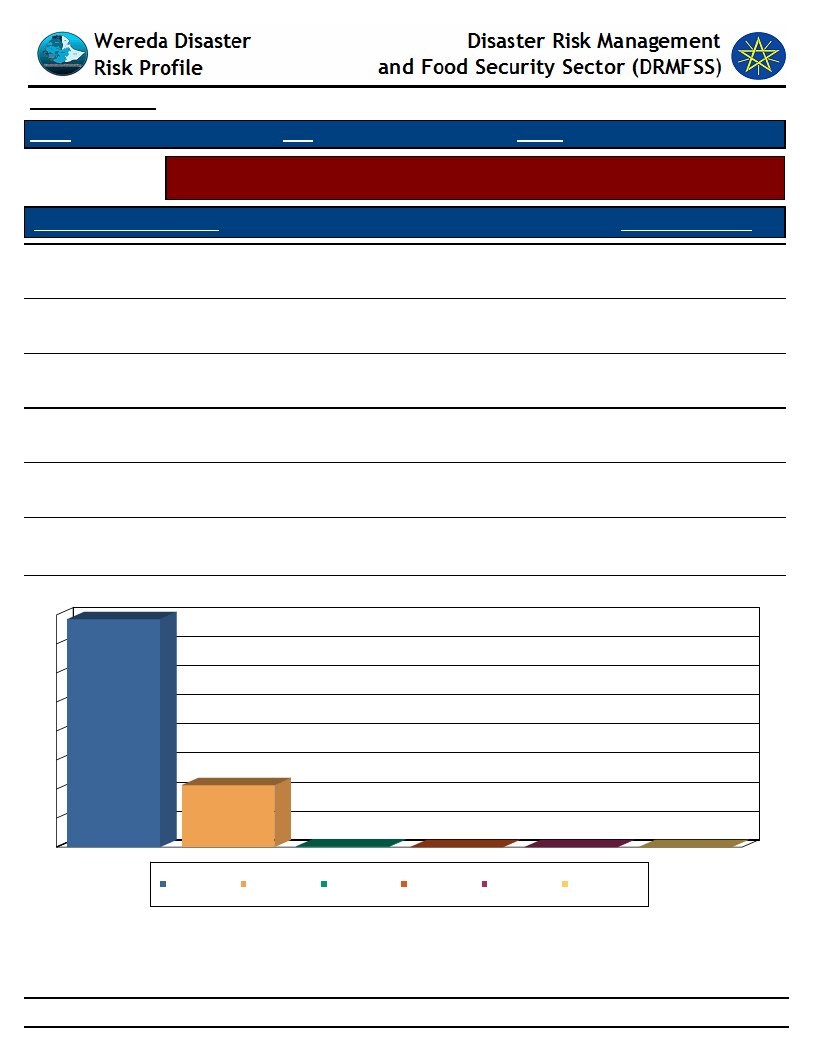
Data_Collected_Date
Region S.N.N.P
Zone HADIYA
Thursday, September 4, 2014
Wereda MIRAB BADAWOCHO
Selected Indicator
Capacity: Coping Options if More Resources Available - What coping strategy
could be adopted if more resource were available?
Coping Strategy To Be Adopted
Percentage_Response
Adaptation of economic activities to hazards season (e.g. cropping cycle,
short term crops)
21.30
Storage of food and other necessities
78.50
80
79
Top 10 Copng Strategies to be adopted if more resources were available
70
60
50
40
30
21
20
10
0
Storage of food and other necessities
Adaptation of economic activities to hazards season (e.g. cropping cycle, short term crops)
0
Physical protection of buildings and property
Storage of food and
other necessities
Adaptation of economic
activities to hazards
season (e.g. cropping
cycle, short term crops)
Physical protection of
buildings and property
0
Migration
Migration
None
0
None
Others (specify)
0
Others (specify)
205
Page 1 of 1
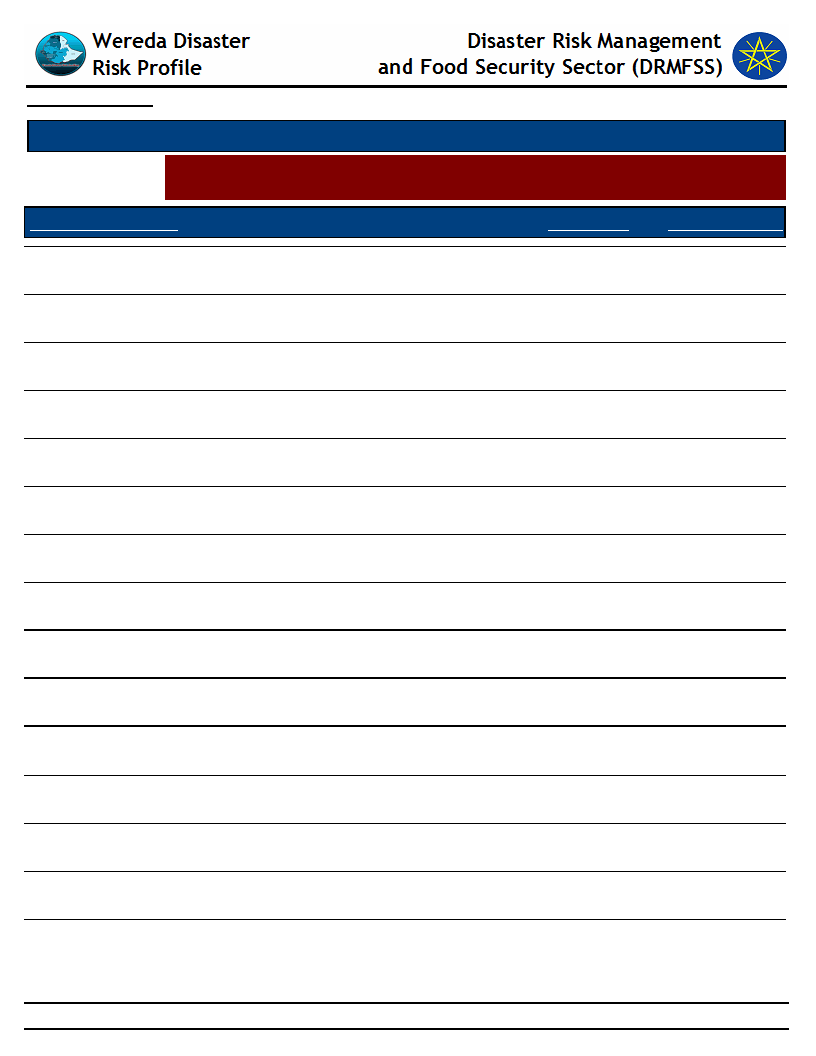
Data_Collected_Date
Thursday, September 4, 2014
Region S.N.N.P
Zone HADIYA
Wereda MIRAB BADAWOCHO
Selected Indictor:
Capacity: Coping Strategies Adopted by Households - Percentage of households by
major type of coping strategies adopted (at least once)
Coping Strategy Adopted
Main Strategy
Secondary Strategy
Skip entire day without eating
0.00
3.30
DK
1.20
0.80
Sell more livestock than usual
30.20
8.10
Rely on less preferred and less expensive food
7.10
14.70
Seek alternative or additional jobs
2.90
1.80
Limit portion size at meals
4.90
9.60
Consumption rather than sale of crop surplus
17.80
8.10
Short-term / seasonal labor migration
1.20
2.30
Reduce number of meals eaten in a day
2.90
15.00
Borrowing of food or cash (including purchasing food on credit)
15.60
11.70
Reduced expenditure on non-essential items (beer, cigarettes,
etc)
Increased working hours
5.80
2.50
1.20
4.80
Sending children of household for work
0.70
1.80
Reduced expenditure on health and education
0.50
1.00
Reduced expenditure on productive inputs (fertilizer, seeds, etc)
2.40
2.80
206
Page 1 of 2
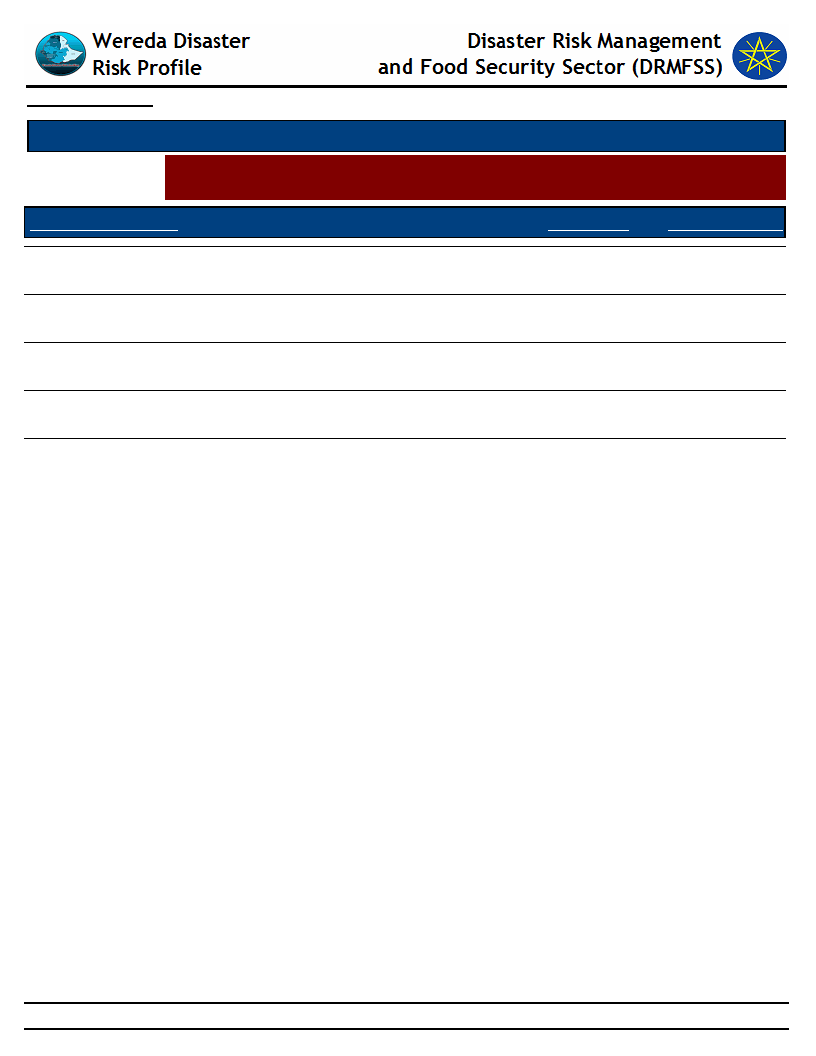
Data_Collected_Date
Thursday, September 4, 2014
Region S.N.N.P
Zone HADIYA
Wereda MIRAB BADAWOCHO
Selected Indictor:
Capacity: Coping Strategies Adopted by Households - Percentage of households by
major type of coping strategies adopted (at least once)
Coping Strategy Adopted
Main Strategy
Secondary Strategy
Long-term / permanent migration (including distress migration)
0.00
0.30
Restrict consumption by adults in order for small children
0.20
0.30
Begging for money or for food
1.20
4.80
Sale of non-productive assets (jewellery, clothing, etc.)
0.70
6.10
Sale of productive assets (land, farm implements, vehicle, etc)
3.40
0.30
207
Page 2 of 2
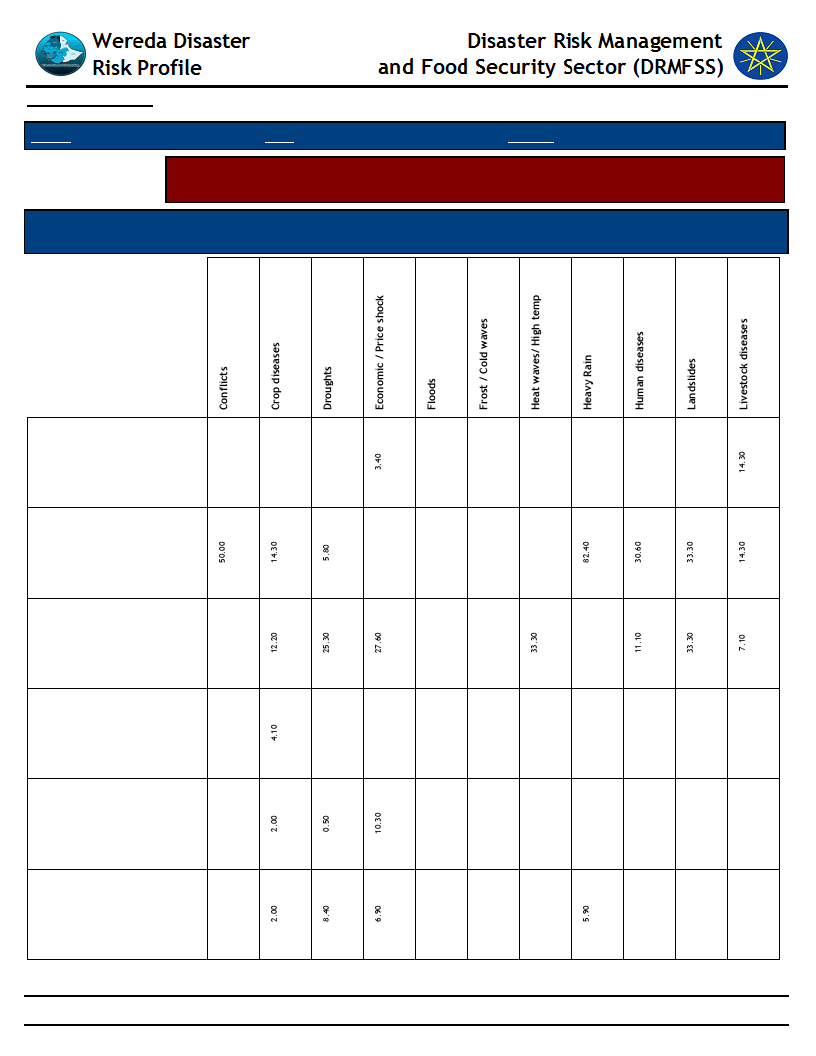
Data_Collected_Date
Thursday, September 4, 2014
Region S.N.N.P
Zone HADIYA
Wereda MIRAB BADAWOCHO
Selected Indicator
Capacity: Coping Strategies Adopted by Households - Main coping strategies
adopted by households for respective disasters
Coping Strtegies Adopted
Types of disaters for which HHs in the community adopt the listed
Coping Strtegies
Begging for money or for
food
Borrowing of food or cash
(including purchasing food
on credit)
Consumption rather than
sale of crop surplus
DK
Increased working hours
Limit portion size at meals
208
Page 1 of 3
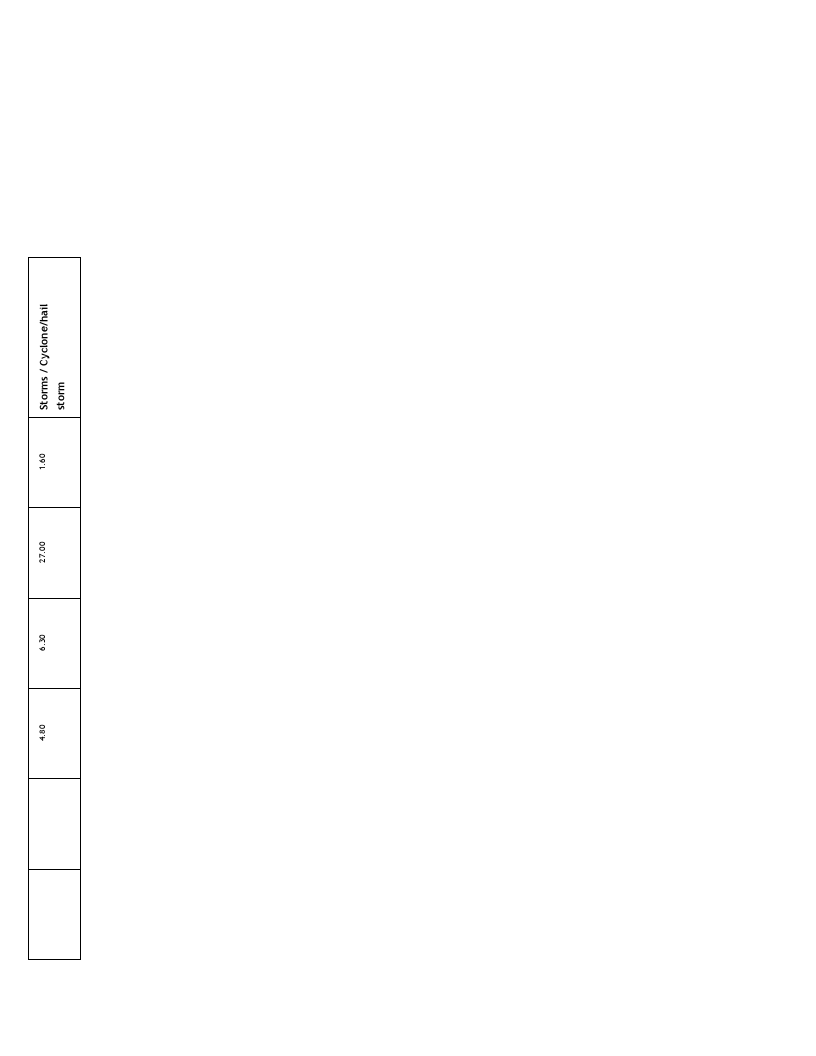
209
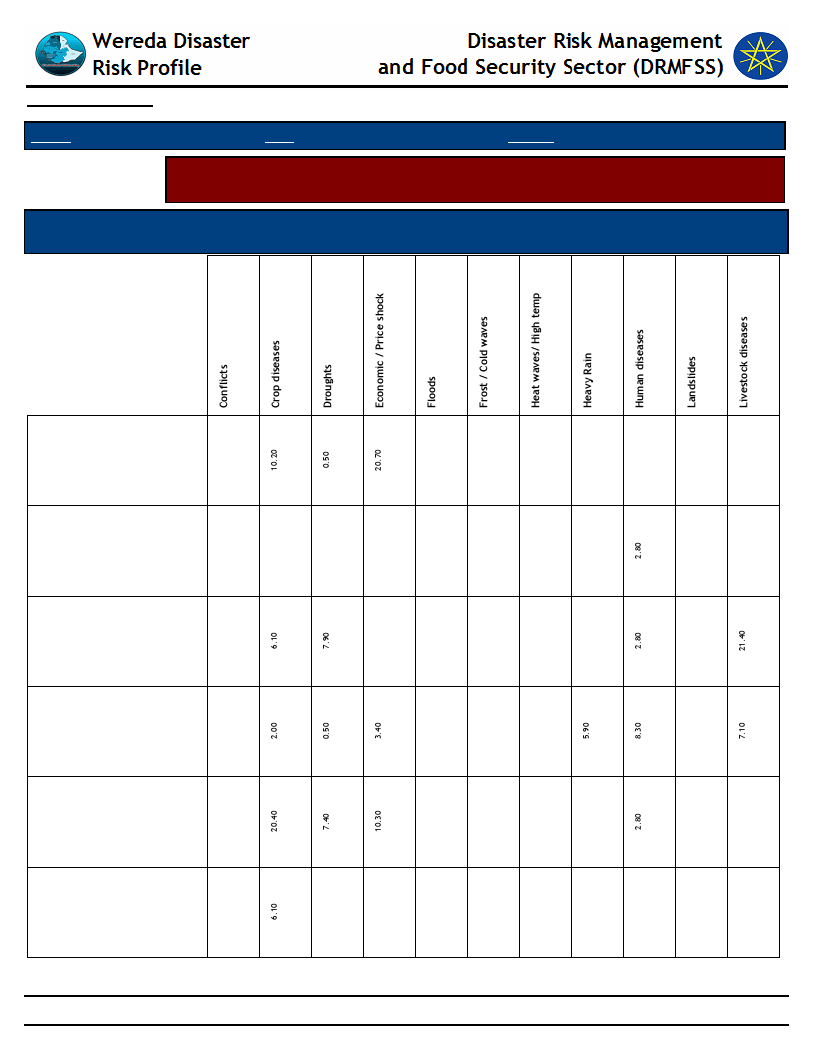
Data_Collected_Date
Thursday, September 4, 2014
Region S.N.N.P
Zone HADIYA
Wereda MIRAB BADAWOCHO
Selected Indicator
Capacity: Coping Strategies Adopted by Households - Main coping strategies
adopted by households for respective disasters
Coping Strtegies Adopted
Types of disaters for which HHs in the community adopt the listed
Coping Strtegies
Reduce number of meals
eaten in a day
Reduced expenditure on
health and education
Reduced expenditure on
non-essential items (beer,
cigarettes, etc)
Reduced expenditure on
productive inputs
(fertilizer, seeds, etc)
Rely on less preferred and
less expensive food
Sale of non-productive
assets (jewellery,
clothing, etc.)
210
Page 2 of 3

211
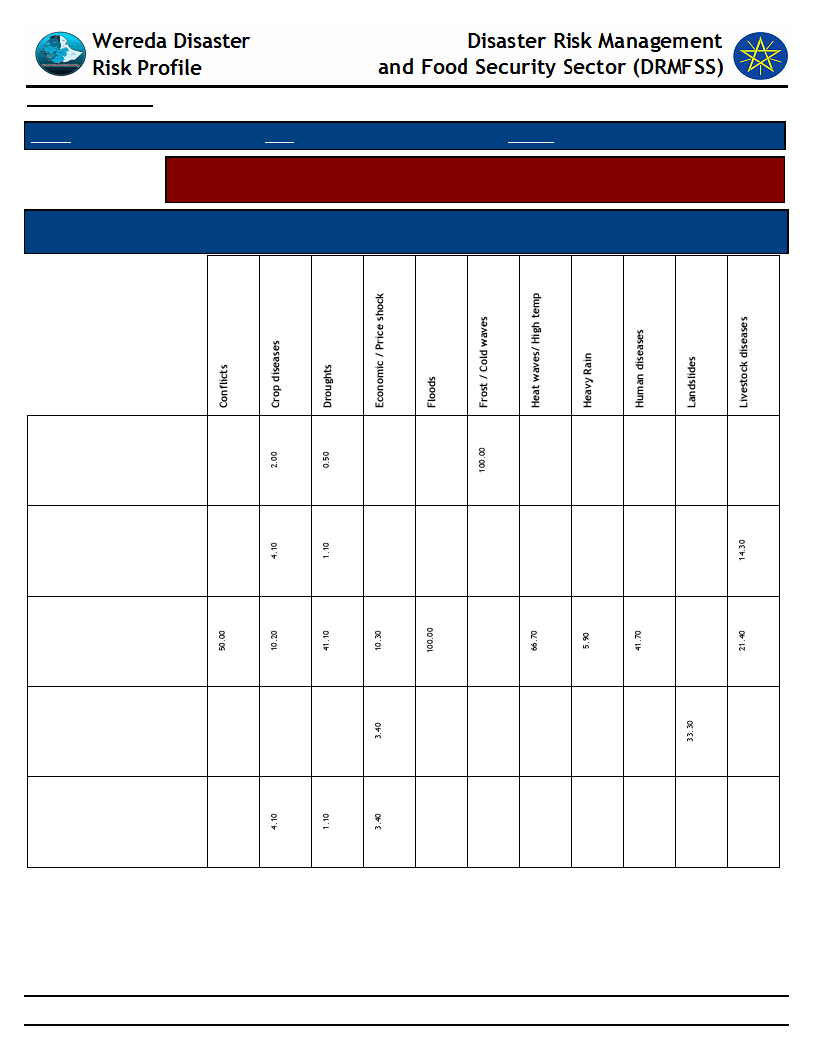
Data_Collected_Date
Thursday, September 4, 2014
Region S.N.N.P
Zone HADIYA
Wereda MIRAB BADAWOCHO
Selected Indicator
Capacity: Coping Strategies Adopted by Households - Main coping strategies
adopted by households for respective disasters
Coping Strtegies Adopted
Types of disaters for which HHs in the community adopt the listed
Coping Strtegies
Sale of productive assets
(land, farm implements,
vehicle, etc)
Seek alternative or
additional jobs
Sell more livestock than
usual
Sending children of
household for work
Short-term / seasonal
labor migration
212
Page 3 of 3
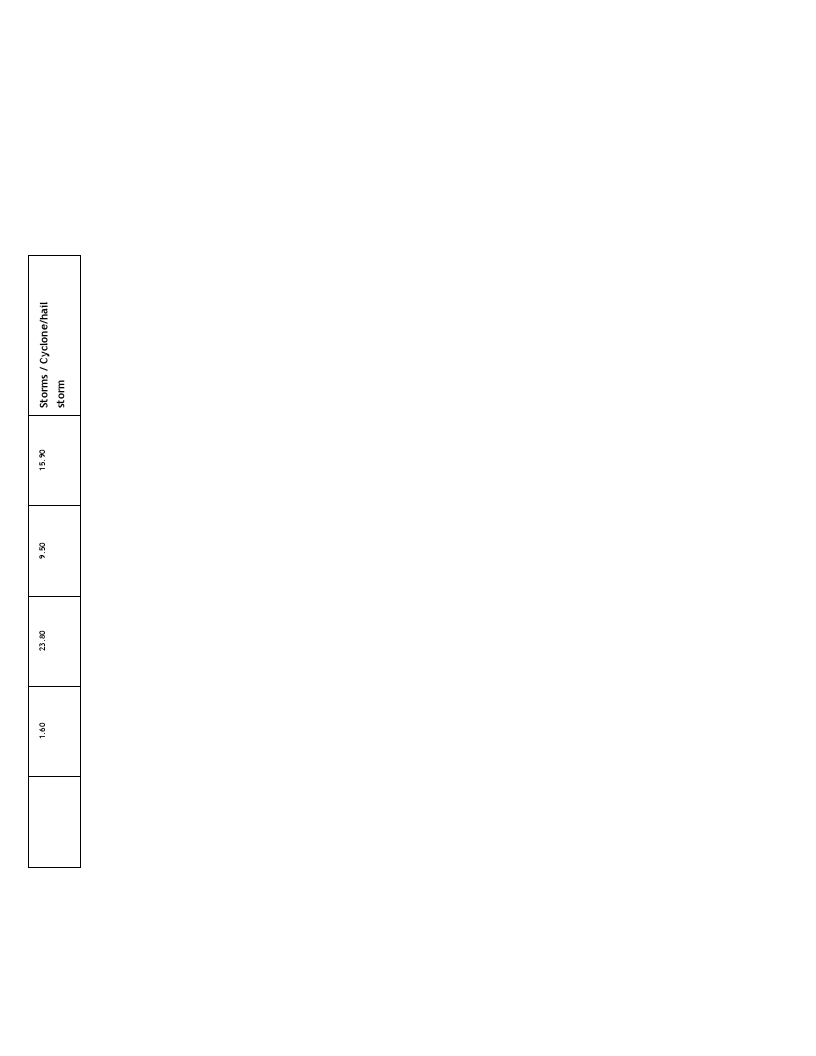
213
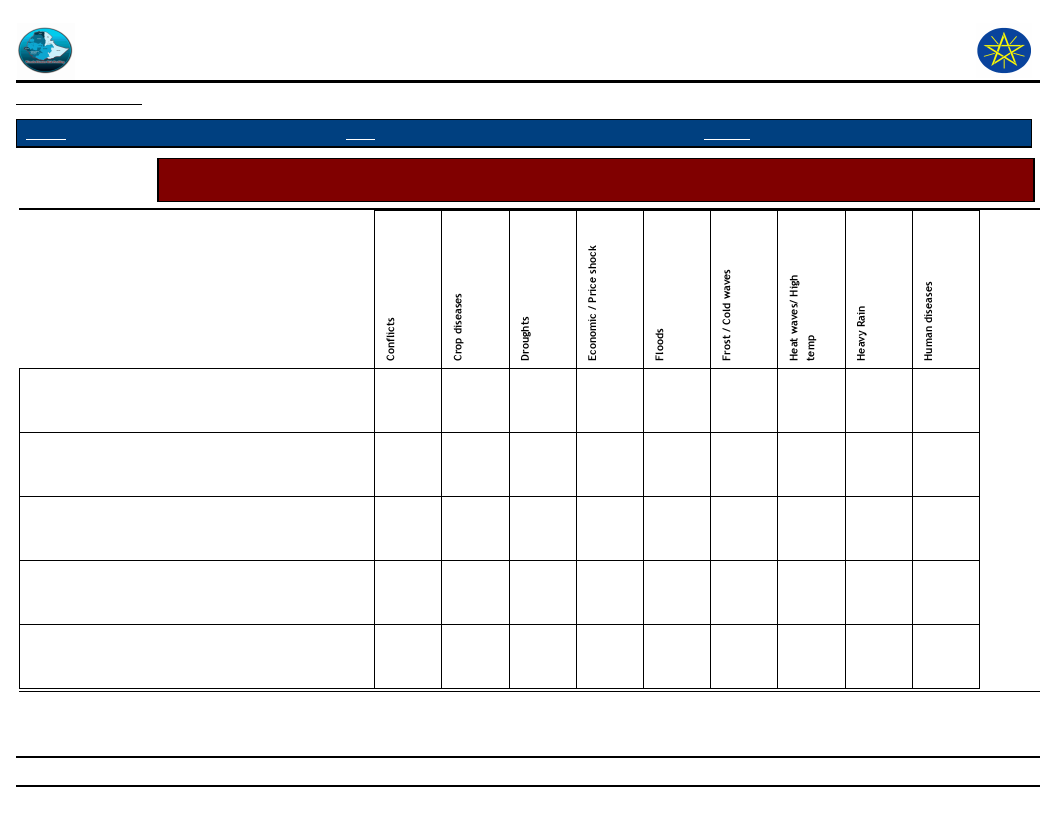
Wereda Disaster
Risk Profile
Data_Collected_Date
Disaster Risk Management and Food
Security Sector (DRMFSS)
Thursday, September 4, 2014
Region S.N.N.P
Zone
HADIYA
Wereda MIRAB BADAWOCHO
Selected Indicator
Capacity: Coping Strategies Adopted by Households - Secondary coping strategies adopted by households for
respective disasters
Begging for money or for food
Borrowing of food or cash (including purchasing
food on credit)
Collection of wild food
Consumption rather than sale of crop surplus
Increased working hours
6.10
1.10
50.00
16.30
9.20
9.70
2.00
0.50
6.10
8.70
6.50
6.10
6.50
6.50
214
25.00
9.10
27.30
3.00
3.00
Page 1 of 4
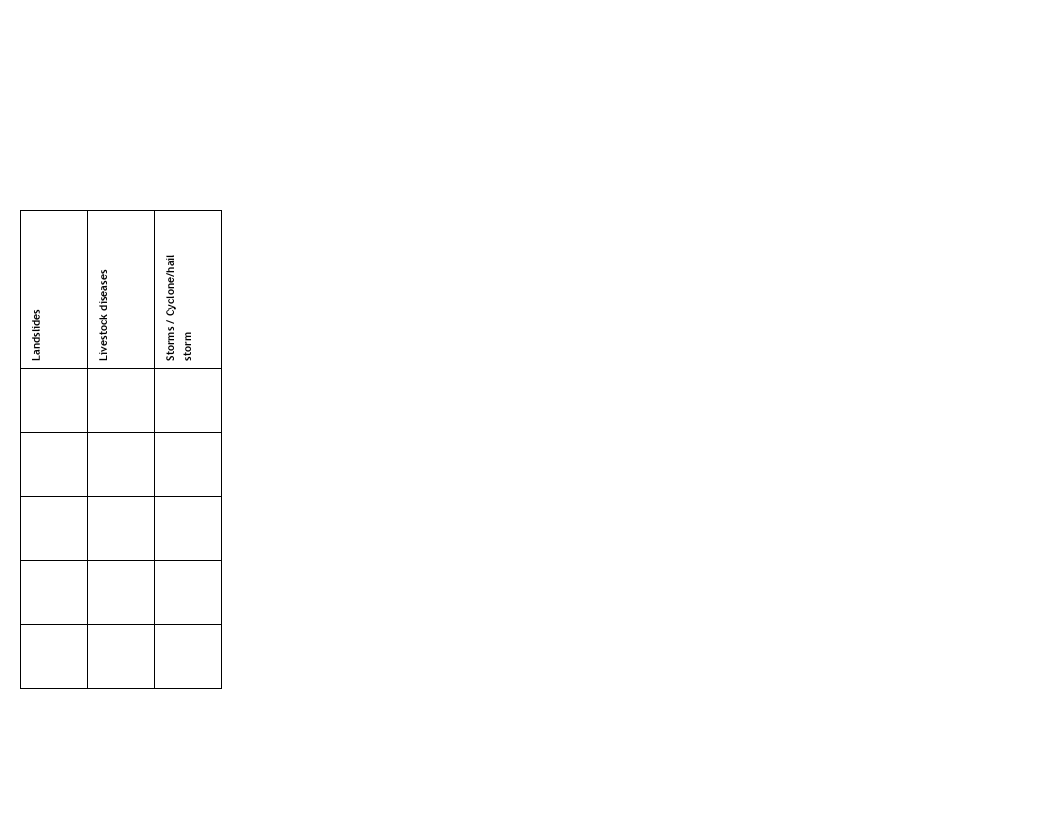
7.70
30.80
30.80
10.70
7.10
10.70
3.60
215
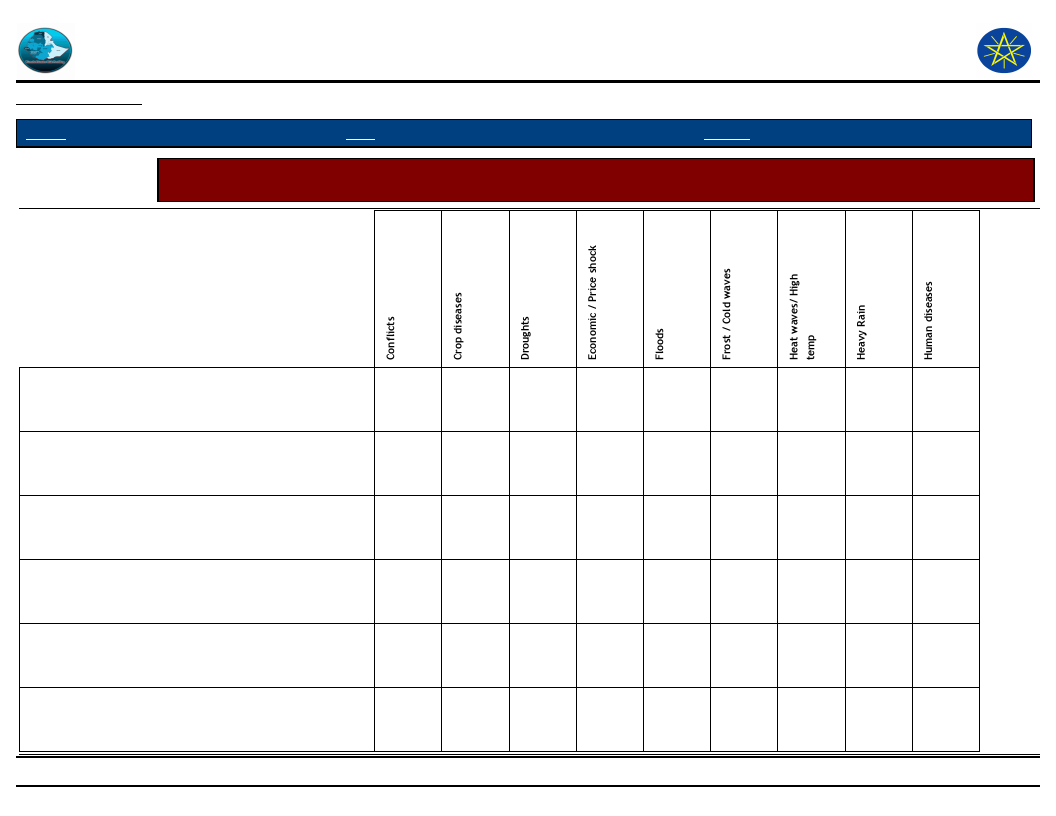
Wereda Disaster
Risk Profile
Data_Collected_Date
Disaster Risk Management and Food
Security Sector (DRMFSS)
Thursday, September 4, 2014
Region S.N.N.P
Zone
HADIYA
Wereda MIRAB BADAWOCHO
Selected Indicator
Capacity: Coping Strategies Adopted by Households - Secondary coping strategies adopted by households for
respective disasters
Limit portion size at meals
Long-term / permanent migration (including
distress migration)
Reduce number of meals eaten in a day
Reduced expenditure on health and education
Reduced expenditure on non-essential items
(beer, cigarettes, etc)
Reduced expenditure on productive inputs
(fertilizer, seeds, etc)
4.10
10.30
45.20
100.00
0.50
6.10
16.30
19.40
50.00
50.00
4.10
4.10
1.60
8.20
1.10
50.00
216
6.10
6.30
3.00
6.30
3.00
Page 2 of 4

33.30
7.70
26.80
7.10
3.60
217
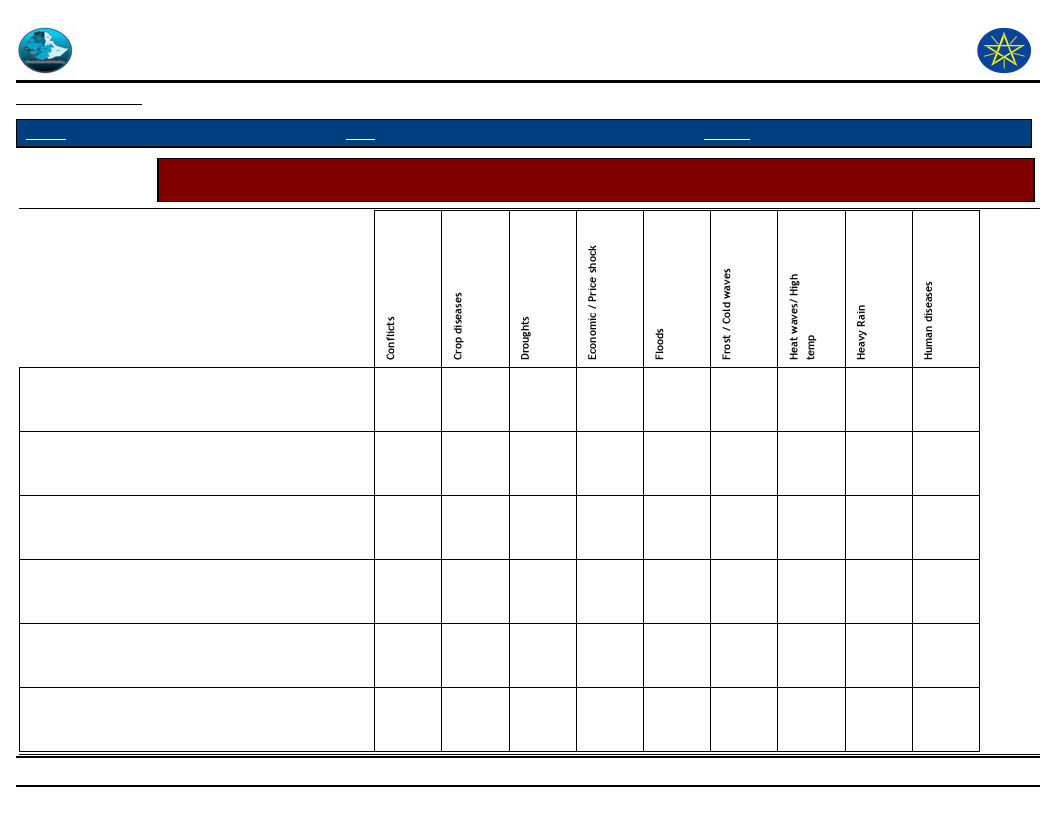
Wereda Disaster
Risk Profile
Data_Collected_Date
Disaster Risk Management and Food
Security Sector (DRMFSS)
Thursday, September 4, 2014
Region S.N.N.P
Zone
HADIYA
Wereda MIRAB BADAWOCHO
Selected Indicator
Capacity: Coping Strategies Adopted by Households - Secondary coping strategies adopted by households for
respective disasters
Rely on less preferred and less expensive food
Restrict consumption by adults in order for small
children
Sale of non-productive assets (jewellery,
clothing, etc.)
Sale of productive assets (land, farm
implements, vehicle, etc)
Seek alternative or additional jobs
Sell more livestock than usual
12.20
19.00
0.50
2.00
4.30
6.50
2.00
0.50
6.50
8.20
12.00
218
25.00
12.10
18.80
18.20
6.30
6.10
3.00
Page 3 of 4
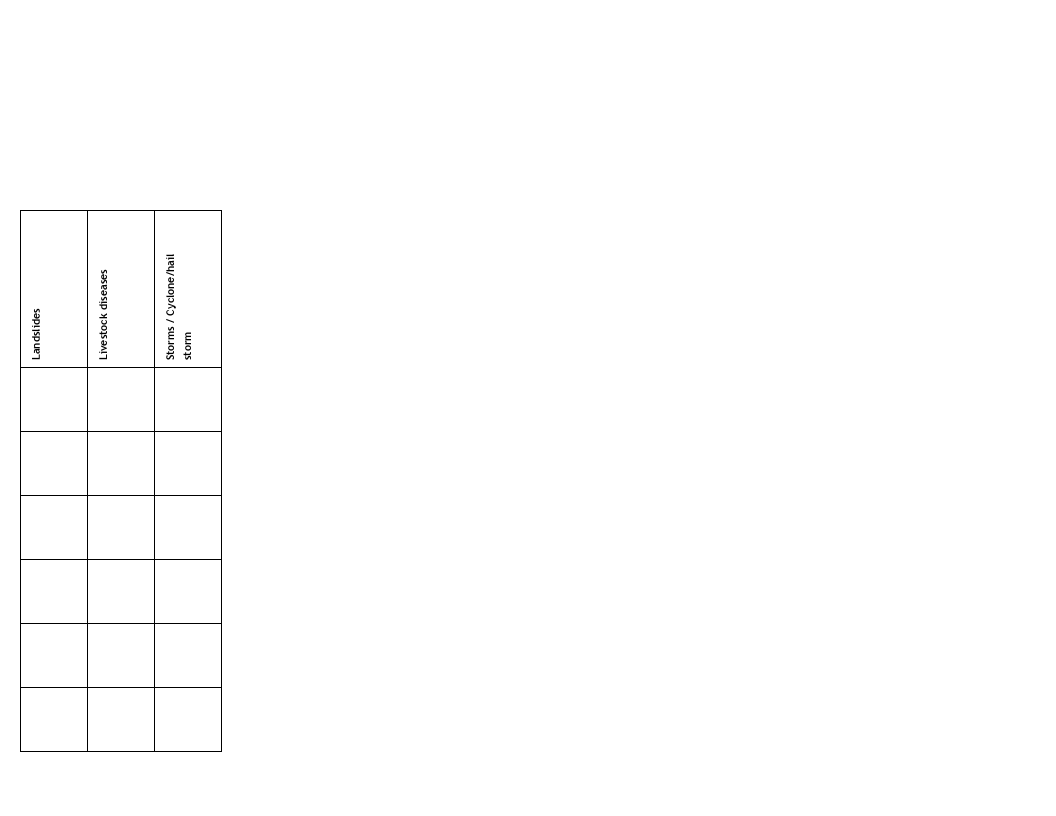
33.30
7.70
7.70
33.30
8.90
12.50
5.40
219
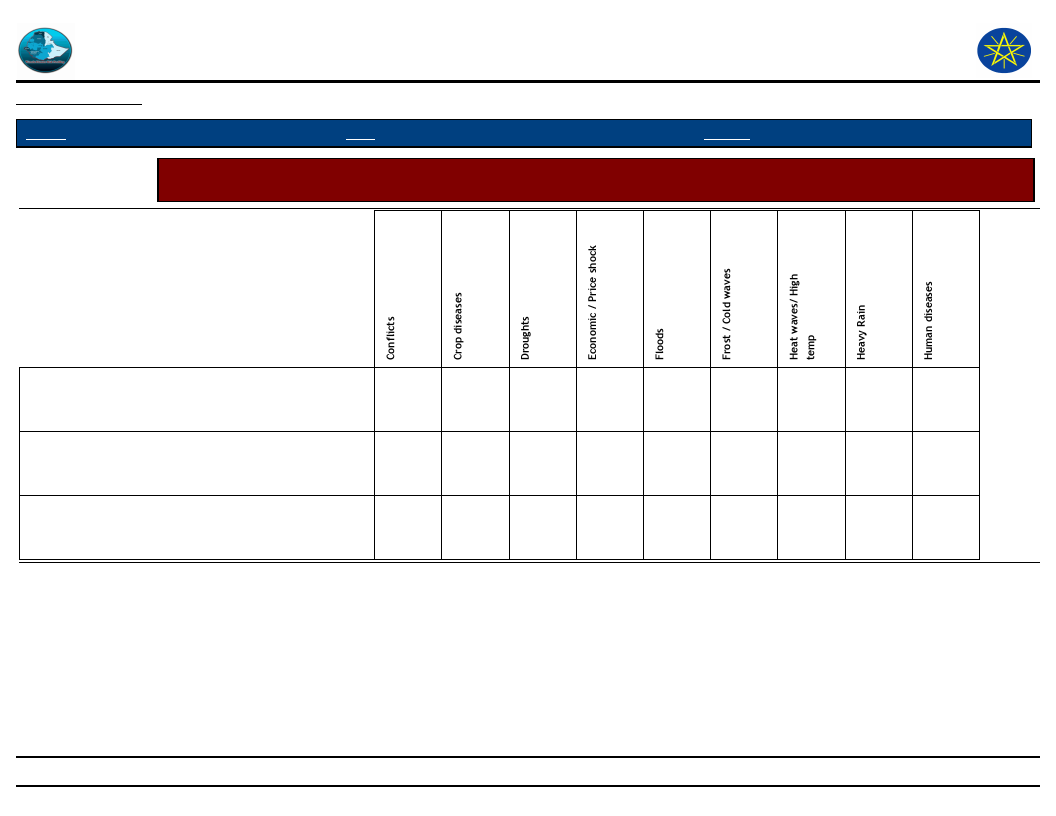
Wereda Disaster
Risk Profile
Data_Collected_Date
Disaster Risk Management and Food
Security Sector (DRMFSS)
Thursday, September 4, 2014
Region S.N.N.P
Zone
HADIYA
Wereda MIRAB BADAWOCHO
Selected Indicator
Capacity: Coping Strategies Adopted by Households - Secondary coping strategies adopted by households for
respective disasters
Sending children of household for work
Short-term / seasonal labor migration
Skip entire day without eating
1.60
4.10
2.70
8.20
3.30
6.30
6.10
100.00
6.30
220
Page 4 of 4

7.70
1.80
1.80
221
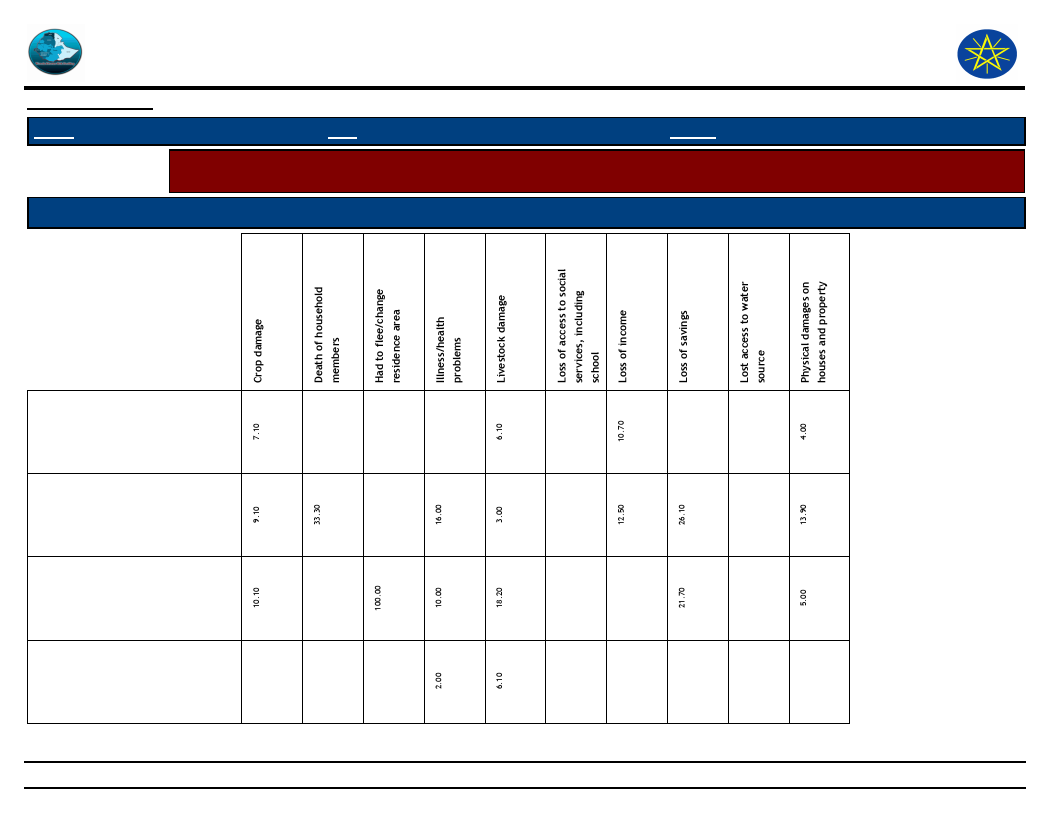
Wereda Disaster
Risk Profile
Disaster Risk Management and
Food Security Sector (DRMFSS)
Data_Collected_Date
Region S.N.N.P
Zone HADIYA
Wereda
Thursday, September 4, 2014
MIRAB BADAWOCHO
Selected Indicator
Capacity: Coping Strategies Adopted by Households - Main coping strategies adopted by households to recover
from respective losses
Type of Coping Strategy Adopted
Type of Loss
Begging for money or for food
Borrowing of food or cash
(including purchasing food on
credit)
Consumption rather than sale
of crop surplus
DK
222
Page 1 of 5
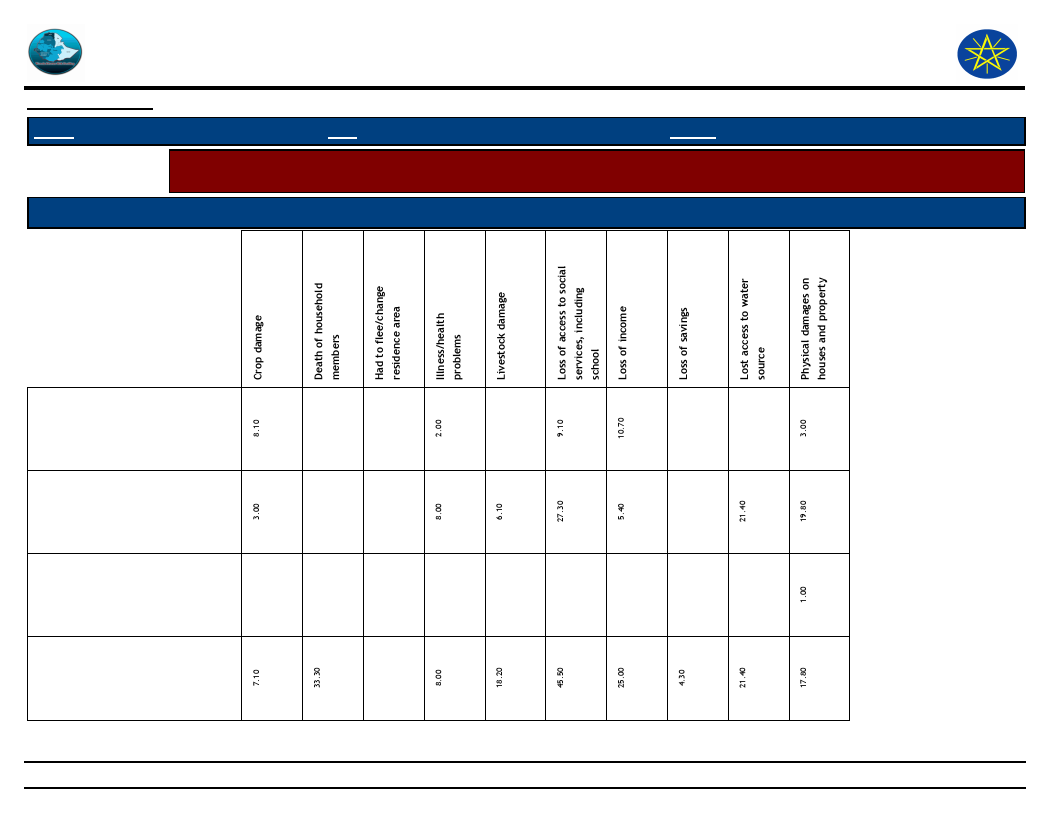
Wereda Disaster
Risk Profile
Disaster Risk Management and
Food Security Sector (DRMFSS)
Data_Collected_Date
Region S.N.N.P
Zone HADIYA
Wereda
Thursday, September 4, 2014
MIRAB BADAWOCHO
Selected Indicator
Capacity: Coping Strategies Adopted by Households - Main coping strategies adopted by households to recover
from respective losses
Type of Coping Strategy Adopted
Type of Loss
Increased working hours
Limit portion size at meals
Long-term / permanent
migration (including distress
migration)
Reduce number of meals eaten
in a day
223
Page 2 of 5
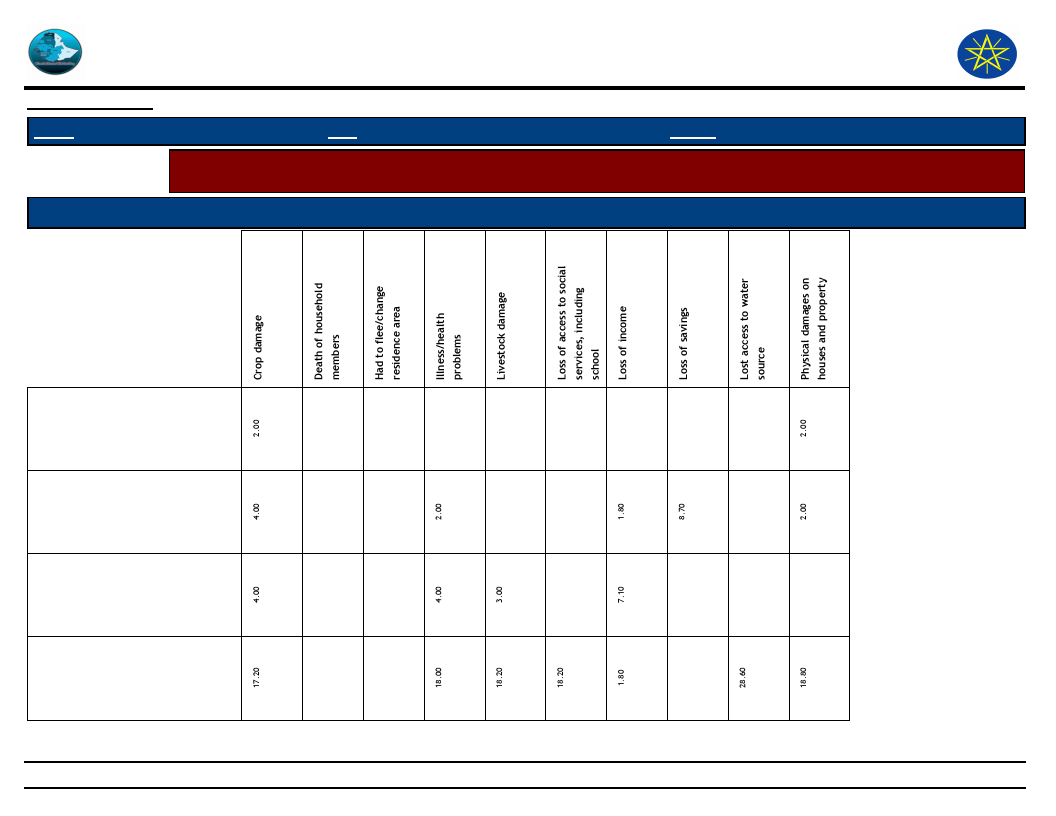
Wereda Disaster
Risk Profile
Disaster Risk Management and
Food Security Sector (DRMFSS)
Data_Collected_Date
Region S.N.N.P
Zone HADIYA
Wereda
Thursday, September 4, 2014
MIRAB BADAWOCHO
Selected Indicator
Capacity: Coping Strategies Adopted by Households - Main coping strategies adopted by households to recover
from respective losses
Type of Coping Strategy Adopted
Type of Loss
Reduced expenditure on health
and education
Reduced expenditure on
non-essential items (beer,
cigarettes, etc)
Reduced expenditure on
productive inputs (fertilizer,
seeds, etc)
Rely on less preferred and less
expensive food
224
Page 3 of 5
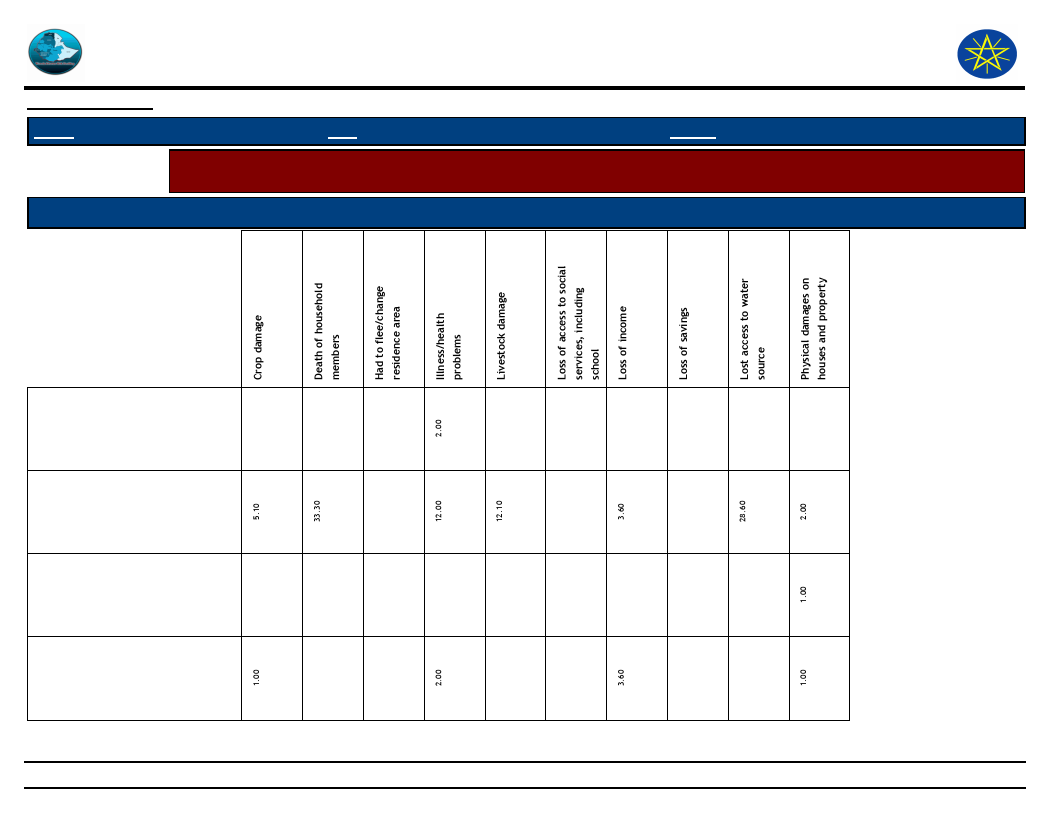
Wereda Disaster
Risk Profile
Disaster Risk Management and
Food Security Sector (DRMFSS)
Data_Collected_Date
Region S.N.N.P
Zone HADIYA
Wereda
Thursday, September 4, 2014
MIRAB BADAWOCHO
Selected Indicator
Capacity: Coping Strategies Adopted by Households - Main coping strategies adopted by households to recover
from respective losses
Type of Coping Strategy Adopted
Type of Loss
Restrict consumption by adults
in order for small children
Sale of non-productive assets
(jewellery, clothing, etc.)
Sale of productive assets (land,
farm implements, vehicle, etc)
Seek alternative or additional
jobs
225
Page 4 of 5
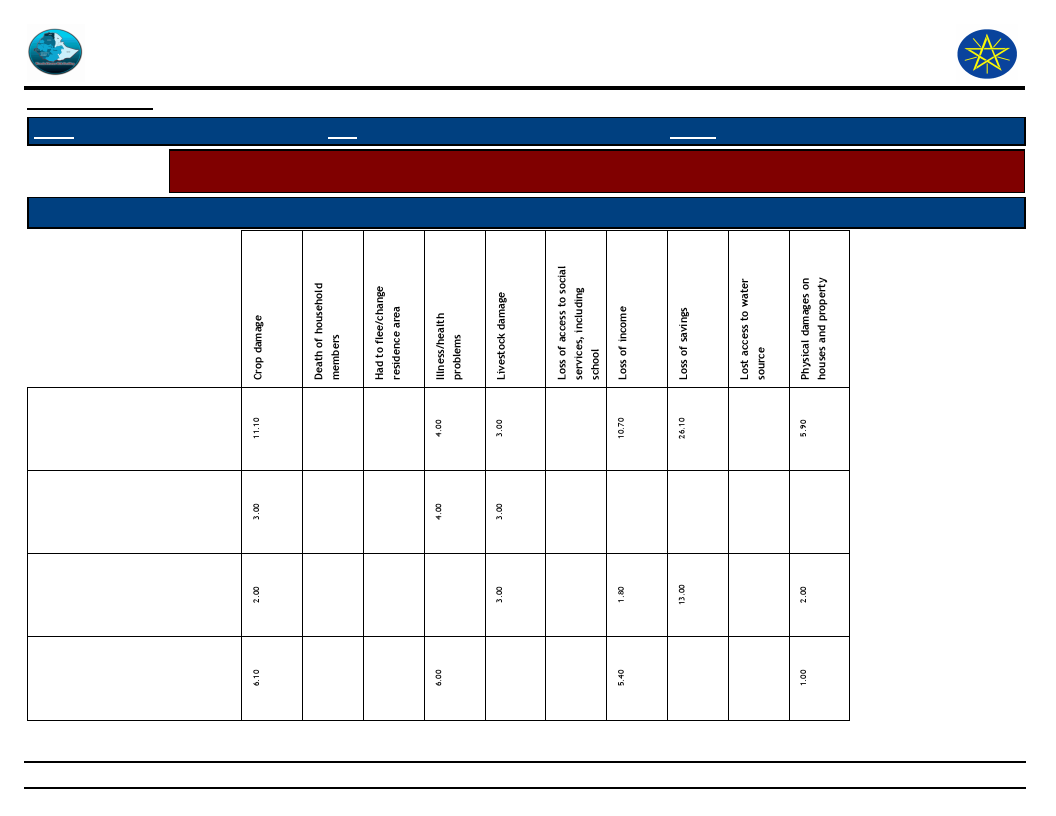
Wereda Disaster
Risk Profile
Disaster Risk Management and
Food Security Sector (DRMFSS)
Data_Collected_Date
Region S.N.N.P
Zone HADIYA
Wereda
Thursday, September 4, 2014
MIRAB BADAWOCHO
Selected Indicator
Capacity: Coping Strategies Adopted by Households - Main coping strategies adopted by households to recover
from respective losses
Type of Coping Strategy Adopted
Type of Loss
Sell more livestock than usual
Sending children of household
for work
Short-term / seasonal labor
migration
Skip entire day without eating
226
Page 5 of 5
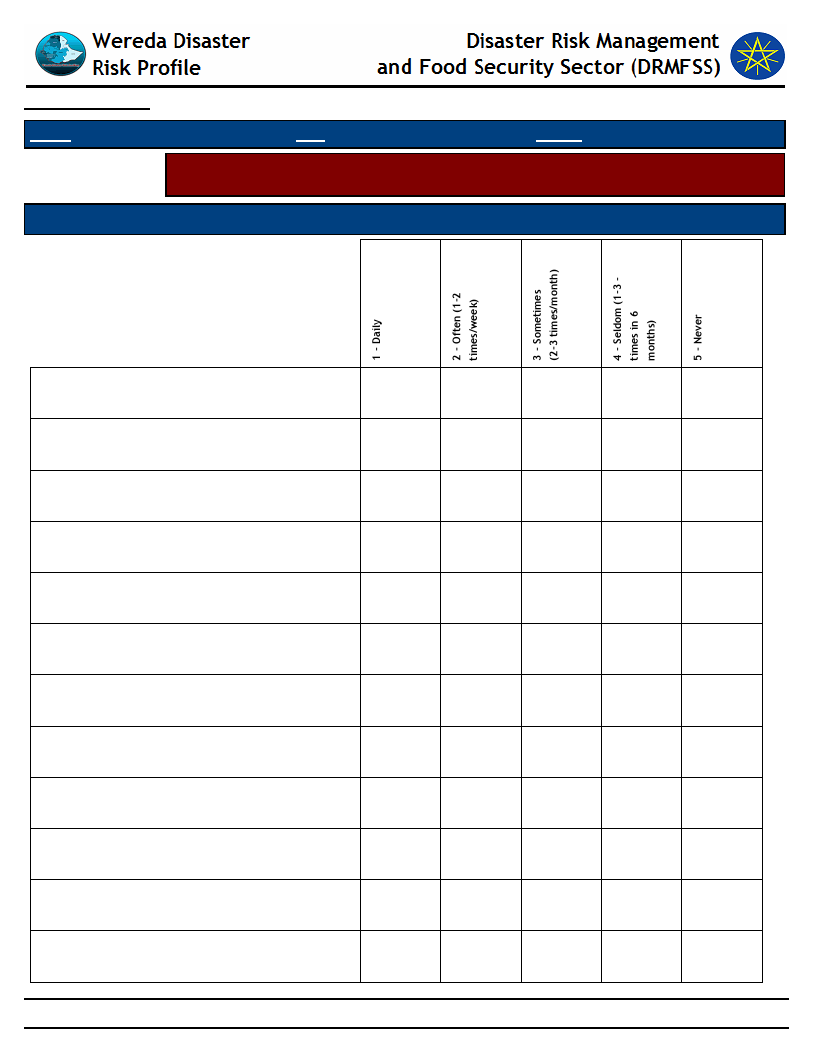
Data_Collected_Date
Thursday, September 4, 2014
Region S.N.N.P
Selected Indicator
Zone HADIYA
Wereda MIRAB BADAWOCHO
Capacity: Coping Strategies Adopted by Households - Percentage of households by
frequency of main coping strategies adopted
Type of Coping Strategy Adopted
Frequency of Adoption
Begging for money or for food
Borrowing of food or cash (including purchasing
food on credit)
Consumption rather than sale of crop surplus
DK
Increased working hours
Limit portion size at meals
Reduce number of meals eaten in a day
Reduced expenditure on health and education
Reduced expenditure on non-essential items
(beer, cigarettes, etc)
Reduced expenditure on productive inputs
(fertilizer, seeds, etc)
Rely on less preferred and less expensive food
Restrict consumption by adults in order for small
children
1.50
20.00
15.00
16.70
12.50
6.90
20.00
7.80
1.50
60.00
45.00
41.70
12.50
10.00
20.70
100.00
45.30
27.30
60.00
40.00
41.70
50.00
20.80
30.00
34.50
80.00
45.30
60.60
40.00
20.00
45.80
60.00
37.90
1.60
9.10
50.00
8.30
227
Page 1 of 2
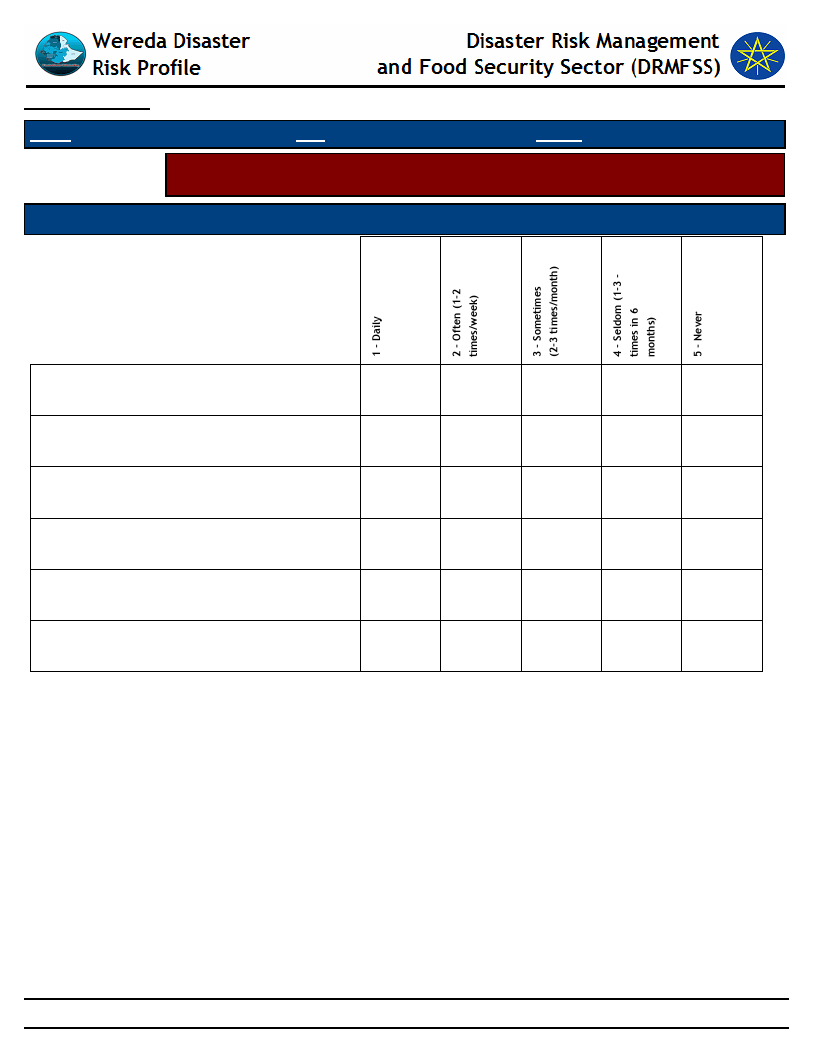
Data_Collected_Date
Thursday, September 4, 2014
Region S.N.N.P
Selected Indicator
Zone HADIYA
Wereda MIRAB BADAWOCHO
Capacity: Coping Strategies Adopted by Households - Percentage of households by
frequency of main coping strategies adopted
Type of Coping Strategy Adopted
Frequency of Adoption
Sale of non-productive assets (jewellery, clothing,
etc.)
Sale of productive assets (land, farm implements,
vehicle, etc)
Seek alternative or additional jobs
Sell more livestock than usual
Sending children of household for work
Short-term / seasonal labor migration
33.30
66.70
85.70
14.30
16.70
33.30
50.00
0.80
0.80
27.40
69.40
1.60
33.30
66.70
40.00
60.00
228
Page 2 of 2

Wereda Disaster
Risk Profile
Data_Collected_Date
Disaster Risk Management and Food
Security Sector (DRMFSS)
Thursday, September 4, 2014
Region S.N.N.P
Selected Indicator
Zone HADIYA
Wereda MIRAB BADAWOCHO
Capacity: Alternative Livelihood Sources - Alternative livelihood sources suggested by the community
Kebele Name
Work_Option_1
Comment_1
Work_Option_2
Comment_2
Work_Option_3
Comment_3
DEDO
WEBARANA OFODA
JARISO ONIJOJO
Petty trading
Cultivating
drought resistance
crops
Petty trading
Used to get additional
income during bad
time
It is not easily
affected
To resist the drought
Daily Labour
Using intensive
cultivation
Daily Labour
To compensate losses
brought by drought
To avoid risk
Hand crafts
Decreasing
feeding
Hand crafts
SIBEYA
Petty trading
To resist the drought
Daily Labour
To avoid risk
Hand crafts
GERIBO
WEREBOYA
2GNA KOTO
HAWORA
Asset saving
Bank for bad time
Decreased
feeding system
Asset saving
For the bad time bank
Decreased
feeding system
Cultivating
drought resistance
crops
Trading
It is not easily
affected
It is not affected by
drought
Intensive
cultivation
Daily Labour
229
To survive the life
To survive the life
If one diminish the other
will survive
Cultivating
drought
resistance
Cultivating
drought
resistance
Decreasing
feeding
Access to Daily Labour is
high
Migrating
It is not easily
affected
Resistance the
hazards/ food
shortage
It minimize
droughts
To minimize
hazards
It is not easily
affected
It is not easily
affected
Resistance the
hazards/ food
shortage
Access to job
opportunities
Page 1 of 3
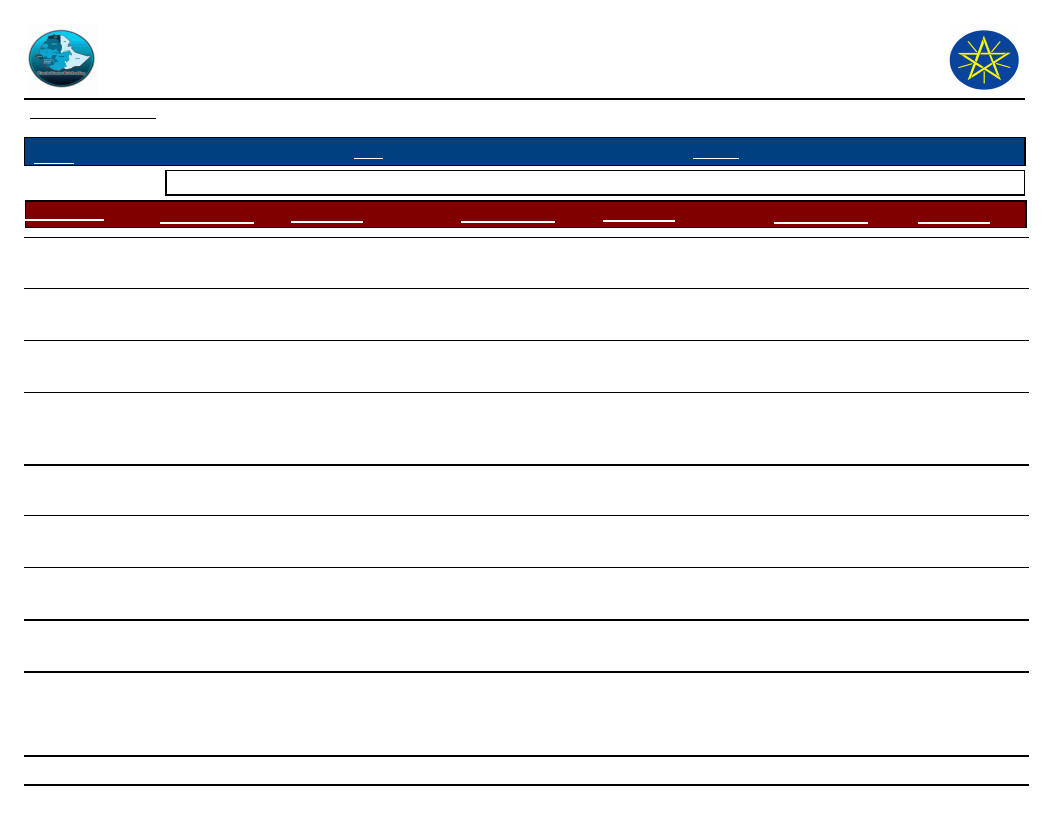
Wereda Disaster
Risk Profile
Data_Collected_Date
Disaster Risk Management and Food
Security Sector (DRMFSS)
Thursday, September 4, 2014
Region S.N.N.P
Selected Indicator
Zone HADIYA
Wereda MIRAB BADAWOCHO
Capacity: Alternative Livelihood Sources - Alternative livelihood sources suggested by the community
Kebele Name
Work_Option_1
Comment_1
Work_Option_2
Comment_2
Work_Option_3
Comment_3
ELIFETA
YA BUKUNA
WADA
SEPERA
KACHA BIRA
1GNA KOTO
DANAMA
DANAMA 01
2nd KESHORA
Trading
Trading
Daily Labour
Trading
Other means of
getting income
Other means of
getting income
Means of generating
income
It is not affected by
drought
Daily Labour
Trading
Daily Labour
Migration and
Daily Labour
Trading
Petty trade
Means of generating
income
It can help during and
after hazards
To resist the drought
Trading
Daily Labour
Labour work
Petty trade
To resist the drought
Labour work
Cultivating
drought resistance
crops
It is not easily
affected
Intensive
cultivation
It helps to recover from
disaster losses
It is not easily affected
Saving
Access to Daily Labour is
high
It is not easily affected
Soil and water
conservation
practice
Means of income
generating
Resisting for drought
Hand crafts
To avoid risk
Hand crafts
If one diminish the other
will survive
Decreasing
feeding
Bank for bad
time
Used to keep
soil fertility
It is not easily
affected
To minimize
hazards
Resistance the
hazards/ food
shortage
230
Page 2 of 3
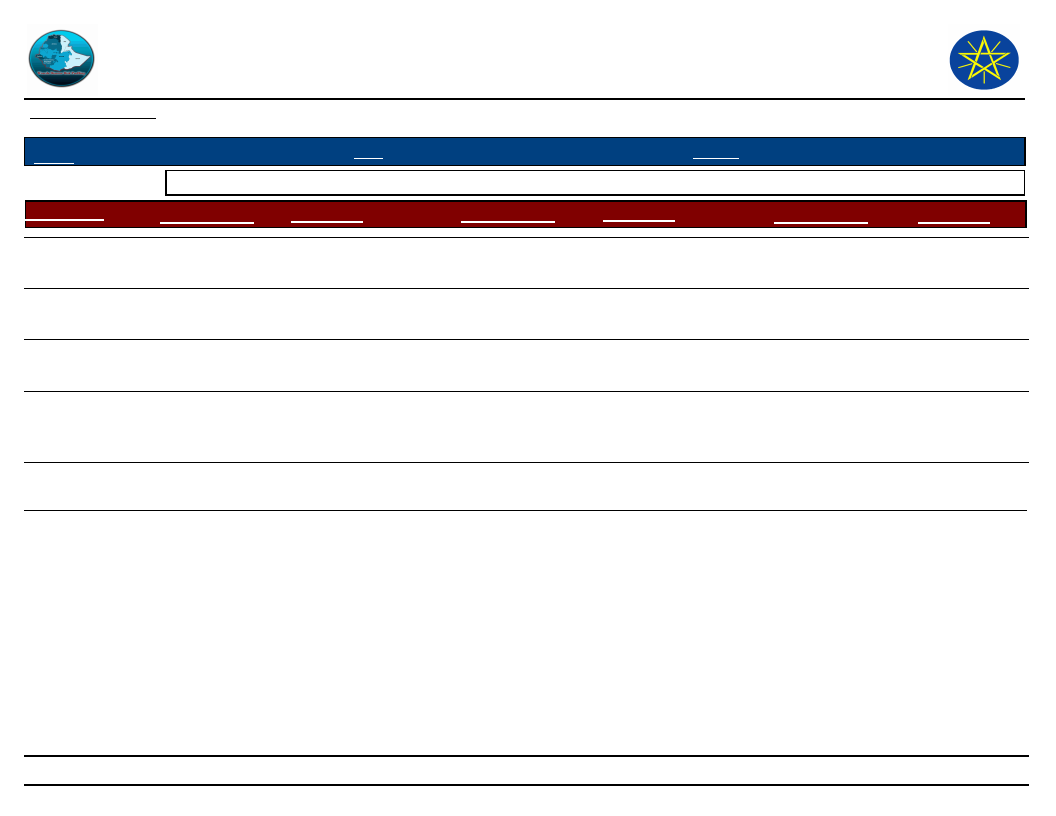
Wereda Disaster
Risk Profile
Data_Collected_Date
Disaster Risk Management and Food
Security Sector (DRMFSS)
Thursday, September 4, 2014
Region S.N.N.P
Selected Indicator
Zone HADIYA
Wereda MIRAB BADAWOCHO
Capacity: Alternative Livelihood Sources - Alternative livelihood sources suggested by the community
Kebele Name
Work_Option_1
Comment_1
Work_Option_2
Comment_2
Work_Option_3
Comment_3
WADA 01
Trading
FIRST KASHERA
Trading
JARSO MAJORIYA
Trading
OFFDAA
Trading
MIRAB AJEBA
No
It is not easily
affected by drought
It is not easily
affected by drought
It is not easily
affected by drought
It is not easily
distributed by
drought
Labour work
Means of income
generating
231
Page 3 of 3
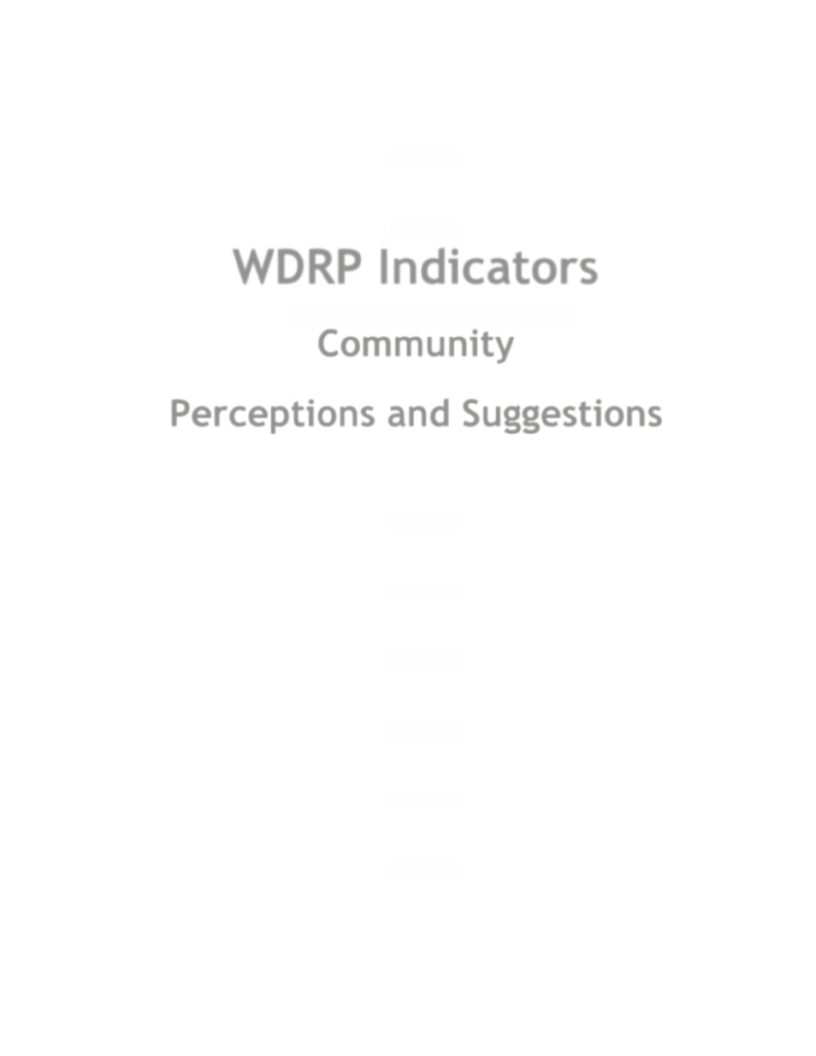
WDRP Indicators
Community
Perceptions and Suggestions
232
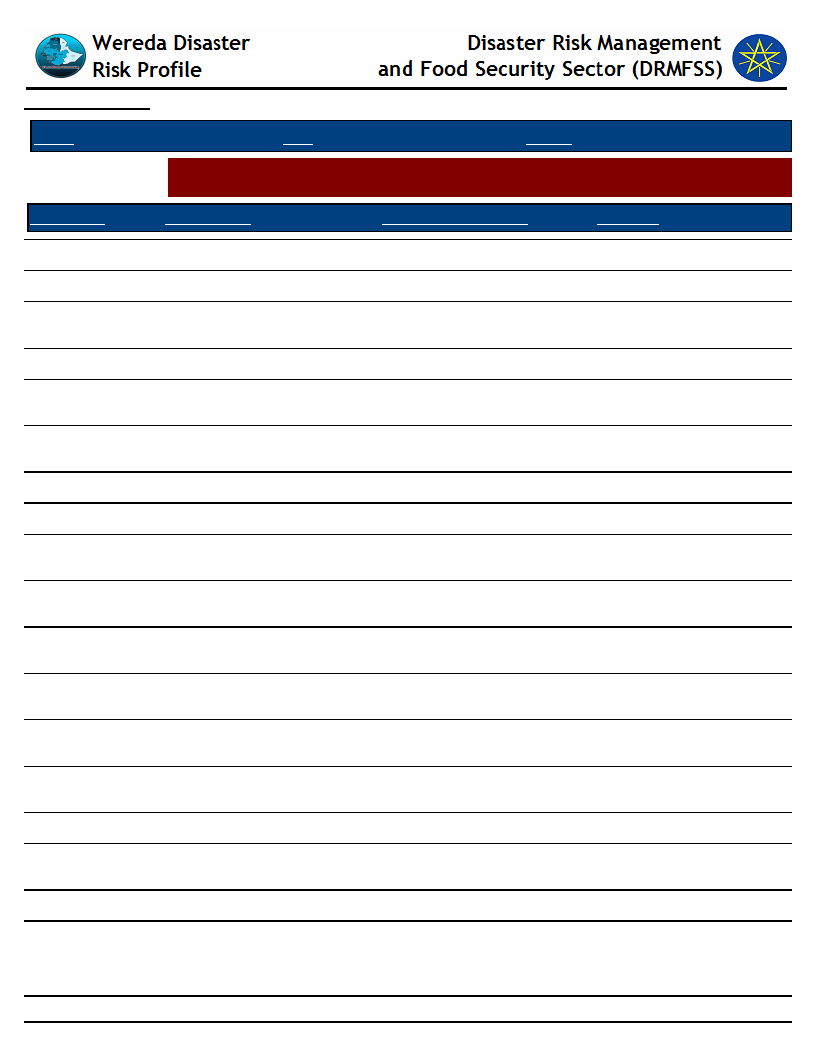
Data_Collected_Date
Thursday, September 4, 2014
Region S.N.N.P
Selected Indictor:
KebeleName
Zone HADIYA
Wereda MIRAB BADAWOCHO
Agricultural Situation: Access to Extension - Perception of the community on
Access to Agricultural extension Services
Current_Level
Change_In_Last_Decade
Comments
2GNA KOTO
HAWORA
ELIFETA
DEDO
WADA
SEPERA
KACHA BIRA
1GNA KOTO
JARISO ONIJOJO
SIBEYA
GERIBO
WEBARANA
OFODA
WEREBOYA
YA BUKUNA
DANAMA
DANAMA 01
2nd KESHORA
WADA 01
Medium
Better
Medium
Better
Better
Better
Medium
Medium
Very good
Medium
Medium
Better
Medium
Medium
Medium
Better
Very good
Increasing
Good
Better
Increasing
Increasing
Good
Good
Good
Good
Good
Increasing
Very good
Good
Good
Increasing
Better
High development agent
involvement
Better
Skilled man power are
presented in the kebele
Development agent
involvement is high
There is skilled man
power in the area
There is skilled man
power in the area
There is skilled man
power in the area
Better
There is skilled man
power in the area
Development agents skill
gap reduction is necessary
Better
There is skilled man
power in the area
Better
Development agents
involvement is high
233
Page 1 of 2
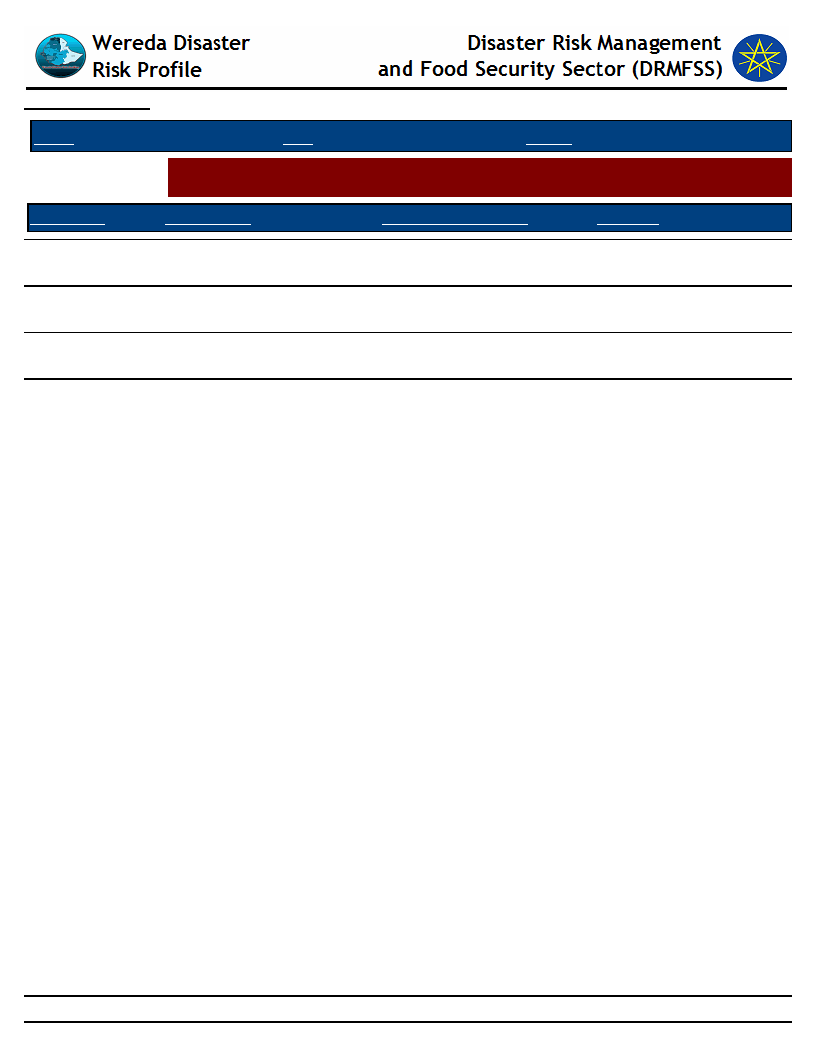
Data_Collected_Date
Thursday, September 4, 2014
Region S.N.N.P
Selected Indictor:
KebeleName
Zone HADIYA
Wereda MIRAB BADAWOCHO
Agricultural Situation: Access to Extension - Perception of the community on
Access to Agricultural extension Services
Current_Level
Change_In_Last_Decade
Comments
FIRST KASHERA
JARSO MAJORIYA
OFFDAA
MIRAB AJEBA
Better
Better
Better
Better
Increasing
Increasing
Increasing
Increasing
Development agents
involvement is high
Development agents skill
gap reduction is necessary
Increasing development
agents skill gap
Need continuous stalk
holders training
234
Page 2 of 2
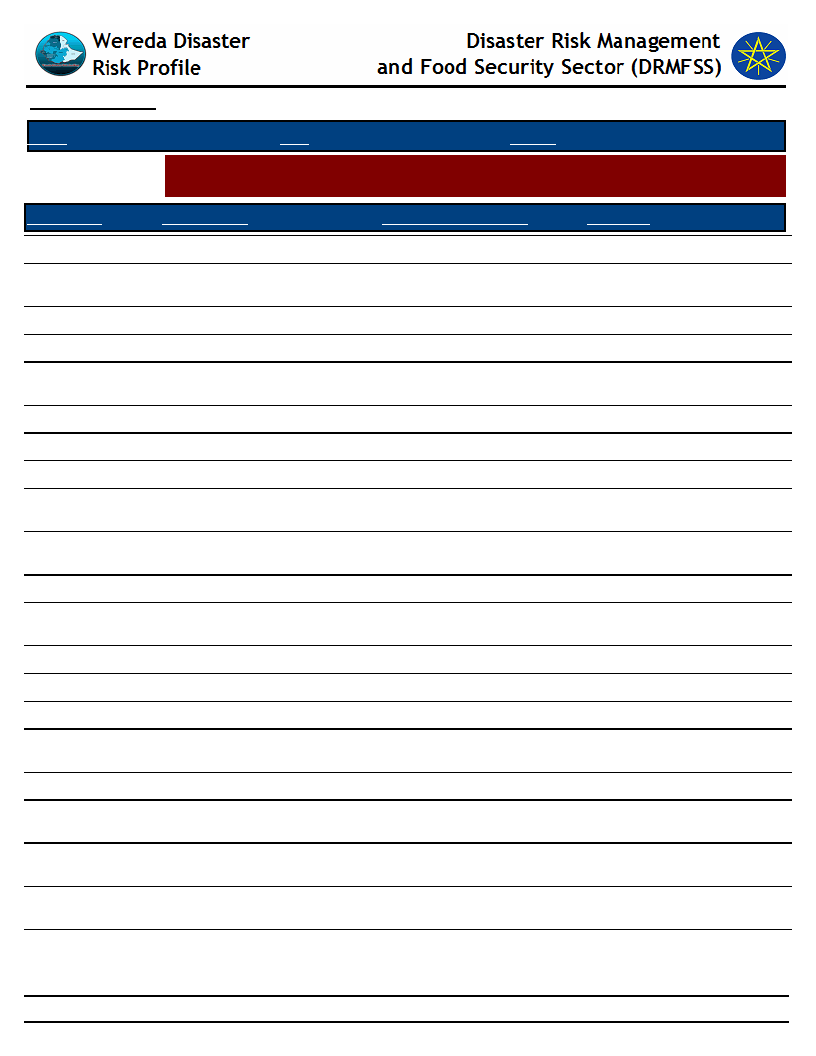
Data_Collected_Date
Thursday, September 4, 2014
Region S.N.N.P
Selected Indictor:
KebeleName
DEDO
WEBARANA
OFODA
JARISO ONIJOJO
SIBEYA
GERIBO
WEREBOYA
2GNA KOTO
HAWORA
ELIFETA
YA BUKUNA
WADA
SEPERA
KACHA BIRA
1GNA KOTO
DANAMA
DANAMA 01
2nd KESHORA
WADA 01
FIRST KASHERA
JARSO MAJORIYA
OFFDAA
Zone HADIYA
Wereda MIRAB BADAWOCHO
Agricultural Situation: Access to Inputs - Perception of the community on access
to improved agricultural inputs
Current_Level
Change_In_Last_Decade
Comments
Medium
Medium
Good
Good
Better
Better
Medium
Medium
Very good
Medium
Very good
Use to agricultural inputs
Better
Better
Better
Better
Good
Good
Good
Good
Good
Very good
Increasing
Increasing
Better
Increasing
Good pesticides access
Good pesticides access
There is low pesticide
access
Good pesticides access
Better
Good awareness creation
Balance between demand
and supply
Demand and supply not
balanced
low pesticides access
Government emphasis is
good
Better
Medium
Medium
Medium
Better
Better
Better
Better
Increasing
Good
Good
Good
Increasing
Increasing
Increasing
Increasing
Improved seed scarcity
better
There is low pesticide
access
better
Development agents
involvements is high
Development agents
involvements is high
Demand and supply
balanced
Balance between demand
and supply
235
Page 1 of 2
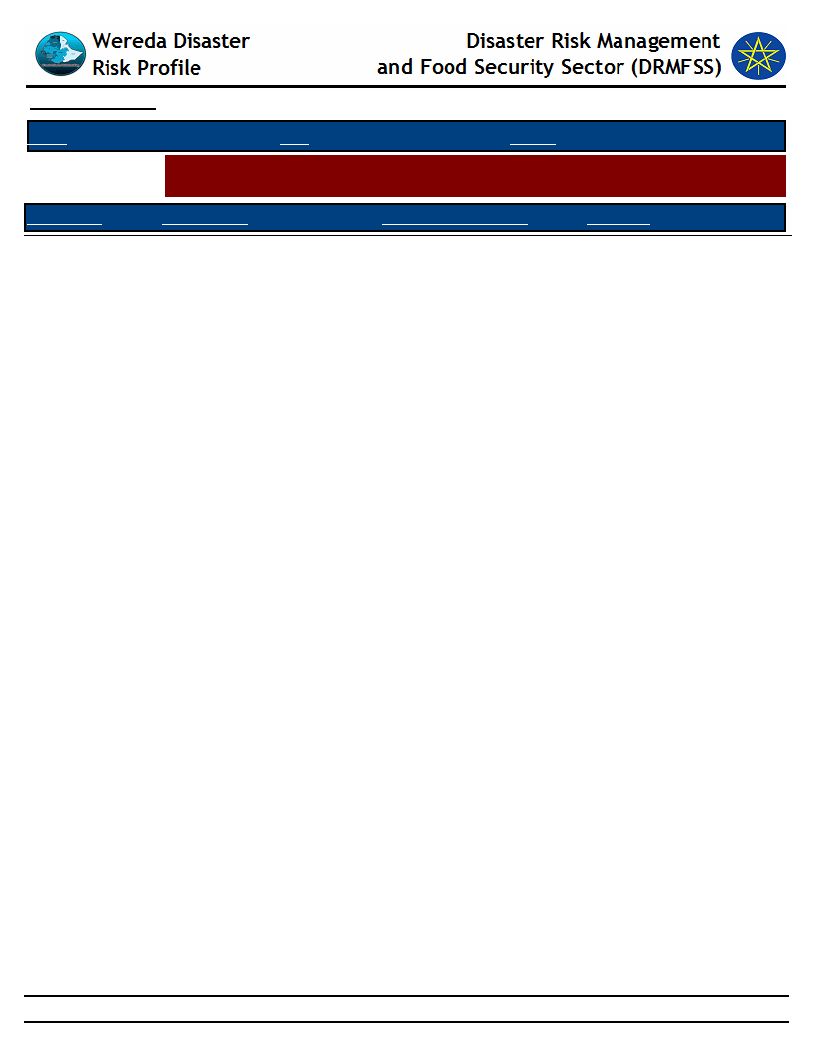
Data_Collected_Date
Thursday, September 4, 2014
Region S.N.N.P
Selected Indictor:
KebeleName
MIRAB AJEBA
Zone HADIYA
Wereda MIRAB BADAWOCHO
Agricultural Situation: Access to Inputs - Perception of the community on access
to improved agricultural inputs
Current_Level
Change_In_Last_Decade
Comments
Better
Increasing
Unbalancing of demand
and supply
236
Page 2 of 2
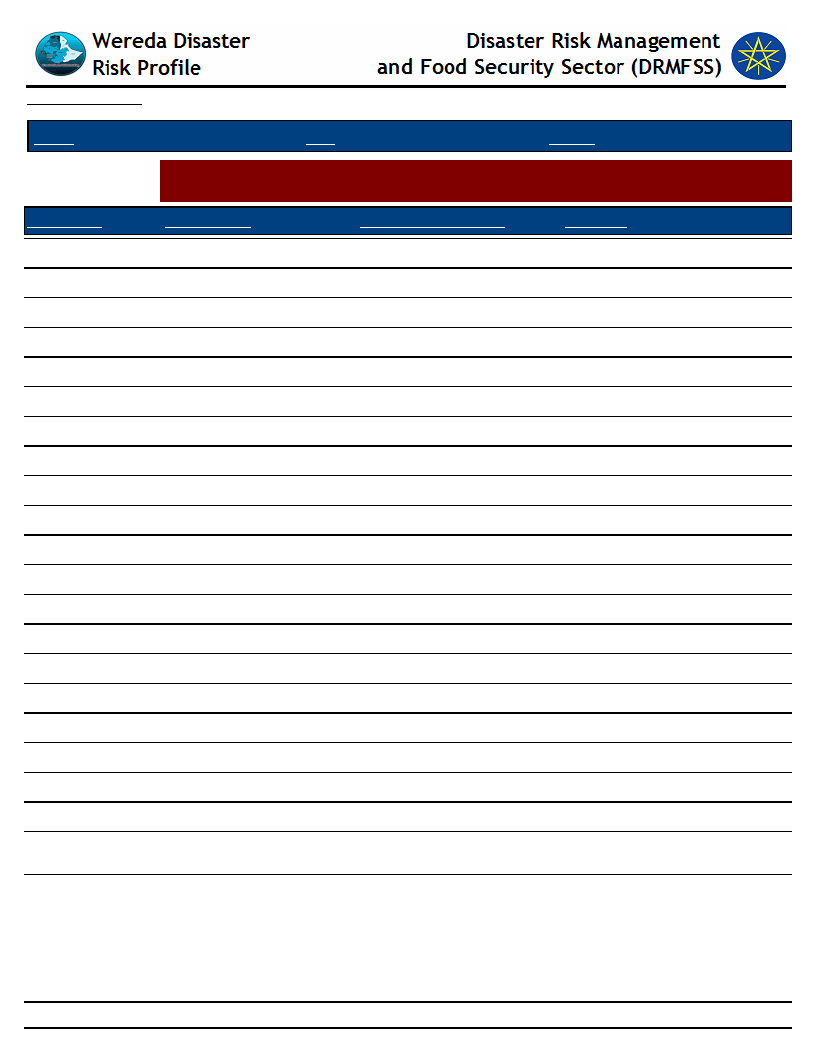
Data_Collected_Date
Thursday, September 4, 2014
Region S.N.N.P
Zone HADIYA
Wereda MIRAB BADAWOCHO
Selected Indictor:
KebeleName
Agricultural Situation: Water for irrigation - Access to water for irrigation in the
community
Current_Level
Change_In_Last_Decade
Comments
DEDO
WEBARANA OFODA
JARISO ONIJOJO
SIBEYA
GERIBO
WEREBOYA
2GNA KOTO
HAWORA
ELIFETA
YA BUKUNA
WADA
SEPERA
KACHA BIRA
1GNA KOTO
DANAMA
DANAMA 01
2nd KESHORA
WADA 01
FIRST KASHERA
JARSO MAJORIYA
OFFDAA
MIRAB AJEBA
Low
Low
Low
Low
Low
Low
Low
Increased
Low
Low
Low
Low
No
No
Low
Low
Low
Low
Low
Low
Low
Low
Decreased
Decreased
Decreased
Decreased
Decreased
Decreased
Decreased
Good
Decreased
Decreased
Decreased
Decreased
No
No
Decreased
Decreased
Decreased
Low
Low
Decreased
Decreased
Decreased
Lack of water
Climatic change
Climatic change
Climatic change
Climatic change
Climatic change
Lack of water
Increasing new technology
Dam construction
Dam construction
Drought
Due to drought
No
Lack of water
Climatic change
Drought
Need dam construction
Irrigation is needed and water
reserve also needed
Should need great focusing
237
Page 1 of 1
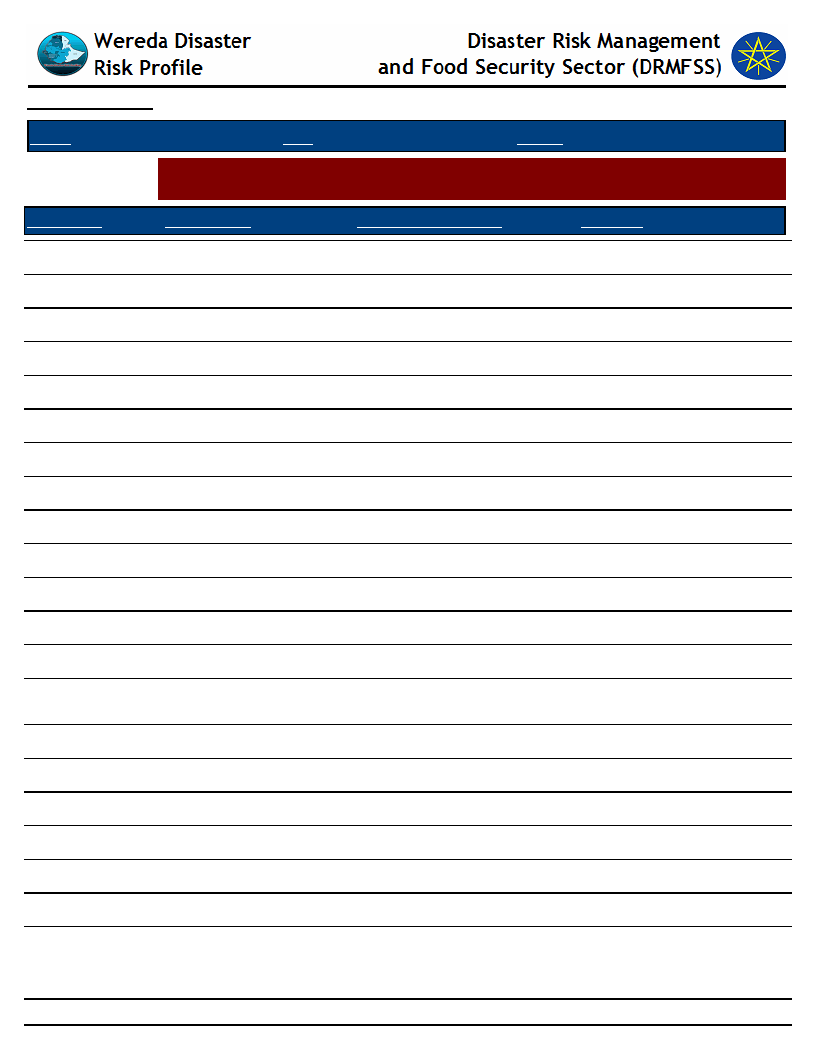
Data_Collected_Date
Thursday, September 4, 2014
Region S.N.N.P
Zone HADIYA
Wereda MIRAB BADAWOCHO
Selected Indictor:
Agricultural Situation: Water Availability for Livestock - Water availability for
livestock in the community
KebeleName
Current_Level
Change_In_Last_Decade
Comments
DEDO
Low
Decreased
Drought
WEBARANA OFODA
Low
Decreased
Drought
JARISO ONIJOJO
Low
Decreased
Drought
SIBEYA
Low
Decreased
Drought
GERIBO
Low
Decreased
Drought
WEREBOYA
Low
Decreased
Drought
2GNA KOTO
Low
Decreased
Climate change
HAWORA
ELIFETA
Low
Decreased
Dam construction
YA BUKUNA
Low
Decreased
Dam construction
WADA
Low
Decreased
Climate change
SEPERA
Low
Decreased
Shortage of rain fall
1GNA KOTO
No
No
DANAMA
DANAMA 01
Should need great
focusing
Low
Decreased
Decreased
Climate change
Drought
2nd KESHORA
Low
Decreased
Drought
WADA 01
Low
Low
FIRST KASHERA
Low
Low
JARSO MAJORIYA
Low
Decreased
Need dam construction
OFFDAA
Low
Decreased
Dam construction
MIRAB AJEBA
Low
Decreased
It need construction of
water reservoir
238
Page 1 of 1
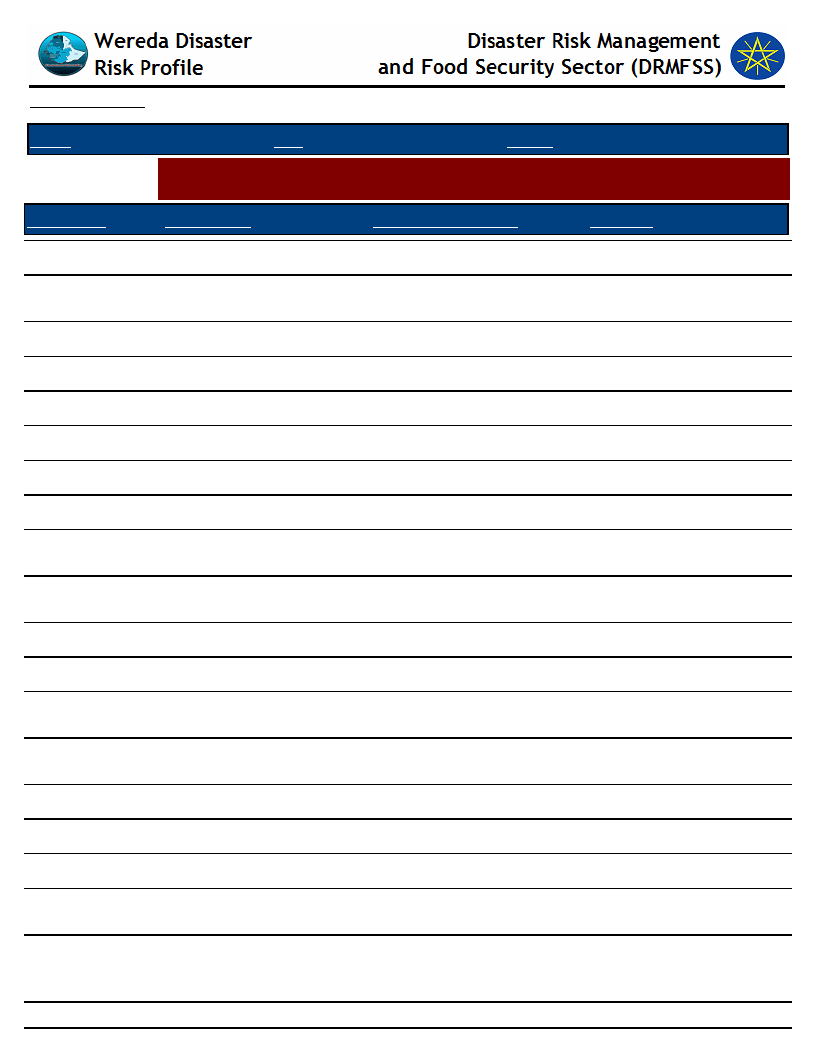
Data_Collected_Date
Thursday, September 4, 2014
Region S.N.N.P
Selected Indictor:
Kebele Name
Zone HADIYA
Wereda MIRAB BADAWOCHO
Agricultural Situation: Soil Fertility - Perception of the community on soil fertility
and its change over time
Current_Level
Change_In_Last_Decade
Comments
DEDO
Decreased
Decreased
Soil erosion
WEBARANA
OFODA
JARISO ONIJOJO
Decreased
Decreased
Decreased
Decreased
Soil erosion
Soil erosion
SIBEYA
GERIBO
WEREBOYA
2GNA KOTO
HAWORA
ELIFETA
YA BUKUNA
WADA
SEPERA
KACHA BIRA
1GNA KOTO
DANAMA
DANAMA 01
Decreased
Decreased
Decreased
Decreased
Decreased
Better
Better
Decreased
Better
Decreased
Decreased
Decreased
Decreased
Decreased
Decreased
Decreased
Decreased
Difficult
Decreased
Decreased
Decreased
Decreased
Decreased
Decreased
Decreased
Decreased
Soil erosion
Soil erosion
Soil erosion
Soil erosion
Soil erosion
Soil and water
conservation
Soil and water
conservation
Over ploughing of land
Soil erosion
Soil erosion, increment of
acidity
Soil erosion, increment of
acidity
Soil erosion
Soil erosion
2nd KESHORA
WADA 01
FIRST KASHERA
Decreased
Decreased
Decreased
Decreased
Decreased
Decreased
Soil erosion
Over utilization of land due
to small in size
Over utilization of land due
to small in size
239
Page 1 of 2
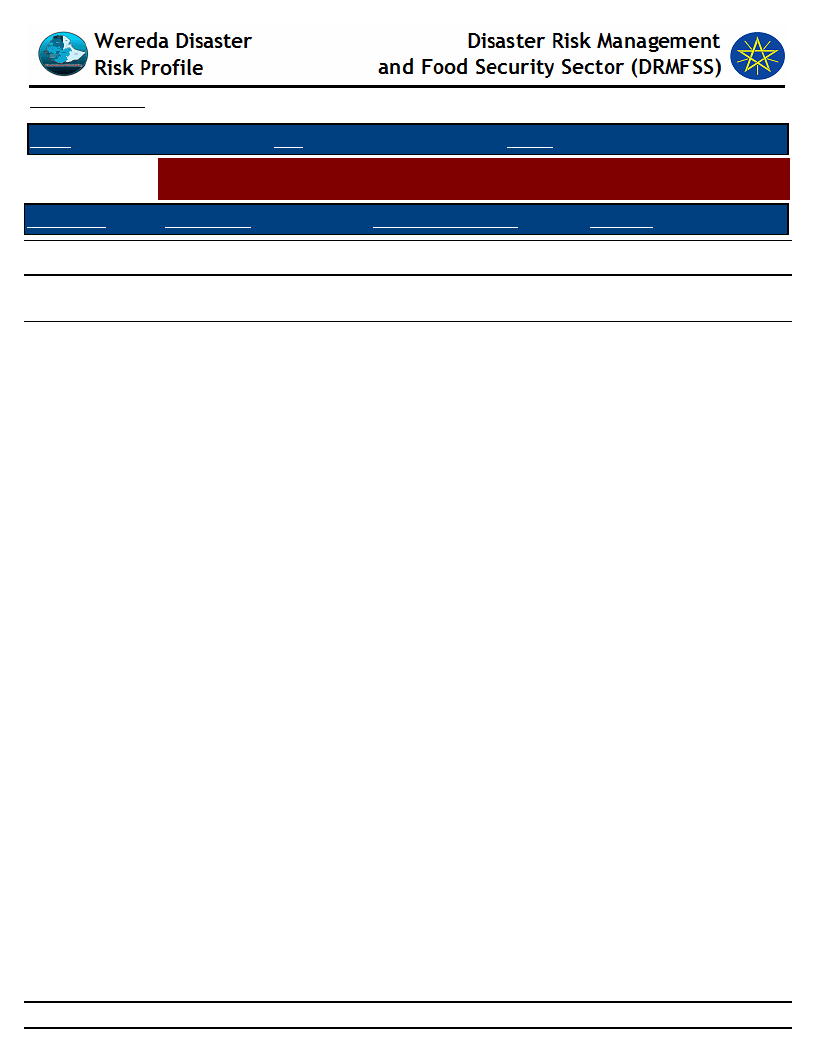
Data_Collected_Date
Thursday, September 4, 2014
Region S.N.N.P
Selected Indictor:
Kebele Name
Zone HADIYA
Wereda MIRAB BADAWOCHO
Agricultural Situation: Soil Fertility - Perception of the community on soil fertility
and its change over time
Current_Level
Change_In_Last_Decade
Comments
JARSO MAJORIYA
Better
Decreased
Need soil treatment
OFFDAA
MIRAB AJEBA
Better
Better
Decreased
Decreased
Emphasis of soil and water
conservation
It need great care
240
Page 2 of 2
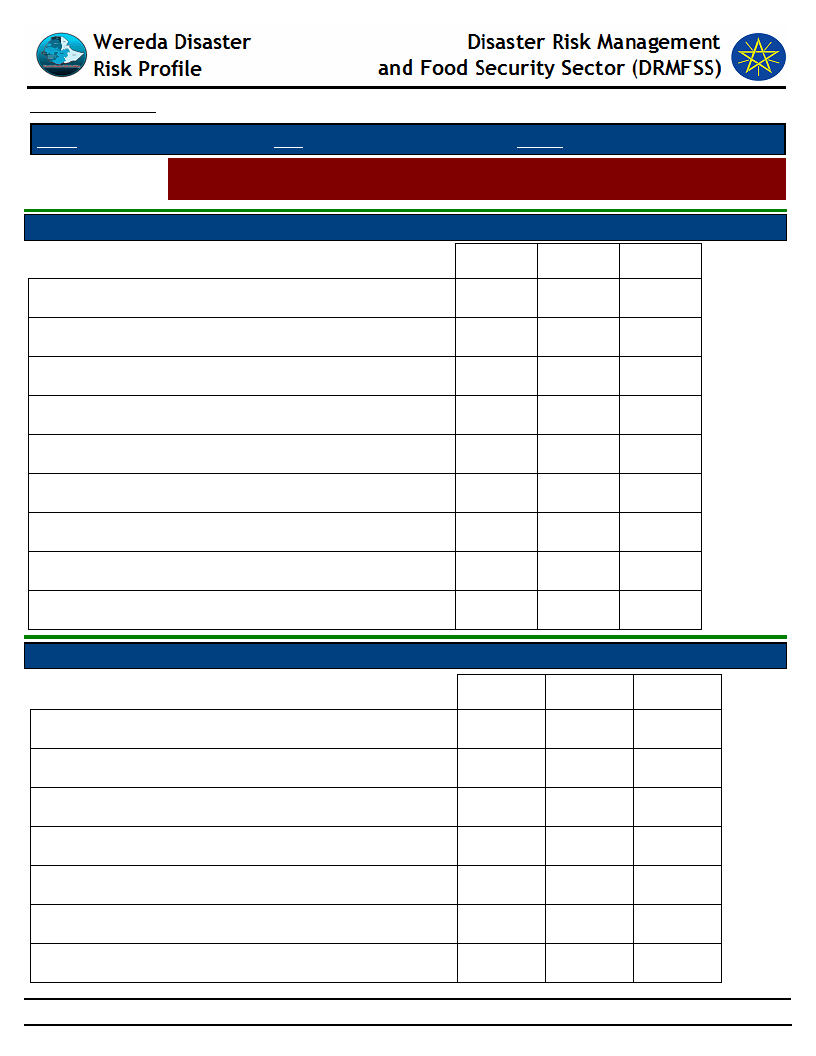
Data_Collected_Date
Thursday, September 4, 2014
Region S.N.N.P
Selected Indictor:
Zone HADIYA
Wereda MIRAB BADAWOCHO
Economic Vulnerability: Change in Agricultural Situation - Households perception
on changes of crop type, size of cultivated area and crop yields
Proportion of households reporting change in crops grown
Adequate fertilizer
33.50
%
1st
2nd
3rd
0.60
16.70
11.10
Adequate irrigation available
0.00
0.00
0.00
Adequate rainfall
9.00
0.00
7.40
Insufficient fertilizer
1.30
65.90
7.40
Insufficient irrigation available
1.90
0.00
0.00
Less rainfall
59.40
2.40
3.70
More drought resistant crop
0.60
6.30
29.60
More pest resistant crop
1.90
4.00
3.70
More yielding crop
25.20
2.40
25.90
Proportion of households reporting change in size of area cultivated
29.70 %
Addition of area
1st
2nd
3rd
5.10
3.40
10.80
Adequate fertilizer
4.40
11.80
21.60
Adequate rainfall
10.20
0.00
16.20
insufficient fertilizer
0.70
70.60
2.70
Insufficient rainfall
59.90
2.50
0.00
Loss of area
11.70
3.40
13.50
more yielding crop
6.60
8.40
35.10
241
Page 1 of 2
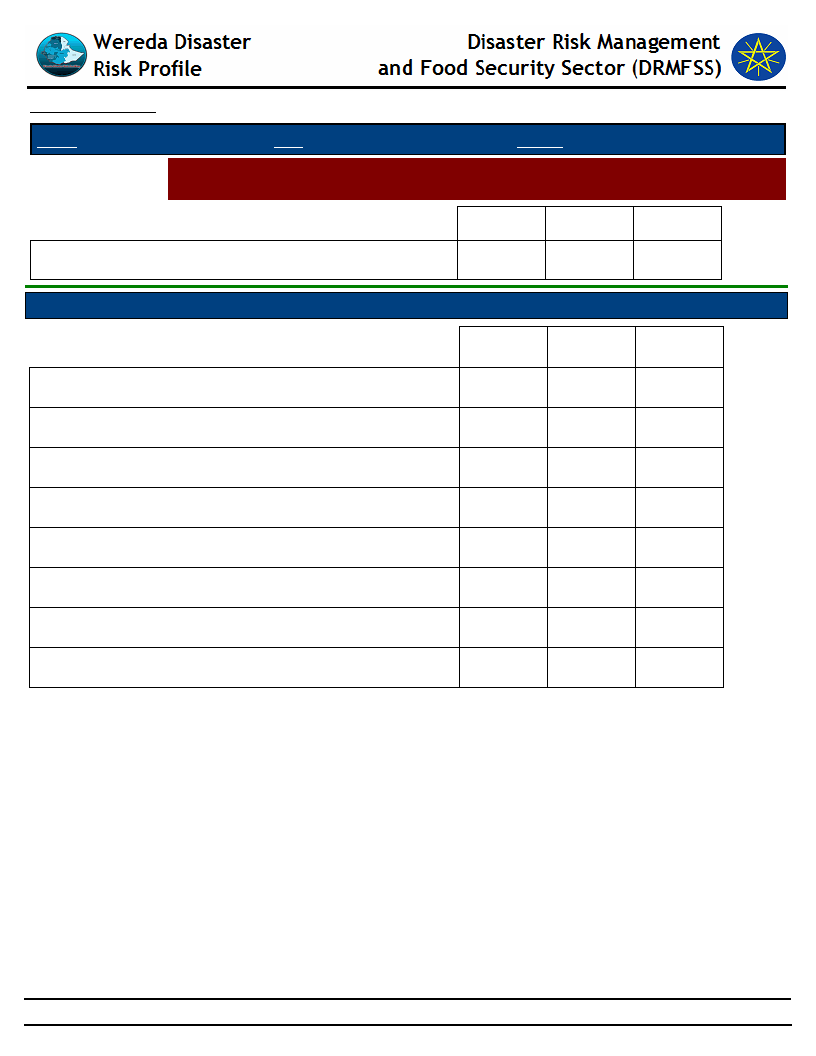
Data_Collected_Date
Thursday, September 4, 2014
Region S.N.N.P
Selected Indictor:
Zone HADIYA
Wereda MIRAB BADAWOCHO
Economic Vulnerability: Change in Agricultural Situation - Households perception
on changes of crop type, size of cultivated area and crop yields
1st
2nd
3rd
Water logging
1.50
0.00
0.00
Proportion of households reporting change in crop yield
Adequate fertilizer
Adequate irrigation available
Adequate rainfall
Better yielding crop
Improved variety of seeds
Insufficient fertilizer
Insufficient irrigation available
Insufficient rainfall
89.10
%
1st
2nd
3rd
1.00
8.50
22.20
0.20
0.00
0.00
2.40
0.00
19.40
9.90
4.90
25.00
4.10
6.00
16.70
5.80
74.60
0.00
0.20
0.00
0.00
76.40
6.00
11.10
242
Page 2 of 2
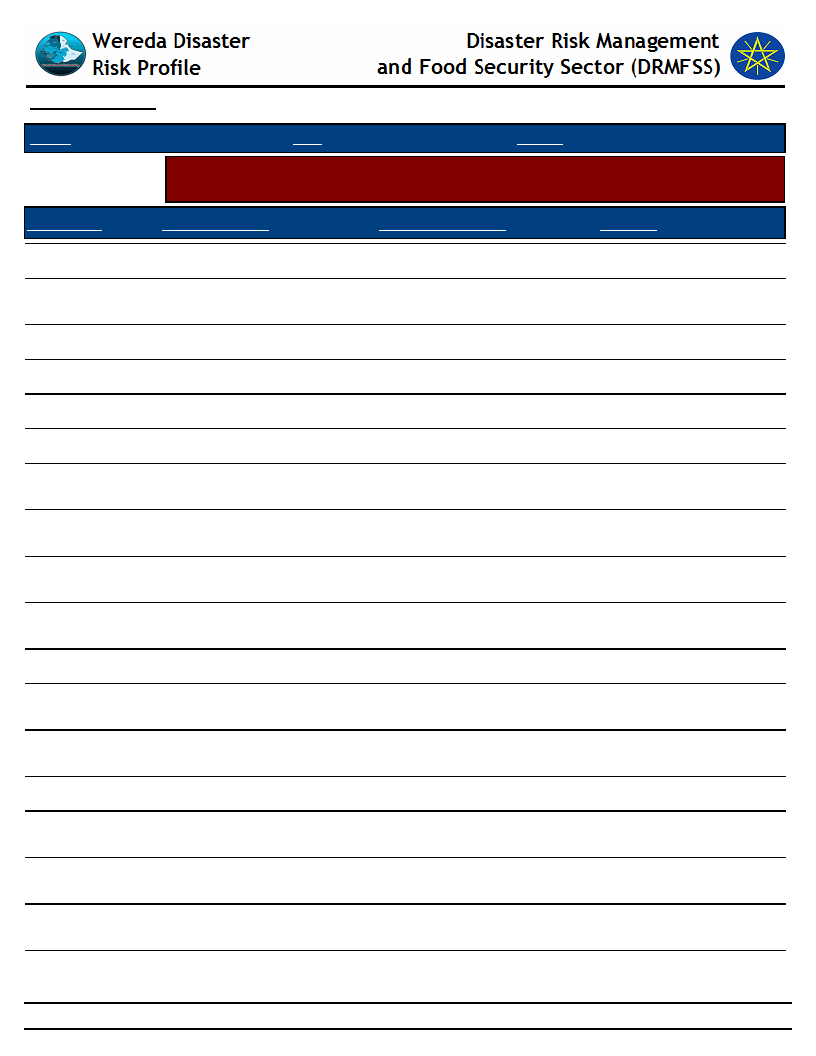
Data_Collected_Date
Thursday, September 4, 2014
Region S.N.N.P
Selected Indicator
Zone HADIYA
Wereda MIRAB BADAWOCHO
Environmental Situation: General Land Quality - Perceptions of the community
on changes in the general quality of land over a decade
KebeleName
Current_Situation
Change_Last_Decade
Comment
DEDO
Good
Decreased
WEBARANA
OFODA
JARISO ONIJOJO
Good
Good
Decreased
Decreased
Lack of soil and water
conservation
Lack of soil fertility
SIBEYA
Good
Decreased
Lack of fertilities
GERIBO
Good
Decreased
Lack of soil fertility
WEREBOYA
Good
Decreased
Lack of soil fertility
2GNA KOTO
HAWORA
ELIFETA
YA BUKUNA
WADA
Good
Decreased
Better
Better
Better
Decreased
Decreased
Increased
Decreased
Lack of soil and water
conservation
Lack of soil and water
conservation
It need strong soil and
water conservation
Soil and water
conservation
SEPERA
DANAMA
DANAMA 01
Better
Good
Good
Decreased
Decreased
Decreased
Soil and water
conservation
Lack of soil and water
conservation
Lack of soil fertility
2nd KESHORA
Good
WADA 01
Better
FIRST KASHERA
Better
JARSO MAJORIYA
Better
Decreased
Better
Better
Increased
Lack of water and soil
conservation
Better soil and water
irrigation system
Better soil and water
irrigation system
It need using wisely
243
Page 1 of 2
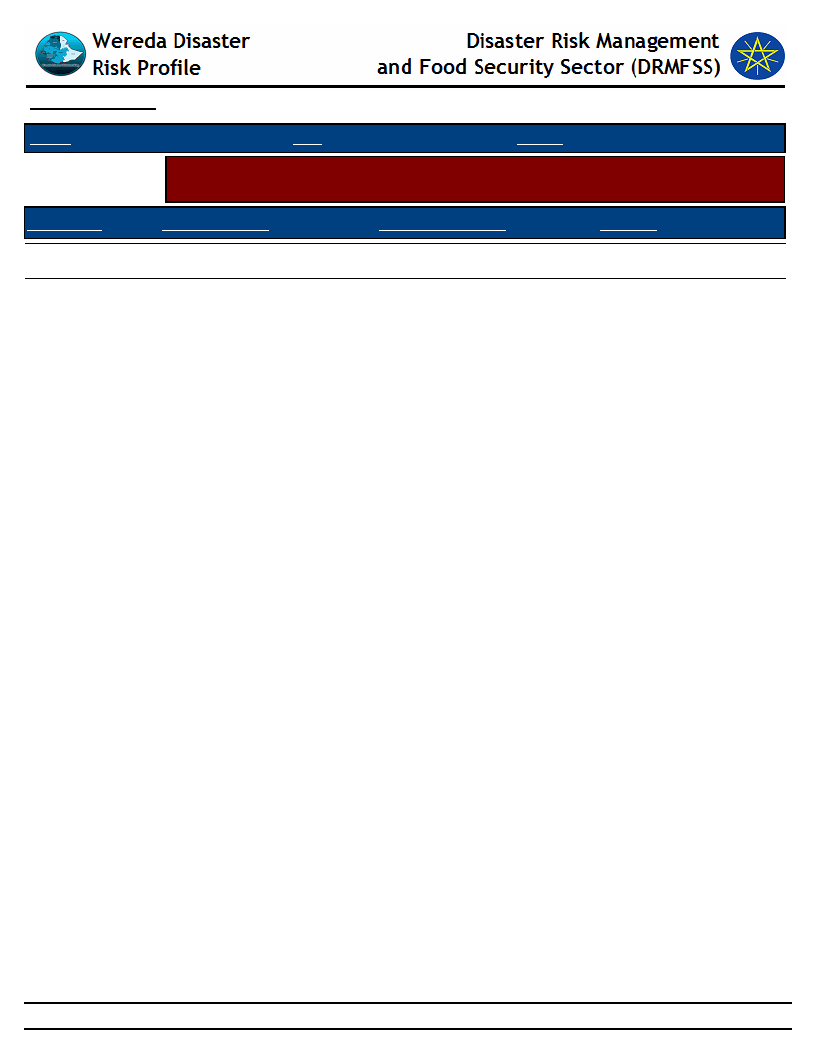
Data_Collected_Date
Thursday, September 4, 2014
Region S.N.N.P
Selected Indicator
Zone HADIYA
Wereda MIRAB BADAWOCHO
Environmental Situation: General Land Quality - Perceptions of the community
on changes in the general quality of land over a decade
KebeleName
Current_Situation
Change_Last_Decade
Comment
OFFDAA
Better
Increased
Wise use of land
MIRAB AJEBA
Better
Increased
It need great care
244
Page 2 of 2
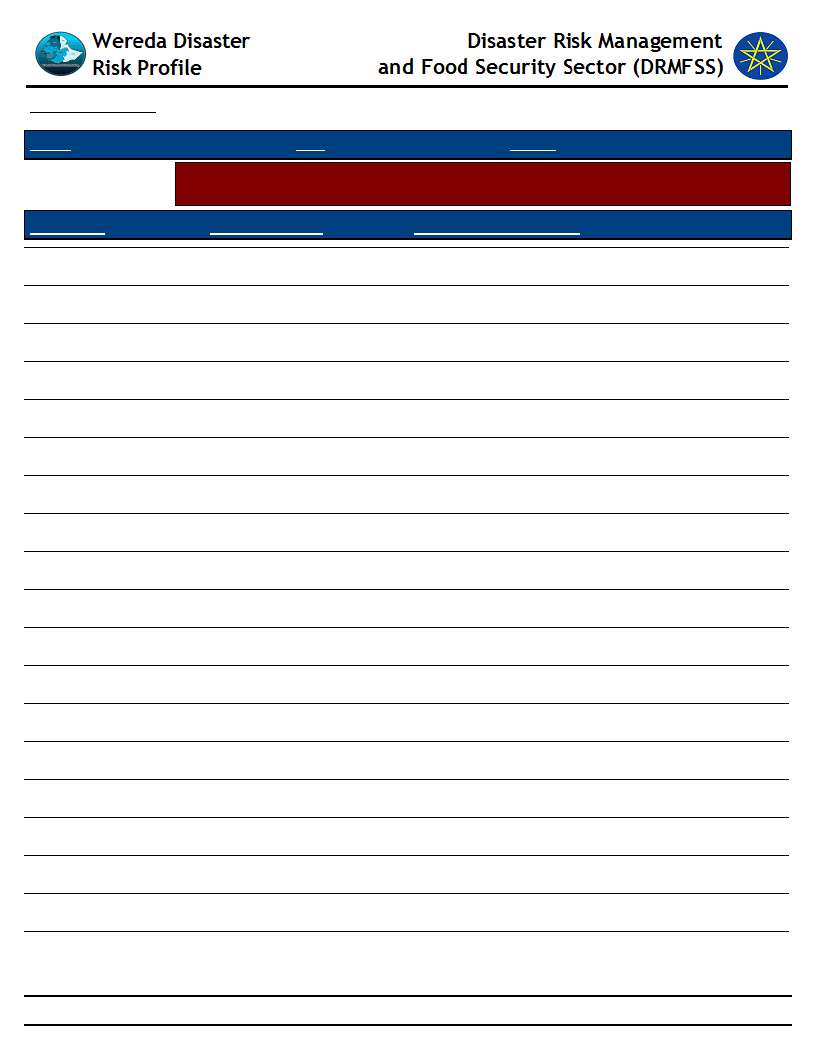
Data_Collected_Date
Thursday, September 4, 2014
Region S.N.N.P
Selected Indicator
KebeleName
DEDO
Zone HADIYA
Wereda MIRAB BADAWOCHO
Environmental Situation: Changes in Landscape - Changes observed by the
community on landscape and the problems due to the changes
Changes_Observed
Problems_Due_To_Changes
Clearing of land cover
Soil erosion
WEBARANA OFODA
Clearing of land cover
Soil erosion
JARISO ONIJOJO
Clearing of land cover
Soil erosion
SIBEYA
Clearing of land cover
Soil erosion
GERIBO
Clearing of water cover
Soil erosion
WEREBOYA
Clearing of land
Soil erosion
2GNA KOTO
Clearing of land
Soil erosion
HAWORA
Clearing of land cover
Yield reduction
ELIFETA
Clearing of land
Soil erosion
YA BUKUNA
Fertility reduction
Low productivity
WADA
Land clearing
Exposing for drought
SEPERA
Land clearing
Drought
KACHA BIRA
Land clearing
Drought
1GNA KOTO
DANAMA
Clearing of land cover.
Soil erosion.
DANAMA 01
Clearing of land cover.
Soil erosion.
2nd KESHORA
WADA 01
Clearing of land cover.
Exposing for drought.
FIRST KASHERA
Land clearing.
Low productivity, exposing to drought.
245
Page 1 of 2
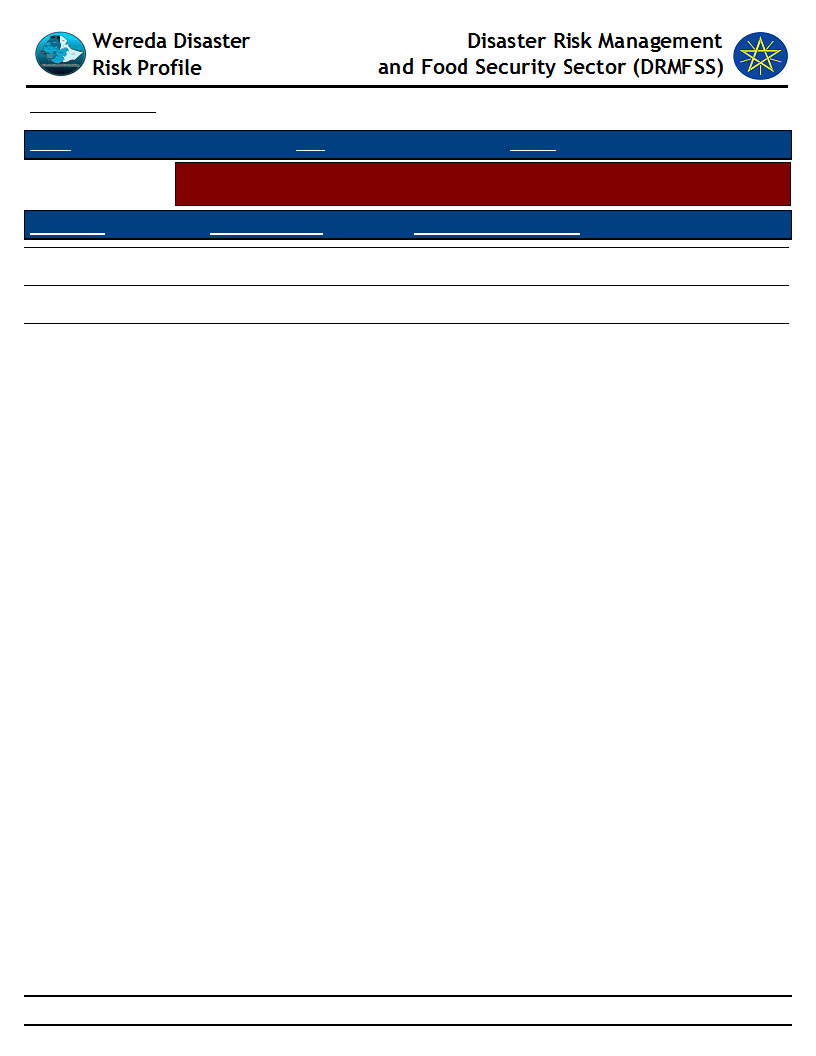
Data_Collected_Date
Thursday, September 4, 2014
Region S.N.N.P
Selected Indicator
KebeleName
JARSO MAJORIYA
Zone HADIYA
Wereda MIRAB BADAWOCHO
Environmental Situation: Changes in Landscape - Changes observed by the
community on landscape and the problems due to the changes
Changes_Observed
Problems_Due_To_Changes
Clearing of land cover.
Soil erosion.
OFFDAA
Better.
Increased.
MIRAB AJEBA
Better.
Increased.
246
Page 2 of 2
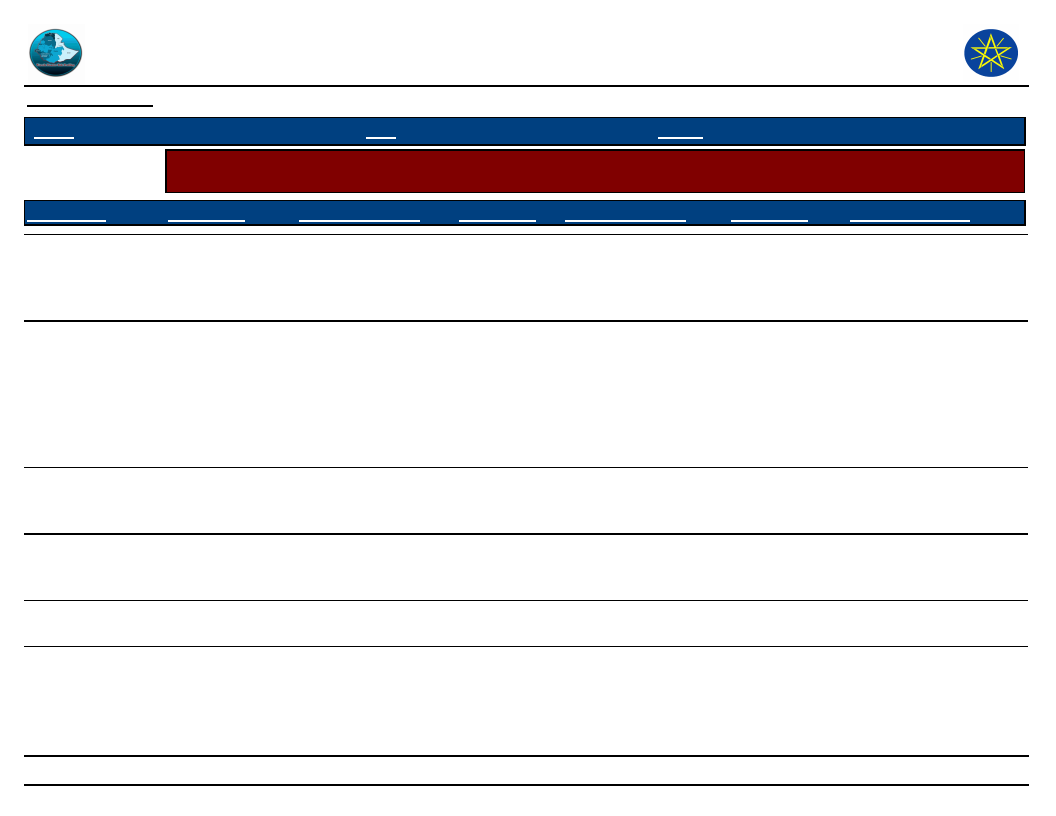
Wereda Disaster
Risk Profile
Data_Collected_Date
Disaster Risk Management and Food
Security Sector (DRMFSS)
Thursday, September 4, 2014
Region S.N.N.P
Zone
HADIYA
Wereda MIRAB BADAWOCHO
Selected Indicator
Kebele Name
Interventions: Community Perception on Mediums to Influence DRM Actors - Community perception on the
effectiveness of institutional channels to use to influence DRM actors
Institution_1
Process_Description
Institution_2 Process_Description
Institution_3
Process_Description
DEDO
Development
agents
Through the wereda
administration
WEBARANA OFODA
Development
agents
JARISO ONIJOJO
SIBEYA
GERIBO
WEREBOYA
Community
representative at
wereda level
Community
representative at
wereda level
Wereda
Development
agents
Kebele communities
report to
development agents
then the
development agent
to wereda
administration
Through the wereda
administration
Through the wereda
administration
Through our kebele
authority
Community
representative
at wereda
level
It works through the
wereda
Through
kebele chair
man
Through
kebele chair
man
Federal
Community
representative
at wereda
level
Through our kebele
authorities
Through our kebele
authorities
Through wereda
administration
Through our kebele
authorities
Through kebele
chair person
Through our kebele
authorities
247
Page 1 of 4
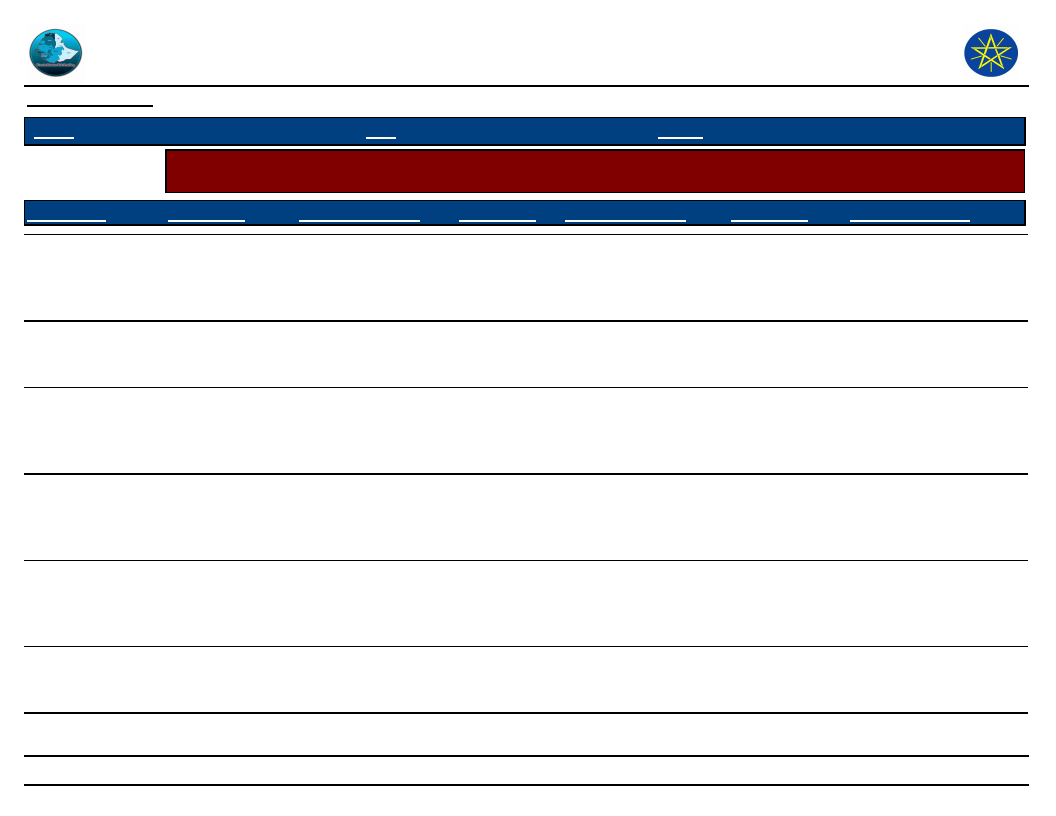
Wereda Disaster
Risk Profile
Data_Collected_Date
Disaster Risk Management and Food
Security Sector (DRMFSS)
Thursday, September 4, 2014
Region S.N.N.P
Zone
HADIYA
Wereda MIRAB BADAWOCHO
Selected Indicator
Kebele Name
Interventions: Community Perception on Mediums to Influence DRM Actors - Community perception on the
effectiveness of institutional channels to use to influence DRM actors
Institution_1
Process_Description
Institution_2 Process_Description
Institution_3
Process_Description
2GNA KOTO
HAWORA
ELIFETA
YA BUKUNA
WADA
SEPERA
Development
agents
Kebele authority
Development
agents
Development
agents
Development
agents
Kebele authority
Report the
information for
wereda agricultural
office
Reporting the
kebele information
for agricultural
development office
It take the
information and
report for the
wereda
It announce the
hazard to wereda
Community
representative
at wereda
level
Wereda
authority
Kebele
authority
Through our kebele
authorities
Wereda authority
report to the top
authority
Report to wereda
administrator
Through kebele
chair person
Through our kebele
authorities
Directly from
top authority
Top authority measure
to alleviate hazards
kebele
administration
kebele
administration
Reporting the
information to
wereda
administration
It report for the
wereda
administration
Wereda
authority
Wereda announce our
problem to top
authority
Directly from
top authority
Top authority measure
to alleviate hazards
248
Page 2 of 4
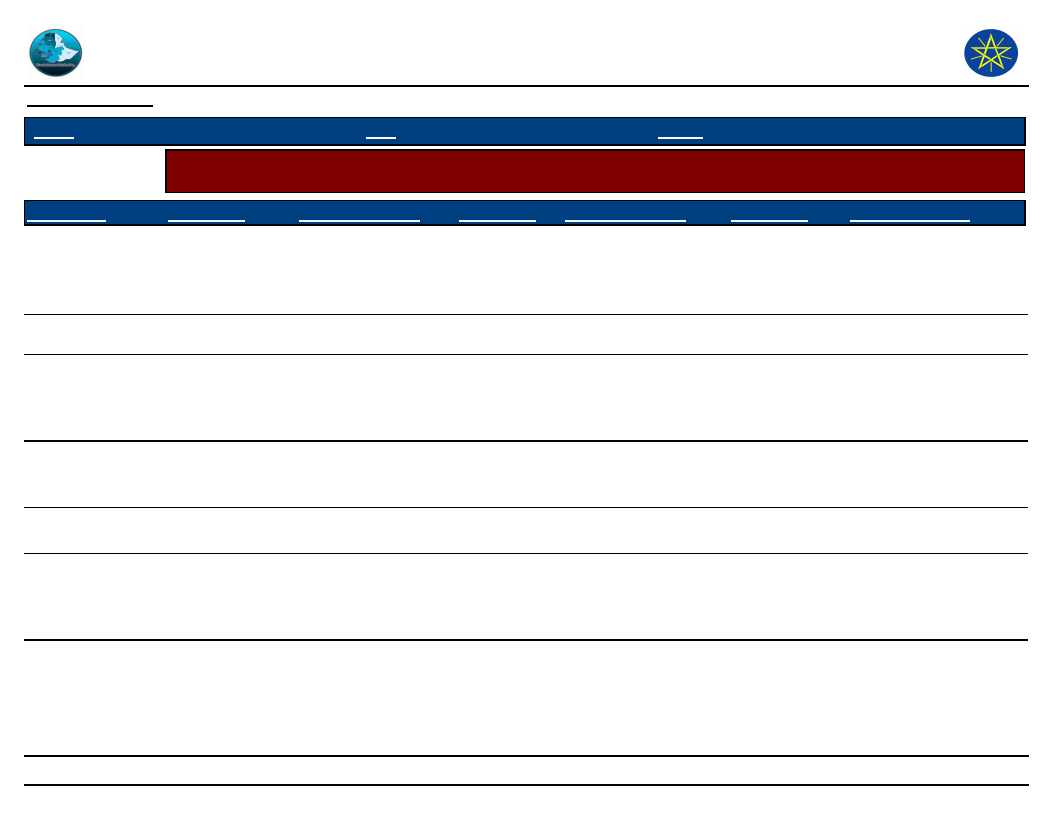
Wereda Disaster
Risk Profile
Data_Collected_Date
Disaster Risk Management and Food
Security Sector (DRMFSS)
Thursday, September 4, 2014
Region S.N.N.P
Zone
HADIYA
Wereda MIRAB BADAWOCHO
Selected Indicator
Interventions: Community Perception on Mediums to Influence DRM Actors - Community perception on the
effectiveness of institutional channels to use to influence DRM actors
Kebele Name
KACHA BIRA
1GNA KOTO
Institution_1
Development
agents
Process_Description
Reporting the
kebele information
for agricultural
development office
Institution_2
Local
authorities
Process_Description
Reporting the
information to
wereda
administration
Institution_3
Process_Description
DANAMA
DANAMA 01
2nd KESHORA
WADA 01
FIRST KASHERA
Development
agents
Through the wereda
administration
Community
representative at
wereda level
Development
agents
Kebele
development
agents
Kebele
development
agents
Through the wereda
administration
Through the kebele
authorities
Report the
information for
wereda agricultural
office
Report the
information for
wereda agricultural
office
Community
representative
at wereda
level
Through
kebele chair
man
Community
representative
Local
authorities
Through our kebele
authorities
Through our kebele
authorities
Through wereda
administration
Report for the wereda
administration and
for other sectors
Through kebele
chair person
Local
authorities
Report for the wereda
administration and
for other sectors
249
Page 3 of 4
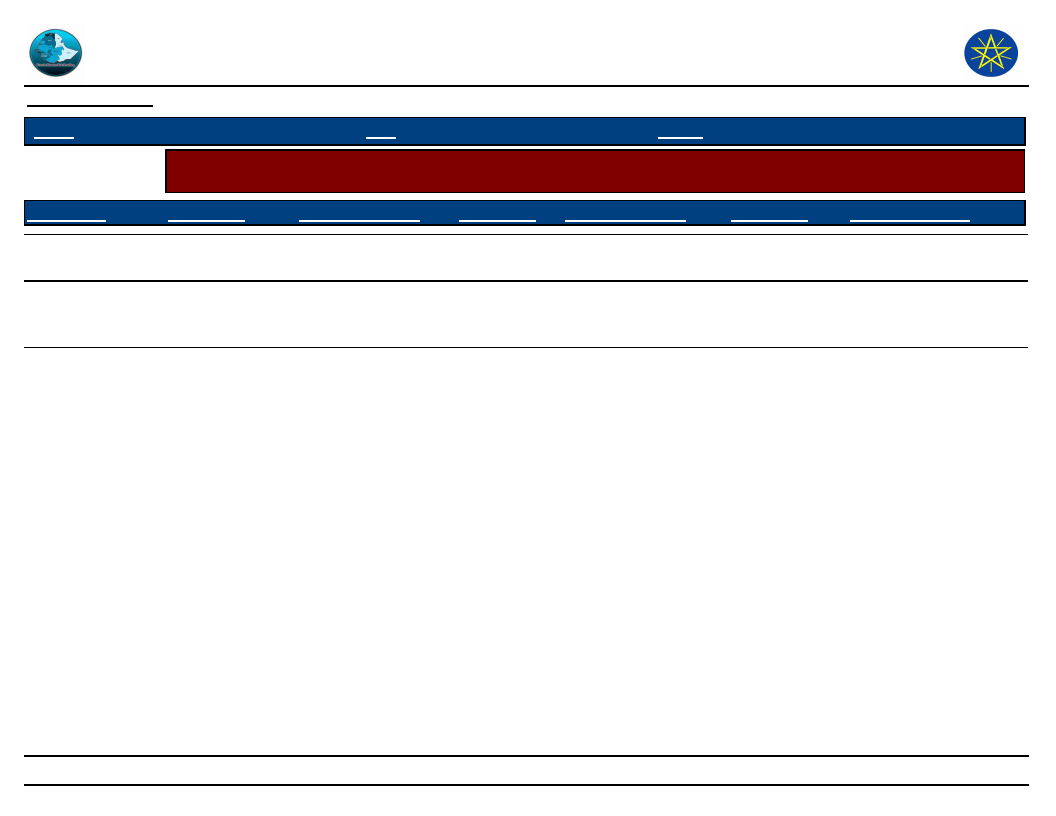
Wereda Disaster
Risk Profile
Data_Collected_Date
Disaster Risk Management and Food
Security Sector (DRMFSS)
Thursday, September 4, 2014
Region S.N.N.P
Zone
HADIYA
Wereda MIRAB BADAWOCHO
Selected Indicator
Kebele Name
Interventions: Community Perception on Mediums to Influence DRM Actors - Community perception on the
effectiveness of institutional channels to use to influence DRM actors
Institution_1
Process_Description
Institution_2 Process_Description
Institution_3
Process_Description
JARSO MAJORIYA
OFFDAA
Development
agents
Development
agents
MIRAB AJEBA
Development
agents
Reporting for
wereda
Contact with wereda
agricultural
development office
Reporting to wereda
Kebele local
administration
Contact with wereda
administration
Local kebele
administration
Reporting the
information to
wereda
administration
250
Page 4 of 4
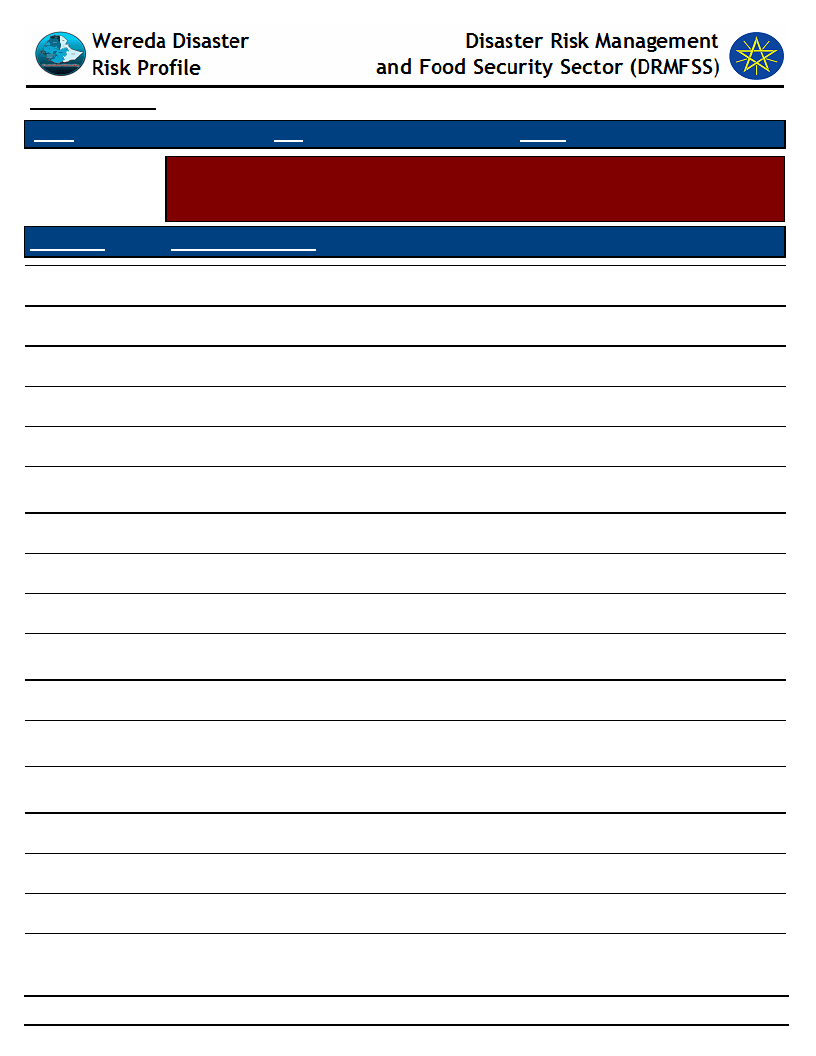
Data_Collected_Date
Region S.N.N.P
Zone
HADIYA
Thursday, September 4, 2014
Wereda MIRAB BADAWOCHO
Selected Indicator
Interventions: Community Perception on their Knowledge used in DRM Process -
Perception of the community on how their knowledge influences the priorities
and measures of DRM actors
KebeleName
Community_Suggestions
1GNA KOTO
Low community participation
2GNA KOTO
Good governance and cooperates the communities
DEDO
Good governance and cooperates the communities
ELIFETA
Low participation in their planning program
GERIBO
Good governance and cooperates the communities
HAWORA
JARISO ONIJOJO
Positive attitude of the community, good governance and cooperates the
communities
Good governance and cooperates the communities
KACHA BIRA
Low community participation
DANAMA 01
Good governance and cooperates the communities
SEPERA
SIBEYA
Cooperation and unity of our community, good governance and positive attitude of
the community
Good governance and cooperates the communities
WADA
WEBARANA
OFODA
WEREBOYA
Occasionally we involve in some meeting, so our suggestion are some items
considered in the priorities and measures
Good governance and cooperates the communities
Good governance and cooperates the communities
YA BUKUNA
Low community participation
DANAMA
Good governance and cooperates the communities
2nd KESHORA
Good governance and cooperates the communities
251
Page 1 of 2
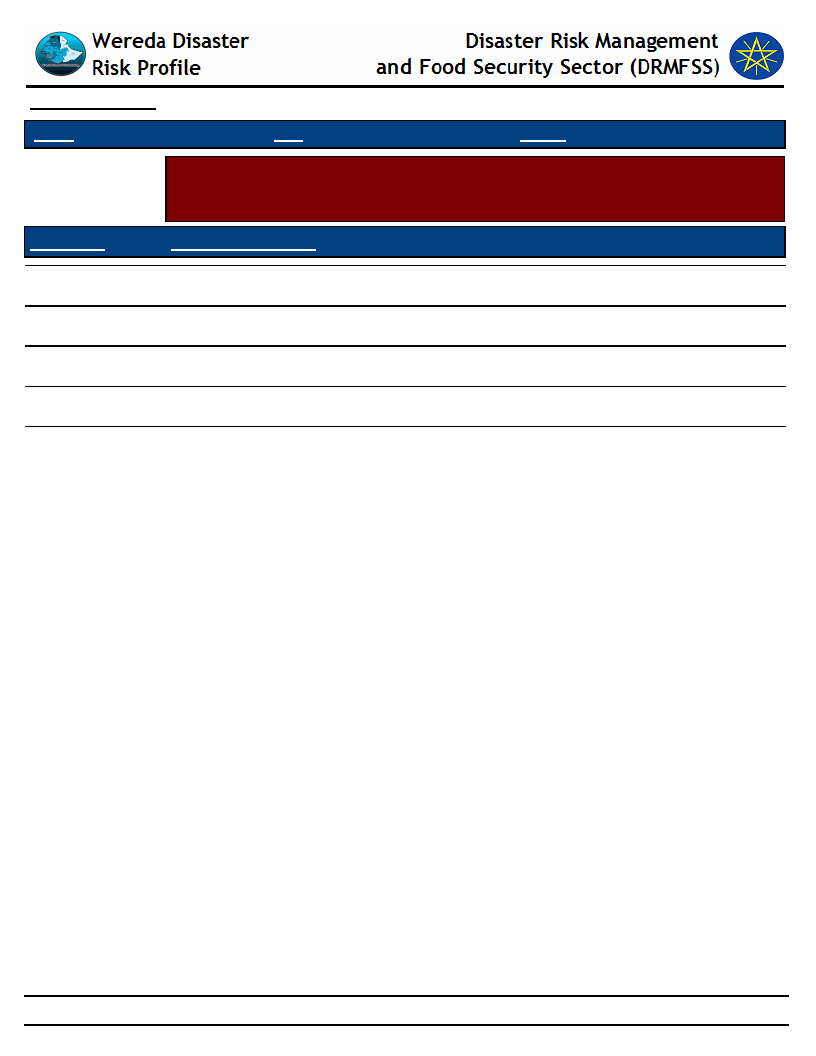
Data_Collected_Date
Region S.N.N.P
Zone
HADIYA
Thursday, September 4, 2014
Wereda MIRAB BADAWOCHO
Selected Indicator
Interventions: Community Perception on their Knowledge used in DRM Process -
Perception of the community on how their knowledge influences the priorities
and measures of DRM actors
KebeleName
Community_Suggestions
WADA 01
Less participation
FIRST KASHERA
Less participation
JARSO MAJORIYA
Low community participation
OFFDAA
Less participation, low monitoring and evaluation
MIRAB AJEBA
Low community participation
252
Page 2 of 2
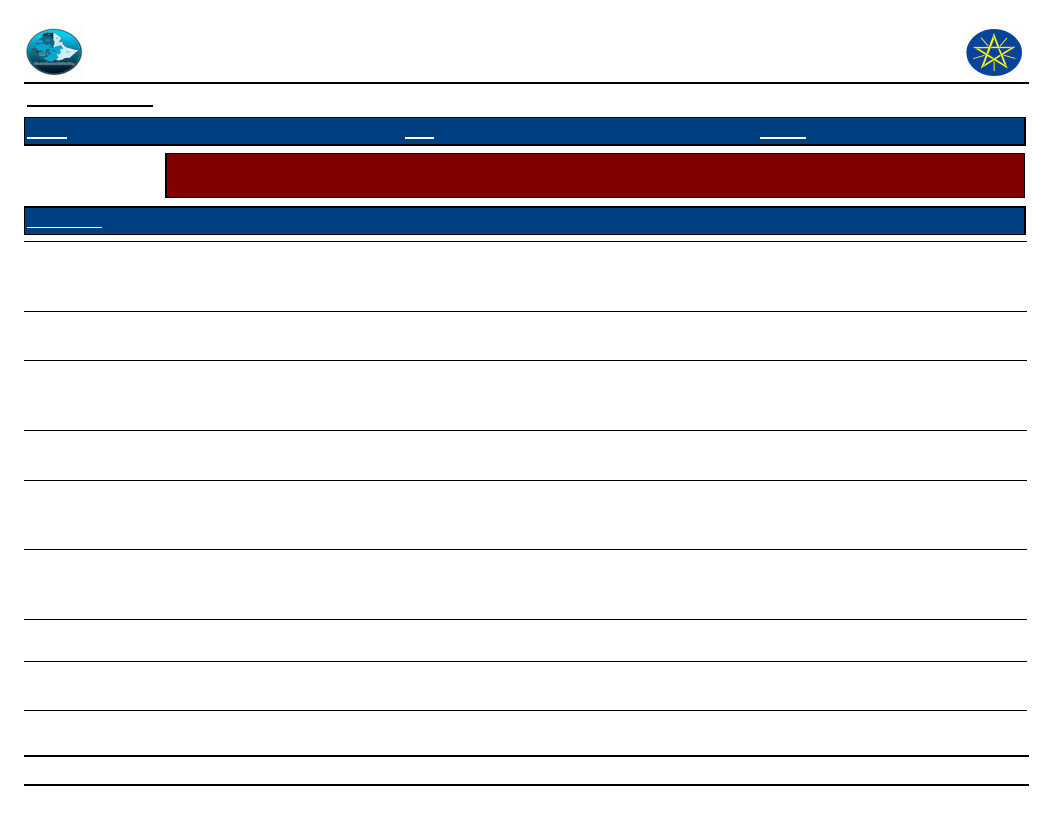
Wereda Disaster
Risk Profile
Data_Collected_Date
Region S.N.N.P
Zone HADIYA
Disaster Risk Management
and Food Security Sector (DRMFSS)
Thursday, September 4, 2014
Wereda MIRAB BADAWOCHO
Selected Indicator
Interventions: Suggestions to improve preparedness - Interventions suggested by the community to development
actors to improve preparedness in the area
KebeleName
Measure 1
Comment 1
Measure 2
Comment 2
Measure 3
Comment 3
DEDO
Building green bank
During the bad time
WEBARANA
OFODA
JARISO ONIJOJO
Giving training about the
risk to the community
Building green bank
SIBEYA
GERIBO
Building green bank
Building green bank
Helping people from the
risk
Using for bad time
WEREBOYA
2GNA KOTO
To increase saving and
credit services
During the bad time
To giving saving and
credit
Increasing saving and
credit services
Giving training about
risk for the
community
To increase saving
and credit
To give saving and
credit services
Building green bank
Helping people to
protect the bad
time
during the bad
time
Helping the
people during bad
time
Helping people to
protect the bad
time
HAWORA
To give training on soil
and water management
To conserve soil and
water
To give emphasis on
afforestation
It recover the
environment
253
Page 1 of 3
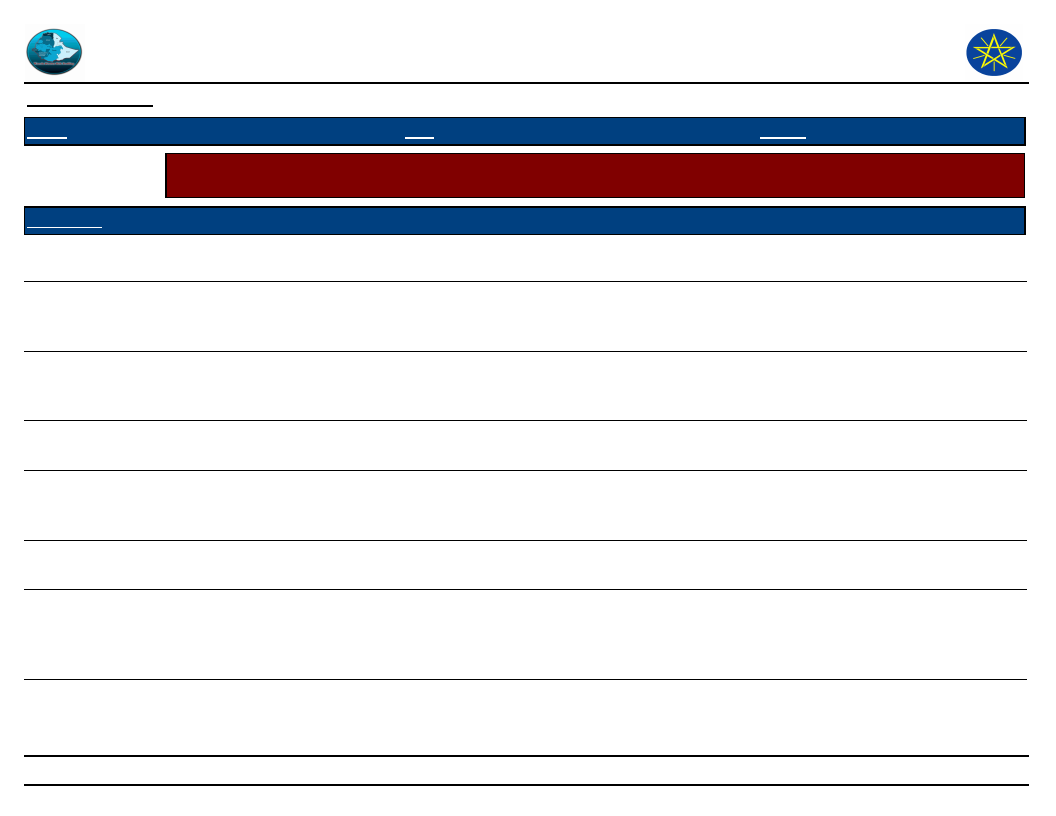
Wereda Disaster
Risk Profile
Data_Collected_Date
Region S.N.N.P
Zone HADIYA
Disaster Risk Management
and Food Security Sector (DRMFSS)
Thursday, September 4, 2014
Wereda MIRAB BADAWOCHO
Selected Indicator
Interventions: Suggestions to improve preparedness - Interventions suggested by the community to development
actors to improve preparedness in the area
KebeleName
ELIFETA
YA BUKUNA
WADA
SEPERA
KACHA BIRA
1GNA KOTO
DANAMA
DANAMA 01
Measure 1
Irrigation
Irrigation
Giving training about the
risk to the community
To give emphasis in soil
and water managements
Constructing grain bank
Irrigation
Building green bank
Building green bank
Comment 1
Narrow the gap of rain
Narrow the gap of rain
The first tool to combat
the risk
Our life is based on soil
and water
Farmer can save grain for
bad time
Narrow the gap of rain
Used during the bad time
Measure 2
Credit and saving
Environment
conservation
Building green bank
To give emphasis on
afforestation
Producing credit and
saving service
Focusing on basic
infrastructure
To give saving and
credit services
Helping people for the risk
To increase saving
and credit
Comment 2
It help to run
other business
If environment is
conserved, then
next step is easy
Key point during
bad time/ reduce
extravagancy
It recover the
environment
Farmer can save
and exchange
their commodity
Basis for other
expansion
Helping the
people during bad
time
using for the bad
time
Measure 3
To giving
training
about the
risk
Comment 3
254
Page 2 of 3
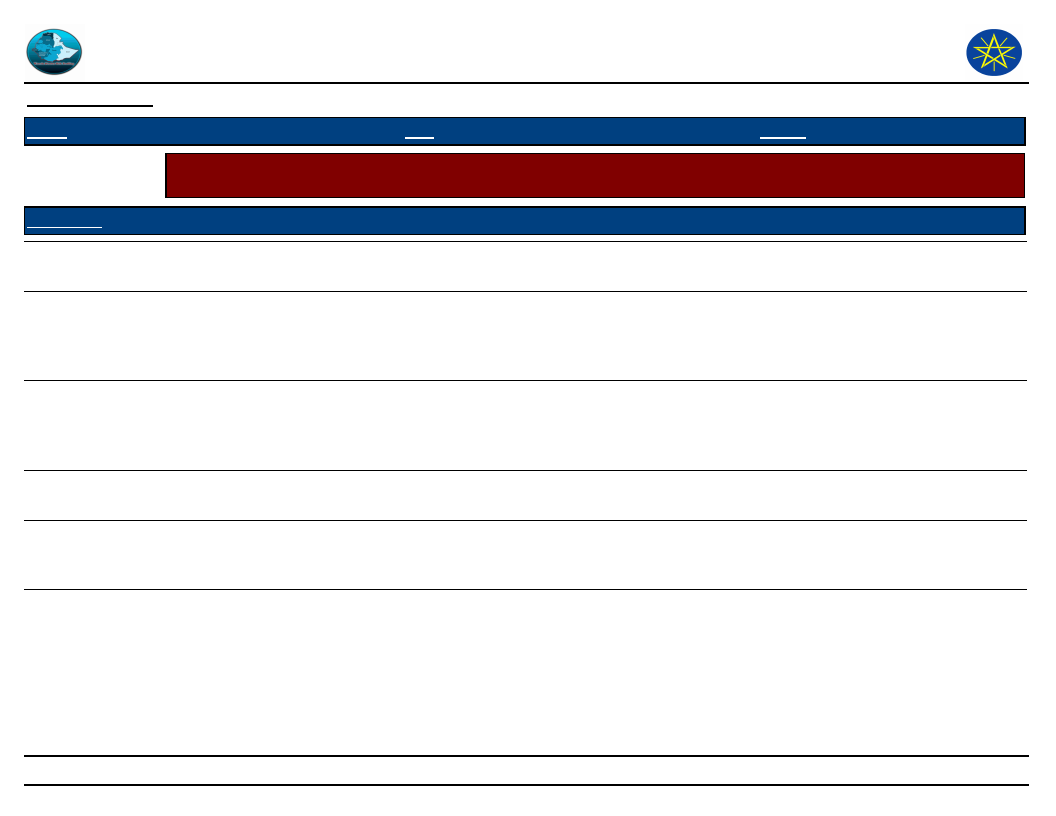
Wereda Disaster
Risk Profile
Data_Collected_Date
Region S.N.N.P
Zone HADIYA
Disaster Risk Management
and Food Security Sector (DRMFSS)
Thursday, September 4, 2014
Wereda MIRAB BADAWOCHO
Selected Indicator
Interventions: Suggestions to improve preparedness - Interventions suggested by the community to development
actors to improve preparedness in the area
KebeleName
Measure 1
Comment 1
Measure 2
Comment 2
Measure 3
Comment 3
2nd KESHORA
WADA 01
Giving training about the
risk to the community
Focusing on soil and
water conservation
activities
To aware the community
about risk
Best for agricultural
productivities
FIRST KASHERA
Focusing on soil and
water conservation
activities
Based for agricultural
productivity
JARSO
MAJORIYA
OFFDAA
Irrigation
Irrigation
Narrow the gap of rain
Narrow the gap of rain
MIRAB AJEBA
Focus on irrigation
activities
Narrow the gap of rain
Increasing saving and
credit services
Focusing on grain
storage construction
Focusing on grain
storage construction
Constructing grain
bank
Funding for
cooperative group
Soil and water
conservation
during the bad
time
It help for farmer
in order to save
their grain
Help farmer in
order to save their
grain
They can save
their grain
Help for farmer to
run other
activities
Increase the
productivities
Funding and
cooperative
organization
activities
They can
participate on
trading and
other work
Funding and
cooperative
organization
activities
They can
participate on
trading and
other work
Funding
They can run
other business
Building
grain bank
They can save
their grain
Providing
fund for
other
activities
Create other
job
opportunities
for the
farmer
255
Page 3 of 3
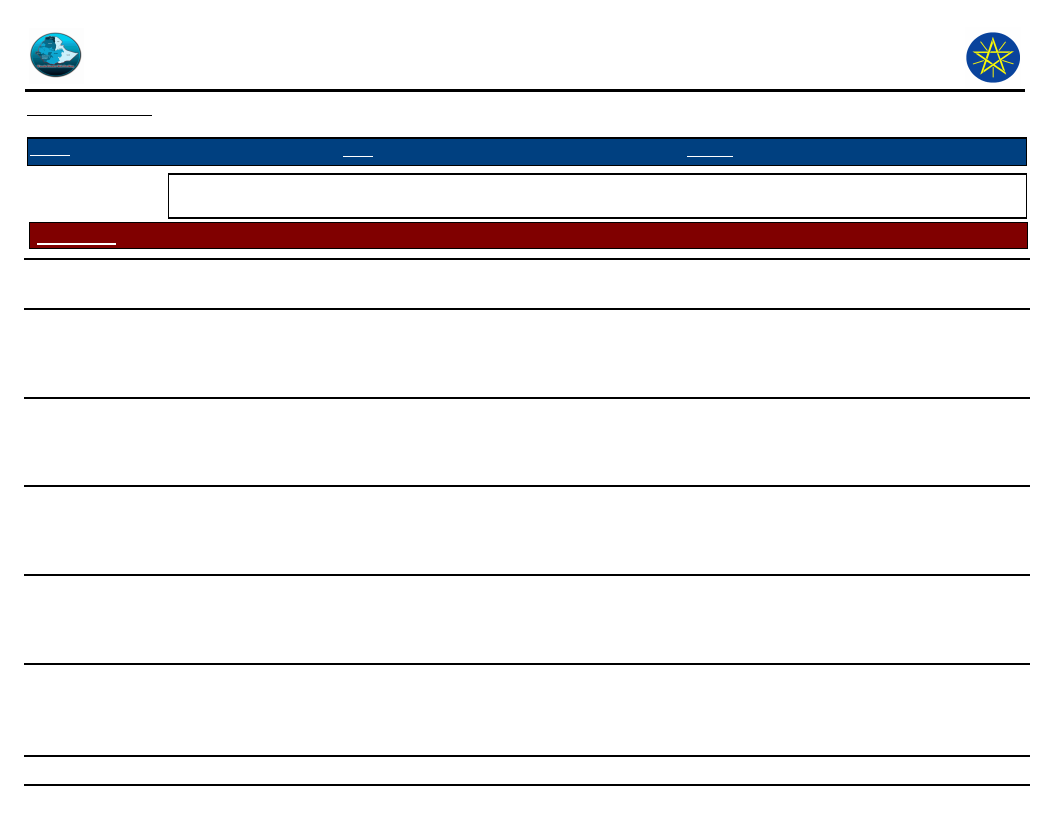
Wereda Disaster
Risk Profile
Data_Collected_Date
Disaster Risk Management and
Food Security Sector (DRMFSS)
Thursday, September 4, 2014
Region S.N.N.P
Zone HADIYA
Wereda MIRAB BADAWOCHO
Selected Indicator
Interventions: Suggestions to DRM Actors in the Area - Community suggested measures to DRM actors in the area
for effective DRM actions
Kebele Name Measure 1
Comment 1
Measure 2
Comment 2
Measure 3
Comment 3
DEDO
WEBARANA
OFODA
JARISO
ONIJOJO
SIBEYA
GERIBO
WEREBOYA
Road construction
Established saving
and credit services
Established saving
and credit services
Established saving
and credit services
Established saving
and credit services
Established saving
and credit services
It strength
market channels
People have
knowledge of
trading but have
not money
People have
knowledge of
trading but have
not money
People have
knowledge of
trading but have
not money
People have
knowledge of
trading but have
not money
People have
knowledge of
trading but have
not money
School construction
Road construction
Road construction
Road construction
Road construction
Road construction
256
People improve
the knowledge
It strength market
chains
Market strength
Health post
construction
It giving good
opportunities
It keep wellbeing
of human
It strength market
chains
Health post
construction
It keep wellbeing
of human
It strength market
channels
Health post
construction
It keep wellbeing
of human
It strength the
market channels
and it reduce
transportation cost
It strength market
channels
Health post
construction
Health post
construction
It keep wellbeing
of human
It keep wellbeing
of human
Page 1 of 4
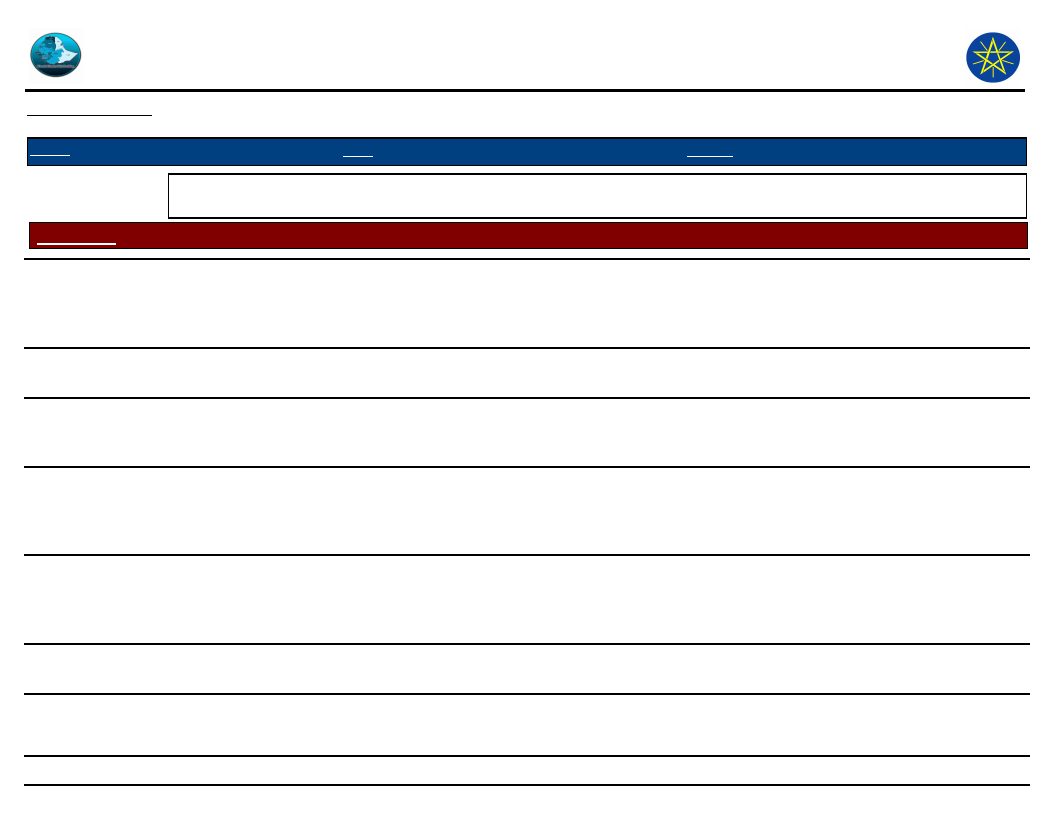
Wereda Disaster
Risk Profile
Data_Collected_Date
Disaster Risk Management and
Food Security Sector (DRMFSS)
Thursday, September 4, 2014
Region S.N.N.P
Zone HADIYA
Wereda MIRAB BADAWOCHO
Selected Indicator
Interventions: Suggestions to DRM Actors in the Area - Community suggested measures to DRM actors in the area
for effective DRM actions
Kebele Name Measure 1
Comment 1
Measure 2
Comment 2
Measure 3
Comment 3
2GNA KOTO
HAWORA
ELIFETA
YA BUKUNA
WADA
SEPERA
Established saving
and credit services
To give awareness
creation
Strong monitoring
and evaluation
Strengthen
monitoring and
evaluation
Established saving
and credit services
Awareness creation
People have
knowledge of
trading but have
not money
It is the base of
all activities
Reduce the gap of
resource wastage
People have
knowledge of
trading but have
not money
It is the base of
all activities
Road construction
Road and health
service expansion
They should participate
the community in their
planning
Participating the
community in their
program planning and
belongingness
Road construction
Saving and credit
service
It strength market
channels
Health post
construction
It keep wellbeing
of human
It facilitate
development
Saving and credit
service
It recover during
after hazard
Develop the sense
of belongingness
It strength the
market channels
and it reduce
transportation cost
It recover during
and after hazards
Health post
construction
Road, health
service expansion
It keep wellbeing
of human
It facilitate
development
257
Page 2 of 4
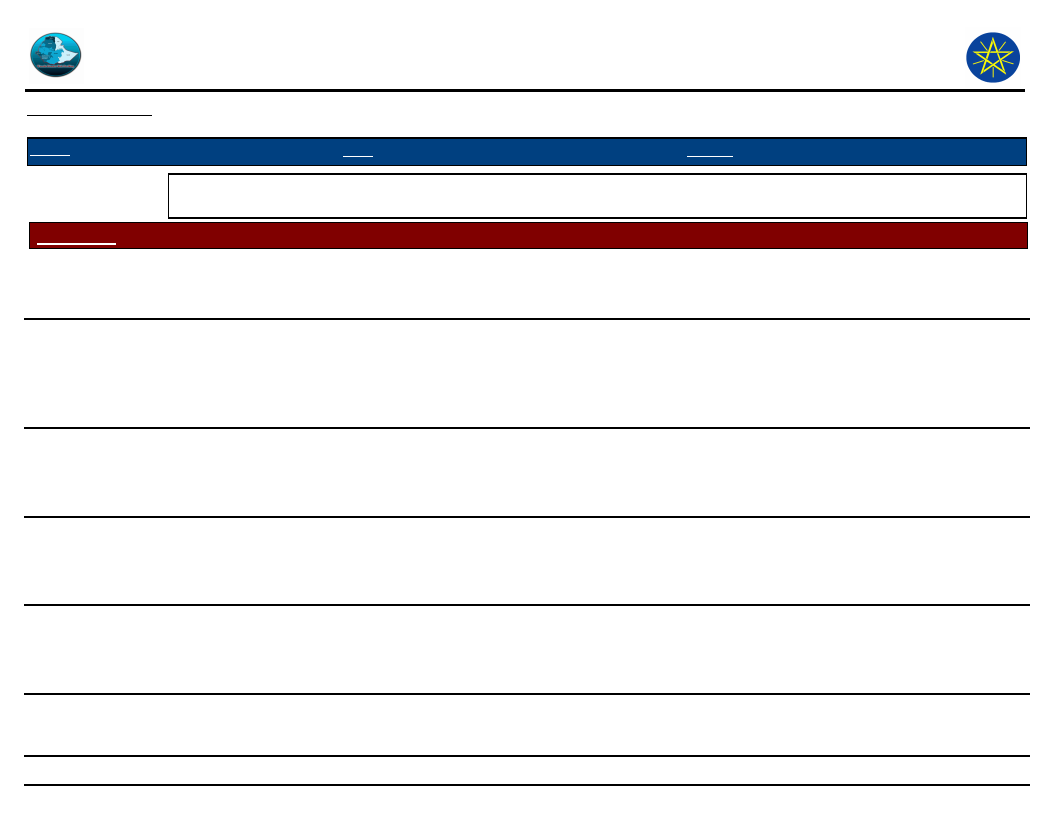
Wereda Disaster
Risk Profile
Data_Collected_Date
Disaster Risk Management and
Food Security Sector (DRMFSS)
Thursday, September 4, 2014
Region S.N.N.P
Zone HADIYA
Wereda MIRAB BADAWOCHO
Selected Indicator
Interventions: Suggestions to DRM Actors in the Area - Community suggested measures to DRM actors in the area
for effective DRM actions
Kebele Name
KACHA BIRA
Measure 1
Need of strong
monitoring and
evaluation system
Comment 1
It reduce
resource wastage
Measure 2
Participating the
community actively in
to their project
Comment 2
It develop the
belongingness
Measure 3
Creating
awareness
1GNA KOTO
Active community
participation,
Strong monitoring
and evaluation
Strength their
weak side and
wake up the
community in to
their goal
Cooperative with a
government agencies
Reducing delaying
of sowing time
DANAMA
Established saving
and credit services
people have
knowledge of
trading but have
not money
Road construction
It strength market
channels
Health post
construction
DANAMA 01
Established saving
and credit services
people have
knowledge of
trading but have
not money
Road construction
It strength market
channels
Health post
construction
2nd KESHORA
Established saving
and credit services
people have
knowledge of
trading but have
not money
Road construction
It strength market
channels
Health post
construction
Comment 3
It reduce
dependency
It keep wellbeing
of human
It keep wellbeing
of human
It keep wellbeing
of human
258
Page 3 of 4
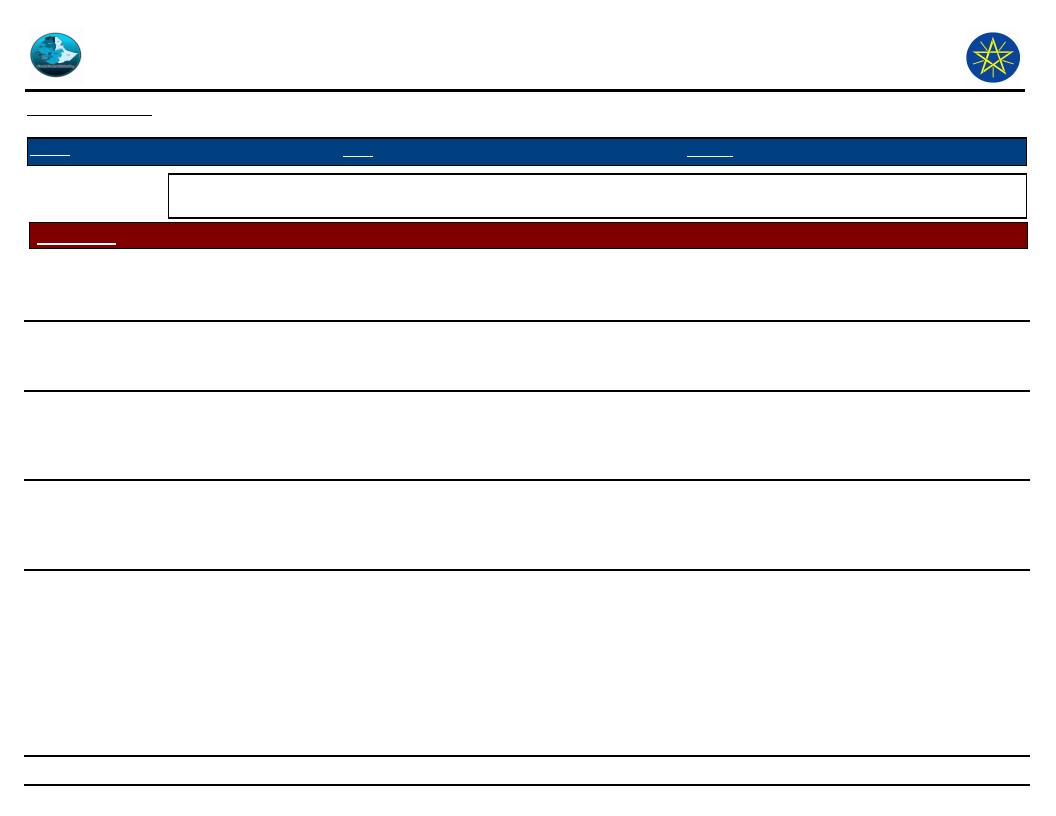
Wereda Disaster
Risk Profile
Data_Collected_Date
Disaster Risk Management and
Food Security Sector (DRMFSS)
Thursday, September 4, 2014
Region S.N.N.P
Zone HADIYA
Wereda MIRAB BADAWOCHO
Selected Indicator
Interventions: Suggestions to DRM Actors in the Area - Community suggested measures to DRM actors in the area
for effective DRM actions
Kebele Name
WADA 01
Measure 1
Active participation
of the community
Comment 1
Easily working
process
Measure 2
Creating awareness
Comment 2
Enhance their
implementing
process
Measure 3
Soil and water
conservation
FIRST KASHERA
Active participation
of the community
Easily working
process
Creating awareness
Enhance their
implementing
process
Soil and water
conservation
JARSO
MAJORIYA
Strong monitoring
and evaluation
Increase their
effectiveness
Strong community
participation
Develop
possessation
Cooperative
working with
government
agreement
JARSO
MAJORIYA
Strong monitoring
and evaluation
Reduce the gap of
resource wastage
Strong community
participation
Create the
belongingness
Strong
cooperation with
government
agencies
MIRAB AJEBA
Construction of
basis of
infrastructure/
water, road,
electricity/
It is the base of
all activities
Building of health
center and school
Basiss for all
activities
Irrigation
Comment 3
Help for
increment of
their productivity
Help for
increment of
their productivity
Reduce time and
resource wastage
facilitate the
activity
Narrow the gap
of rain
259
Page 4 of 4
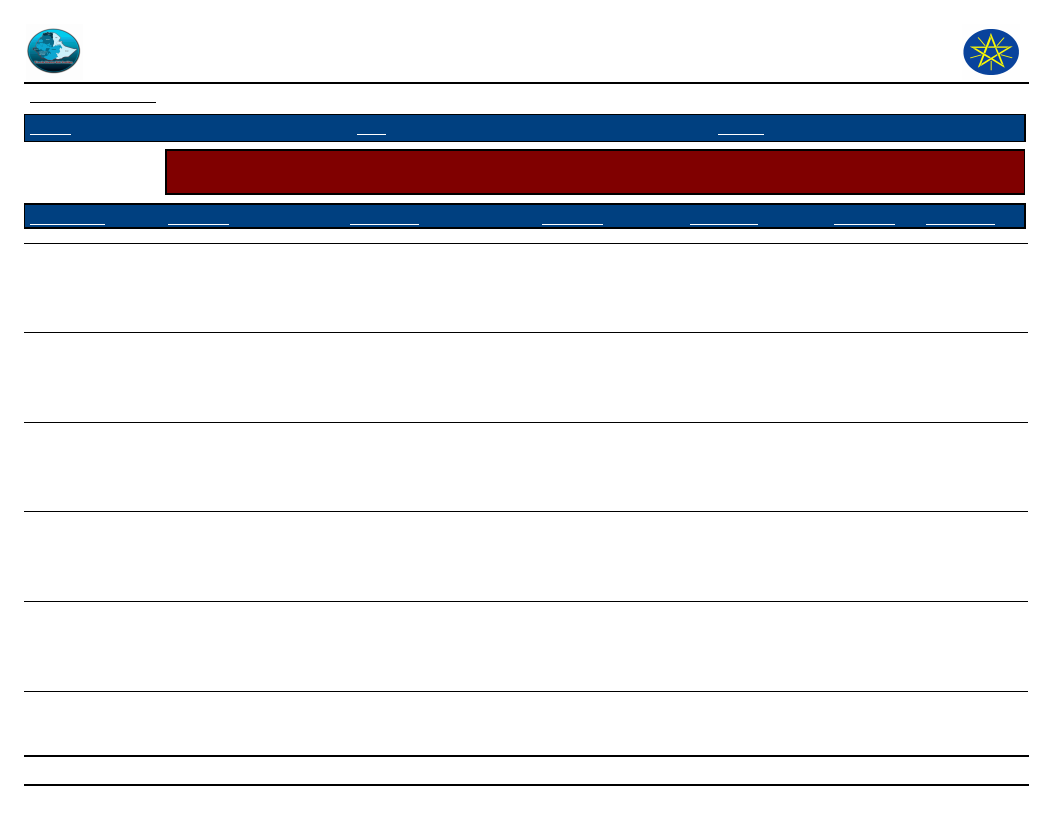
Wereda Disaster
Risk Profile
Data_Collected_Date
Region S.N.N.P
Zone HADIYA
Disaster Risk Management and Food
Security Sector (DRMFSS)
Thursday, September 4, 2014
Wereda MIRAB BADAWOCHO
Selected Indicator
Economic Vulnerability: Community Suggestions to Improve Economic Situation - Community suggested measures
to improve the economic situation of the area
KebeleName
Measure 1
Comment 1
Measure 2
Comment 2
Measure 3 Comment 3
DEDO
Trading
WEBARANA
OFODA
Trading
JARISO ONIJOJO
Trading
SIBEYA
Trading
GERIBO
Trading
Not affected by hazard
easily
Daily Labour
Not affected by hazard
easily
Daily Labour
Not affected by hazard
easily
Daily Labour
Not affected by hazard
easily
Daily Labour
Not affected by hazard
easily
Daily Labour
Not affected by
drought
Not affected by
drought
Not affected by
drought
Not affected by
drought
Not affected with
drought
Group work
Group work
Group work
Group work
Group work
It gives
strength for
the
community
It gives
strength for
the
community
It gives
strength for
the
community
It gives
strength for
the
community
It gives
strength for
the
community
260
Page 1 of 4
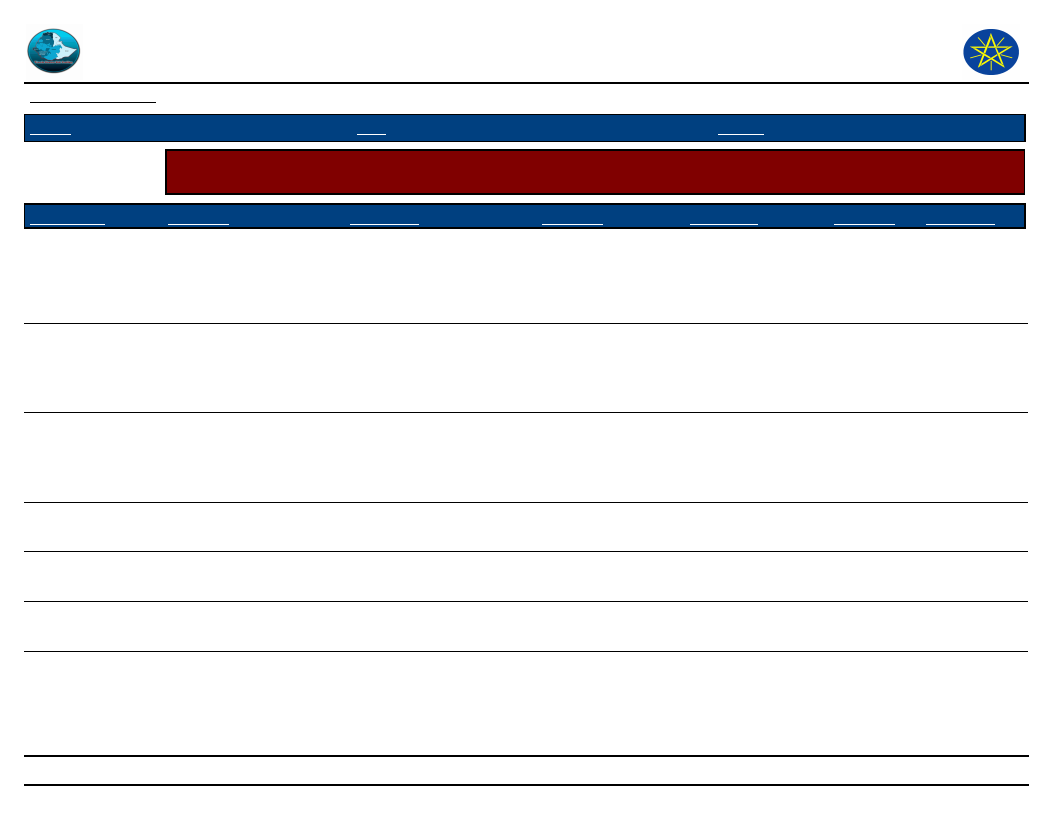
Wereda Disaster
Risk Profile
Data_Collected_Date
Region S.N.N.P
Zone HADIYA
Disaster Risk Management and Food
Security Sector (DRMFSS)
Thursday, September 4, 2014
Wereda MIRAB BADAWOCHO
Selected Indicator
Economic Vulnerability: Community Suggestions to Improve Economic Situation - Community suggested measures
to improve the economic situation of the area
KebeleName
WEREBOYA
Measure 1
Trading
2GNA KOTO
Trading
HAWORA
Trading
ELIFETA
YA BUKUNA
WADA
SEPERA
Irrigation should be
highly recommended
Irrigation should be
highly recommended
Trading
Inter cropping
Comment 1
Not affected by hazard
easily
Not affected by hazard
easily
Not affected by hazard
easily
Narrowing the gap of rain
Narrowing the gap of rain
Not diminish with risk
easily
Compensate family food
Measure 2
Daily Labour
Daily Labour
Daily Labour
Developing saving
habit
Group work
early land
preparation
Comment 2
Not affected with
drought
Not affected with
drought
Not affected with
drought
Bank for bad time
Measure 3
Group work
Group work
Group work
Comment 3
It gives
strength for
the
community
It gives
strength for
the
community
It gives
strength for
the
community
It gives strength
Hold moisture
Soil and
water
conservation
Keep soil
structure
261
Page 2 of 4
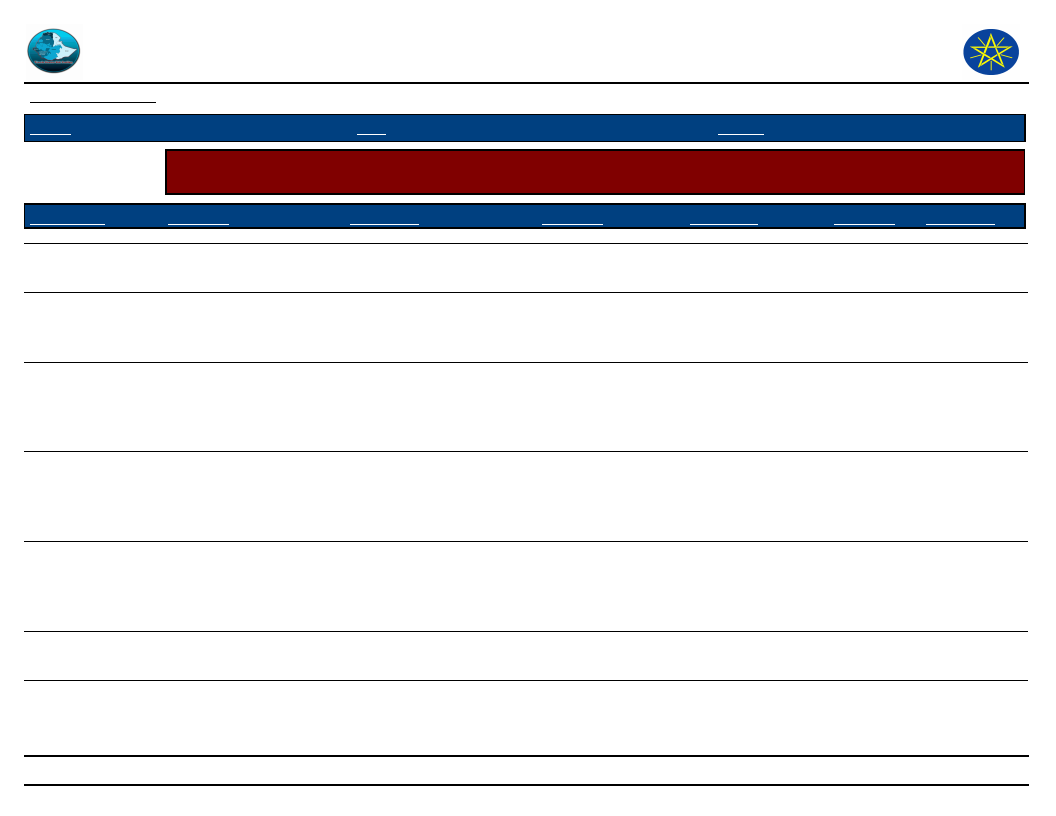
Wereda Disaster
Risk Profile
Data_Collected_Date
Region S.N.N.P
Zone HADIYA
Disaster Risk Management and Food
Security Sector (DRMFSS)
Thursday, September 4, 2014
Wereda MIRAB BADAWOCHO
Selected Indicator
Economic Vulnerability: Community Suggestions to Improve Economic Situation - Community suggested measures
to improve the economic situation of the area
KebeleName
Measure 1
Comment 1
Measure 2
Comment 2
Measure 3 Comment 3
KACHA BIRA
1GNA KOTO
Irrigation
Irrigation
It reduce waiting for rain
fall
Narrowing the gap of rain
Group work
1GNA KOTO
Trading
Not affected hazard
easily
Labour work
DANAMA 01
Trading
Not diminish with risk
easily
Labour work
2nd KESHORA
Trading
Not affected hazard
easily
Labour work
WADA 01
FIRST KASHERA
Irrigation should be
highly recommended
Irrigation should be
highly recommended
It reduce waiting for rain
fall
If reduce waiting for rain
fall
Strength their
power
Not affected by
drought
Not affected with
drought
Not affected with
drought
Saving
Group work
Group work
Group work
It helps
during hard
ship
It gives
strength for
the
community
It gives
strength for
the
community
It gives
strength for
the
community
262
Page 3 of 4
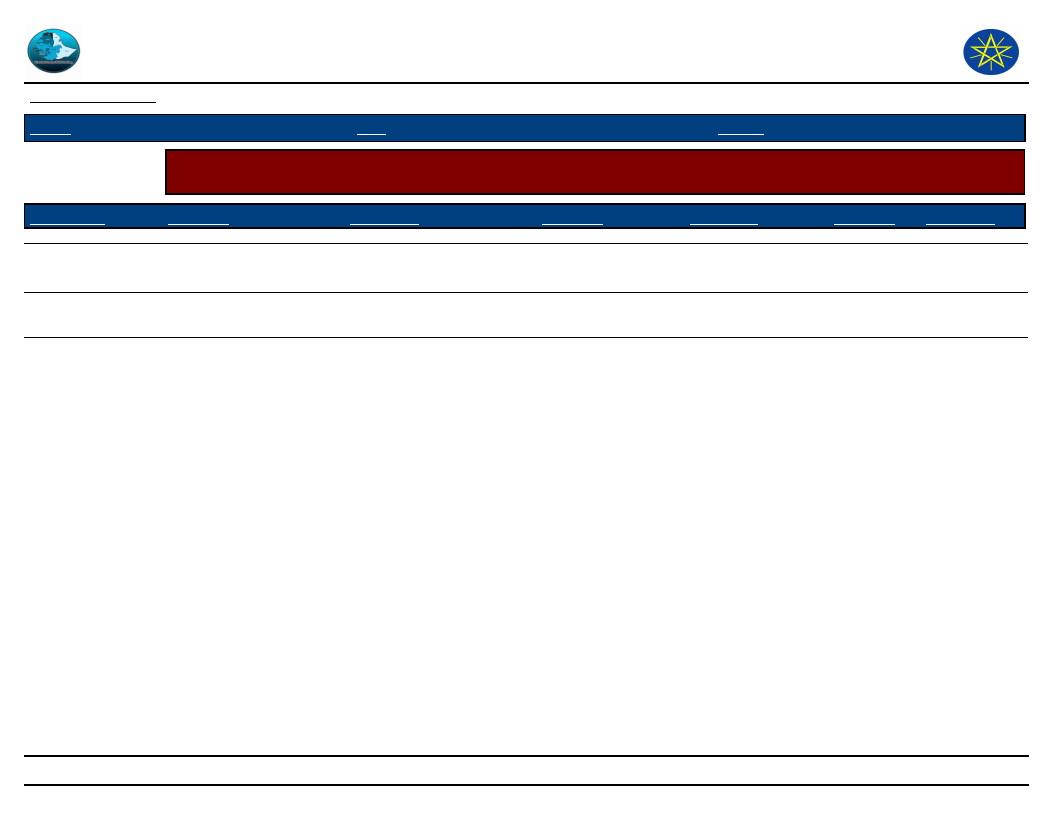
Wereda Disaster
Risk Profile
Data_Collected_Date
Region S.N.N.P
Zone HADIYA
Disaster Risk Management and Food
Security Sector (DRMFSS)
Thursday, September 4, 2014
Wereda MIRAB BADAWOCHO
Selected Indicator
Economic Vulnerability: Community Suggestions to Improve Economic Situation - Community suggested measures
to improve the economic situation of the area
KebeleName
Measure 1
Comment 1
Measure 2
Comment 2
Measure 3 Comment 3
JARSO MAJORIYA Trading
OFFDAA
Irrigation
Not easily diminished
with drought
Narrowing the gap of rain
Group work
Give more power
MIRAB AJEBA
Irrigation
It balances the time of
cultivation
263
Page 4 of 4
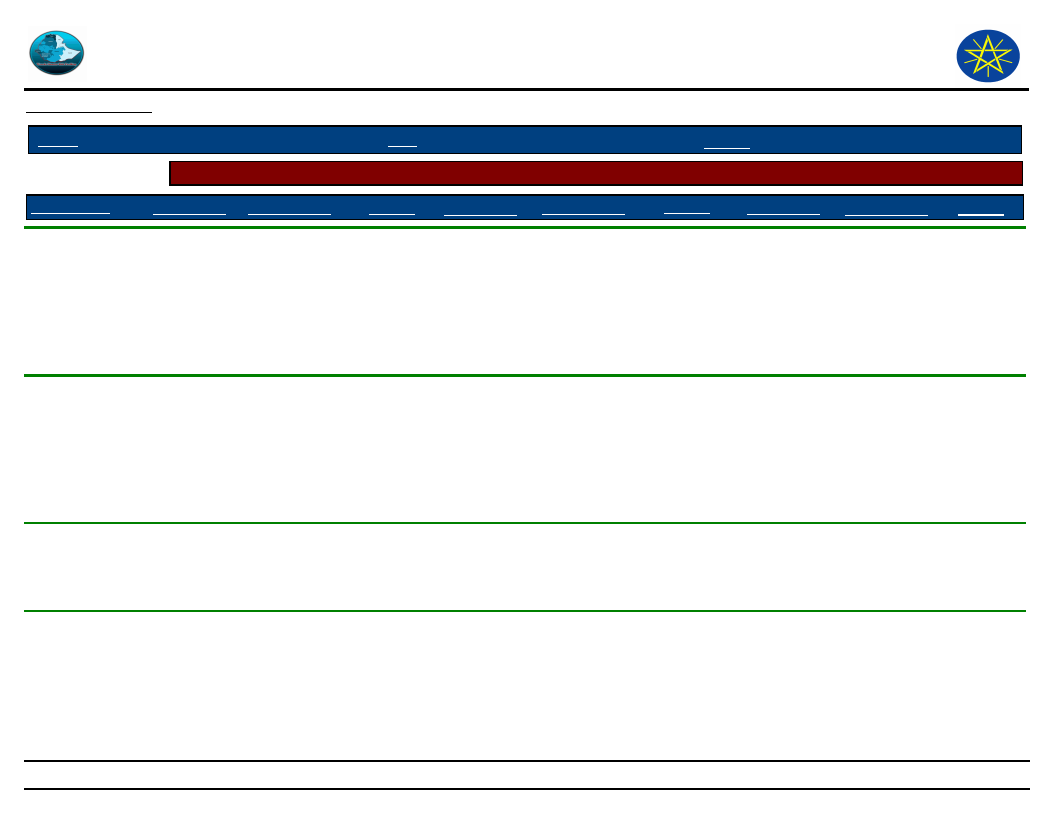
Wereda Disaster
Risk Profile
Data_Collected_Date
Disaster Risk Management and
Food Security Sector (DRMFSS)
Thursday, September 4, 2014
Region S.N.N.P
Zone HADIYA
Selected Indicator
Community Awareness of Disaster Risk Management System and Actors
Kebele Name
Institution 1 Responsibility
Activity Institution 2 Responsibility
Wereda MIRAB BADAWOCHO
Activity
Institution 3 Responsibility Activity
DEDO
Catholic
Doing
developmental
activities
WEBARANA
OFODA
World vision
Nutrition
program
JARISO ONIJOJO
World vision
Nutrition
program
SIBEYA
Catholic
Doing
developmental
activities
Doing
developm
ental
activities
like
building
FTC
Doing
developm
ental
activities
and food
distributio
n
They
distribute
nutrition
food
Doing
developm
ental
activities
like FTC
building
World vision
Nutrition
program
264
Nutrition
and food
distributio
n
World food
program
Doing
development
al activities
Doing
developm
ental
activities
like seed
green
bank
Page 1 of 8
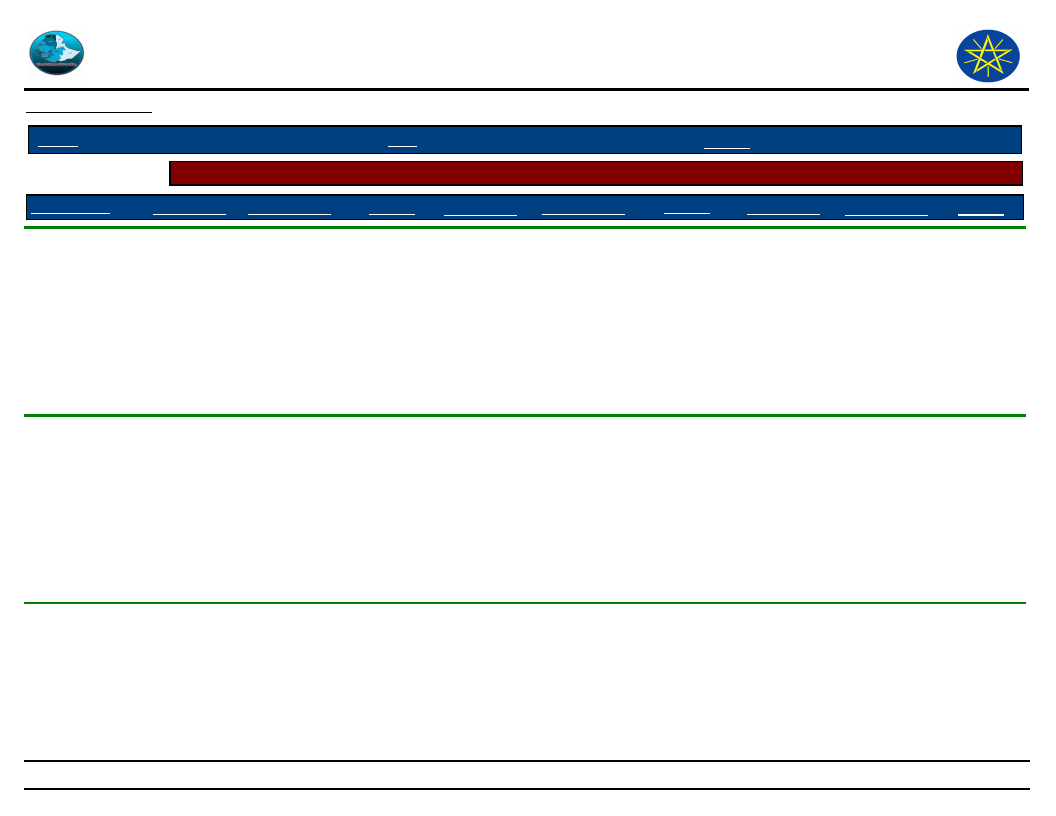
Wereda Disaster
Risk Profile
Data_Collected_Date
Disaster Risk Management and
Food Security Sector (DRMFSS)
Thursday, September 4, 2014
Region S.N.N.P
Zone HADIYA
Selected Indicator
Community Awareness of Disaster Risk Management System and Actors
Kebele Name
Institution 1 Responsibility
Activity Institution 2 Responsibility
Wereda MIRAB BADAWOCHO
Activity
Institution 3 Responsibility Activity
GERIBO
WEREBOYA
Catholic
Catholic
Doing
developmental
activities
Doing
developmental
activities
Doing
developm
ental
activities
like
farmer
training
center
building
Doing
developm
ental
activities
like
farmer
training
center
building
World vision
World vision
Nutrition
program
Doing
developmental
activities
Distributio
n of food
items and
other
seeds
Farm Africa
Doing
development
al activities
Doing
developm
ental
activities
Nutrition
food
distributio
n
265
Page 2 of 8
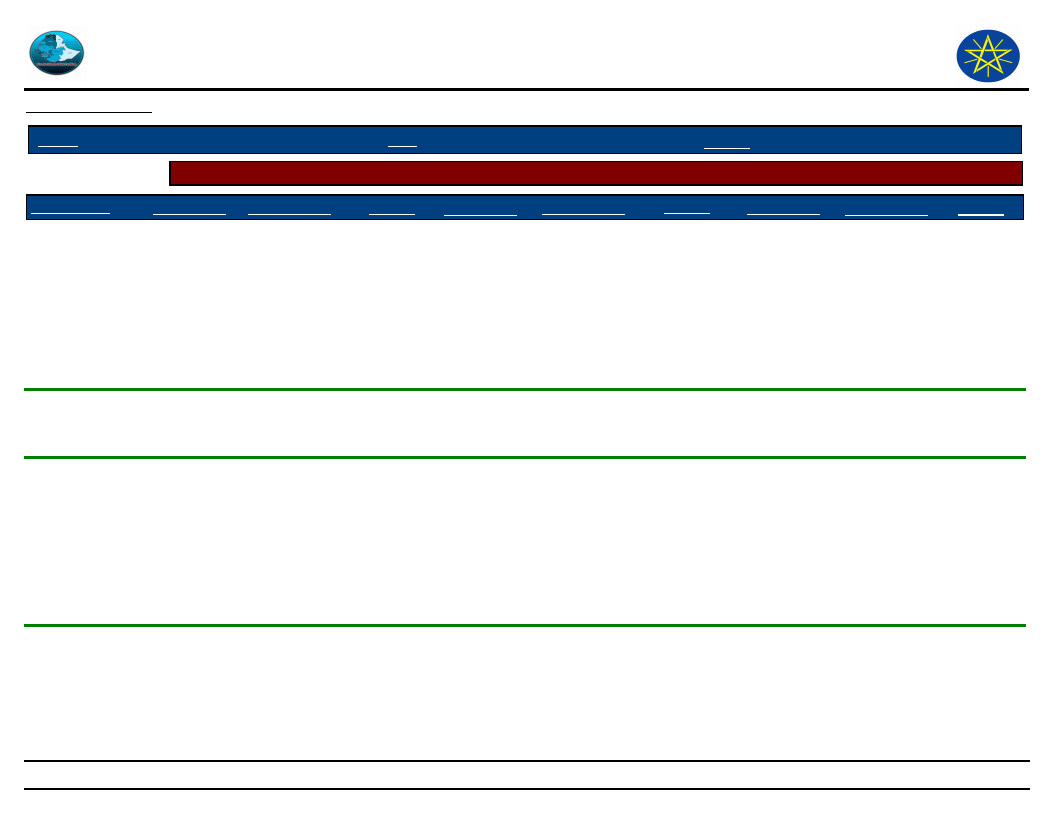
Wereda Disaster
Risk Profile
Data_Collected_Date
Disaster Risk Management and
Food Security Sector (DRMFSS)
Thursday, September 4, 2014
Region S.N.N.P
Zone HADIYA
Selected Indicator
Community Awareness of Disaster Risk Management System and Actors
Kebele Name
2GNA KOTO
Institution 1 Responsibility
Catholic
Doing
developmental
activities
Activity Institution 2
Doing
developm
ental
activities
and seed
distributio
ns
World vision
Responsibility
Nutrition
program
HAWORA
ELIFETA
Wereda food
security
Catholic
Ensuring food
security
services
Food security
Early
warning
activities
Kebele
authority
Irrigation,
livestock
distributio
n and
distributio
n of
improved
seeds
MSN/Sendoj
)
over
management
activities
Food security
Wereda MIRAB BADAWOCHO
Activity
Institution 3
Nutrition
food
distributio
n
Farm Africa
Awareness NGO
creation
Giving
training,
providing
fund and
cooperatin
g
Responsibility
Doing
development
al activities
Making
awareness
creation
Activity
Doing
developm
ental
program
like
livestock
productio
n
Forwardi
ng new
thing
266
Page 3 of 8
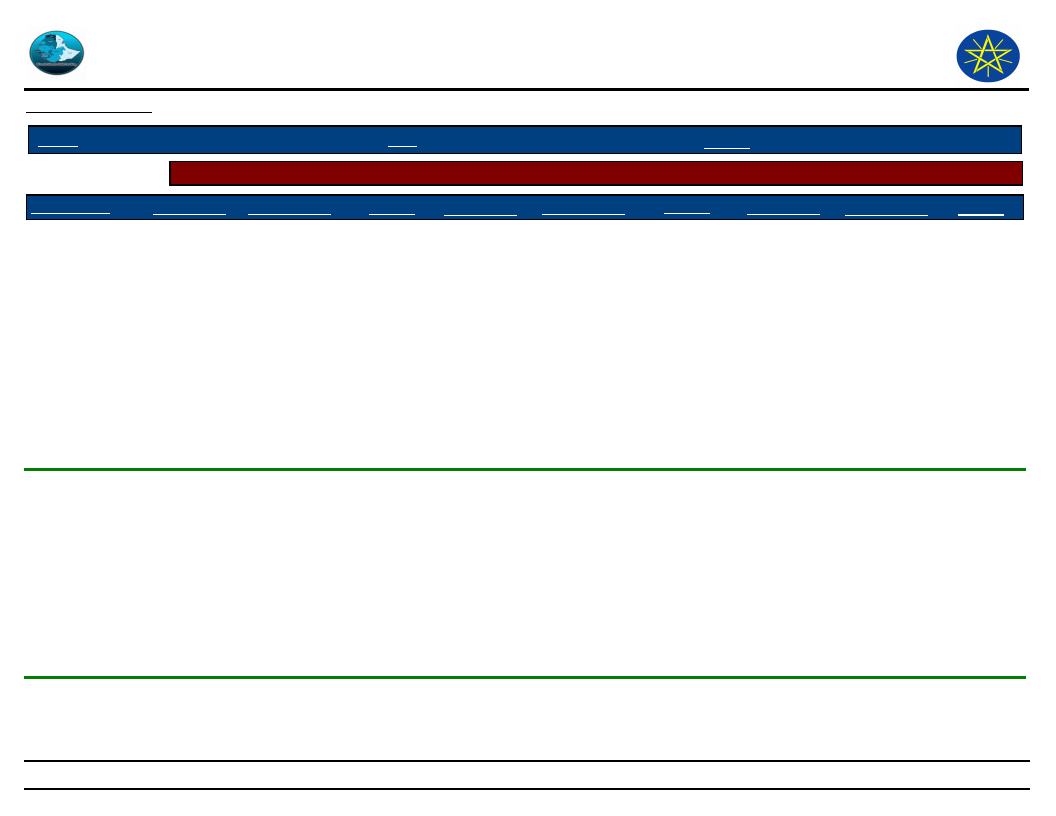
Wereda Disaster
Risk Profile
Data_Collected_Date
Disaster Risk Management and
Food Security Sector (DRMFSS)
Thursday, September 4, 2014
Region S.N.N.P
Zone HADIYA
Selected Indicator
Community Awareness of Disaster Risk Management System and Actors
Kebele Name
YA BUKUNA
Institution 1 Responsibility
Catholic
Doing
developmental
activities
Activity Institution 2
Building
farmer
training
center,
providing
improved
seed and
health
center
constructi
on
World vision
Responsibility
Providing aid
WADA
SEPERA
WFSTF
Kebele
authority
Food security
Over
management
activities
Resettlem
ent,
productiv
e safety
net
program,
house
hold asset
building
program
Catholic
Awareness
creation
Wereda
food
security
Doing
developmental
activities
Ensuring food
security
Wereda MIRAB BADAWOCHO
Activity
Institution 3 Responsibility
Nutrition
food
distributio
n, funding,
give
training
Wereda food
security
Ensuring food
security
Doing
developme
ntal
activities
and seed
distributio
n
World vision
Nutrition
program
Activity
Productiv
e safety
net
program,
house
hold
asset
building
program
and
resettlem
ent
Distributi
on of
food item
and
seeds
Giving
early
warning
From ETU
Making
awareness
creation
Forwardi
ng new
thing
267
Page 4 of 8
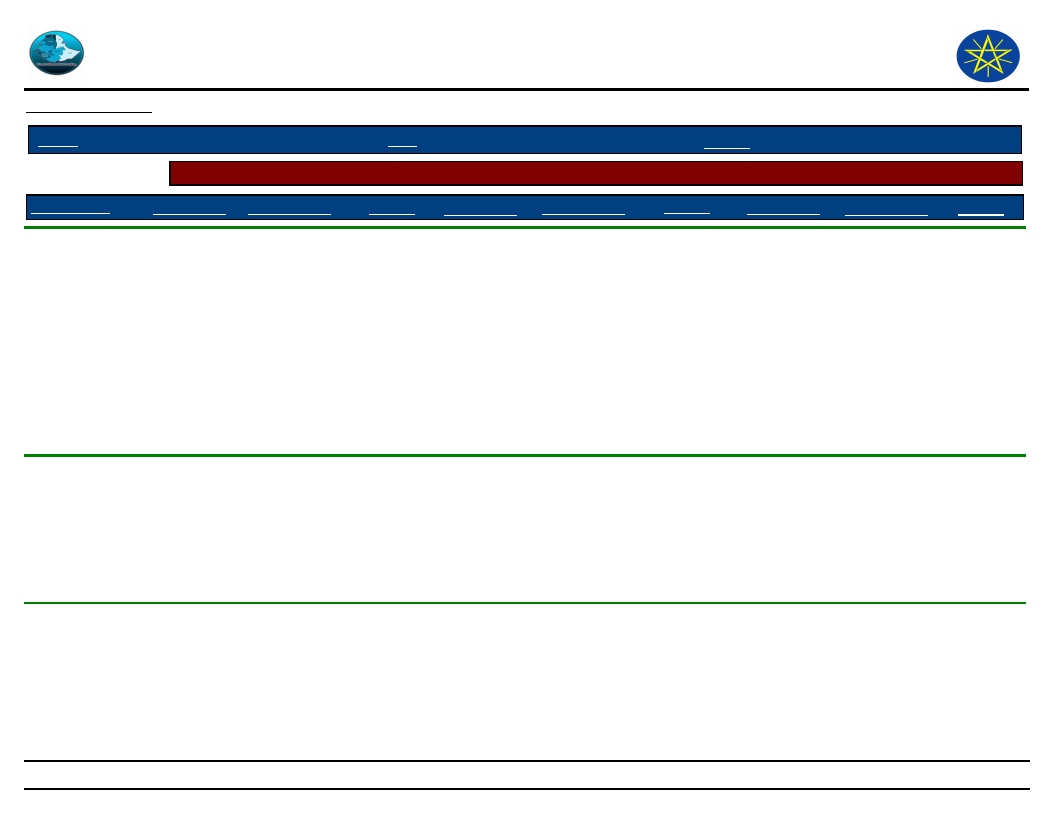
Wereda Disaster
Risk Profile
Data_Collected_Date
Disaster Risk Management and
Food Security Sector (DRMFSS)
Thursday, September 4, 2014
Region S.N.N.P
Zone HADIYA
Selected Indicator
Community Awareness of Disaster Risk Management System and Actors
Kebele Name
Institution 1 Responsibility
Activity Institution 2 Responsibility
Wereda MIRAB BADAWOCHO
Activity
Institution 3 Responsibility Activity
KACHA BIRA
1GNA KOTO
DANAMA
Wereda food
security
Ensuring food
security
services
World vision
Ensuring food
security
services
World vision
Nutrition
program
House
hold asset
building
program,
productiv
e safety
net
program
and
resettlem
ent
Mishigda-sic
k integrated
Providing
improved
seed,
training,
funding
and
nutritions
Doing
developm
ental
activities
and food
distributio
n
Ensuring food
security
Focusing
on
developme
nt
activities
268
Page 5 of 8
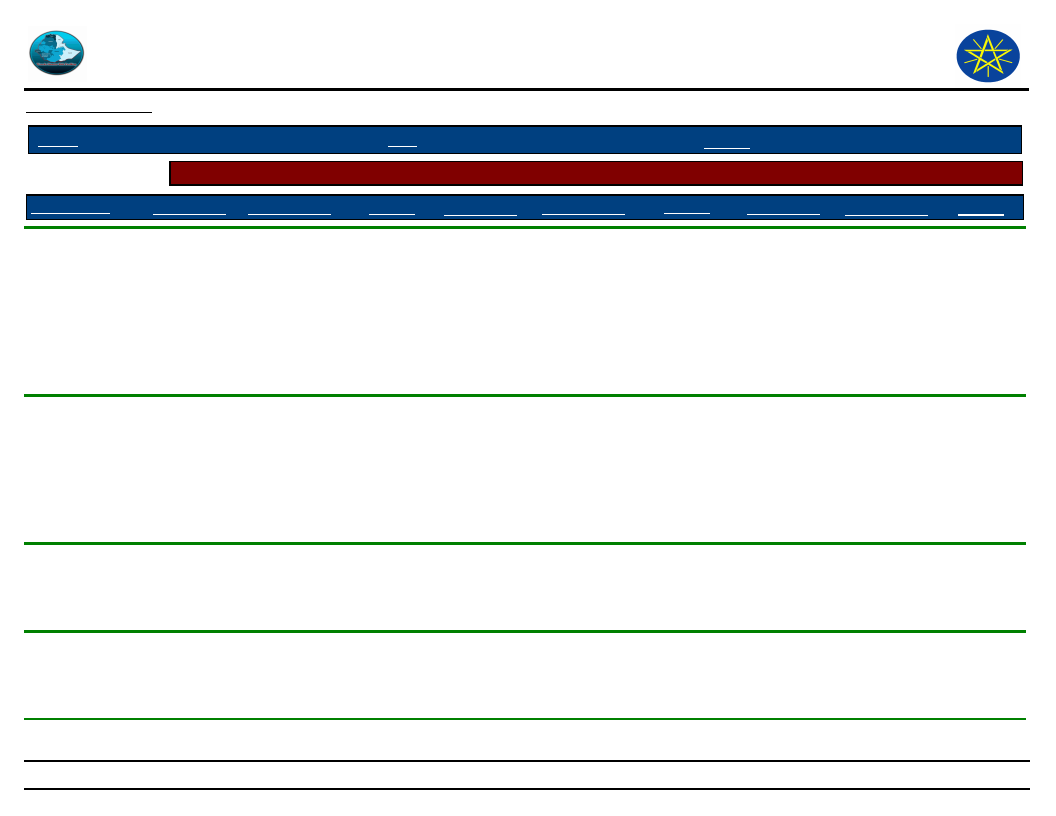
Wereda Disaster
Risk Profile
Data_Collected_Date
Disaster Risk Management and
Food Security Sector (DRMFSS)
Thursday, September 4, 2014
Region S.N.N.P
Zone HADIYA
Selected Indicator
Community Awareness of Disaster Risk Management System and Actors
Kebele Name
Institution 1 Responsibility
Activity Institution 2 Responsibility
Wereda MIRAB BADAWOCHO
Activity
Institution 3 Responsibility Activity
DANAMA 01
World vision
Nutrition
program
Nutrition
for food
distributio
n
Catholic
2nd KESHORA
WADA 01
FIRST KASHERA
Catholic
Doing
developmental
activities
World vision Aiding
World vision Aiding
Doing
developm
ental
activities
and seed
distributio
ns
Training,
providing
nutrition,
funding
Wereda
food
security
Training,
providing
nutrition,
funding
Wereda
food
security
Doing
developmental
activities
Developme
nt
activities
like
building
farmer
training
center
Farm Africa
Doing
development
al activities
Doing
developm
ental
activities
like
building
of green
bank
Ensuring food
security and
giving early
warning
Food security
and early
warning
Monitoring
and
evaluation
Monitoring
and
evaluation
269
Page 6 of 8
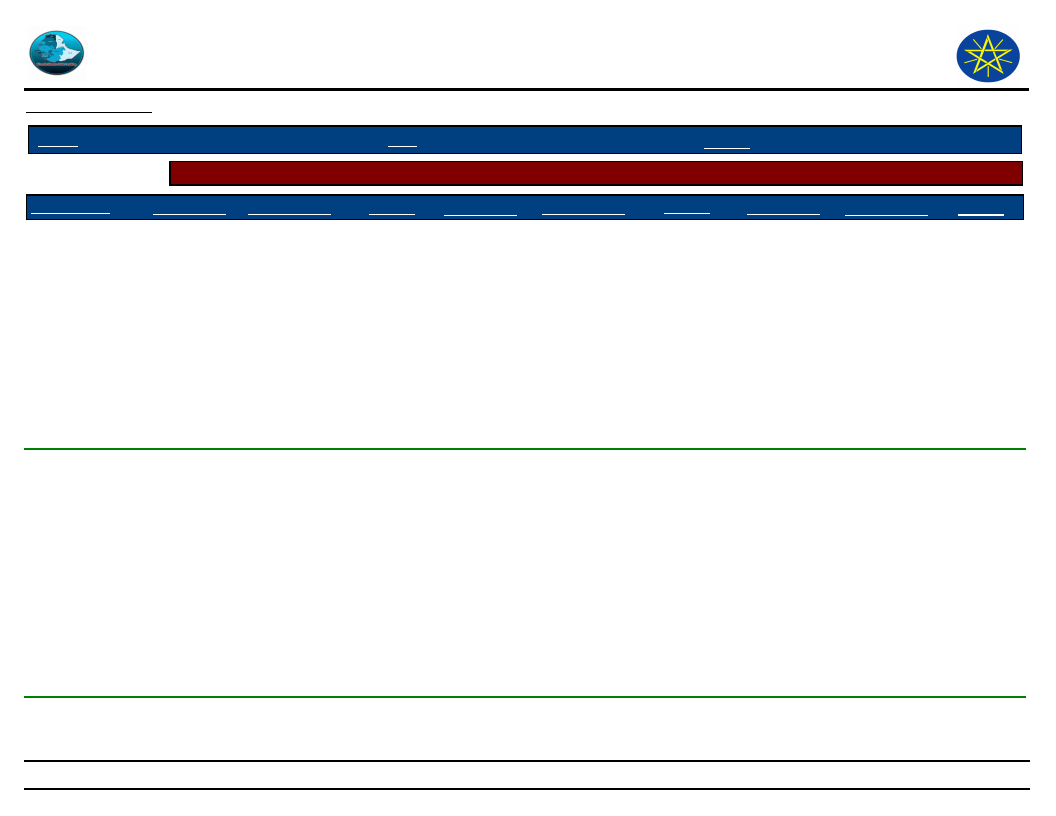
Wereda Disaster
Risk Profile
Data_Collected_Date
Disaster Risk Management and
Food Security Sector (DRMFSS)
Thursday, September 4, 2014
Region S.N.N.P
Zone HADIYA
Selected Indicator
Community Awareness of Disaster Risk Management System and Actors
Kebele Name
OFFDAA
Institution 1 Responsibility
World vision Aiding
Activity
Funding,
training,
providing
improved
seeds
Institution 2
Wereda
food
security
Responsibility
Ensuring food
security
JARSO
MAJORIYA
Catholic
Doing
developmental
activities
Training,
distributio
n of
improved
seed and
constructi
on of
farmer
training
center
World vision
Doing
developmental
activities
Wereda MIRAB BADAWOCHO
Activity
Institution 3 Responsibility
Doing
productive
safety net
program,
house hold
asset
building
program
and
resettleme
nt
Training,
improved
seed
provision
and aid
food
Wereda food
security
Ensuring food
security
Activity
Productiv
e safety
net
program,
house
hold
asset
building
program
and
resettlem
ent
270
Page 7 of 8
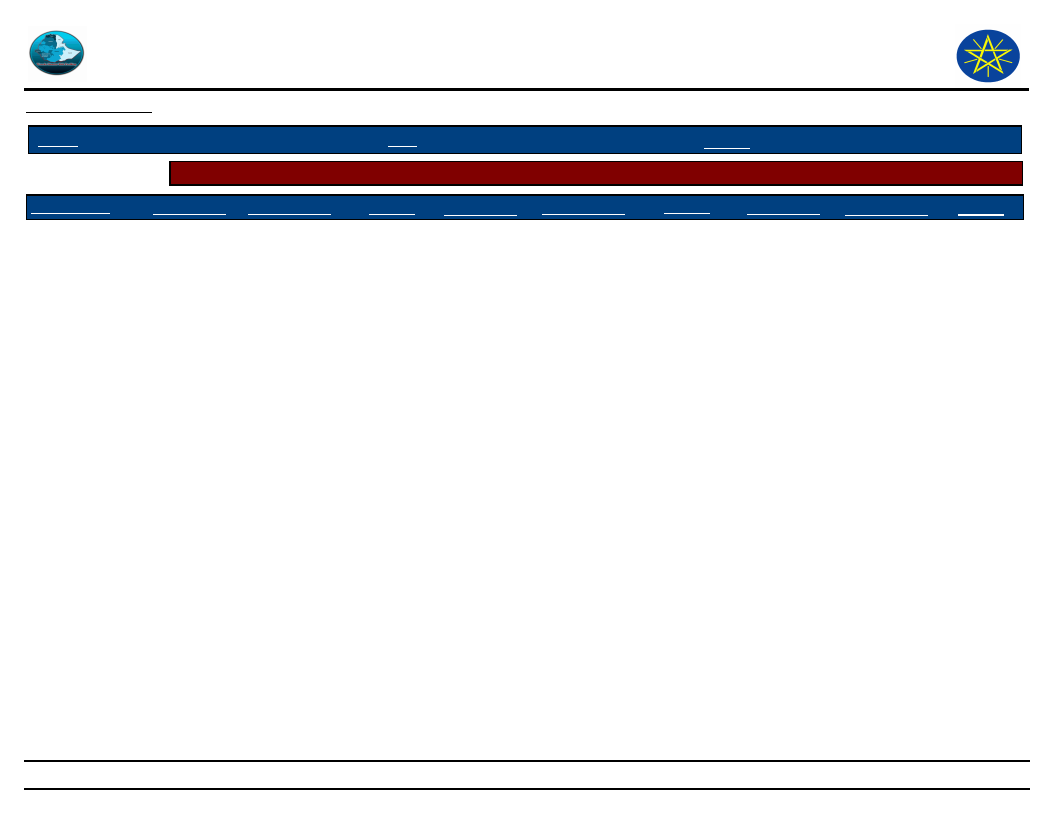
Wereda Disaster
Risk Profile
Data_Collected_Date
Disaster Risk Management and
Food Security Sector (DRMFSS)
Thursday, September 4, 2014
Region S.N.N.P
Zone HADIYA
Selected Indicator
Community Awareness of Disaster Risk Management System and Actors
Kebele Name
MIRAB AJEBA
Institution 1 Responsibility
Catholic
Doing
developmental
activities
Activity
Building
farmer
training
center,
providing
improved
seed
Institution 2
World vision
Responsibility
Aid
Wereda MIRAB BADAWOCHO
Activity
purifying
nutrition,
training
and
funding
Institution 3
Responsibility
Activity
271
Page 8 of 8
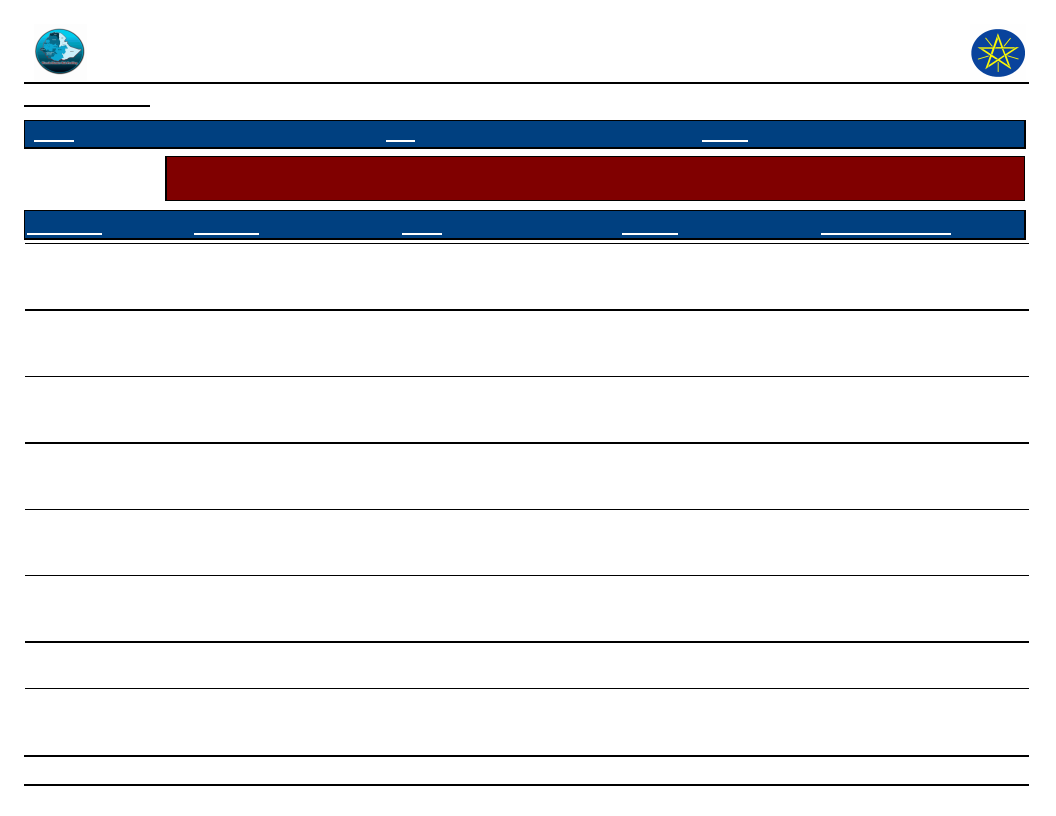
Wereda Disaster
Risk Profile
Data_Collected_Date
Disaster Risk Management and Food
Security Sector (DRMFSS)
Thursday, September 4, 2014
Region S.N.N.P
Selected Indicator
Zone HADIYA
Wereda MIRAB BADAWOCHO
Community Perception of DRM System and Actors - Perception of the community on the effectiveness of DRM
system in helping them to prevent, cope and recover from disasters
KebeleName
DEDO
Prevention
Better
WEBARANA OFODA
Better
JARISO ONIJOJO
Good and sufficient
SIBEYA
Good and sufficient
GERIBO
Good and sufficient
WEREBOYA
Good and sufficient
2GNA KOTO
HAWORA
Better
By increasing saving and
credit services and
awareness creation
Coping
Good but not sufficient
Good but not sufficient
Good but not sufficient
Good but not sufficient
Good but not sufficient
Good but not sufficient
Good but not sufficient
To give awareness creation
for house hold asset creation
272
Recovery
Giving loaning and credit
services
Giving loaning and credit
services
By giving loans
By giving loans and green
bank building
By giving loan, credit
service, green bank
building and it is effective
By giving loaning and
green bank building
By giving loans and credit
services
Not as much effective
Overall_Effectiveness
Lack of the good
management system and
absence road
Lack of the good
management system and
absence road
Lack of soil and water
conservation, absence of
road
Lack of soil and water
conservation, absence of
road
Lack of soil and water
conservation, absence of
road and lack of knowledge
Lack of soil and water
conservation, absence of
road and lack of knowledge
Management problem and
absence of road
Lack of awareness creation
and lack good management
system
Page 1 of 4
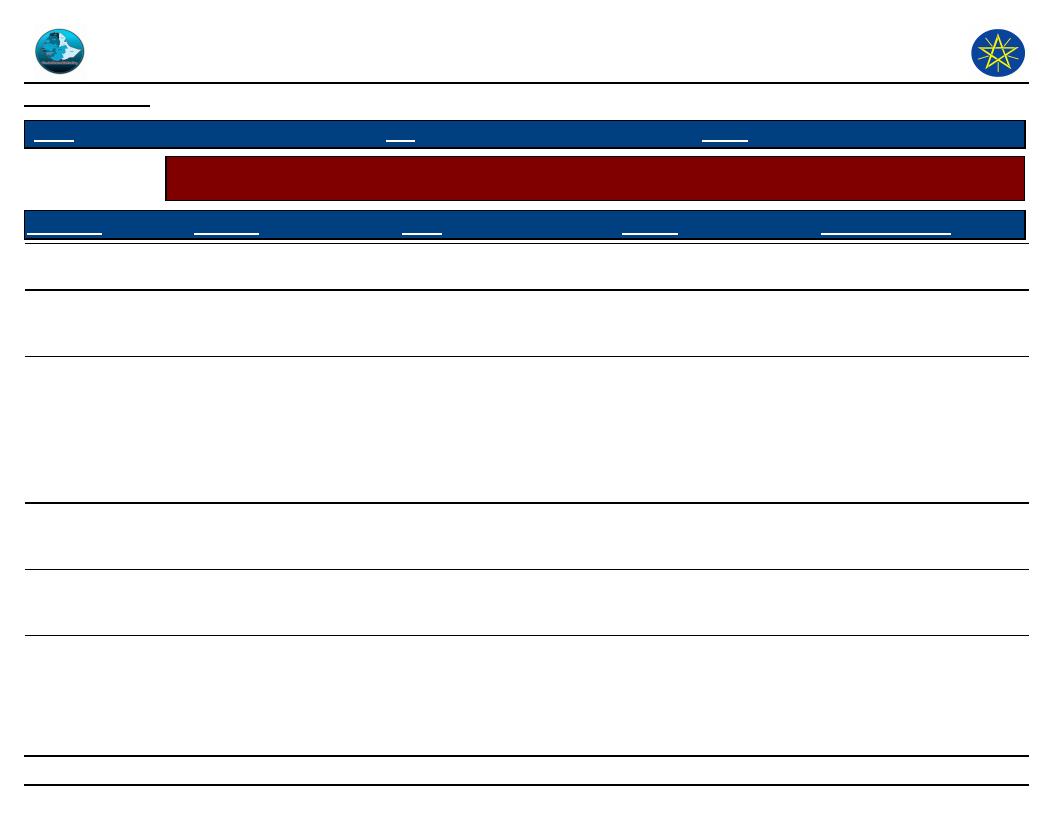
Wereda Disaster
Risk Profile
Data_Collected_Date
Disaster Risk Management and Food
Security Sector (DRMFSS)
Thursday, September 4, 2014
Region S.N.N.P
Selected Indicator
Zone HADIYA
Wereda MIRAB BADAWOCHO
Community Perception of DRM System and Actors - Perception of the community on the effectiveness of DRM
system in helping them to prevent, cope and recover from disasters
KebeleName
ELIFETA
YA BUKUNA
WADA
SEPERA
KACHA BIRA
1GNA KOTO
Prevention
Moderately effective
Moderately effective
Good and sufficient
Moderately effective
Moderately effective
Moderately effective
Coping
Moderately effective
Moderately effective
Good but not sufficient
Moderately effective
Moderately effective
Moderately effective
Recovery
Moderately effective
Moderately effective
Moderately effective
Not as much effective
Moderately effective
Moderately effective
Overall_Effectiveness
Low monitoring and
evaluation system
Less monitoring and
evaluation system, less
community participation
Management problem and
absence of road, less
attention of monitoring and
evaluation, low level of
people knowledge, poor
market cooperation and
poor cooperation of people
There is management
problem and implement
problem
Less monitoring and
evaluation system, less
attitude of customers
Low monitoring and
evaluation system, less
participation of the
community in their
planning
273
Page 2 of 4
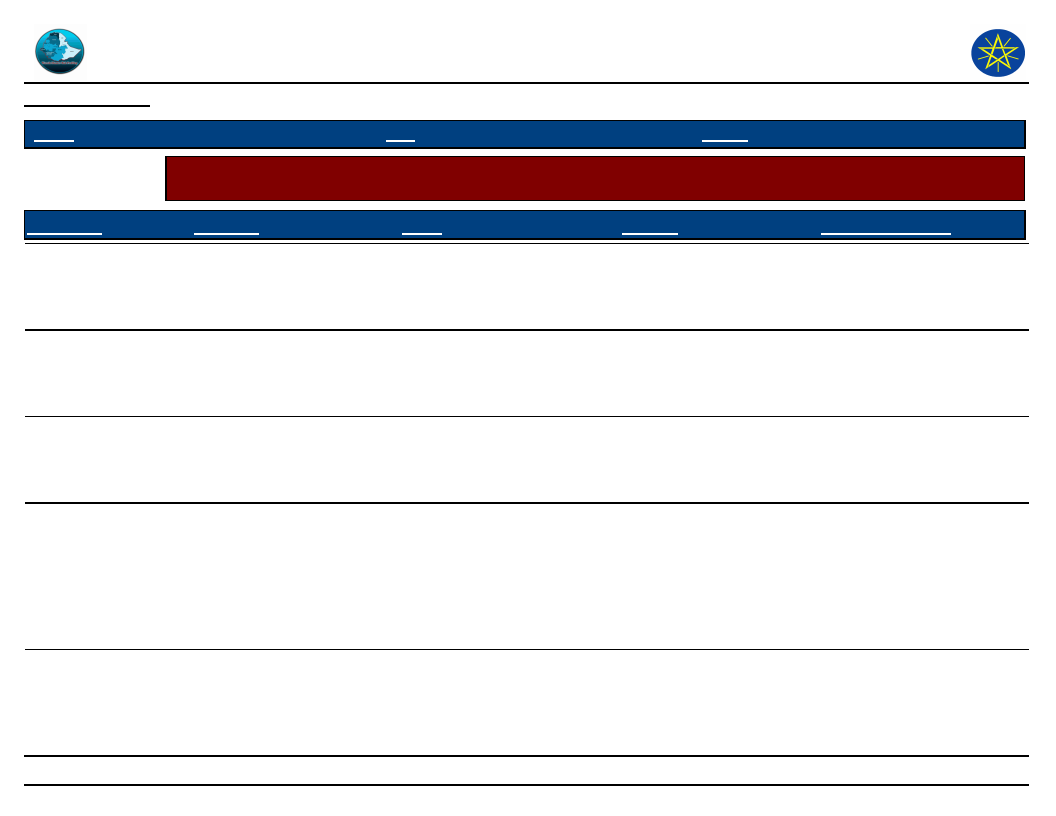
Wereda Disaster
Risk Profile
Data_Collected_Date
Disaster Risk Management and Food
Security Sector (DRMFSS)
Thursday, September 4, 2014
Region S.N.N.P
Selected Indicator
Zone HADIYA
Wereda MIRAB BADAWOCHO
Community Perception of DRM System and Actors - Perception of the community on the effectiveness of DRM
system in helping them to prevent, cope and recover from disasters
KebeleName
DANAMA
DANAMA 01
2nd KESHORA
WADA 01
Prevention
Better
Good and sufficient
Better
Moderately effective
Coping
Good but not sufficient
Good but not sufficient
Good but not sufficient
Moderately effective
Recovery
Giving loaning and credit
services
By giving loans and green
bank building
By giving loans and credit
services
Moderately effective
Overall_Effectiveness
Lack of the good
management system and
absence of well established
road
Lack of soil and water
conservation, absence of
well established road and
lack of knowledge
Lack of the good
management system and
absence of well established
road
Poor monitoring and
evaluation process, less
connection with working
system, less participation
of community on their
project planning and
implementation
274
Page 3 of 4
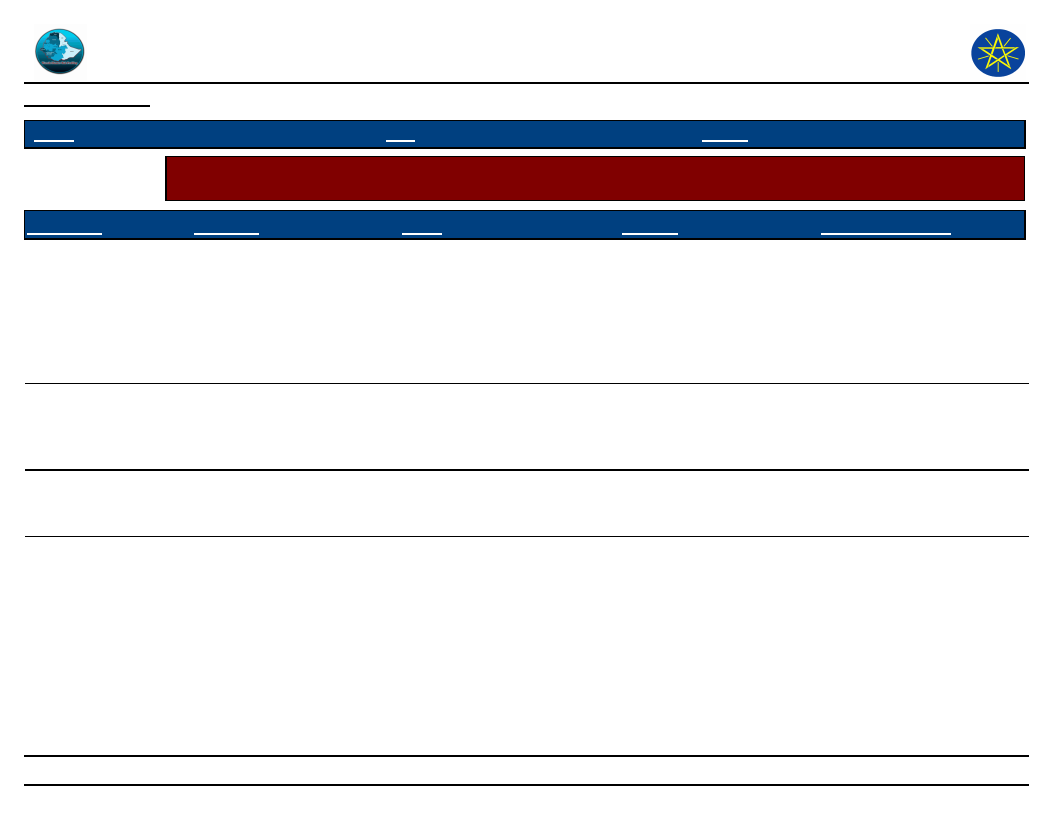
Wereda Disaster
Risk Profile
Data_Collected_Date
Disaster Risk Management and Food
Security Sector (DRMFSS)
Thursday, September 4, 2014
Region S.N.N.P
Selected Indicator
Zone HADIYA
Wereda MIRAB BADAWOCHO
Community Perception of DRM System and Actors - Perception of the community on the effectiveness of DRM
system in helping them to prevent, cope and recover from disasters
KebeleName
FIRST KASHERA
Prevention
Moderately effective
Coping
Moderately effective
JARSO MAJORIYA
Moderately effective
OFFDAA
MIRAB AJEBA
Moderately effective
Moderately effective
Moderately effective
Moderately effective
Moderately effective
Recovery
Moderately effective
Moderately effective
Moderately effective
Moderately effective
Overall_Effectiveness
Poor monitoring and
evaluation process, less
connection with working
system, less participation
of community on their
project planning and
implementation
Poor management, poor
monitoring and evaluation
and poor participation of
the community
Less monitoring and
evaluation, low
participation of comments
Less participation of the
community, less monitoring
and evaluation, poor
management system ,
awareness creation is low
275
Page 4 of 4
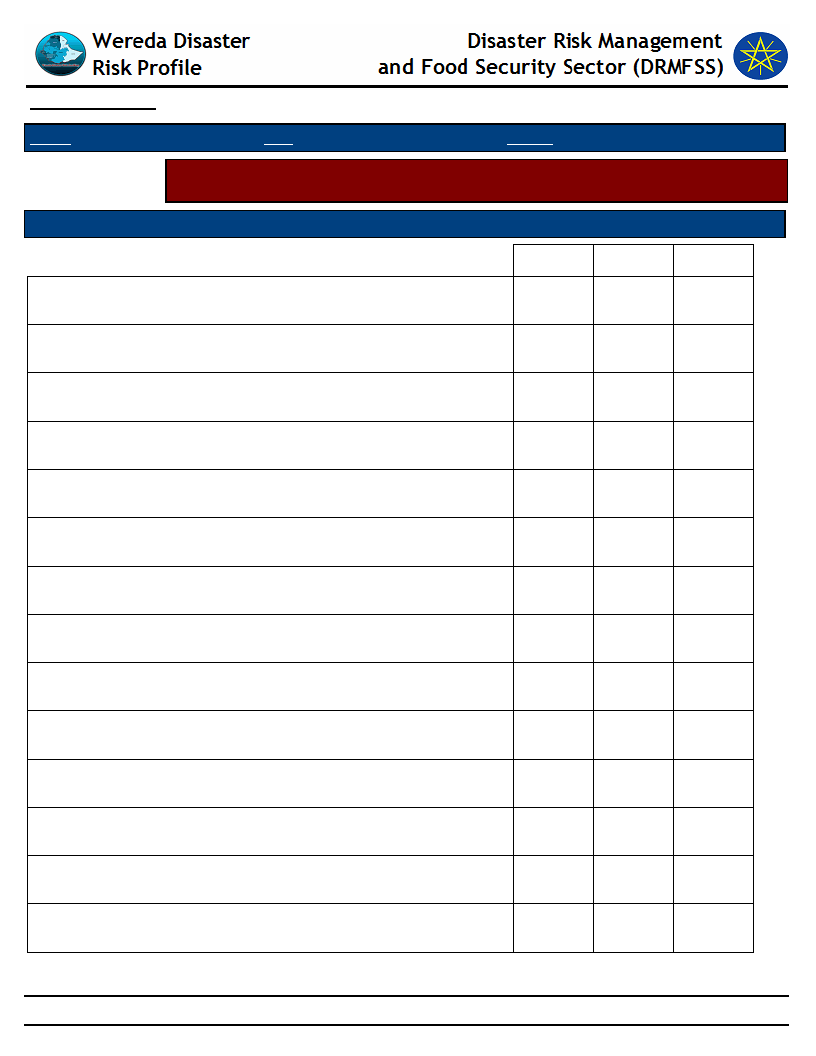
Data_Collected_Date
Thursday, September 4, 2014
Region S.N.N.P
Zone HADIYA
Wereda MIRAB BADAWOCHO
Selected Indicator
Major Public Interventions Desired - Percentage of households by type of
intervention desired
Major public interventions desired by the community
Degree of Importance for the community
Better job
1st
2nd
3rd
9.60
9.00
12.60
Cash transfers/social assistance
0.00
0.20
1.50
Cash-for-work activities (not employment)
0.00
1.50
5.30
Food Aid
33.80
19.50
24.50
Food-for-work activities
8.10
13.90
12.80
Medical assistance
0.00
2.80
4.00
Micro-credit programmes
33.30
16.70
17.70
Other (specify)
1.10
1.90
1.50
Rental subsidies
0.40
3.00
1.30
School feeding for children
0.20
0.00
0.00
School fees for children
0.00
1.30
1.30
Subsidized food
8.50
12.40
7.50
Subsidized health care
4.50
7.50
3.80
Supplementary feeding for women and young children
0.40
10.30
6.20
276
Page 1 of 1
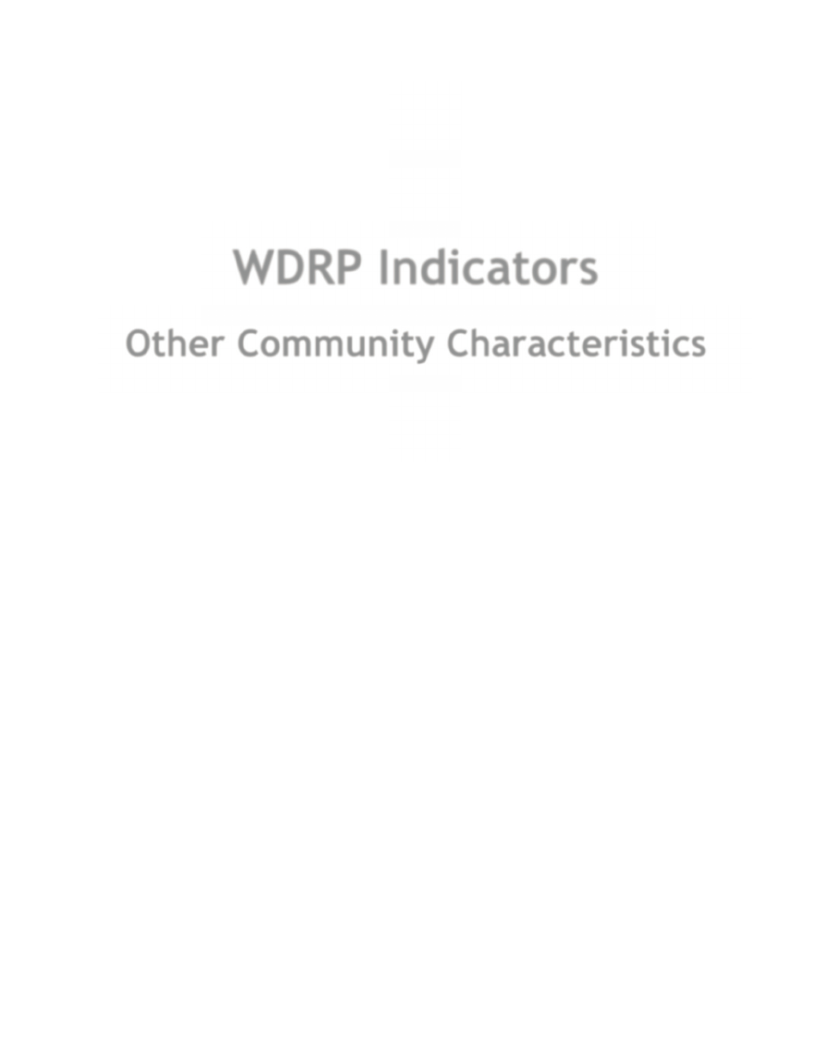
WDRP Indicators
Other Community Characteristics
277
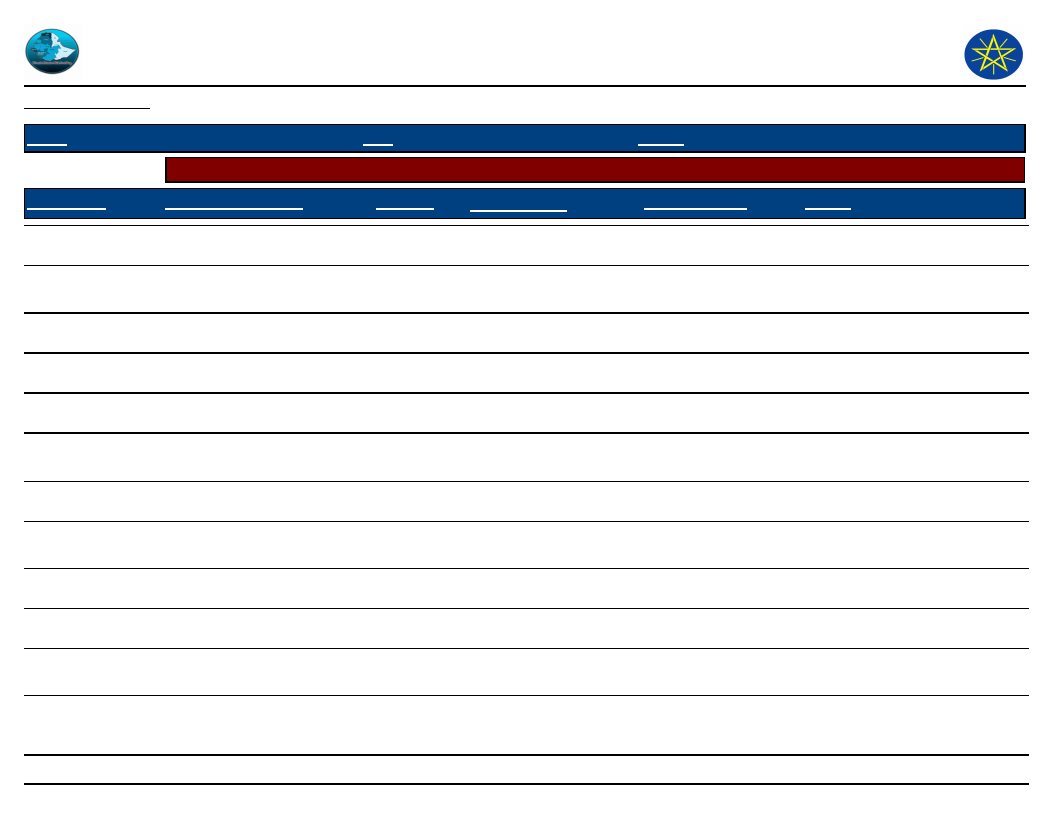
Wereda Disaster
Risk Profile
Data_Collected_Date
Disaster Risk Management and Food
Security Sector (DRMFSS)
Thursday, September 4, 2014
Region S.N.N.P
Selected Indicator
Kebele Name
Zone HADIYA
Capacity: Community Based Organizations in the Wereda
Name_Of_Organization
Est._Year
Formal/Informal
Wereda MIRAB BADAWOCHO
Type of Members
Activity
DEDO
Youth associations
2000
Informal
Youth
Saving and credit services
WEBARANA
OFODA
JARISO ONIJOJO
Women association
Youth associations
2004
2000
Formal
Formal
18 members
Youth
giving loaning and credit
services
Saving and credit services
SIBEYA
Women credit association
2000
Formal
Youth
Multipurpose cooperatives
GERIBO
Edir
1987
Informal
300 members
Self help for the community
WEREBOYA
2GNA KOTO
Edir
Women association
1966
2002
Informal
Formal
Both male and
female
Youth
Saving and credit services
HAWORA
ELIFETA
Youth associations
Metyoma female association
2001
1997
Formal
Informal
17 members
Women
Doing developmental
activities
Saving
YA BUKUNA
Ekub
1993
Informal
Farmer
Self help for the community
WADA
SEPERA
Youth associations
Youth associations
2003
2002
Formal
Formal
12 members
16 members
Small scale irrigation based
production
Doing developmental
activities
278
Page 1 of 2
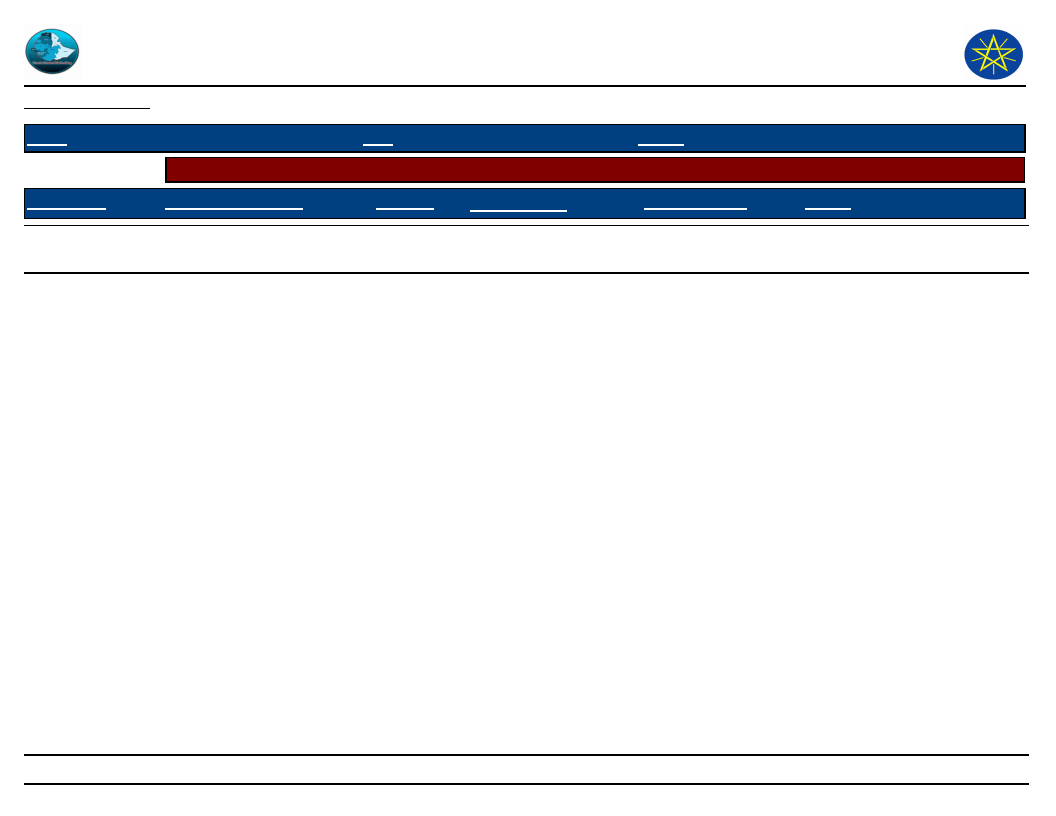
Wereda Disaster
Risk Profile
Data_Collected_Date
Region S.N.N.P
Selected Indicator
Kebele Name
Zone HADIYA
Capacity: Community Based Organizations in the Wereda
Name_Of_Organization
Est._Year
Formal/Informal
KACHA BIRA
1GNA KOTO
Qachabira area
development
Female youth association
2002
2000
Formal
Formal
Disaster Risk Management and Food
Security Sector (DRMFSS)
Thursday, September 4, 2014
Wereda MIRAB BADAWOCHO
Type of Members
31 members
335 member
Activity
Saving
Trading
279
Page 2 of 2
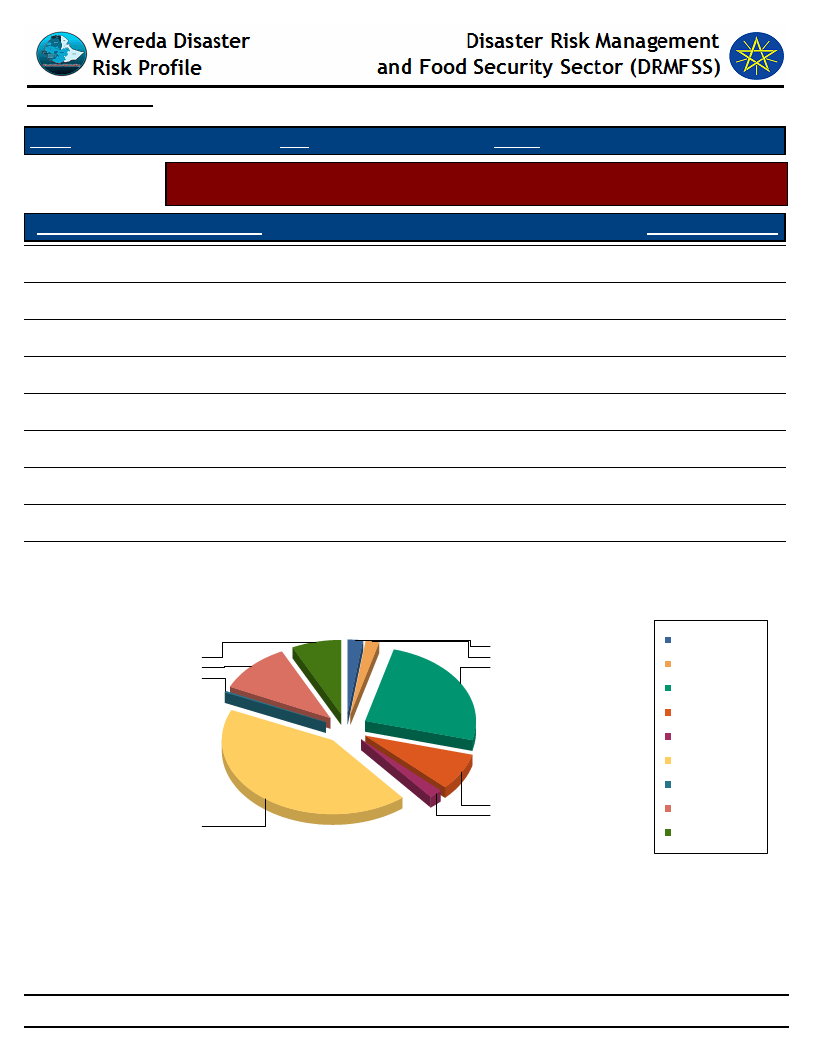
Data_Collected_Date
Thursday, September 4, 2014
Region S.N.N.P
Zone HADIYA
Wereda MIRAB BADAWOCHO
Selected Indicator
Supporting Agencies against Disasters - Percentage of households by supporting
institutions to handle or recover from disaster damages
Supporting Agencies Against Disasters
Response_Percentage
National or local authorities
1.80
International NGOs (e.g. UN organizations, ICRC, etc.)
24.70
Local NGOs
8.10
Family members in the same community
2.20
Friends and neighbors in the same community
1.80
Support via contacts working for the authorities
7.20
Support via contacts working for NGOs
10.50
Religious sources such as the mosque
0.40
None
42.00
Supporting Agencies Against Disasters
7.2
10.5
0.4
42
2.2
1.8
24.7
8.1
1.8
Family members in the
same community
Friends and neighbors in
the same community
International NGOs (e.g.
UN organizations, ICRC,
etc.)
Local NGOs
National or local
authorities
None
Religious sources such
as the mosque
Support via contacts
working for NGOs
Support via contacts
working for the
authorities
280
Page 1 of 1
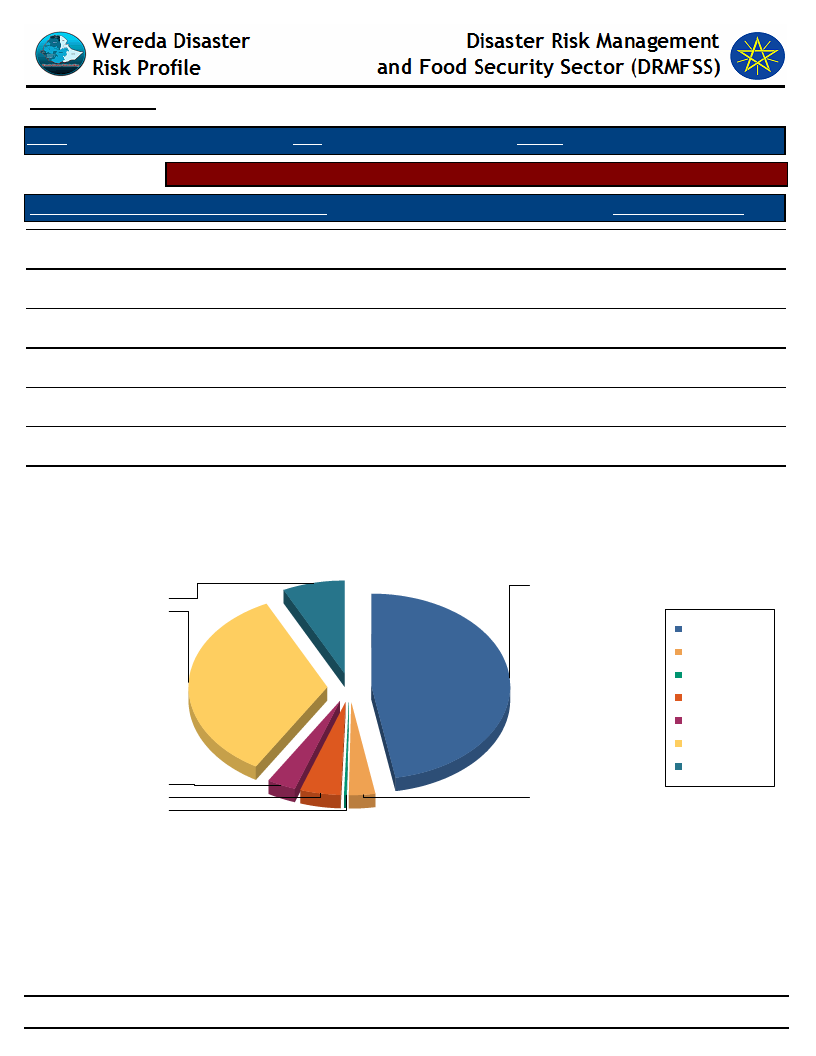
Data_Collected_Date
Thursday, September 4, 2014
Region S.N.N.P
Zone HADIYA
Wereda MIRAB BADAWOCHO
Selected Indicator
Types of support received by households during disasters
Type of Support Provided By Supporting Agencies
Response_Percentage
Emergency aid (food, water, shelter, etc.)
34.00
Capital for re-construction of house and property
4.80
Access to loan for re-construction
3.10
Access to capital or loan for adaptation/protection measures
46.90
Assets such as livestock replenishment
0.30
Other
7.10
DK
3.40
Type of Support Provided By Supporting Agencies
47
7
34
Access to capital or loan
for adaptation/protection
measures
Access to loan for
re-construction
Assets such as livestock
replenishment
Capital for
re-construction of house
and property
DK
Emergency aid (food,
water, shelter, etc.)
Other
3
5
3
0
281
Page 1 of 1
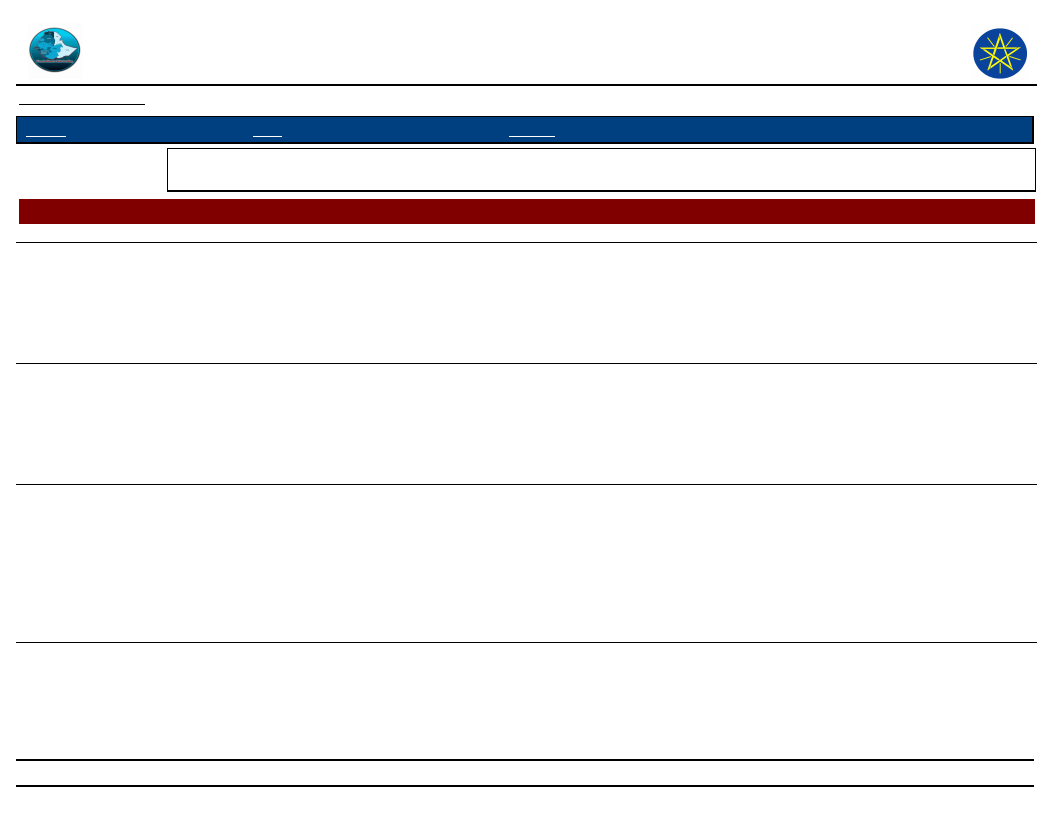
Wereda Disaster
Risk Profile
Data_Collected_Date
Disaster Risk Management and
Food Security Sector (DRMFSS)
Thursday, September 4, 2014
Region S.N.N.P
Zone HADIYA
Wereda MIRAB BADAWOCHO
Selected Indicator
Government Actors in the Field of Disaster Risk Management - Government actors and their activities in the field
of Disaster Risk Managements
Government Institution
Activity
Description
Activity
Description Activity
Description Activity Description
Cooperative Promotion
Office
Children, Youth and
Women Office
Water Resource
Development Office
Creating awareness
in order to produce
quality product
Women capacity
building program
Water harvesting
system
establishment
If they produce
quality product
they can get high
price
Market chain
reduction
To give
awareness
creation by
women capacity
building program
Gender
participant by
development
First by doing
assessment on
that we can
establish water
harvesting
system
Maintaining old
water station
It reduce
middle
person
Gender
equally
participant
any
development
program
First
assessment
done After
that
maintenance
process going
on
Cooperating
the
community
Children right
keeping
They save
and take
credit if
they can get
cooperative
organization
Support
children
right
keeping by
government
Treatment of
by chlorine,
initiating
comment in
order to have
at least one
water sources
/alternatives
By going
different
water
station, we
can put
chlorine
282
Page 1 of 3
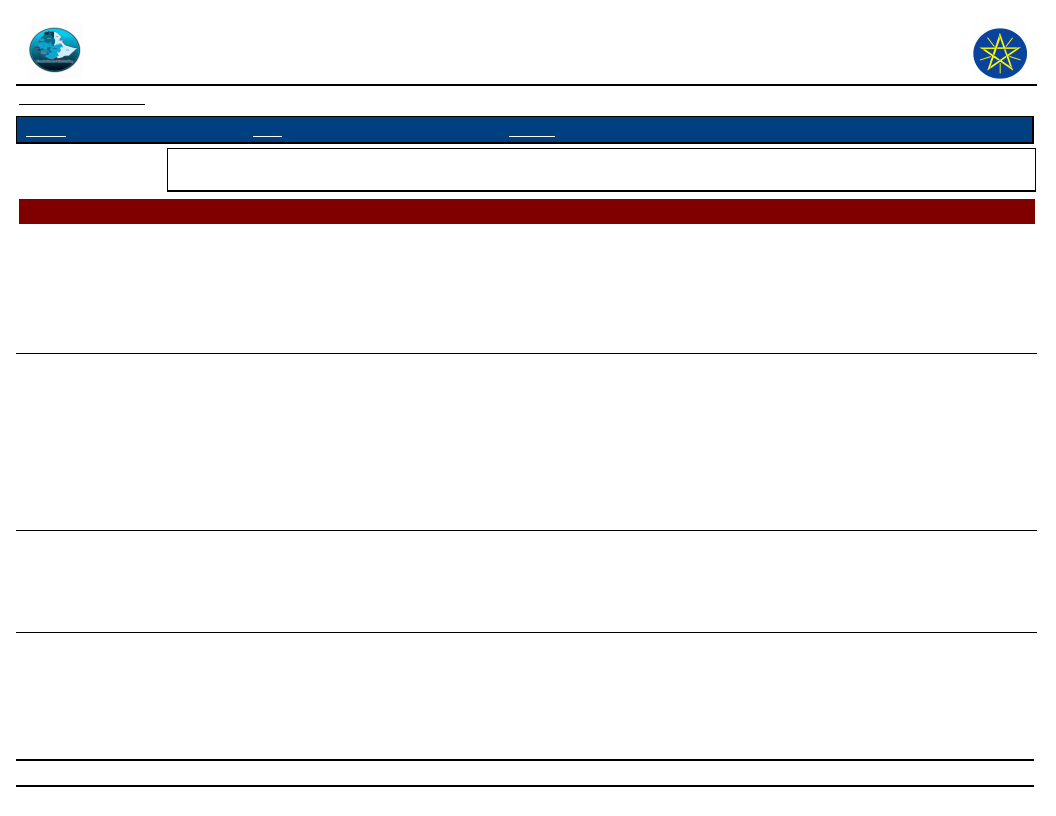
Wereda Disaster
Risk Profile
Data_Collected_Date
Disaster Risk Management and
Food Security Sector (DRMFSS)
Thursday, September 4, 2014
Region S.N.N.P
Zone HADIYA
Wereda MIRAB BADAWOCHO
Selected Indicator
Government Actors in the Field of Disaster Risk Management - Government actors and their activities in the field
of Disaster Risk Managements
Government Institution
Activity
Description
Activity
Description Activity
Description Activity Description
Road Transport Office
Agriculture Office
Peace and Security
Office
Health Office
Rural road
maintenance
coordinators
Productive safety
net program, house
hold asset building
program and
resettlement
Getting information
Gathering
information
Dam
construction,
road
construction
Transport
services supply
coordinators
Productive safety
net program has
two component
one have doing
in order to
produce the
asset then they
can get salary
per day
gathering
information
Crop protection
Extension
services
Gathered
information will
be integrated
then solution will
be given
Extension
services
283
Transport
facilities for
community
suitable, to
reducing
transport cost
Road traffic
security
By assessing
pre harvest
and post
harvest
assessment
Keeping
natural
resource
To check
transport
cost and to
check
transport
level
By keeping
soil and
water
conservatio
n and
afforestatio
n
Extending
entire health
extension
service until
it reach to
individual
Keeping
environment
Keeping
environmenta
l sanitation
Basic one in
keeping
human
health
situation
Basic one in
keeping
human
health
situation
Page 2 of 3
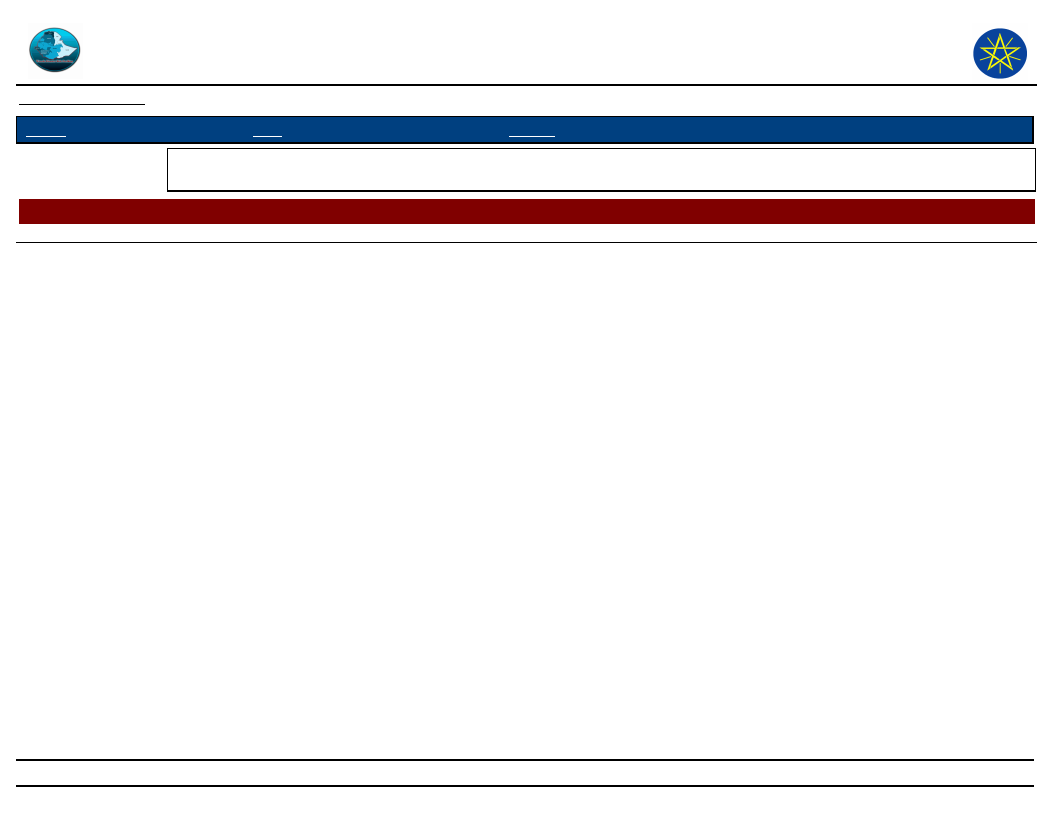
Wereda Disaster
Risk Profile
Data_Collected_Date
Disaster Risk Management and
Food Security Sector (DRMFSS)
Thursday, September 4, 2014
Region S.N.N.P
Zone HADIYA
Wereda MIRAB BADAWOCHO
Selected Indicator
Government Actors in the Field of Disaster Risk Management - Government actors and their activities in the field
of Disaster Risk Managements
Government Institution
Activity
Description
Activity
Description Activity
Description Activity Description
Education Office
Teacher
development
coordinators
Teacher capacity
building training,
monitoring and
evaluation
services
Education
development
planning
School
building and
supply the
services of
teaching aid
materials
Human
resources
management
284
Page 3 of 3
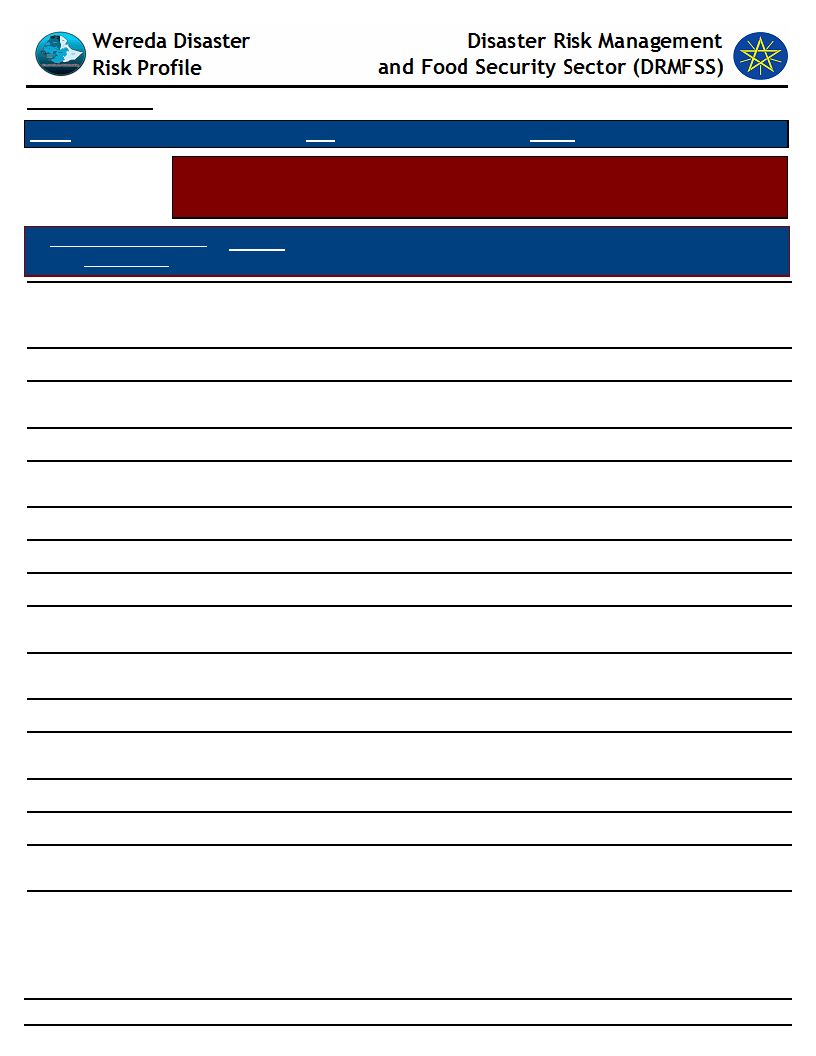
Data_Collected_Date
Region S.N.N.P
Zone HADIYA
Thursday, September 4, 2014
Wereda MIRAB BADAWOCHO
Selected Indicator
Non-Government Actors in the Field of Disaster Risk Management -
Non-government actors and their activities in the field of Disaster Risk
Management
Non Governmental Actors
in the Wereda
Activities
Catholic church
Catholic church
Catholic church
World Vision Ethiopia
Constructing animal health center, farmer training center, providing the
facility for health center, providing improved seed and providing improved
livestock varieties
Constructing grain bank
Providing improved livestock variety( goat, sheep), training, constructing
farmer training center, animal health center and constructing grain bank
To improved drought resistant and provide nutrition
World Vision Ethiopia
World Vision Ethiopia
Catholic church
Funding, training, providing different instrument in order to establish new
water point
Providing aid, Giving training and providing fund
Constructing farmer training center, providing improved livestock varieties
FAO
Mishedda Sake integrated
project
Mishedda Sake integrated
project
AOA
World Vision Ethiopia
Farm Africa
Farm Africa
Farm Africa
World Vision Ethiopia
Providing fund
Cooperating different group/ women farmers/, saving and credit activities
Cooperating different group (women, farmer), saving and credit
Providing fund for road construction
Providing improved drought resistant crop and providing nutrition, give
training and fund
Give training about saving system
Cooperative farmers and give for them credit and to give training
Cooperating farmer and give for them credit and training, providing
improved animal variety
Training, funding, transport facilities and providing nutrition
285
Page 1 of 1
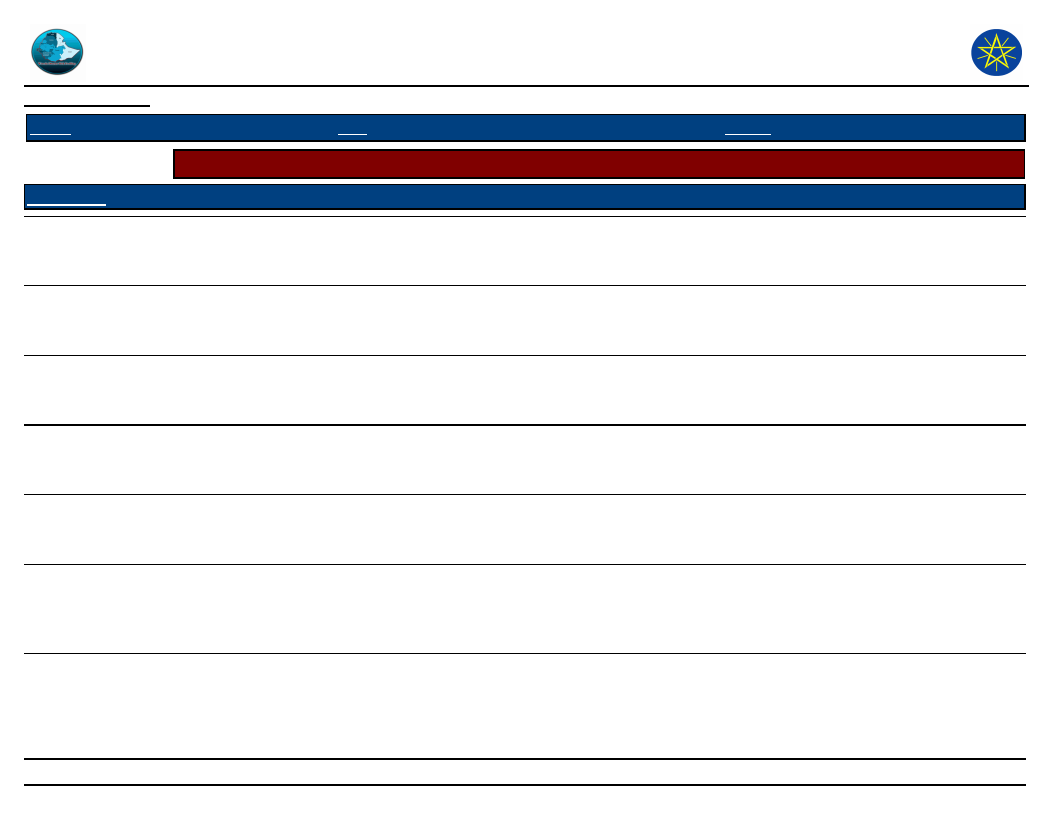
Wereda Disaster
Risk Profile
Data_Collected_Date
Region S.N.N.P
Zone
HADIYA
Disaster Risk Management
and Food Security Sector (DRMFSS)
Thursday, September 4, 2014
Wereda MIRAB BADAWOCHO
Selected Indicator
Wereda Strengths, weaknesses, opportunites and treats (SWOT) Analysis
Kebele Name
Strength
Weakness
Opportunity
Threat
DEDO
Soil and water conservation,
Good governance
WEBARANA
OFODA
JARISO ONIJOJO
SIBEYA
Road maintenance, Soil and
water conservation,
Afforestation
Soil and water conservation,
Road maintained,
Afforestation
Soil and water conservation
DANAMA
DANAMA 01
GERIBO
Soil and water conservation,
Good governance, Increased
social interaction
More attention to
development, Soil and
water conservation
Increased social interaction,
Soil and water conservation,
Good governance
Lack of environmental
management, Lack of saving,
Time wastage
Time wastage, Lack of
saving, Lack of awareness
Lack of saving, Time
wastage, Lack of awareness
Lack of saving, Time
wastage, Lack of awareness
Lack of environmental
management, Lack of saving,
Time wastage
Lack of saving, Time
wastage, Lack of awareness
Lack of saving, Time
wastage, Unemployment
Dam construction, health
center construction, School
construction
Dam construction, School
construction, Road construction
Dam construction, School
construction, Road construction
Dam construction, School
construction, Road construction
Dam construction, health
center construction, School
construction
Dam construction, Road
construction, health post
construction, School
construction
Good water source, Green bank
buildings, Geographical
location
Road problem, Transport
problem, Electric service
problem
Electric service problem,
Road problem, Transport
problem
Electric service problem,
Road problem, Transport
problem
Electric service problem,
Road problem, Transport
problem
Road problem, Transport
problem
Road problem, Transport
problem
Road problem, New
disaster
286
Page 1 of 4
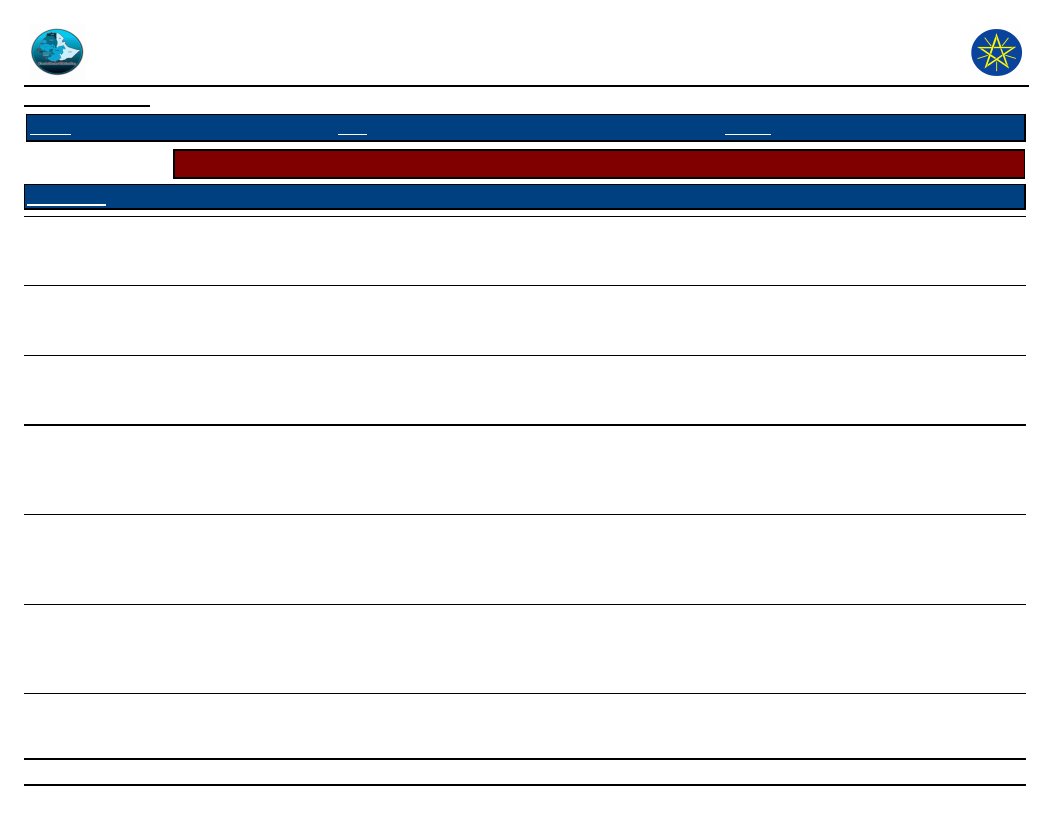
Wereda Disaster
Risk Profile
Data_Collected_Date
Region S.N.N.P
Zone
HADIYA
Disaster Risk Management
and Food Security Sector (DRMFSS)
Thursday, September 4, 2014
Wereda MIRAB BADAWOCHO
Selected Indicator
Wereda Strengths, weaknesses, opportunites and treats (SWOT) Analysis
Kebele Name
Strength
Weakness
Opportunity
Threat
2nd KESHORA
WEREBOYA
2GNA KOTO
HAWORA
HIDELA
HIDA RURAL
Soil and water conservation,
Good governance
Soil and water conservation,
Increased social interaction,
Good governance
Soil and water conservation,
Increased social interaction,
Good governance
Cultivating short term
crops, Intensive farming and
diversification, Trading,
Asset building
High social interaction, Soil
and water conservation
High social interaction, Soil
and water conservation
Lack of environmental
management, Lack of saving,
Time wastage
Time wastage, Lack of
saving, Unemployment
Lack of environmental
management, Lack of saving,
Time wastage
Lack of awareness, Lack of
management system, Lack of
saving
Poor time management, Low
commitment, Low saving
capacity, Low public
property possibility
Poor time management, Low
commitment, Low saving
capacity, Low public
property possibility
Dam construction, health post
construction, School
construction
Dam construction, School
construction, Road construction
Dam construction, Health
center construction, School
construction
Road problem, Transport
problem
Road problem, Electric
service problem
Road problem, Electric
service problem
Market availability, Clinic
availability
Market availability, Clinic
availability
Lack of funding, Road
problem, Lack of credit
access
Lack of funding, Road
problem, Lack of credit
access
287
Page 2 of 4
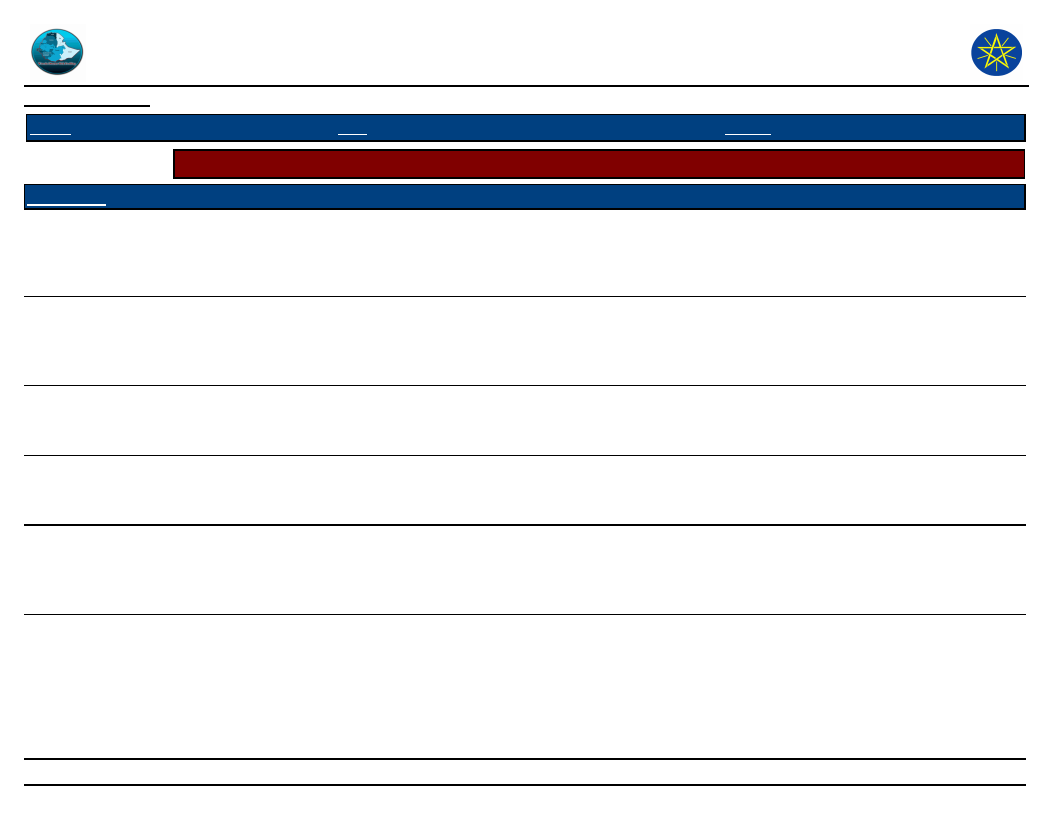
Wereda Disaster
Risk Profile
Data_Collected_Date
Region S.N.N.P
Zone
HADIYA
Disaster Risk Management
and Food Security Sector (DRMFSS)
Thursday, September 4, 2014
Wereda MIRAB BADAWOCHO
Selected Indicator
Wereda Strengths, weaknesses, opportunites and treats (SWOT) Analysis
Kebele Name
LEKURA_HAMMA
DISIRATE(RURAL)
Strength
Early ploughing, Strong soil
and water conservation,
Unity of the community
ELIFETA
High social interaction,
Commitment
YA BUKUNA
WADA
SEPERA
KACHA BIRA
High social interaction,
Active community
participation
High social interaction, Soil
and water conservation,
Good governance
High social interaction,
Active community
participation
Better social interaction,
Good governance
Weakness
Implementing problem, Lack
of awareness
Poor capacity,
Extravagancies, Lack of
planning
Extravagancies, Poor time
management, Less awareness
Lack of saving,
Extravagancies, Time
wastage`
Lack of saving, Lack of
commitment, Time wastage
Less commitment, Time
wastage, Low saving
capacity, Low awareness
level
Opportunity
NGOs involvement/
contribution, Farmer training
center construction, Soil and
water conservation activities
Present of development agents,
health center construction,
NGOs involvement/
contribution, Access of school
Water availability, Clinic
construction
Good water source, Green bank
buildings, Geographical
orientation
Development agents
involvement, Access of animal
health center
Geography of the land,
Potential area for enset
growing, Potential area for
wheat growing
Threat
Lack of funding, Lack of
saving and credit, New
disaster, Poor health
center facility
Lack of funding, New
disaster
Lack of funding, Lack of
loan and credit service,
New disaster
Road problem, New
disaster, Lack of funding
Increased severity of
disasters, Lack of funding,
Lack of good road, Short
credit and saving access
Lack of funding, Lack of
water availability, Low
saving and credit service,
Absence of irrigation
service
288
Page 3 of 4
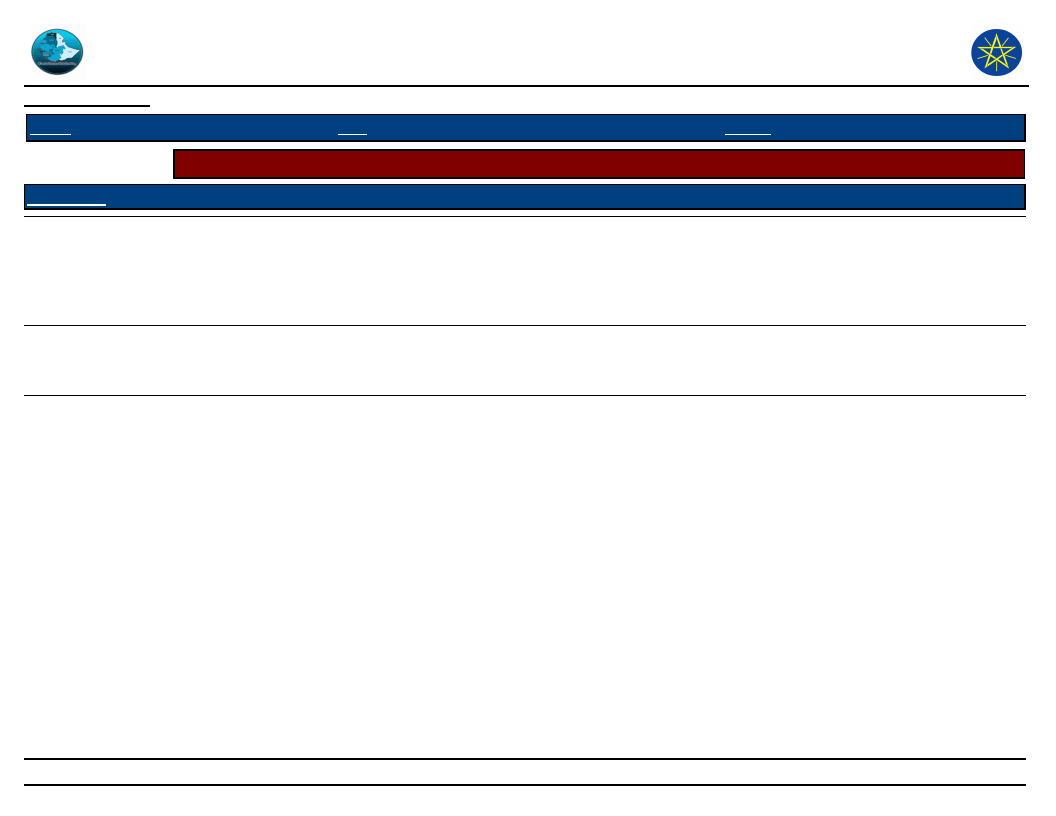
Wereda Disaster
Risk Profile
Data_Collected_Date
Region S.N.N.P
Zone
HADIYA
Disaster Risk Management
and Food Security Sector (DRMFSS)
Thursday, September 4, 2014
Wereda MIRAB BADAWOCHO
Selected Indicator
Wereda Strengths, weaknesses, opportunites and treats (SWOT) Analysis
Kebele Name
Strength
Weakness
Opportunity
Threat
1GNA KOTO
OFFDAA
MIRAB AJEBA
Awareness creation, High
social interaction
High social interaction
Social interaction, Keeping
the resource
Time wastage, Less attention
Extravagancies, Lack of
awareness, Poor time
management
Un wise using of land, Lack of
saving, Lack of commitment
Building of health center,
Health extension service,
Skilled development agents,
Skilled kebele administration
health center construction,
Strong soil and water
conservation
Soil and water conservation
activities
Increased severity of
disasters, Lack of water
availability, Lack of
funding, Poor road or dam
construction
Lack of funding, Increased
severity of disasters
Increased severity of
disasters, Road problem,
Lack of irrigation, Lack of
funding
289
Page 4 of 4




